My most current blog entry:
Entries in Doors, Old (40)
Poland: Gdansk is a beautiful vacation destination!
 Friday, April 24, 2020 at 5:40PM
Friday, April 24, 2020 at 5:40PM My wife and I visited Poland (Kraków and Gdańsk) in the summer of 2014. This entry is of the three days we spent in Gdańsk, while there is another entry for Kraków HERE.
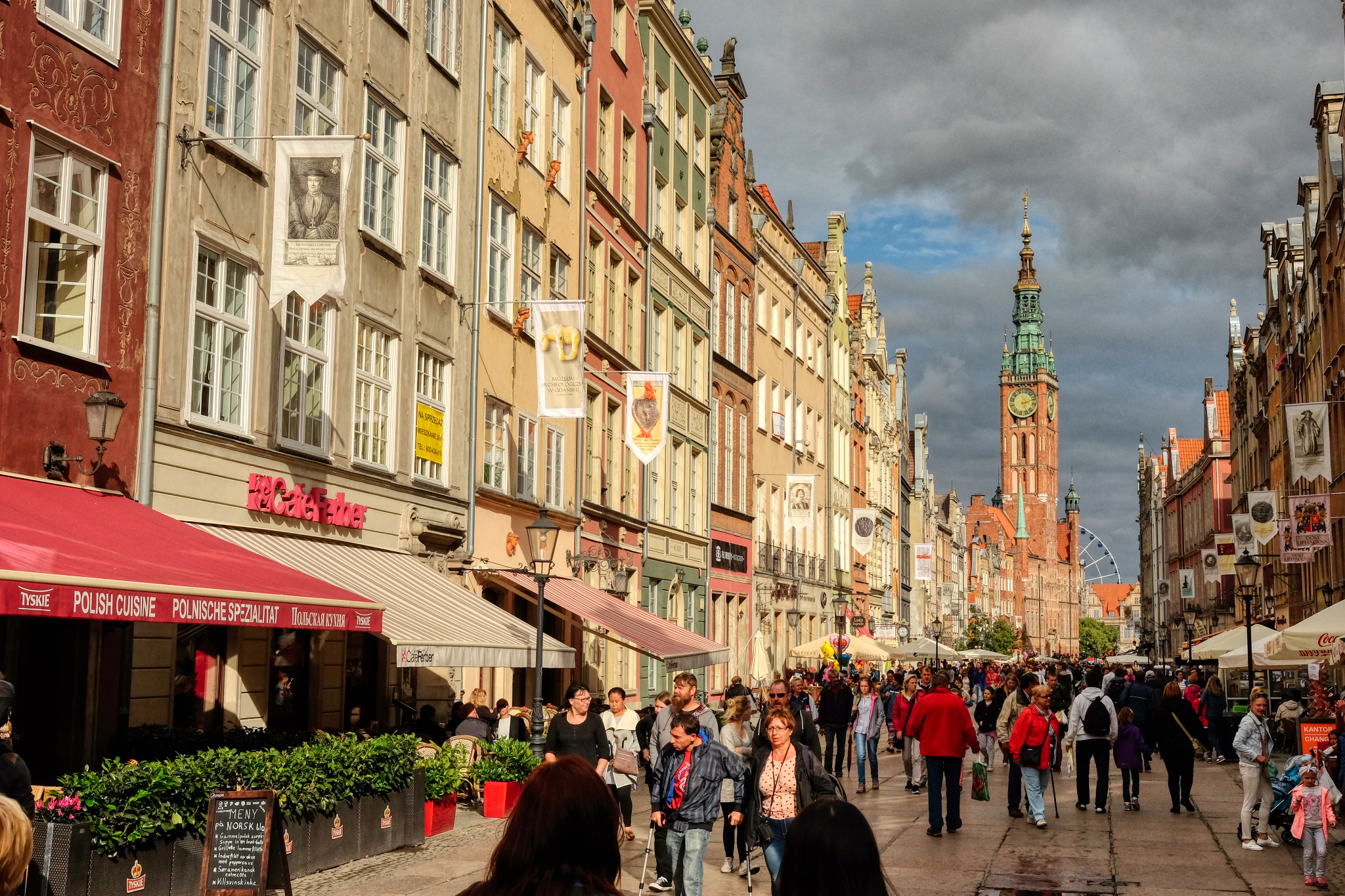 Gdańsk is one of the most beautiful cities I have ever visited . . . and as good luck would have it, we visited during a street festival!
Gdańsk is one of the most beautiful cities I have ever visited . . . and as good luck would have it, we visited during a street festival!
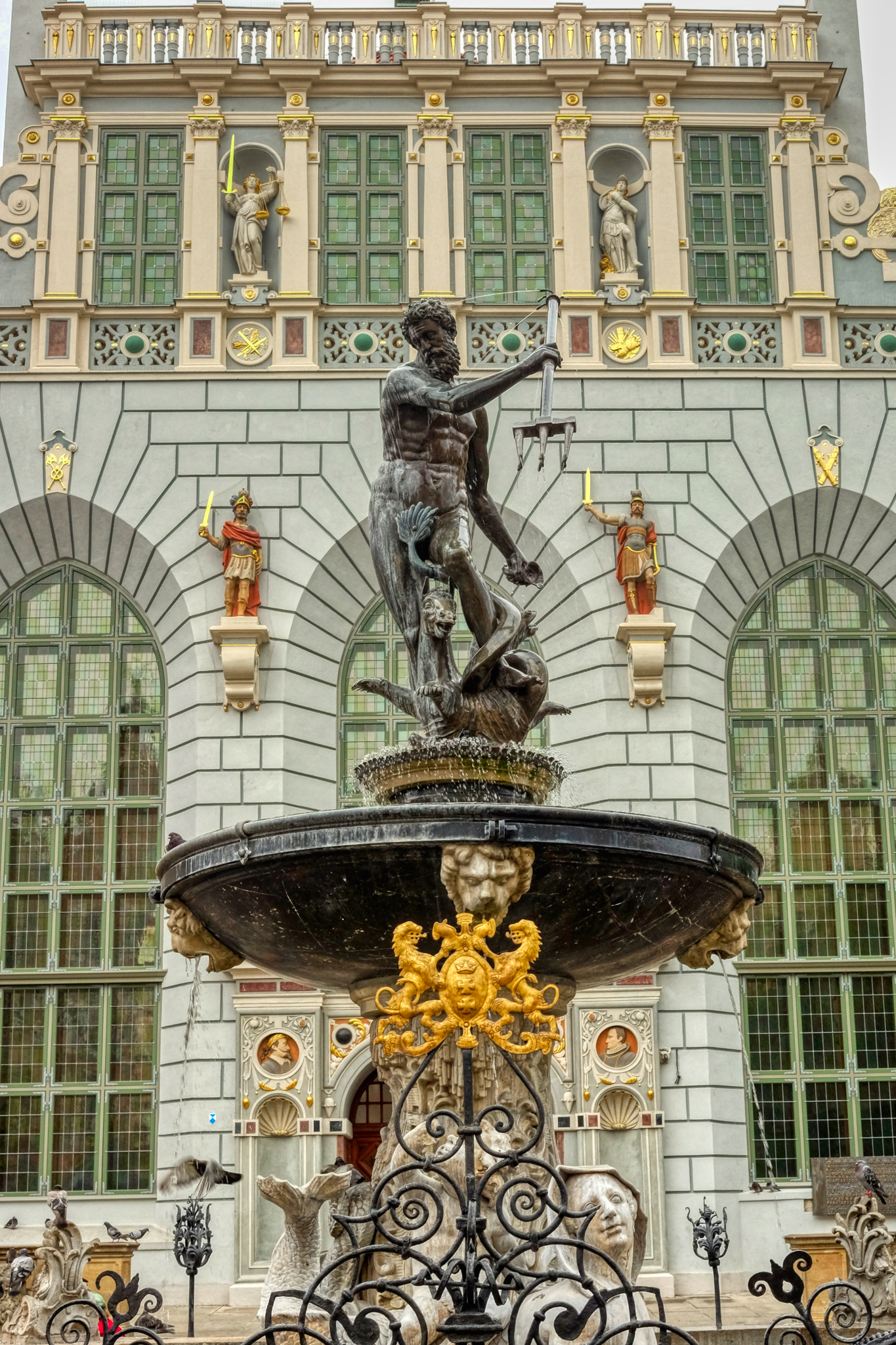 The statue to Neptune.
The statue to Neptune.
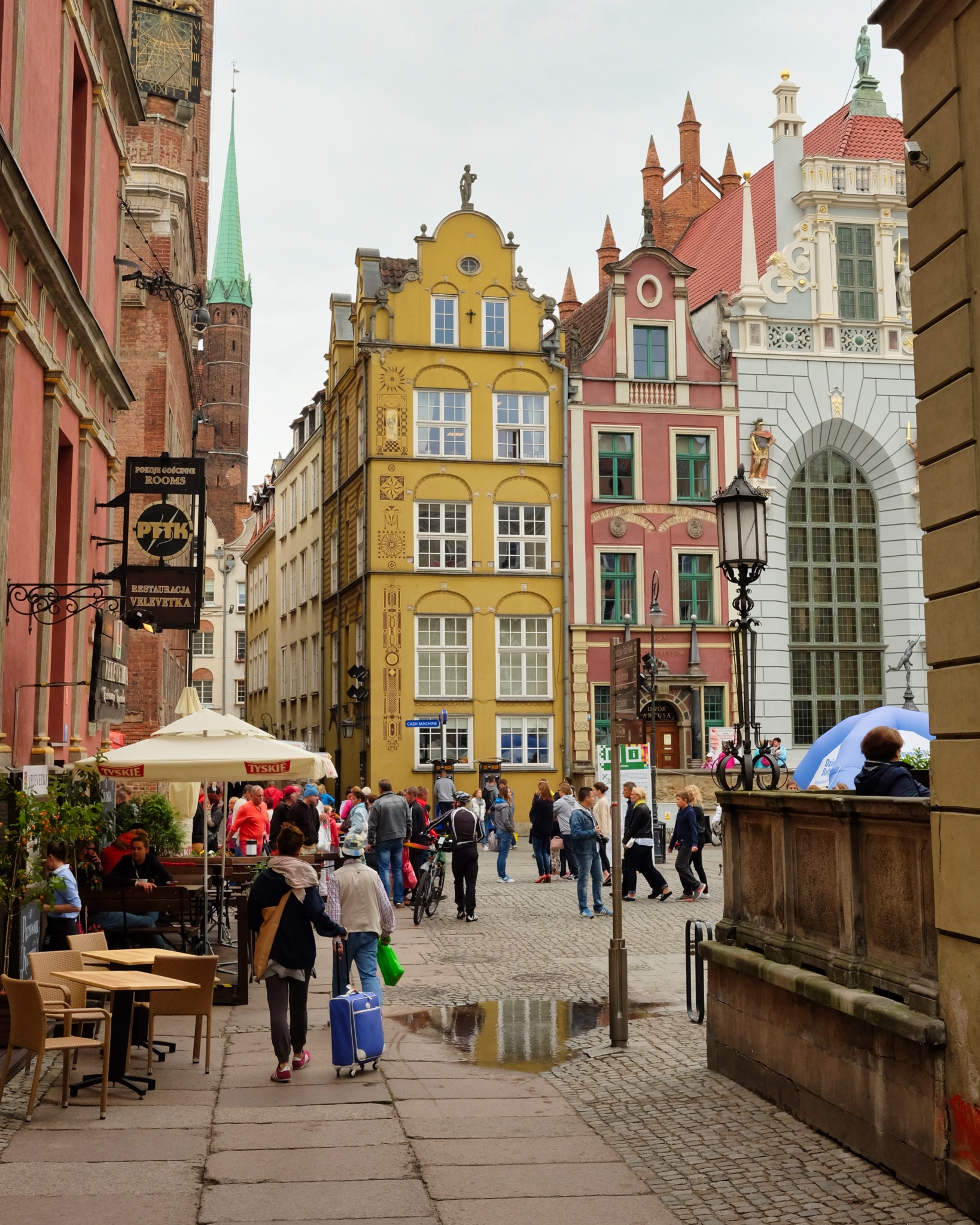 One of many small squares in the city center. The architectural style was surprisingly . . . . Dutch.
One of many small squares in the city center. The architectural style was surprisingly . . . . Dutch.
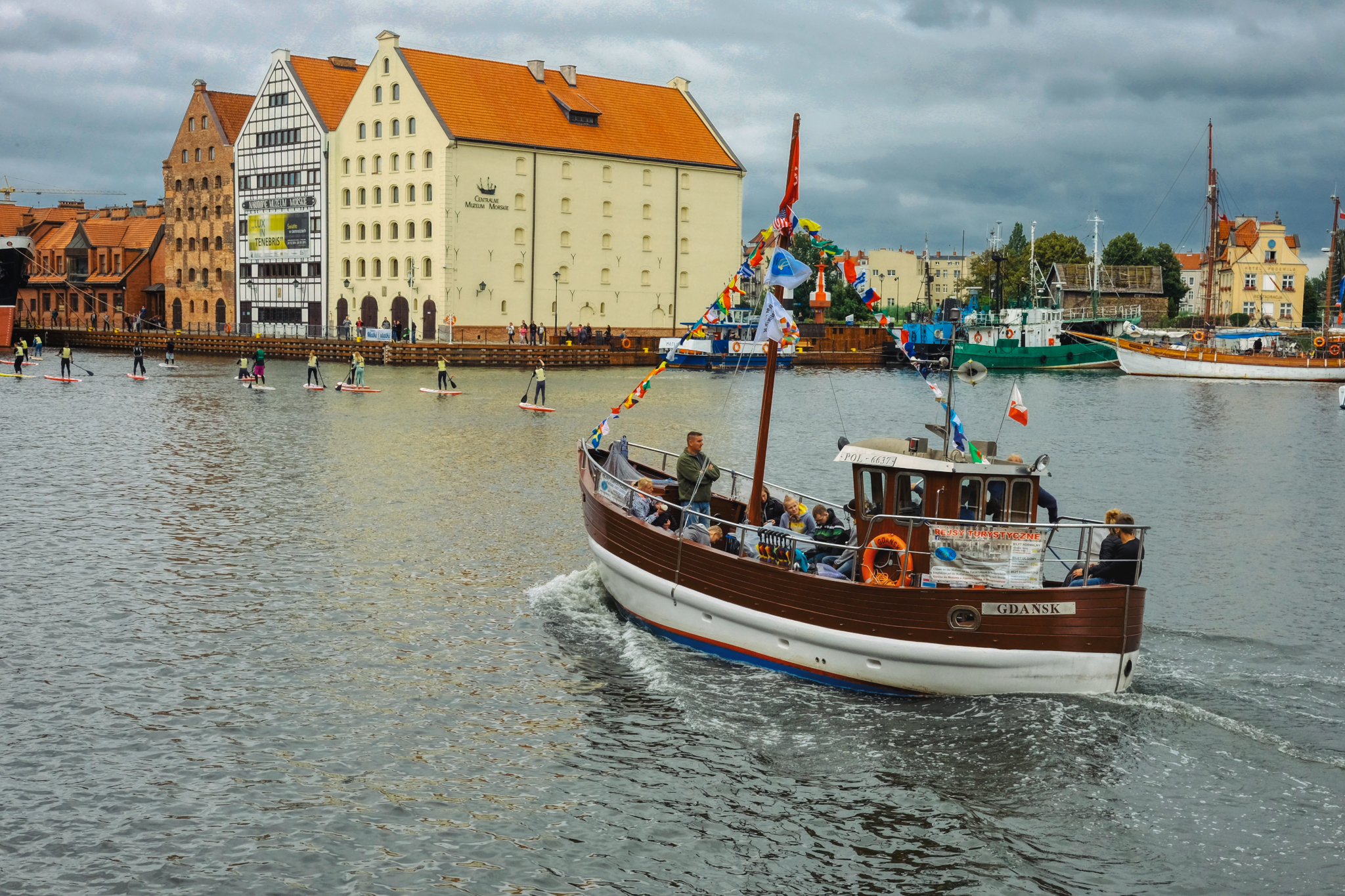 Gdańsk is on the Motlawa River estuary.
Gdańsk is on the Motlawa River estuary.
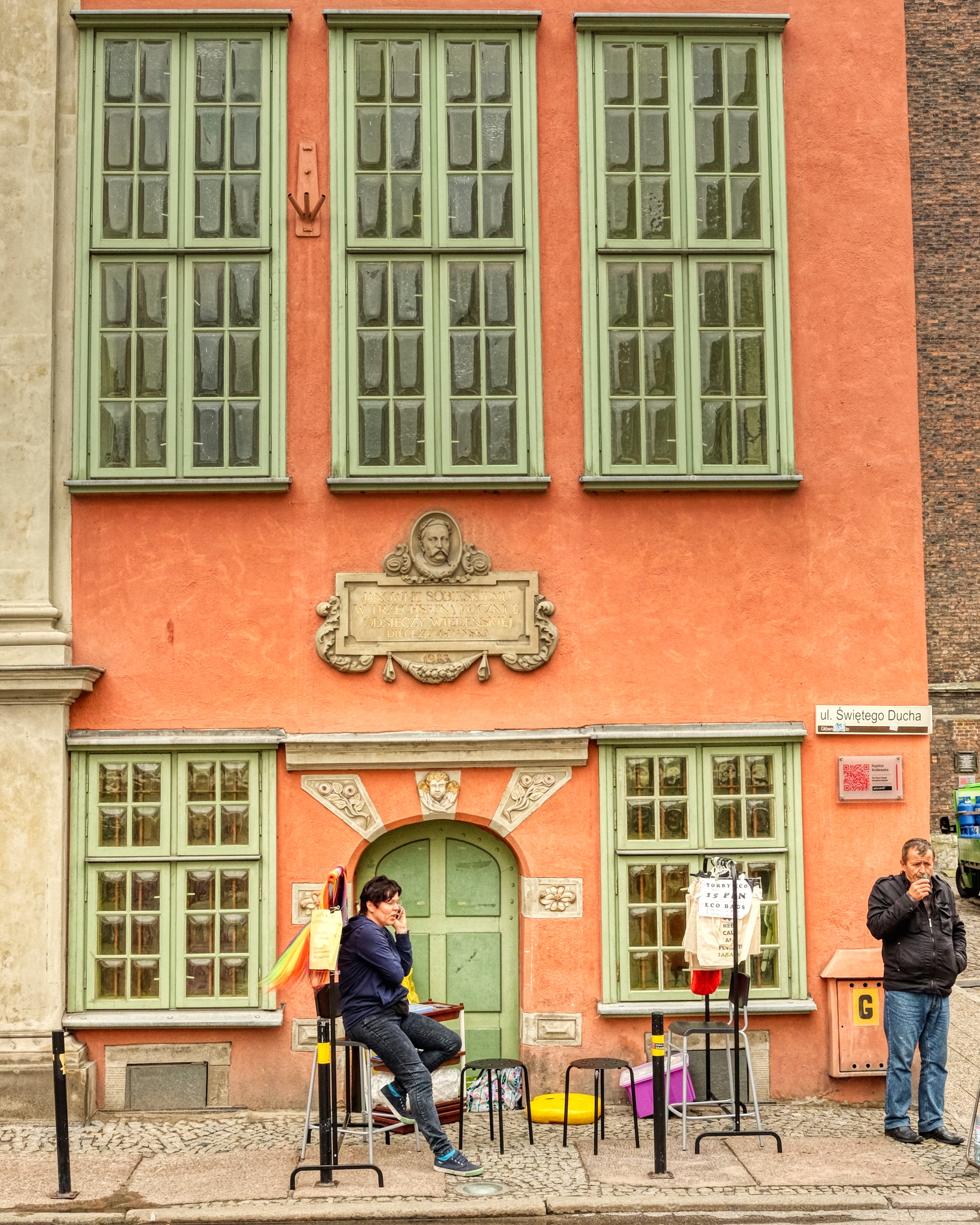 An old city filled with wonderful architecture.
An old city filled with wonderful architecture.
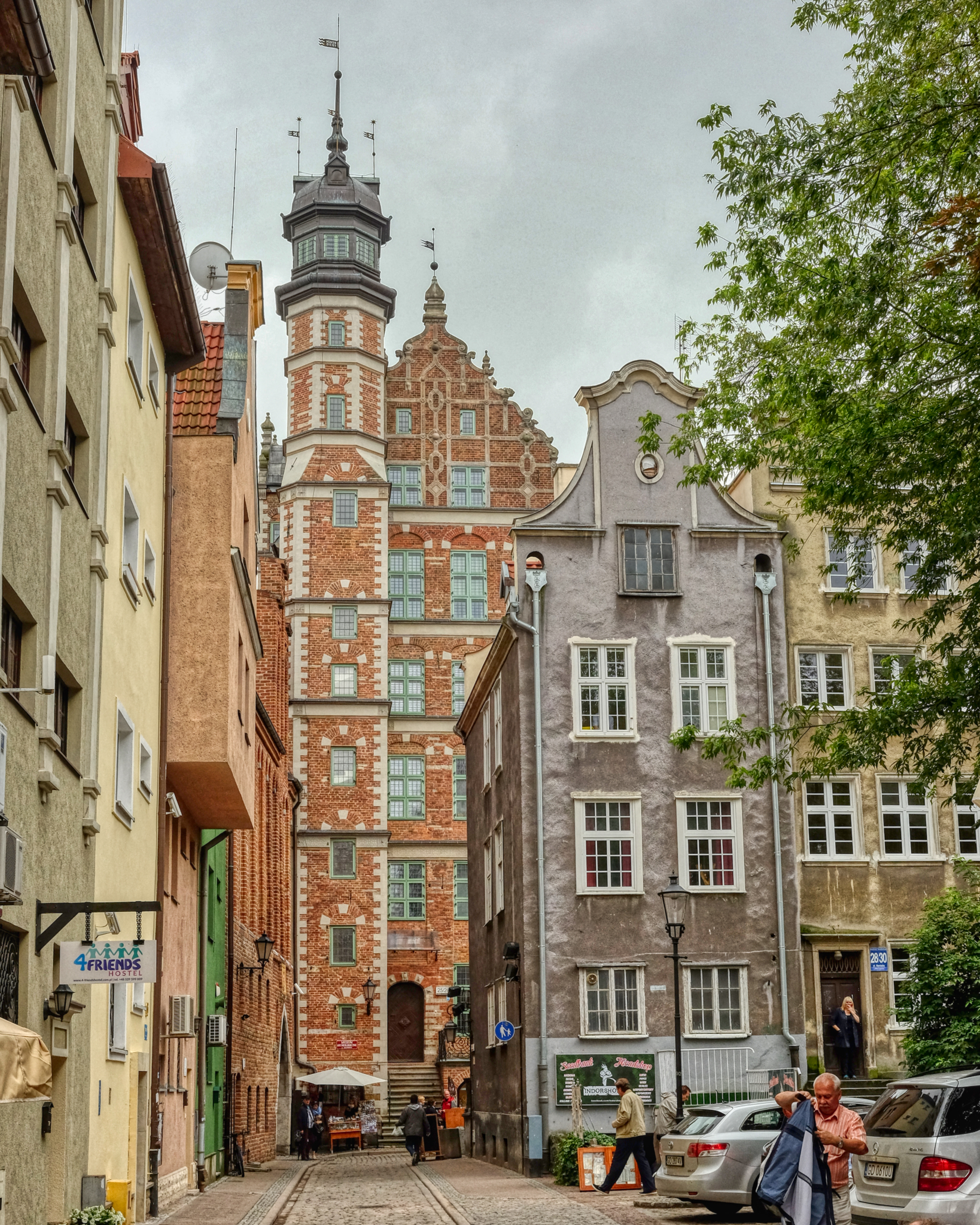 The architecture of Gdańsk tells a story: "Parts of the historic old city of Gdańsk, which had suffered large-scale destruction during the war, were rebuilt during the 1950s and 1960s. The reconstruction was not tied to the city's pre-war appearance, but instead was politically motivated as a means of culturally cleansing and destroying all traces of German influence from the city. Any traces of German tradition were ignored by the communists, suppressed, or regarded as Prussian barbarism only worthy of demolition, while communist and Flemish/Dutch, Italian and French influences were used to replace the historically accurate Germanic architecture which the city was built upon since the 14th century. [Citation]
The architecture of Gdańsk tells a story: "Parts of the historic old city of Gdańsk, which had suffered large-scale destruction during the war, were rebuilt during the 1950s and 1960s. The reconstruction was not tied to the city's pre-war appearance, but instead was politically motivated as a means of culturally cleansing and destroying all traces of German influence from the city. Any traces of German tradition were ignored by the communists, suppressed, or regarded as Prussian barbarism only worthy of demolition, while communist and Flemish/Dutch, Italian and French influences were used to replace the historically accurate Germanic architecture which the city was built upon since the 14th century. [Citation]
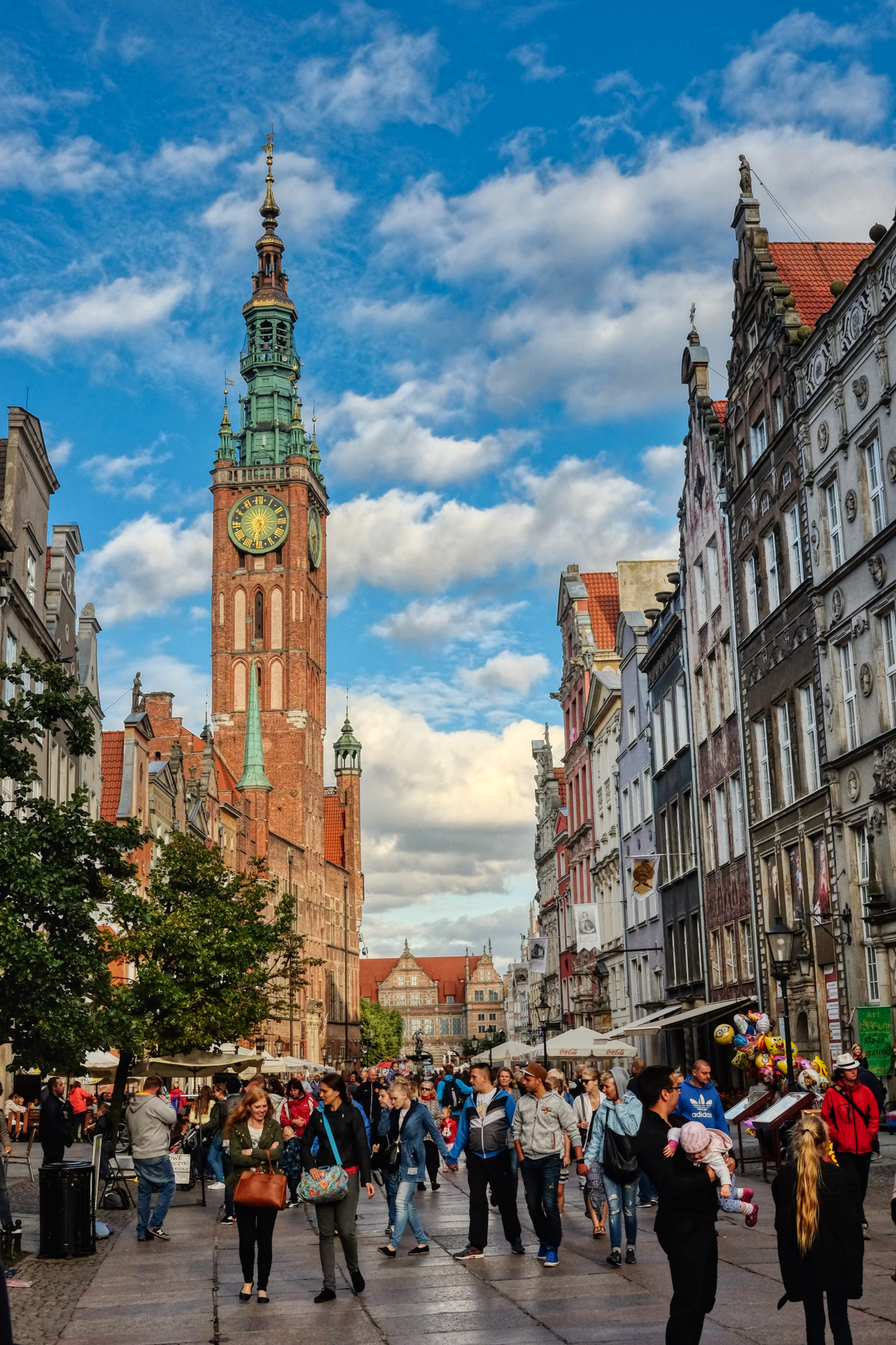 The Long Street with the old (circa 1327) City Hall towering over it.
The Long Street with the old (circa 1327) City Hall towering over it.
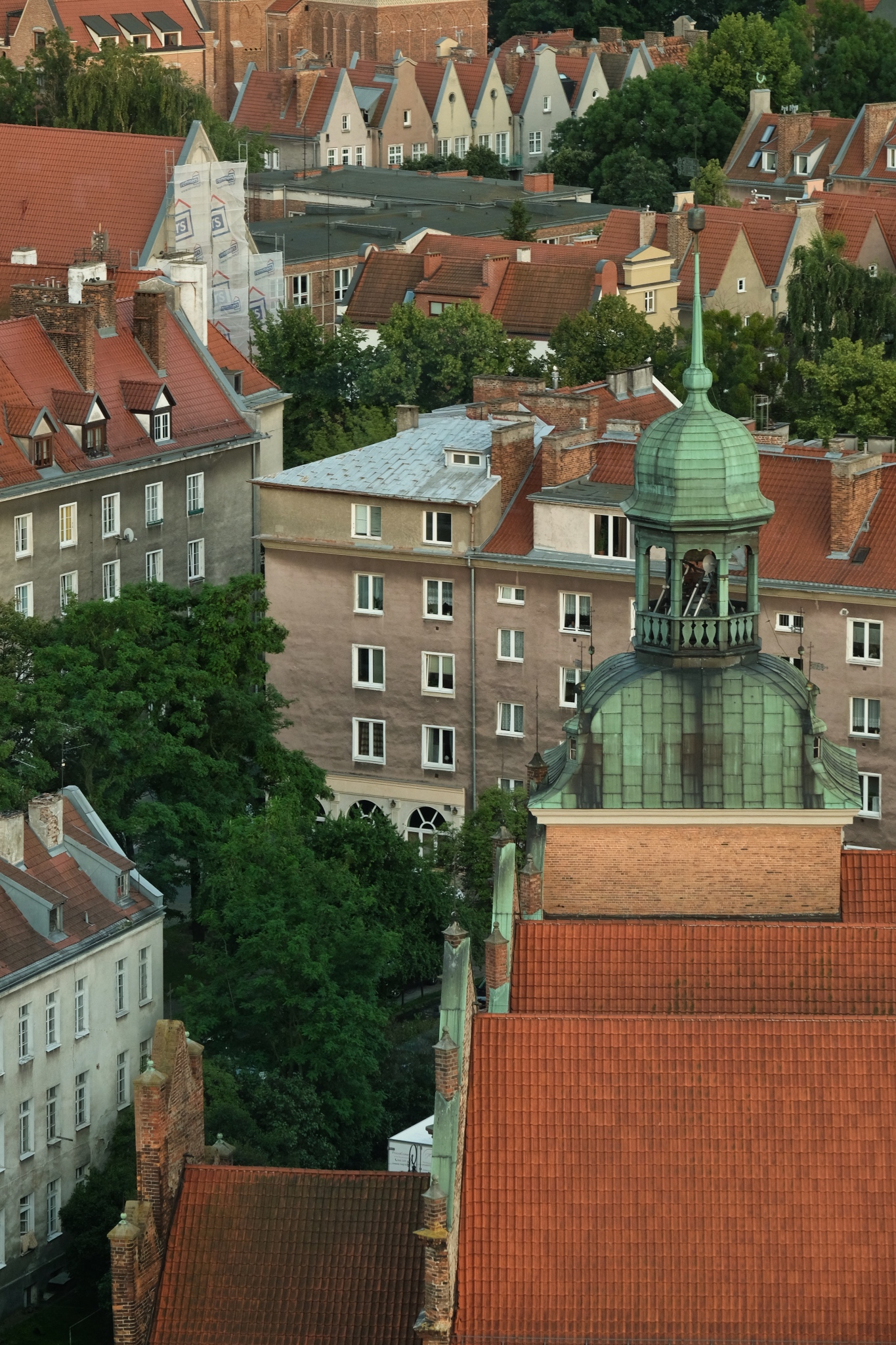 Although I would have preferred to stay at an old 'boutique hotel,' we instead stayed at a modern 25 story hotel. The plus side of the modern hotel were the views over the city.
Although I would have preferred to stay at an old 'boutique hotel,' we instead stayed at a modern 25 story hotel. The plus side of the modern hotel were the views over the city.
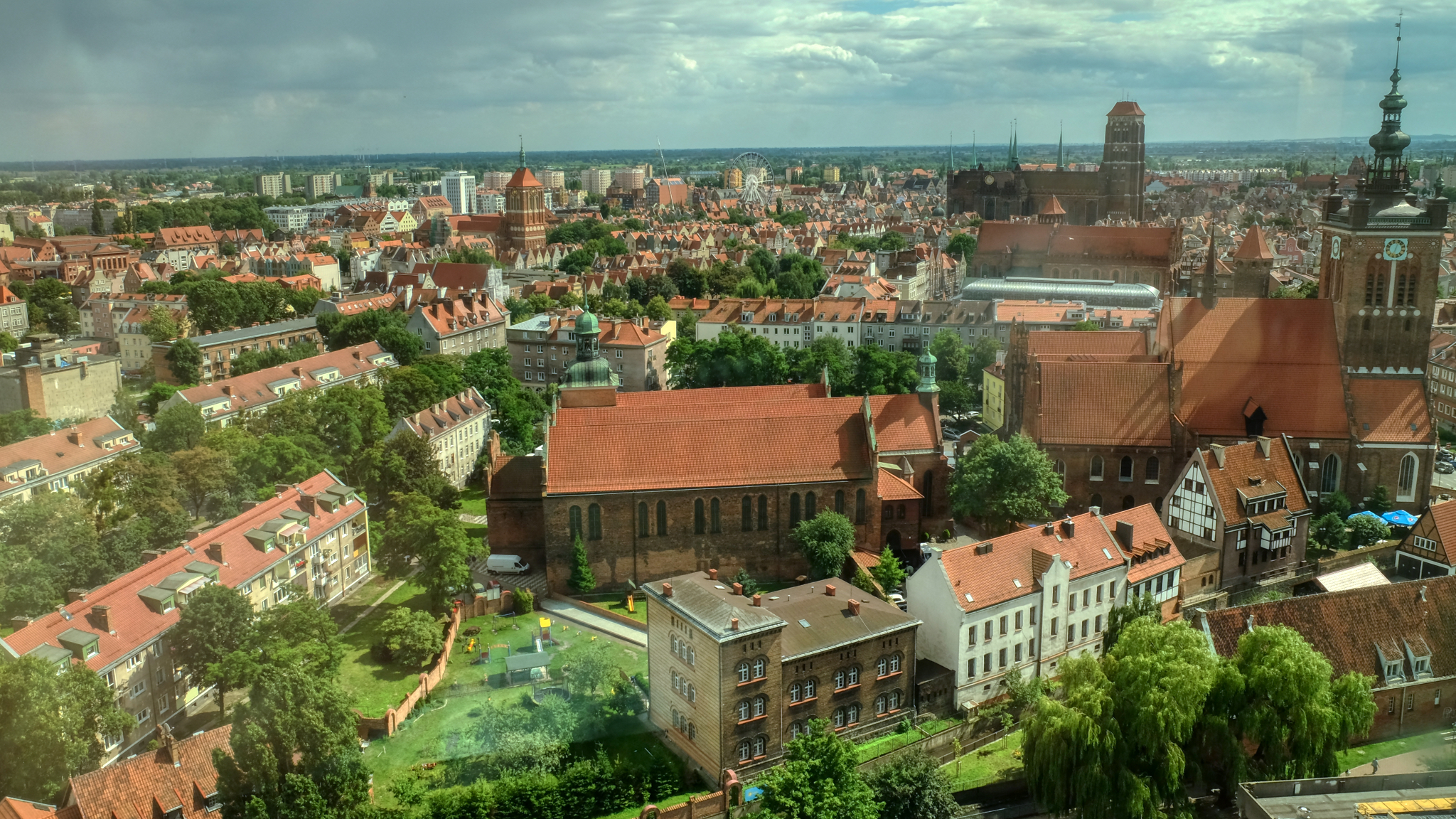
Gdańsk was reduced to piles of stone and brick during WWII by Allied and Soviet bombers. Almost all of what you see here was reconstructed during the 1950s and 1960s.
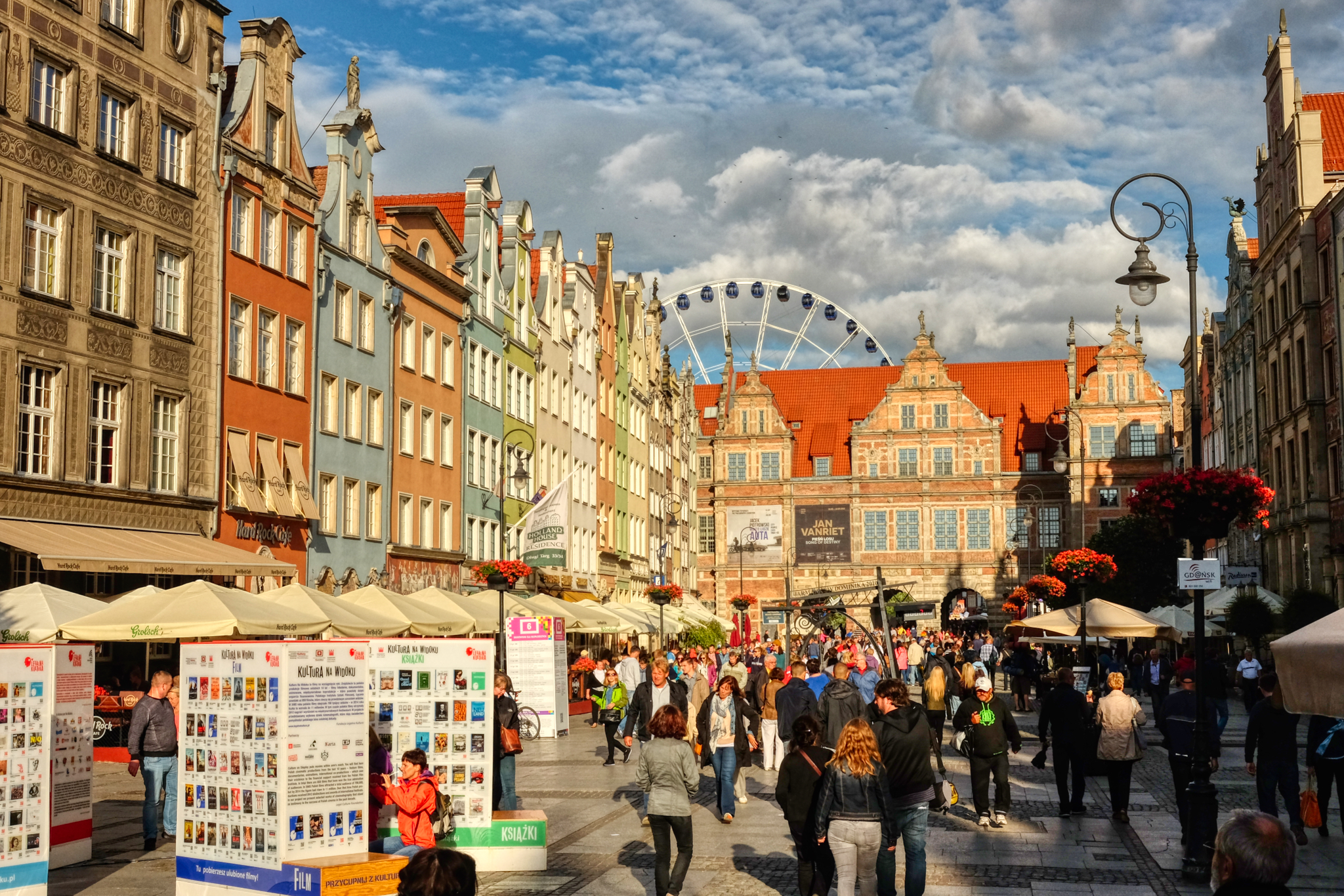 As luck would have it, we arrived in Gdańsk right in the middle of the annual St. Dominic's Fair. With 750 years of successful tradition, the history of the Fair goes back to the year 1260, when it was established by the decree of Pope Alexander IV.
As luck would have it, we arrived in Gdańsk right in the middle of the annual St. Dominic's Fair. With 750 years of successful tradition, the history of the Fair goes back to the year 1260, when it was established by the decree of Pope Alexander IV.
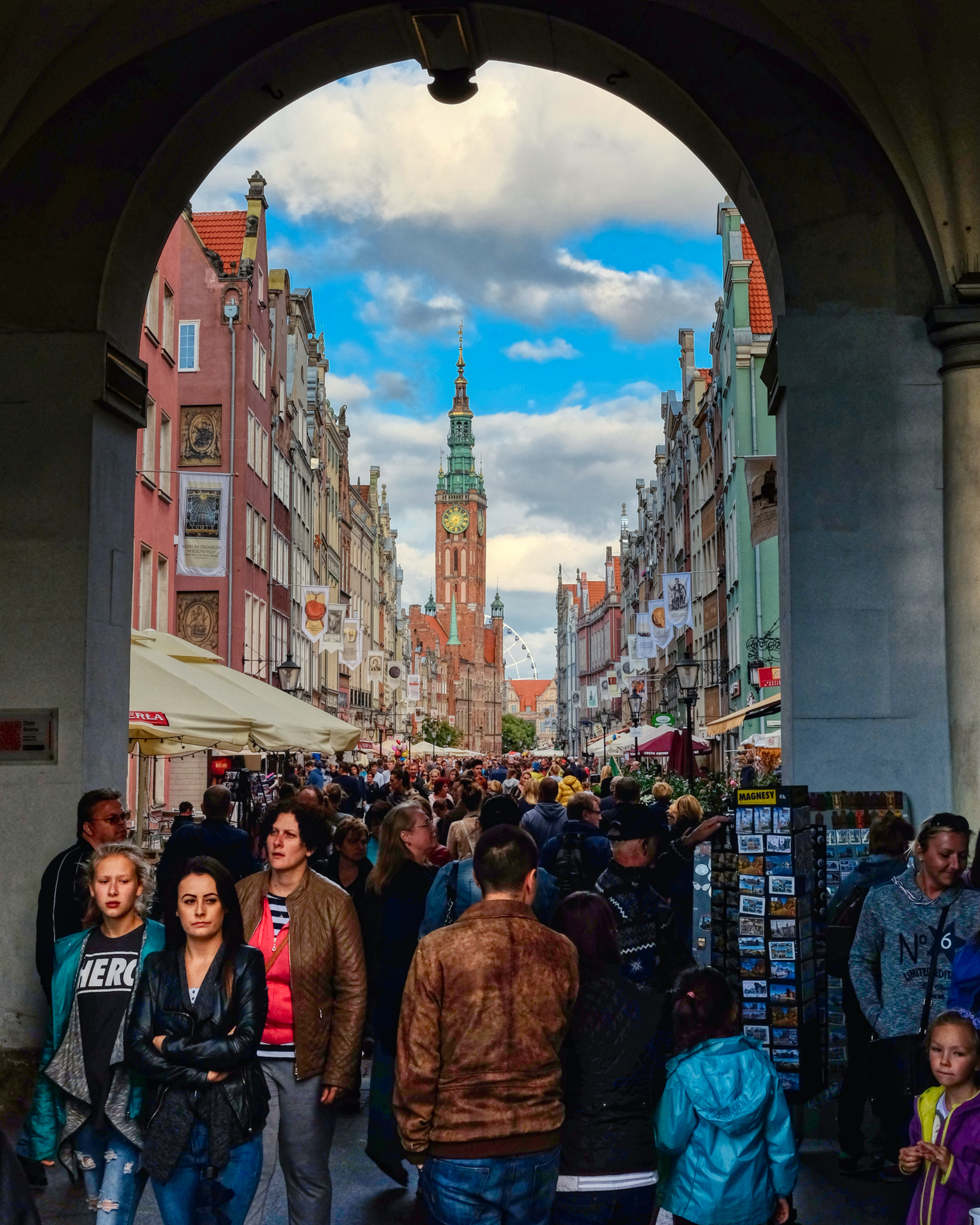 St. Dominic's Fair brought tourists from all over Poland, Europe, and the Far East.
St. Dominic's Fair brought tourists from all over Poland, Europe, and the Far East.
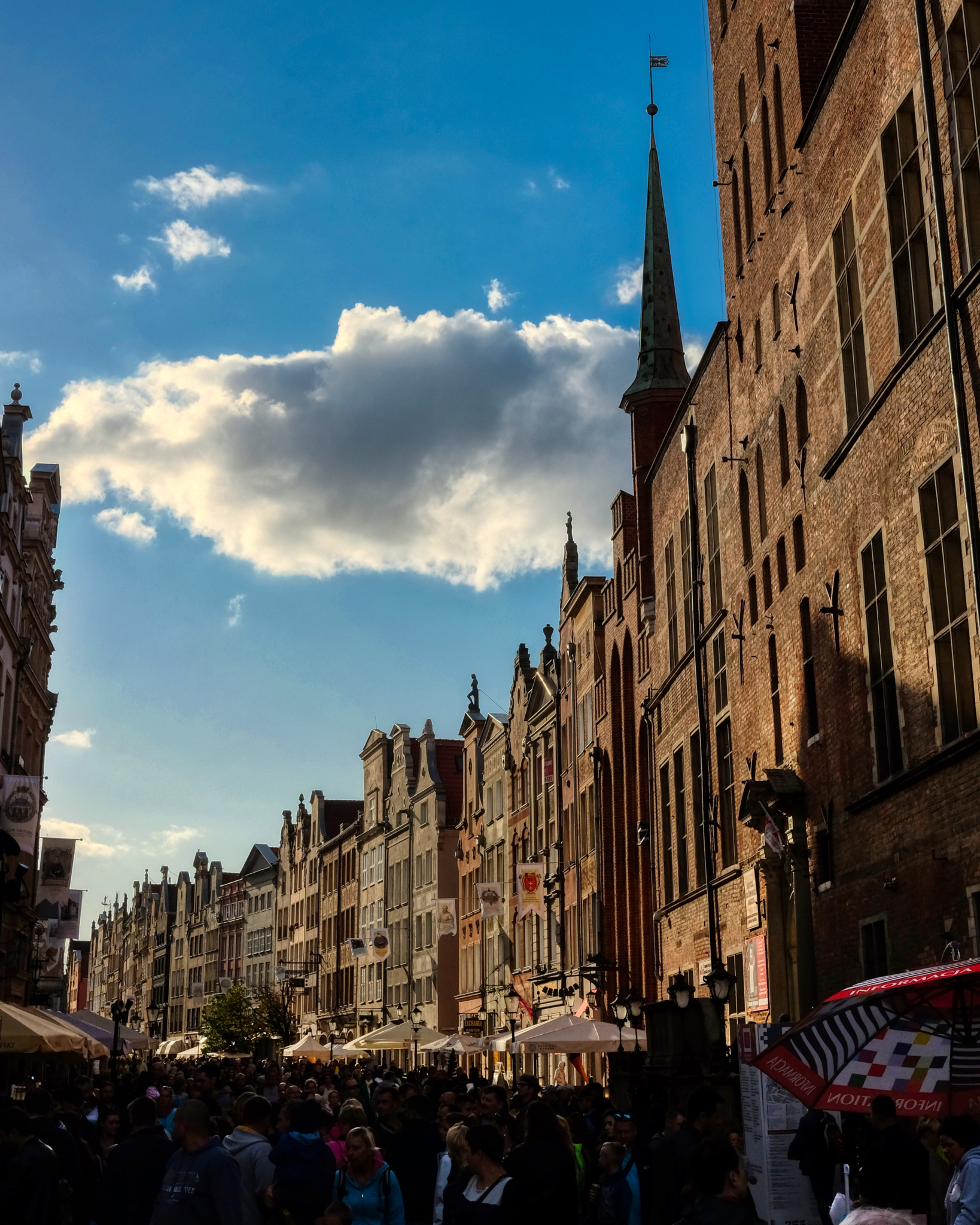 Every street in the city was set up with stalls selling food and crafts. It was the biggest street food and crafts fair I have ever seen!
Every street in the city was set up with stalls selling food and crafts. It was the biggest street food and crafts fair I have ever seen!
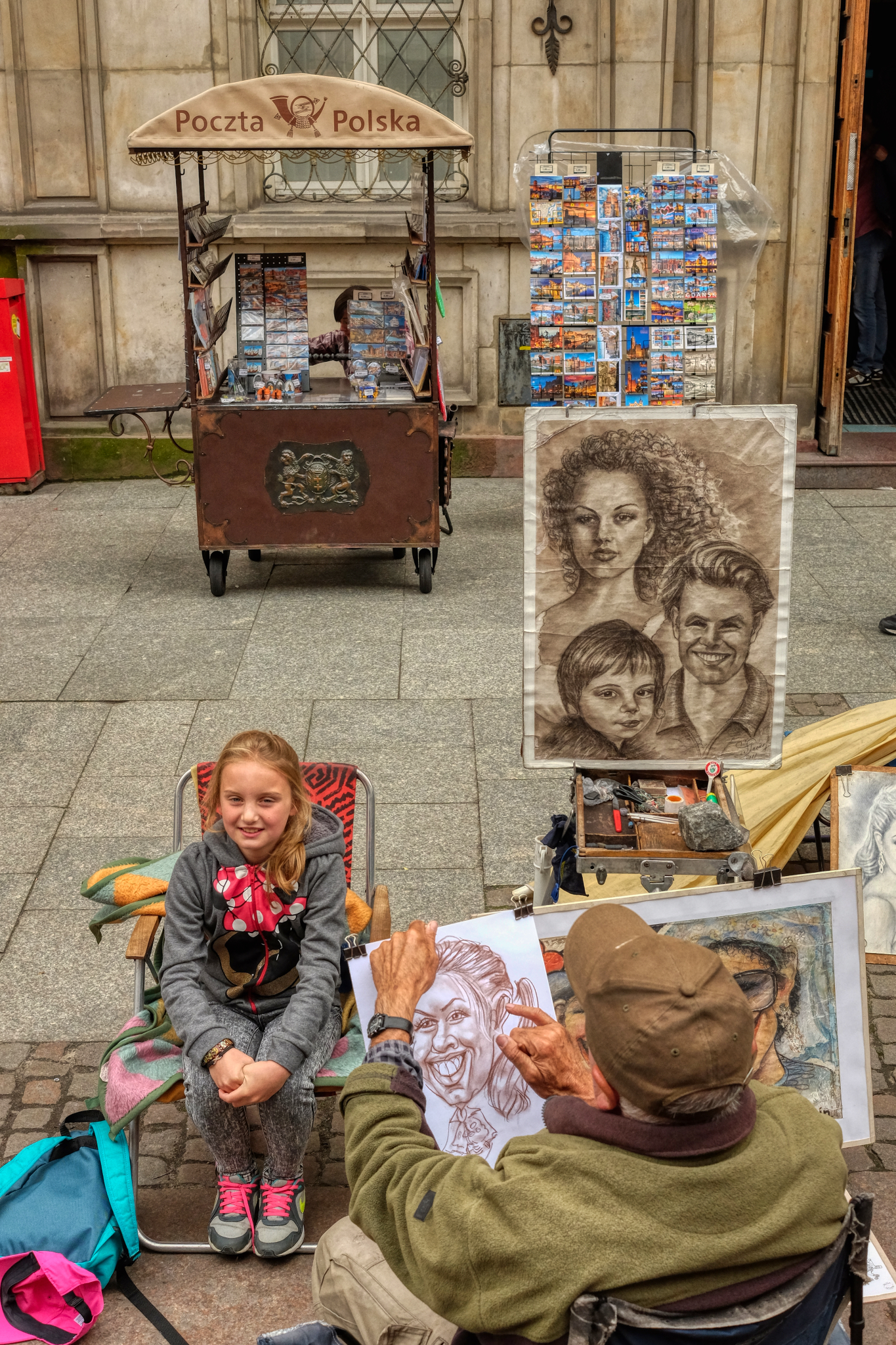
In addition to the street stalls, the fair attracted artists . . .
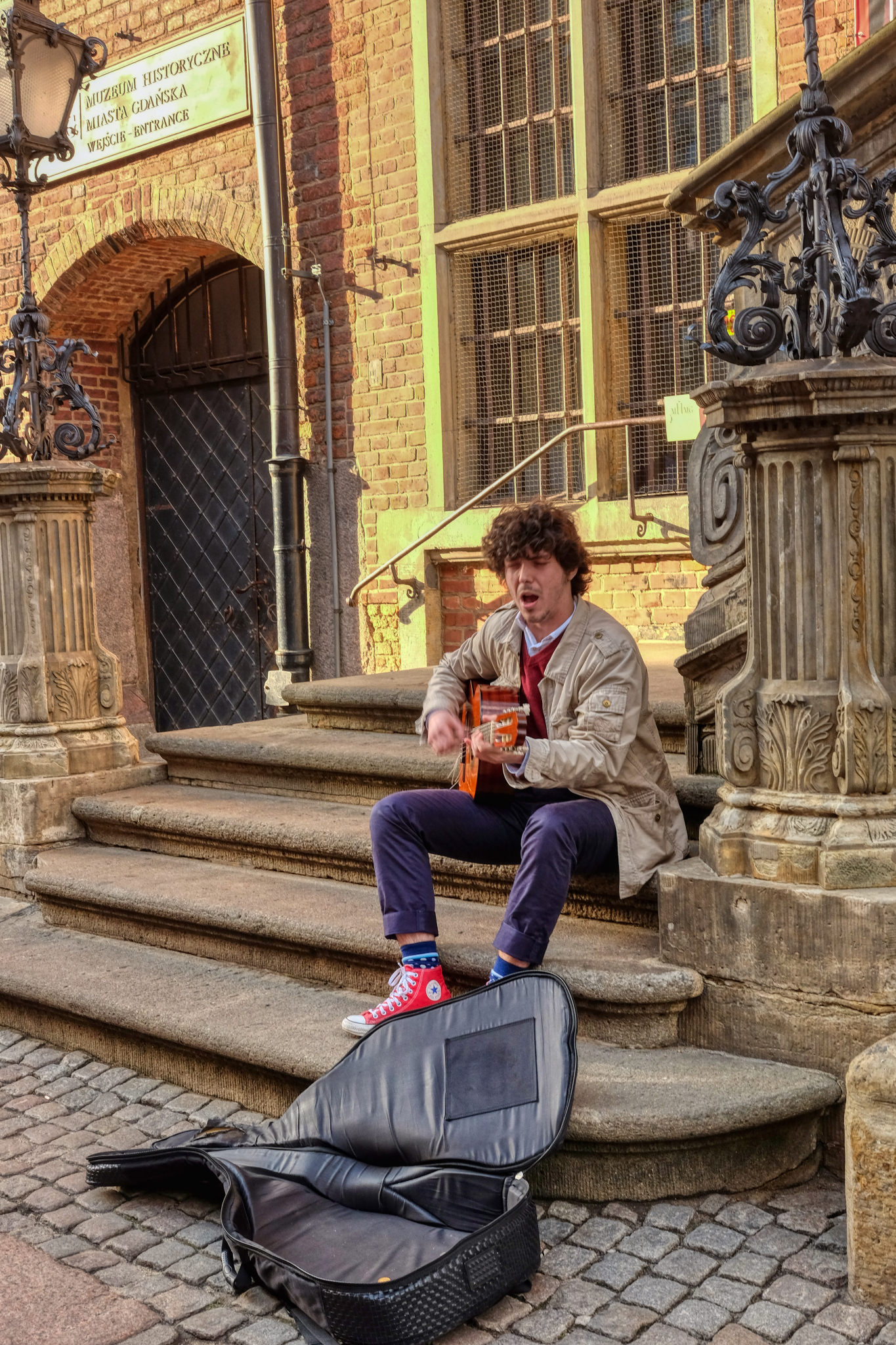
. . . buskers . . .
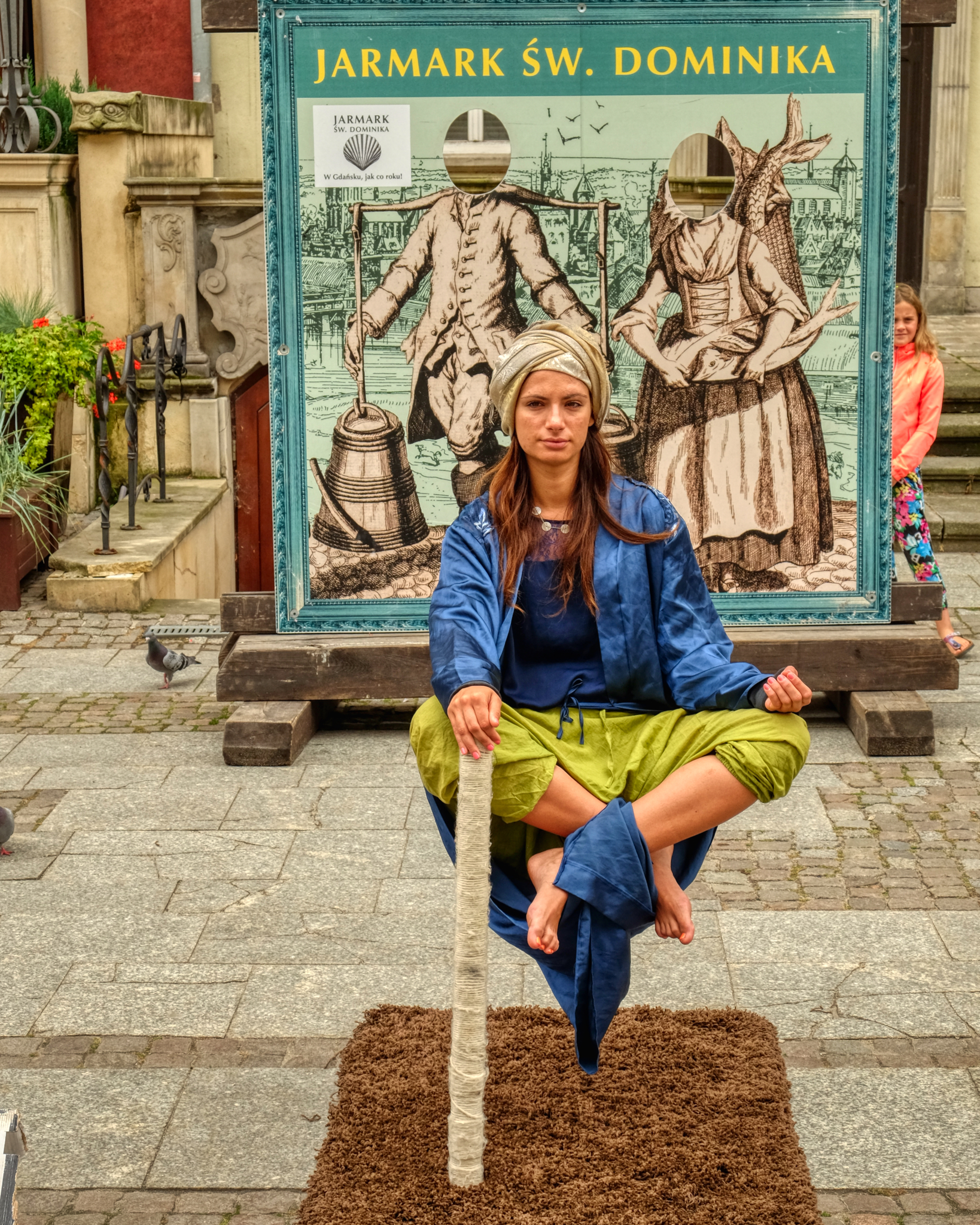 . . . street performers . . .
. . . street performers . . .
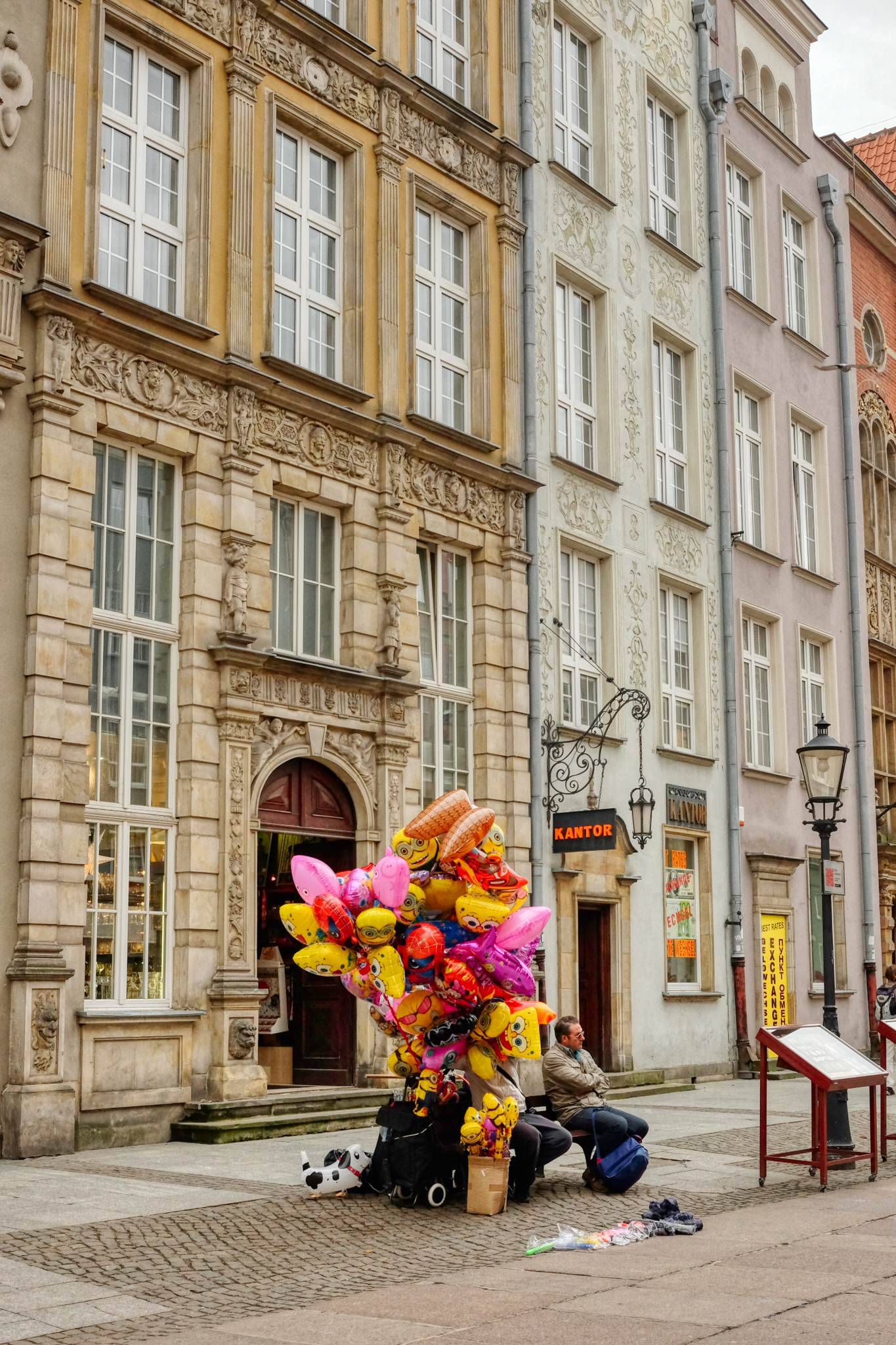 . . . morose balloon salesperson . . .
. . . morose balloon salesperson . . .
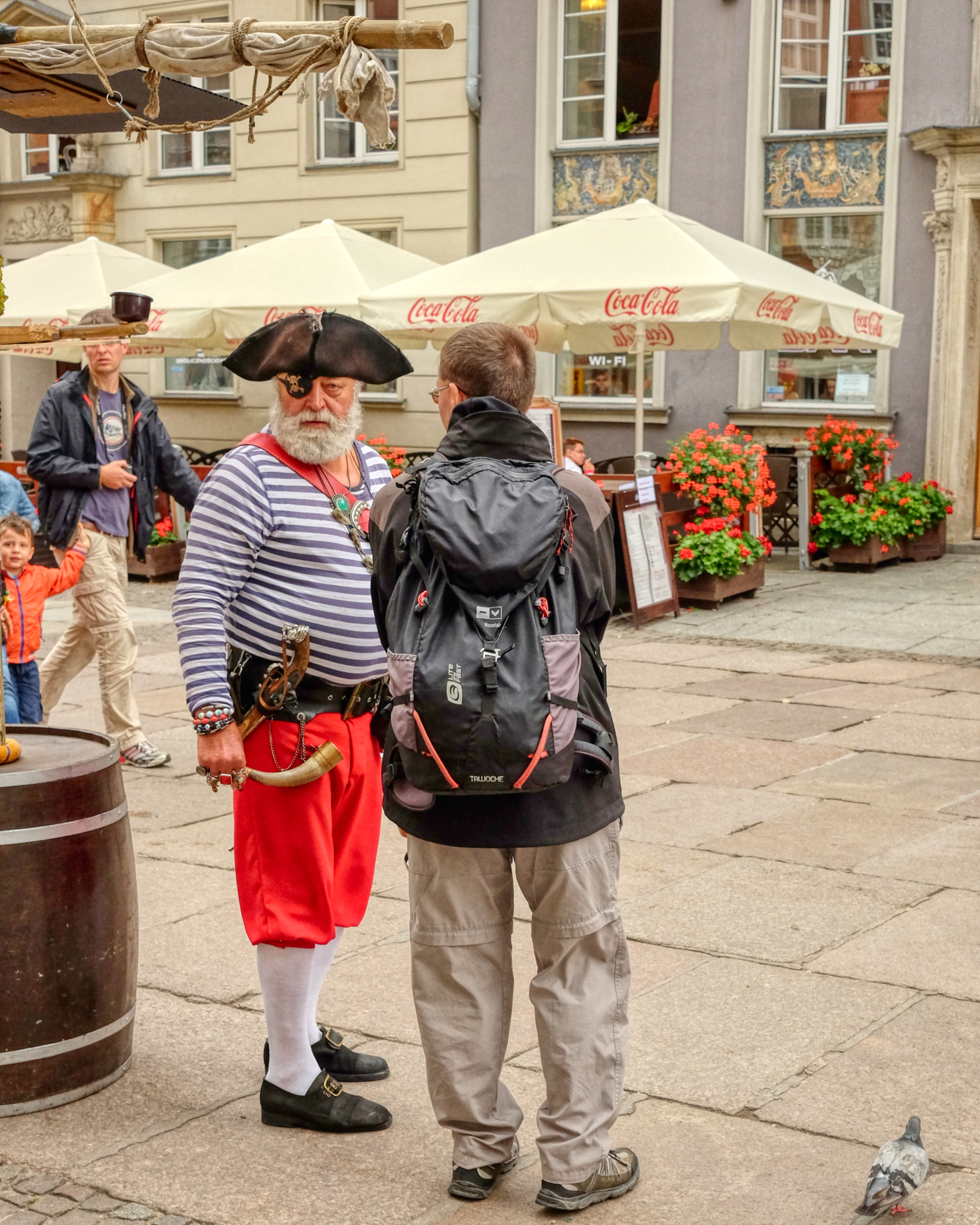 . . . historically costumed information givers . . . giving me the Evil Eye! YAR!
. . . historically costumed information givers . . . giving me the Evil Eye! YAR!
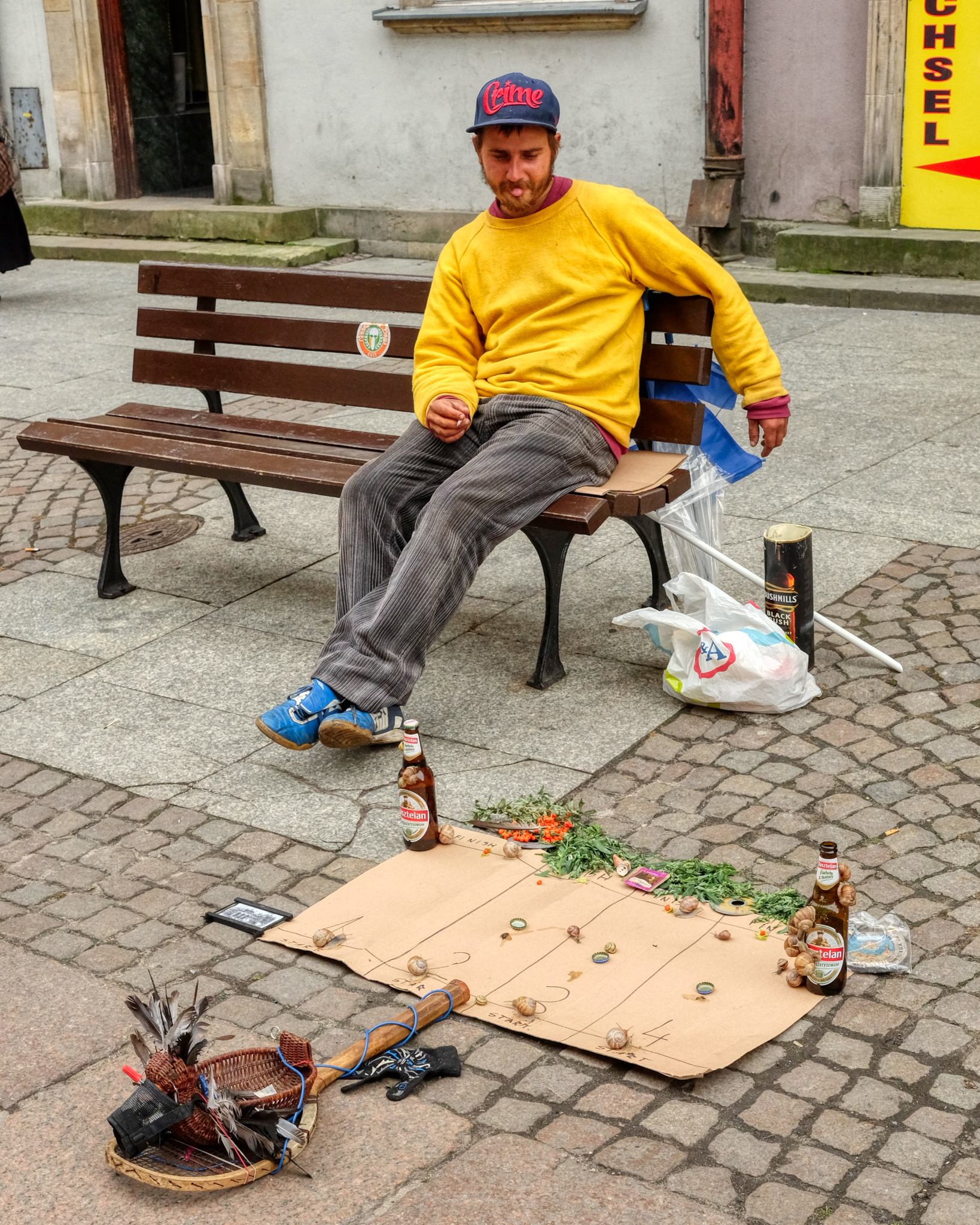 . . . and this guy (wearing a hat that said Crime!) who tried to entice the tourists to wager on his 'snail races.' The street fair was, in many ways, still like its medieval origins.
. . . and this guy (wearing a hat that said Crime!) who tried to entice the tourists to wager on his 'snail races.' The street fair was, in many ways, still like its medieval origins.
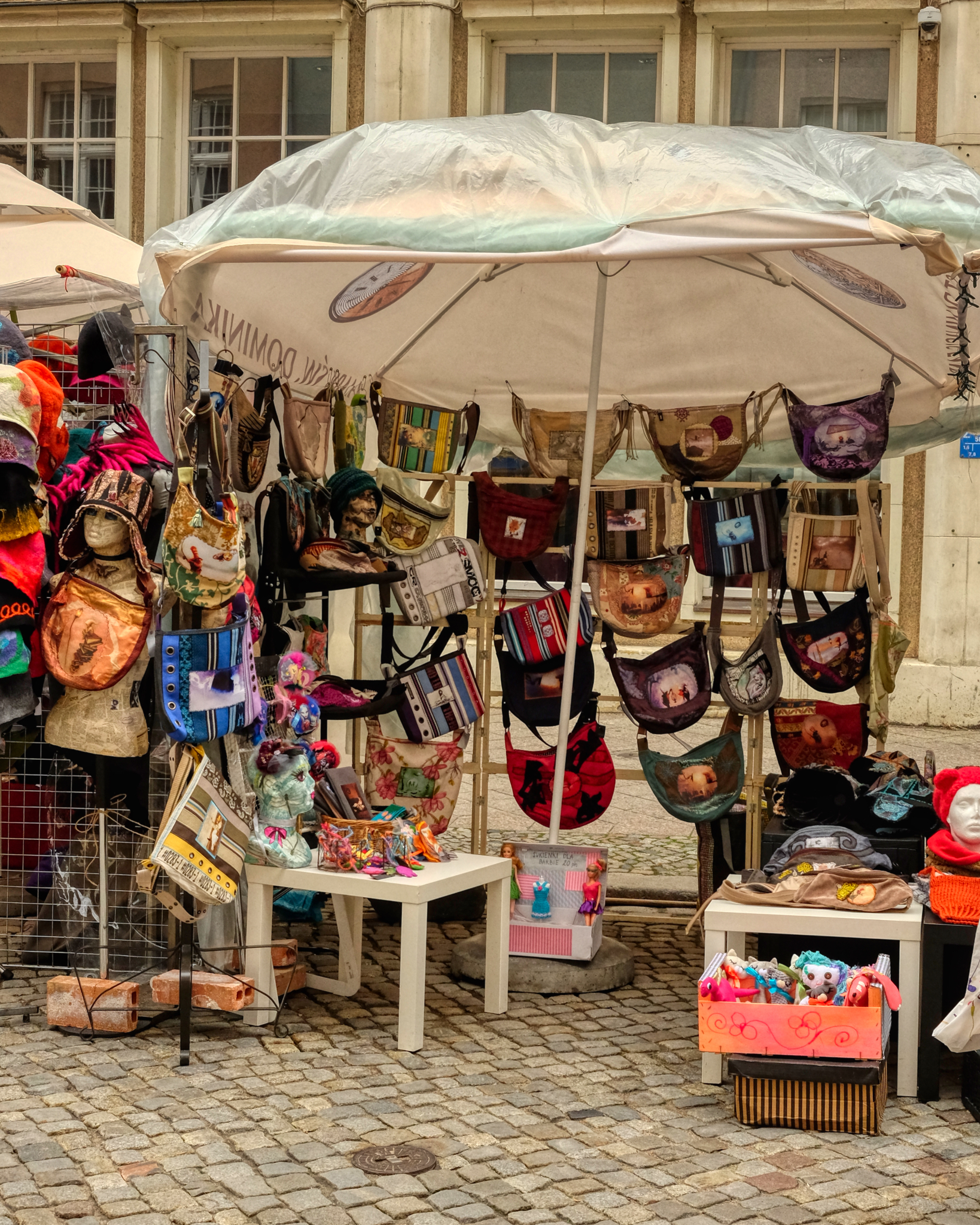 We enjoyed shopping at the many interesting crafts stalls.
We enjoyed shopping at the many interesting crafts stalls.
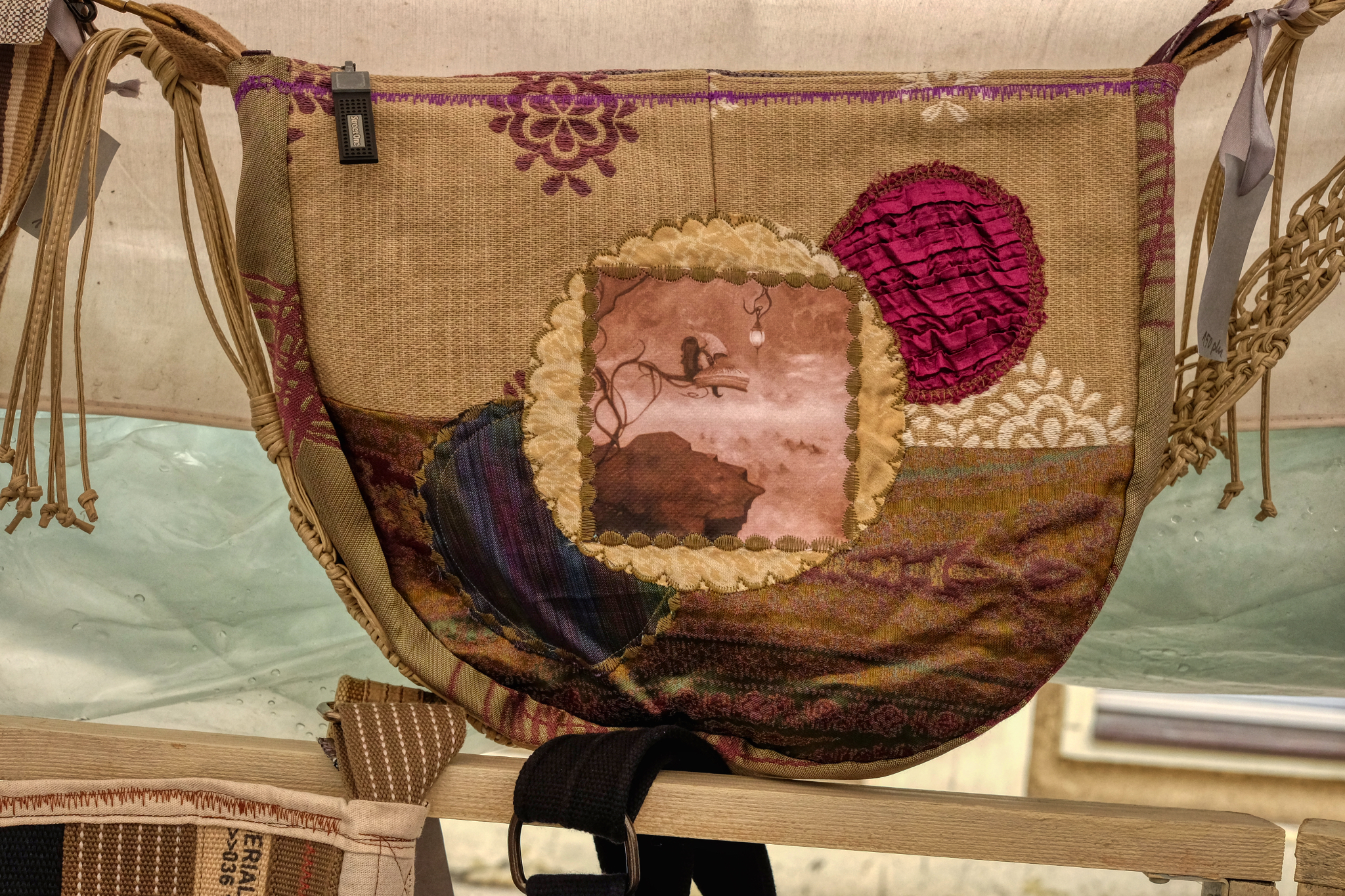 Interesting bags . . .
Interesting bags . . .
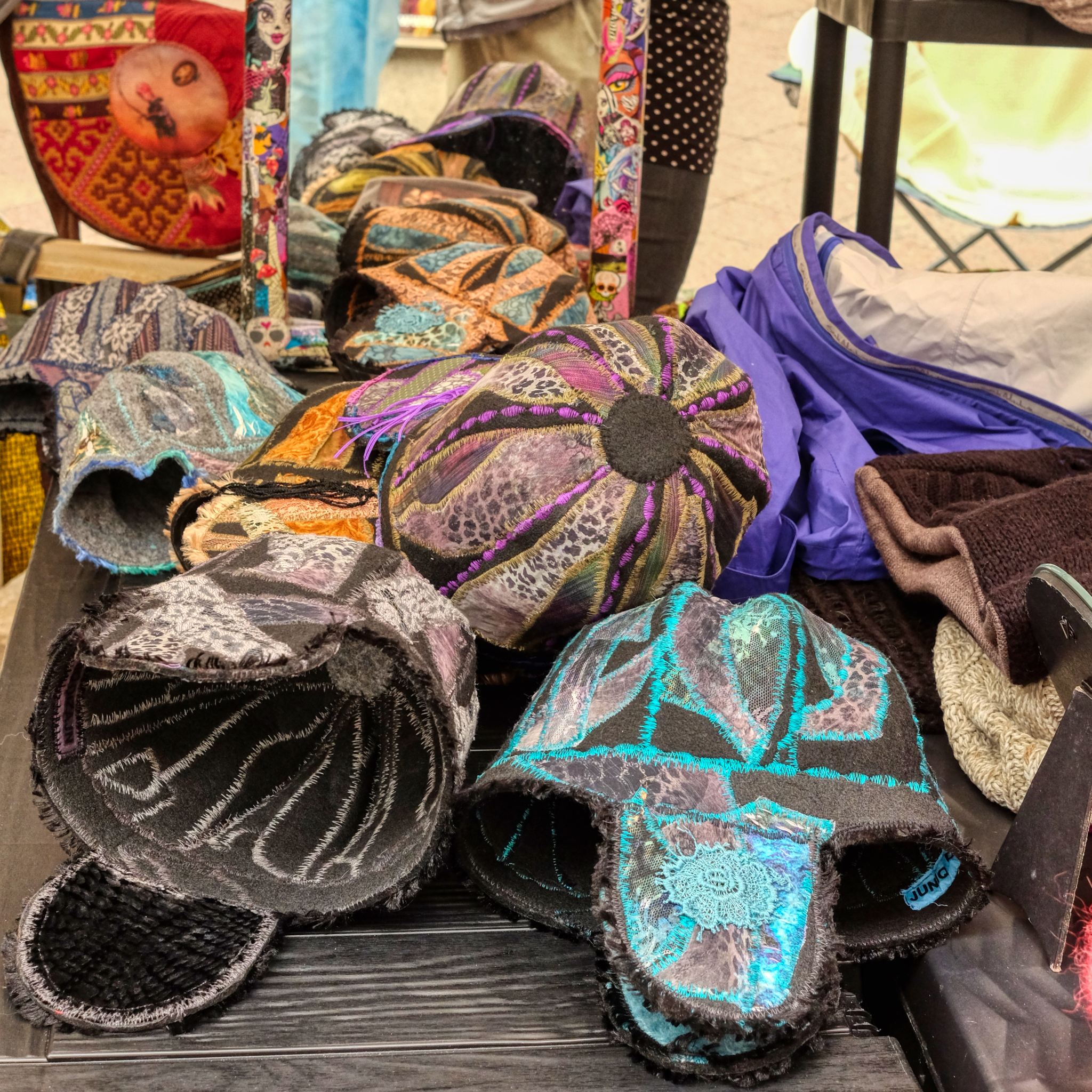 . . . very cool hats . . .
. . . very cool hats . . .
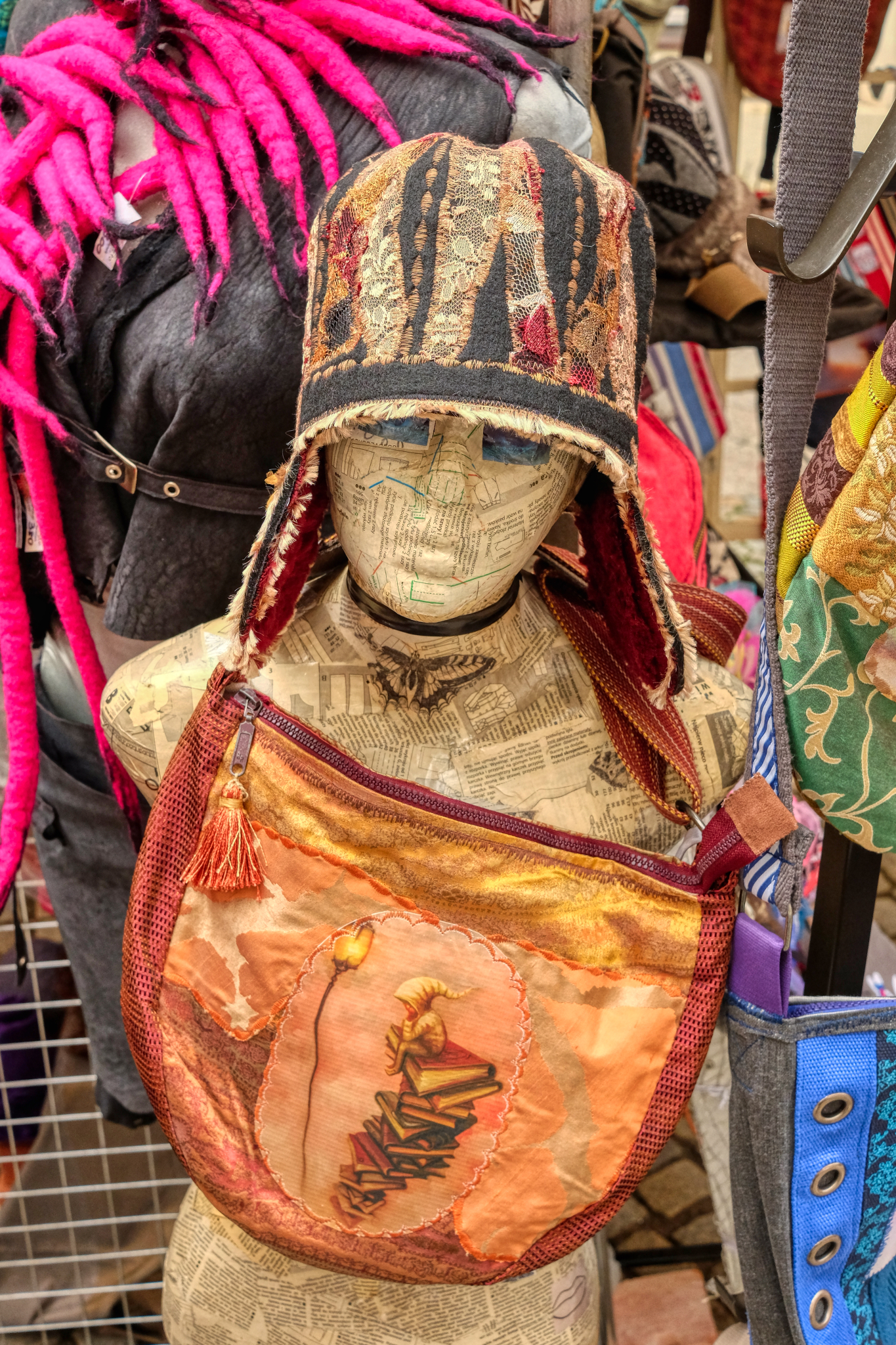 . . . very cool hat and bag! There were some very unusual arts at the fair.
. . . very cool hat and bag! There were some very unusual arts at the fair.
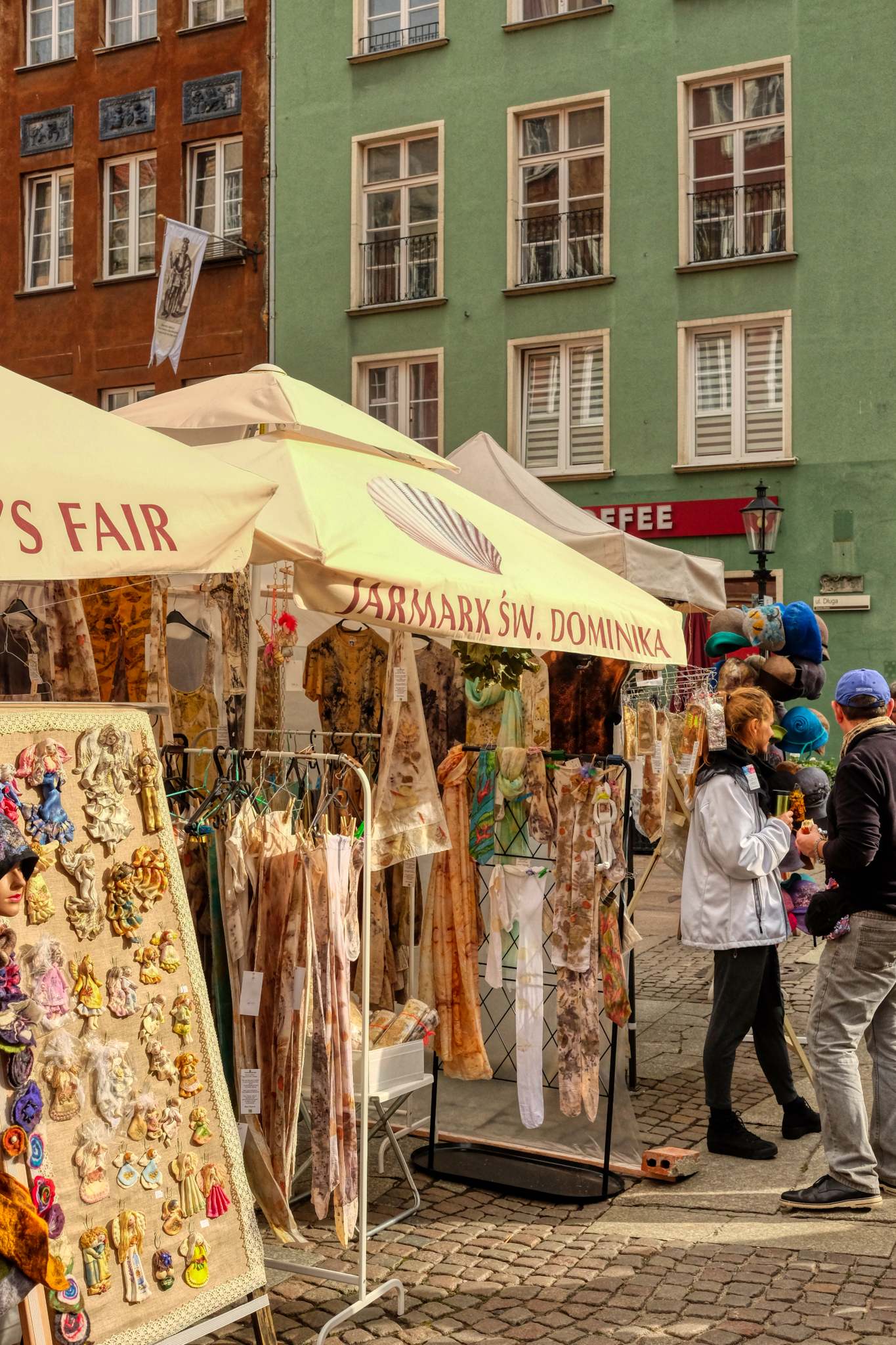 Many beautiful textiles on sale. We bought many things at the these stalls to take back home to Scotland with us. I bought a hat!
Many beautiful textiles on sale. We bought many things at the these stalls to take back home to Scotland with us. I bought a hat!
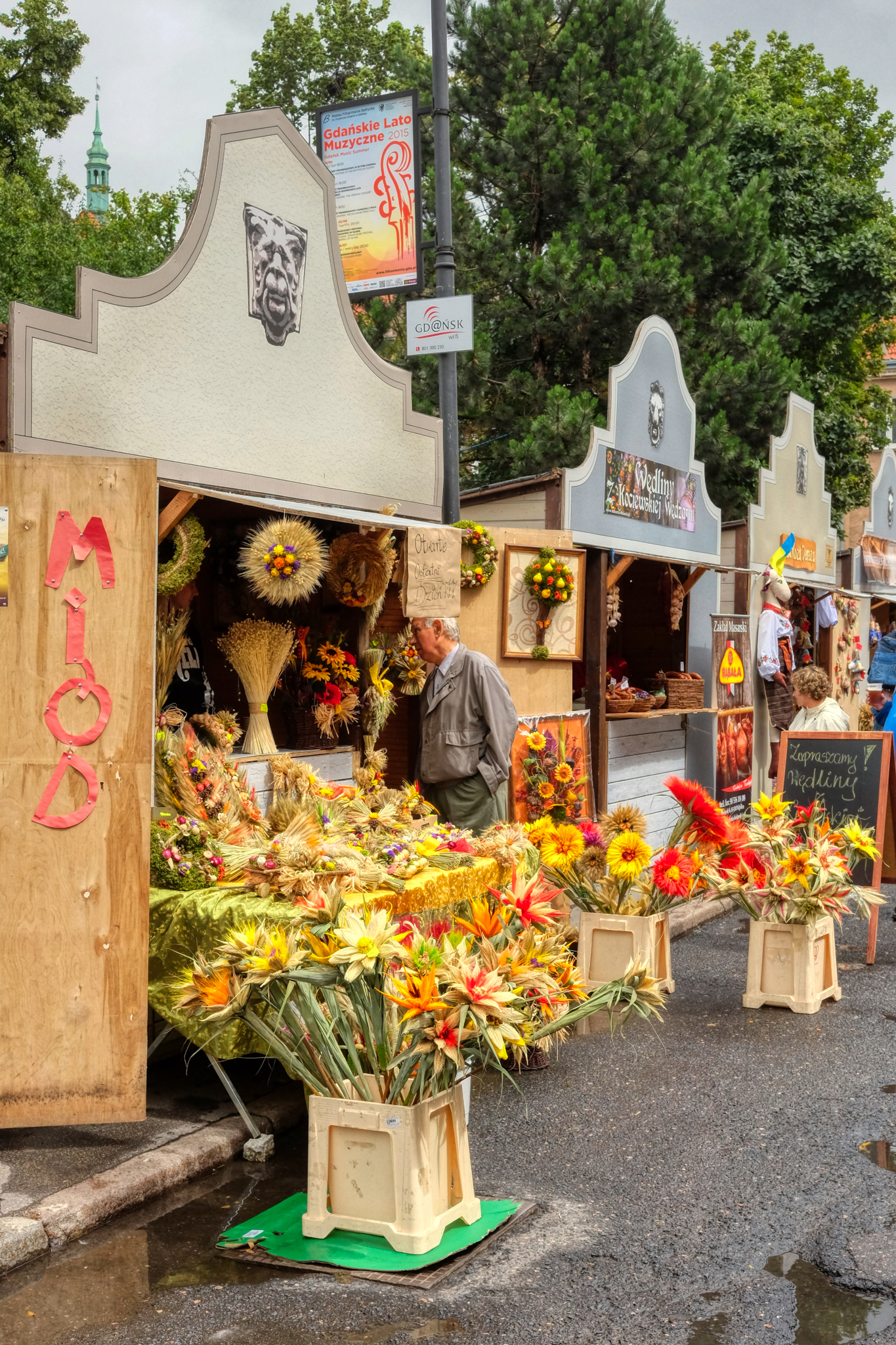 These street stalls were so cute: they mimicked the style of the Gdańsk buildings.
These street stalls were so cute: they mimicked the style of the Gdańsk buildings.
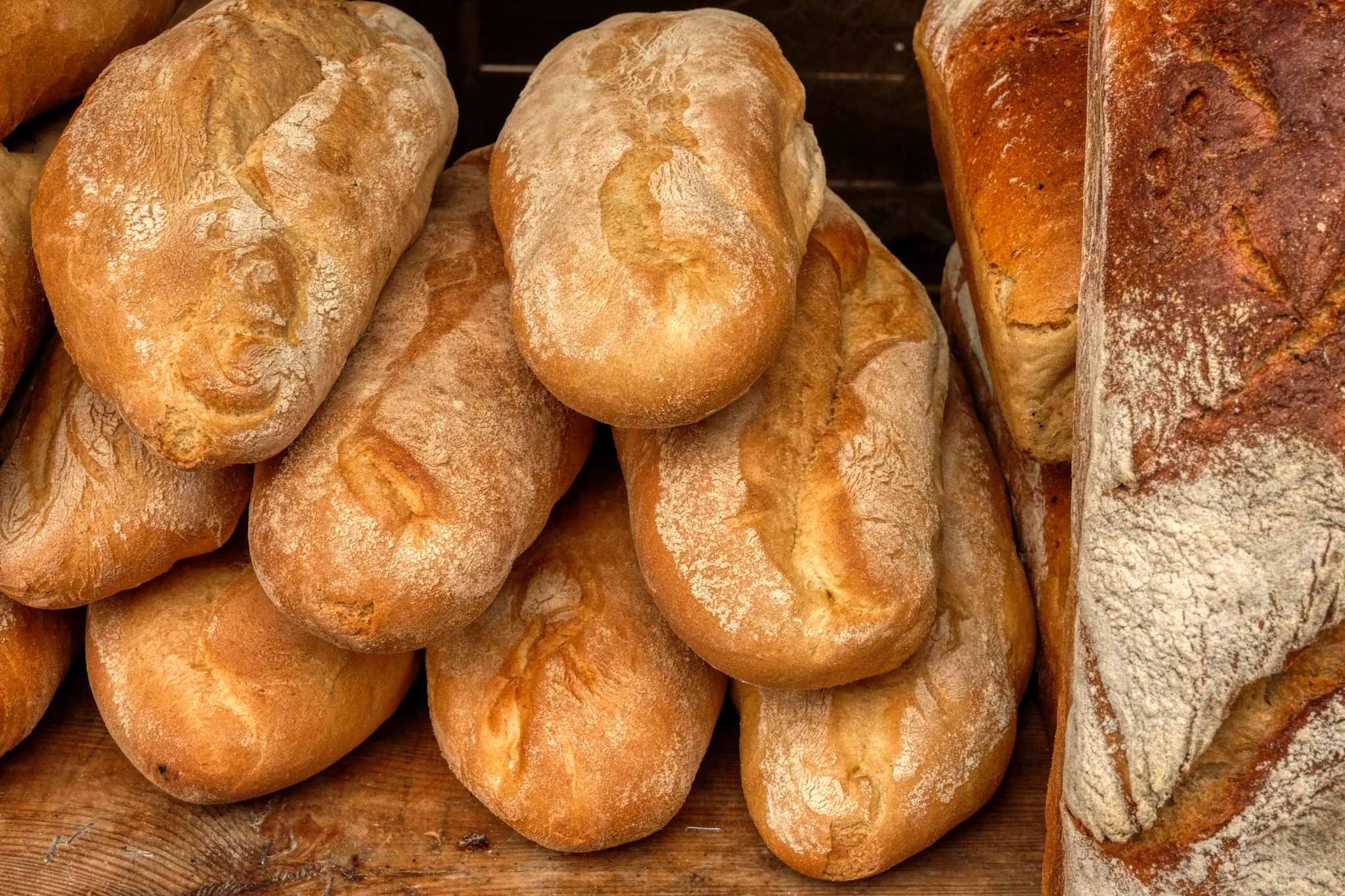 The textiles, hats, and bags were nice . . . but the variety of FOOD at the festival was incredible!!!
The textiles, hats, and bags were nice . . . but the variety of FOOD at the festival was incredible!!!
The breads were fantastic!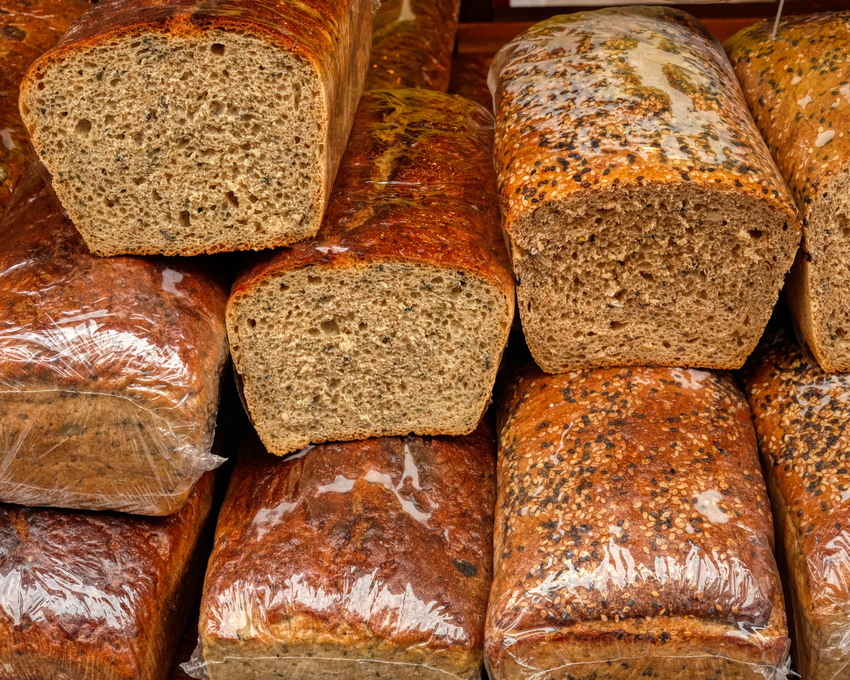
The breads were fantastic!
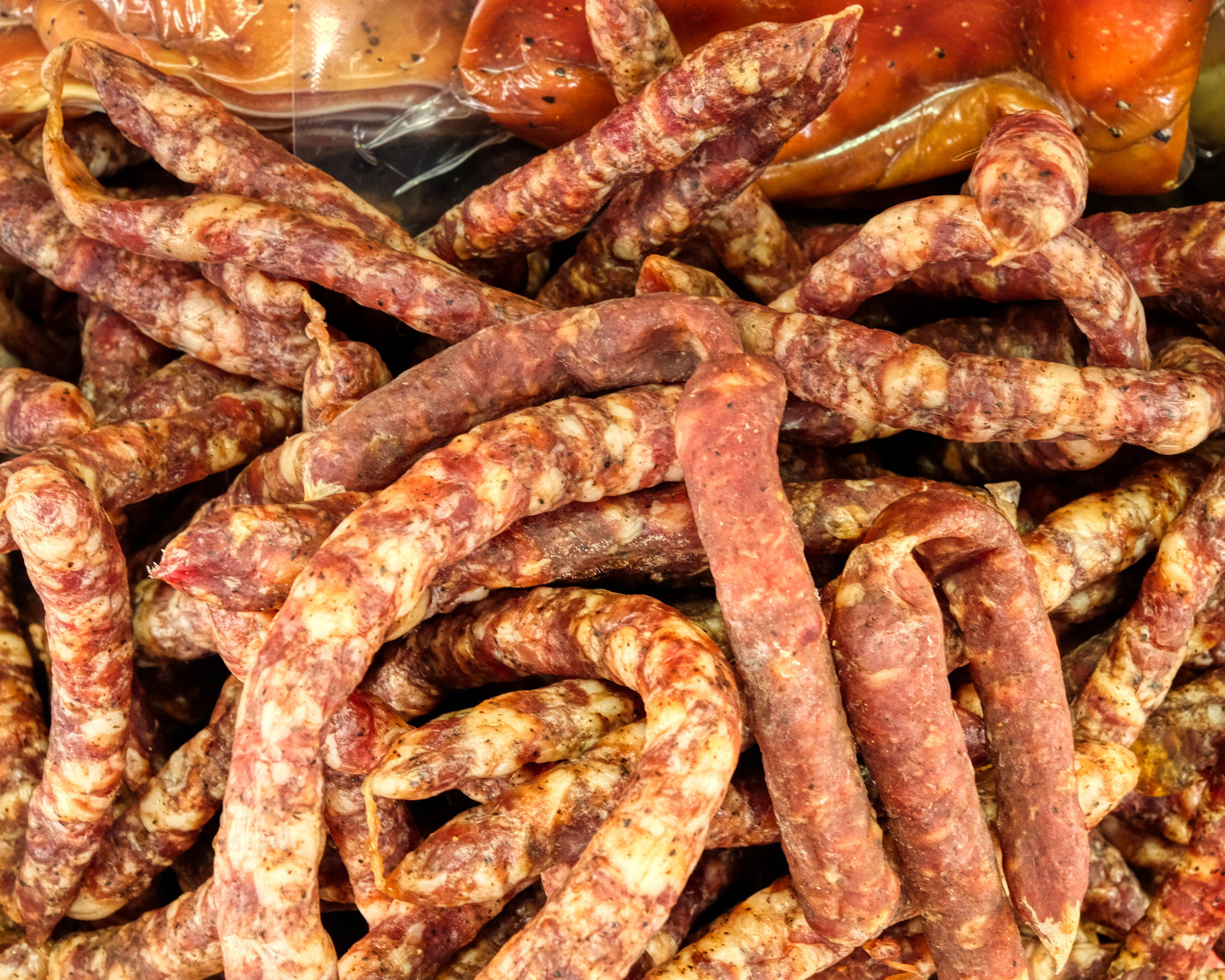 I was in pig heaven for sausage lovers like me!
I was in pig heaven for sausage lovers like me!
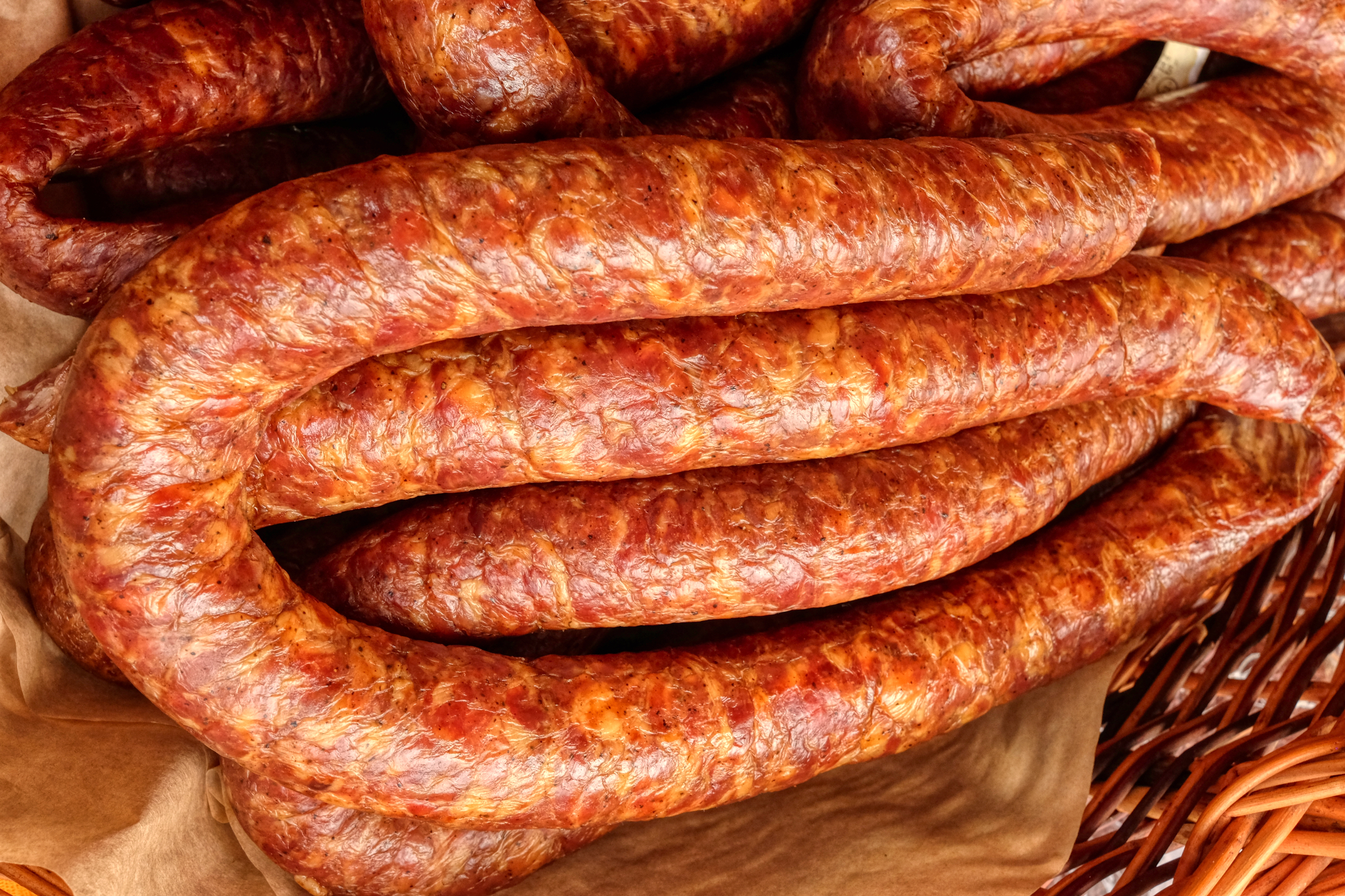 SAUSAGE!!!!
SAUSAGE!!!!
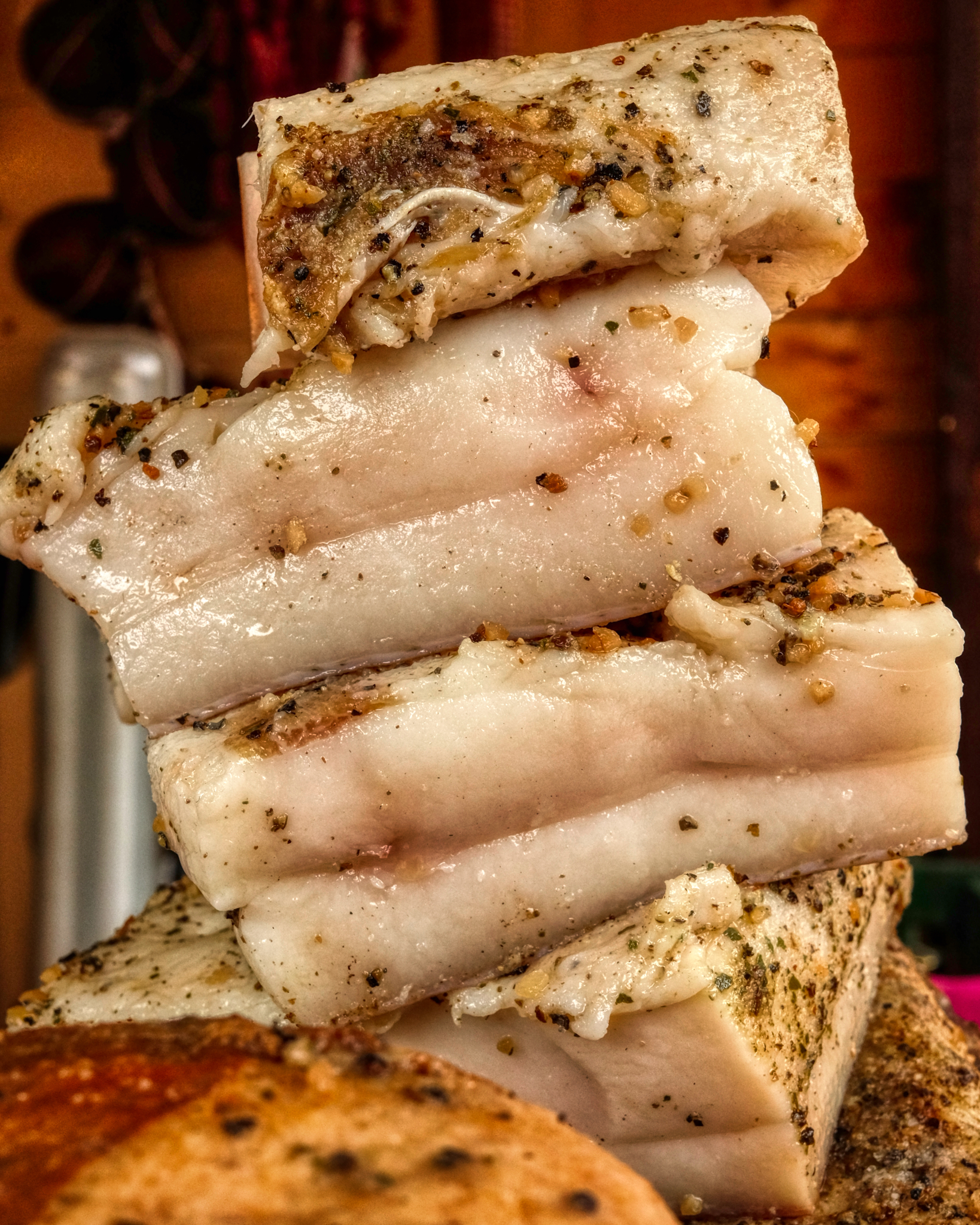 I loved cured and smoked pork fat as a child . . . a few thin slabs on a piece of peasant bread . . . mmmmmm! But I resisted!
I loved cured and smoked pork fat as a child . . . a few thin slabs on a piece of peasant bread . . . mmmmmm! But I resisted!
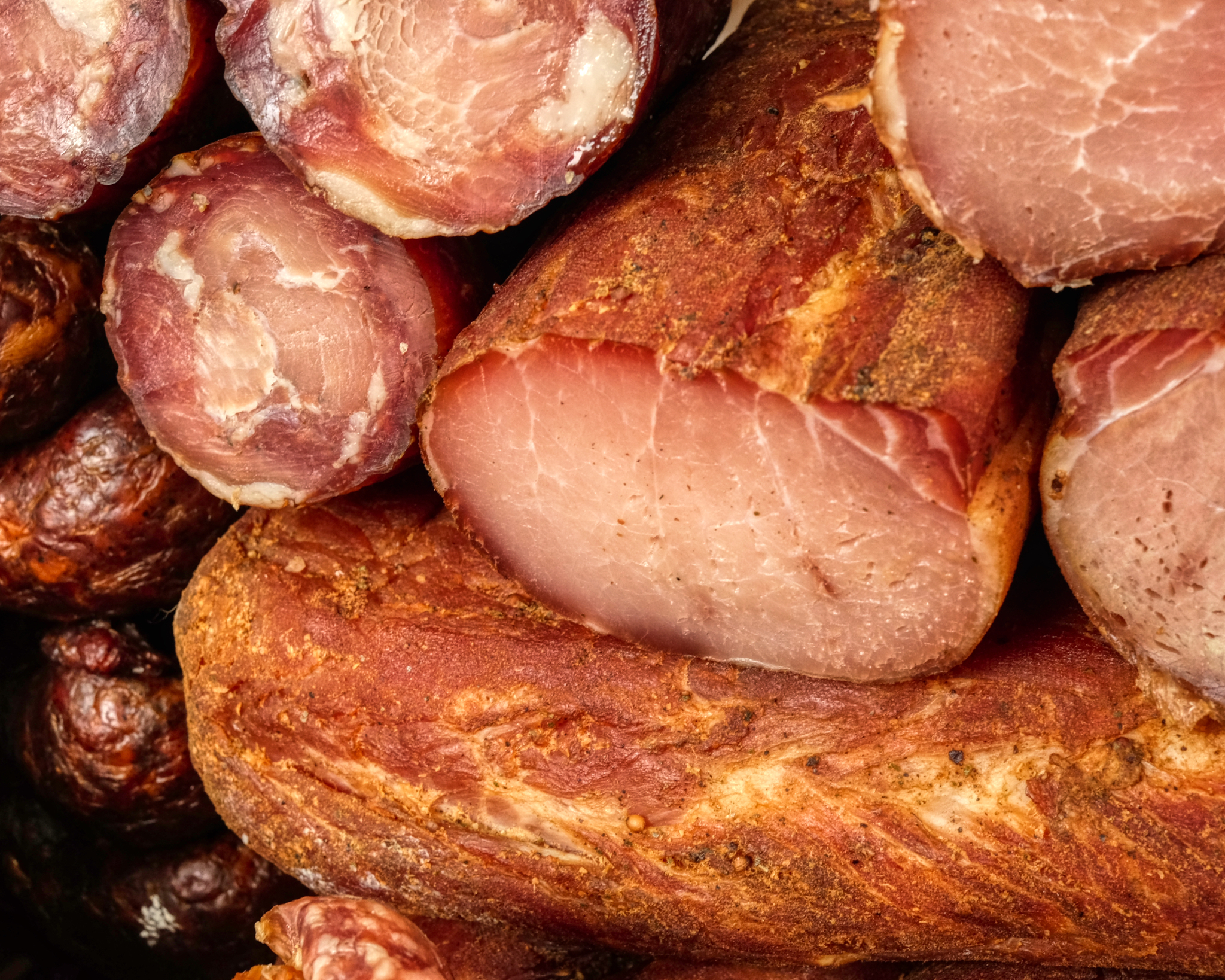 Cures and smoked meats . . . a very Eastern European way of eating . . . and so very tasty!
Cures and smoked meats . . . a very Eastern European way of eating . . . and so very tasty!
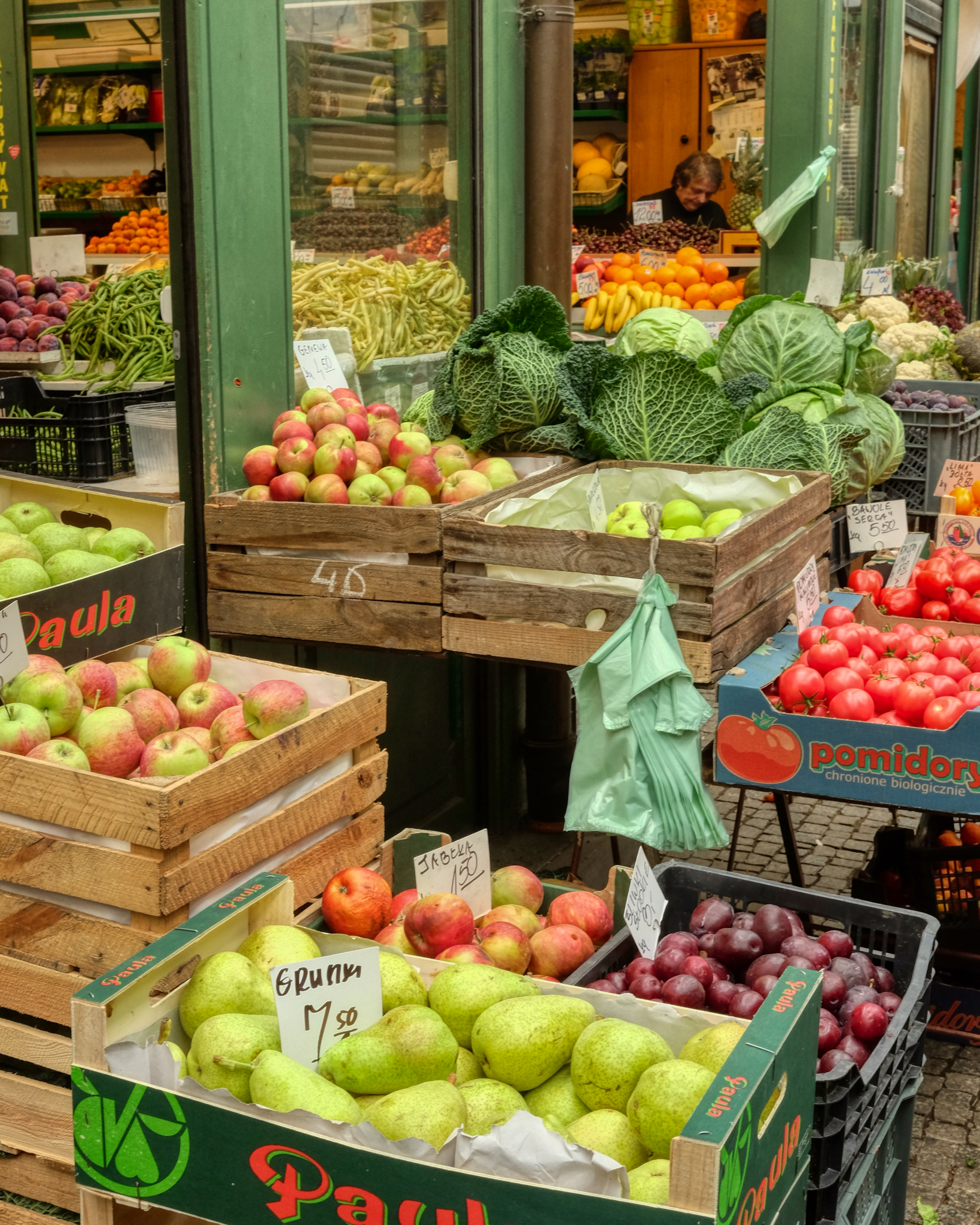 Many of the shops put their fruits and vegetables out on the street.
Many of the shops put their fruits and vegetables out on the street.
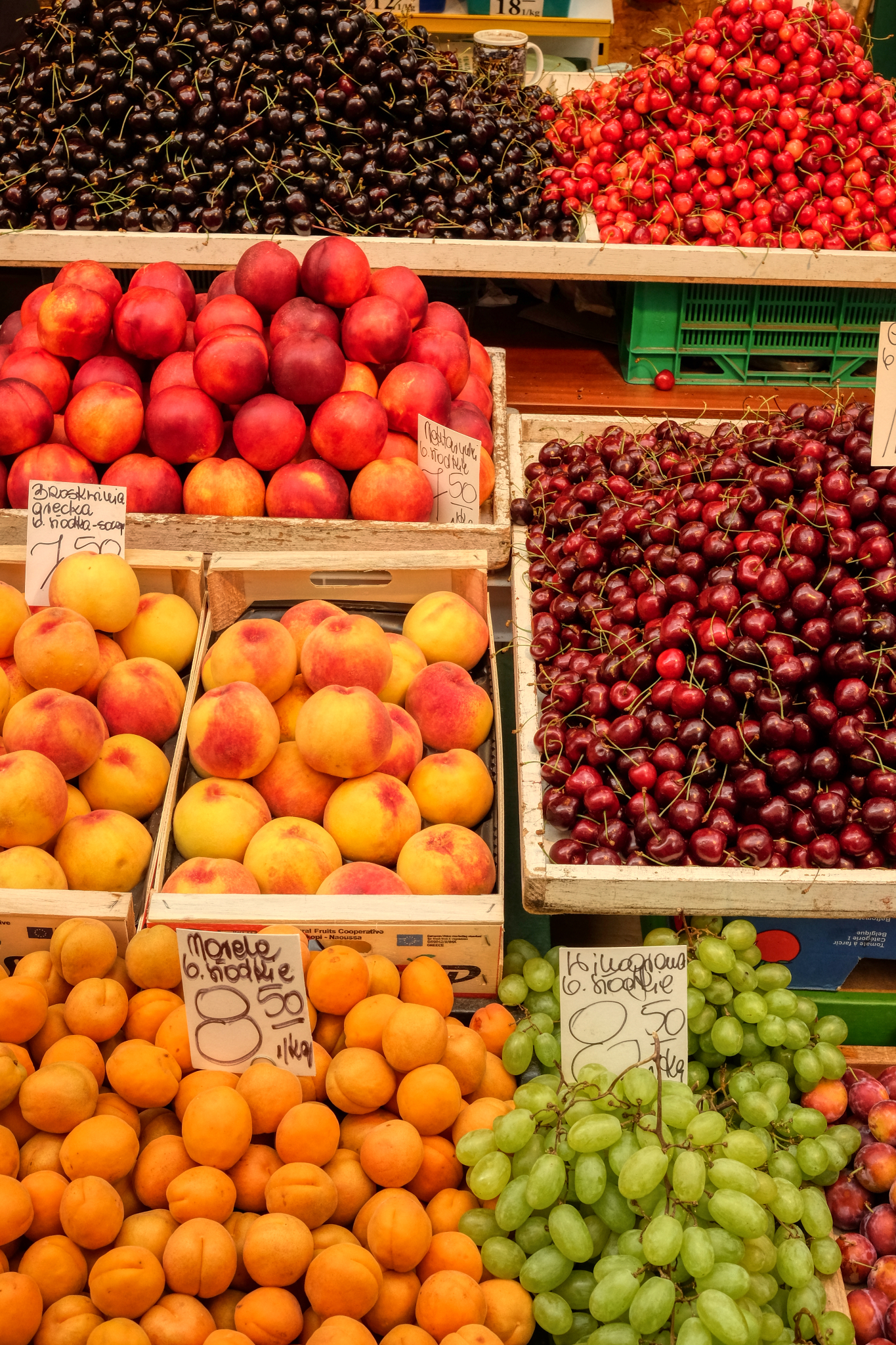 Temperate climate fruits are a real treat for us. These kinds of fruit in Bangkok cost a small fortune, so we went crazy living in Europe for a few years.
Temperate climate fruits are a real treat for us. These kinds of fruit in Bangkok cost a small fortune, so we went crazy living in Europe for a few years.
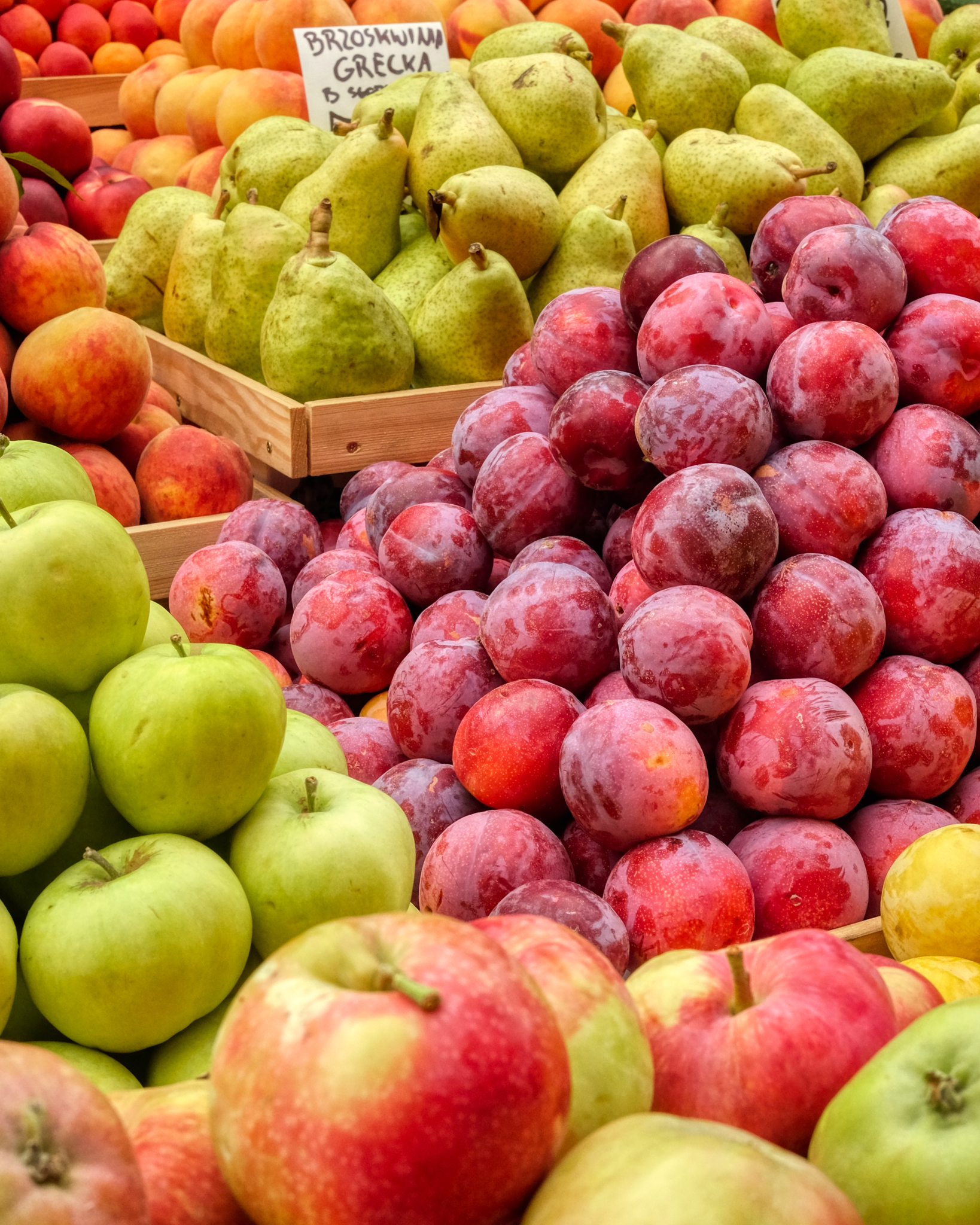 Lovely fruit.
Lovely fruit.
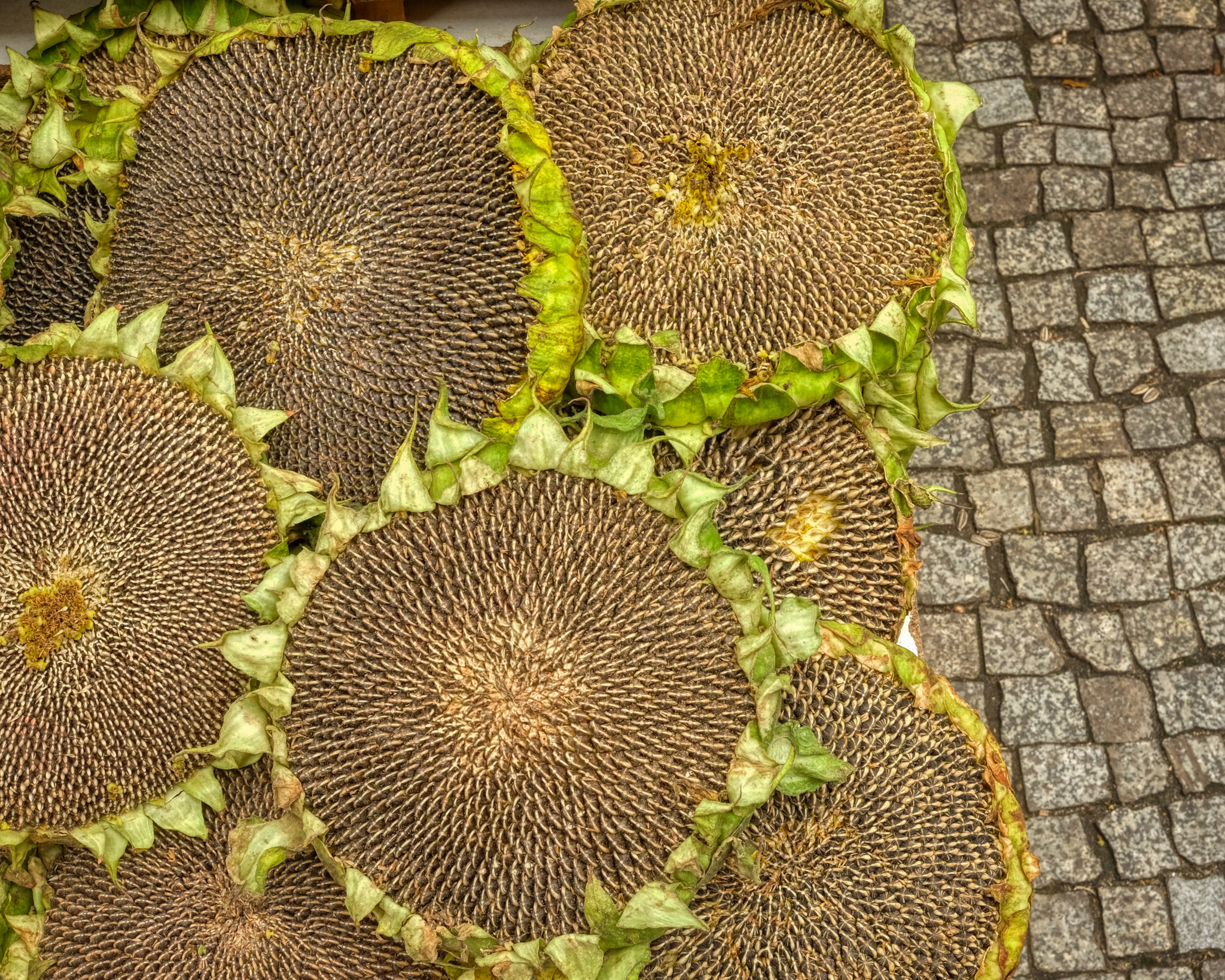 Whole heads of sunflowers . . . that's the way to sell sunflower seeds!
Whole heads of sunflowers . . . that's the way to sell sunflower seeds!
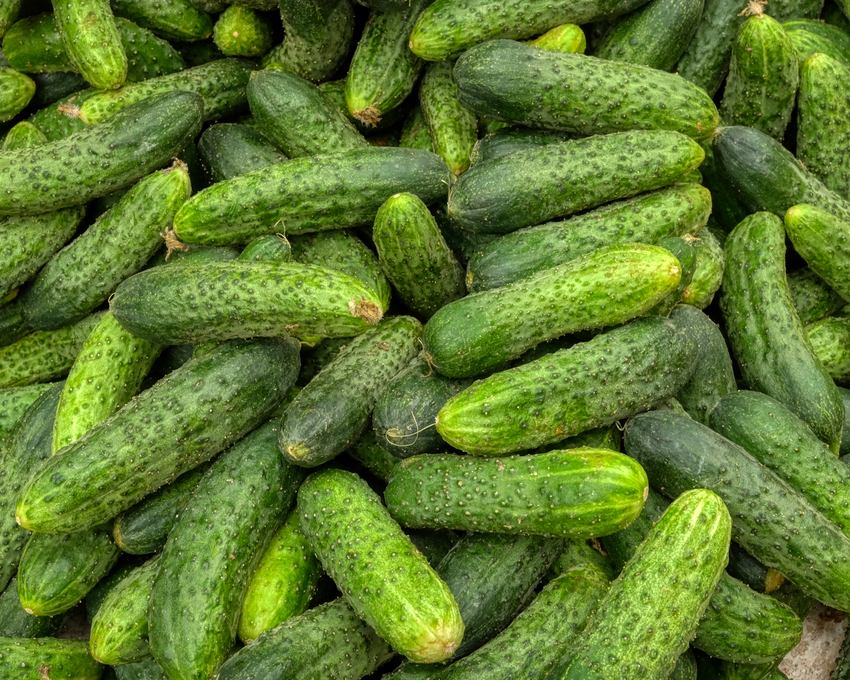 Fresh, crispy cucumbers!
Fresh, crispy cucumbers!
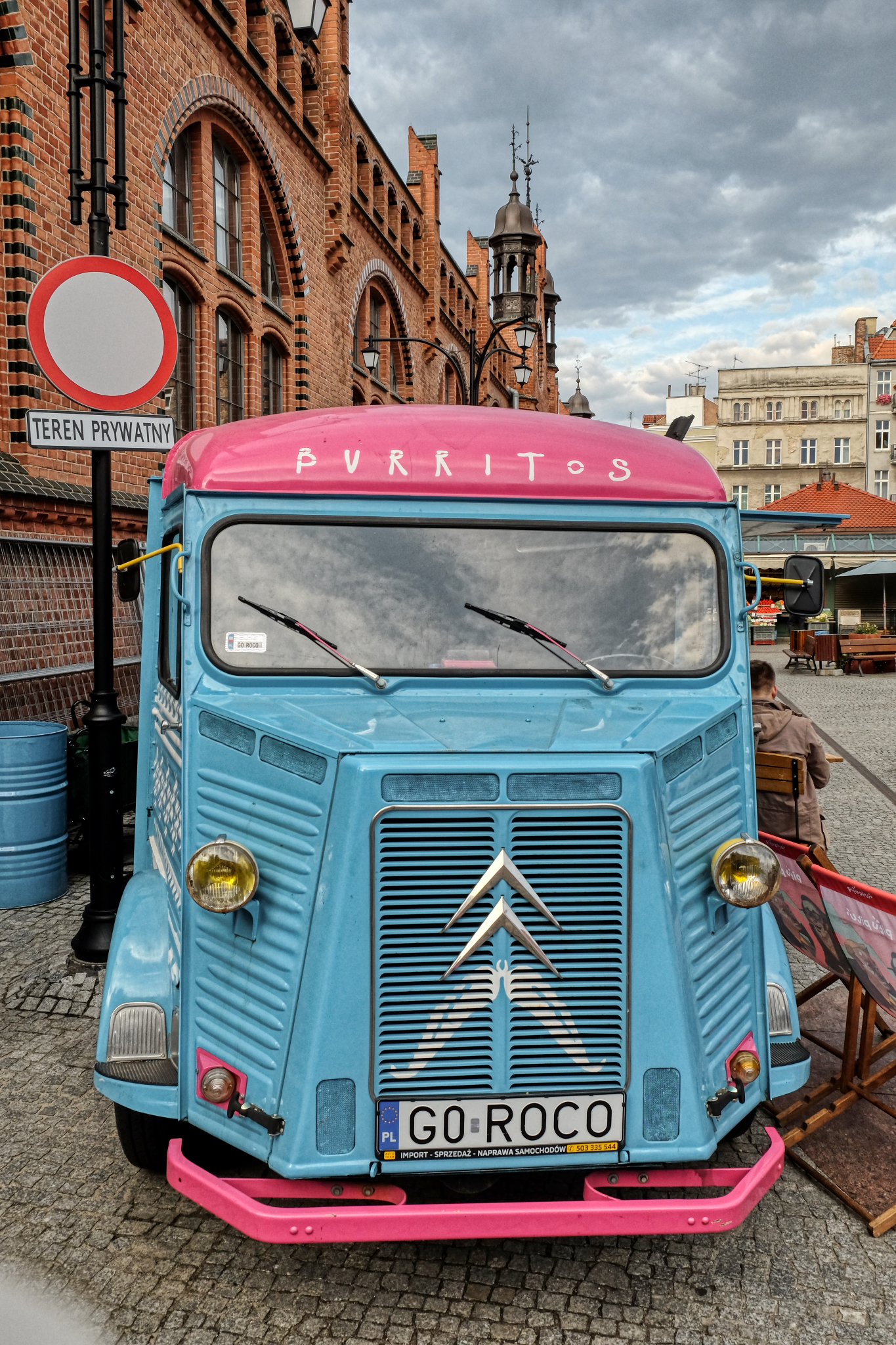 They had every kind of street food at the fair, including this actual Burrito Truck! Amazing! (I didn't buy one, and immediately regreted it!)
They had every kind of street food at the fair, including this actual Burrito Truck! Amazing! (I didn't buy one, and immediately regreted it!)
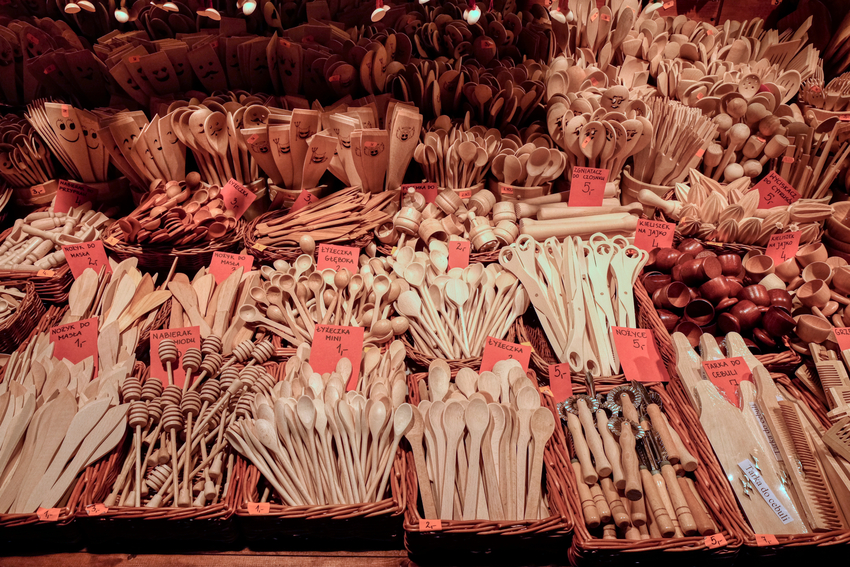 We bought a lot at the wooden spoon stand to take back home to our cottage in Scotland.
We bought a lot at the wooden spoon stand to take back home to our cottage in Scotland.
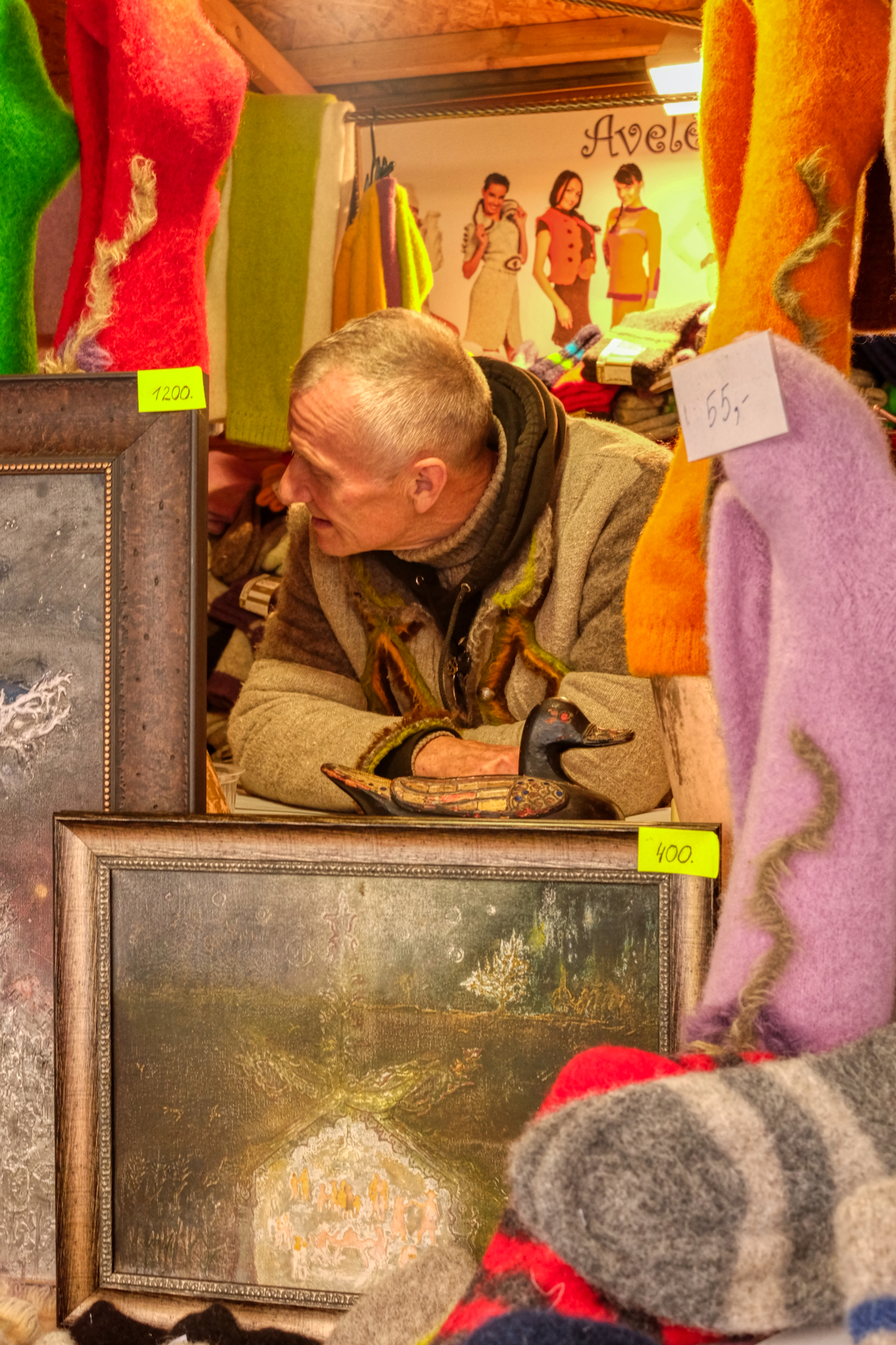 A dealer of art and socks . . .
A dealer of art and socks . . .
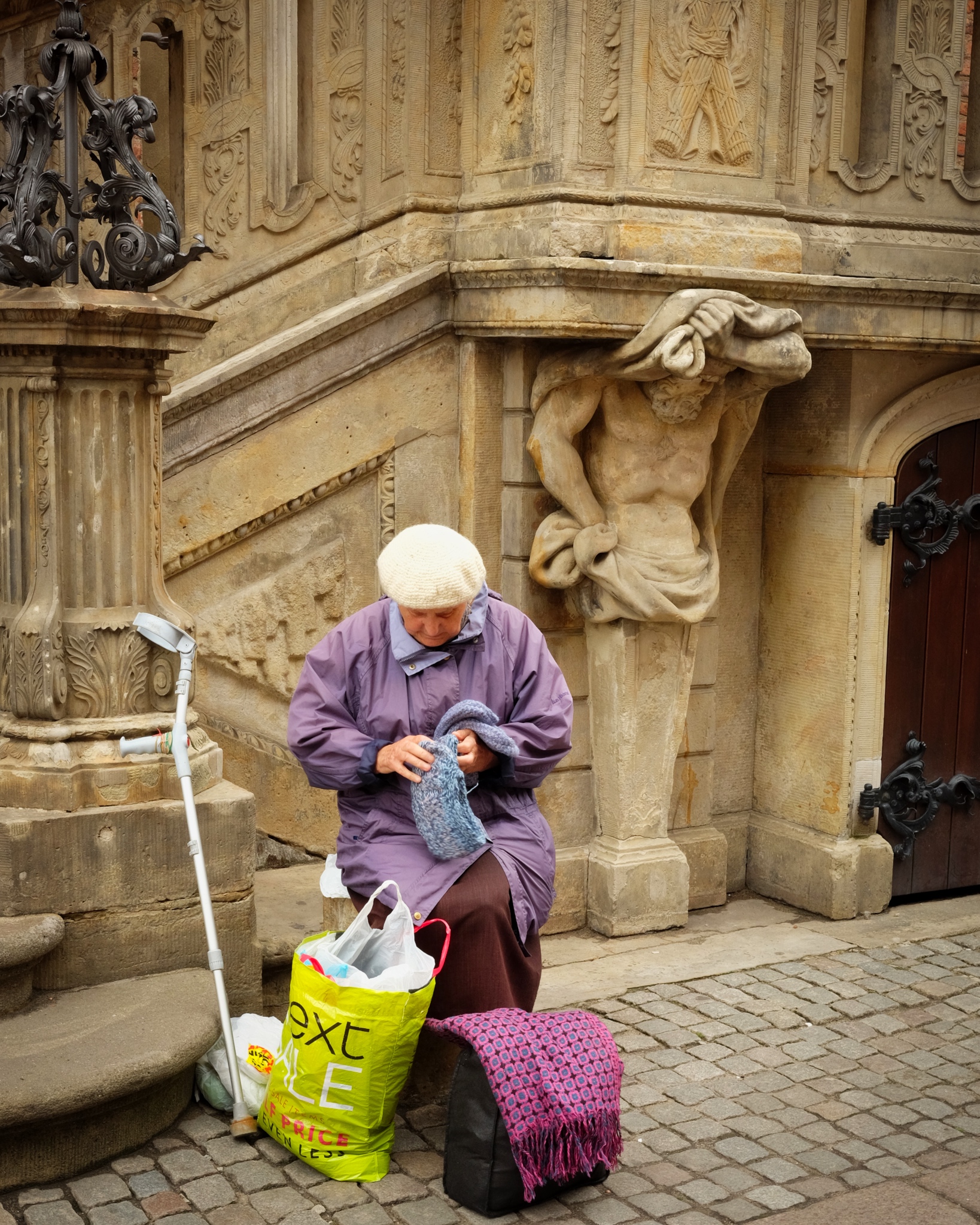 A woman set up her stool and sold her own crocheted items. Sweet.
A woman set up her stool and sold her own crocheted items. Sweet.
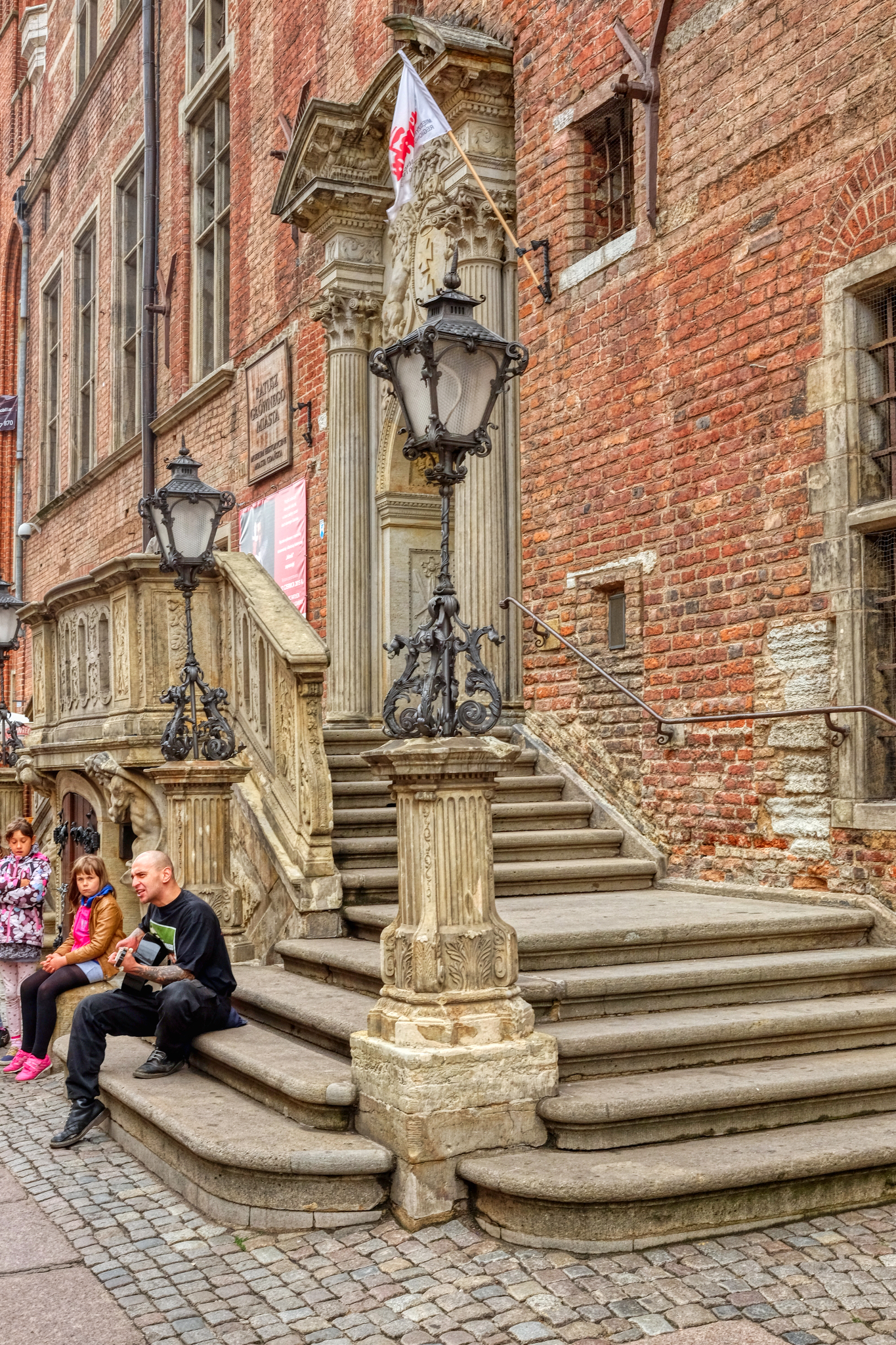 There were many buskers, but this guy was exceptionally good.
There were many buskers, but this guy was exceptionally good.
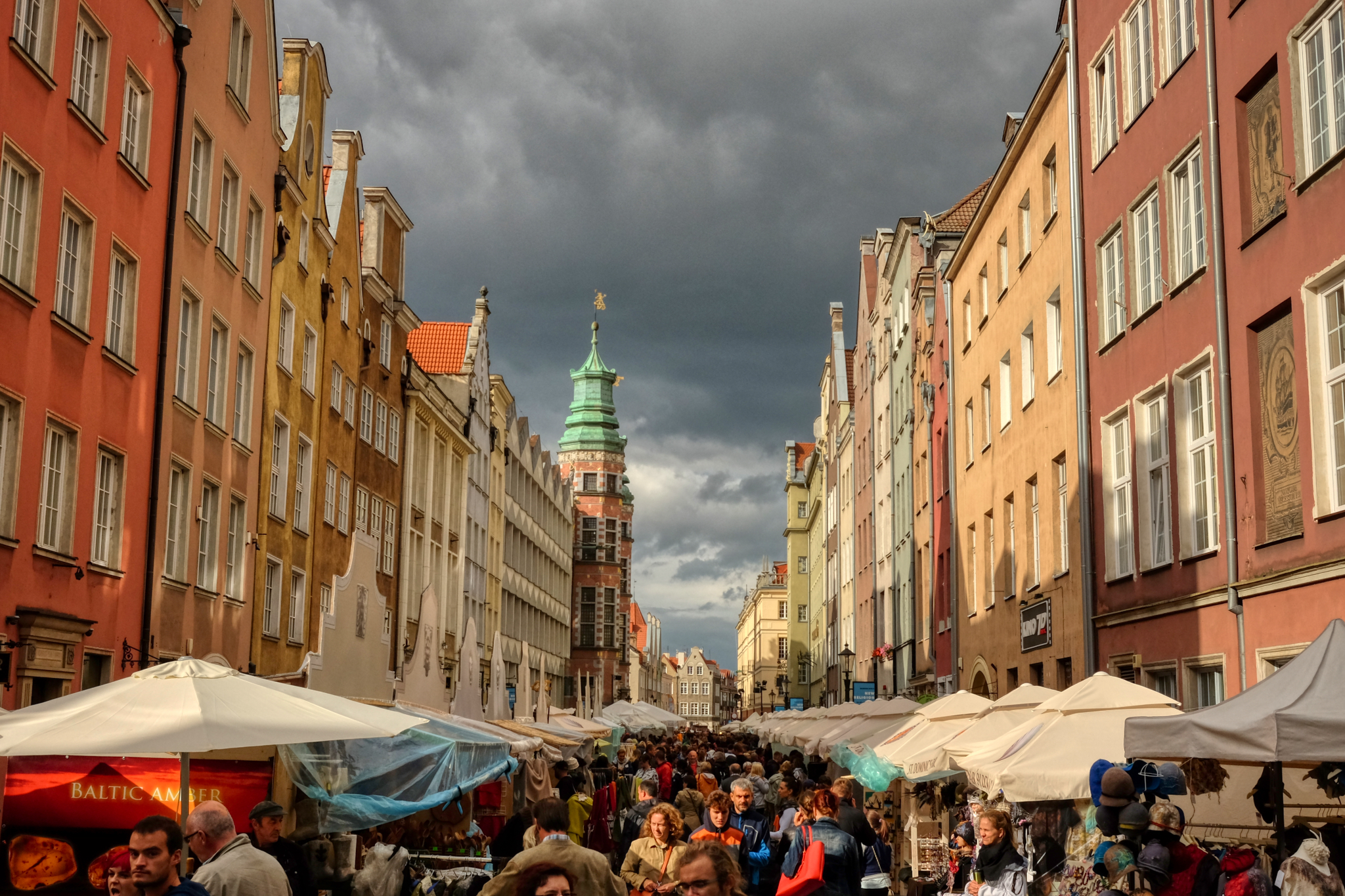 The weather varied from bright sunshine to dark clouds and sudden bursts of rain.
The weather varied from bright sunshine to dark clouds and sudden bursts of rain.
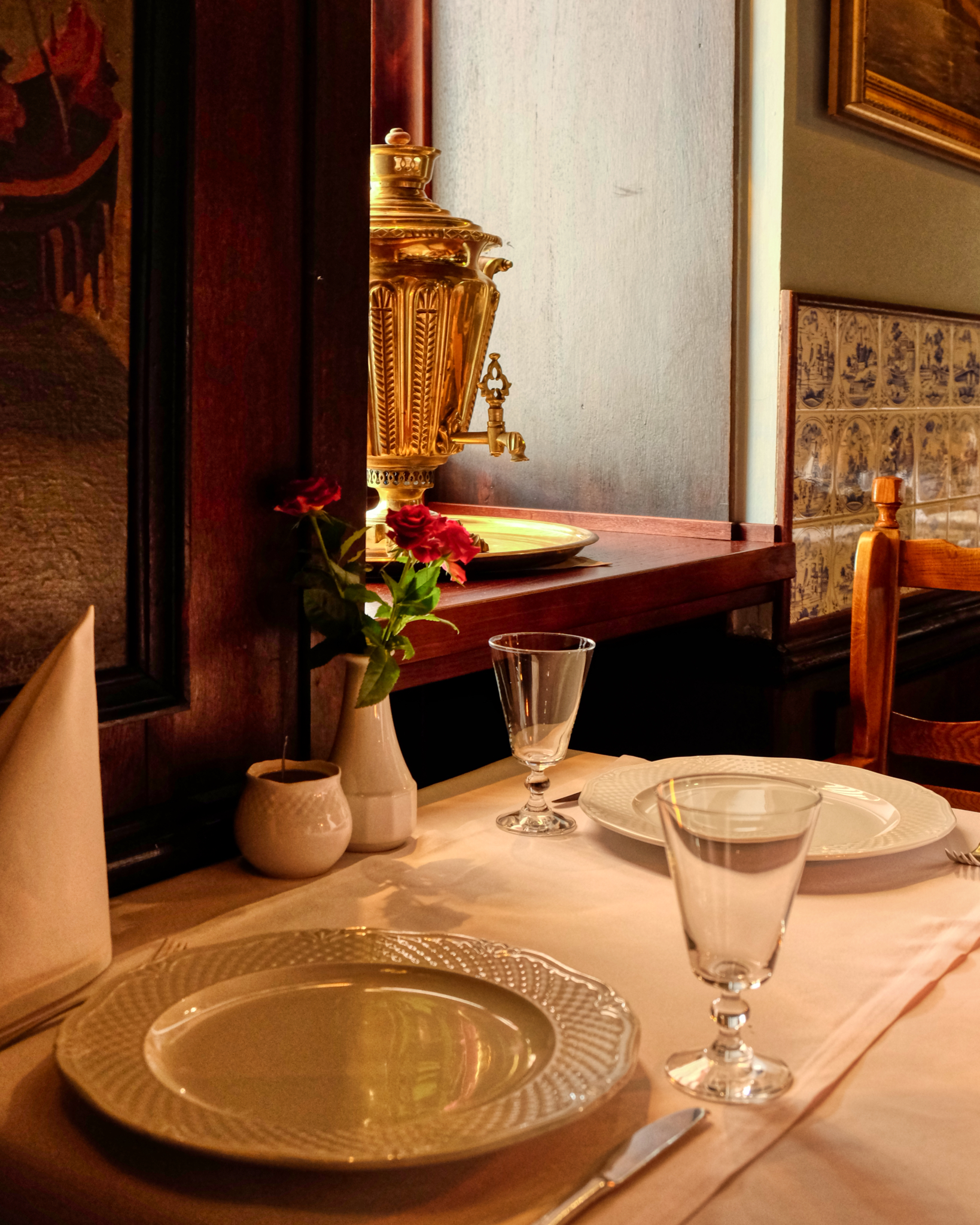 We found thee perfect Old Europe restaurant . . .
We found thee perfect Old Europe restaurant . . .
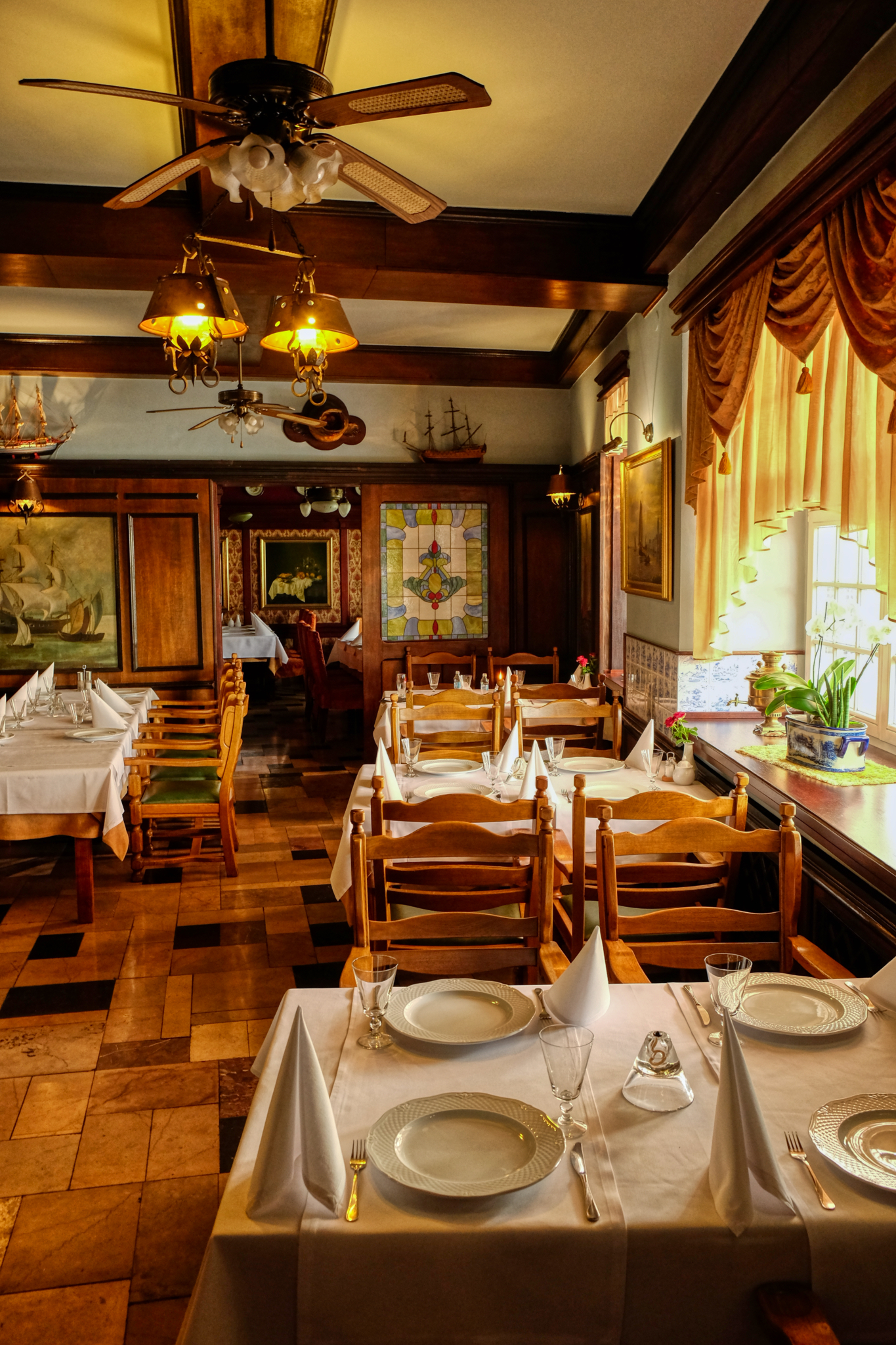 We were hungry for lunch and found this charming old restaurant.
We were hungry for lunch and found this charming old restaurant.
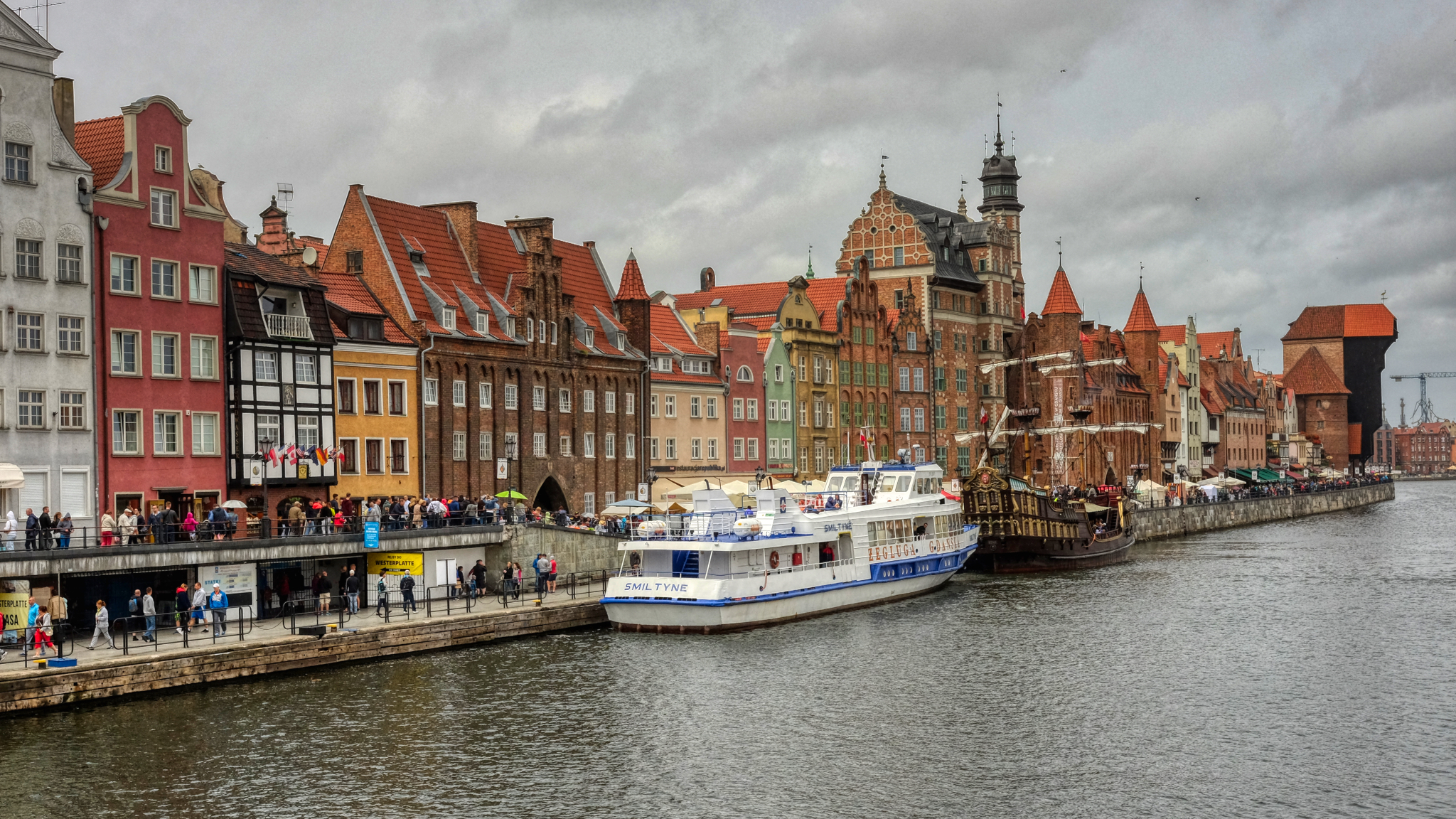 Down along the river quay. A fine medieval dock crane on the far left.
Down along the river quay. A fine medieval dock crane on the far left.
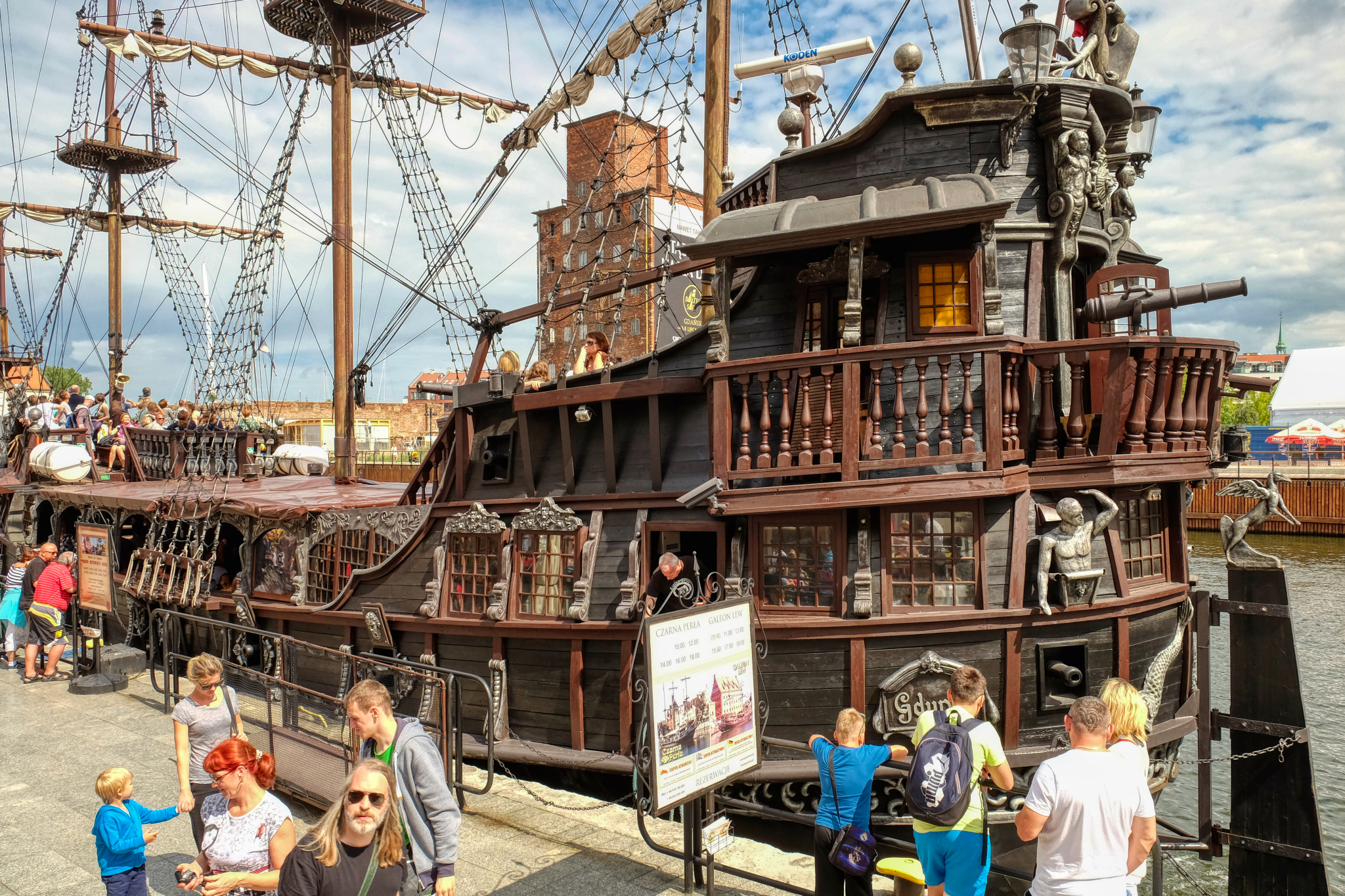 River cruise ship for the tourists . . .
River cruise ship for the tourists . . .
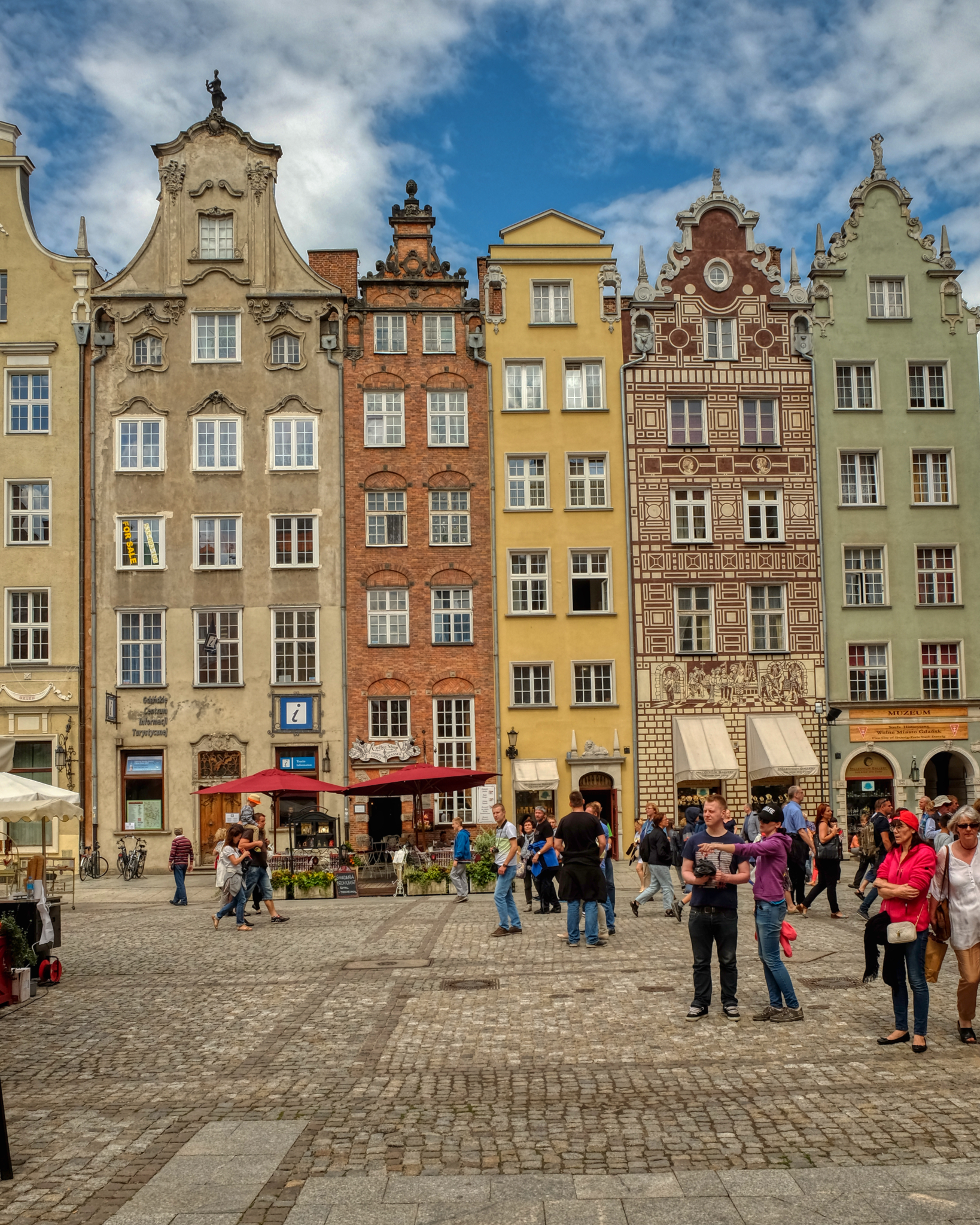 For me, the lure of Gdańsk was the marvelous array of fascinating architecture.
For me, the lure of Gdańsk was the marvelous array of fascinating architecture.
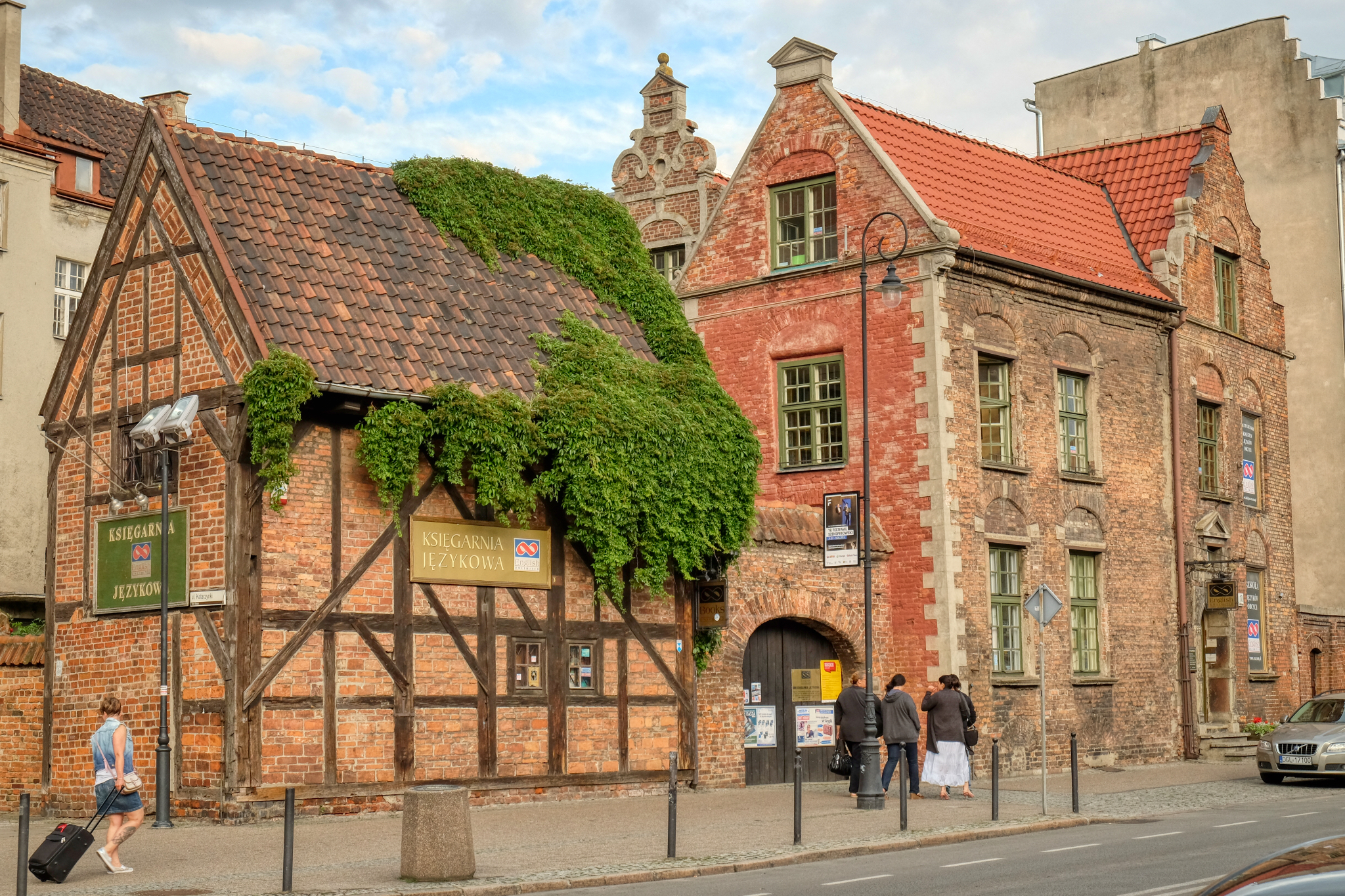 A few of the old buildings survived the carpet bombing.
A few of the old buildings survived the carpet bombing.
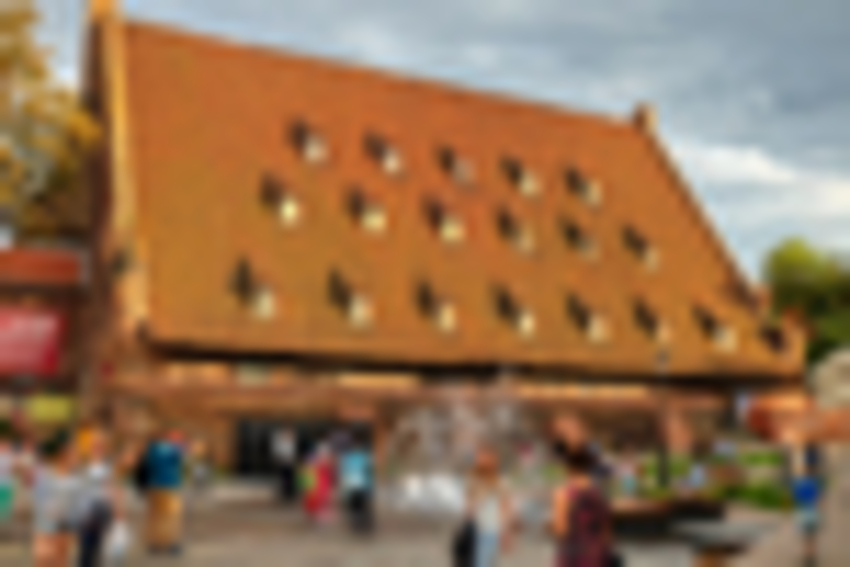 Such an odd building . . . all roof and dormers . . .
Such an odd building . . . all roof and dormers . . .
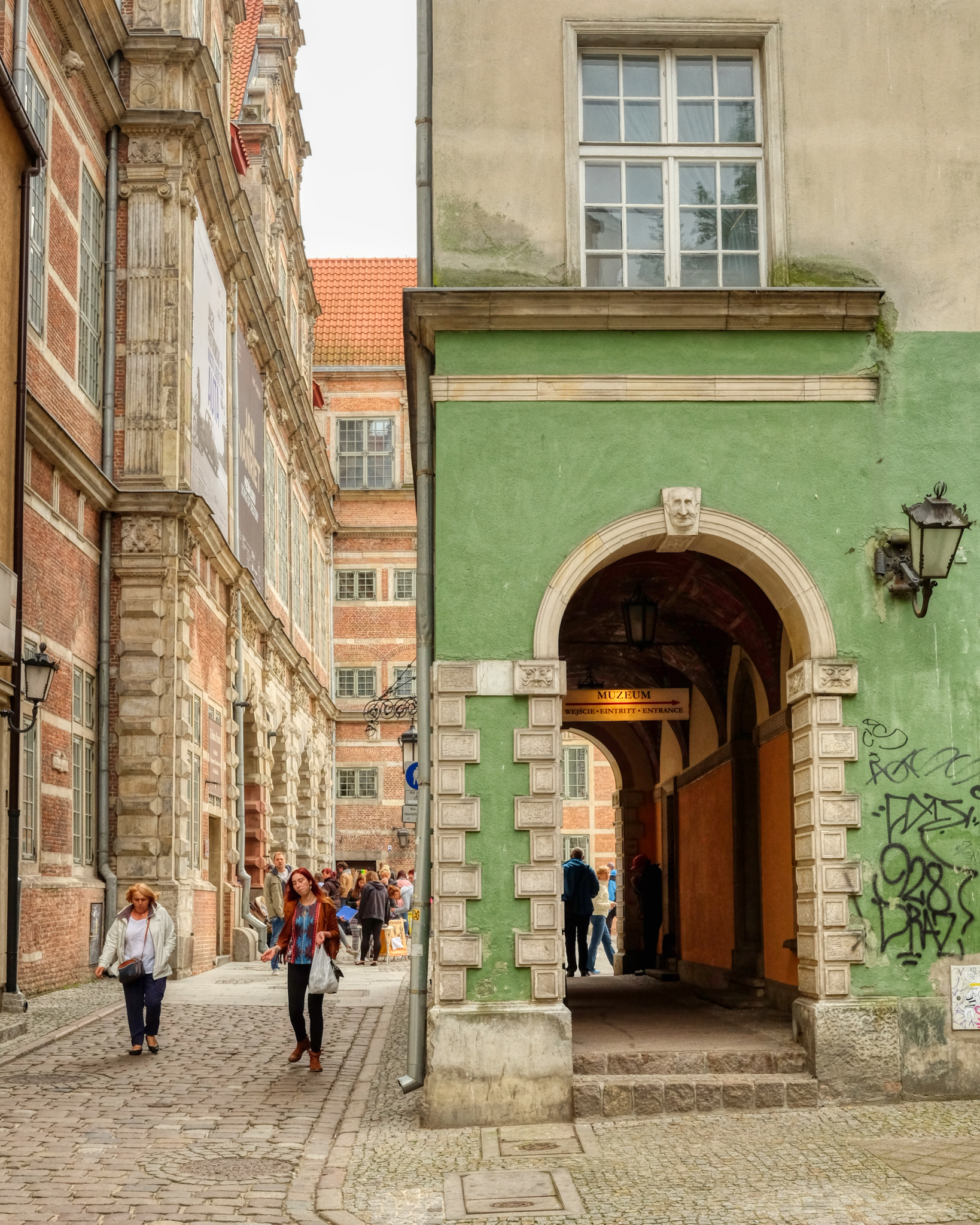 Narrow alleys, cobbles streets, ancient buildings . . . the charms of old Europe.
Narrow alleys, cobbles streets, ancient buildings . . . the charms of old Europe.
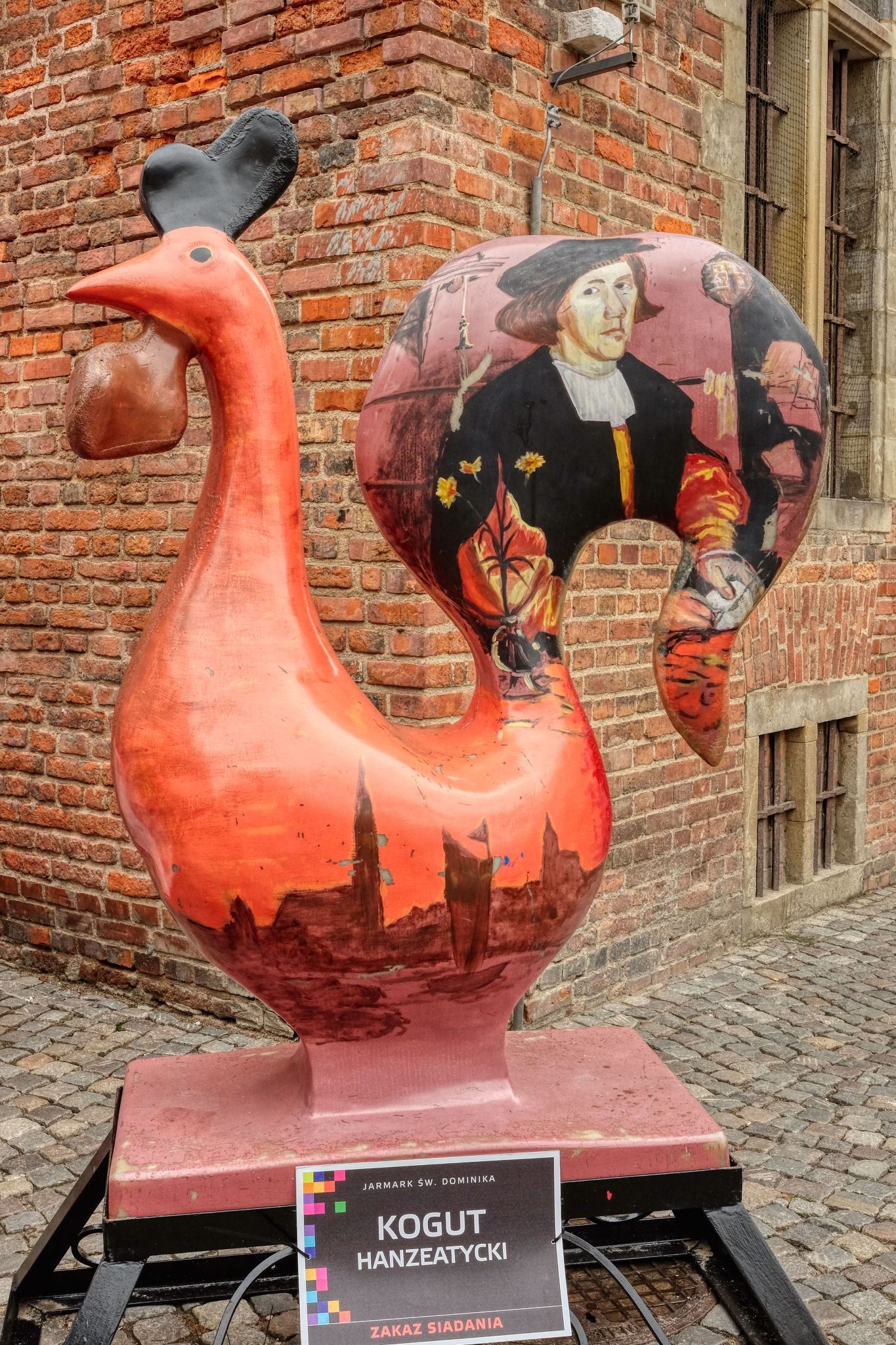 Here and there . . . public art . . .
Here and there . . . public art . . .
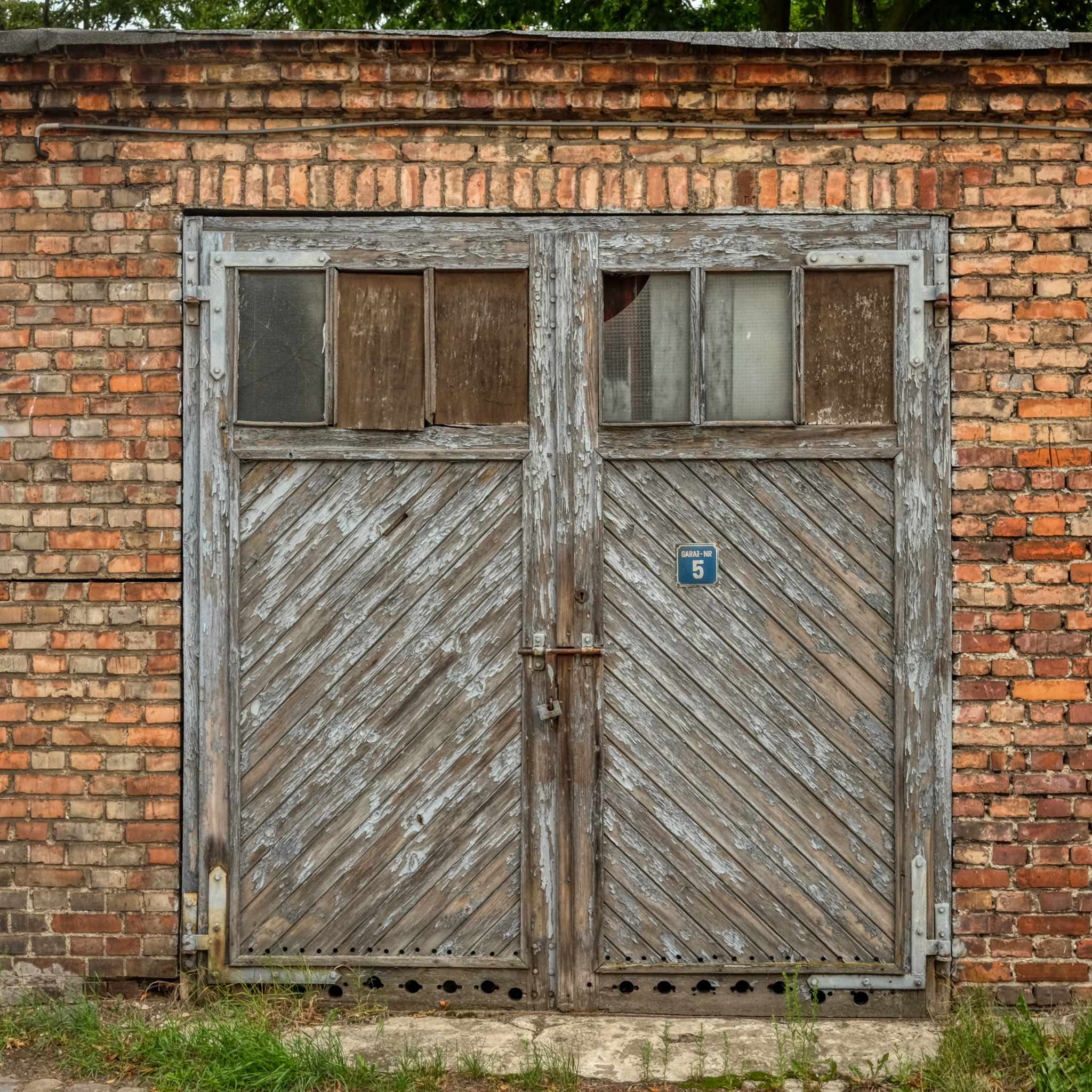 My love of old doors, walls and windows was satisfied in a big way in Gdańsk!
My love of old doors, walls and windows was satisfied in a big way in Gdańsk!
 I was told by a shopkeeper that some of these grand old doors and their stone casings were pulled from the rubble after the bombings and restored and reused. Marvelous.
I was told by a shopkeeper that some of these grand old doors and their stone casings were pulled from the rubble after the bombings and restored and reused. Marvelous.
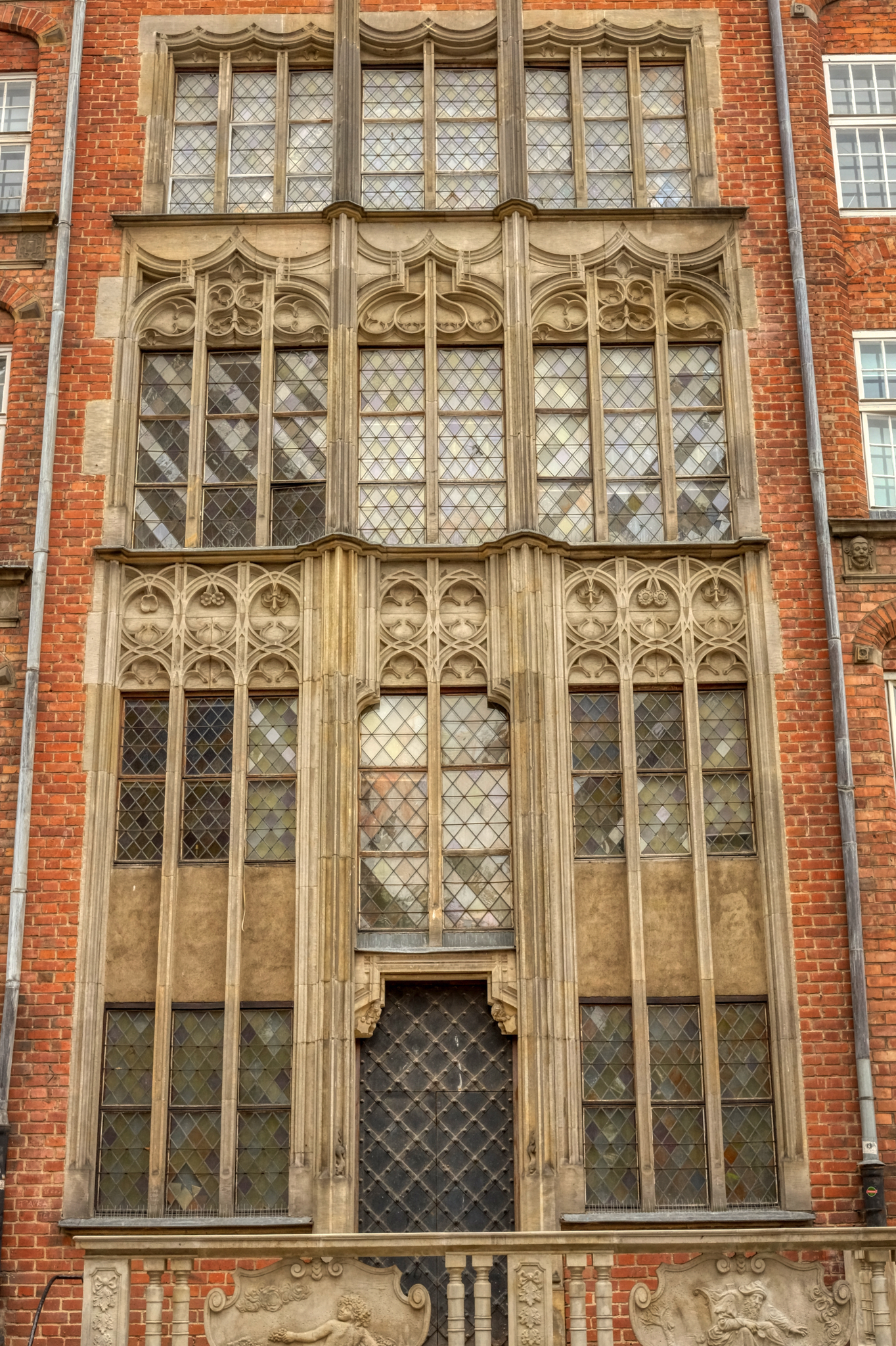 I marveled at these windows . . . exquisite!
I marveled at these windows . . . exquisite!
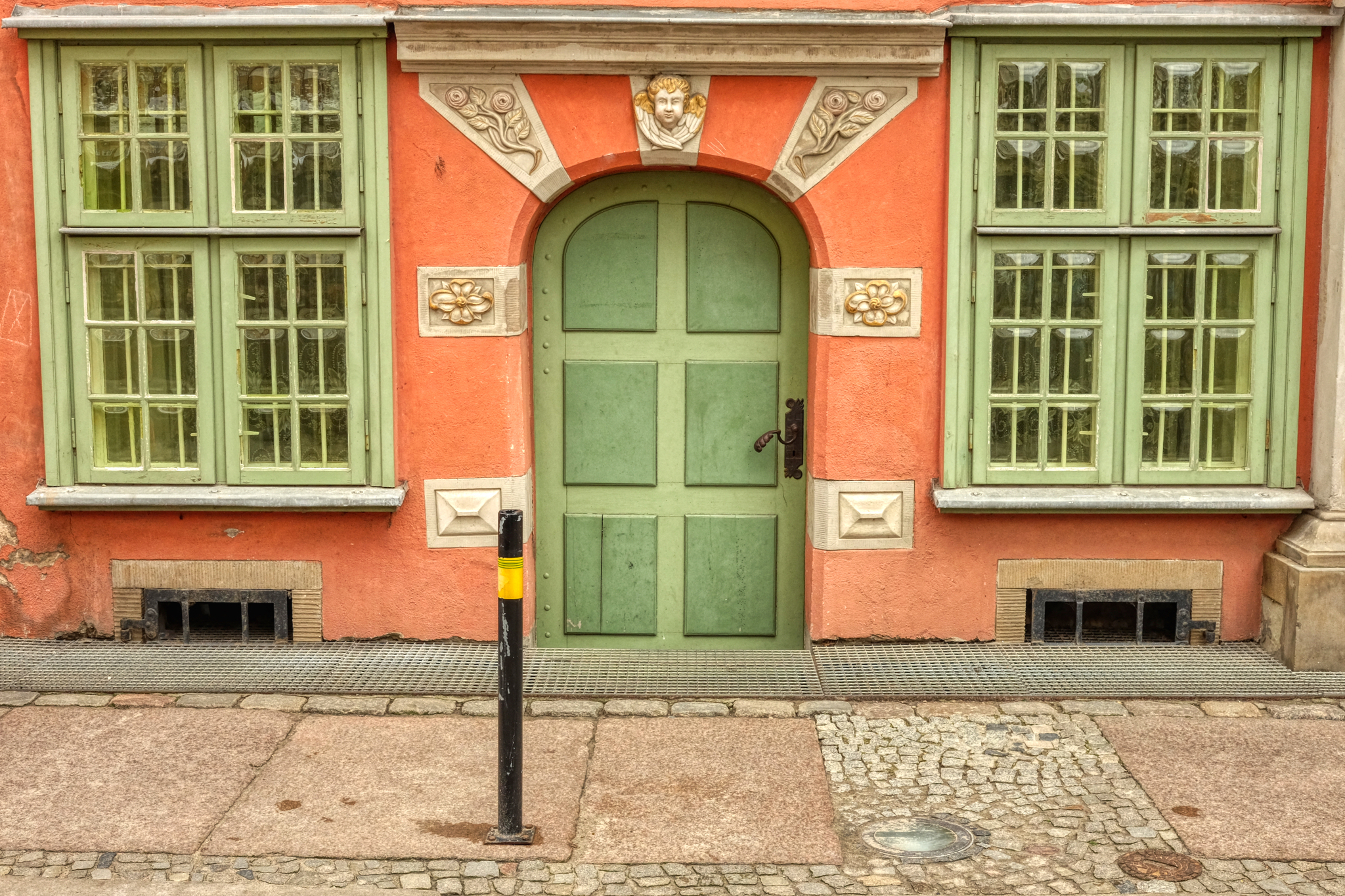 Such lovely symmetry, color, shape . . .
Such lovely symmetry, color, shape . . .
 A gate from the time of horse drawn carriages . . .
A gate from the time of horse drawn carriages . . .
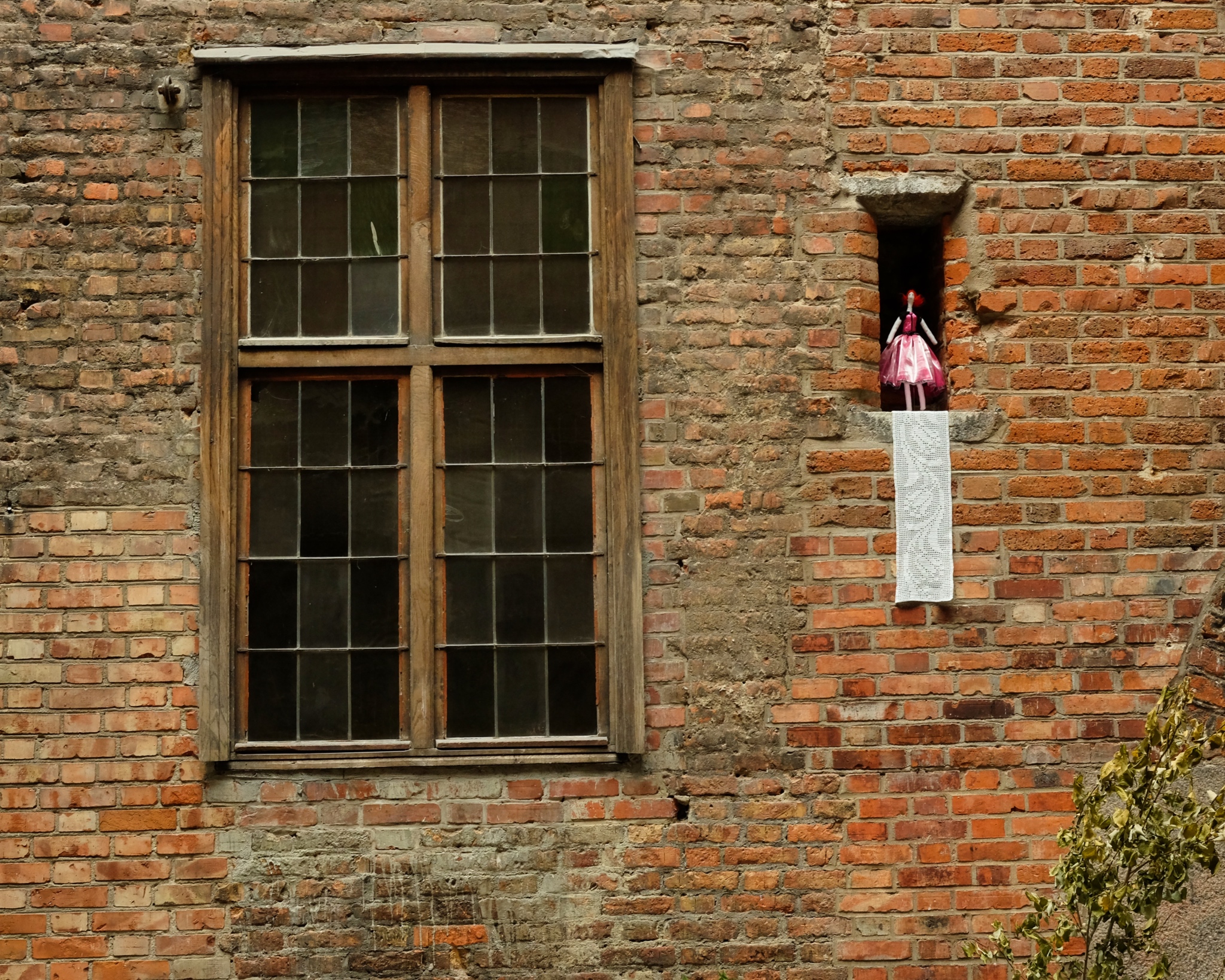 I loved the whimsical display.
I loved the whimsical display.
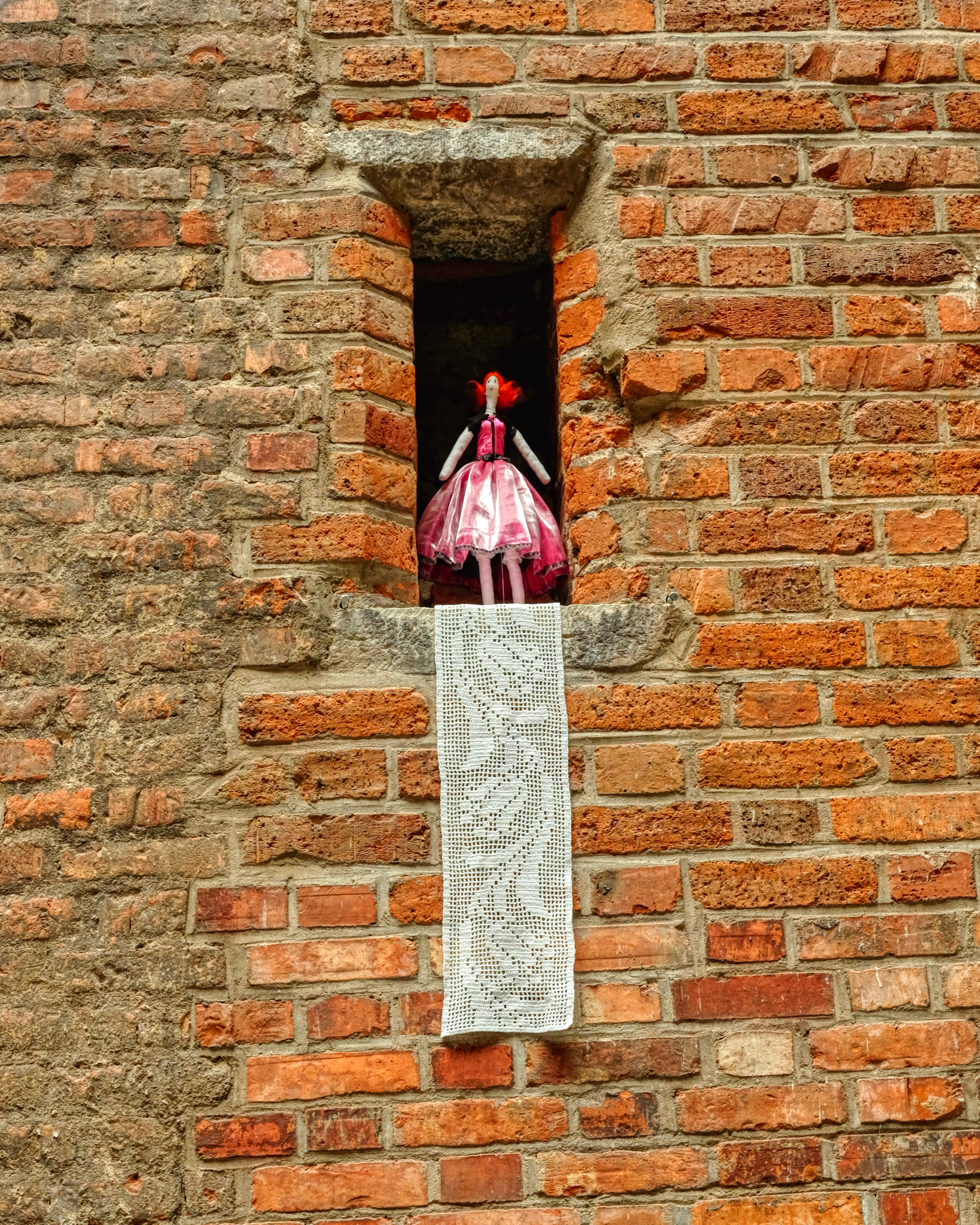 So sweet.
So sweet.
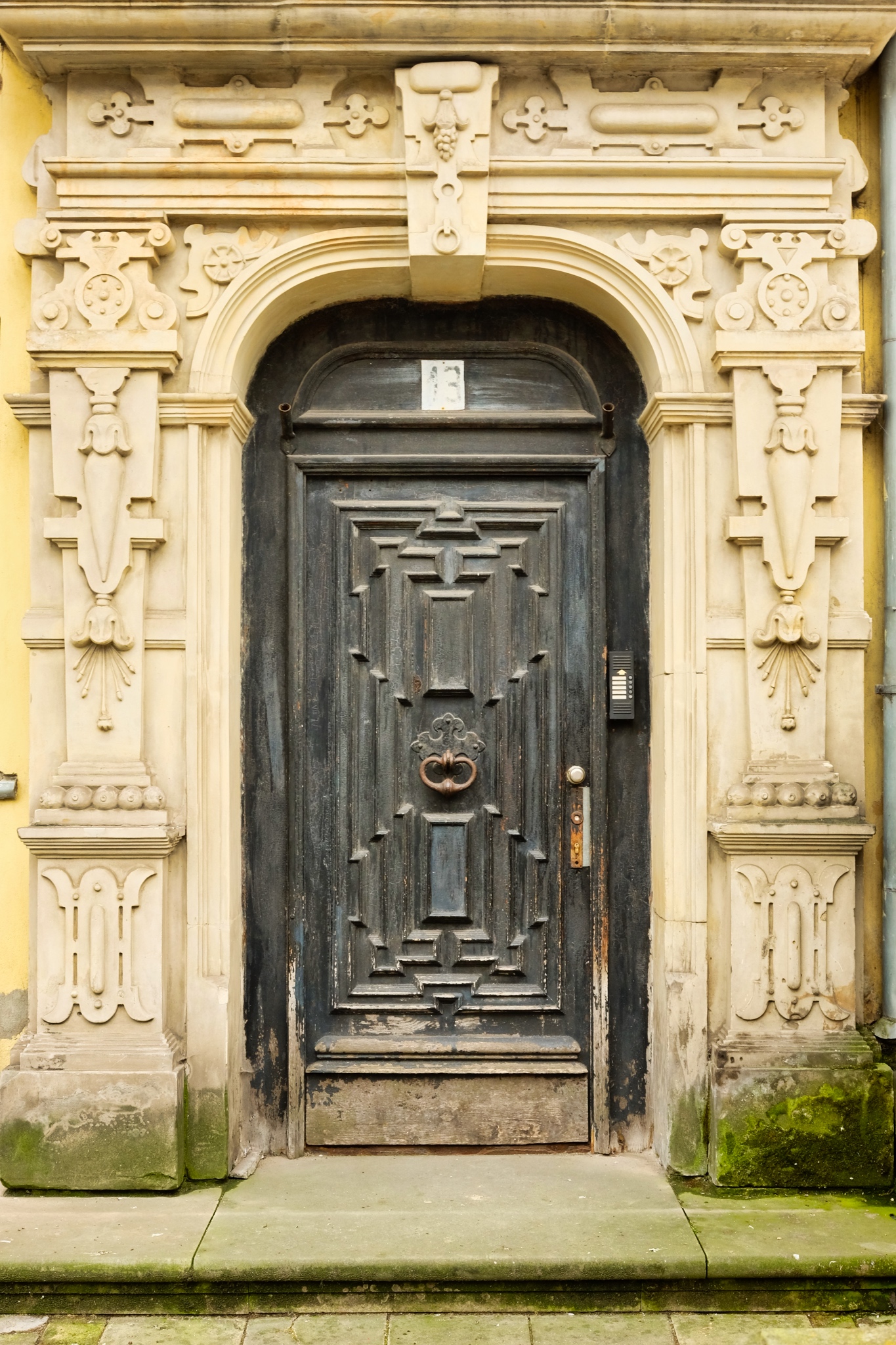 A weathered door . . . and . . .
A weathered door . . . and . . .
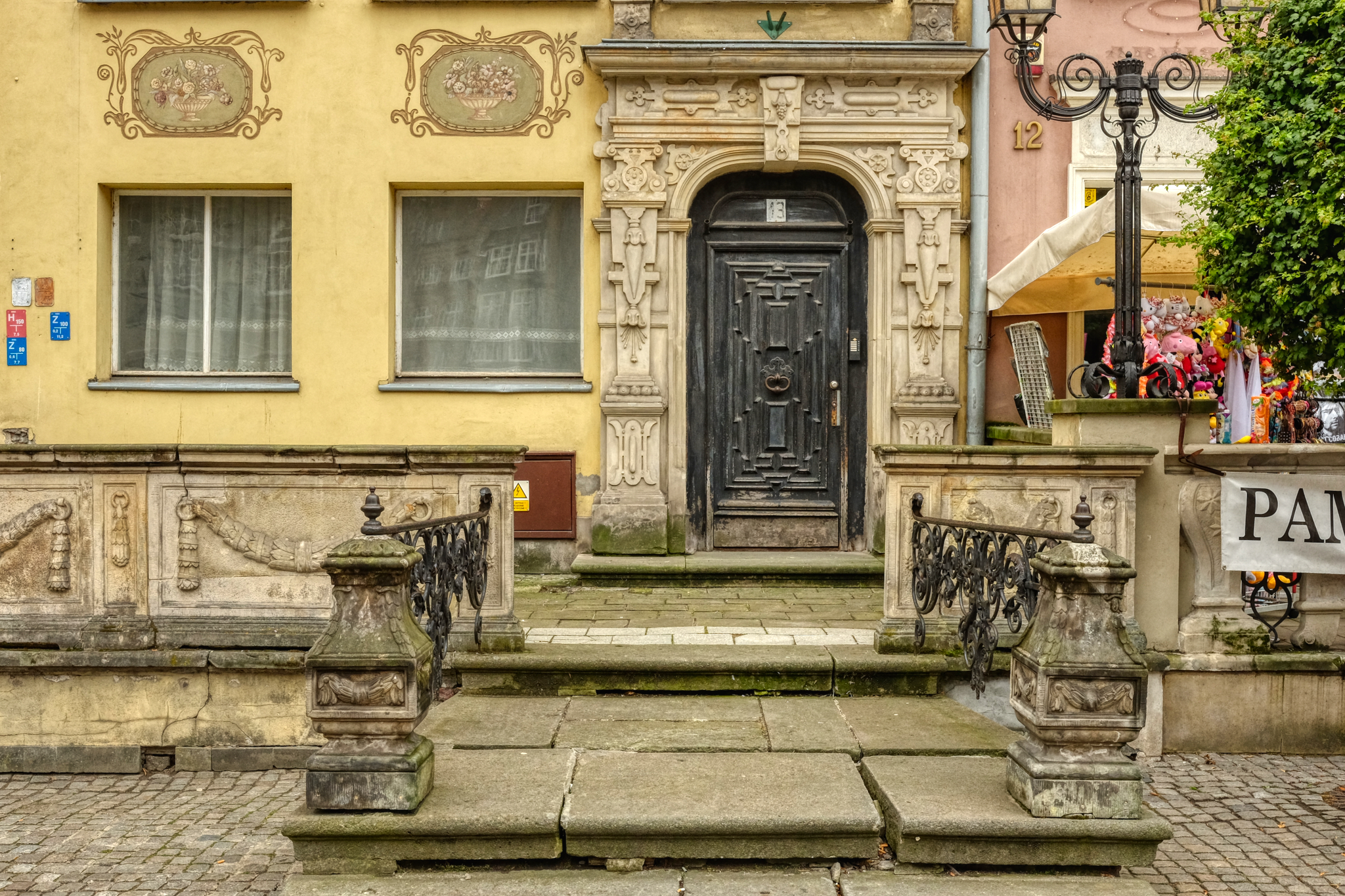 . . . and its context.
. . . and its context.
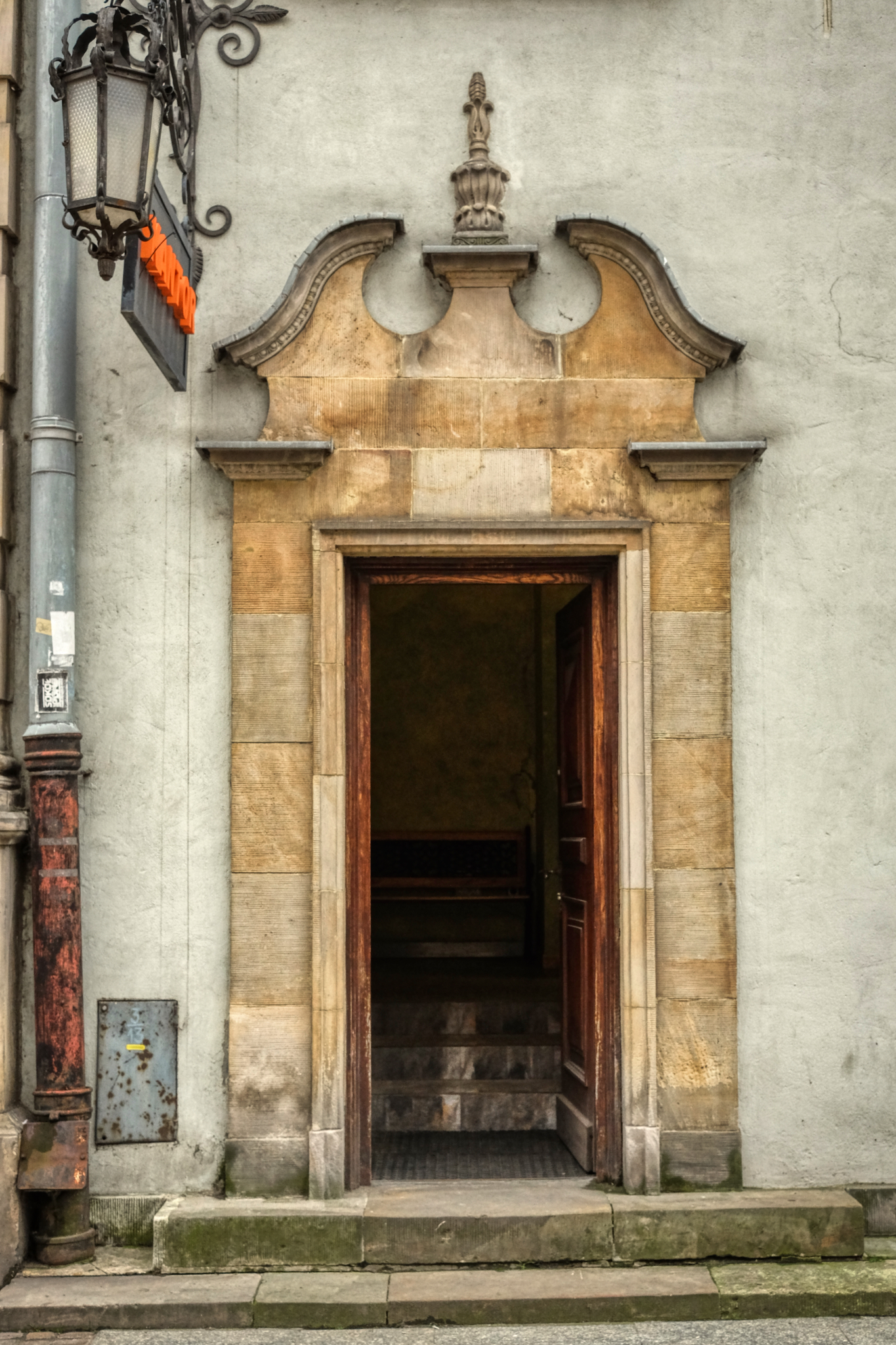 A fine, formal marble doorway.
A fine, formal marble doorway.
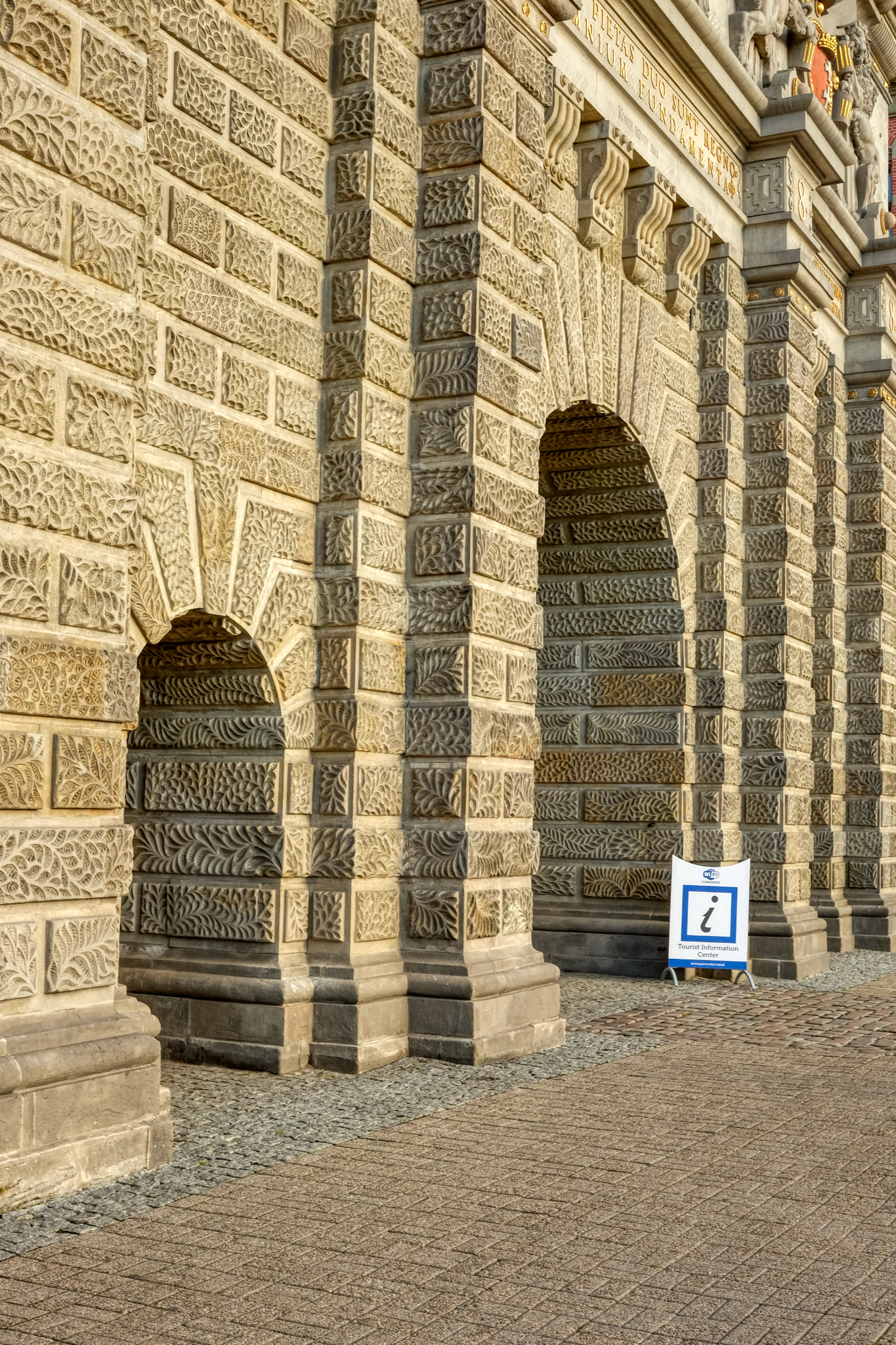 High relief stonework. Nice.
High relief stonework. Nice.
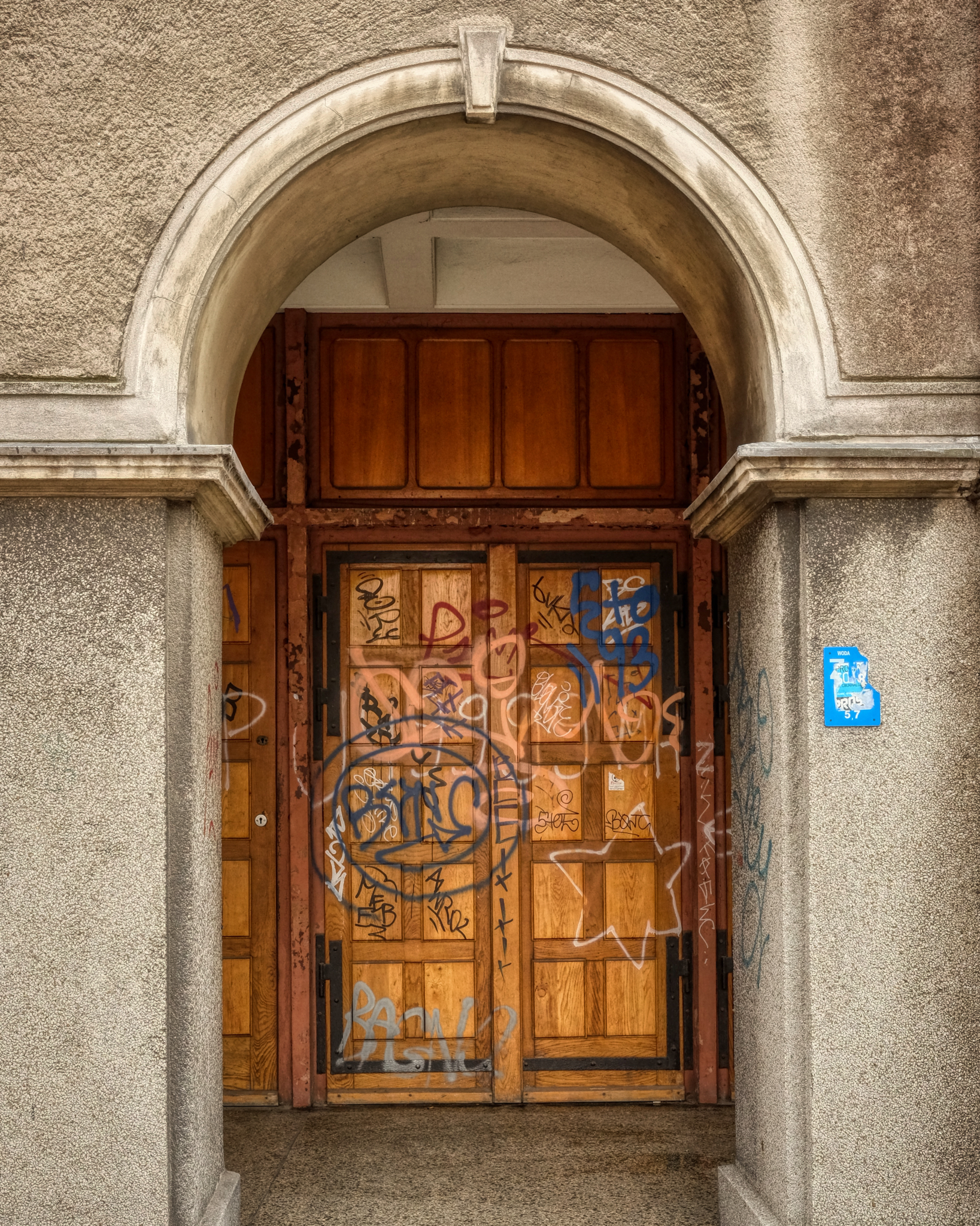 Not all of Gdańsk's doors were as appreciated as I would like to have seen.
Not all of Gdańsk's doors were as appreciated as I would like to have seen.
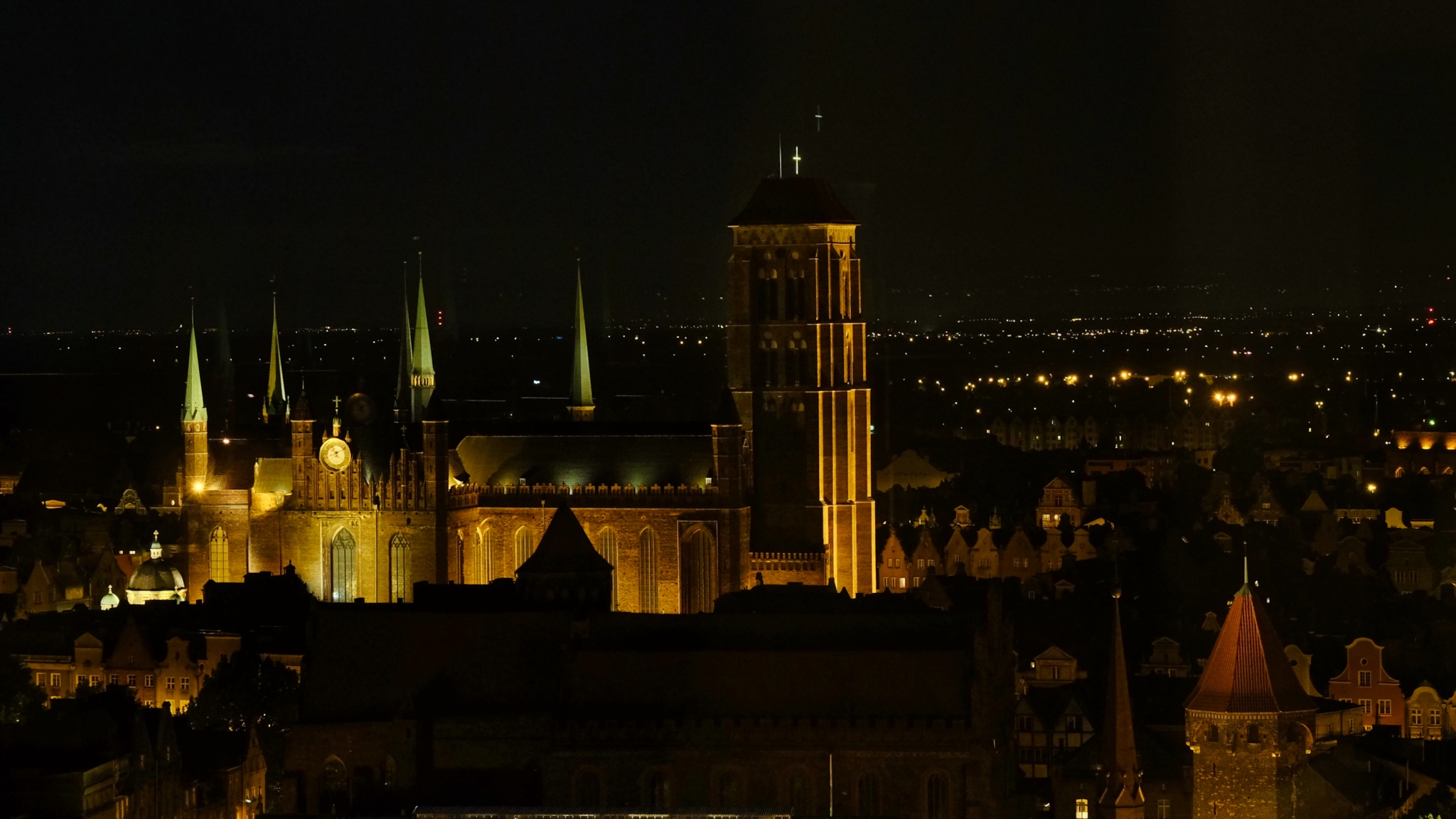 The views out over Gdańsk at night from our high rise hotel room were wonderful.
The views out over Gdańsk at night from our high rise hotel room were wonderful.
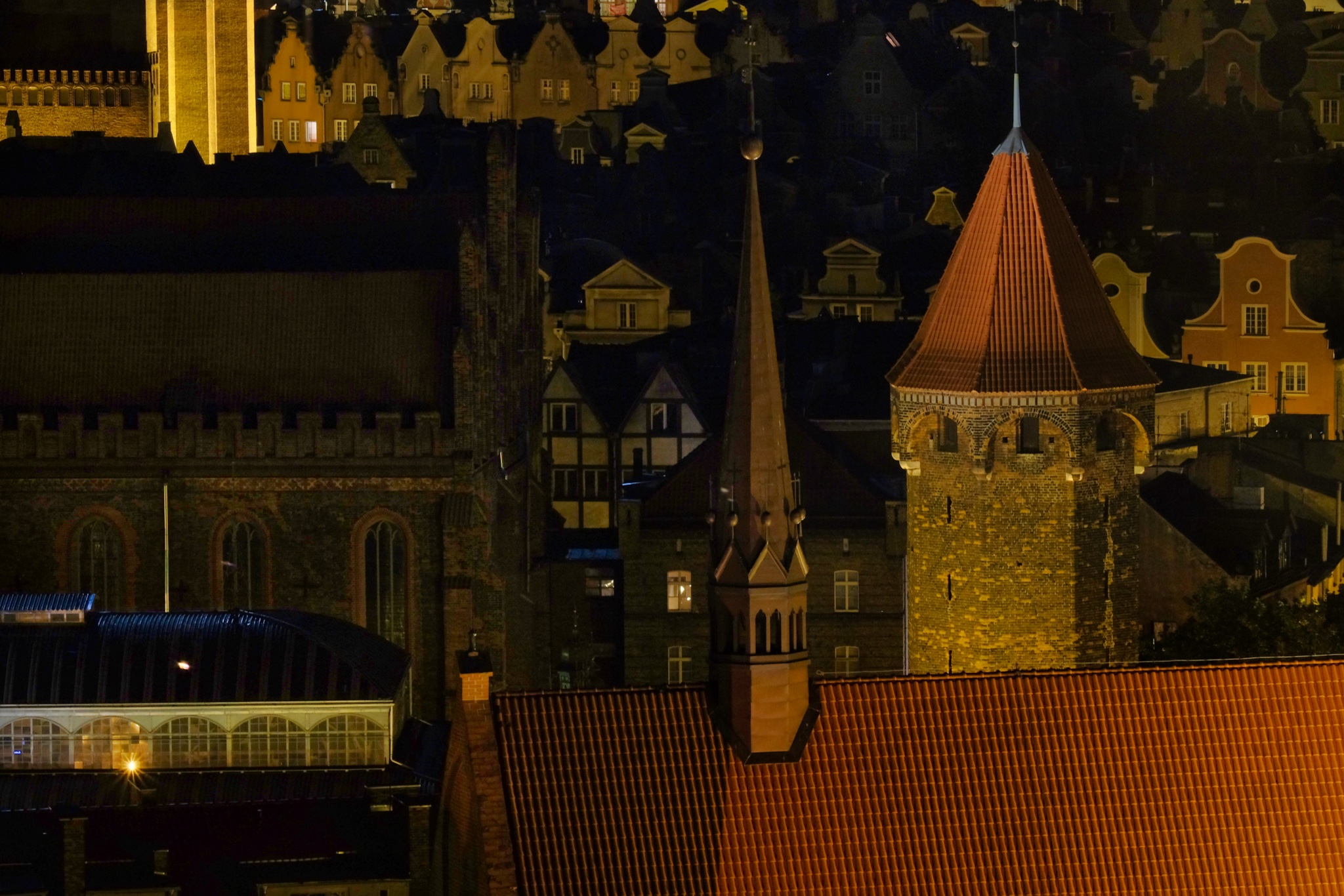 Making this photo blog about this wonderful city has made me very homesick for living in Europe . . .
Making this photo blog about this wonderful city has made me very homesick for living in Europe . . .
 I don't know if I will ever return to Gdańsk, but I know I will always have fond memories of it.
I don't know if I will ever return to Gdańsk, but I know I will always have fond memories of it.
Poland: Kraków is a beautiful vacation destination!
 Friday, April 17, 2020 at 9:03AM
Friday, April 17, 2020 at 9:03AM We visited Poland (Kraków and Gdańsk) in the summer of 2014. The entry for Gdańsk can be found HERE.
KRAKÓW:
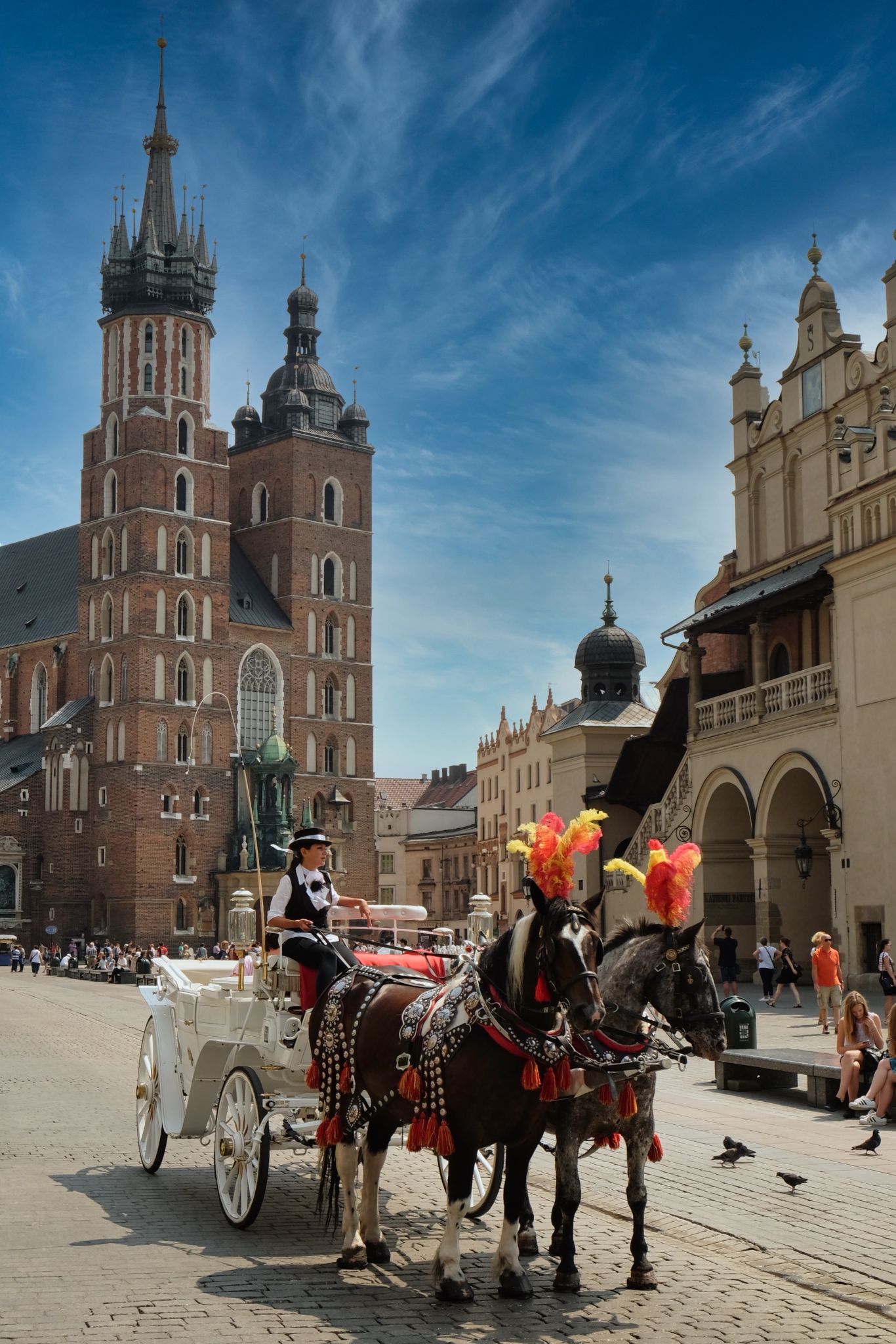 Central city Kraków in early summer is such a wonderful place to visit. The marvelous 14th century St. Mary's Basilica on the square.
Central city Kraków in early summer is such a wonderful place to visit. The marvelous 14th century St. Mary's Basilica on the square.
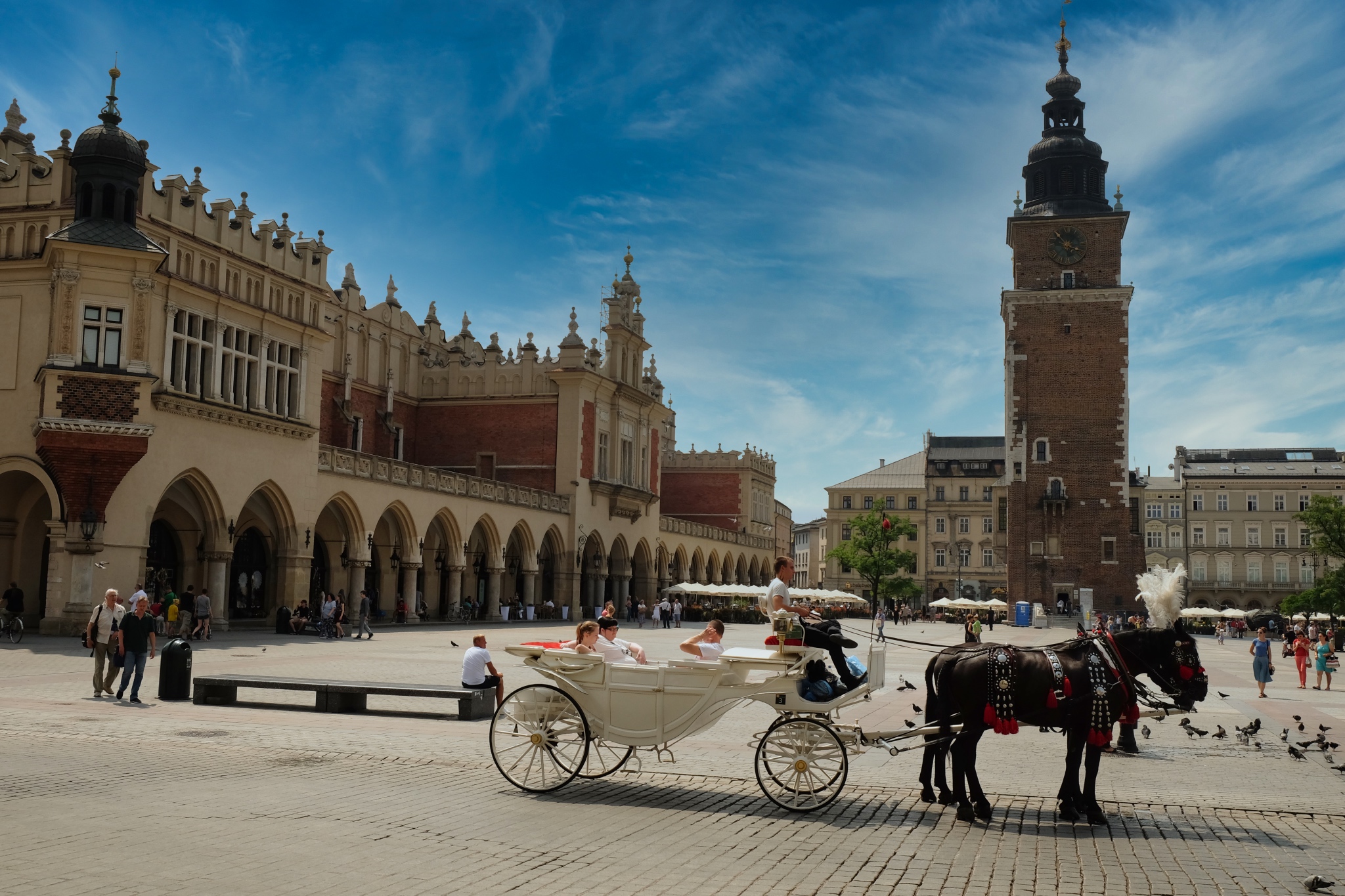 The Main Square in Kraków dates from the 13th century and is the largest town square in all of Europe (@ 9.2 acres, or 3.79 ha).
The Main Square in Kraków dates from the 13th century and is the largest town square in all of Europe (@ 9.2 acres, or 3.79 ha).
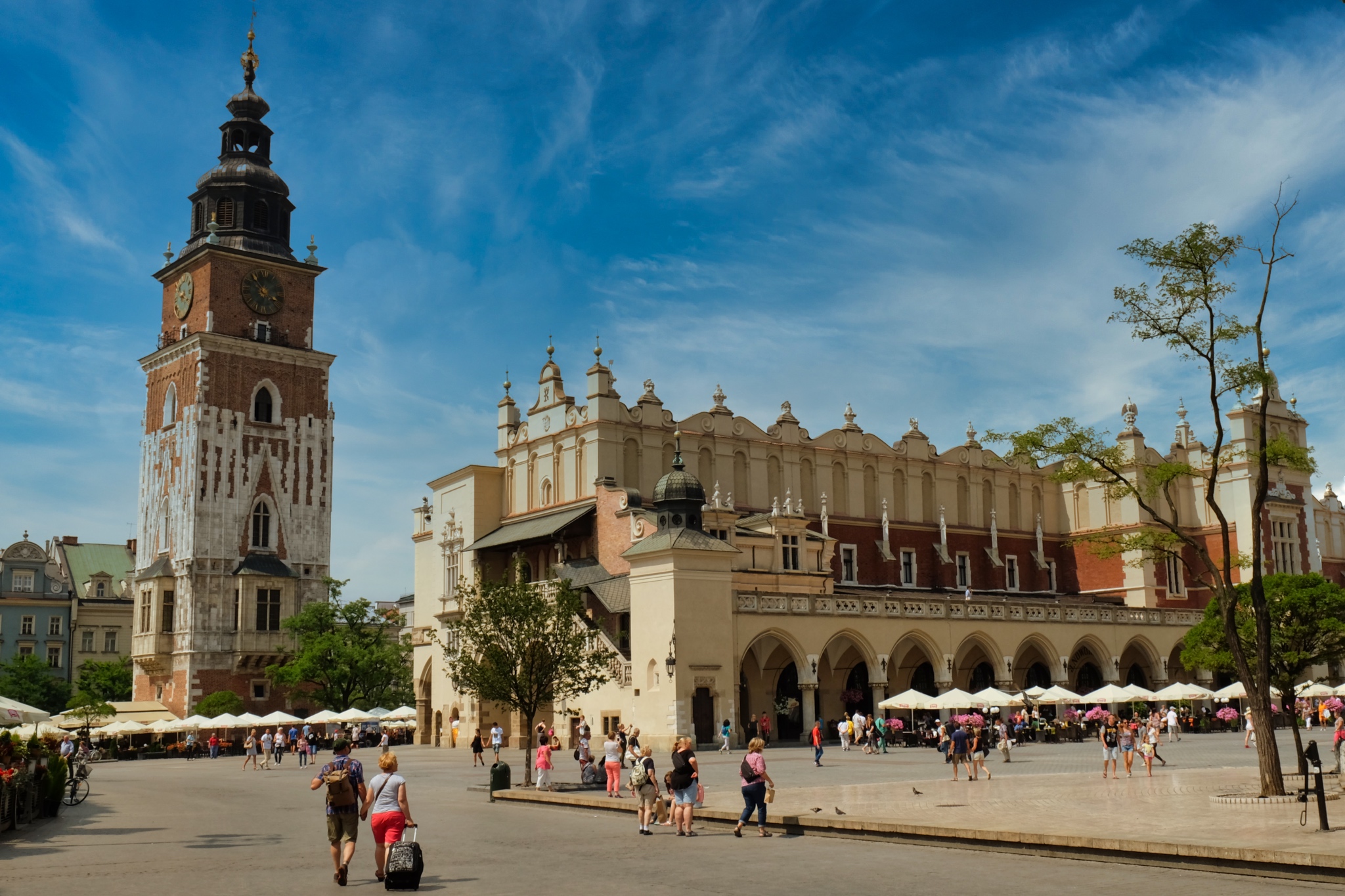 Kraków Main Square with the Cloth Hall (right, now a tourist galleria) built in the 15th century, and the City Hall Tower (left) built in the 14th Century. The original town hall, which was attached to the tower, was demolished in the mid-1800s.
Kraków Main Square with the Cloth Hall (right, now a tourist galleria) built in the 15th century, and the City Hall Tower (left) built in the 14th Century. The original town hall, which was attached to the tower, was demolished in the mid-1800s.
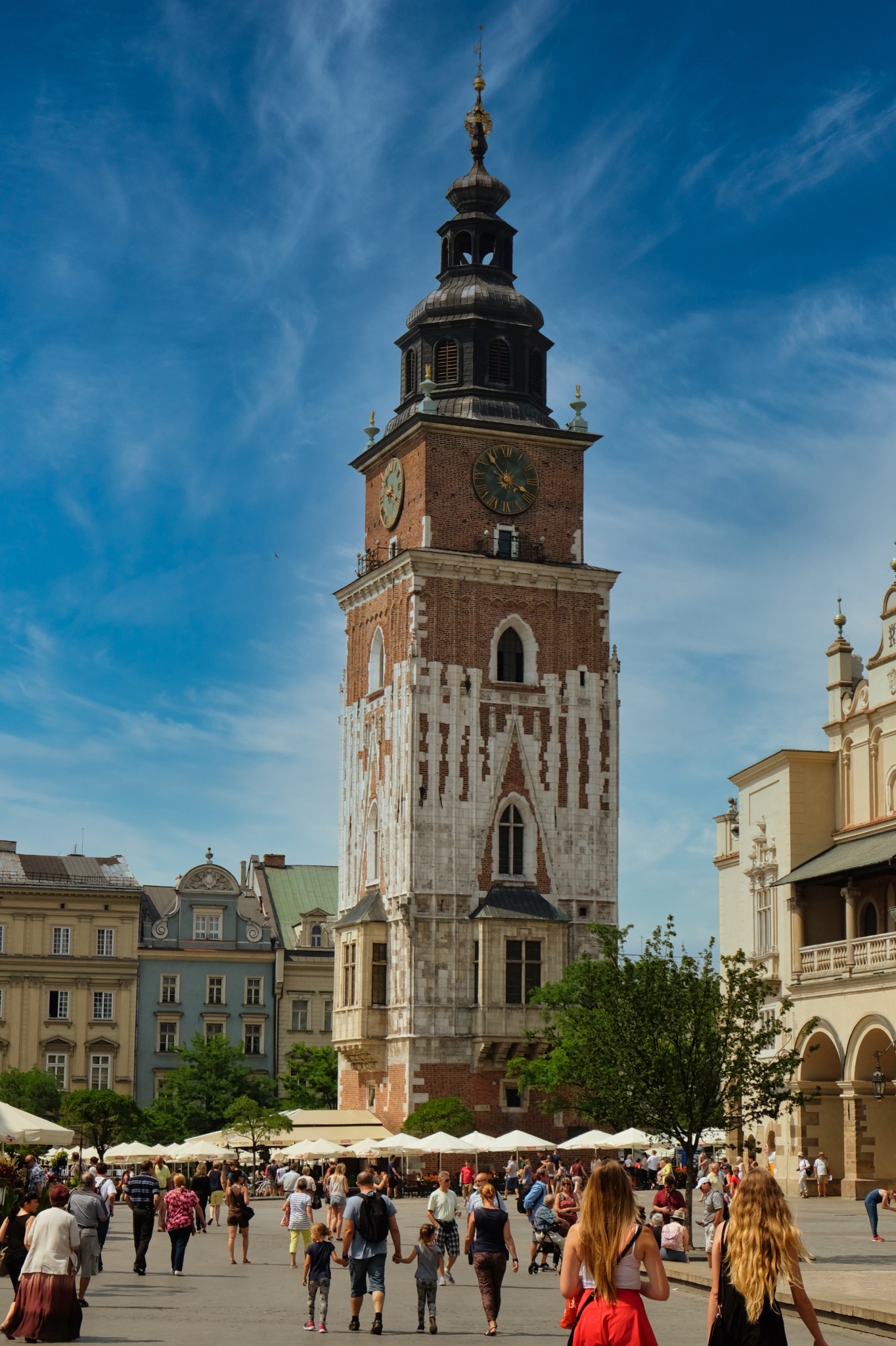 A wonderful medieval tower.
A wonderful medieval tower.
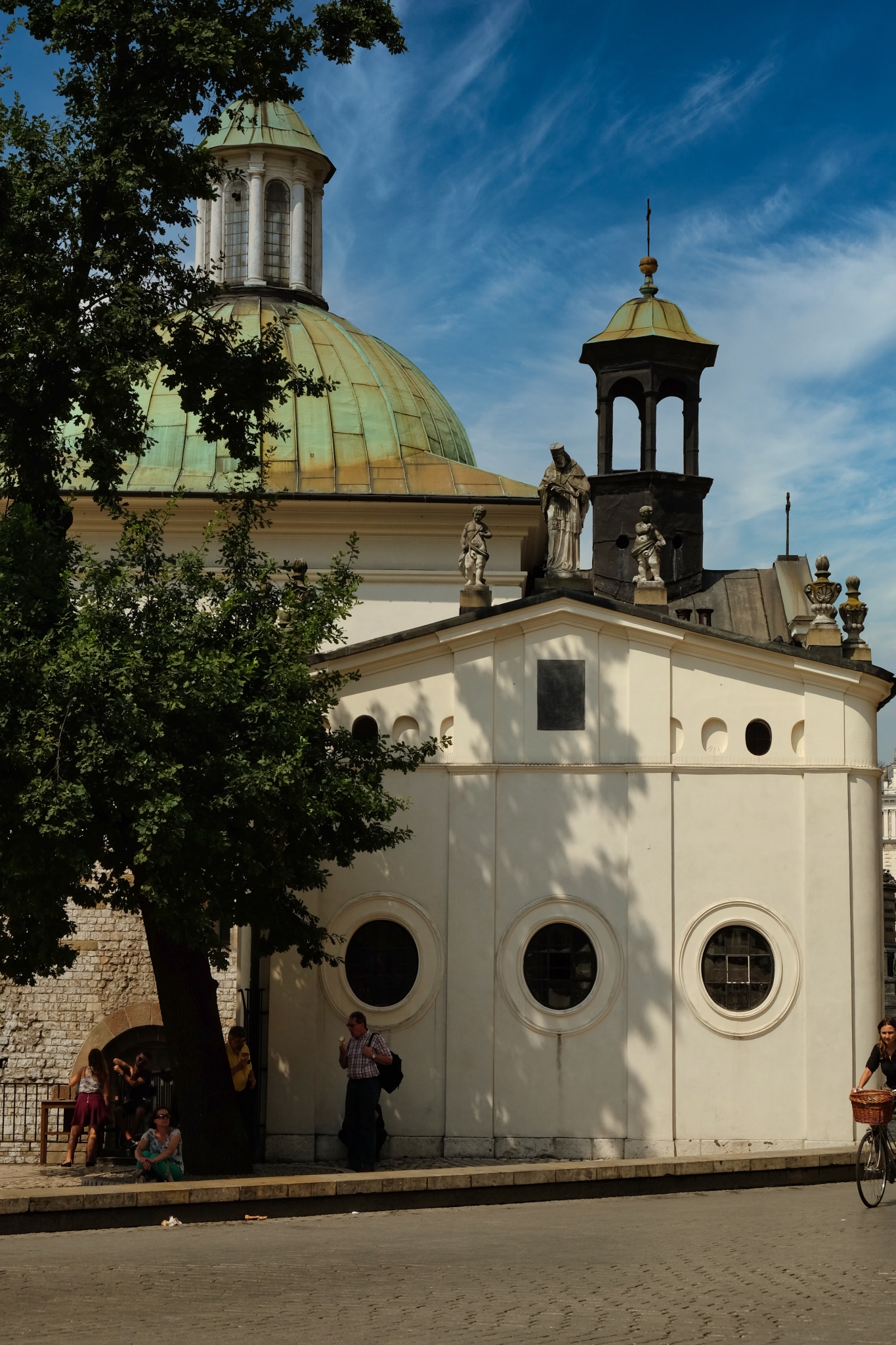 Also on the Kraków Main Market Square is the 11th century Church of Saint Adalbert.
Also on the Kraków Main Market Square is the 11th century Church of Saint Adalbert.
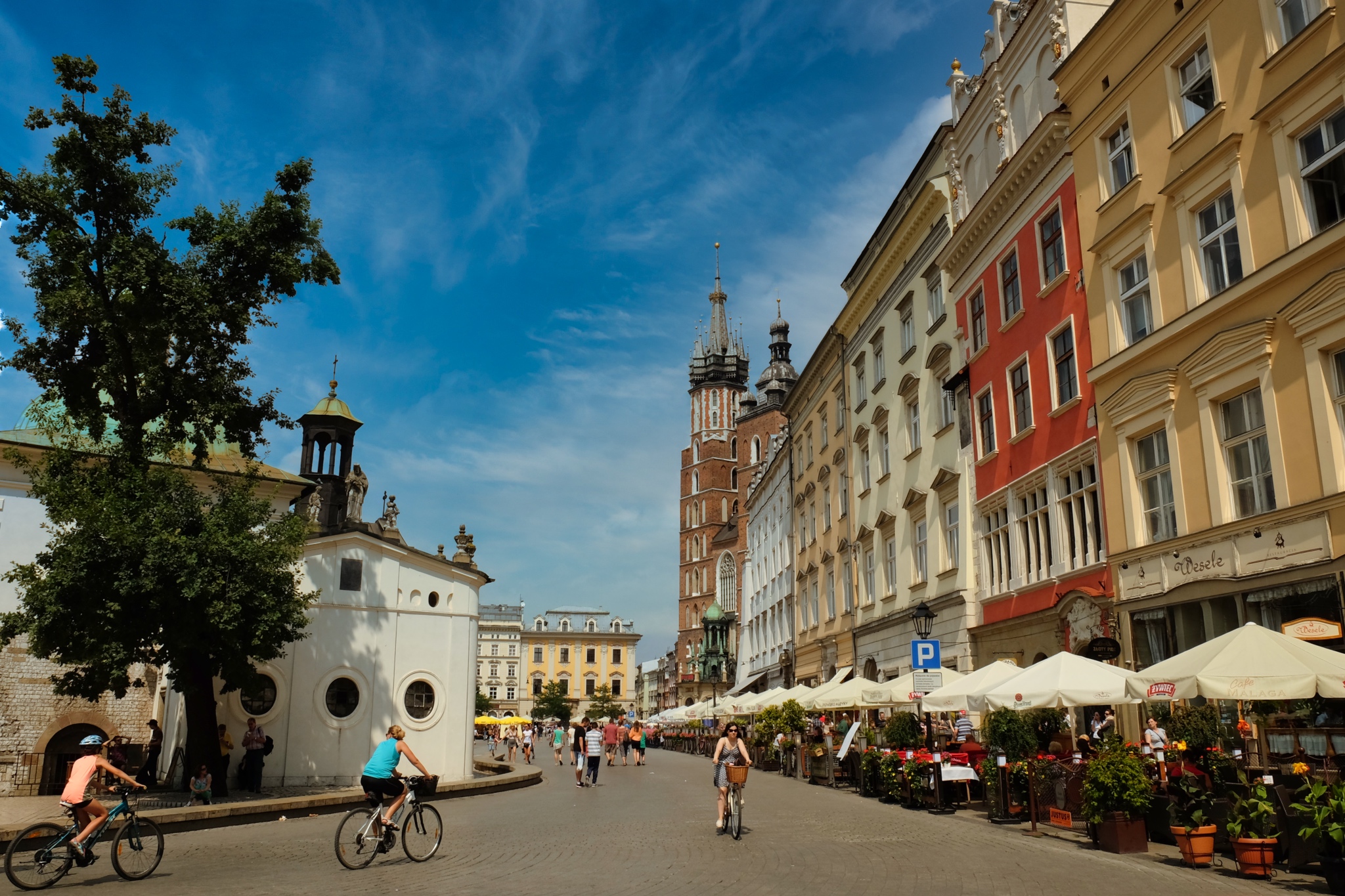 The Main Square is lined by small shops and boutiques . . . and a solid line of sidewalk cafés all around.
The Main Square is lined by small shops and boutiques . . . and a solid line of sidewalk cafés all around.
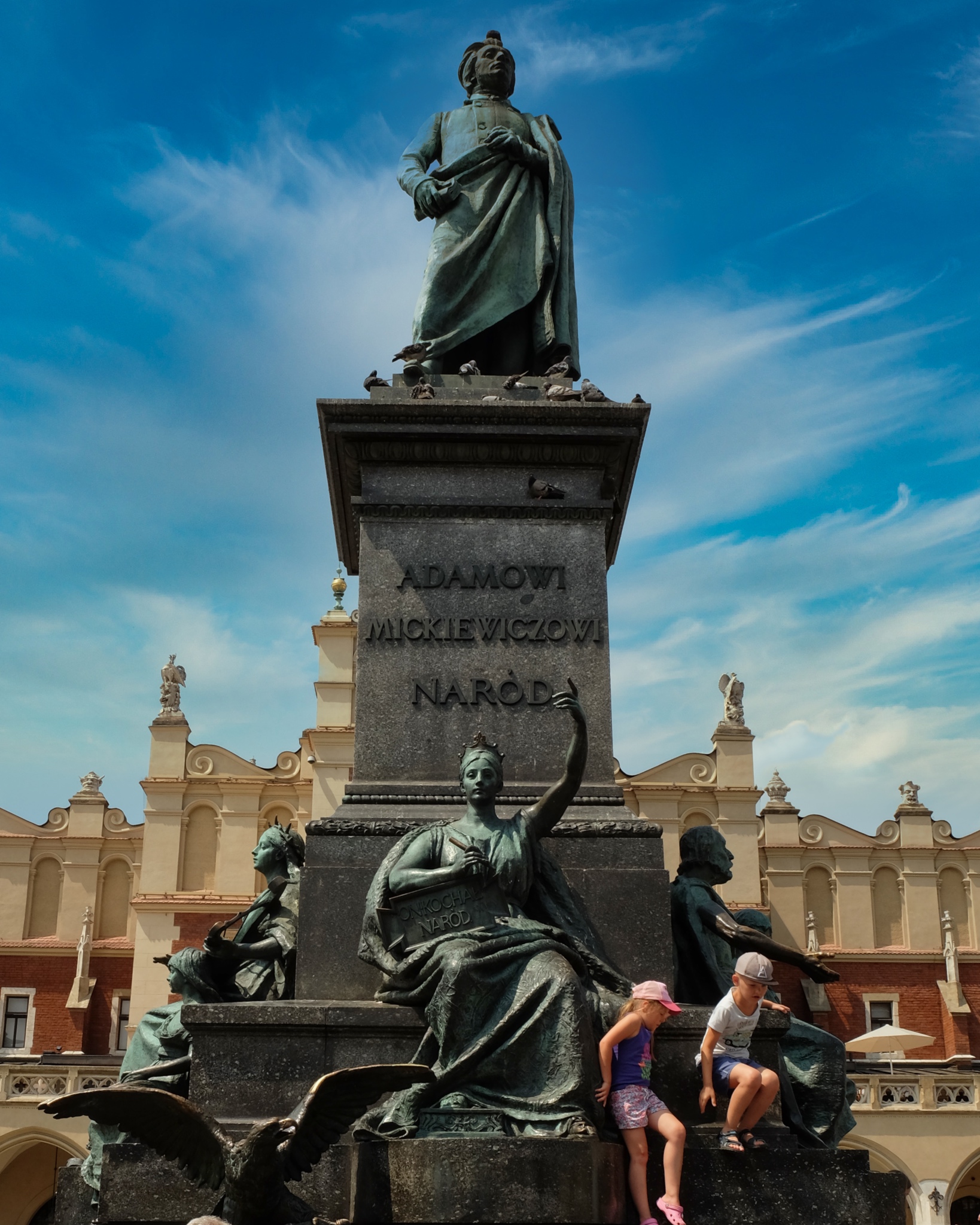 The Main Square attracts lots of tourists and, presumably, local children as well. Her they climb on the memorial statue to Adam Mickiewicz, a 19th century Polish poet.
The Main Square attracts lots of tourists and, presumably, local children as well. Her they climb on the memorial statue to Adam Mickiewicz, a 19th century Polish poet.
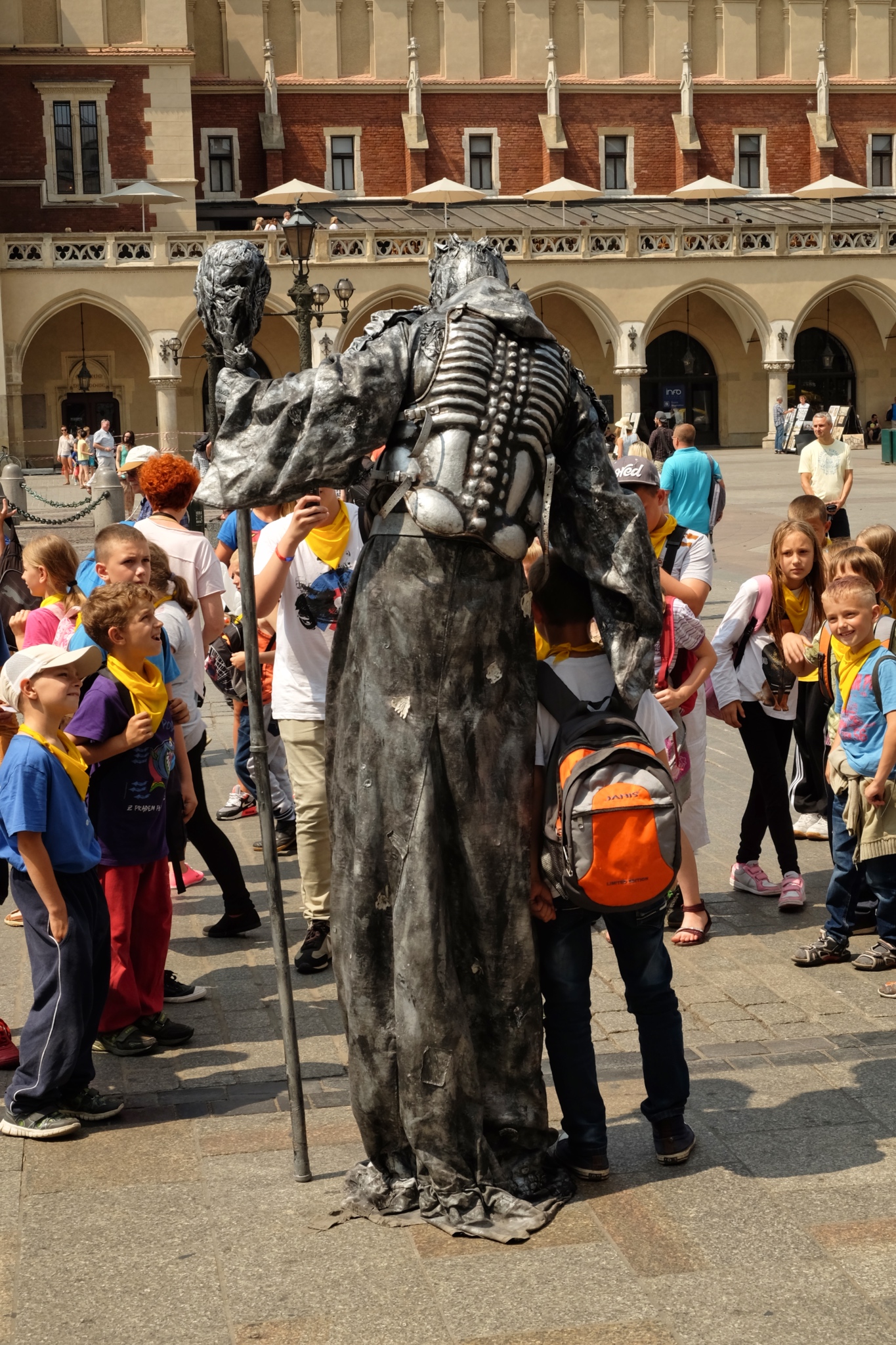 Making money on the square . . . Monster Photo Ops $5.oo.
Making money on the square . . . Monster Photo Ops $5.oo.
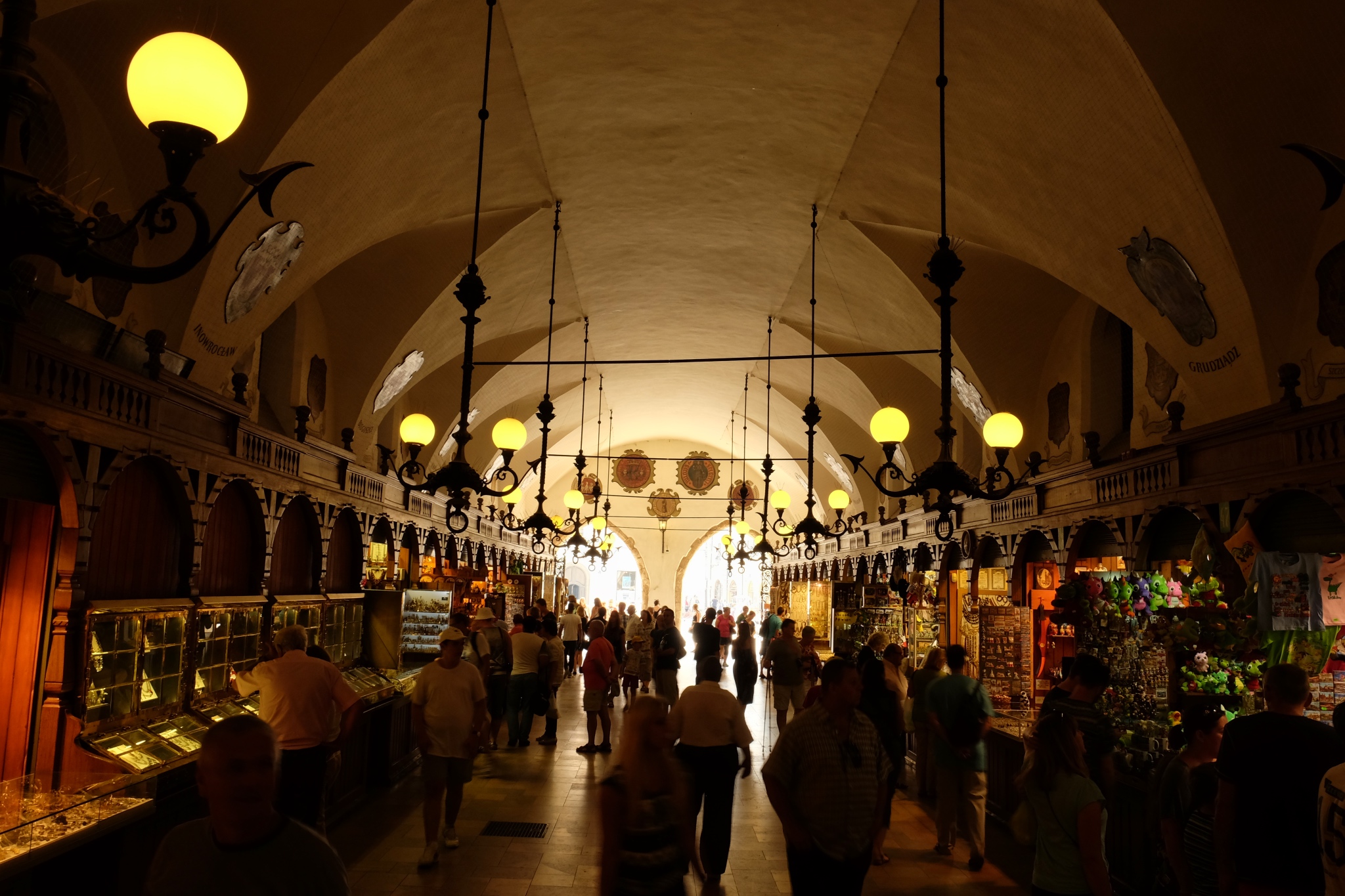 Inside the Cloth Hall, now a curios galleria.
Inside the Cloth Hall, now a curios galleria.
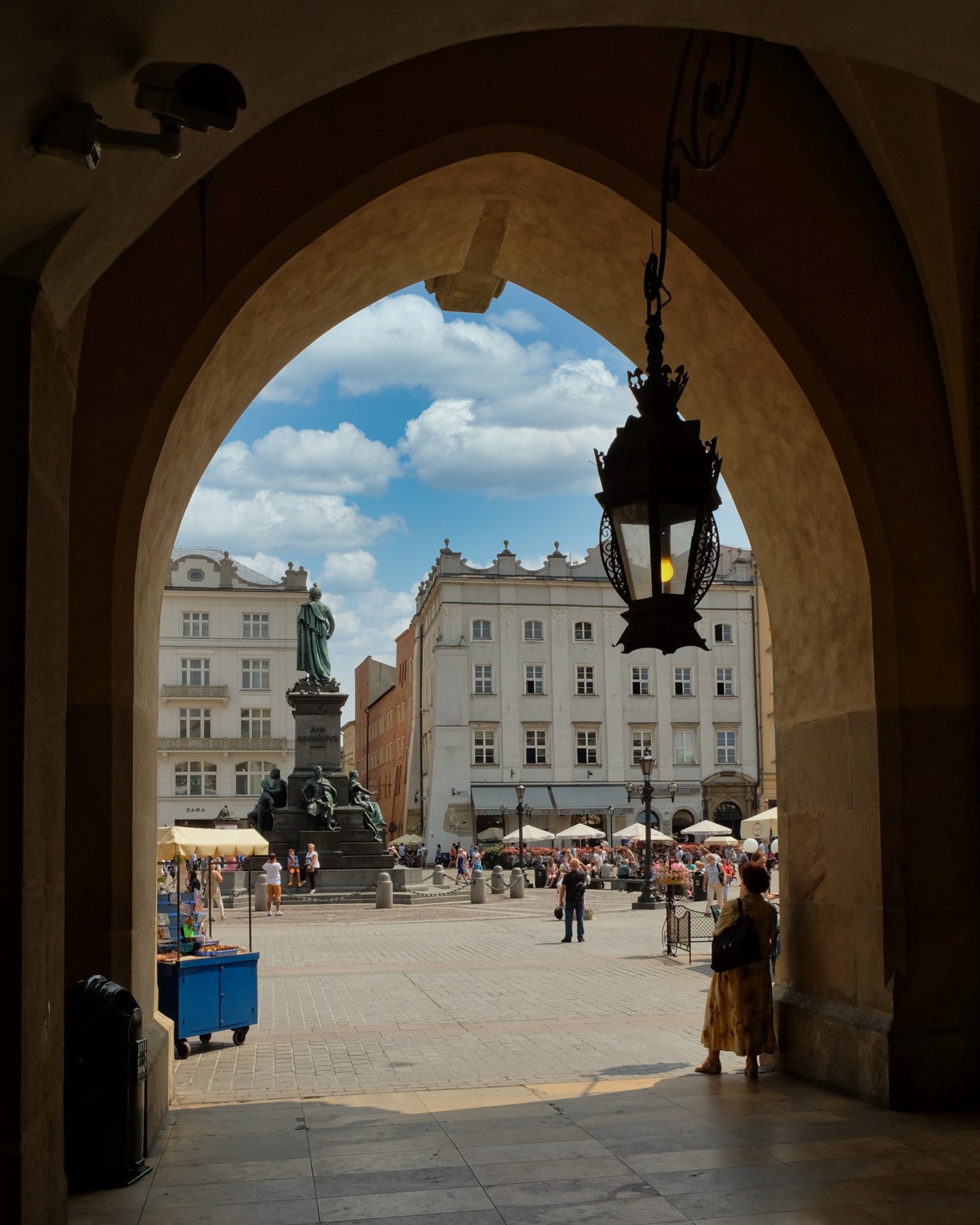 Looking out onto the square from the Cloth Hall.
Looking out onto the square from the Cloth Hall.
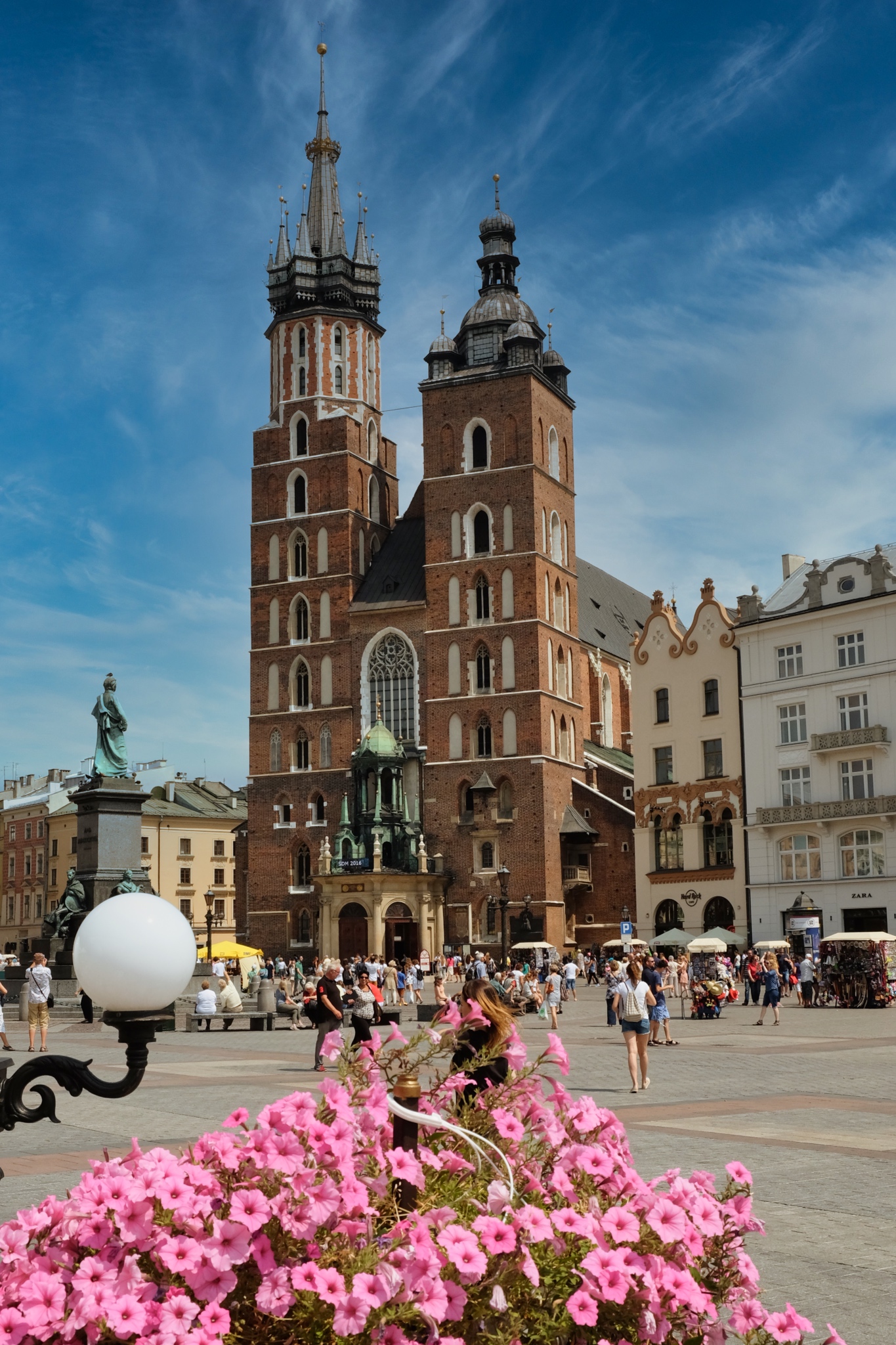 Saint Mary's Basilica looked inviting. There are not too many 13th century basilicas left in their original state in Europe. I wanted to see the interior of this Polish Gothic structure.
Saint Mary's Basilica looked inviting. There are not too many 13th century basilicas left in their original state in Europe. I wanted to see the interior of this Polish Gothic structure.
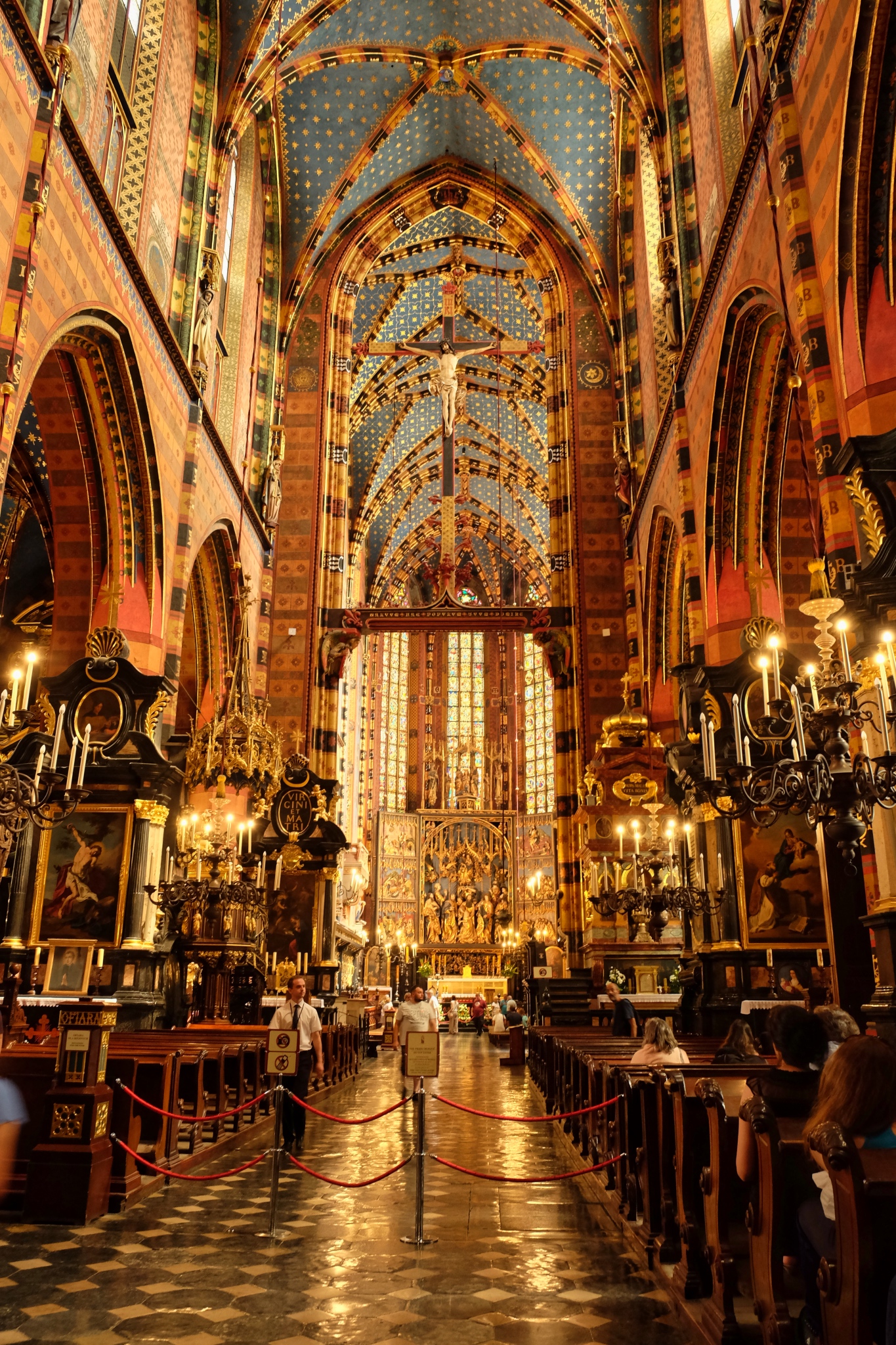 I was not disappointed. Magnificent . . . which is the idea, one assumes.
I was not disappointed. Magnificent . . . which is the idea, one assumes.
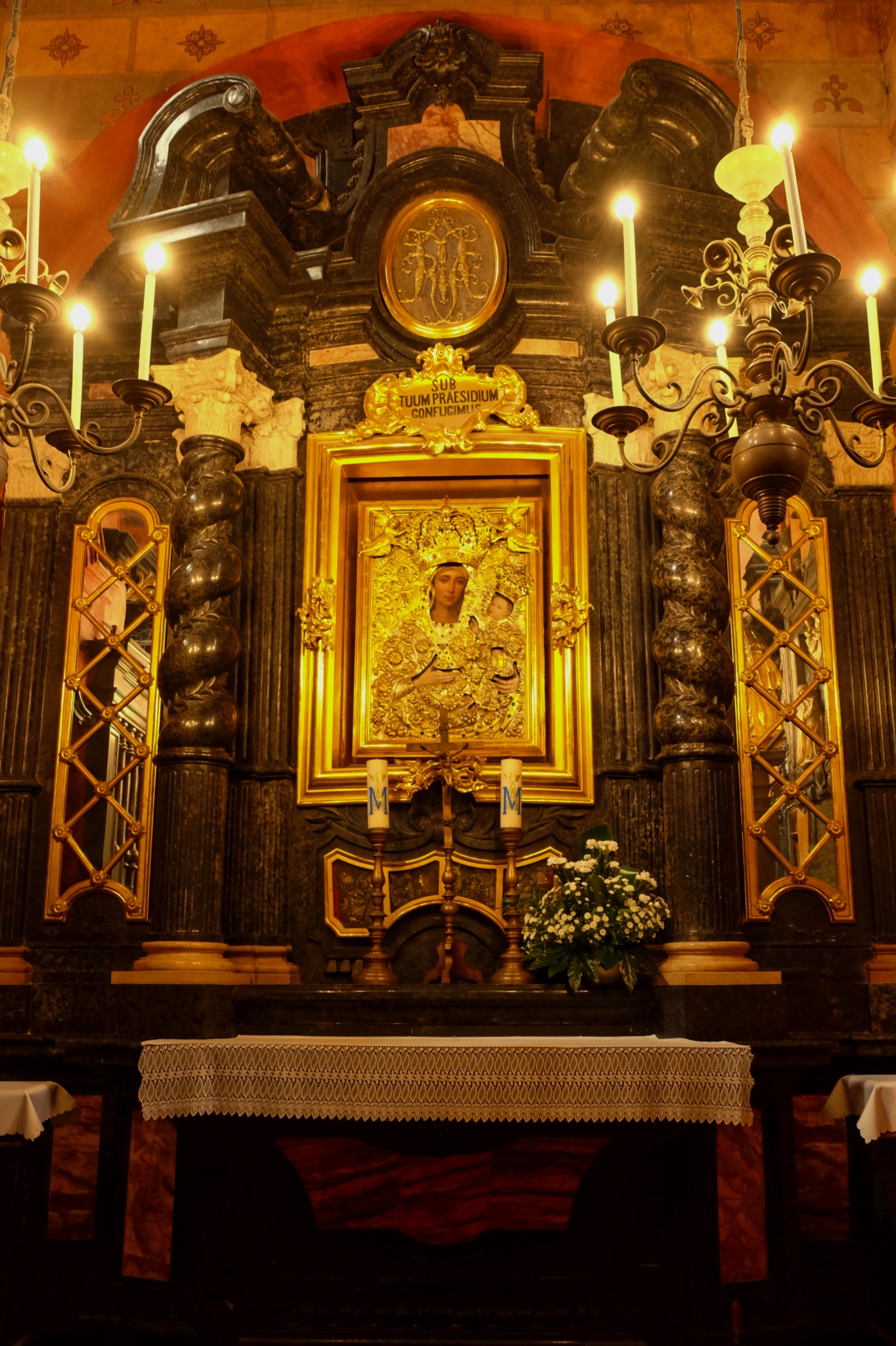 Beautiful Christian iconography everywhere.
Beautiful Christian iconography everywhere.
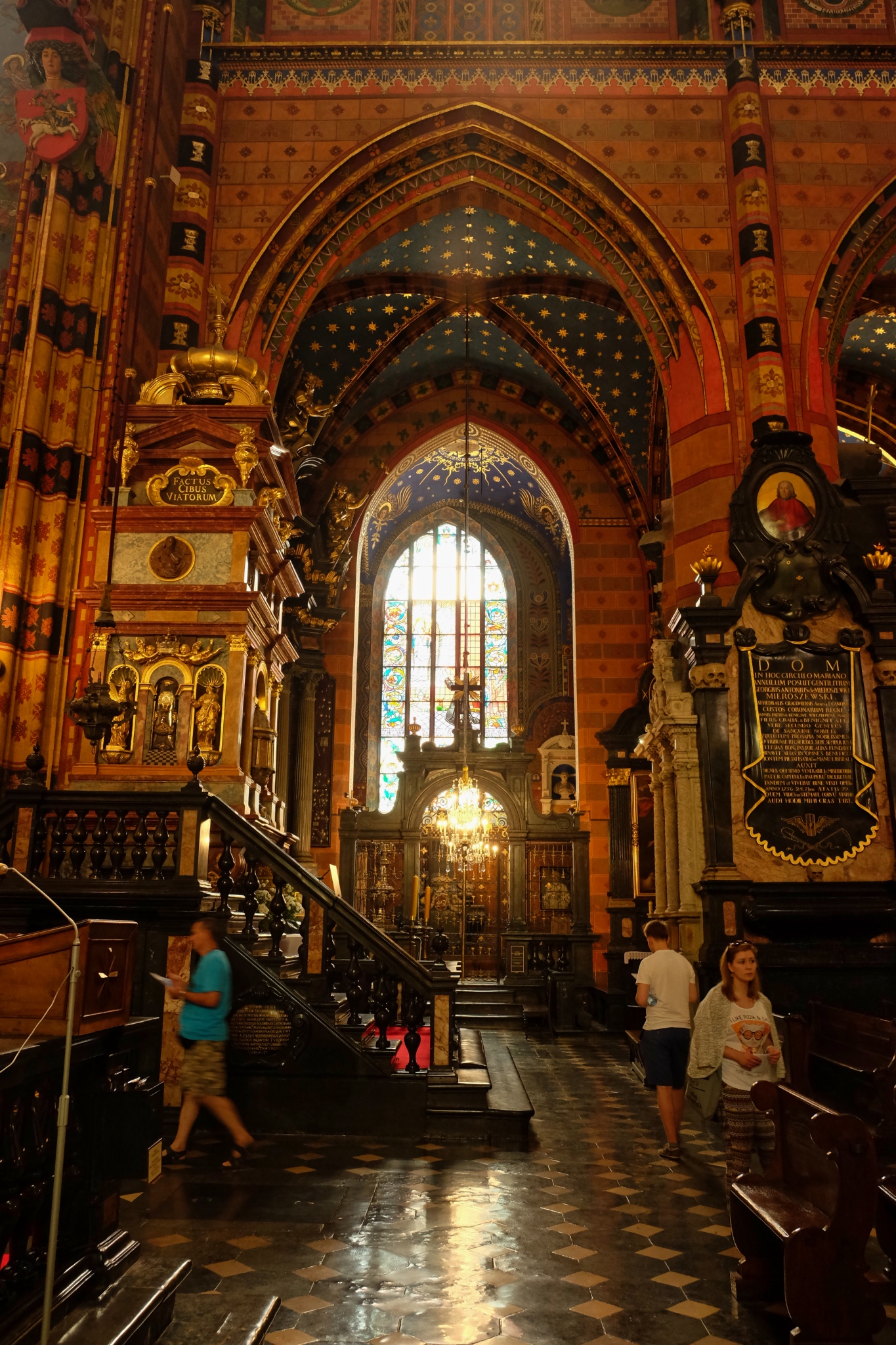 Beautiful and ornate vestibules lined the main hall.
Beautiful and ornate vestibules lined the main hall.
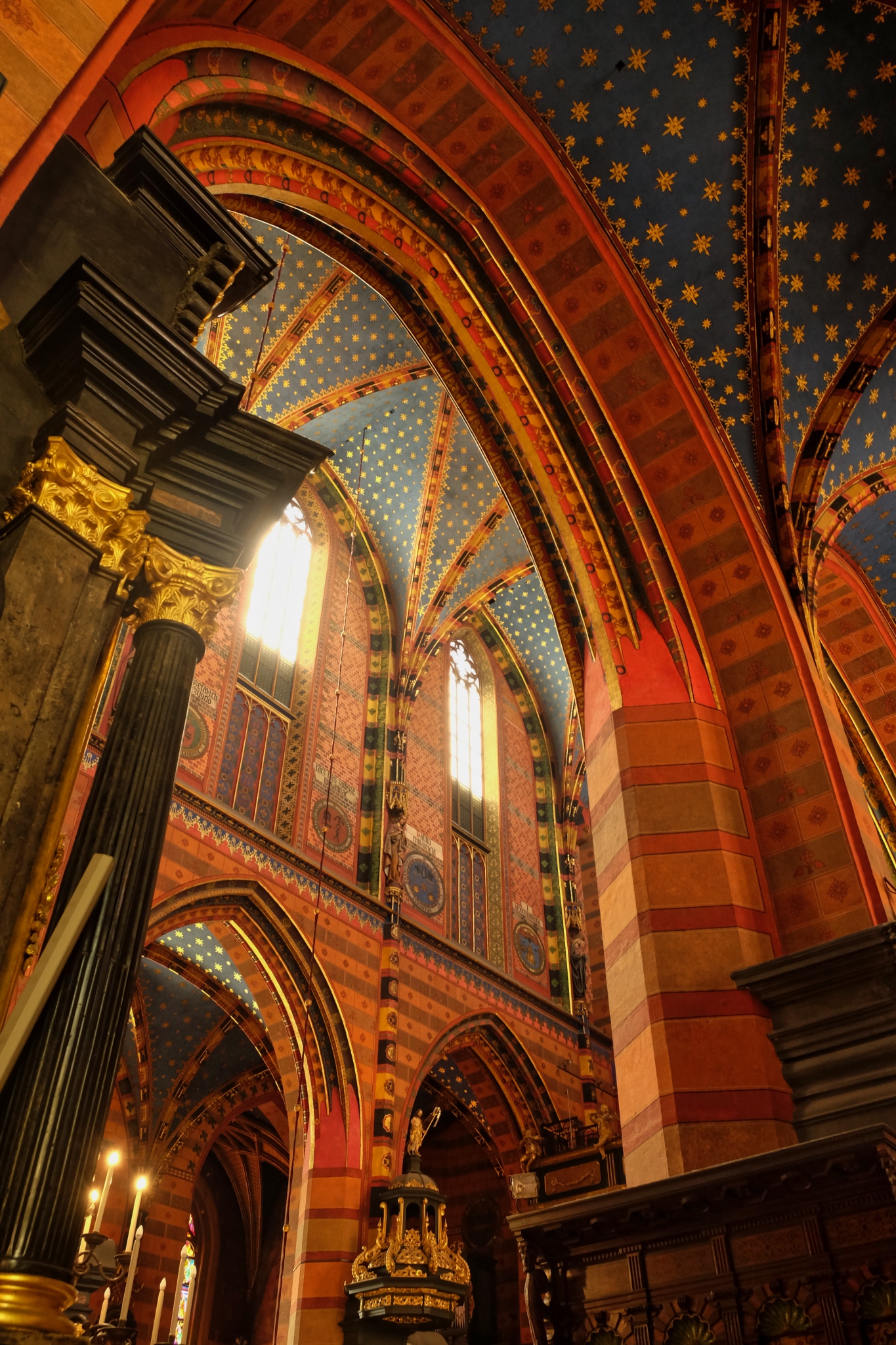 I loved the colorfully painted ceiling details. So many churches in Europe seem to think that bare stone is a better look . . . I prefer the color.
I loved the colorfully painted ceiling details. So many churches in Europe seem to think that bare stone is a better look . . . I prefer the color.
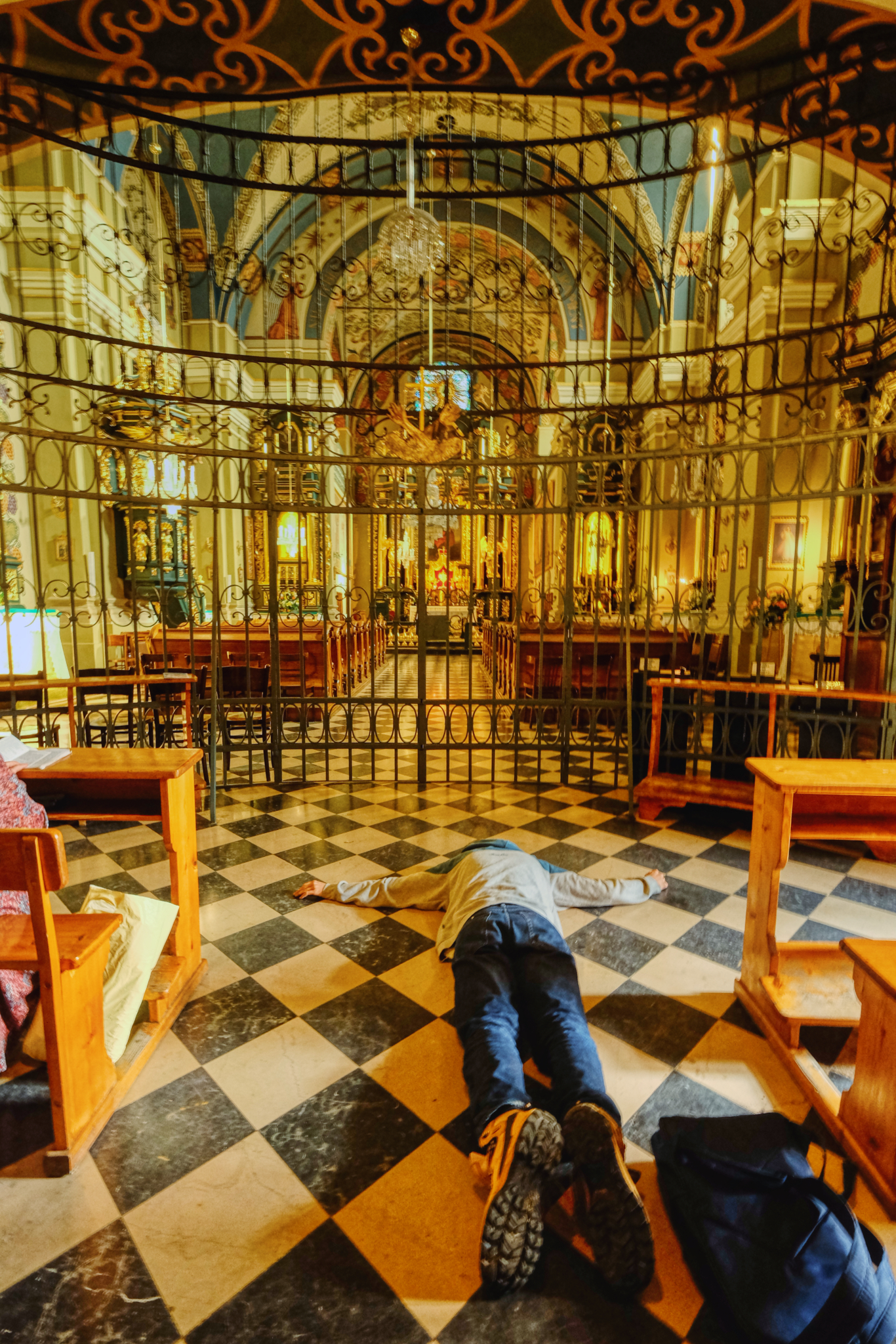 A Kraków Christian devotee on a bad day, one would assume.
A Kraków Christian devotee on a bad day, one would assume.
 My wife and I admired the interior of the St. Mary's Basilica for quite a while, but it was a beautiful day outside, and there was so much more to explore.
My wife and I admired the interior of the St. Mary's Basilica for quite a while, but it was a beautiful day outside, and there was so much more to explore.
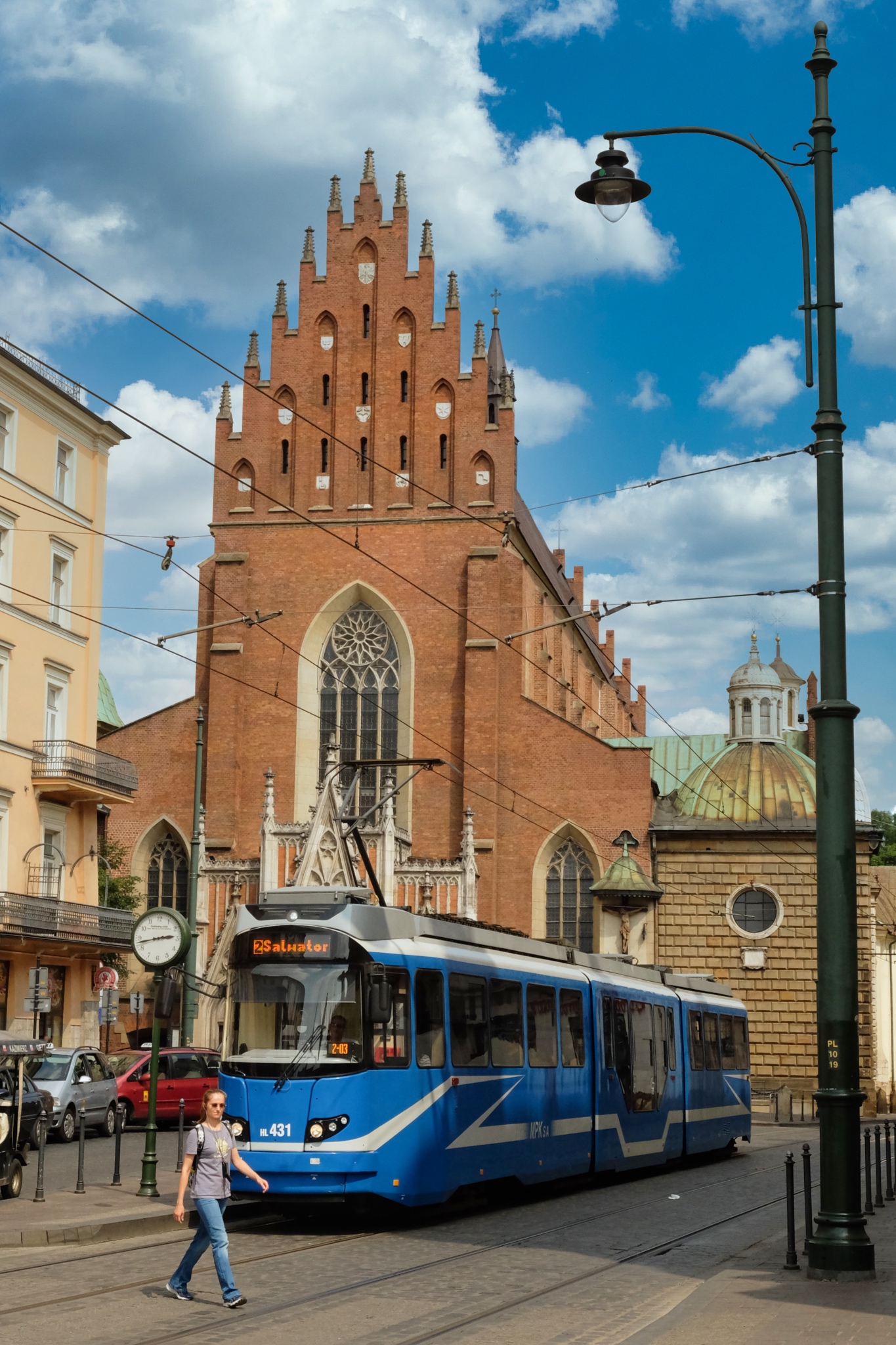 We left the main Karców city center square to walk around in the narrow streets of Kraków's historic center (on the original UNESCO World Heritage list).
We left the main Karców city center square to walk around in the narrow streets of Kraków's historic center (on the original UNESCO World Heritage list).
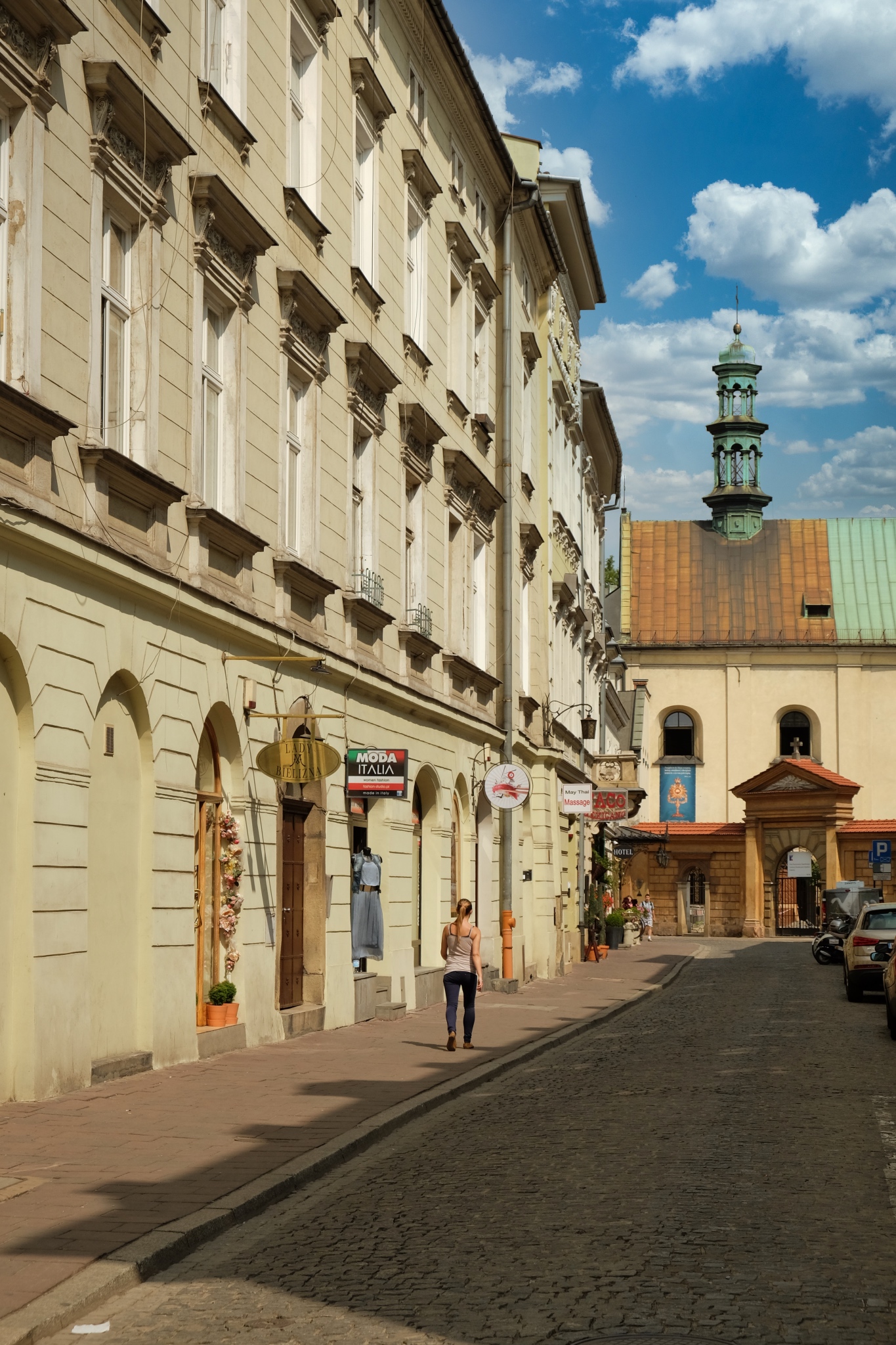 As we walked around in the back streets of the city center, we became aware of the significance that this is a city that had never been bombed in a war and had never had a major fire, as so many of the other major medieval European cities had. There were no new buildings: it was an intact ancient city . . . and living today.
As we walked around in the back streets of the city center, we became aware of the significance that this is a city that had never been bombed in a war and had never had a major fire, as so many of the other major medieval European cities had. There were no new buildings: it was an intact ancient city . . . and living today.
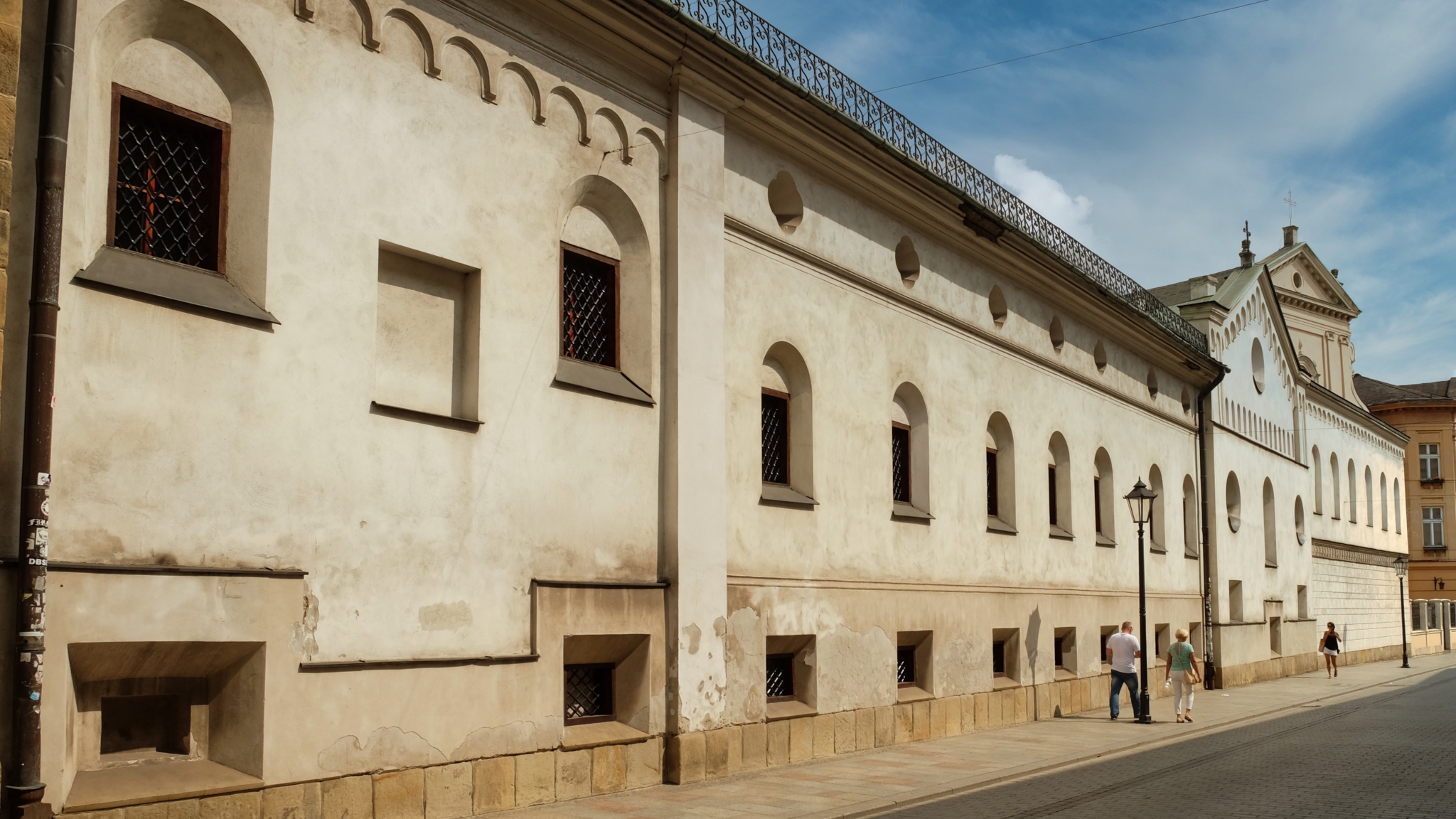 Interesting and varied architecture all around.
Interesting and varied architecture all around.
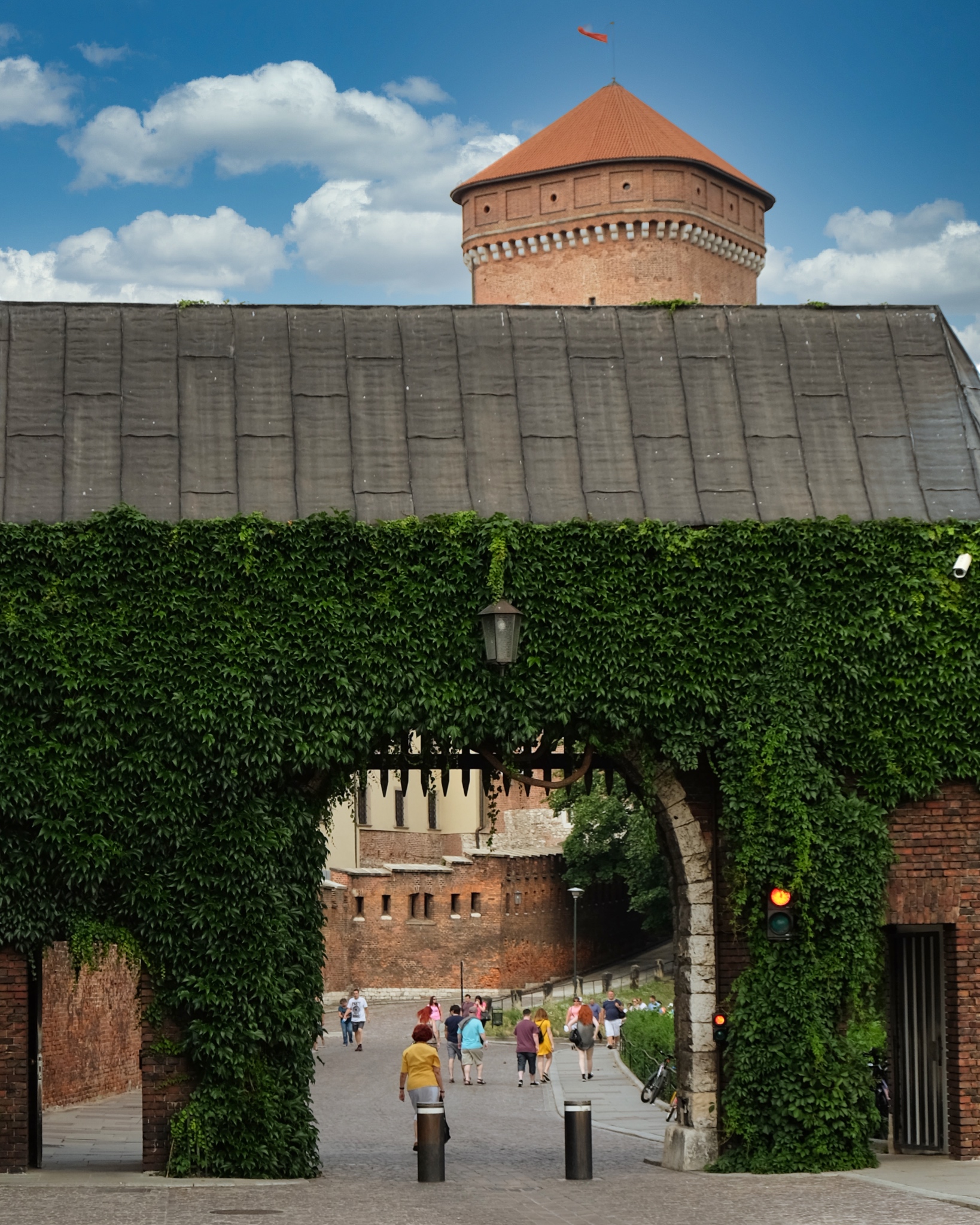 Such a charming city.
Such a charming city.
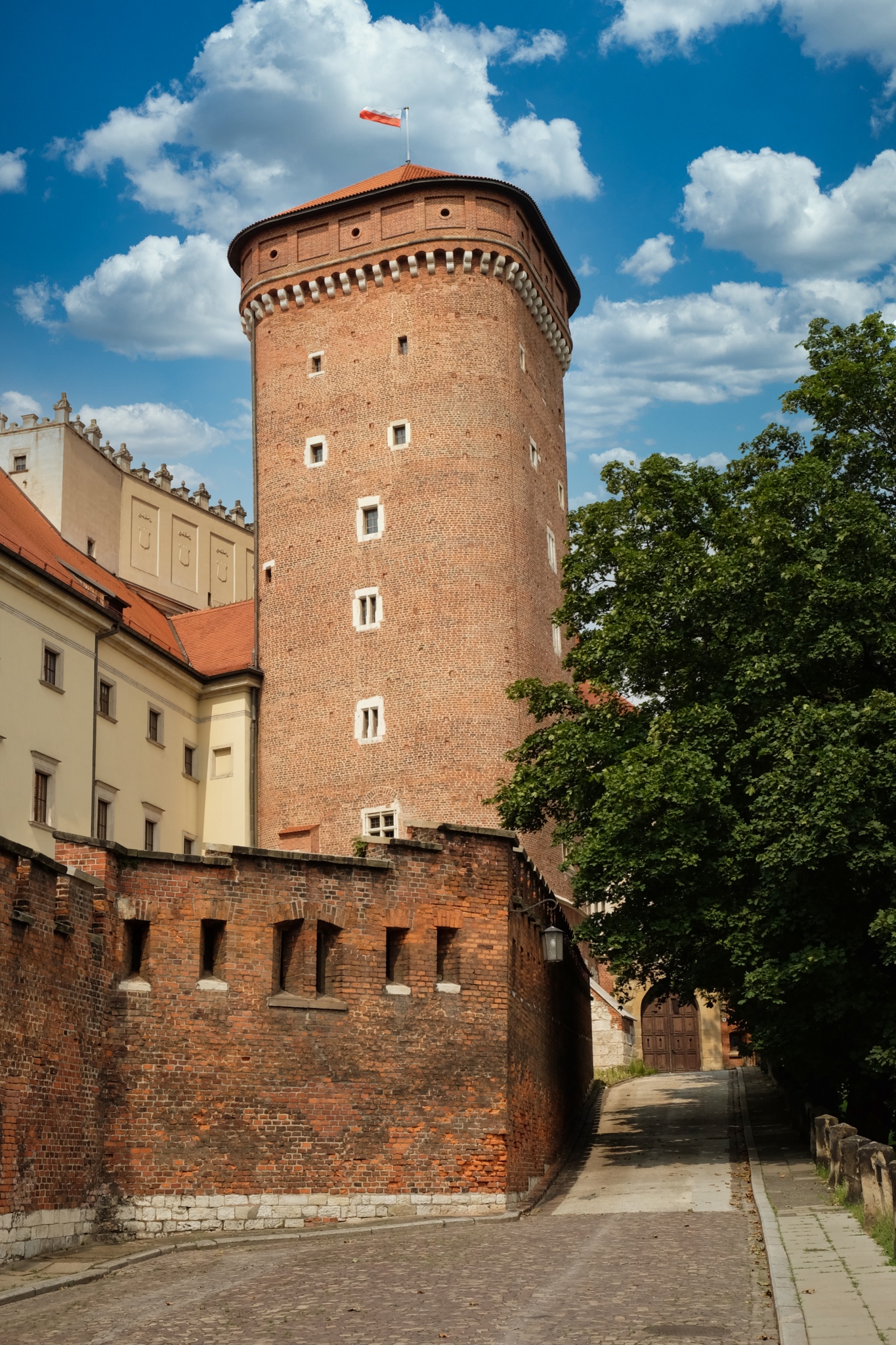 I found this tower fascinating. Towers were very popular throughout Europe in medieval times
I found this tower fascinating. Towers were very popular throughout Europe in medieval times
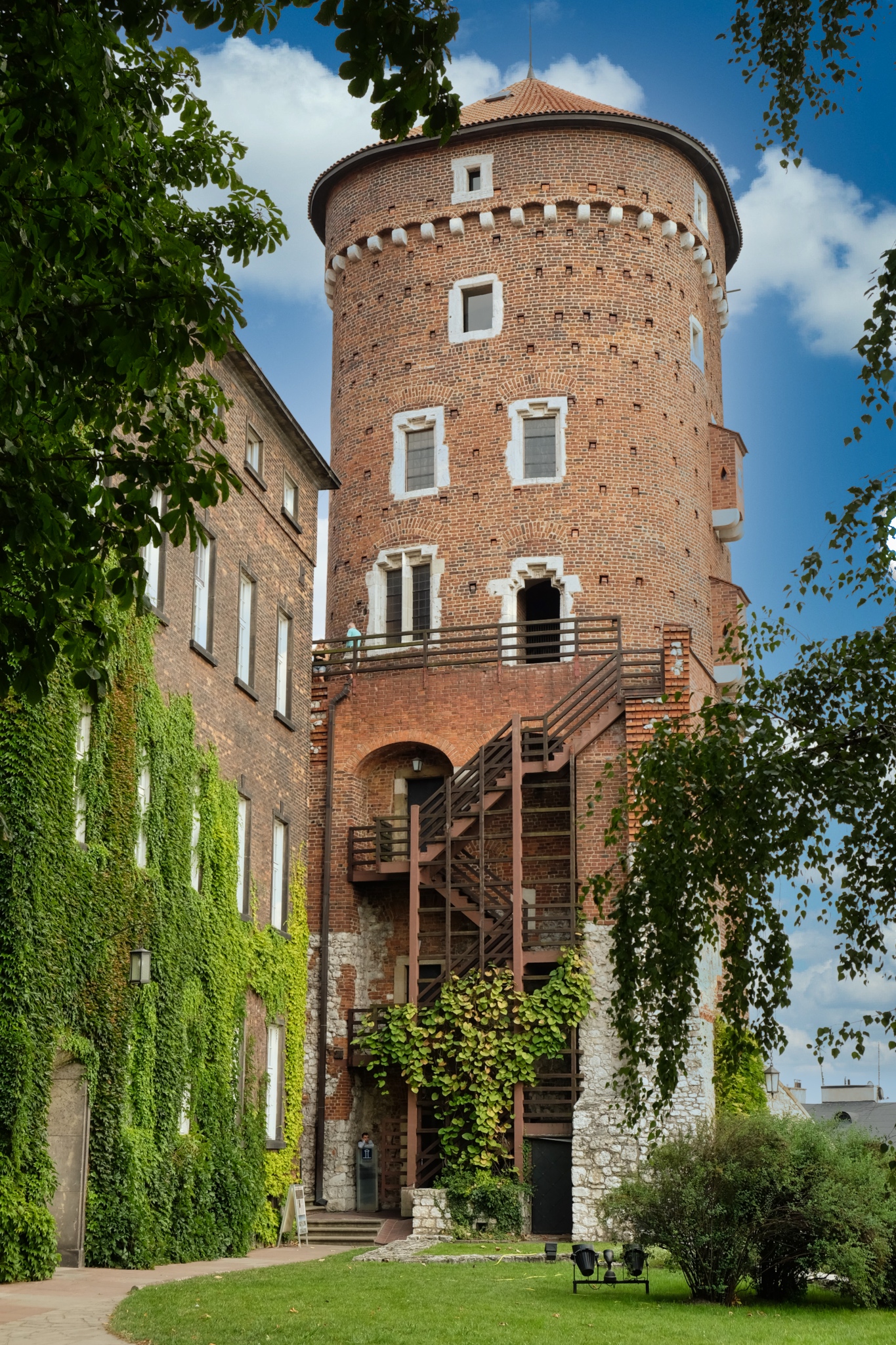 The back of the tower was also very interesting. I enjoy looking at and figuring out these old architectural gems.
The back of the tower was also very interesting. I enjoy looking at and figuring out these old architectural gems.
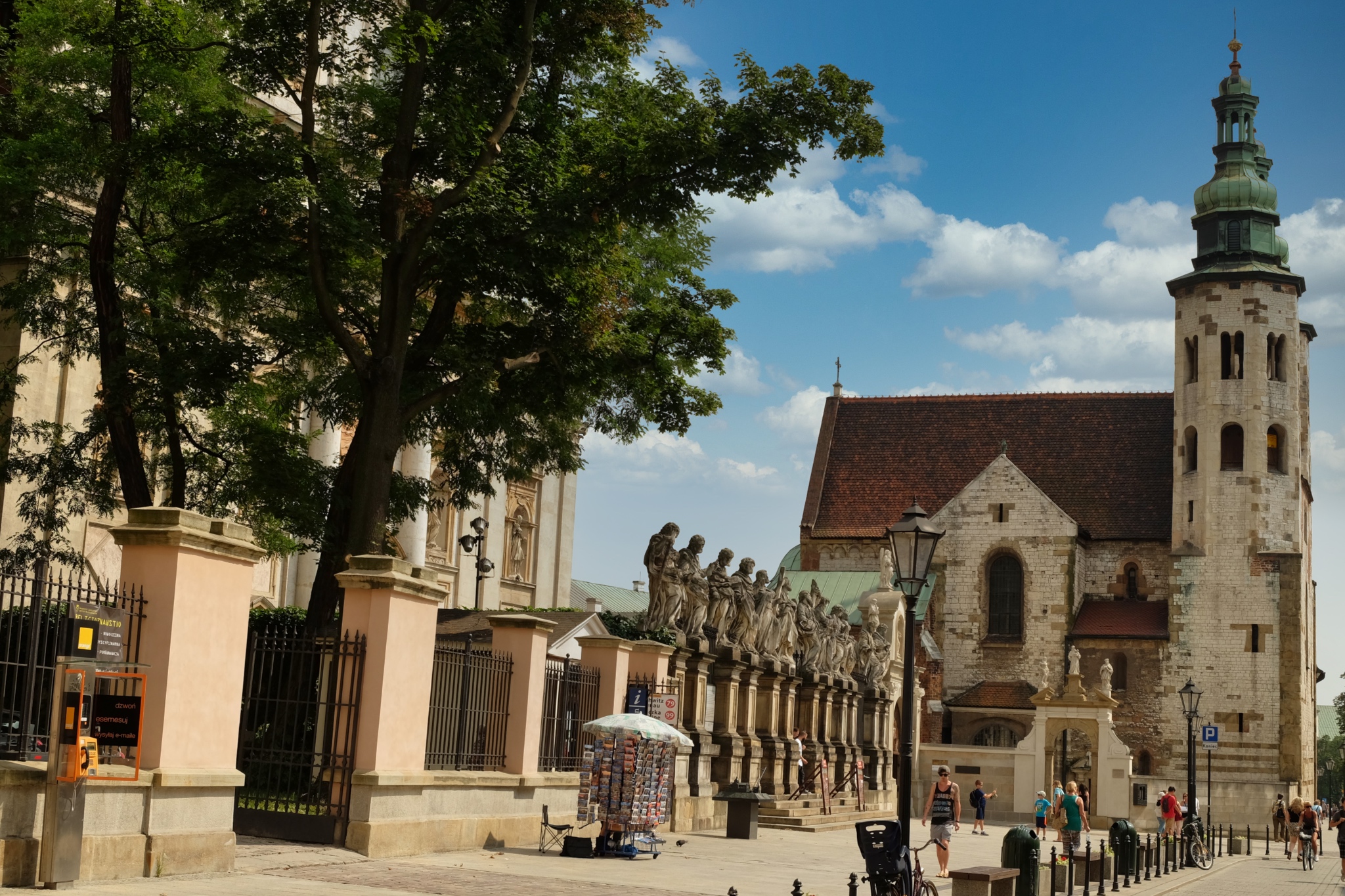 One city space leads to another . . . and always interesting and fascinating.
One city space leads to another . . . and always interesting and fascinating.
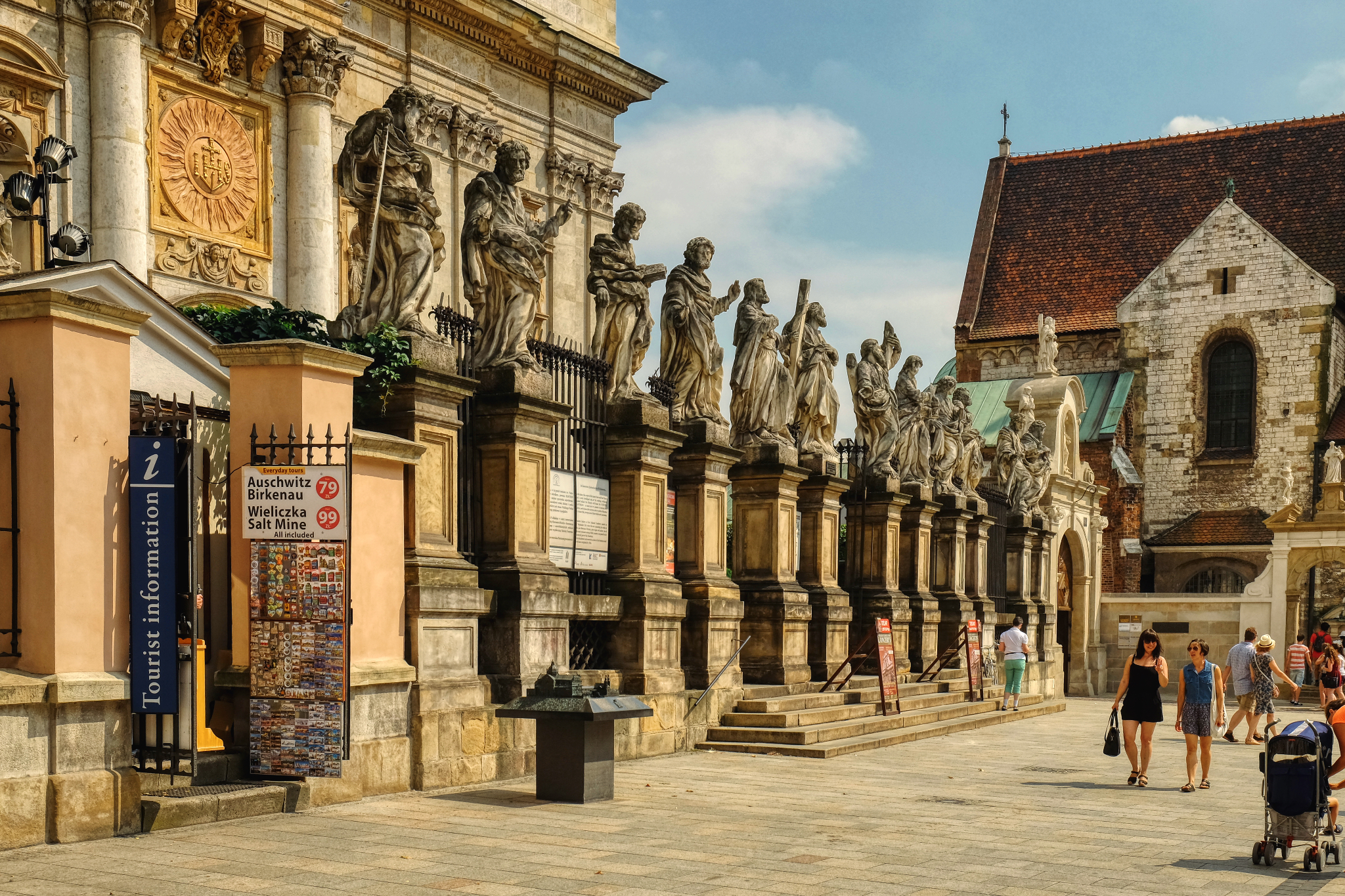 A row of Christian saints. Notice the advertisement for tours of the Nazi death camps near Kraków . . . we did not go.
A row of Christian saints. Notice the advertisement for tours of the Nazi death camps near Kraków . . . we did not go.
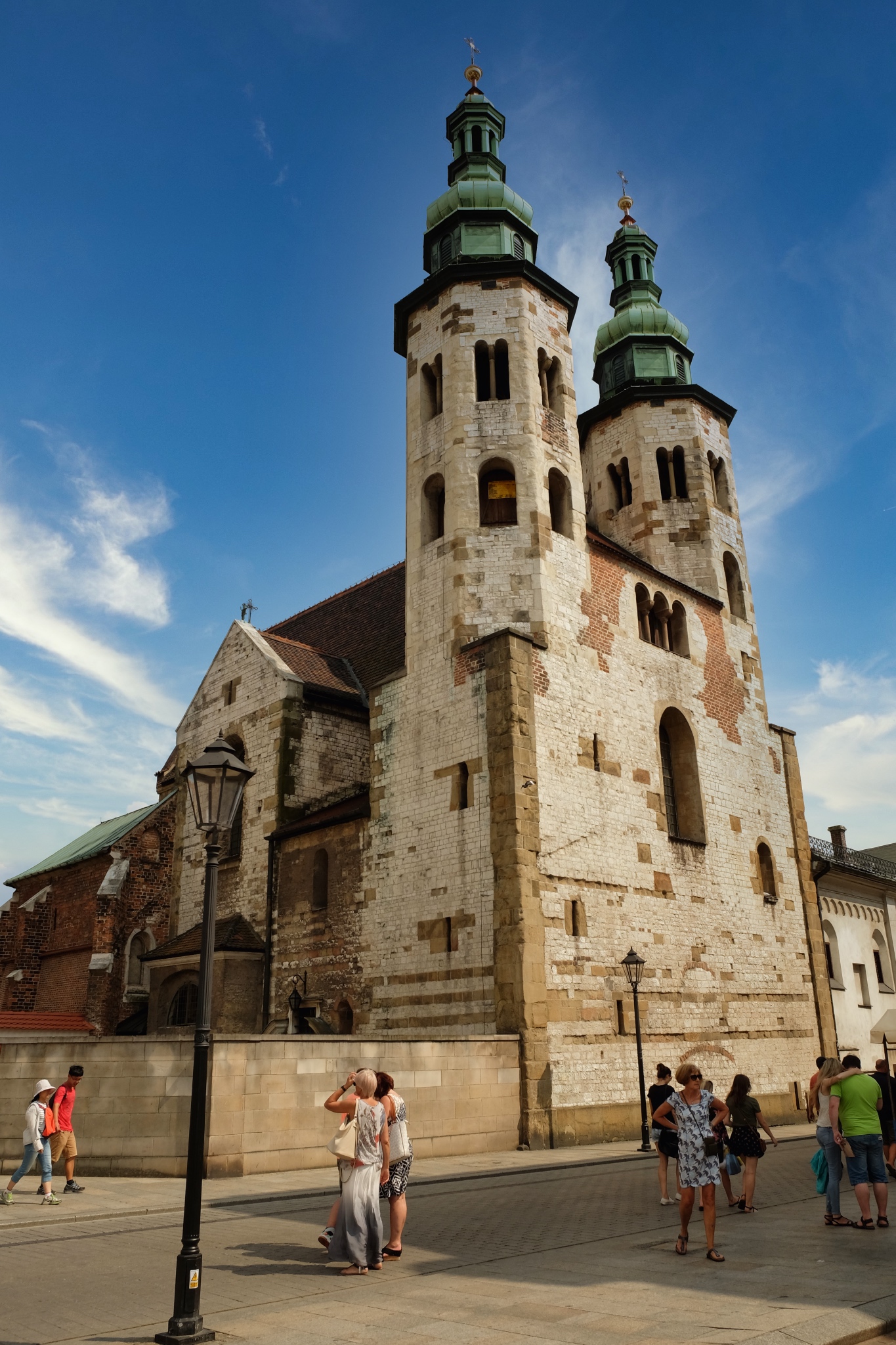 Such a charming old church.
Such a charming old church.
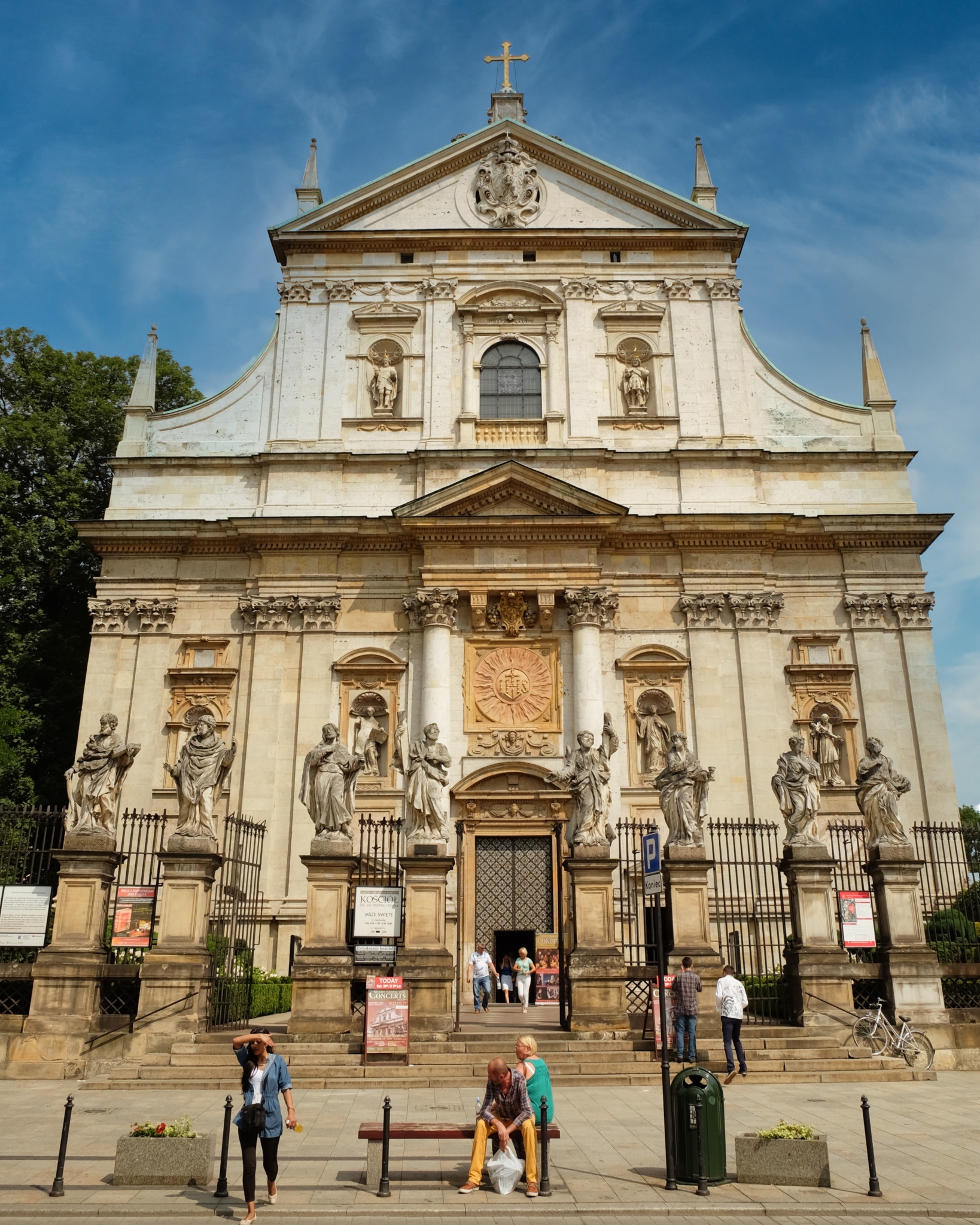 Saints Peter and Paul Church, built 1597 in the Polish Baroque style.
Saints Peter and Paul Church, built 1597 in the Polish Baroque style.
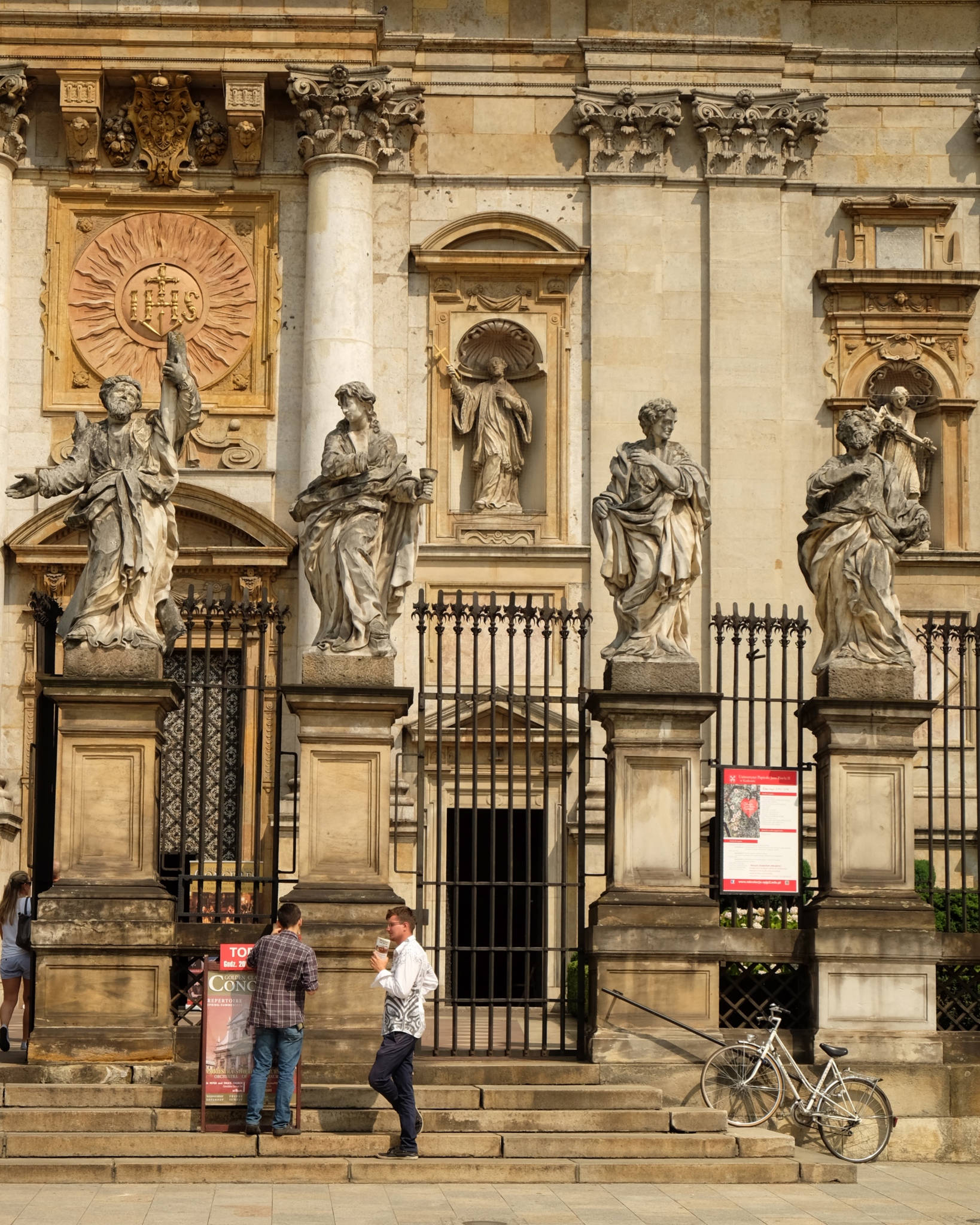 A detail of the Saints Peter and Paul Church . . . looking more like a library than a church somehow.
A detail of the Saints Peter and Paul Church . . . looking more like a library than a church somehow.
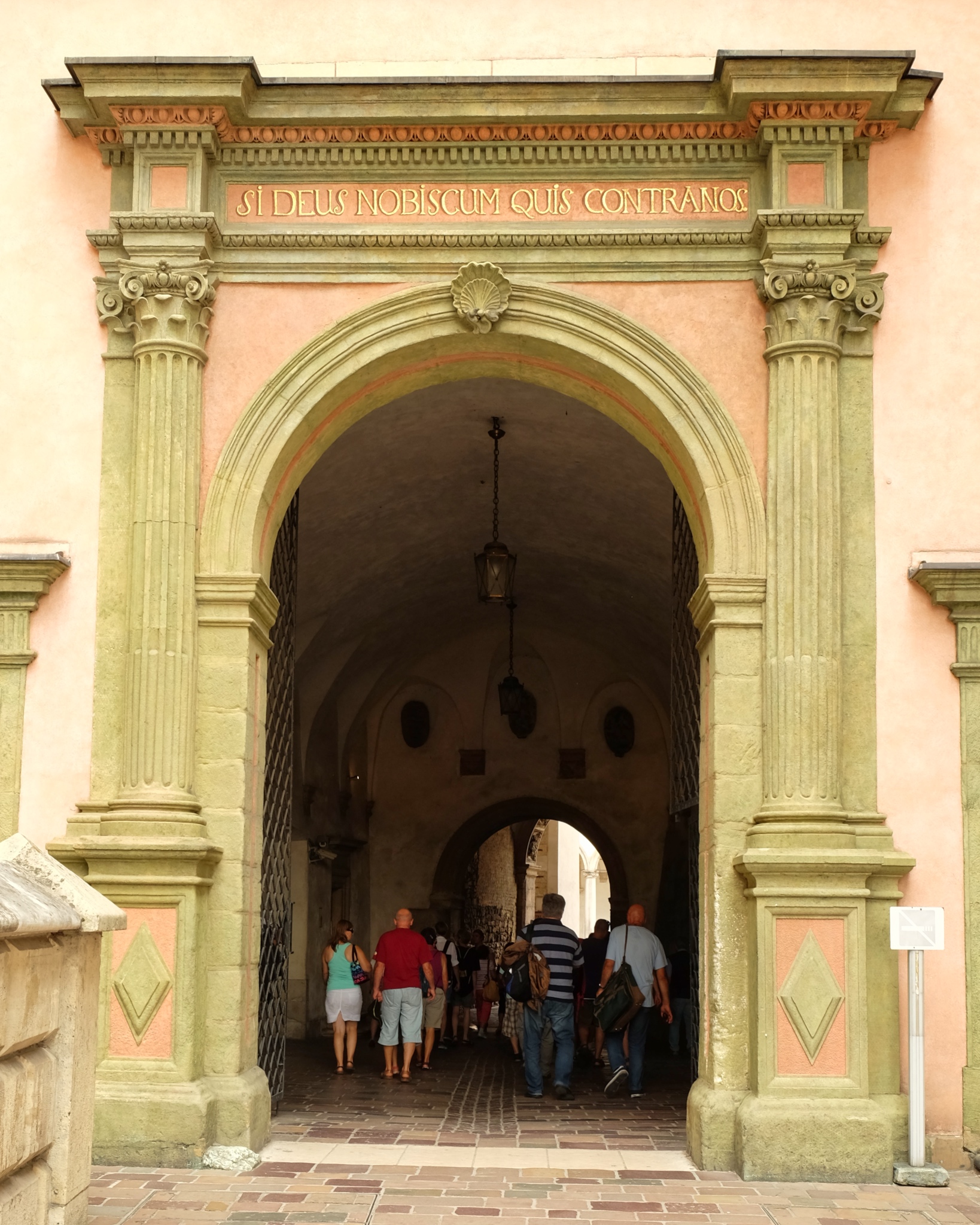 One of the interesting features of Kraków are the many arched passageway through buildings.
One of the interesting features of Kraków are the many arched passageway through buildings.
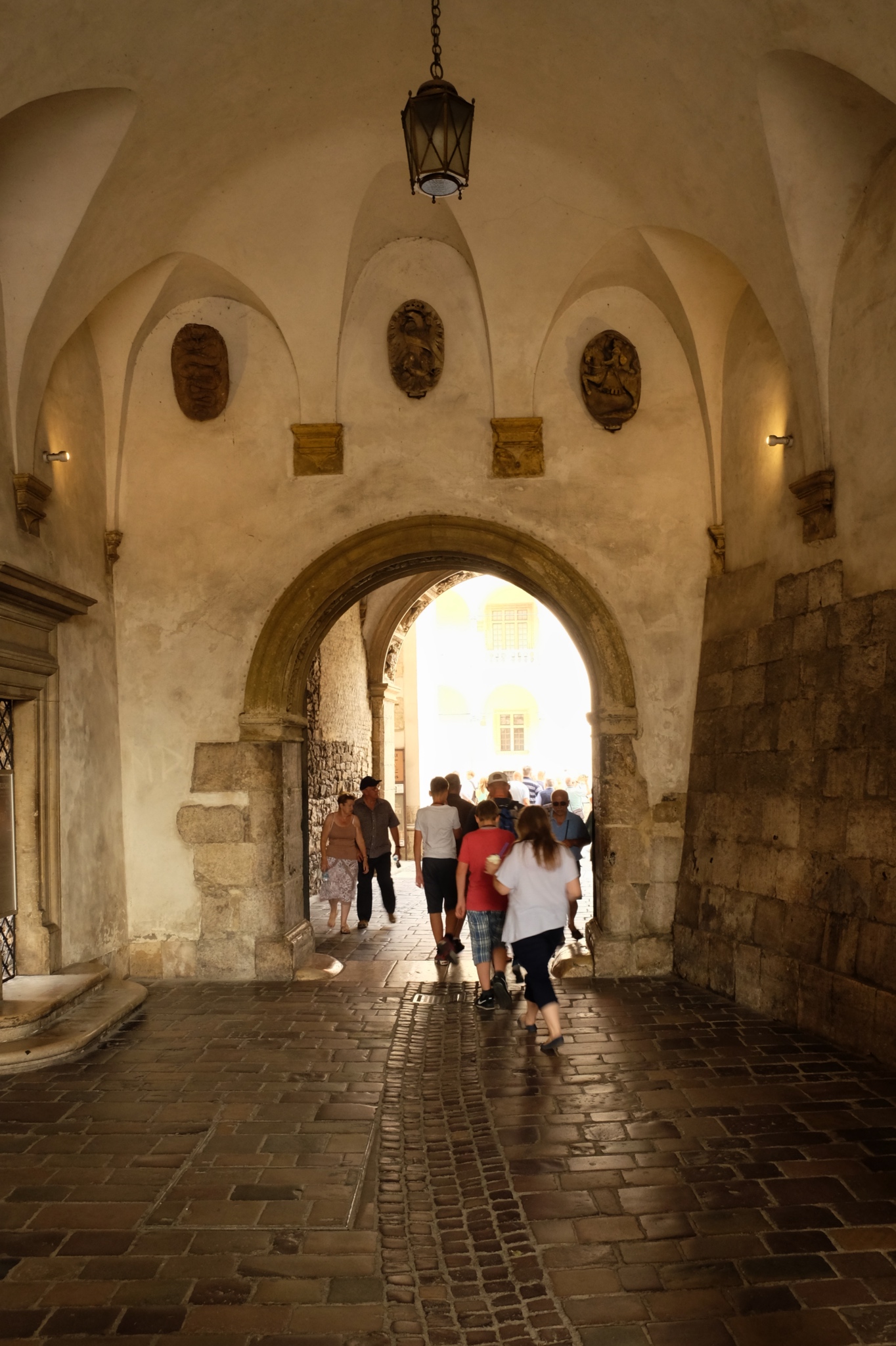 When the street you are walking on takes a turn through an arched passage you never know what you will see on the other side. Wonderful surprises all over town.
When the street you are walking on takes a turn through an arched passage you never know what you will see on the other side. Wonderful surprises all over town.
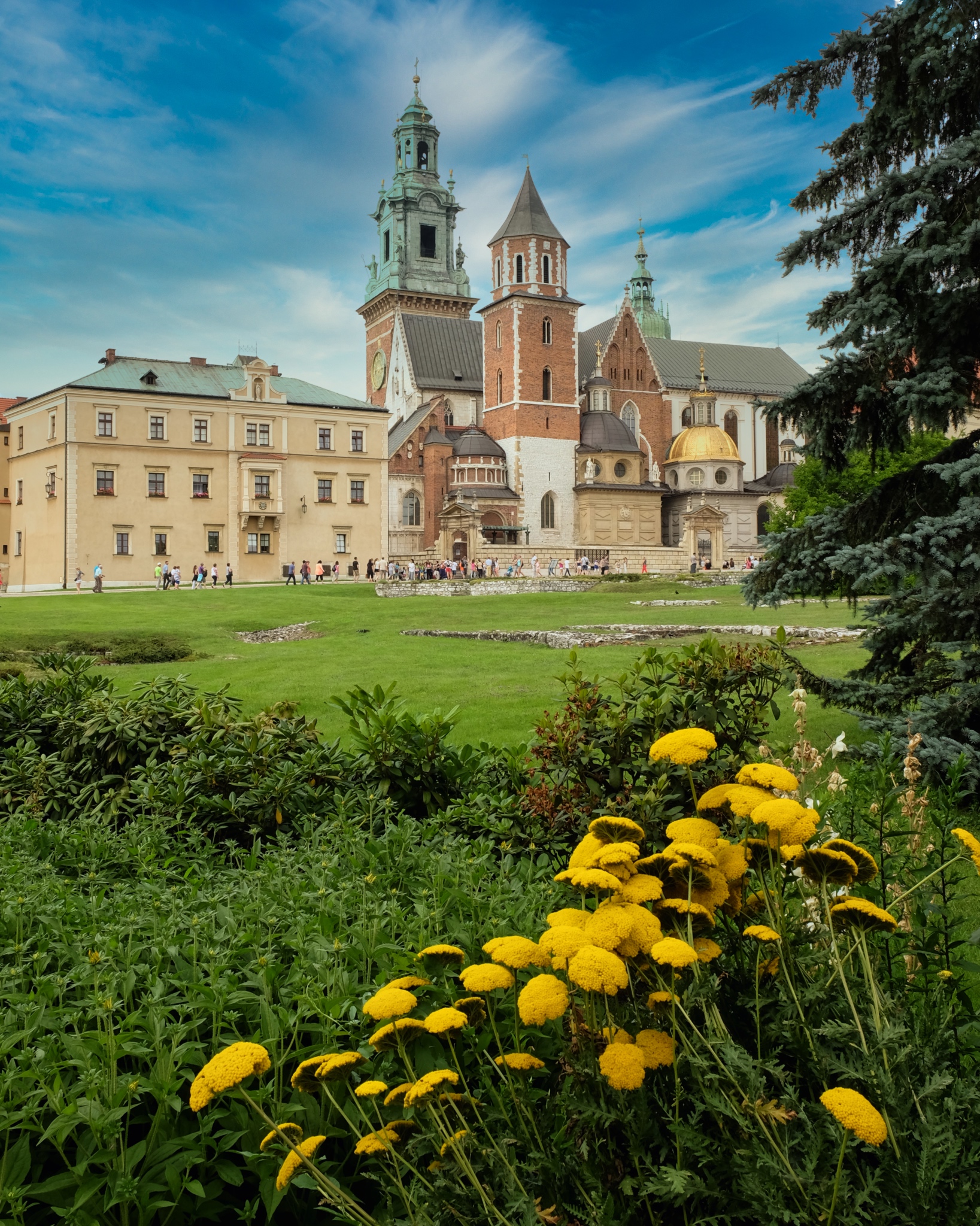 Sometimes you pop put of a street passage onto a beautiful park with. . . .
Sometimes you pop put of a street passage onto a beautiful park with. . . .
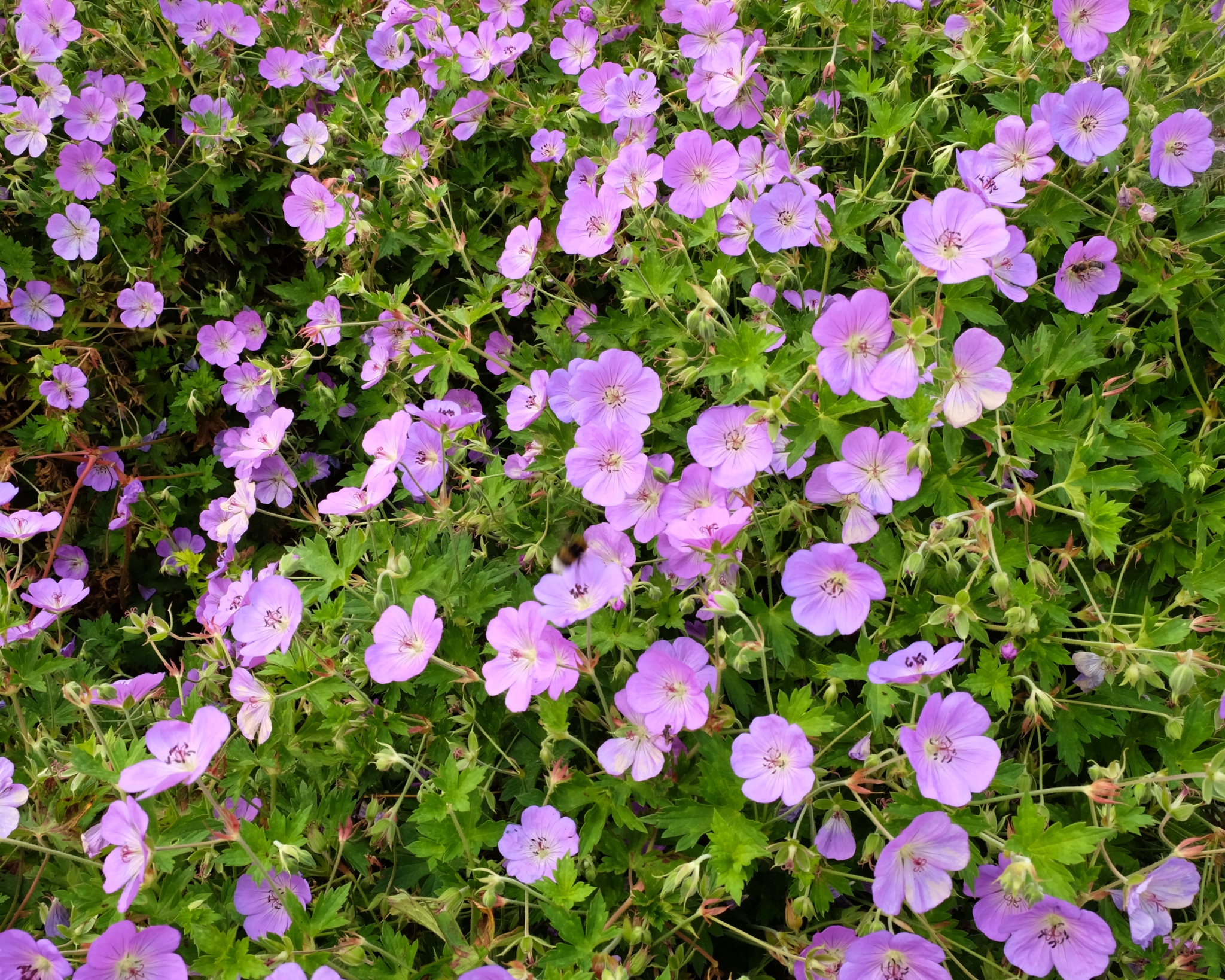 . . . beautiful flower beds.
. . . beautiful flower beds.
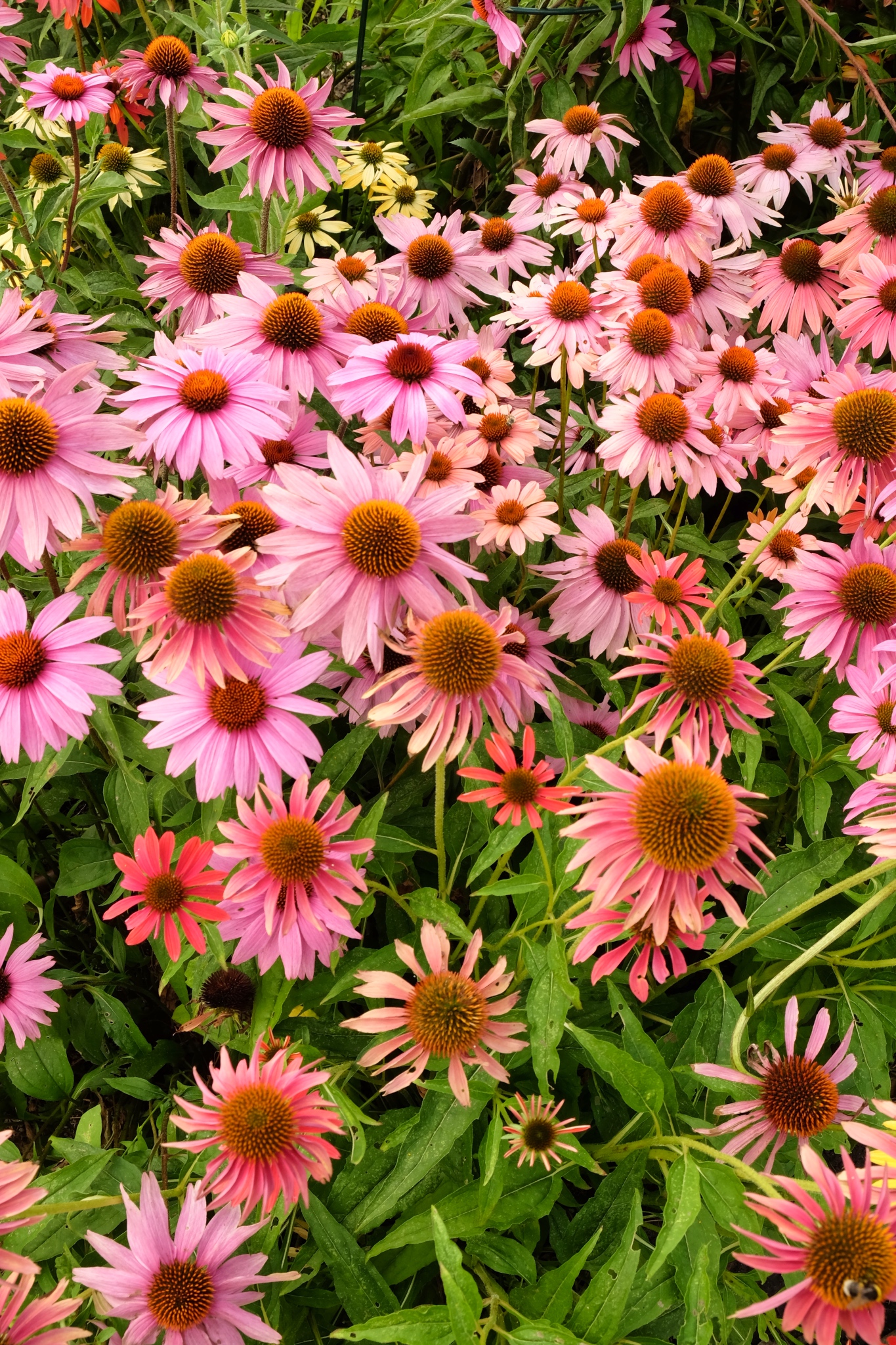 Beautiful summer flowers.
Beautiful summer flowers.
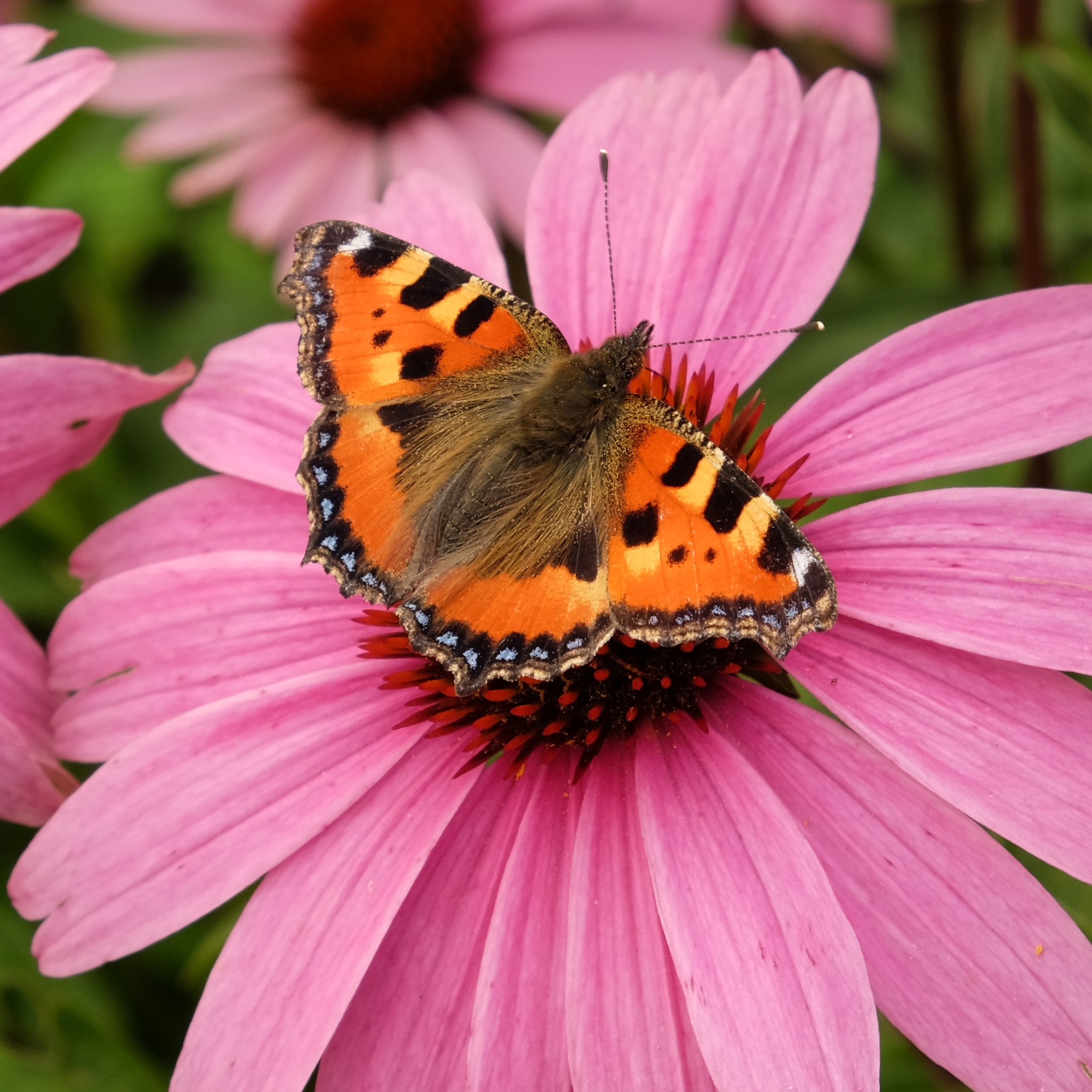 What a wonderful hairy moth flitting from flower to flower.
What a wonderful hairy moth flitting from flower to flower.
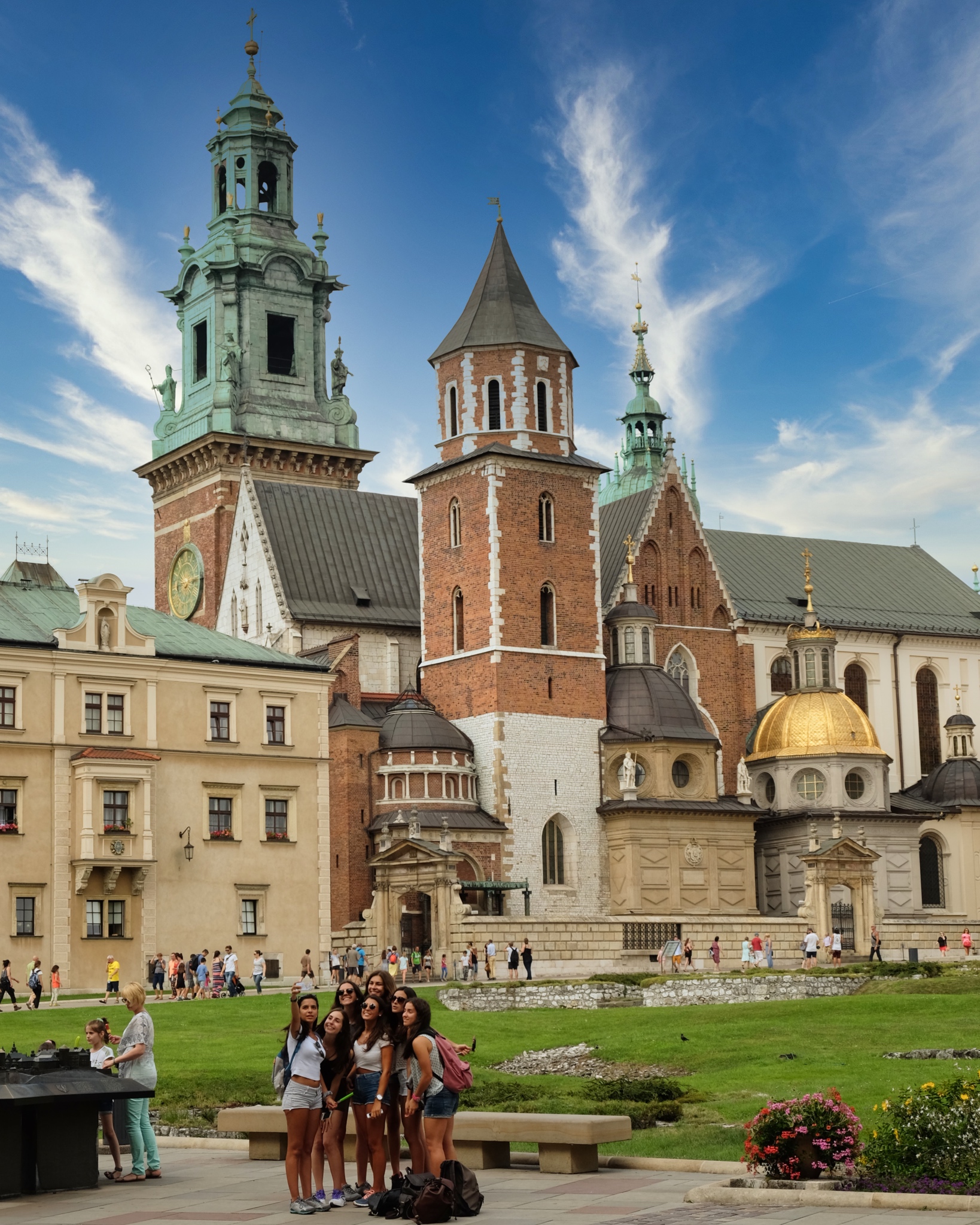 Tourists taking a group selfie in front of the historic Wawel Cathedral, first built in the 11th century, burned in 1302, and rebuilt in the 14th century.
Tourists taking a group selfie in front of the historic Wawel Cathedral, first built in the 11th century, burned in 1302, and rebuilt in the 14th century.
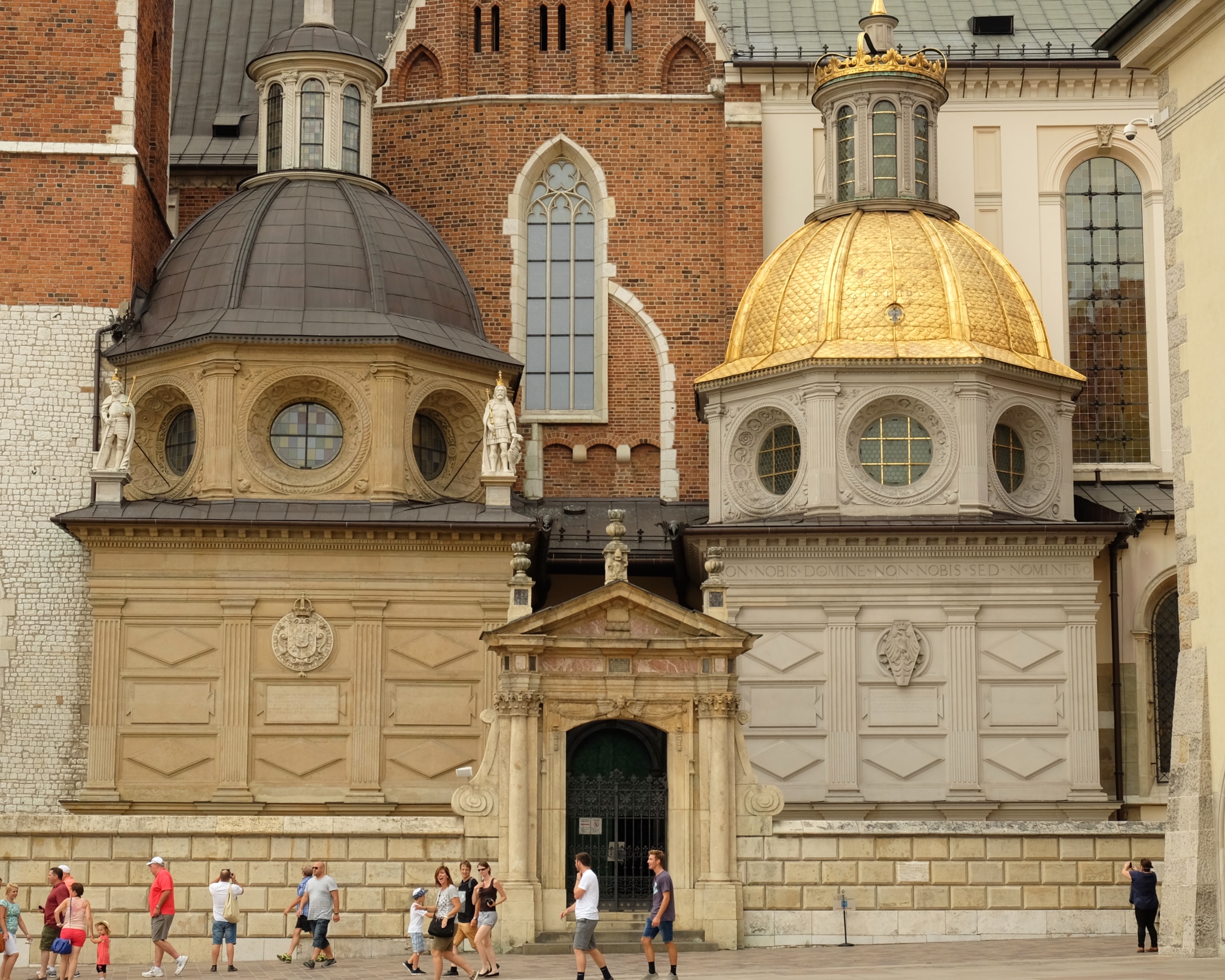 The domed facade of Wawel Cathedral.
The domed facade of Wawel Cathedral.
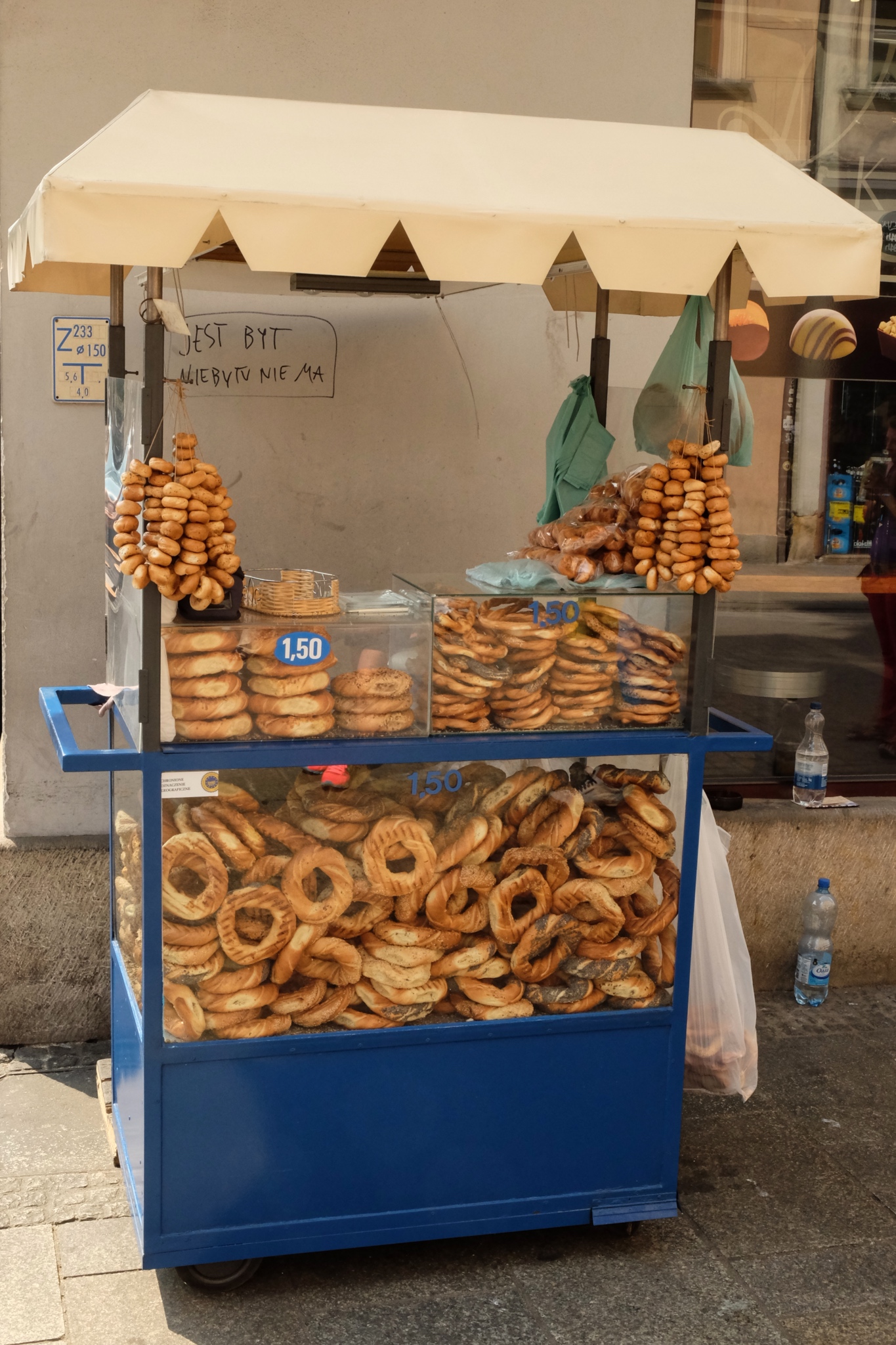 Beautiful bread snackage.
Beautiful bread snackage.
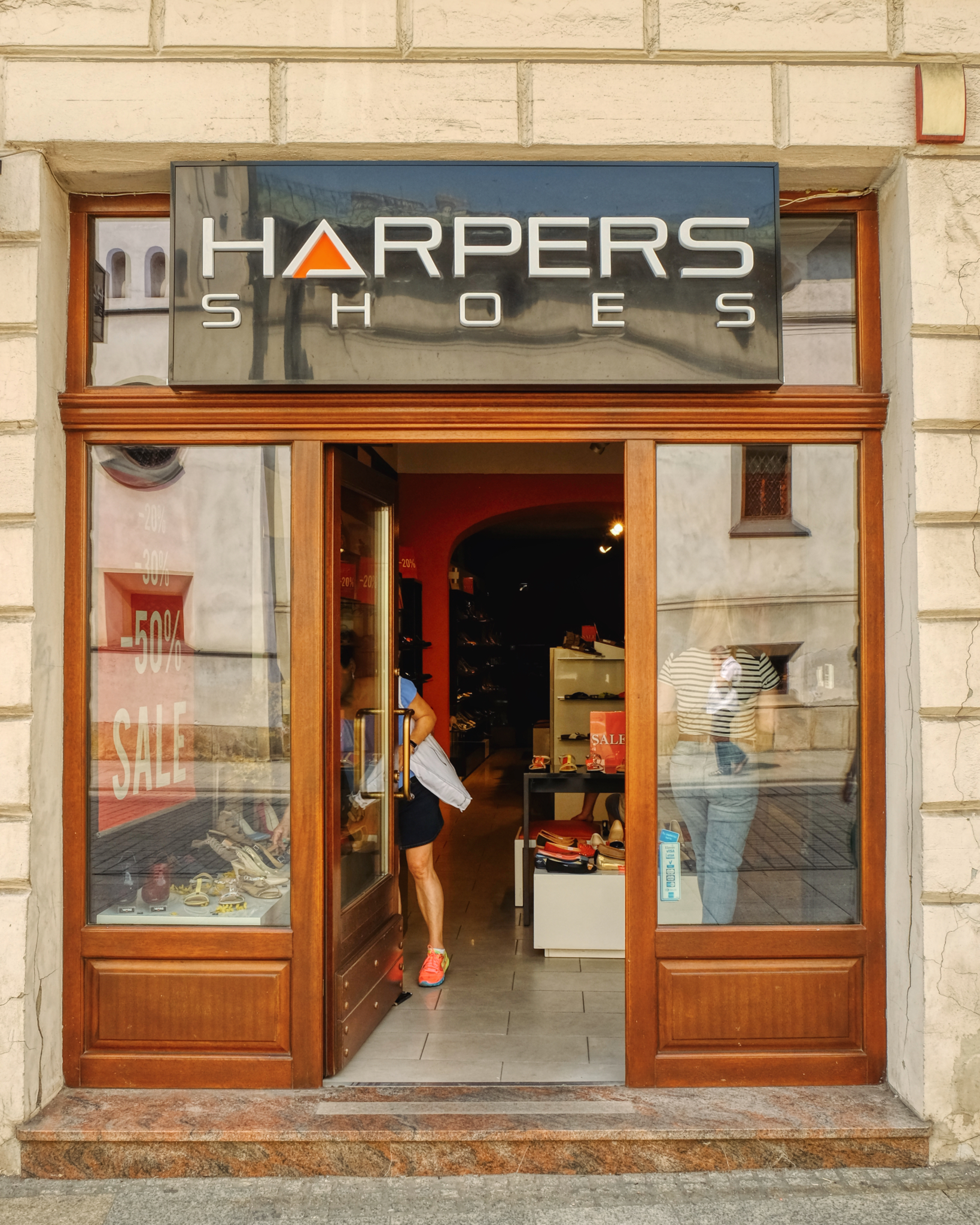 I couldn't resist!!!
I couldn't resist!!!
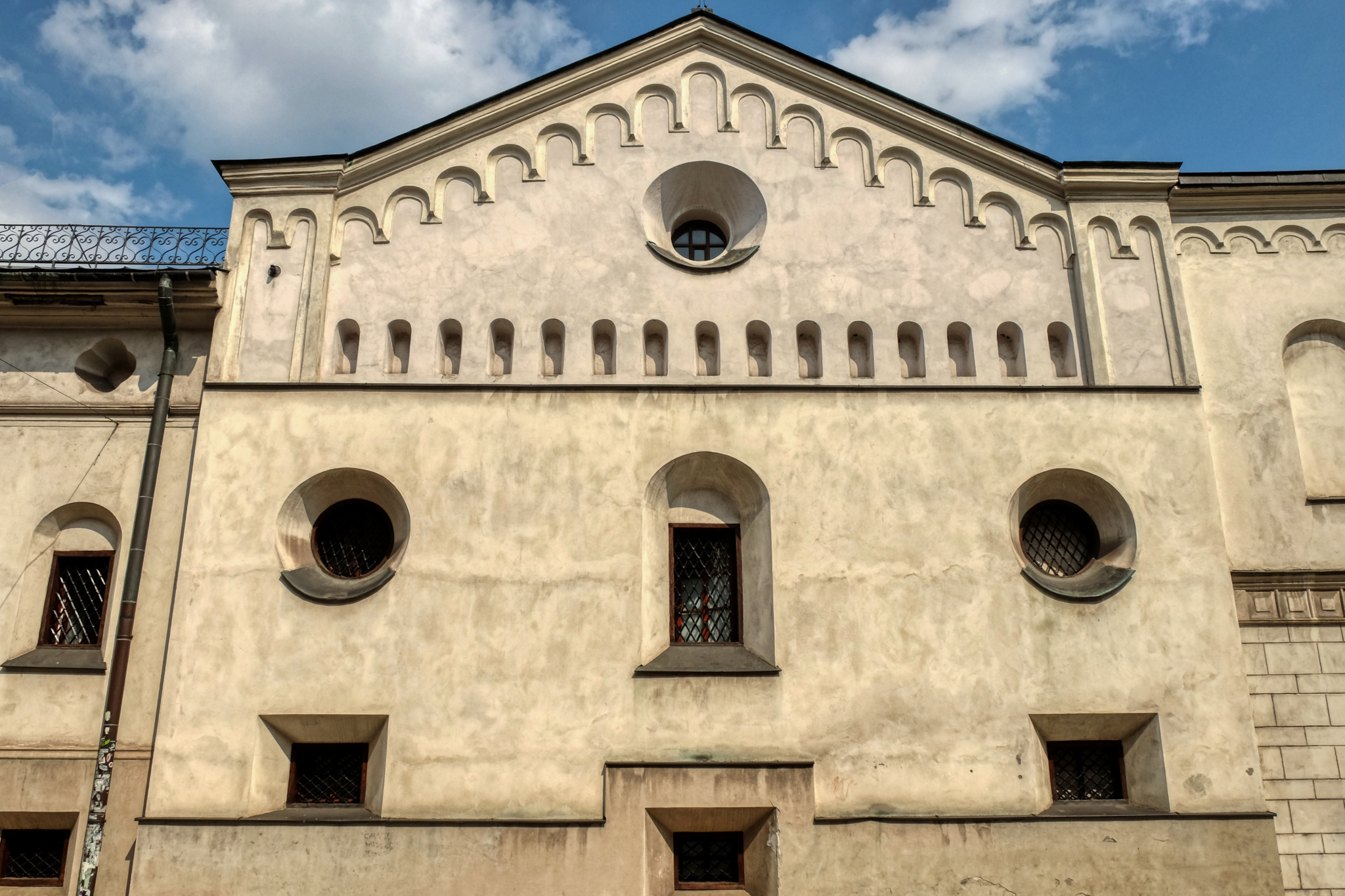 I absolutely love the architectural style of this city center monastery.
I absolutely love the architectural style of this city center monastery.
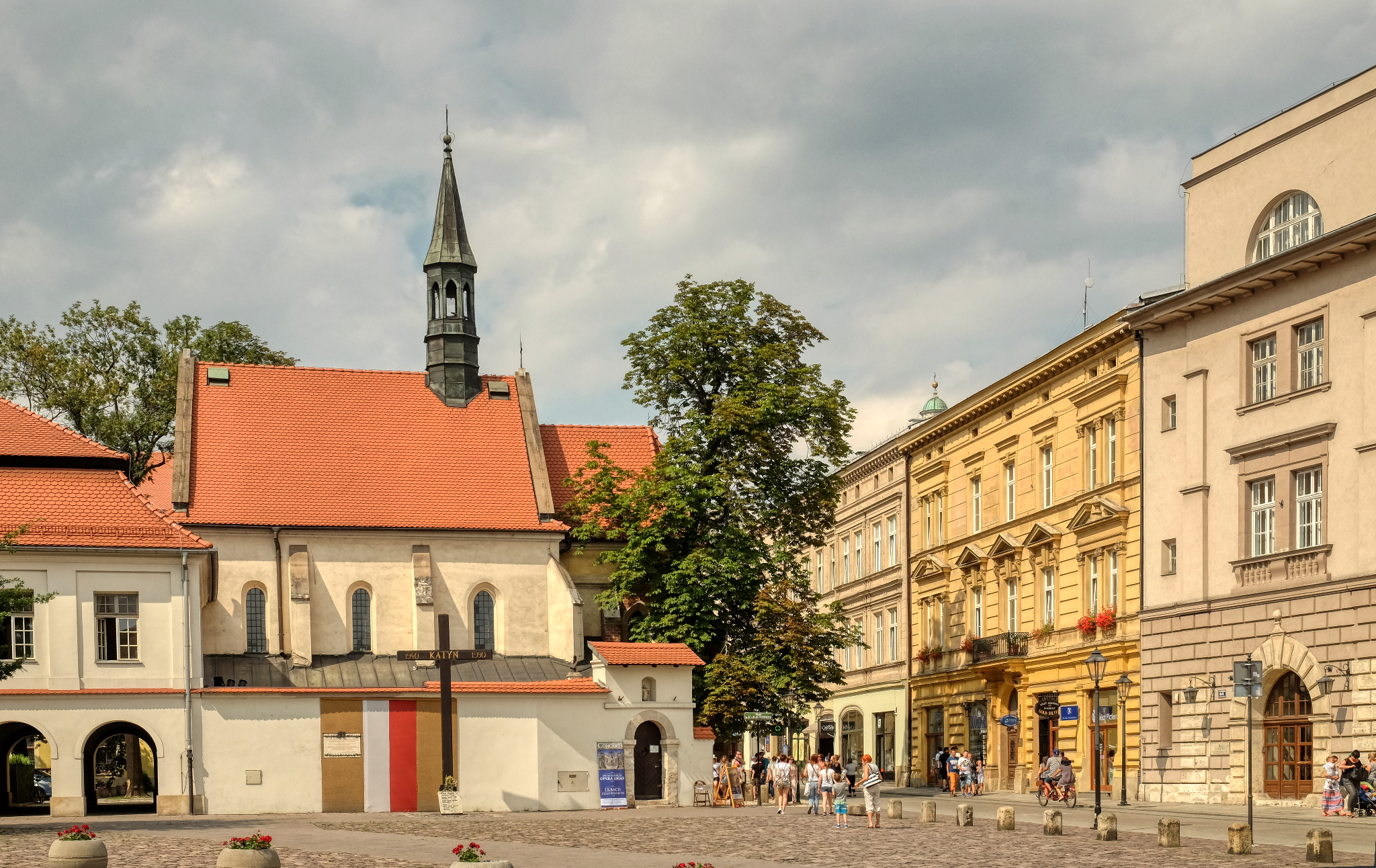 A wonderful city for just ambling around.
A wonderful city for just ambling around.
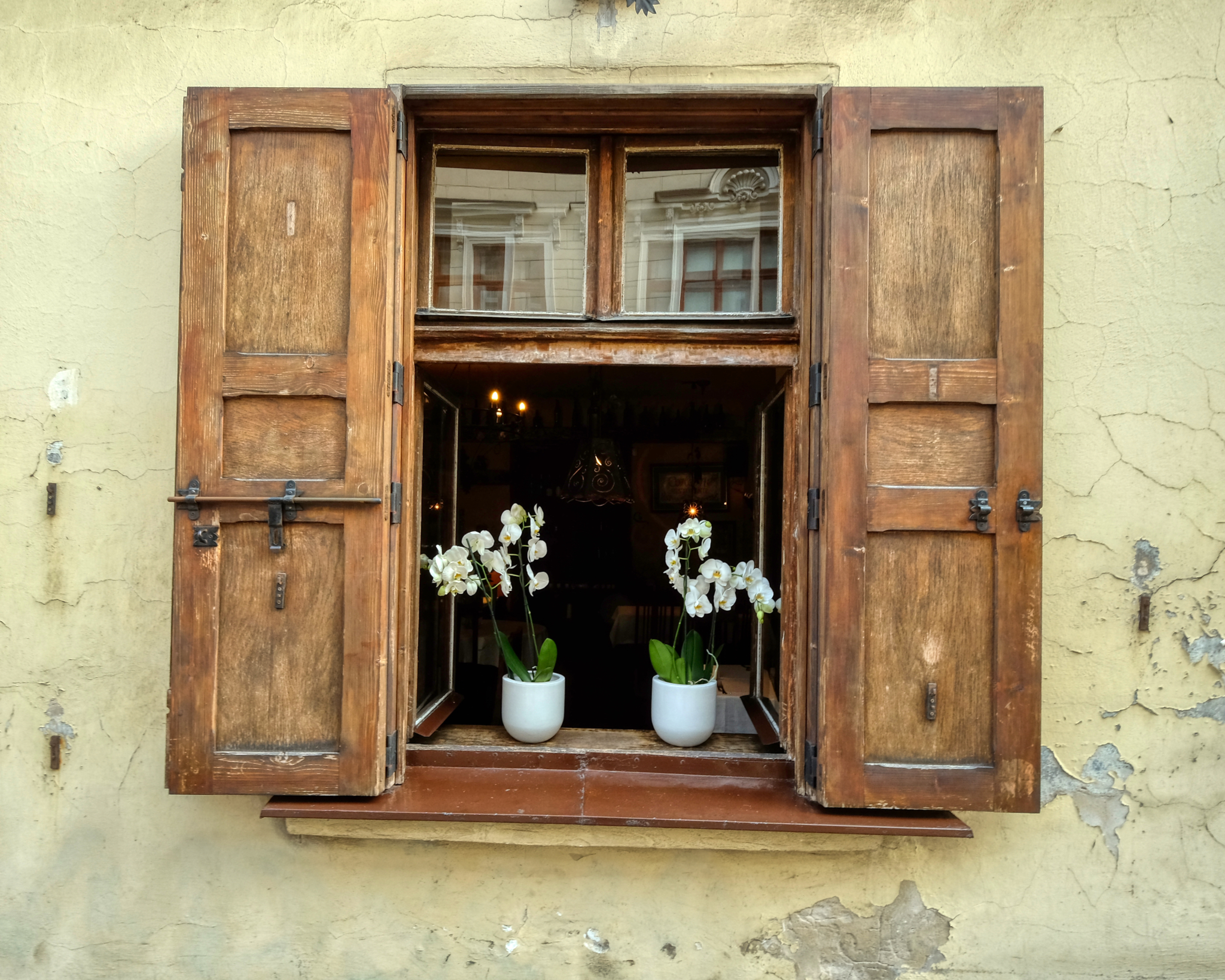 Ah! Orchids! Reminded us of our home in Thailand.
Ah! Orchids! Reminded us of our home in Thailand.
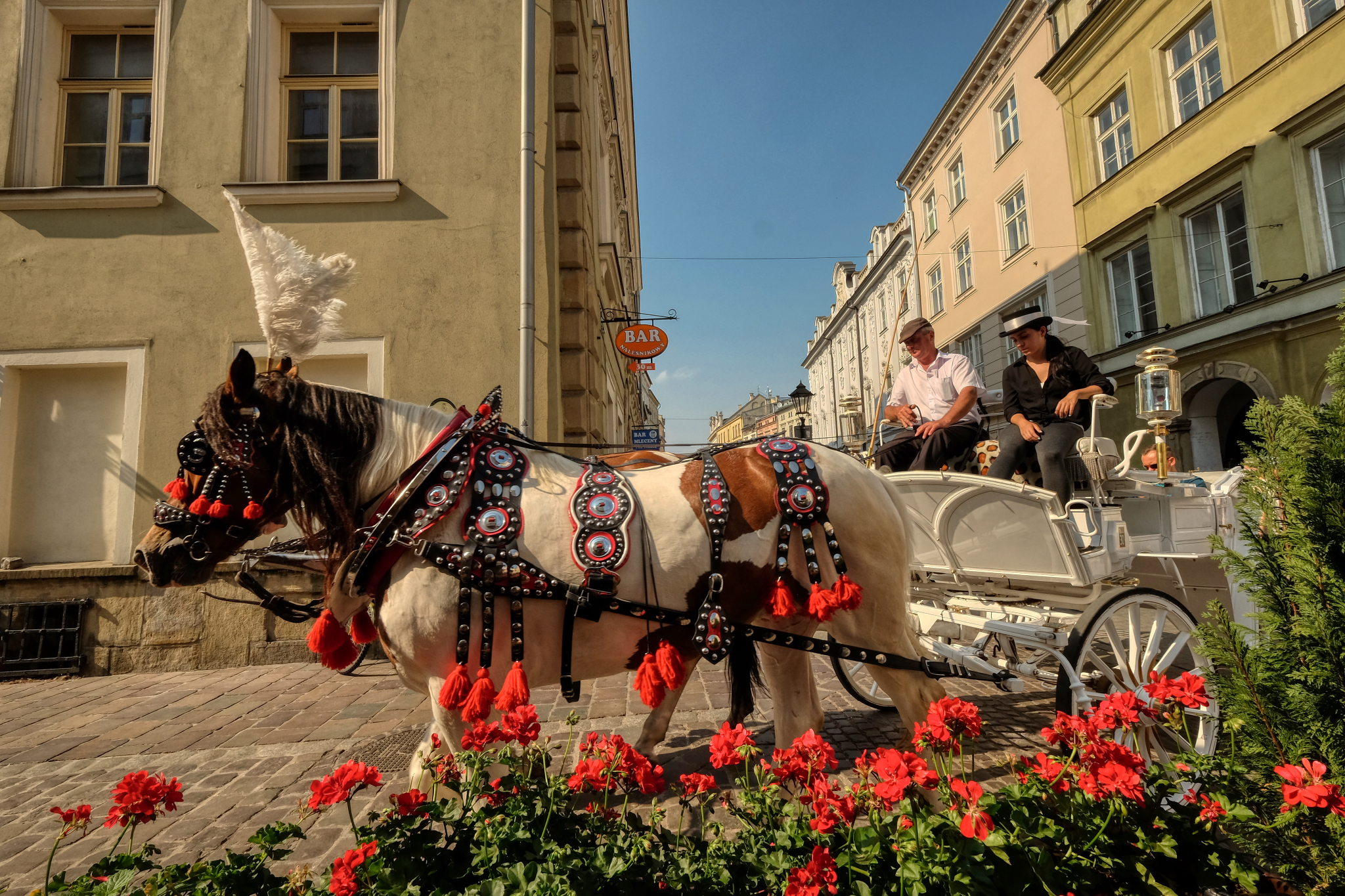 We stopped in at a cafe on a small side street only to discover it was on the route of the central square horse carriage route. They came by every two minutes!
We stopped in at a cafe on a small side street only to discover it was on the route of the central square horse carriage route. They came by every two minutes!
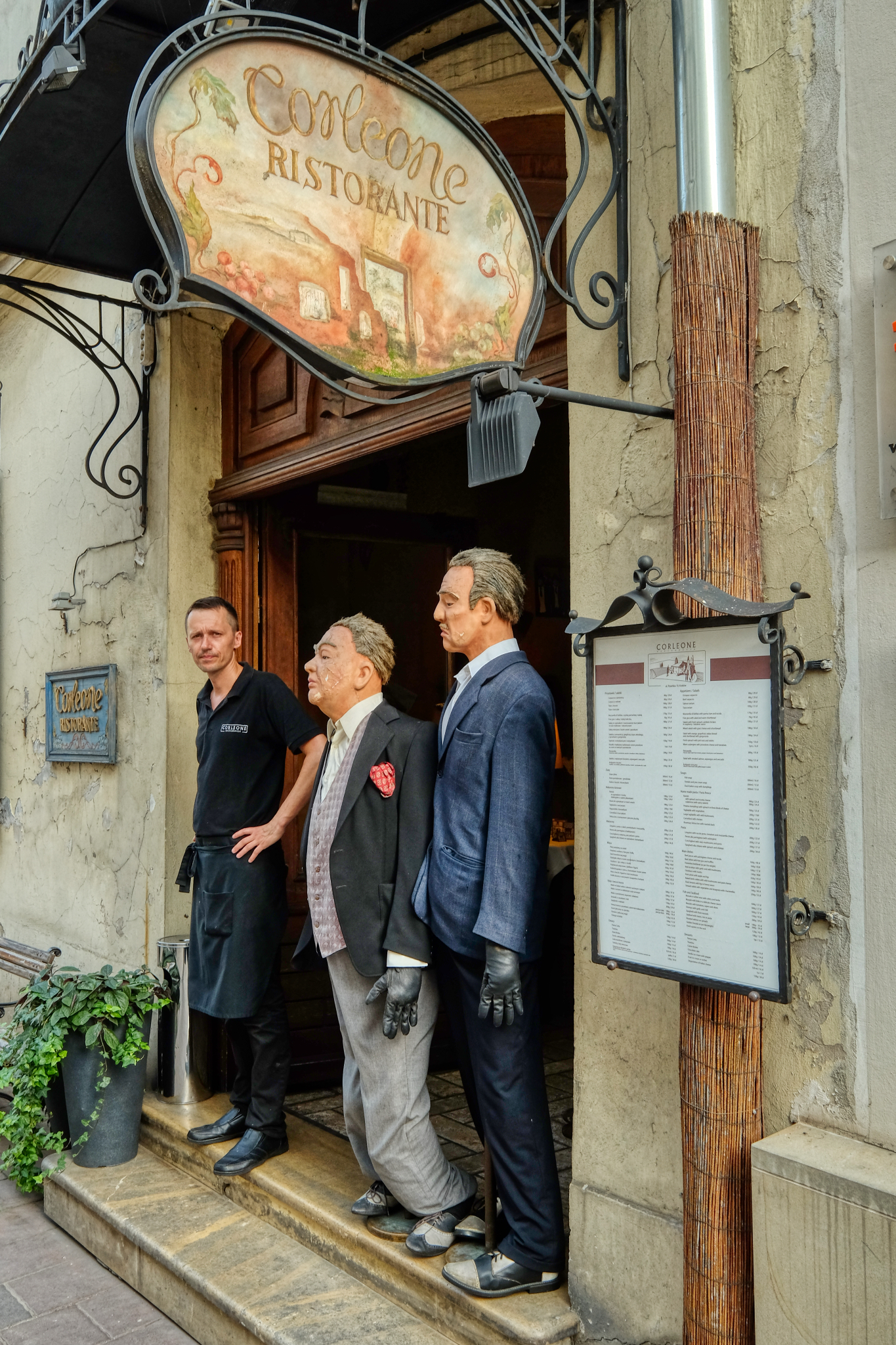 A restaurateur with a sense of humor.
A restaurateur with a sense of humor.
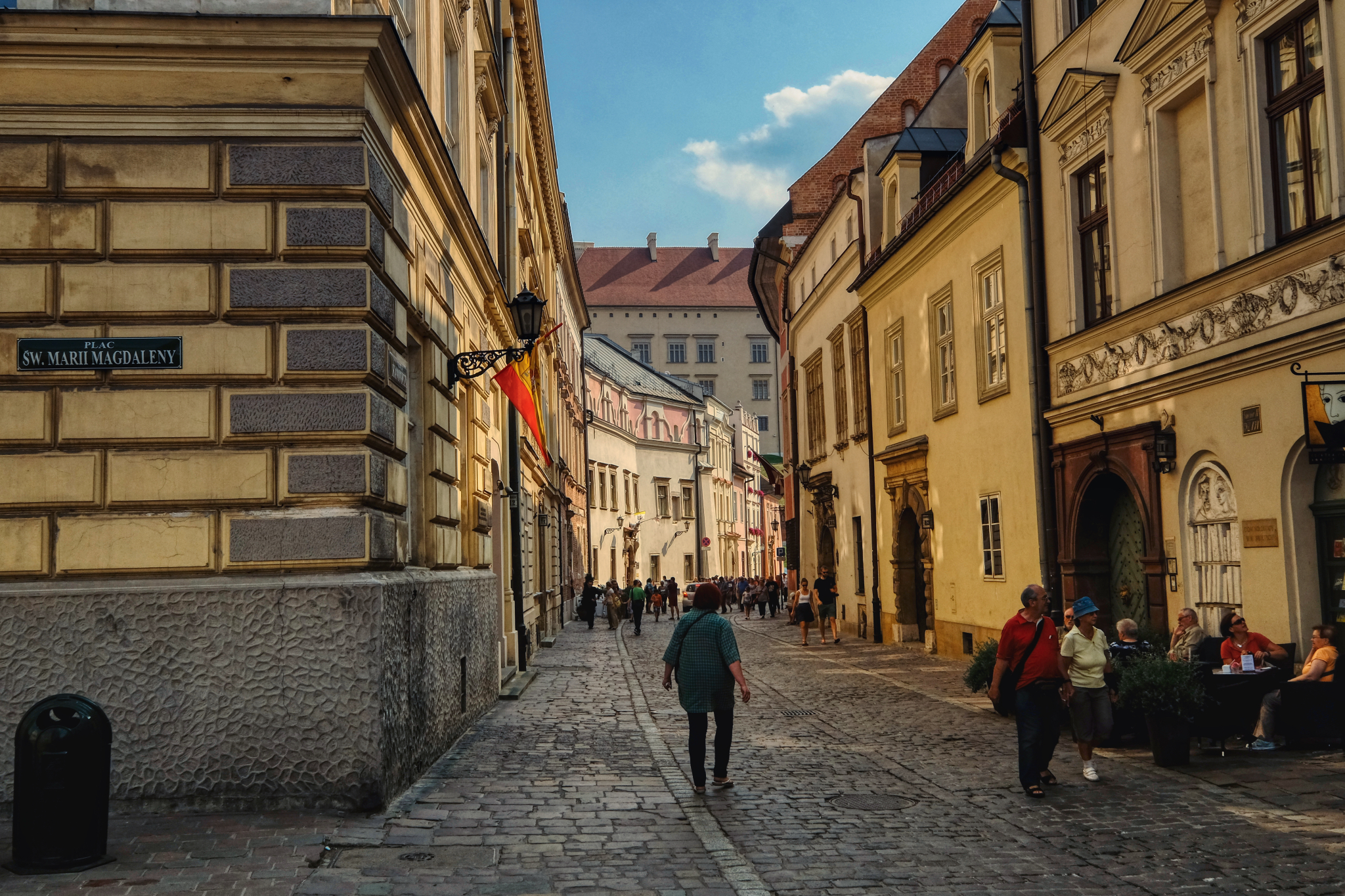 Lovely medieval cobbled lanes.
Lovely medieval cobbled lanes.
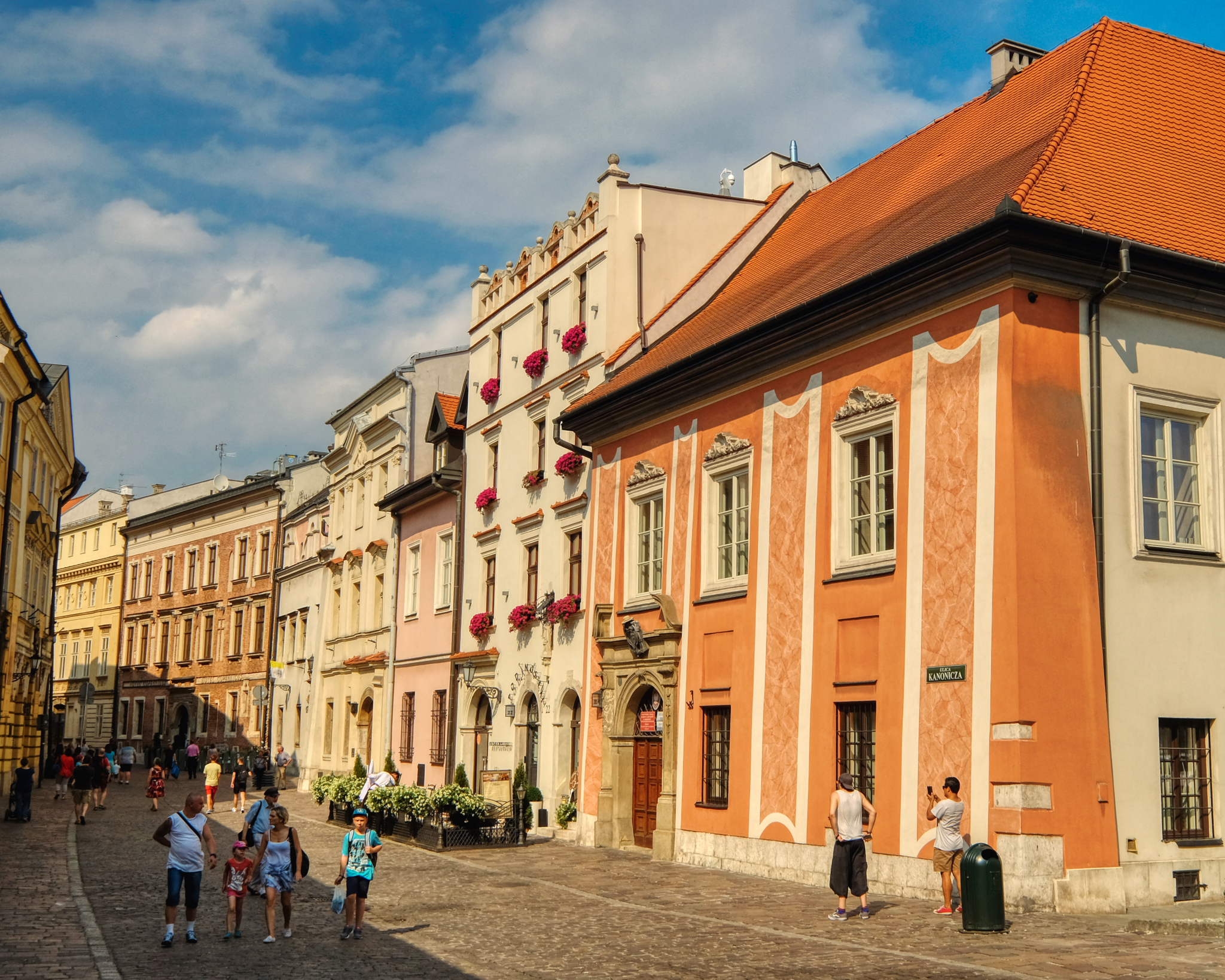 The old medieval city center as it was 500 years ago . . .
The old medieval city center as it was 500 years ago . . .
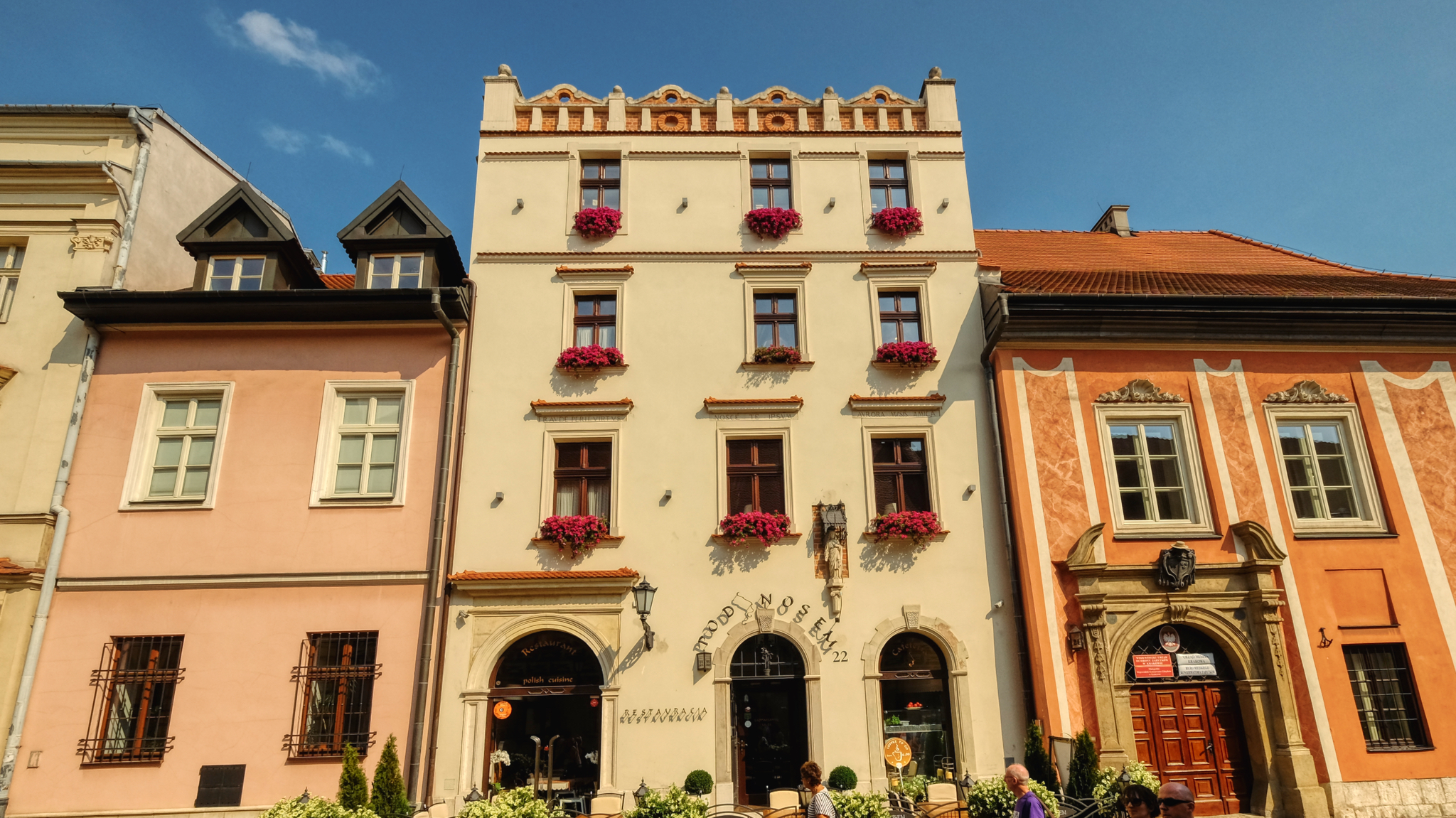 Beautifully decorated and adorned cityscape.
Beautifully decorated and adorned cityscape.
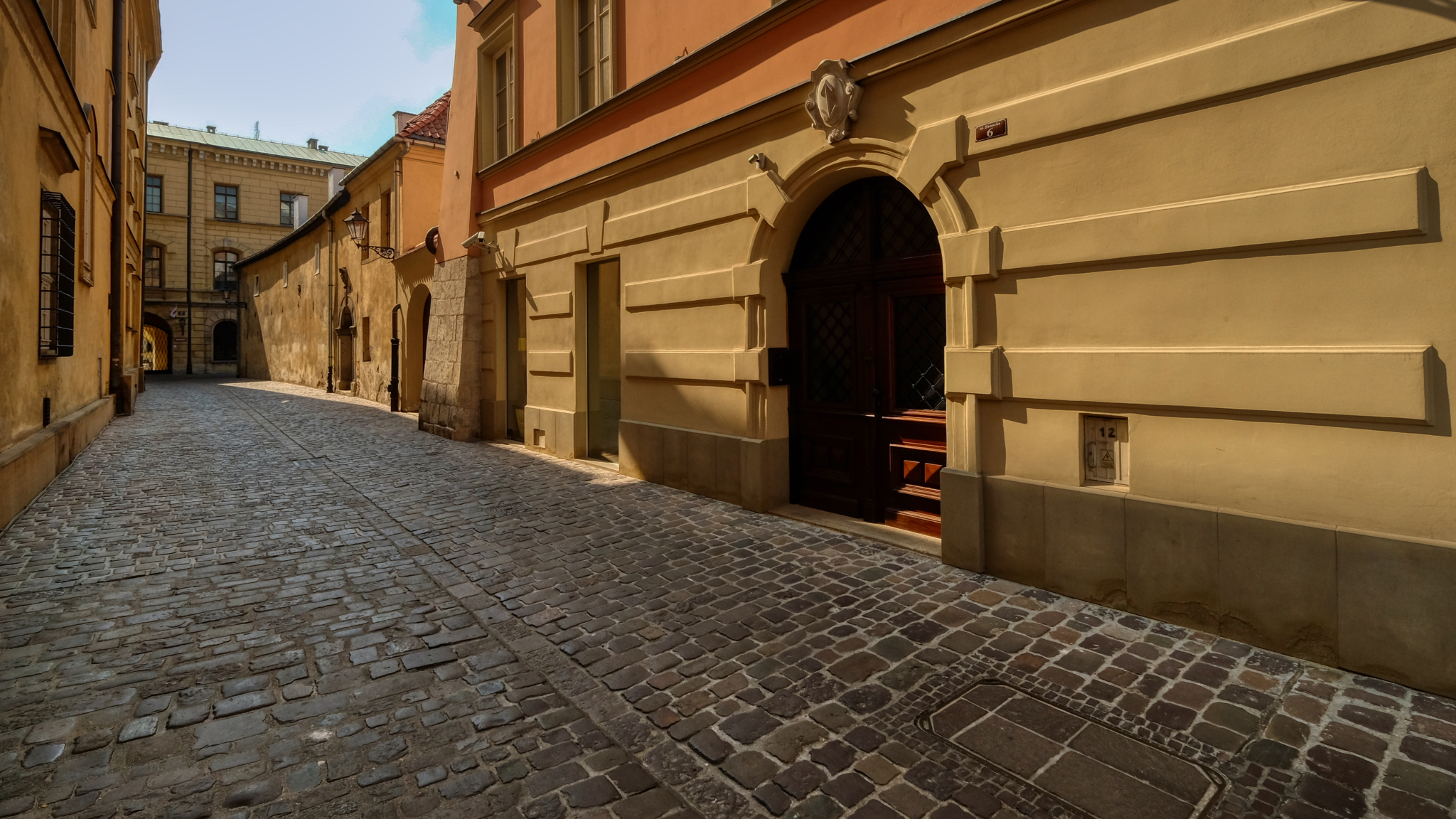 Monumental architecture along a cobbled alley.
Monumental architecture along a cobbled alley.
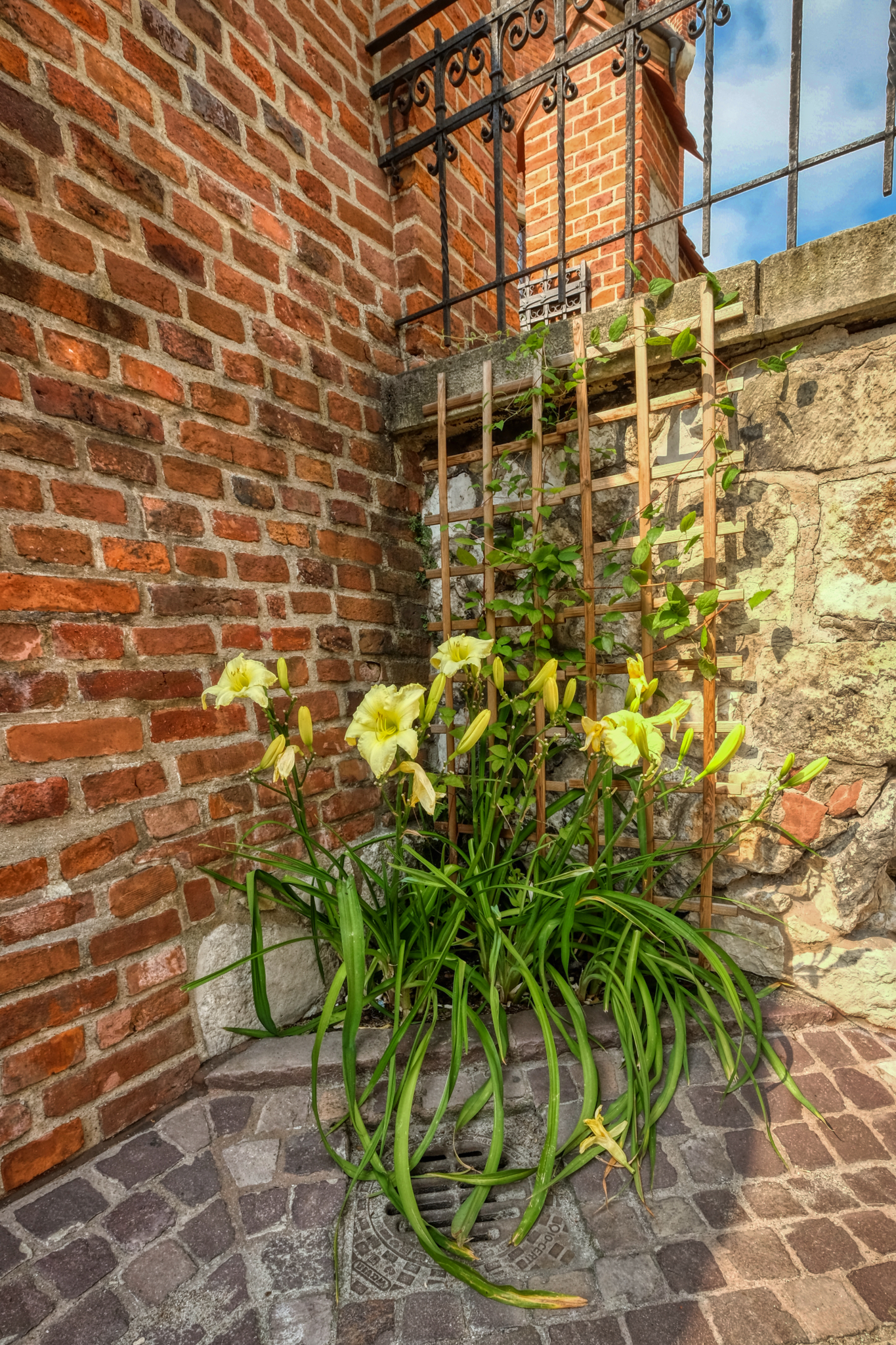 Little beauty arrangements here and there throughout this charming old city.
Little beauty arrangements here and there throughout this charming old city.
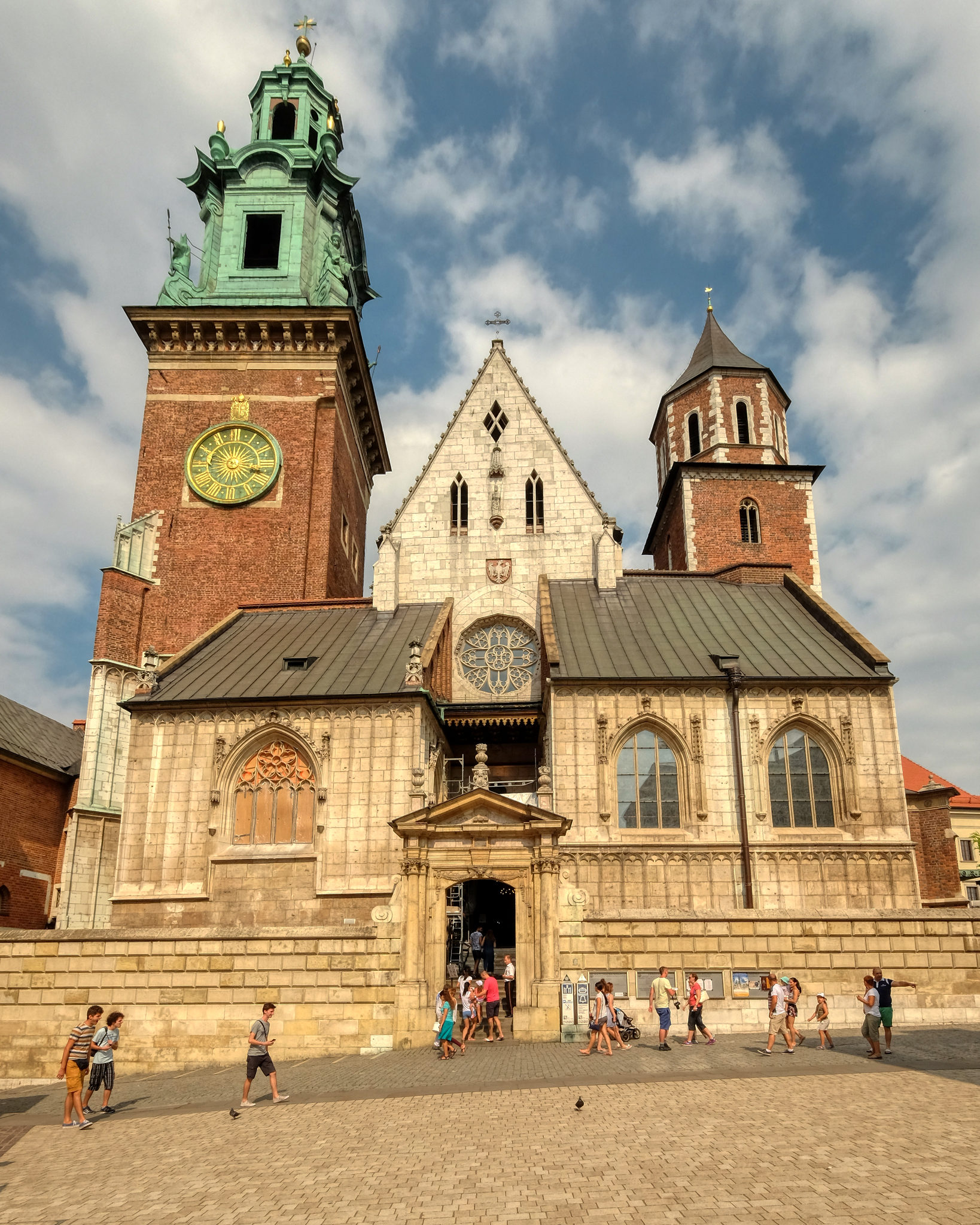 The castle chapel square.
The castle chapel square.
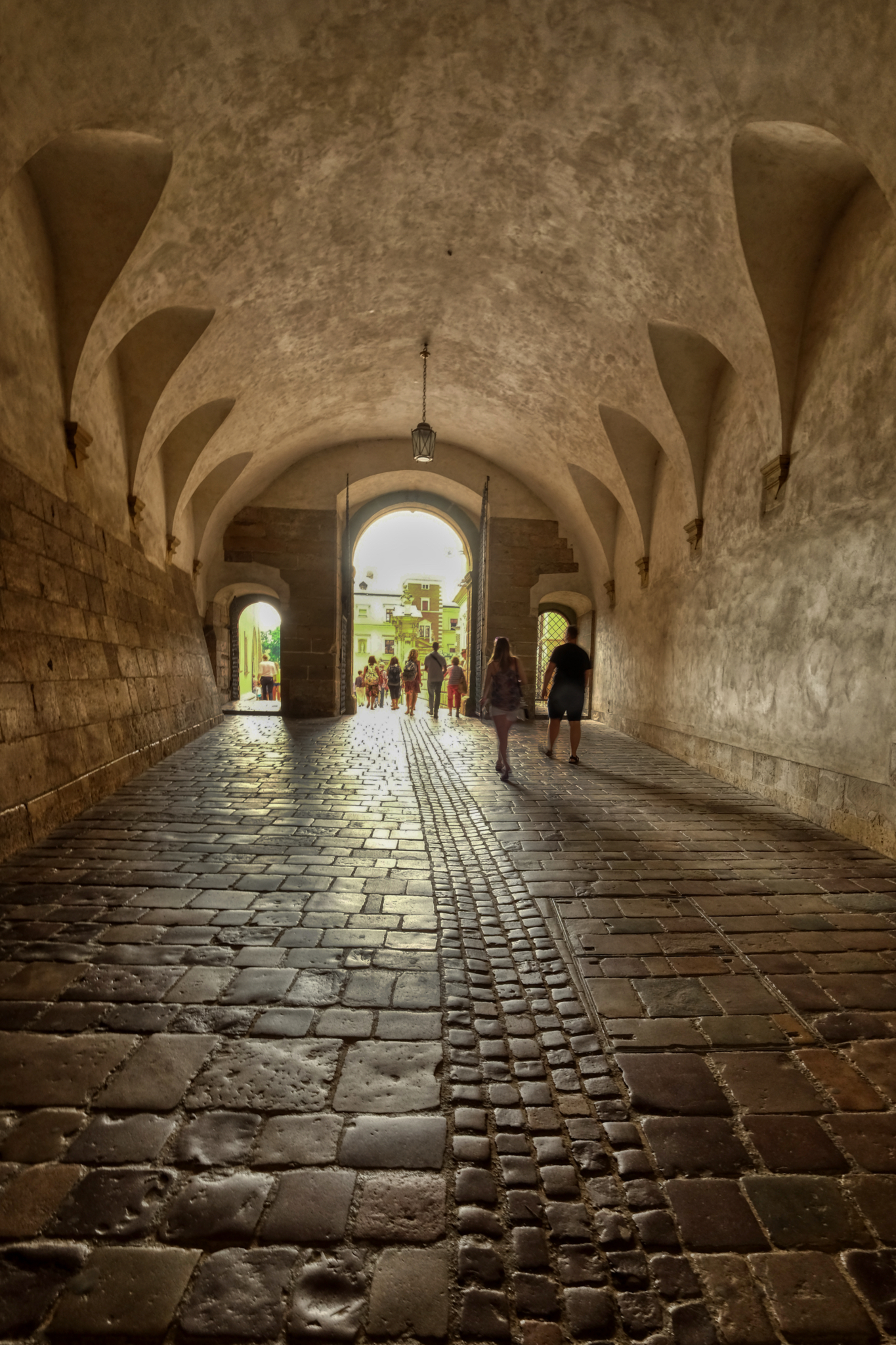 A passage to . . . ?
A passage to . . . ?
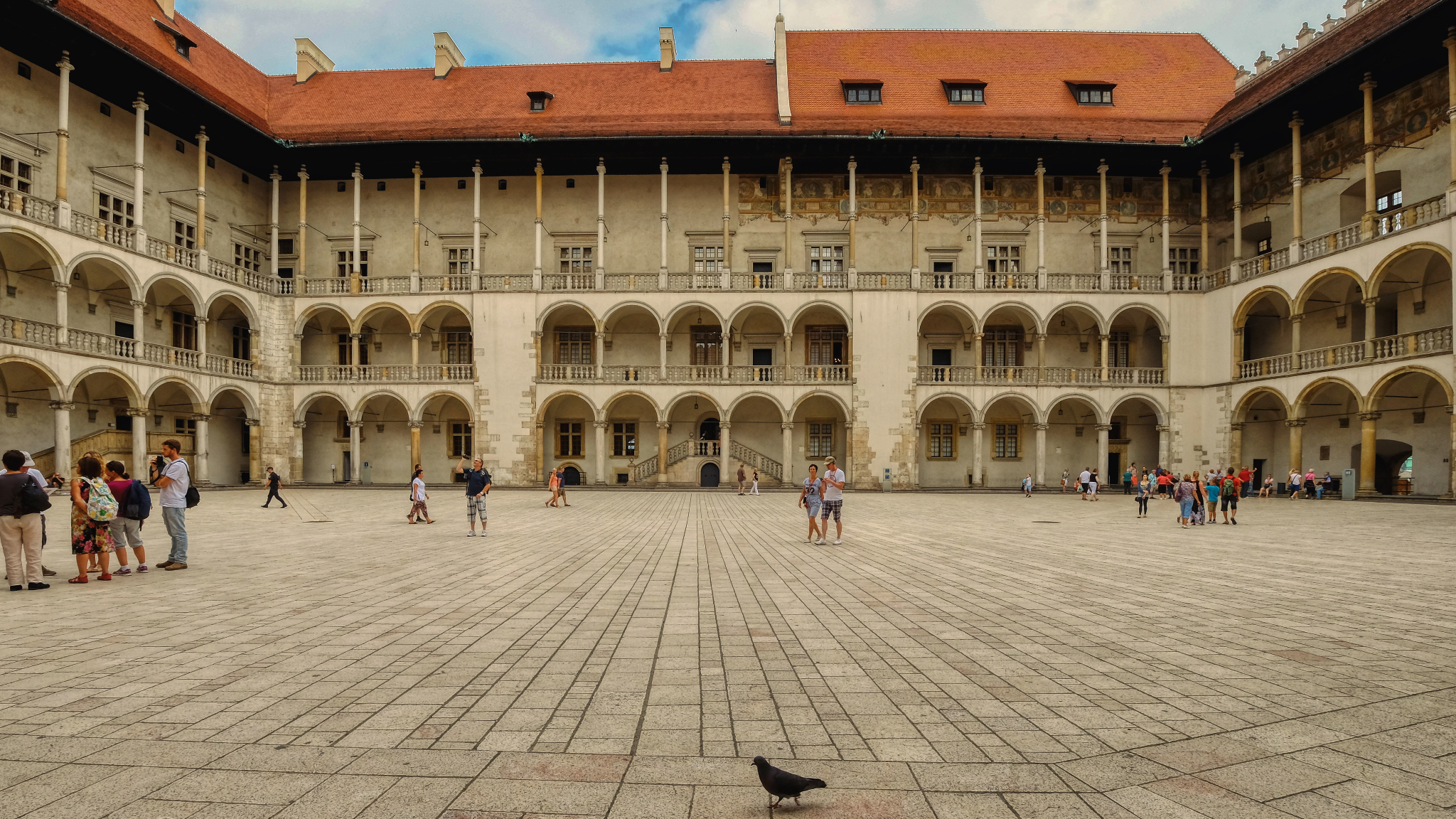 The courtyard of Kraców's Wawel Castle.
The courtyard of Kraców's Wawel Castle.
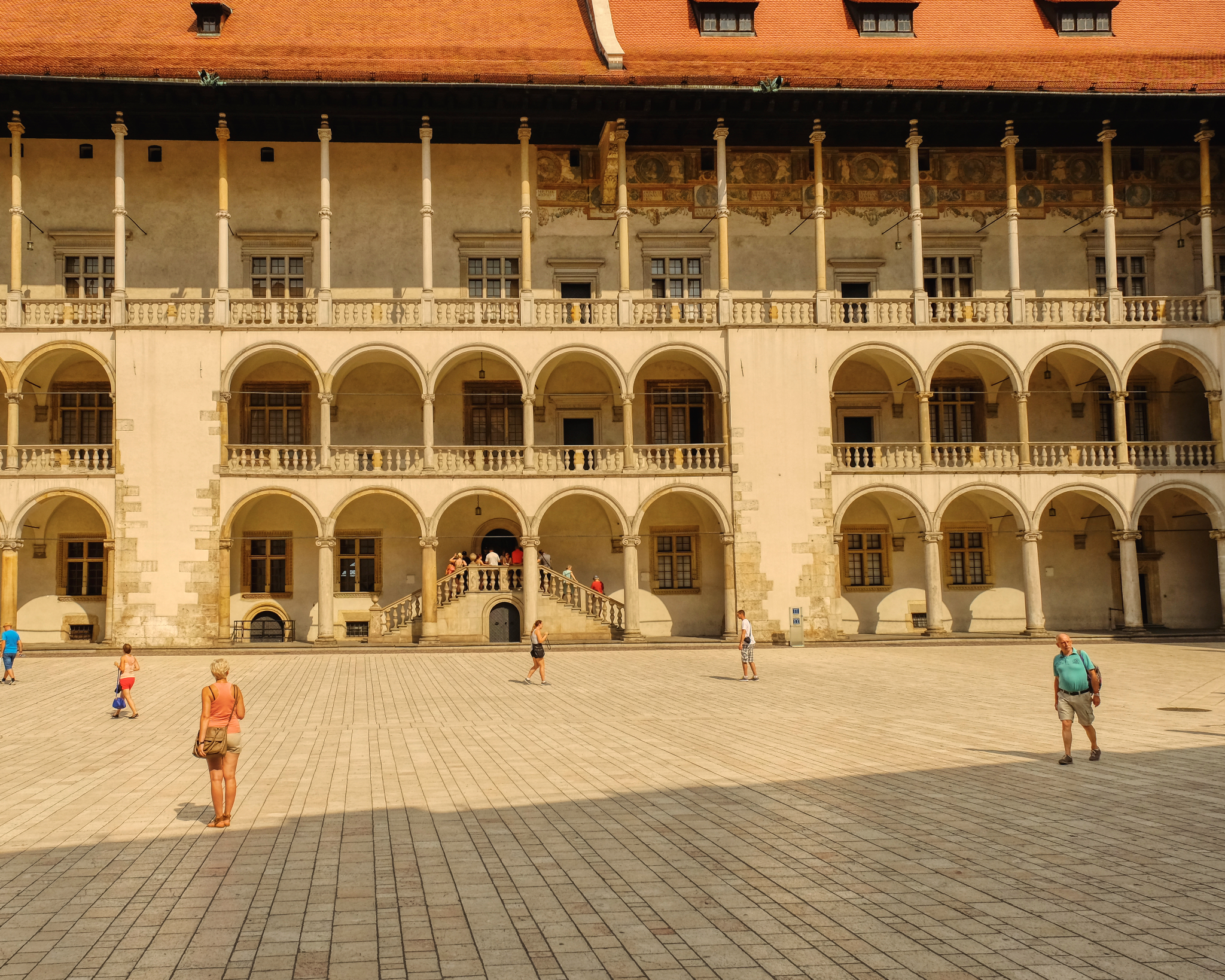 The castle courtyard . . . layers of balconies and doors . . . what mysteries have taken place here?
The castle courtyard . . . layers of balconies and doors . . . what mysteries have taken place here?
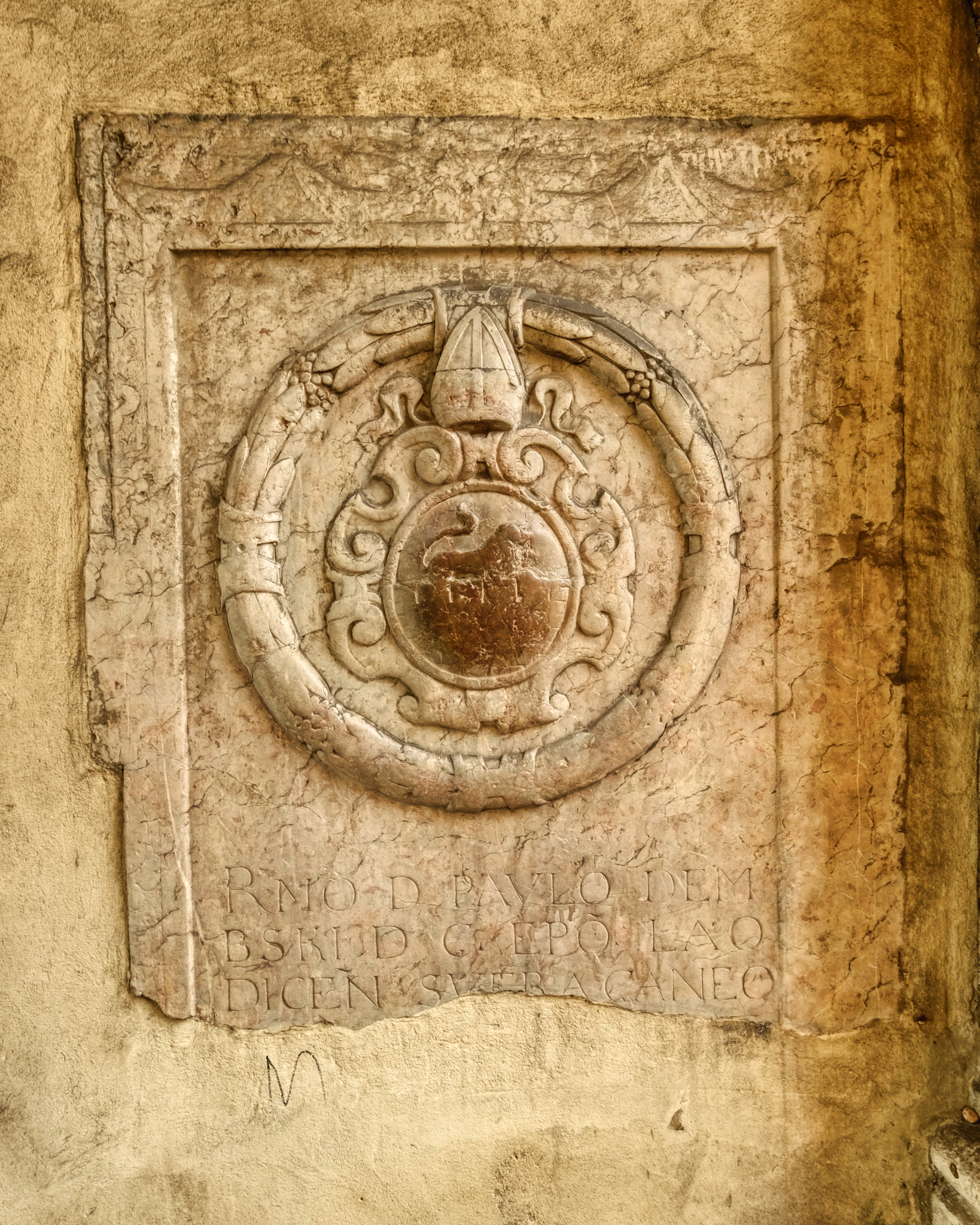 Turn your head one way and you see a royal insignia . . . turn it the other way . . .
Turn your head one way and you see a royal insignia . . . turn it the other way . . .
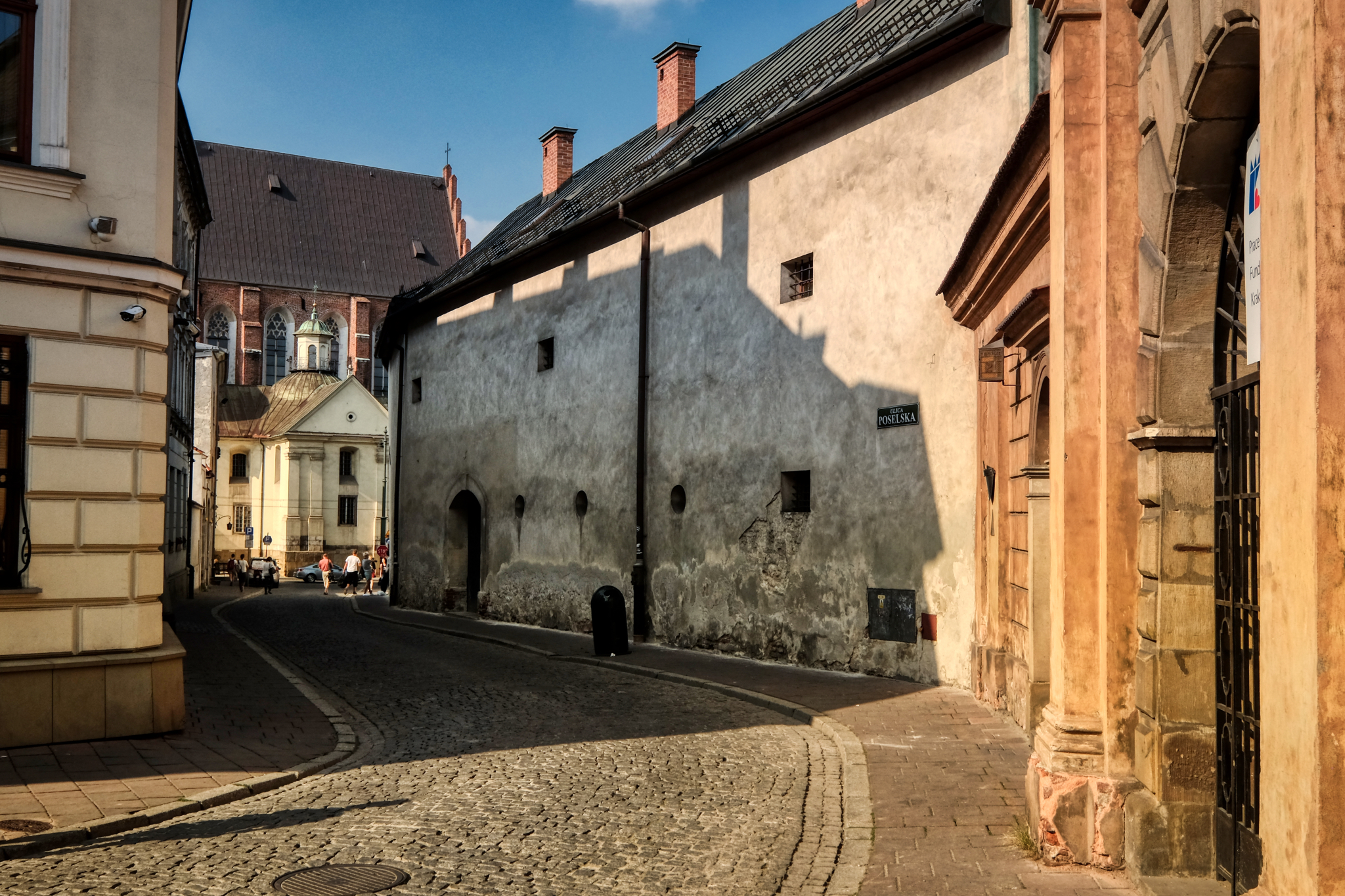 Strolling along the narrow side streets next to the castle.
Strolling along the narrow side streets next to the castle.
 . . . the entrance to a calm peaceful old chapel . . .
. . . the entrance to a calm peaceful old chapel . . .
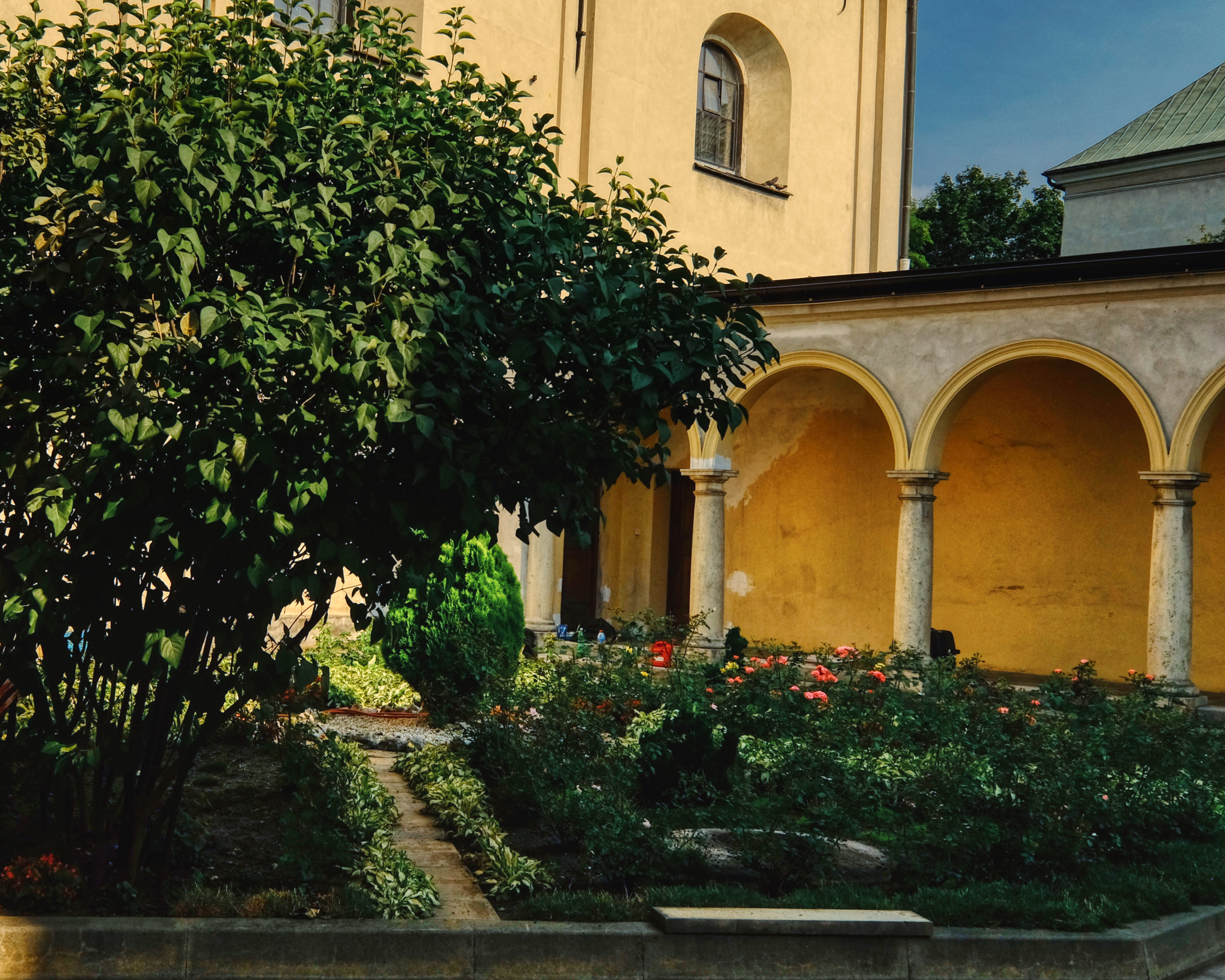 . . . and the quiet garden within.
. . . and the quiet garden within.
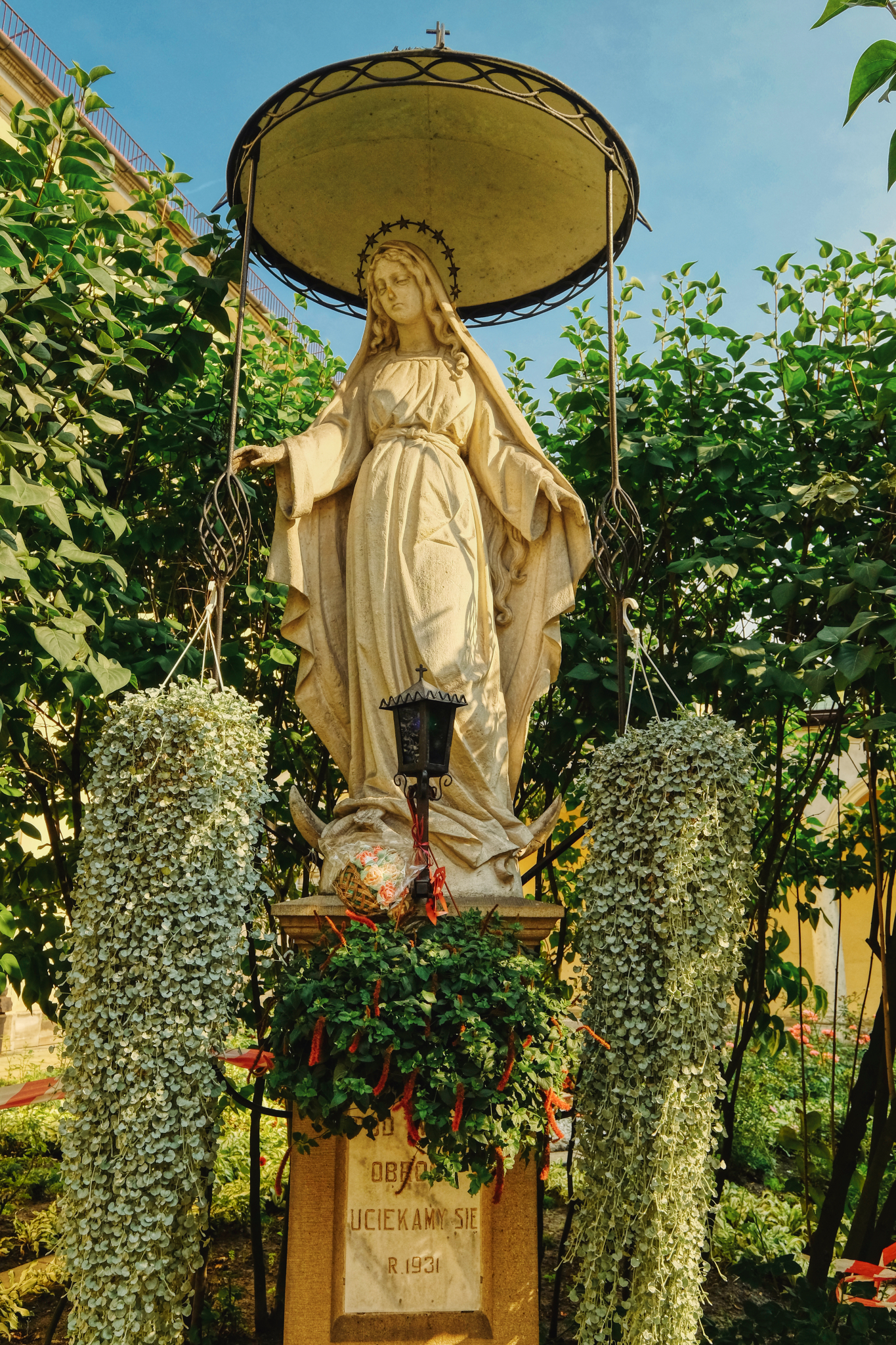 One of thousands of statues of Mary throughout the city. Poland is still a heavily Catholic country.
One of thousands of statues of Mary throughout the city. Poland is still a heavily Catholic country.
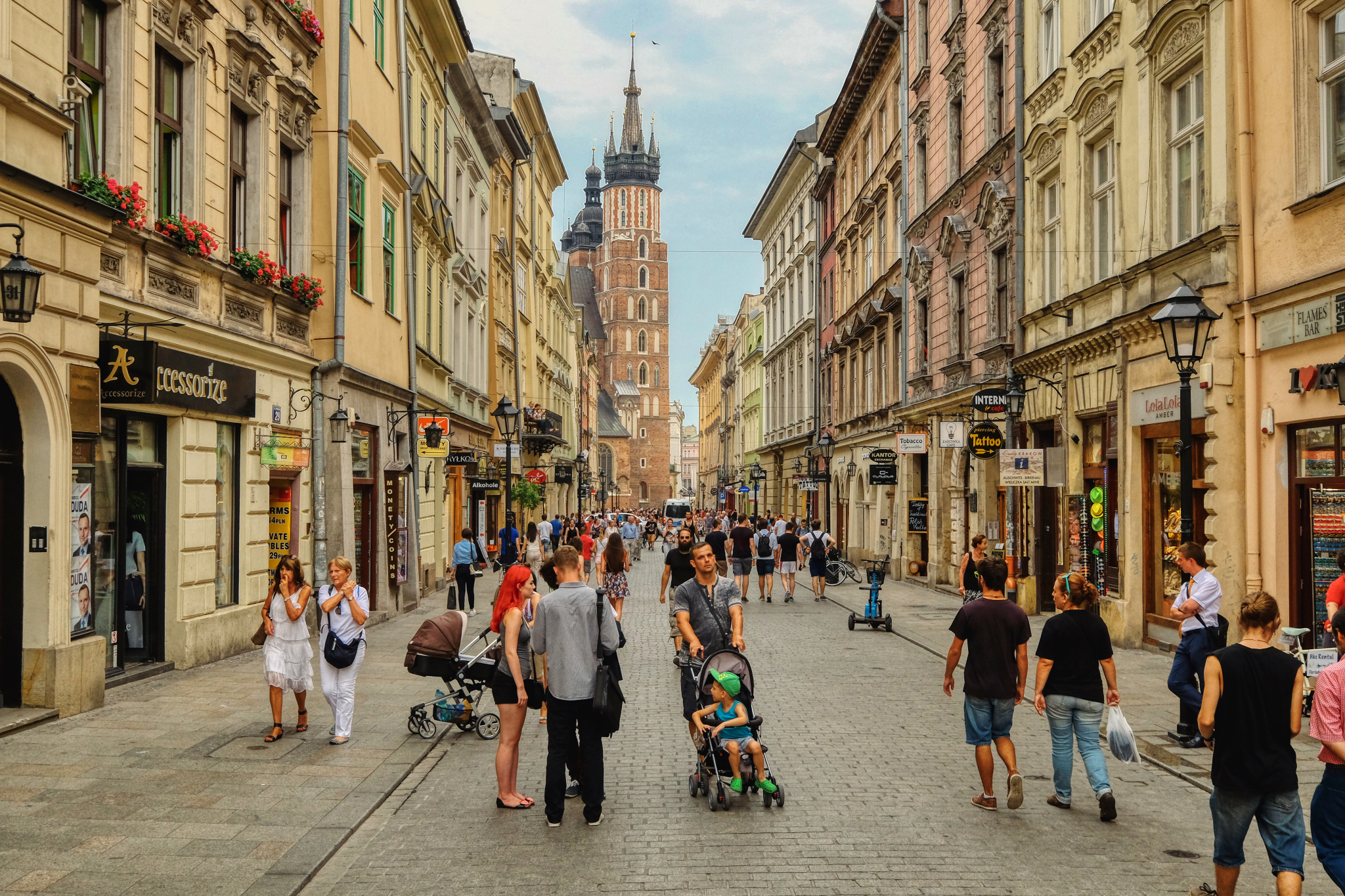 The attractive main shopping area, Floriańsk Street.
The attractive main shopping area, Floriańsk Street.
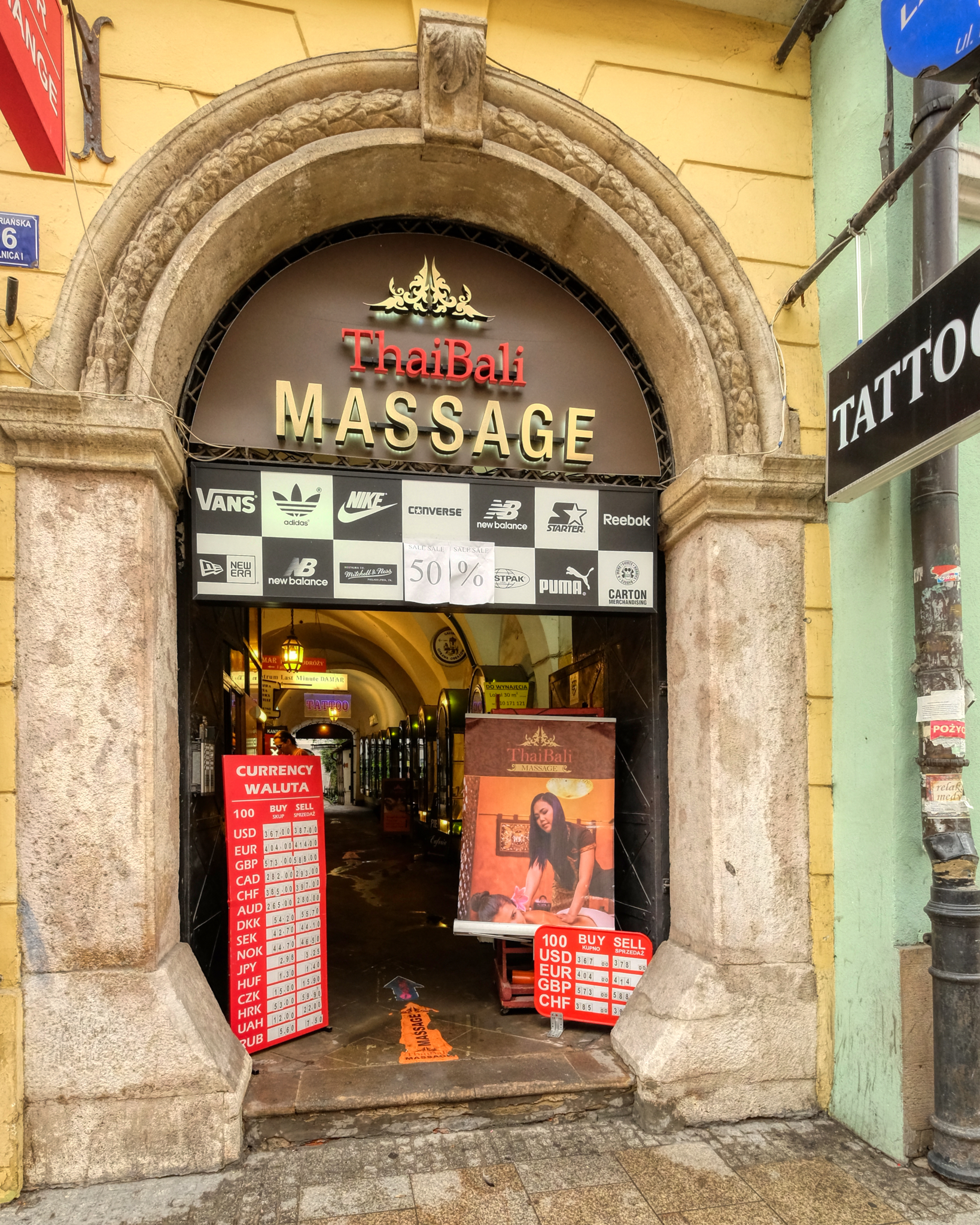 Thai massage! We were tempted!!! Some of the very old buildings held modern shopping malls in their interiors.
Thai massage! We were tempted!!! Some of the very old buildings held modern shopping malls in their interiors.
 Interesting floor in the passage to a high-end shopping galleria.
Interesting floor in the passage to a high-end shopping galleria.
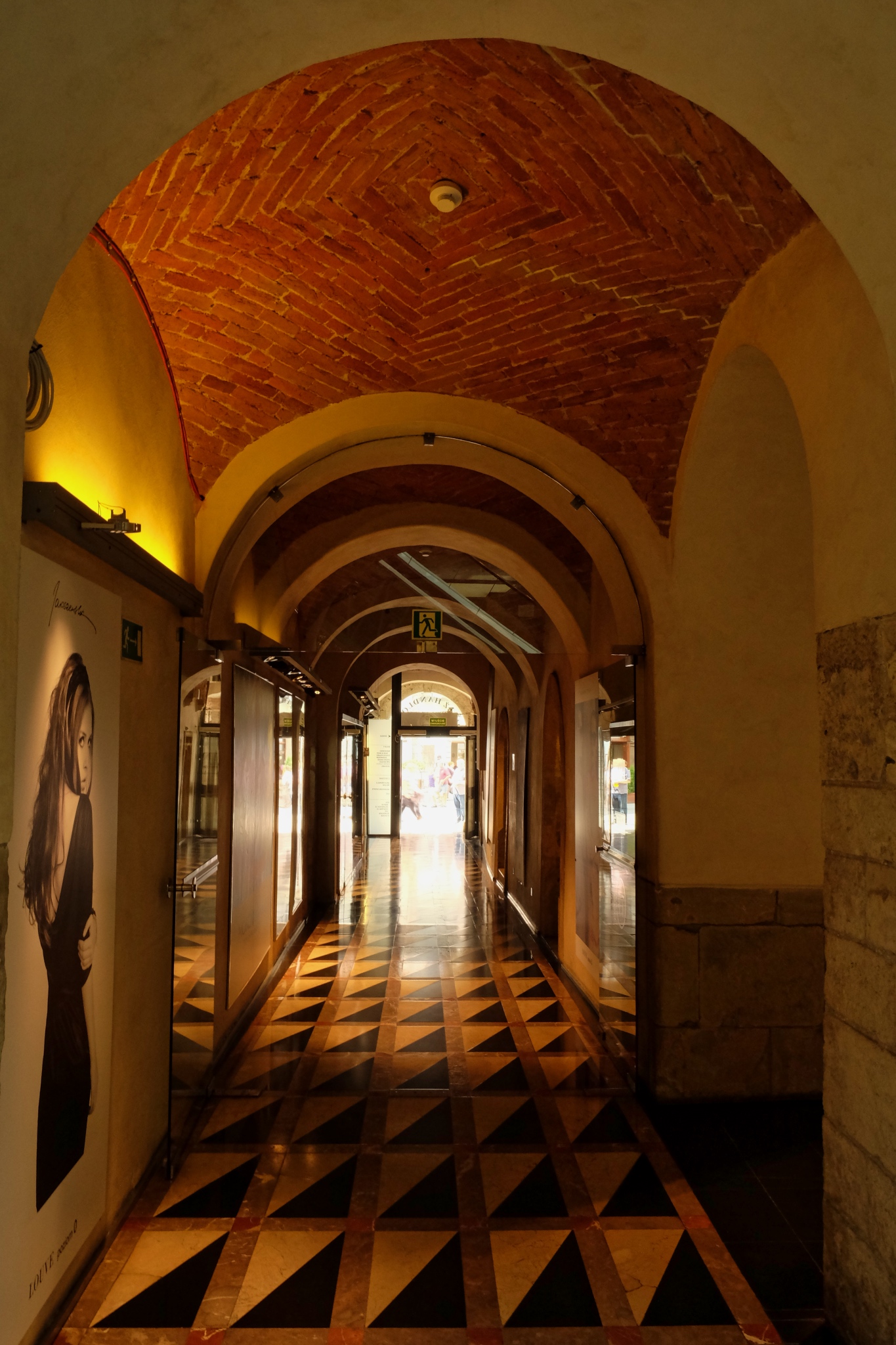 Nice the way the old features have been integrated into the modern shopping area.
Nice the way the old features have been integrated into the modern shopping area.
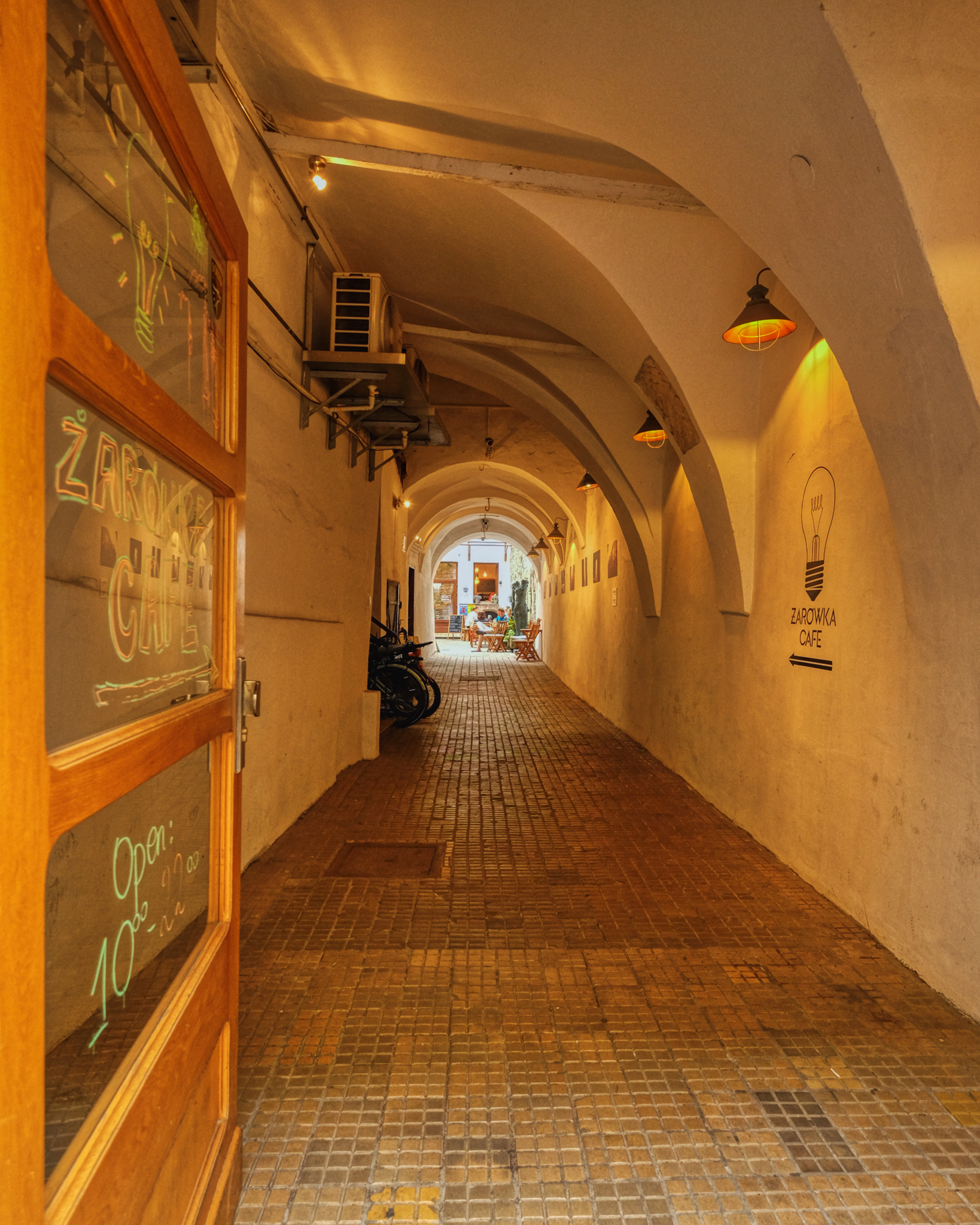 It was so interesting how many little passages lead back into courtyards filled with shops and restaurants. I would love to live in this city!
It was so interesting how many little passages lead back into courtyards filled with shops and restaurants. I would love to live in this city!
 Exploring the little streets, arched passages, and small alleys always lead to big surprises.
Exploring the little streets, arched passages, and small alleys always lead to big surprises.
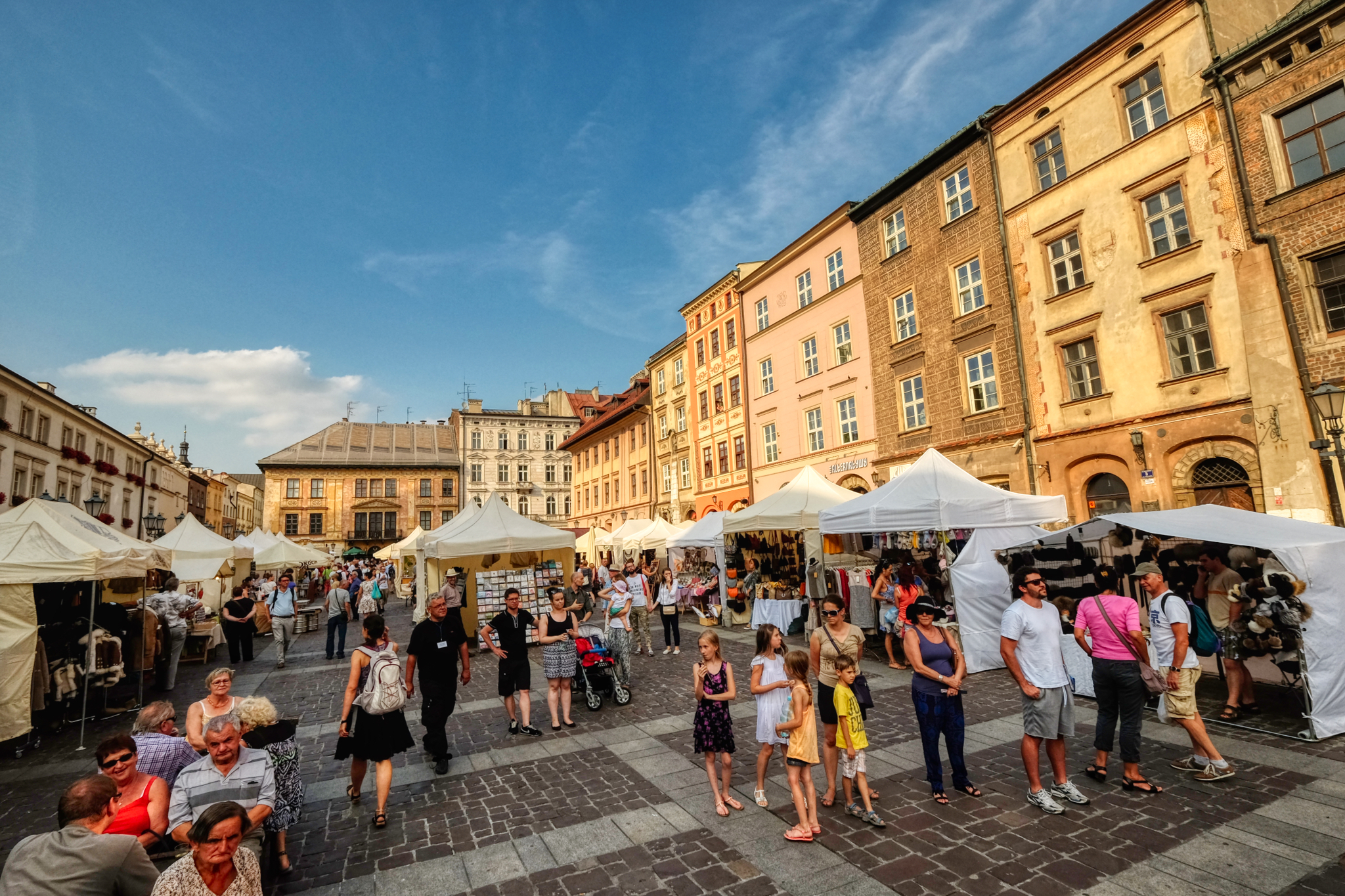 A discovery! A market square! We spent quite a long time here pawing everything!
A discovery! A market square! We spent quite a long time here pawing everything!
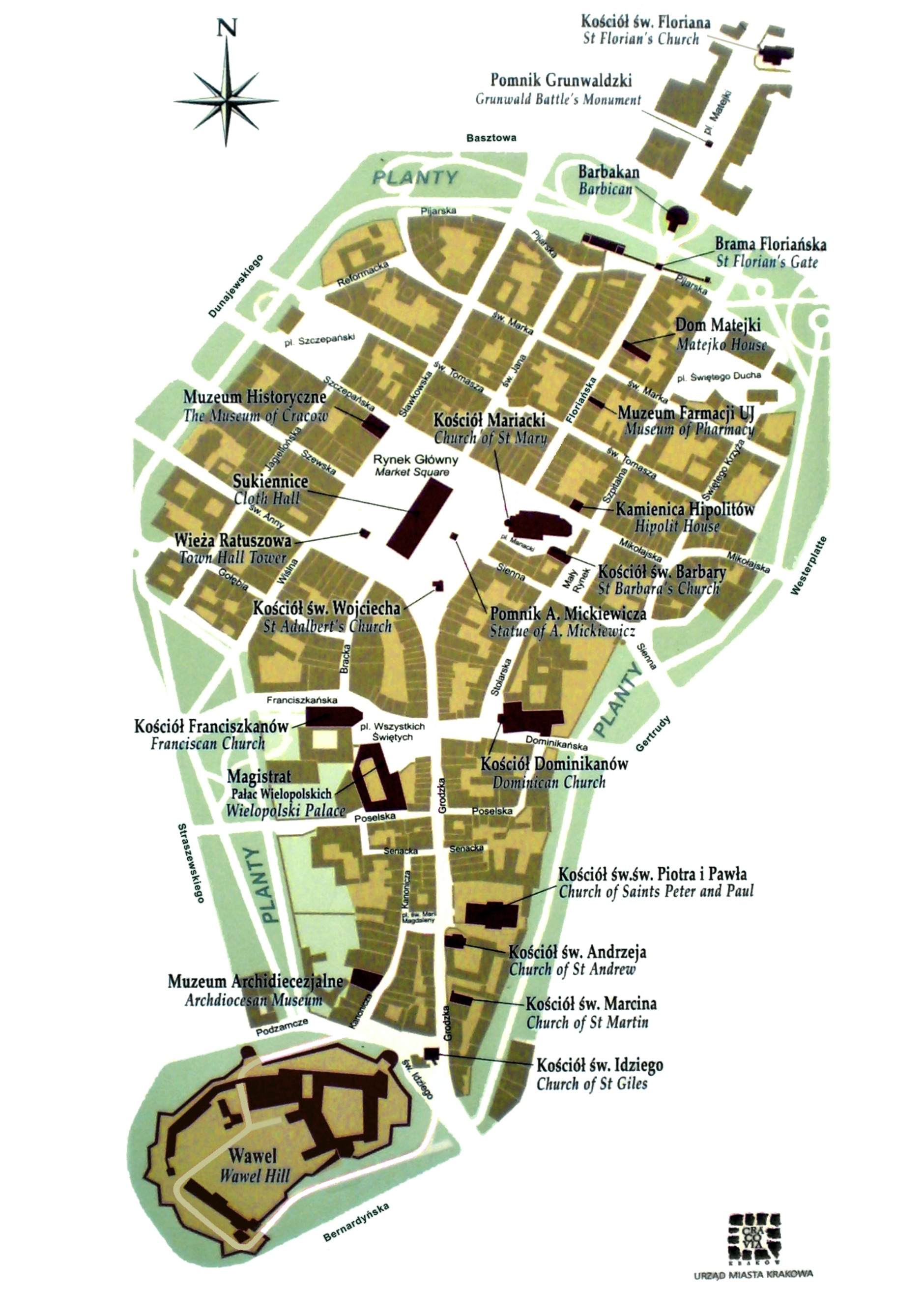 Kraków is an excellent 'walking city' to spend several days wandering around enjoying yourself.
Kraków is an excellent 'walking city' to spend several days wandering around enjoying yourself.
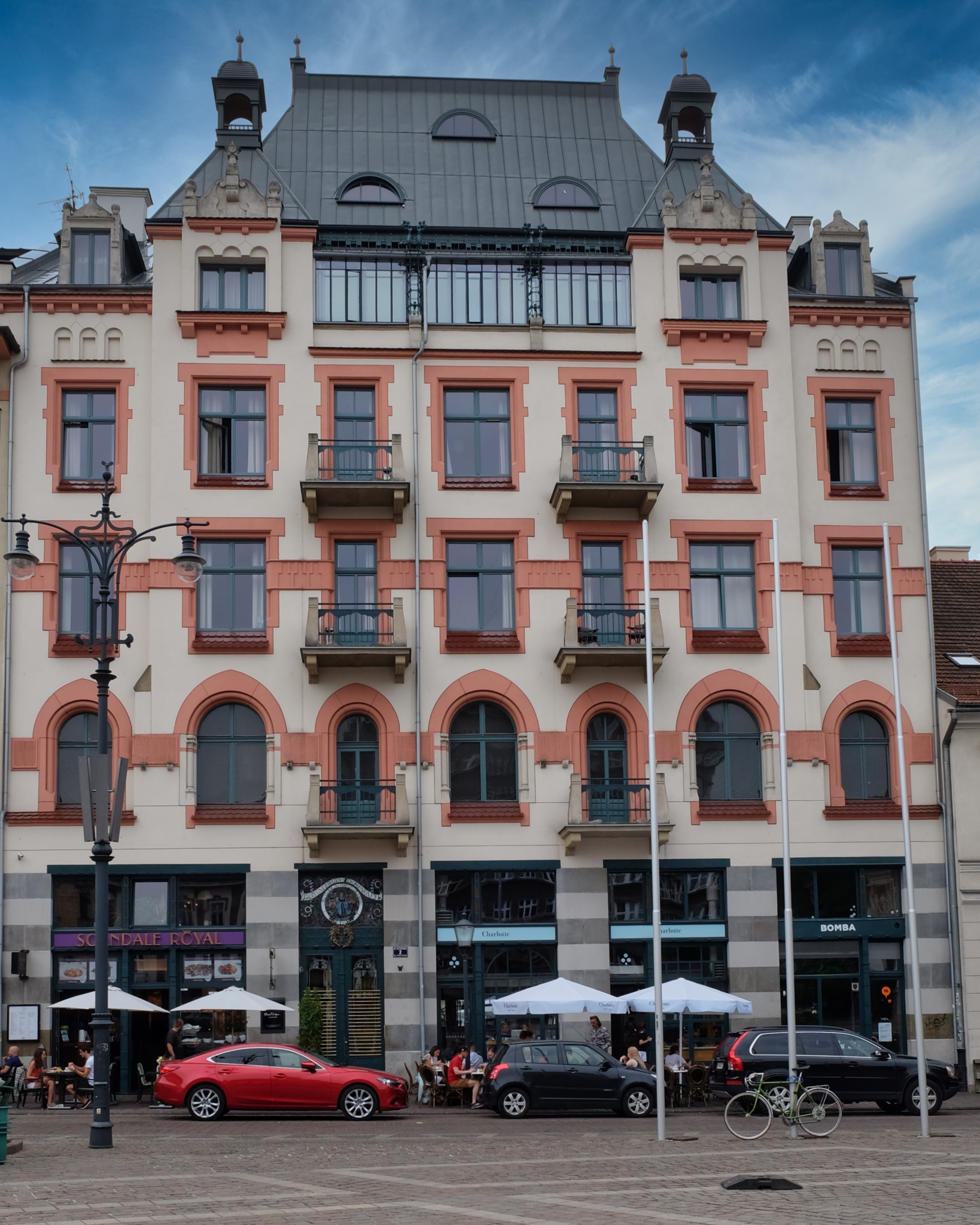 Our hotel was in this old building just off of the main square, and across from an art museum.
Our hotel was in this old building just off of the main square, and across from an art museum.
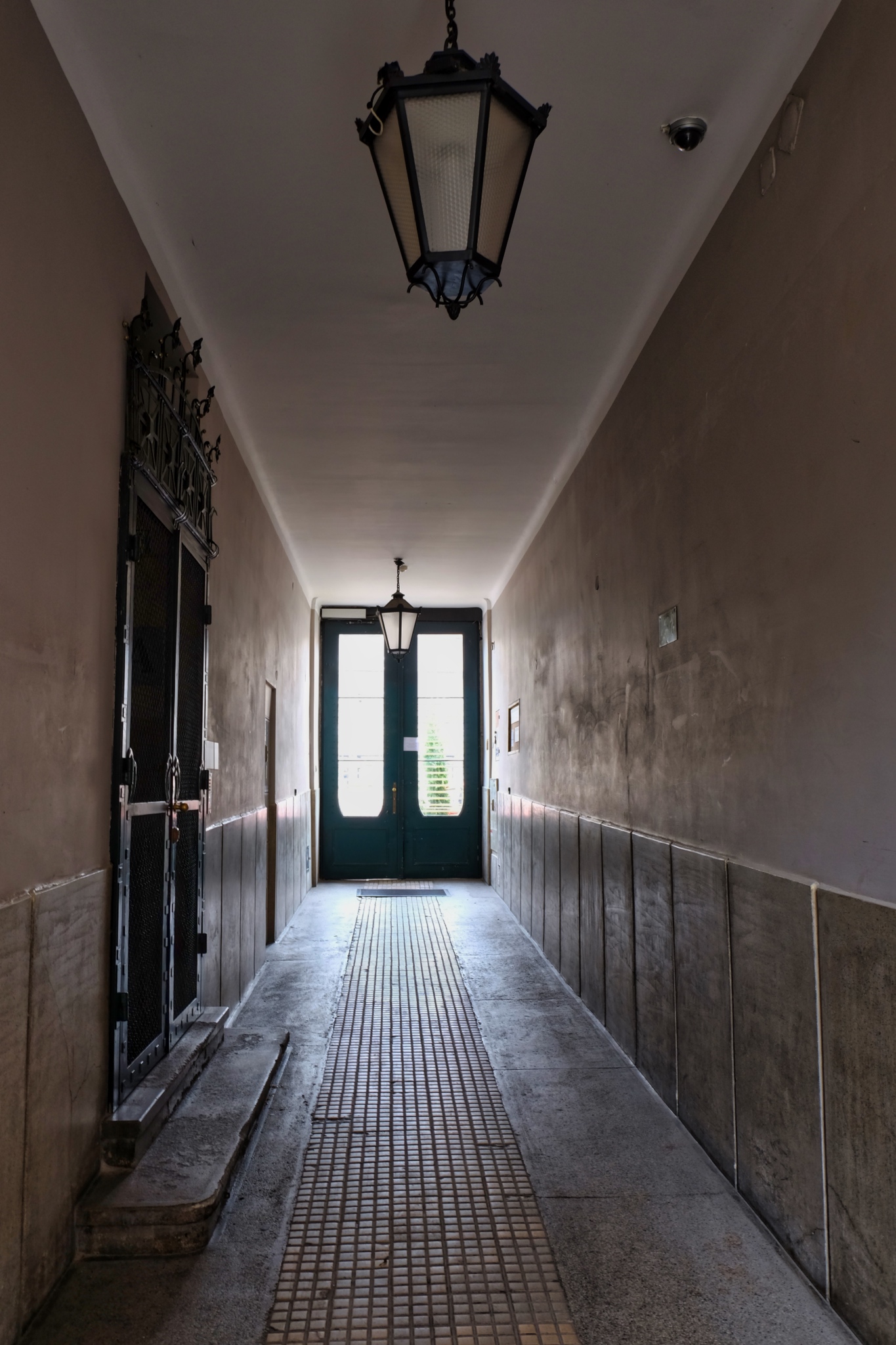 The interior can only be described as "Soviet Era Minimalism." I loved it.
The interior can only be described as "Soviet Era Minimalism." I loved it.
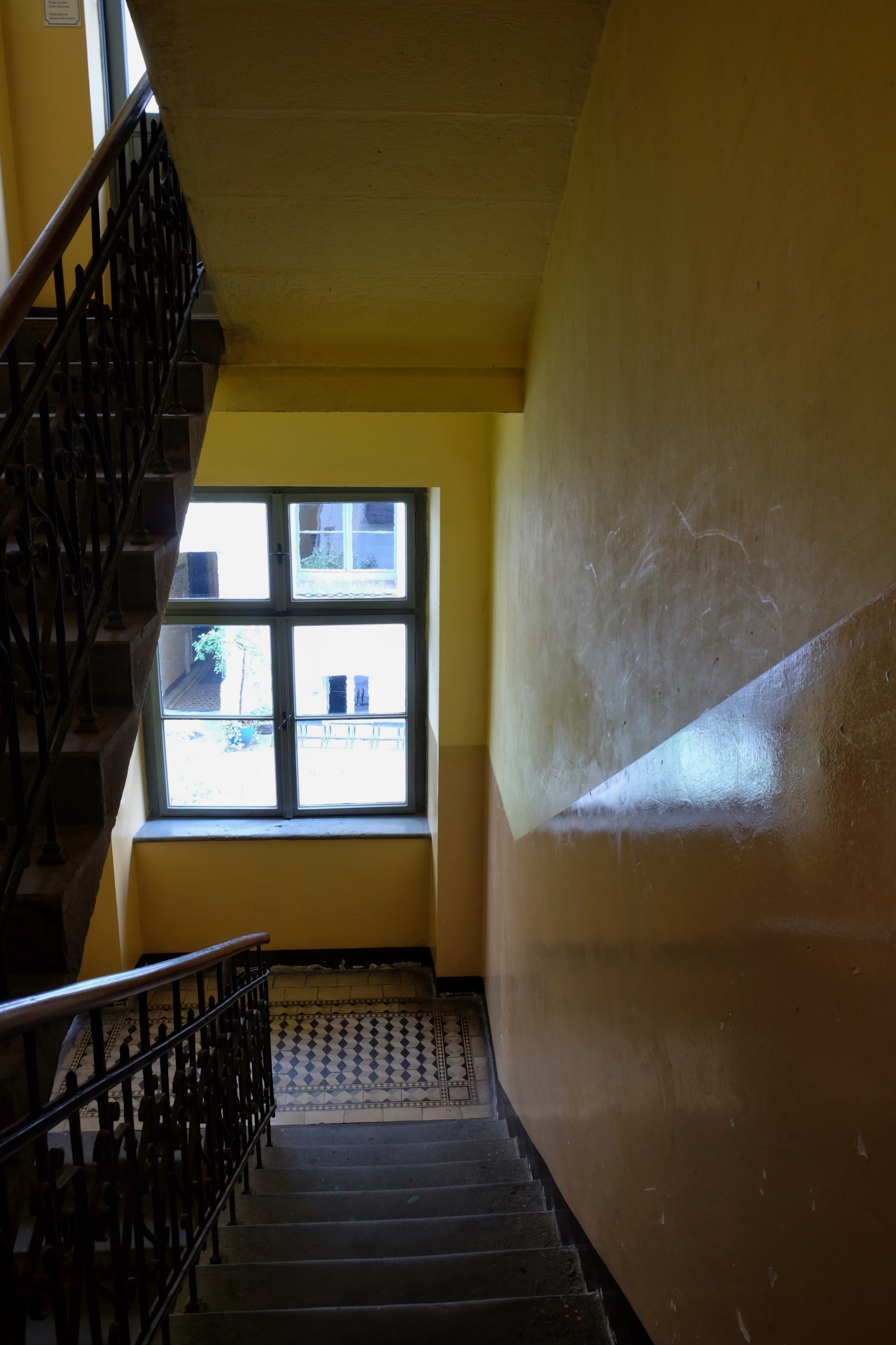 No expense was spared to create the perfect Soviet-workers-on-vacation guest quarters effect.
No expense was spared to create the perfect Soviet-workers-on-vacation guest quarters effect.
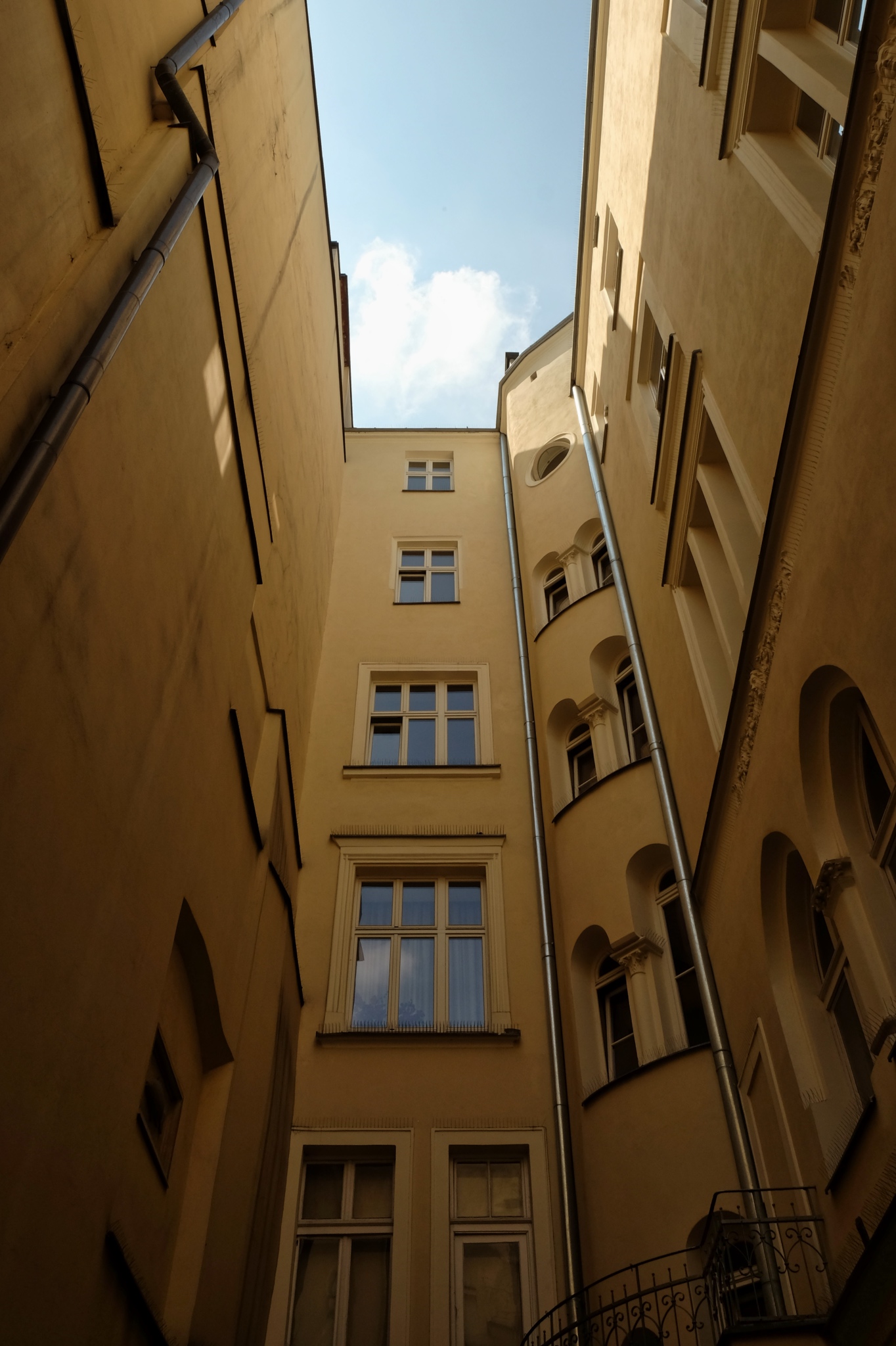 After entering the hotel from the street, you arrived in this austere courtyard to check in. Yes, I was correct, the manager said the old hotel had indeed been remodeled during the Soviet era as a workers lodge. Our room had a panoramic view onto this courtyard. We loved it: it was one block off the main city square and it was cheap!
After entering the hotel from the street, you arrived in this austere courtyard to check in. Yes, I was correct, the manager said the old hotel had indeed been remodeled during the Soviet era as a workers lodge. Our room had a panoramic view onto this courtyard. We loved it: it was one block off the main city square and it was cheap!
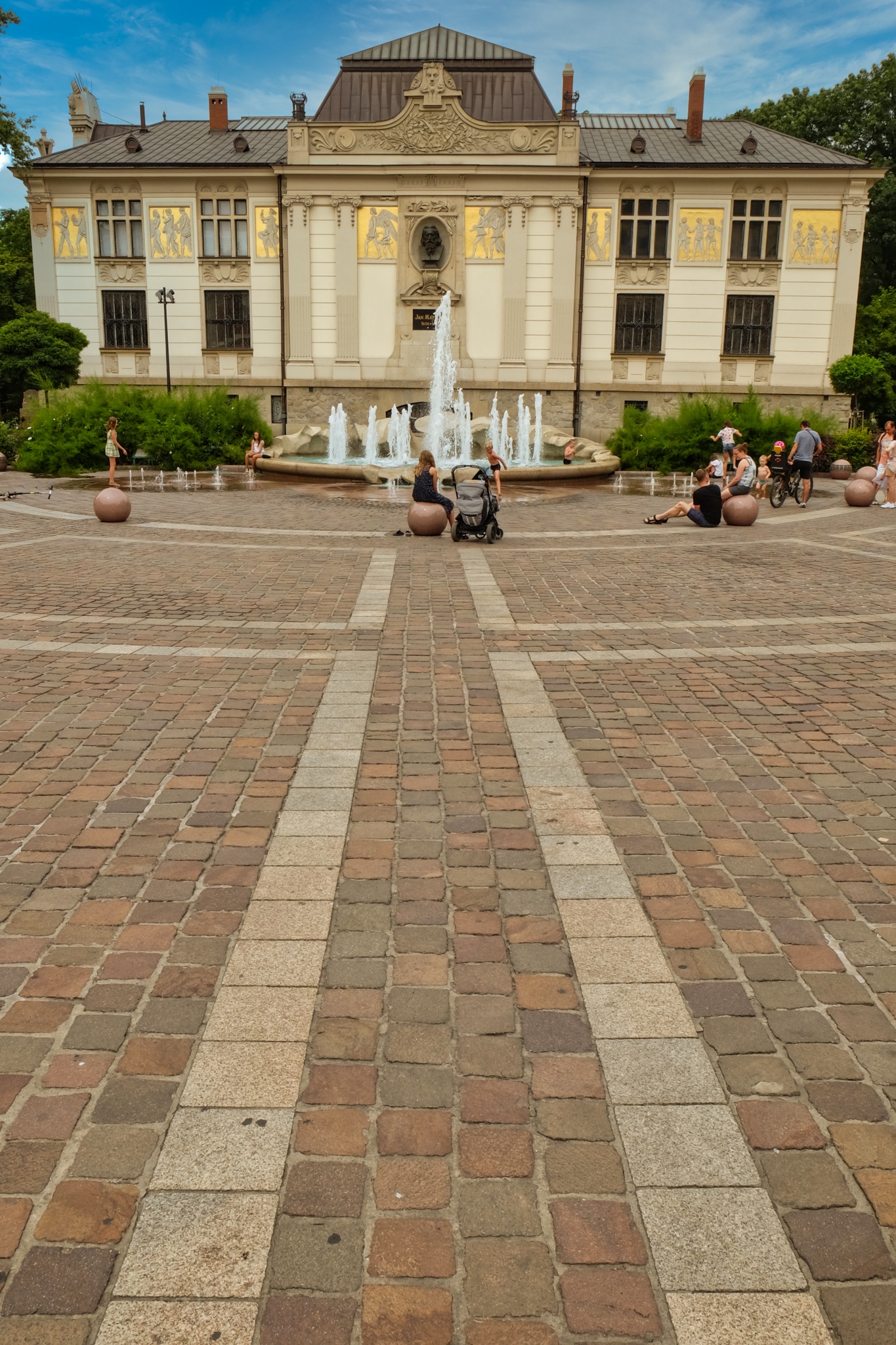 The Palace of Art (circa. 1901) was just outside our hotel.
The Palace of Art (circa. 1901) was just outside our hotel.
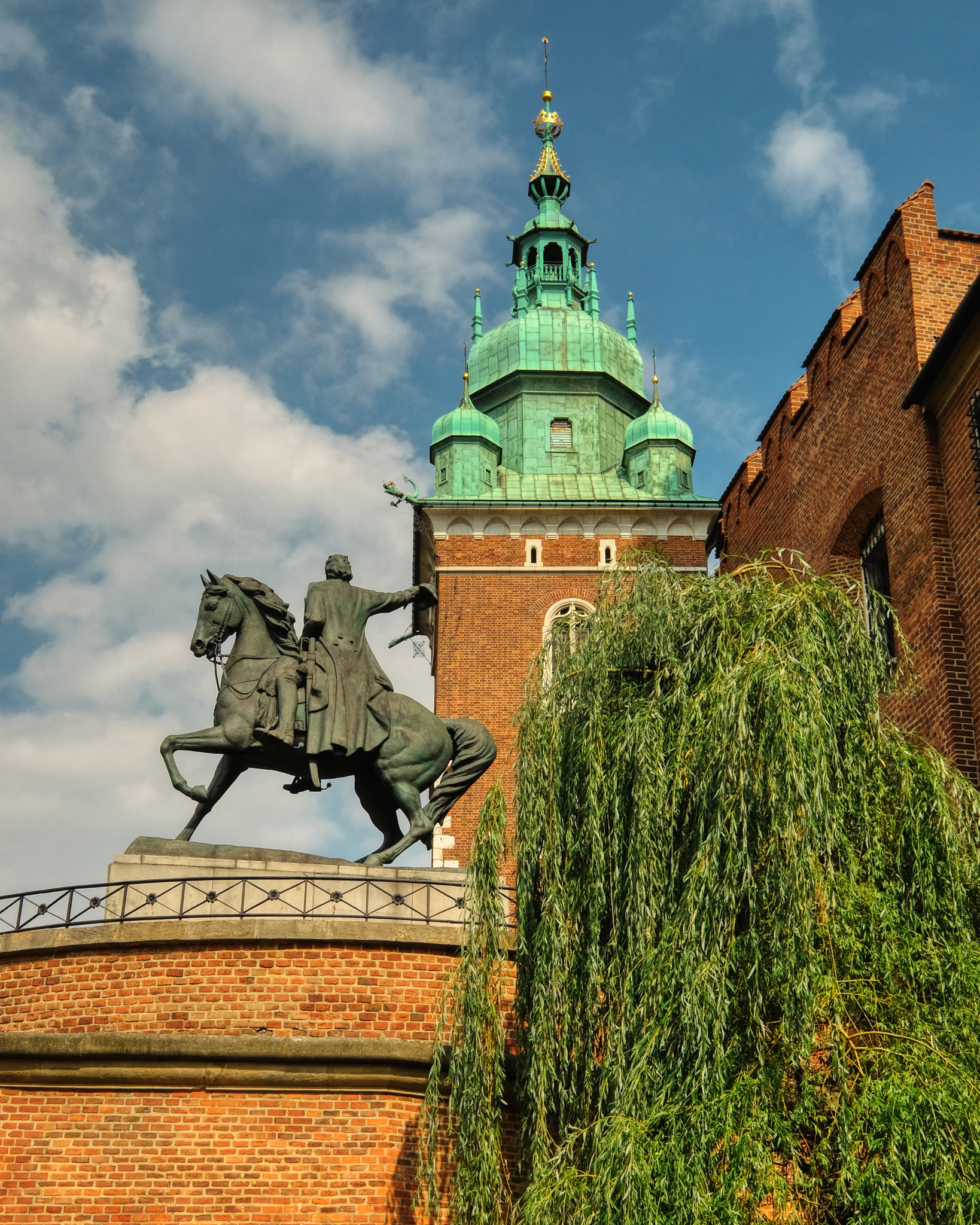 We spent three days just wandering around this marvelous city.
We spent three days just wandering around this marvelous city.
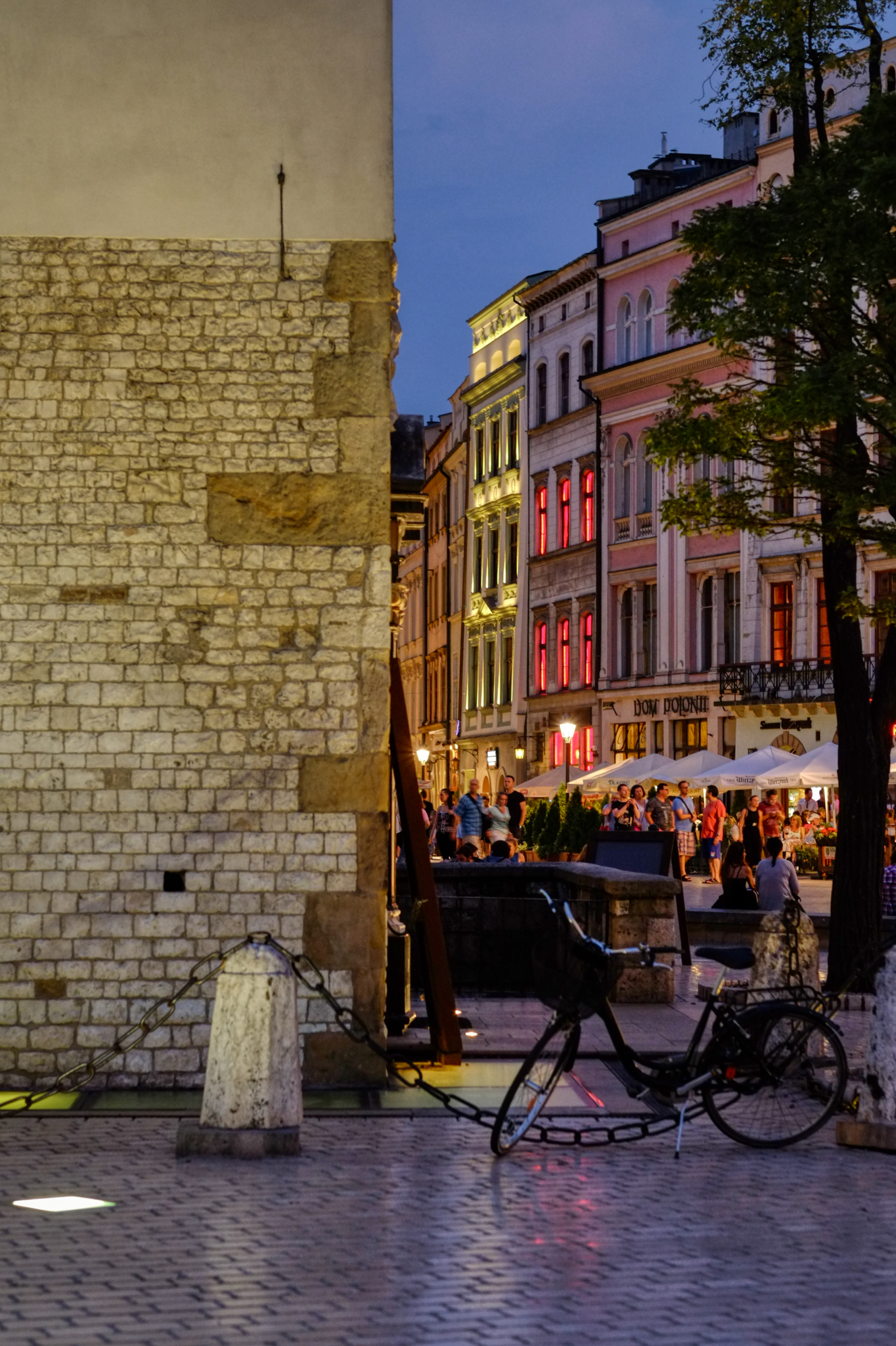 We loved Kraków by day . . . but at night it became a colorful dreamscape!
We loved Kraków by day . . . but at night it became a colorful dreamscape!
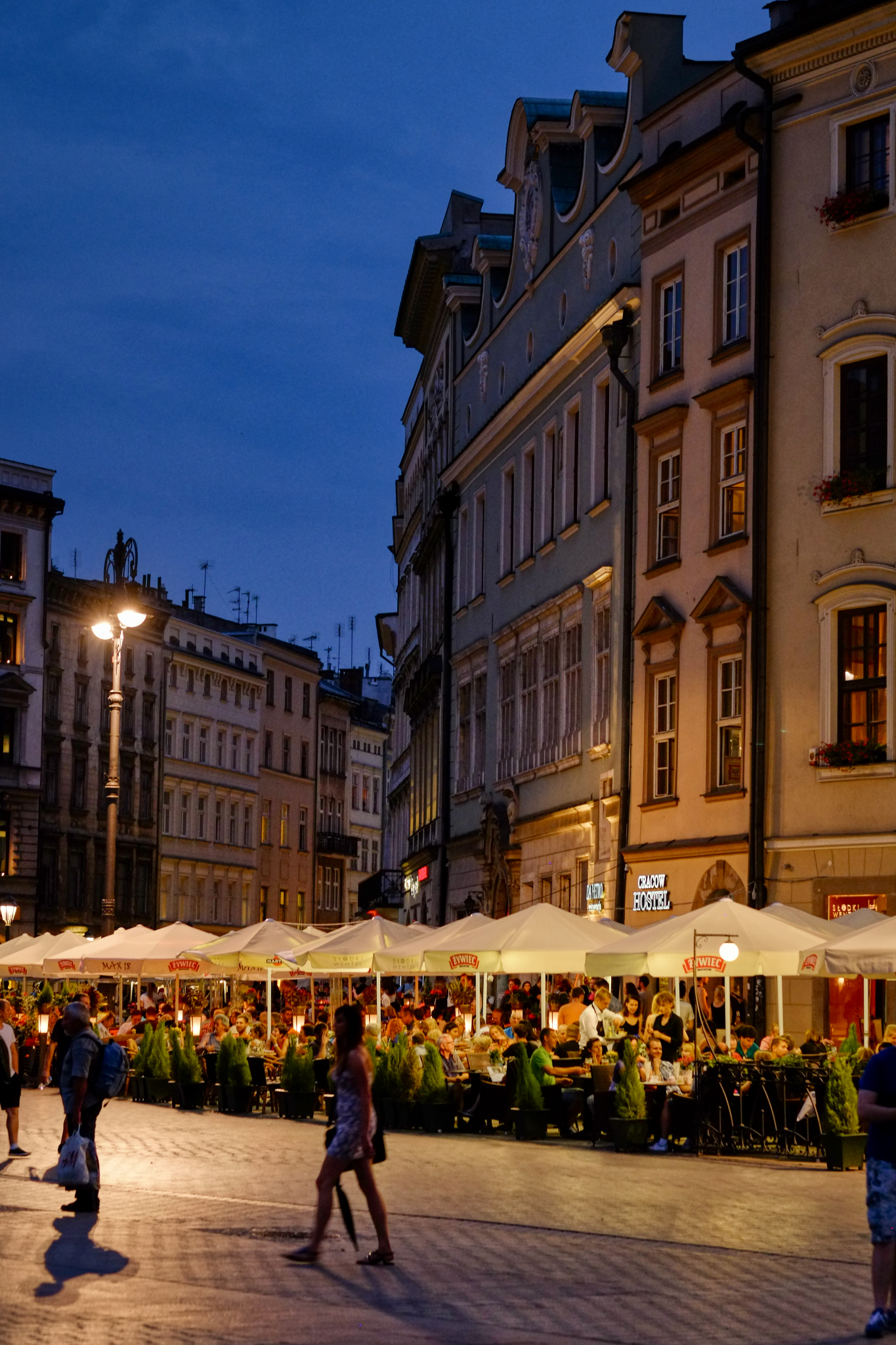 The crowds came out on a fine summer evening for a meal and a drink.
The crowds came out on a fine summer evening for a meal and a drink.
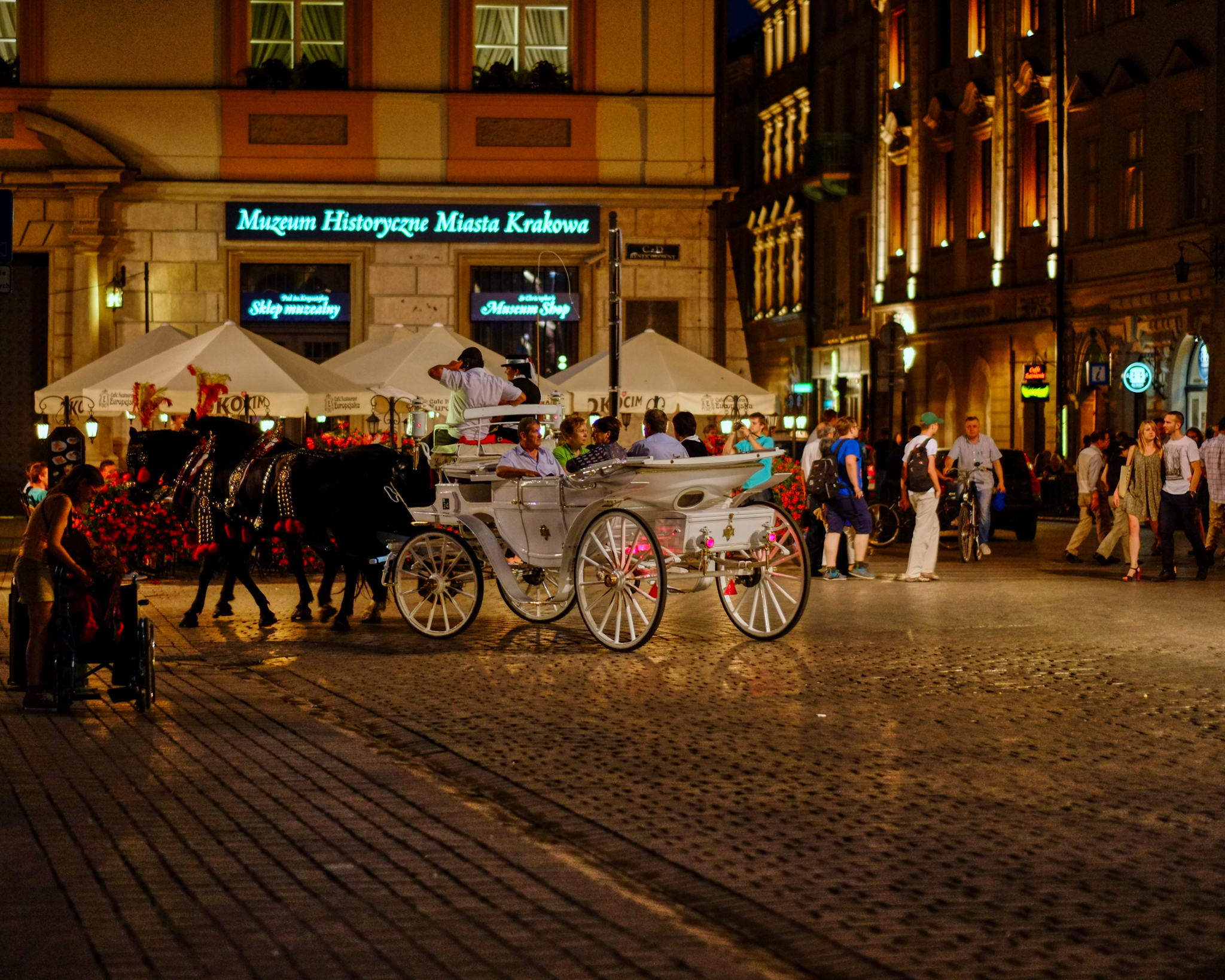 All day and evening, the tourist carriage rides never stopped. I assumed they changed the horses periodically, though I never saw it happen.
All day and evening, the tourist carriage rides never stopped. I assumed they changed the horses periodically, though I never saw it happen.
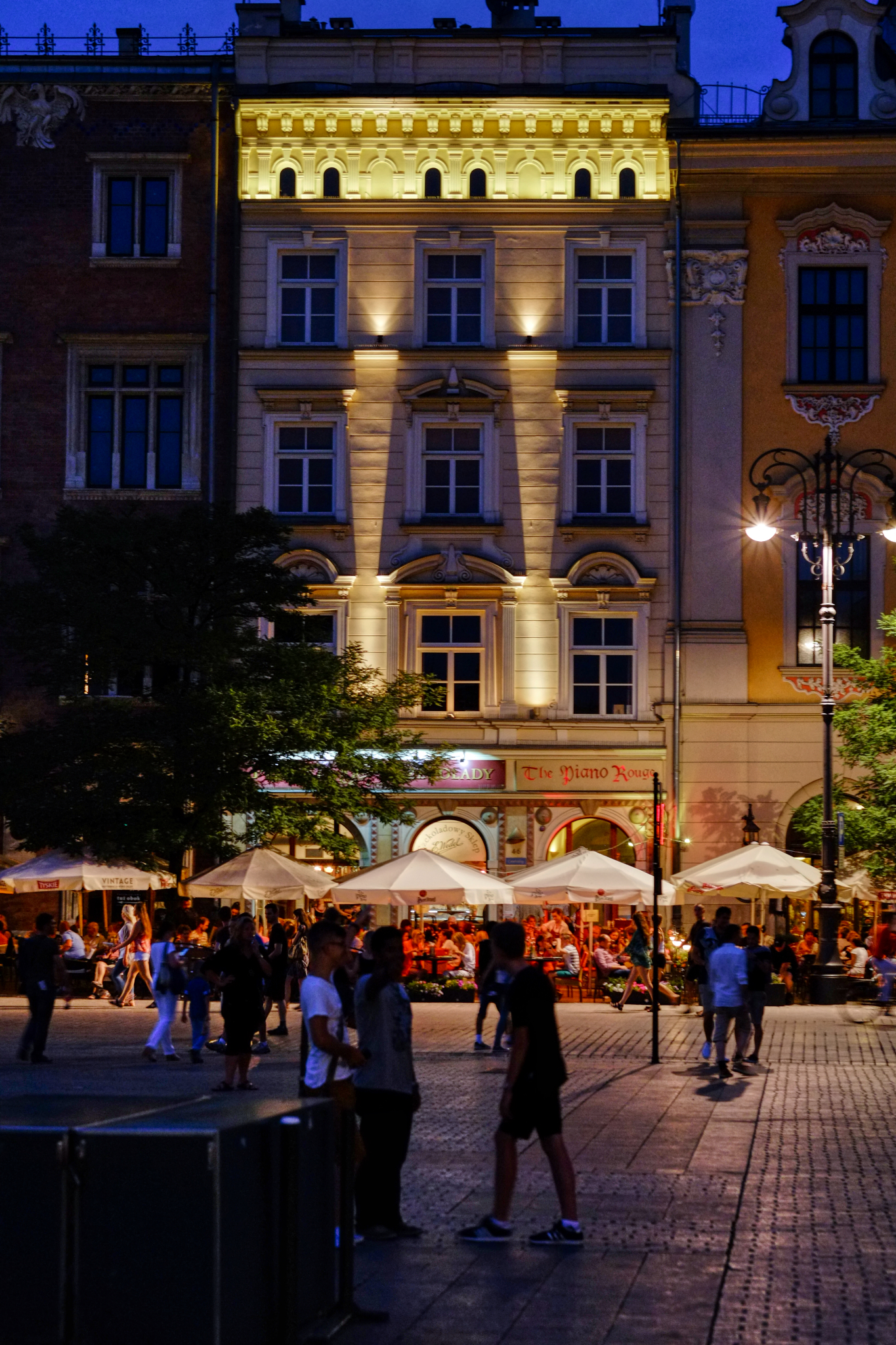 The pleasant evenings brought everyone out to the cafés on the central square.
The pleasant evenings brought everyone out to the cafés on the central square.
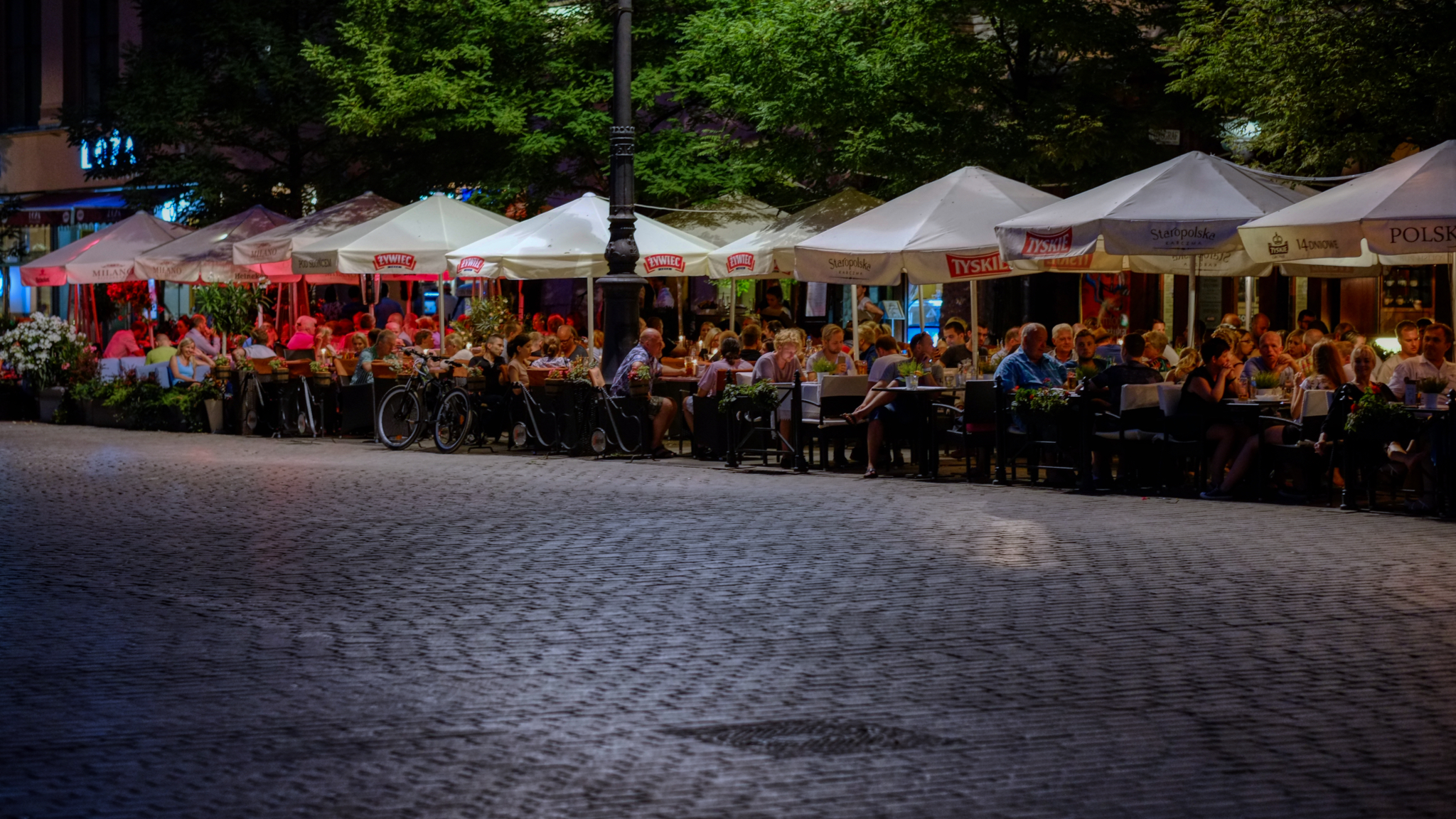 Everyone seemed to be enjoying themselves eating, drinking, and chatting.
Everyone seemed to be enjoying themselves eating, drinking, and chatting.
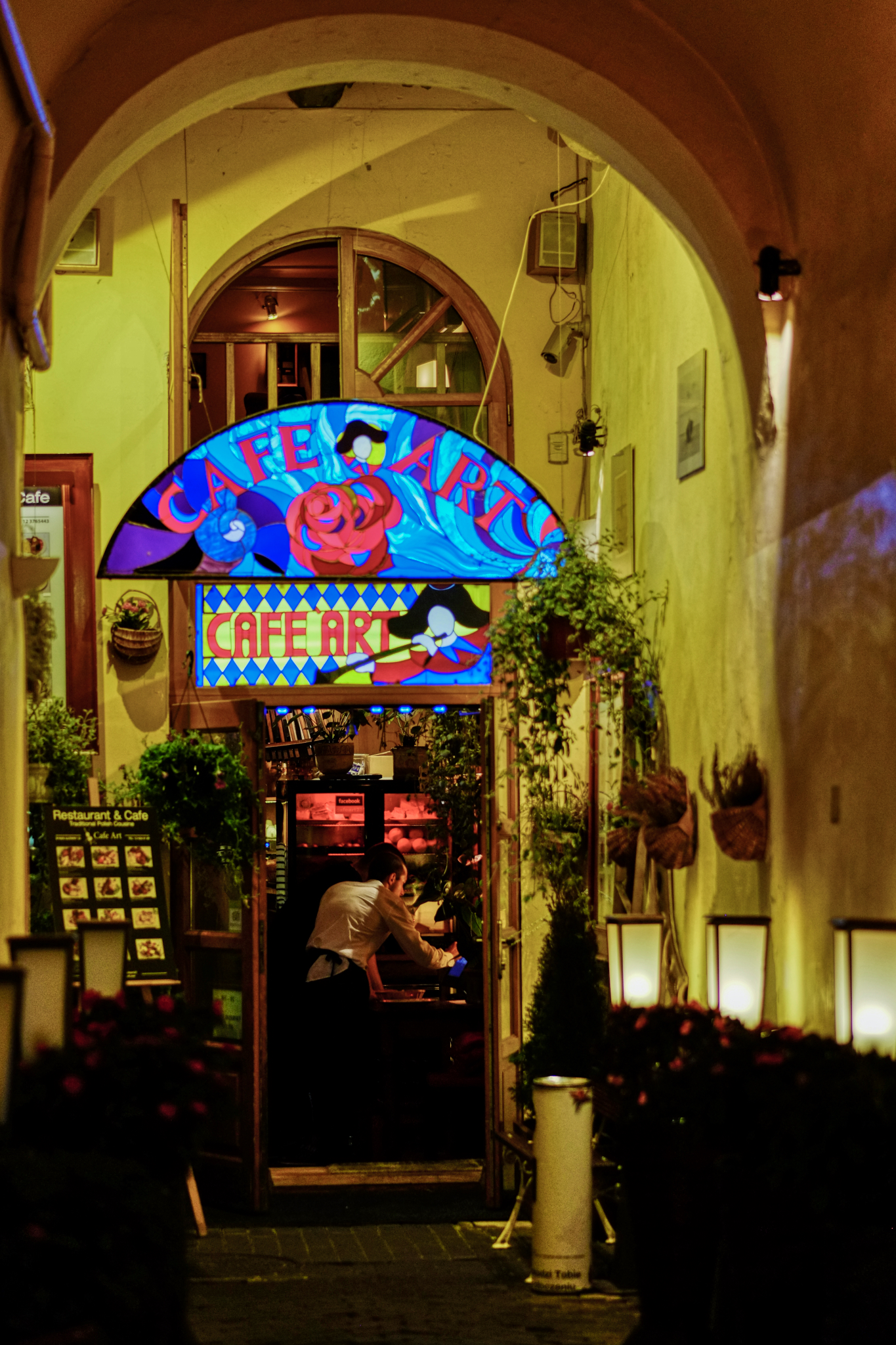 This one looks inviting . . . lets go in.
This one looks inviting . . . lets go in.
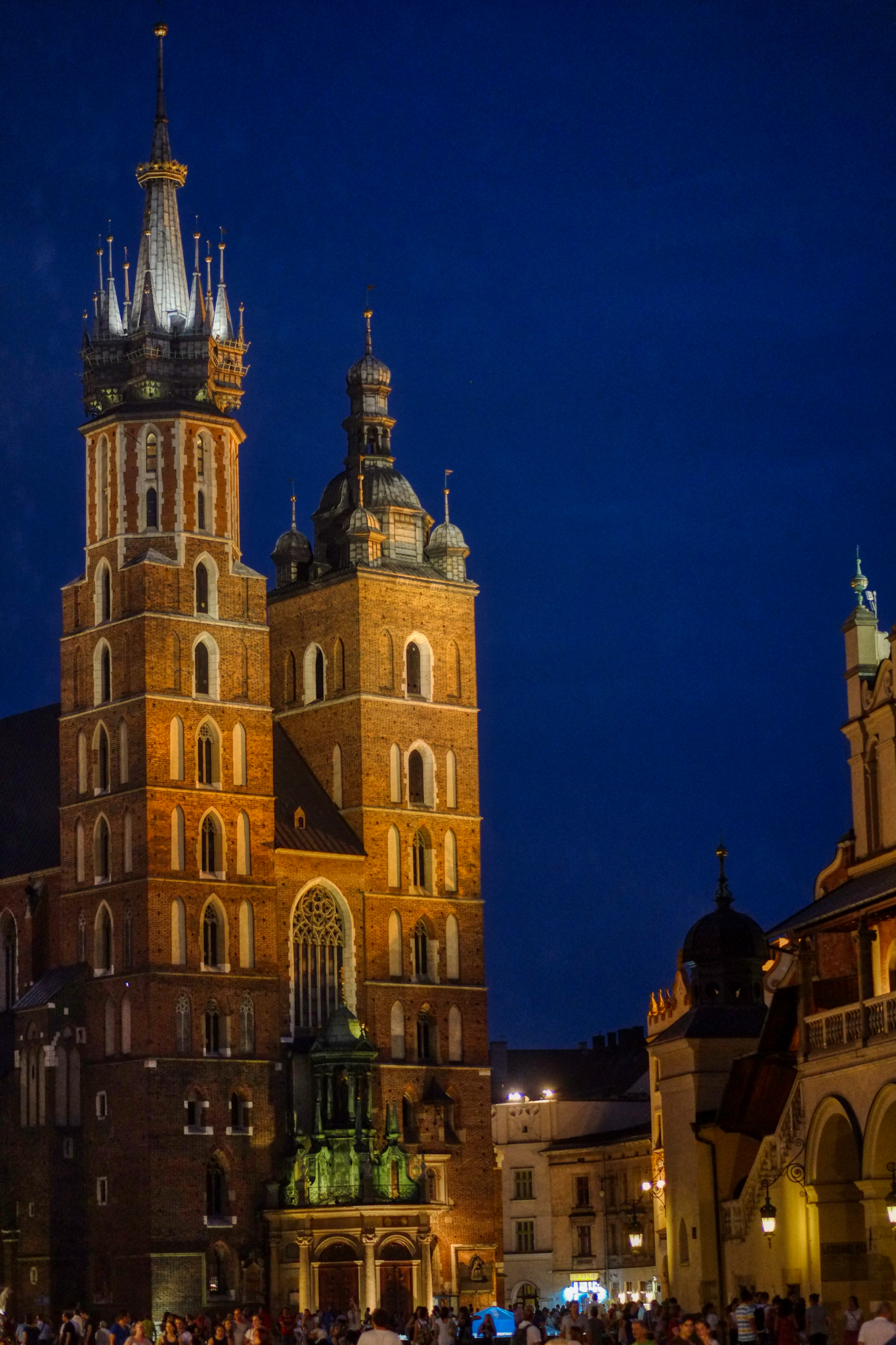 St. Mary's Basilica by night. We loved our short stay in Kraków and would be more than happy to go back again.
St. Mary's Basilica by night. We loved our short stay in Kraków and would be more than happy to go back again.
 Dr. Jeff Harper
Dr. Jeff Harper
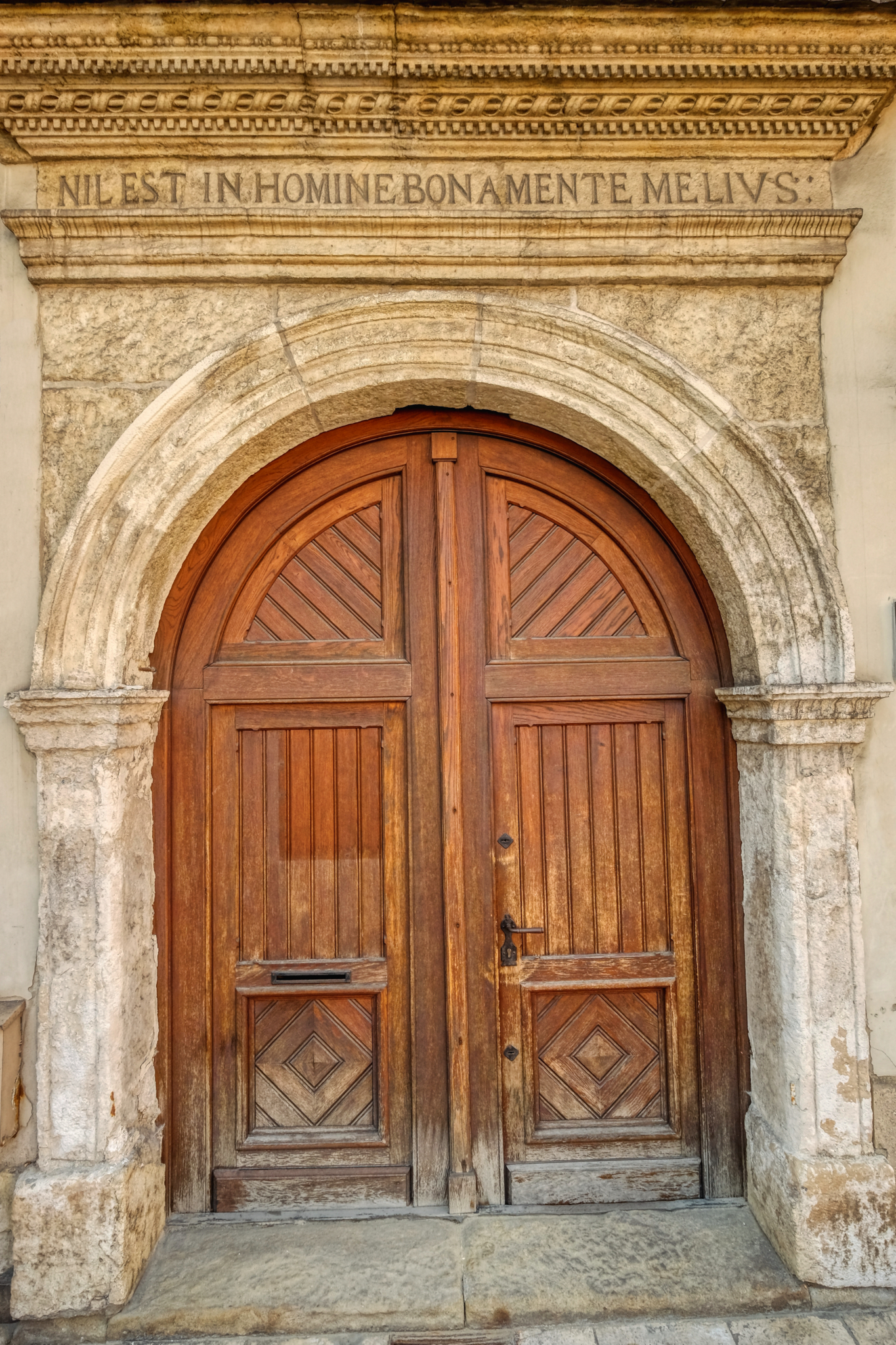 One of my favorite photographic subjects are very old doors, windows, and walls. I was in heaven in Kraków!
One of my favorite photographic subjects are very old doors, windows, and walls. I was in heaven in Kraków!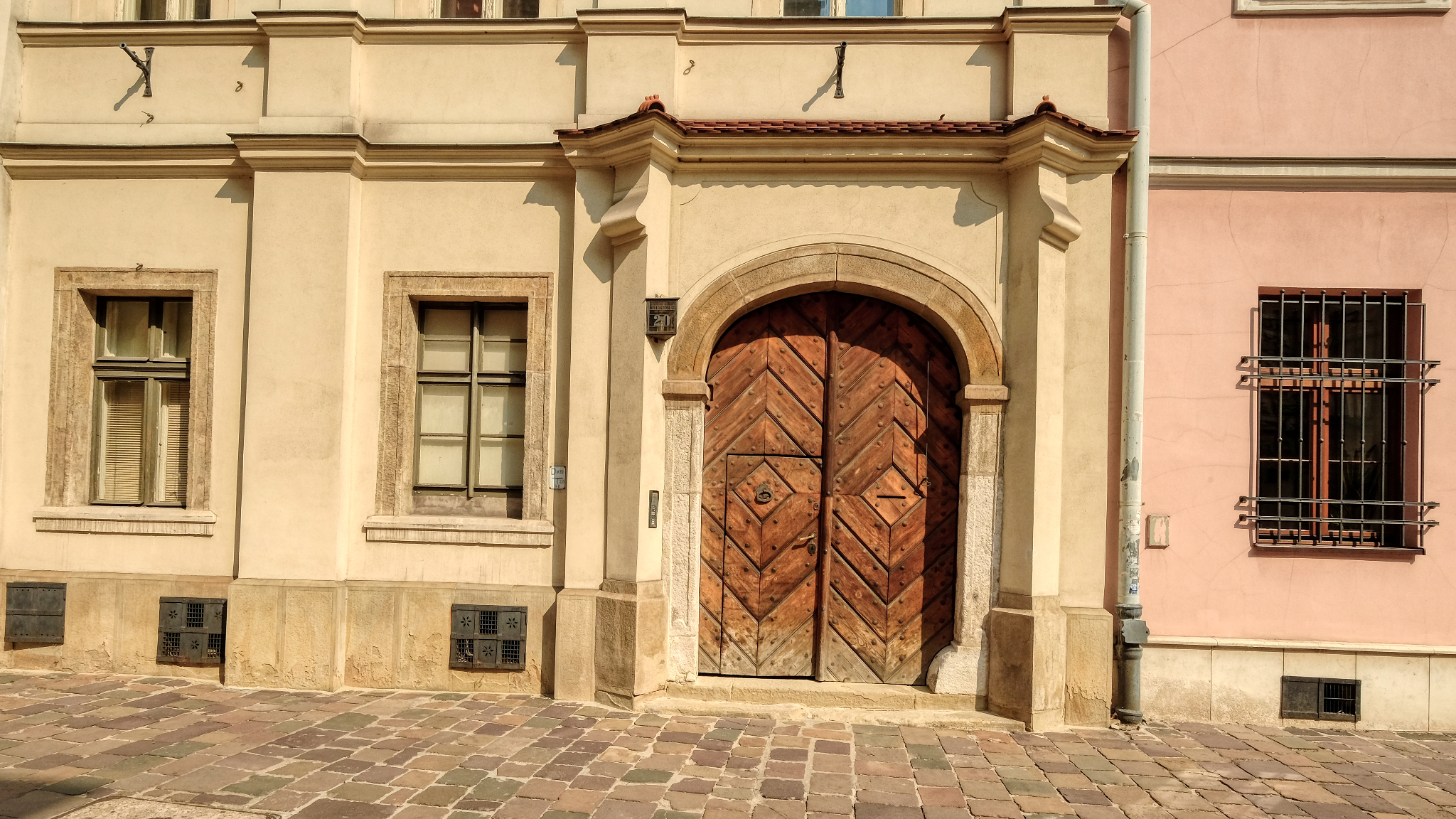 Everywhere, on every street, there was another amazing door . . . or window . . . or wall. They all speak to me somehow. They are all telling me their story.
Everywhere, on every street, there was another amazing door . . . or window . . . or wall. They all speak to me somehow. They are all telling me their story.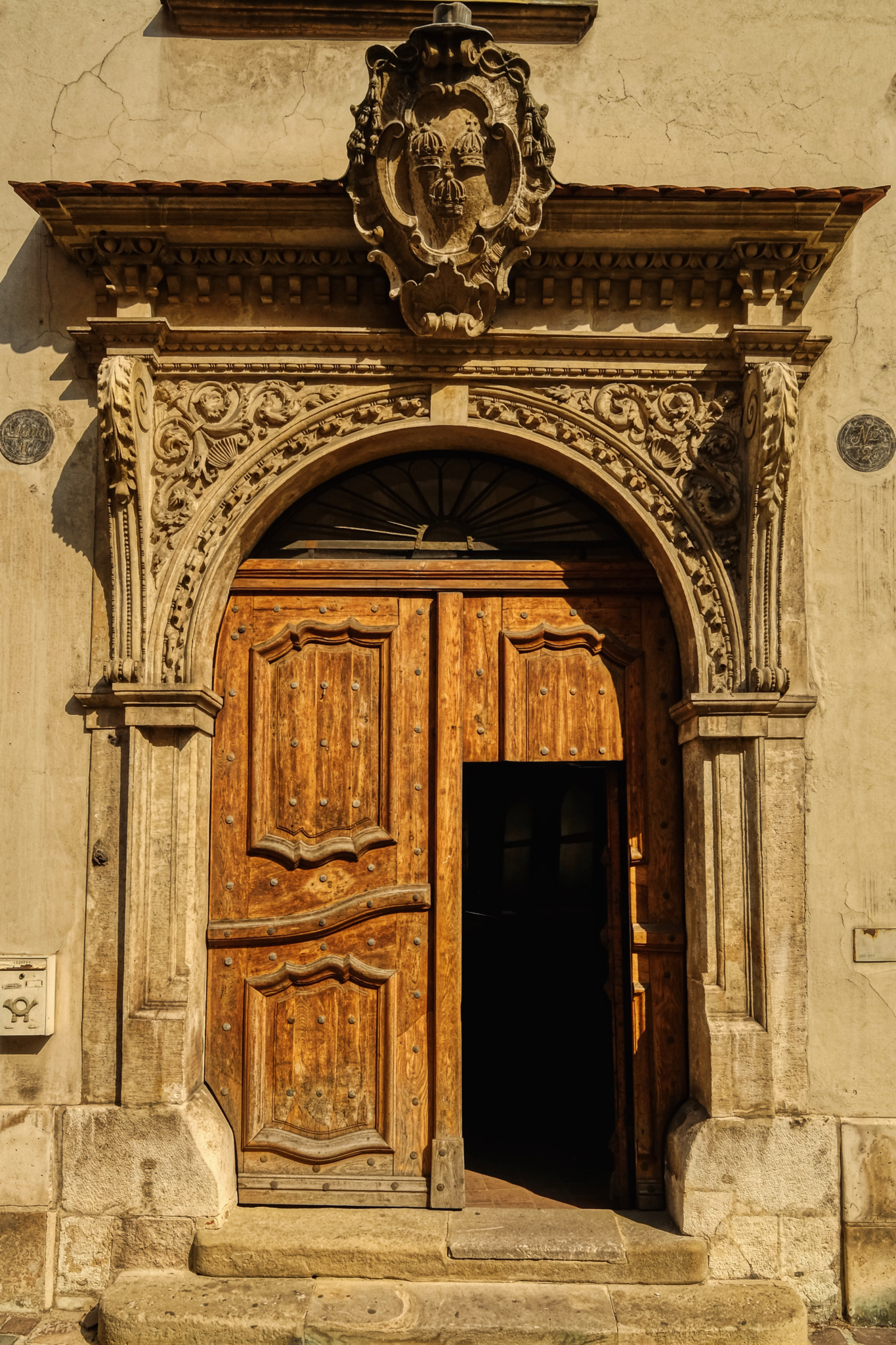 The door is the mouth on the face of a house or building. As such, it speaks, it expresses something about the character of what is inside.
The door is the mouth on the face of a house or building. As such, it speaks, it expresses something about the character of what is inside.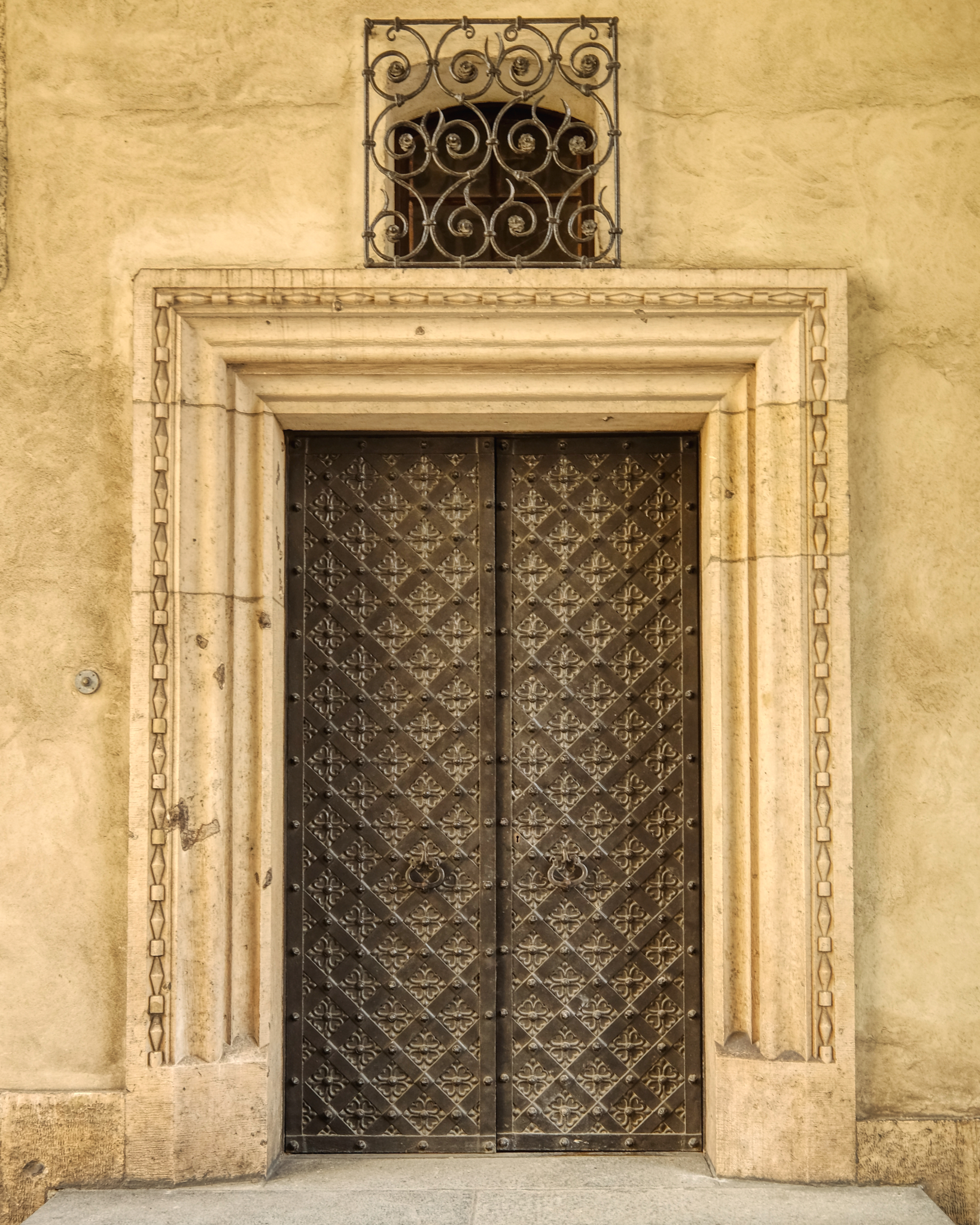 An interior door of Wawel Castle.
An interior door of Wawel Castle.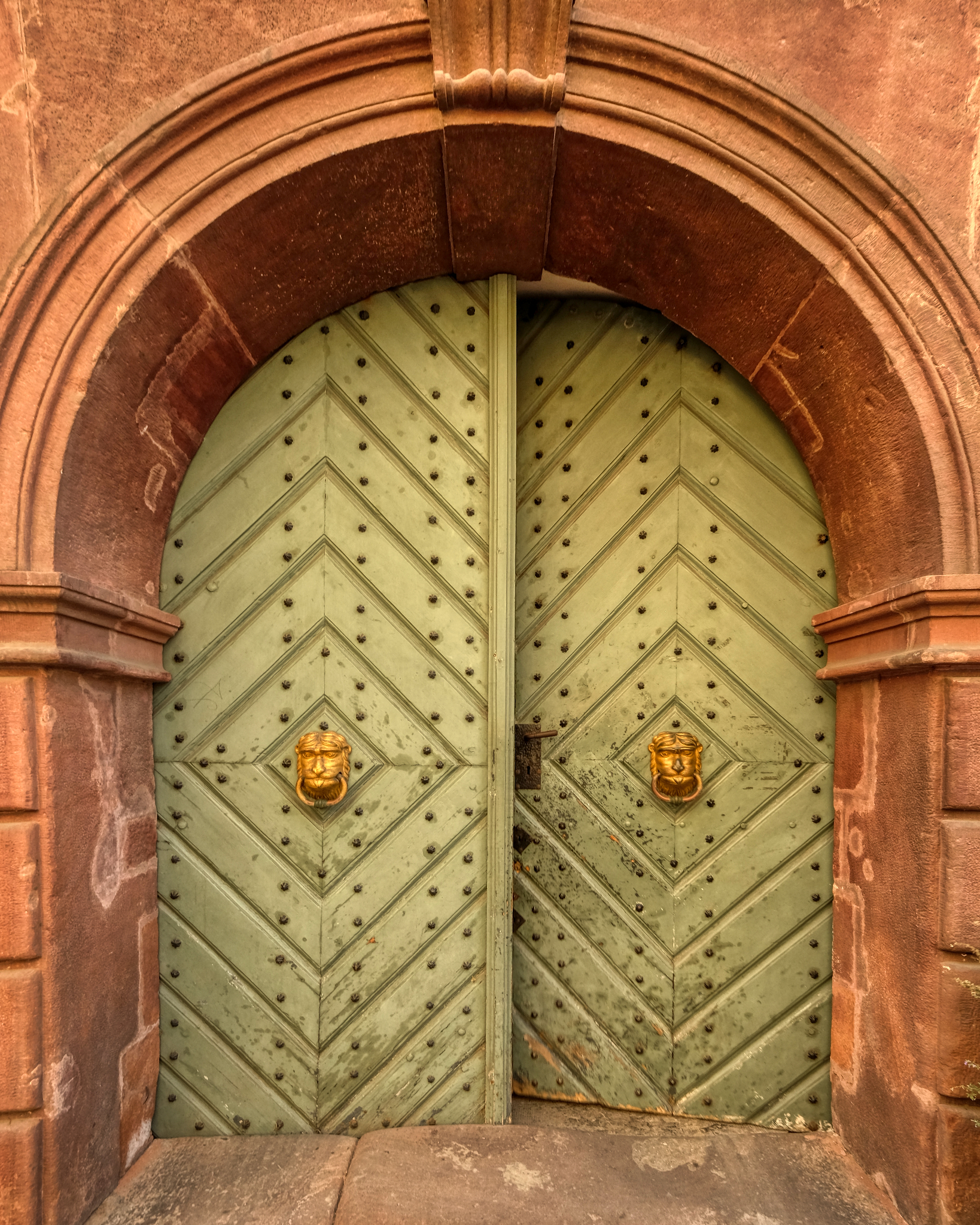 Doors are often restored, but it seems almost never replaced in the life of a building.
Doors are often restored, but it seems almost never replaced in the life of a building.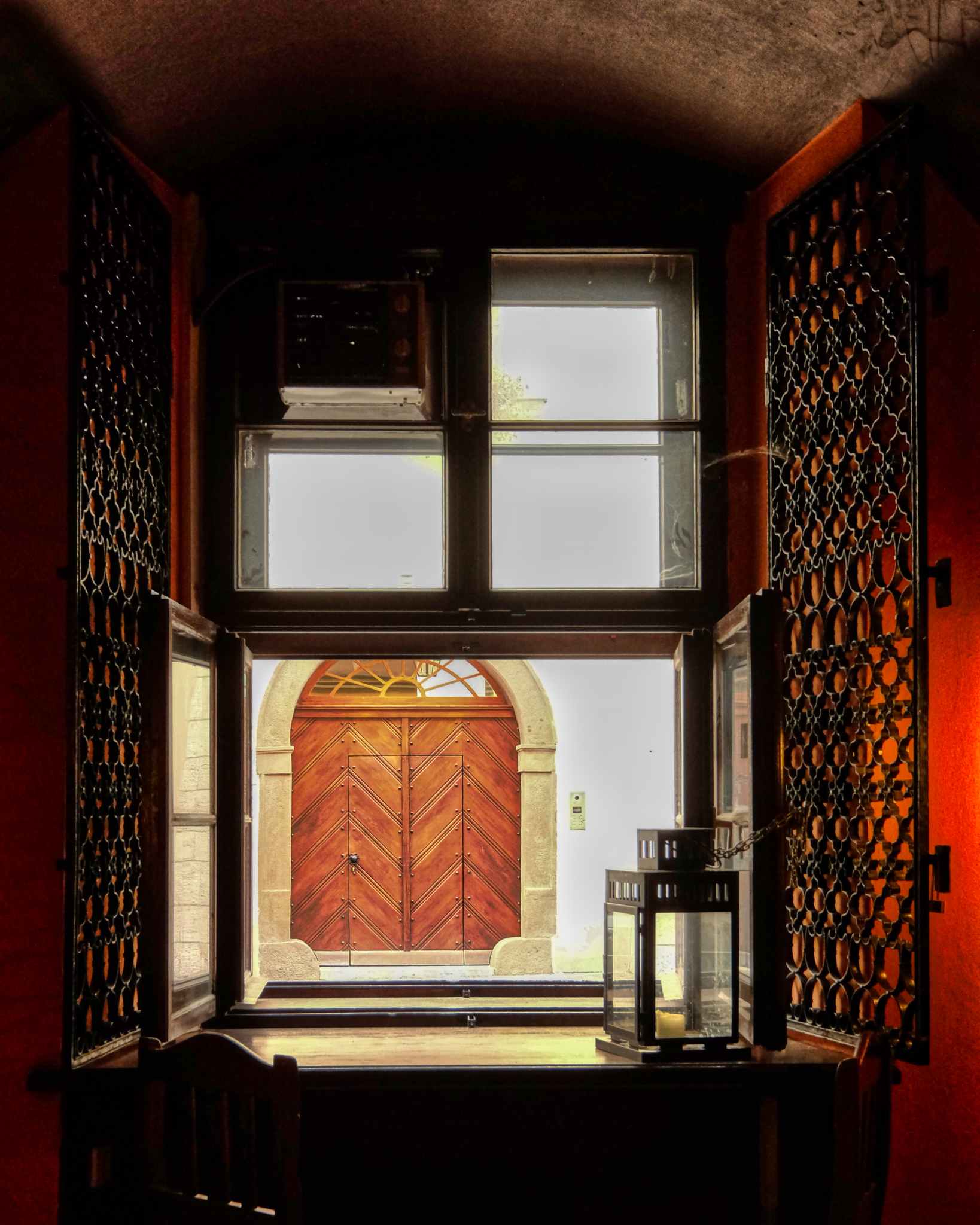 Looking out the window of a restaurant I saw this door. Stunning.
Looking out the window of a restaurant I saw this door. Stunning.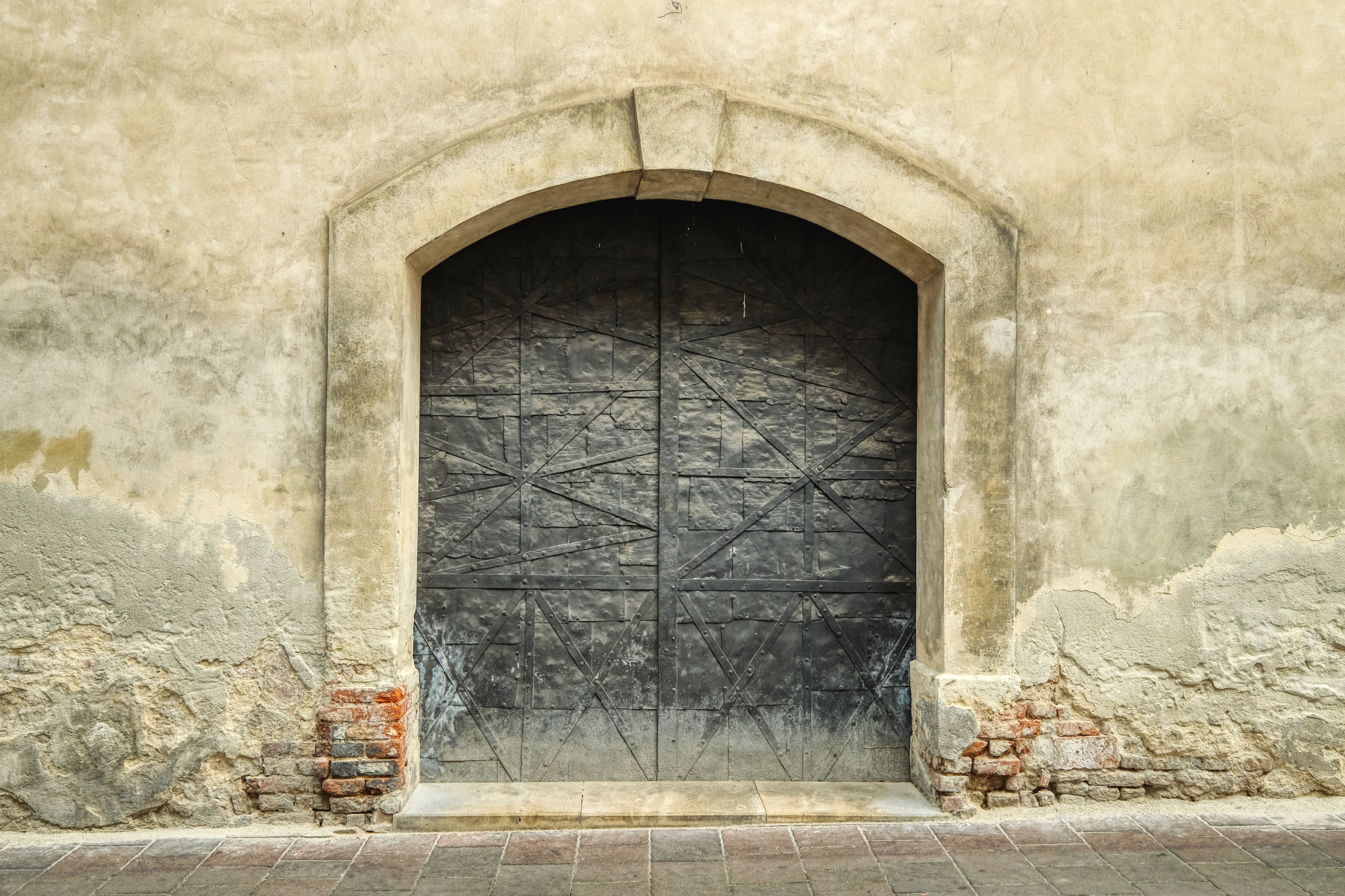 Some doors seem to have a power to draw you in.
Some doors seem to have a power to draw you in.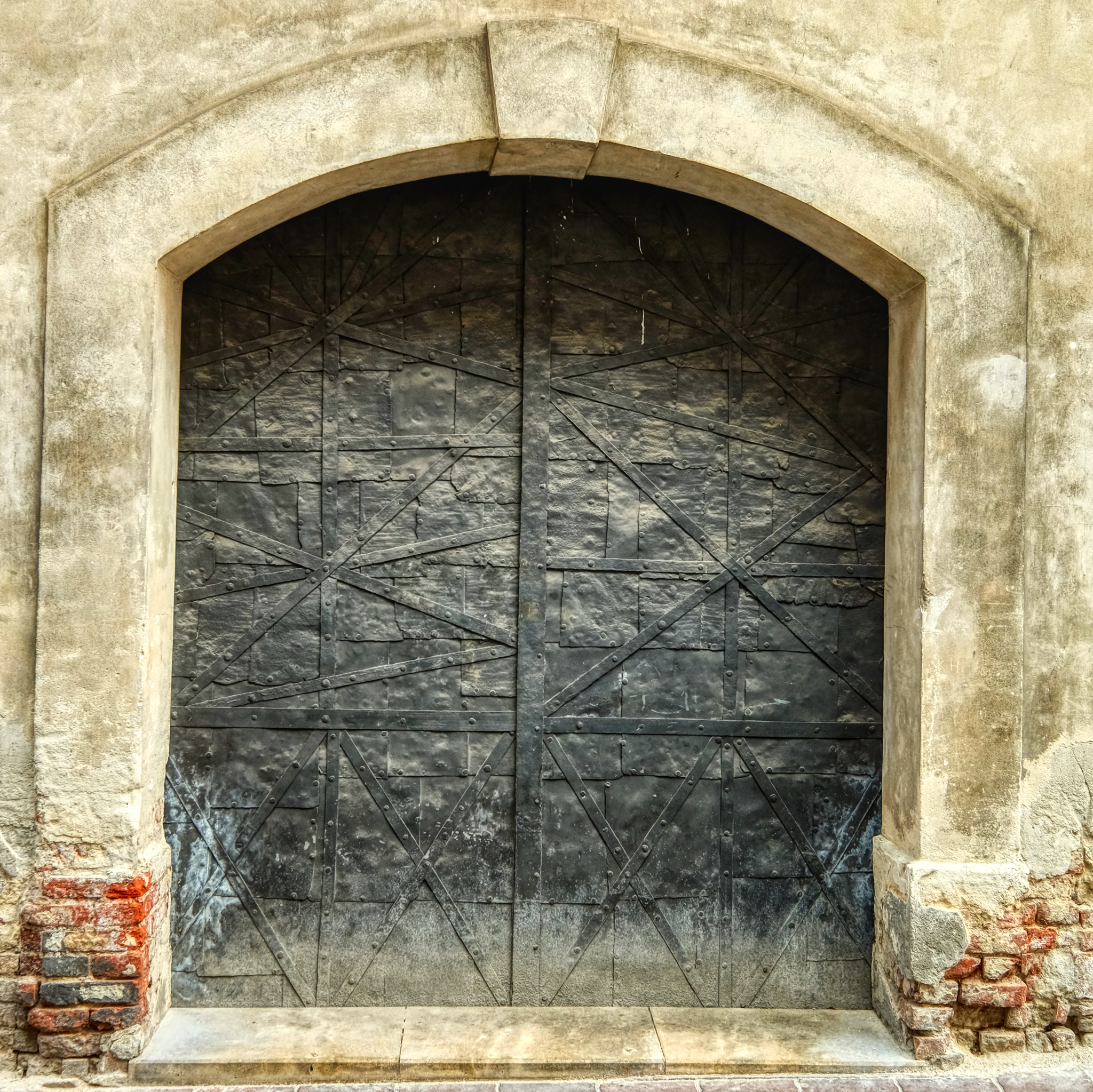 The strength of a steel door . . . with a story of repair.
The strength of a steel door . . . with a story of repair.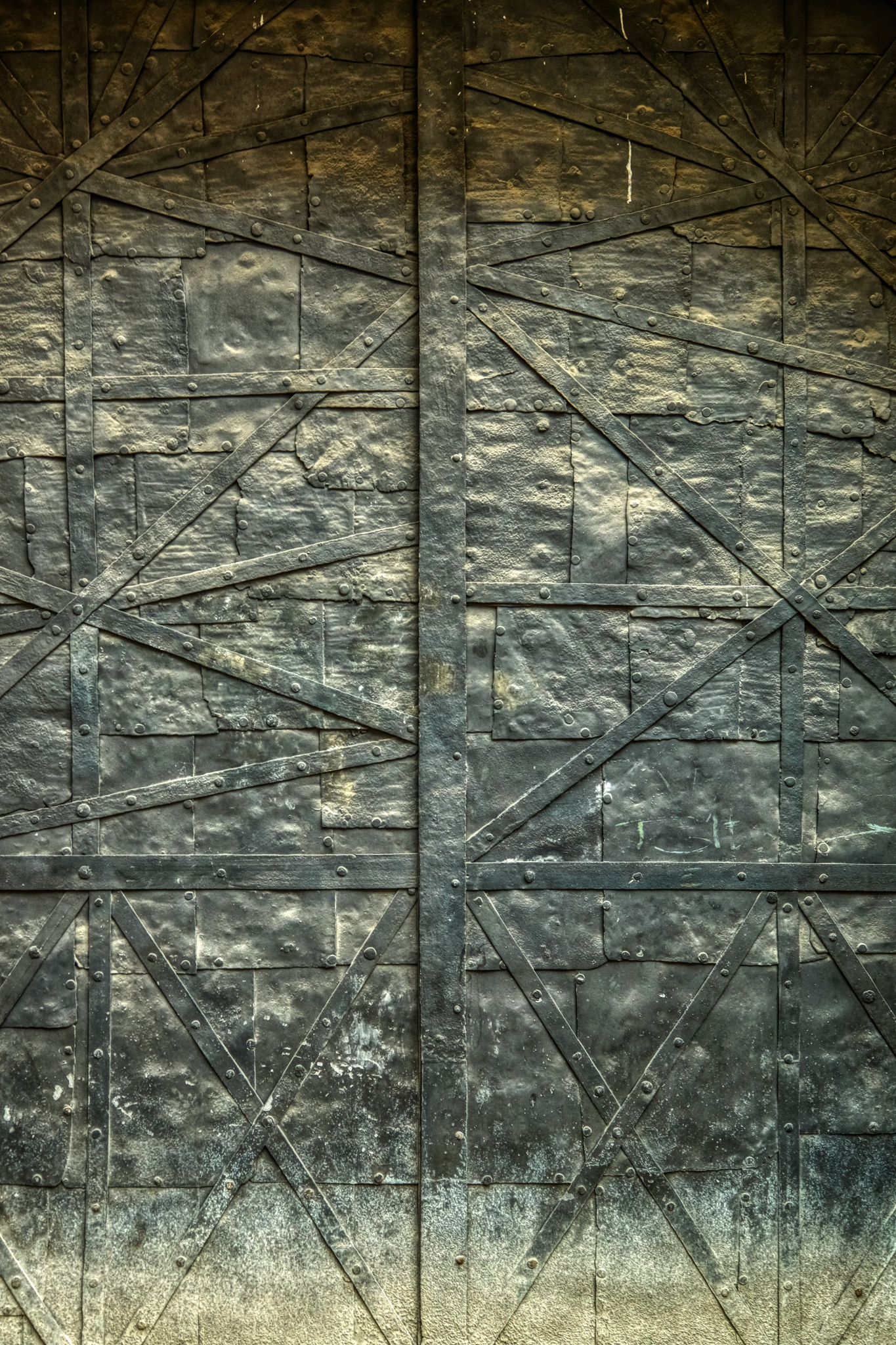 The textures! The patterns! The reflections!
The textures! The patterns! The reflections!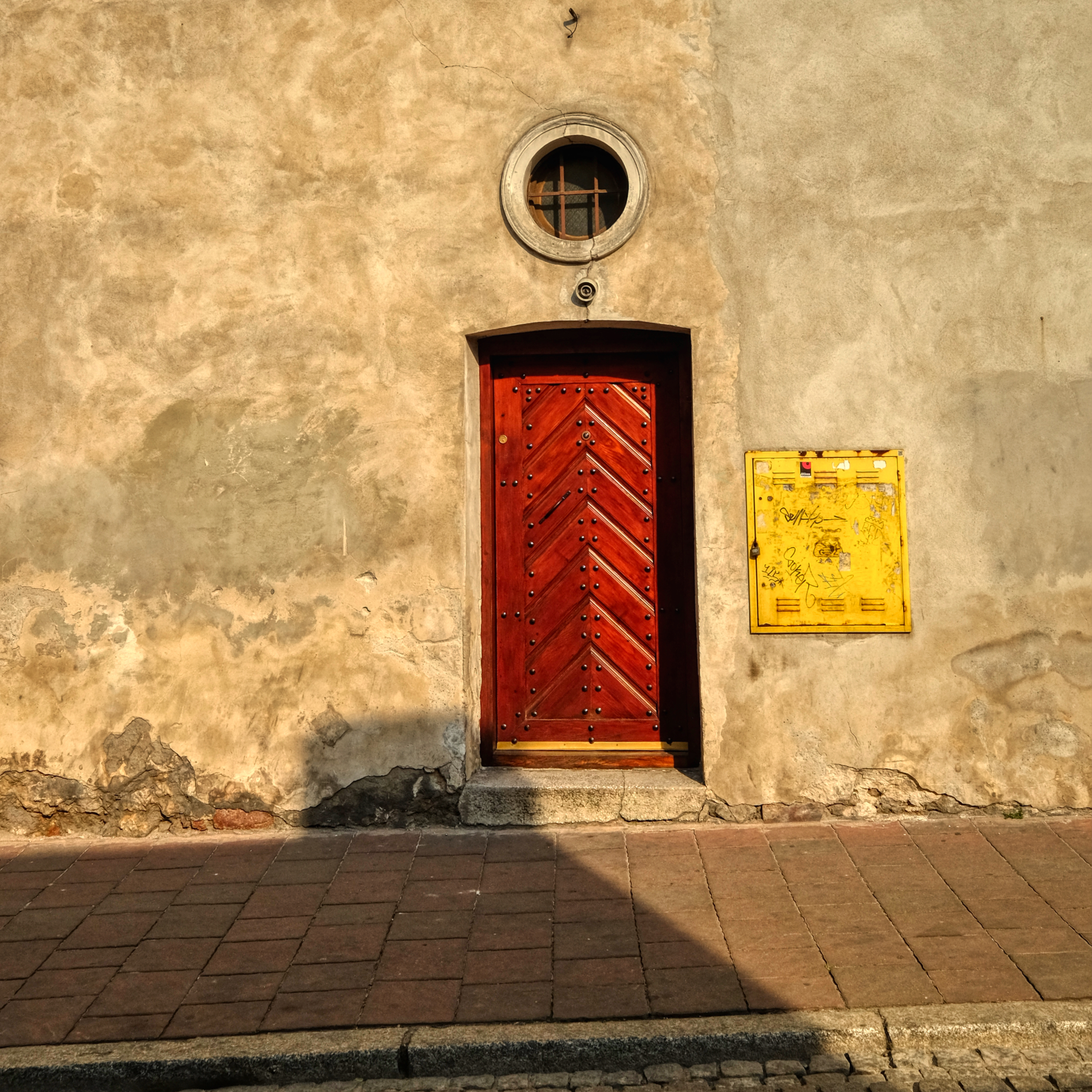 That wall! That Red door! That yellow service box! Astonishing.
That wall! That Red door! That yellow service box! Astonishing.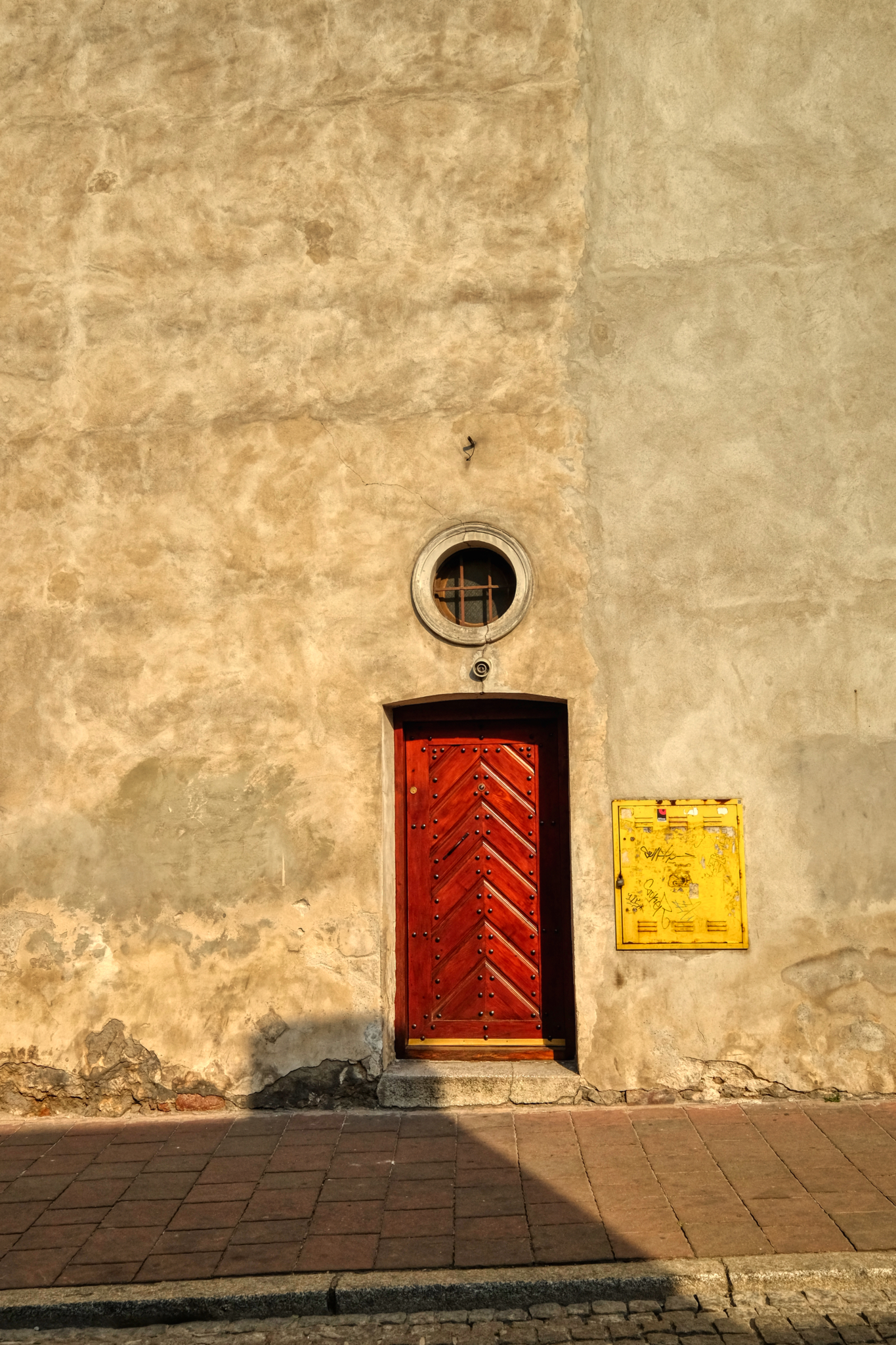 Same wall with different framing to emphasize the height of the wall . . . to make the wall powerful in the photograph.
Same wall with different framing to emphasize the height of the wall . . . to make the wall powerful in the photograph.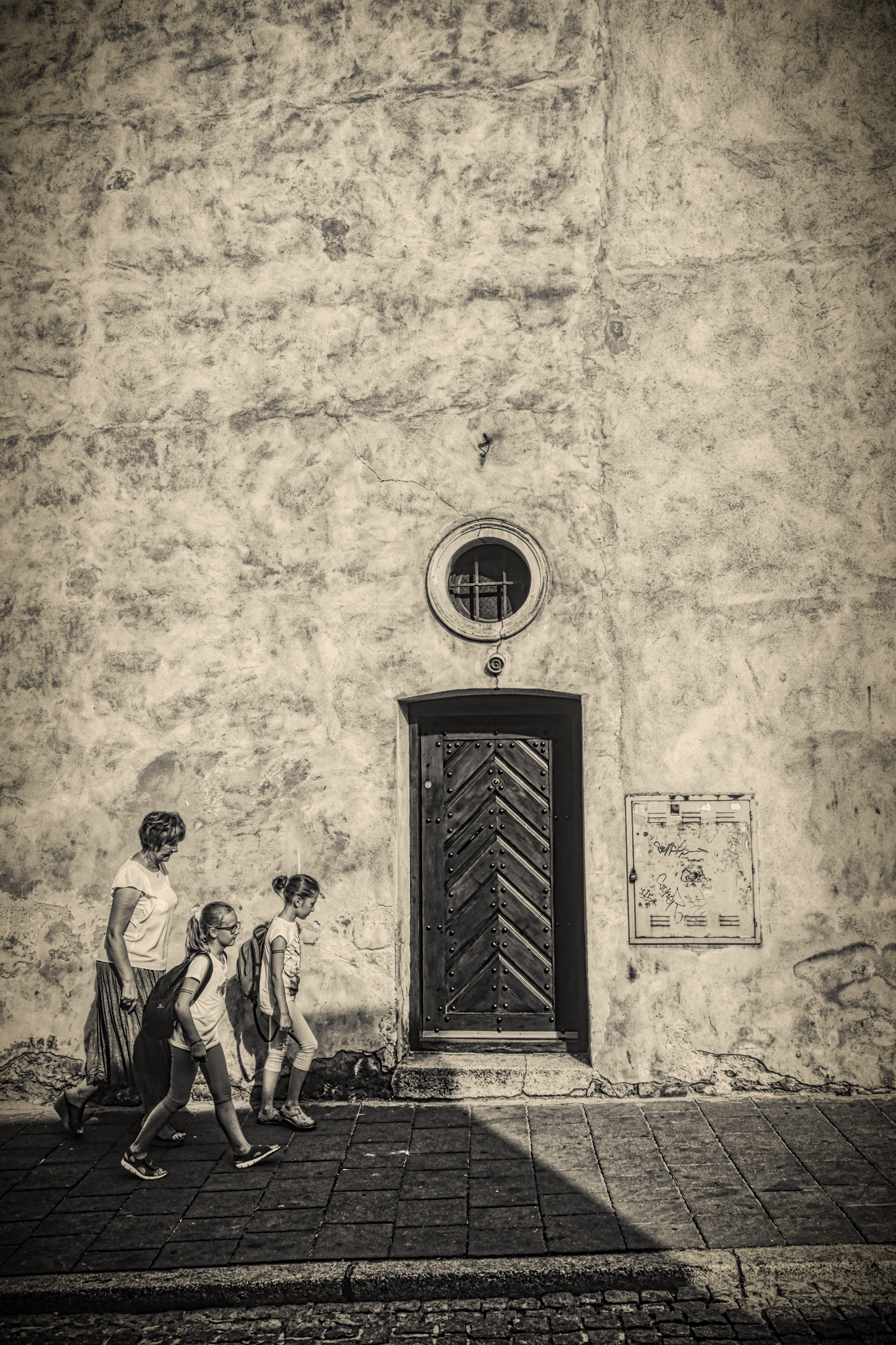 This family (?) walked in front while I was shooting these wall photos. I do not normally use aftereffects in my photography, but this one seemed to want this sepia tone. I like it.
This family (?) walked in front while I was shooting these wall photos. I do not normally use aftereffects in my photography, but this one seemed to want this sepia tone. I like it.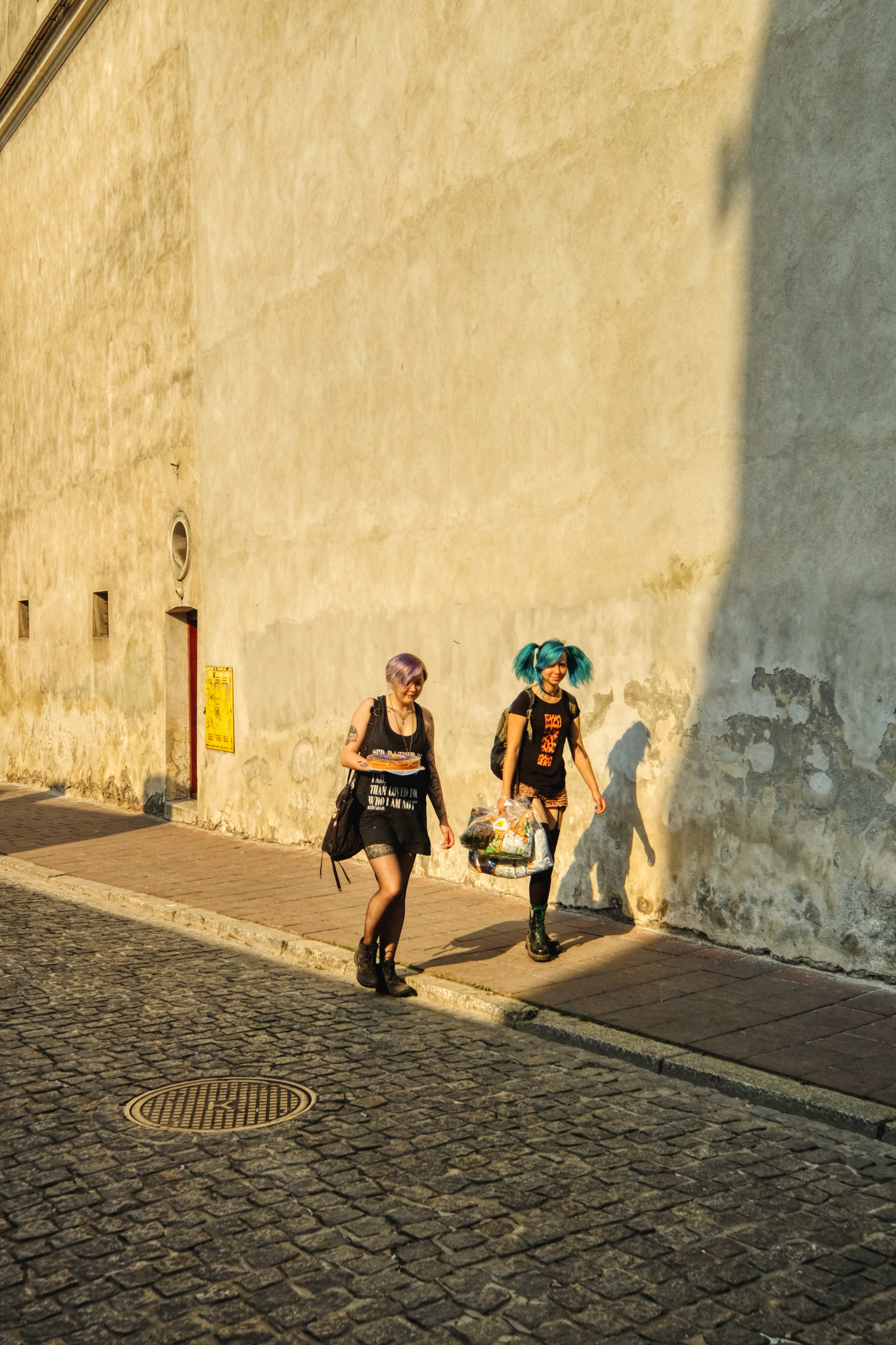 Same wall, door, service panel but different feeling. Punks bringing home lunch.
Same wall, door, service panel but different feeling. Punks bringing home lunch.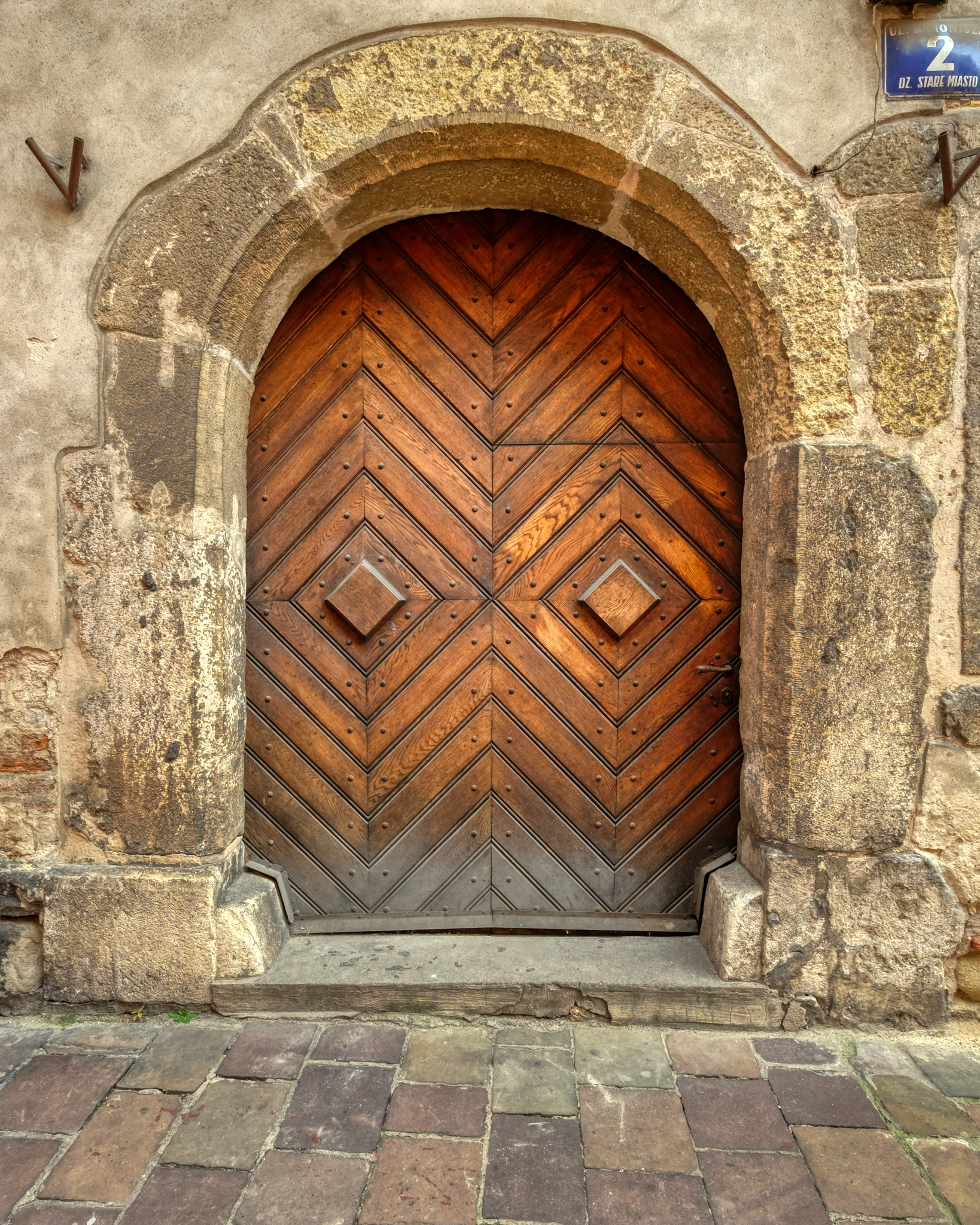 So many anncient doors . . .
So many anncient doors . . .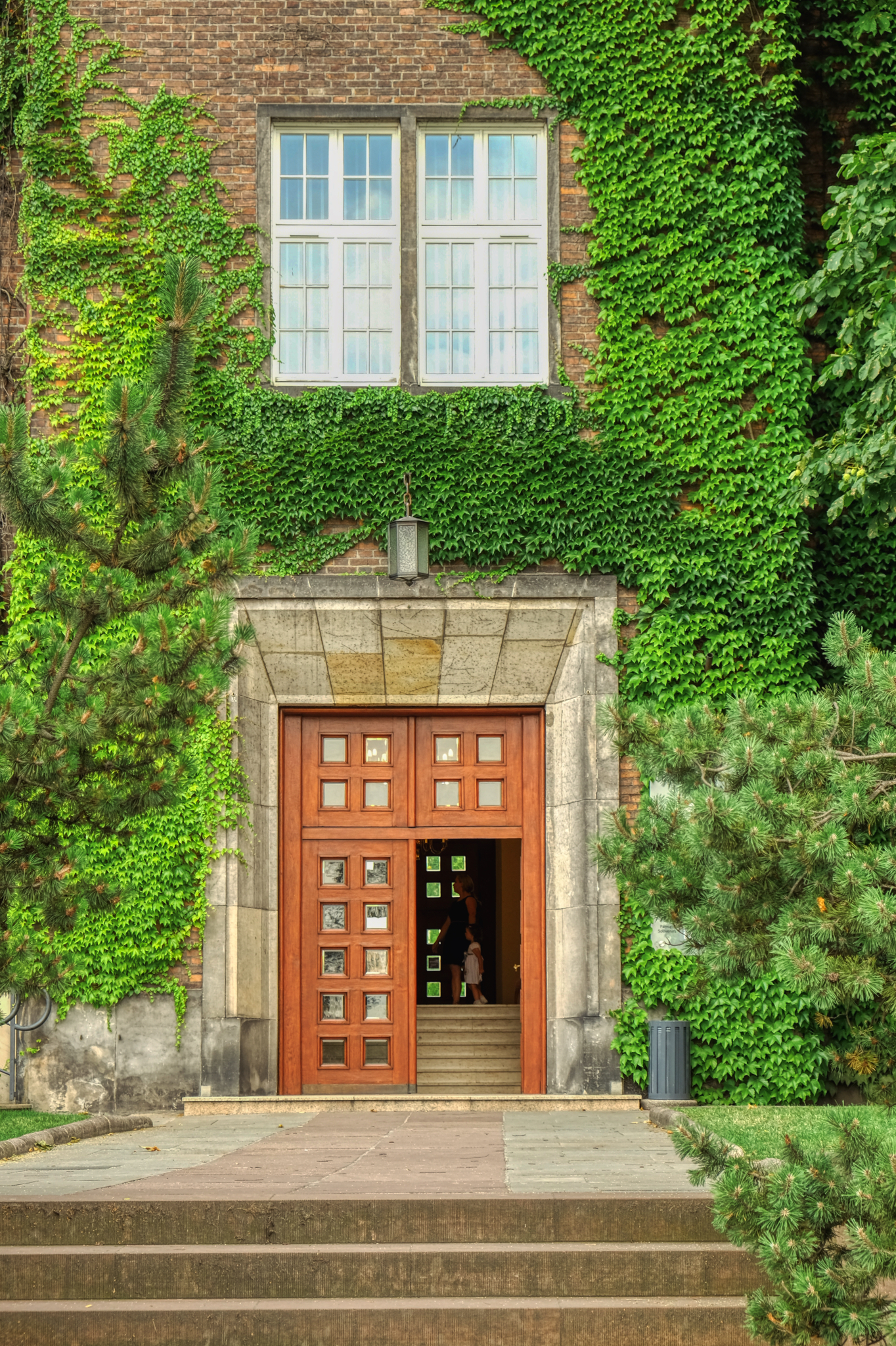 Lovely crawling ivy surrounding this artistic door.
Lovely crawling ivy surrounding this artistic door.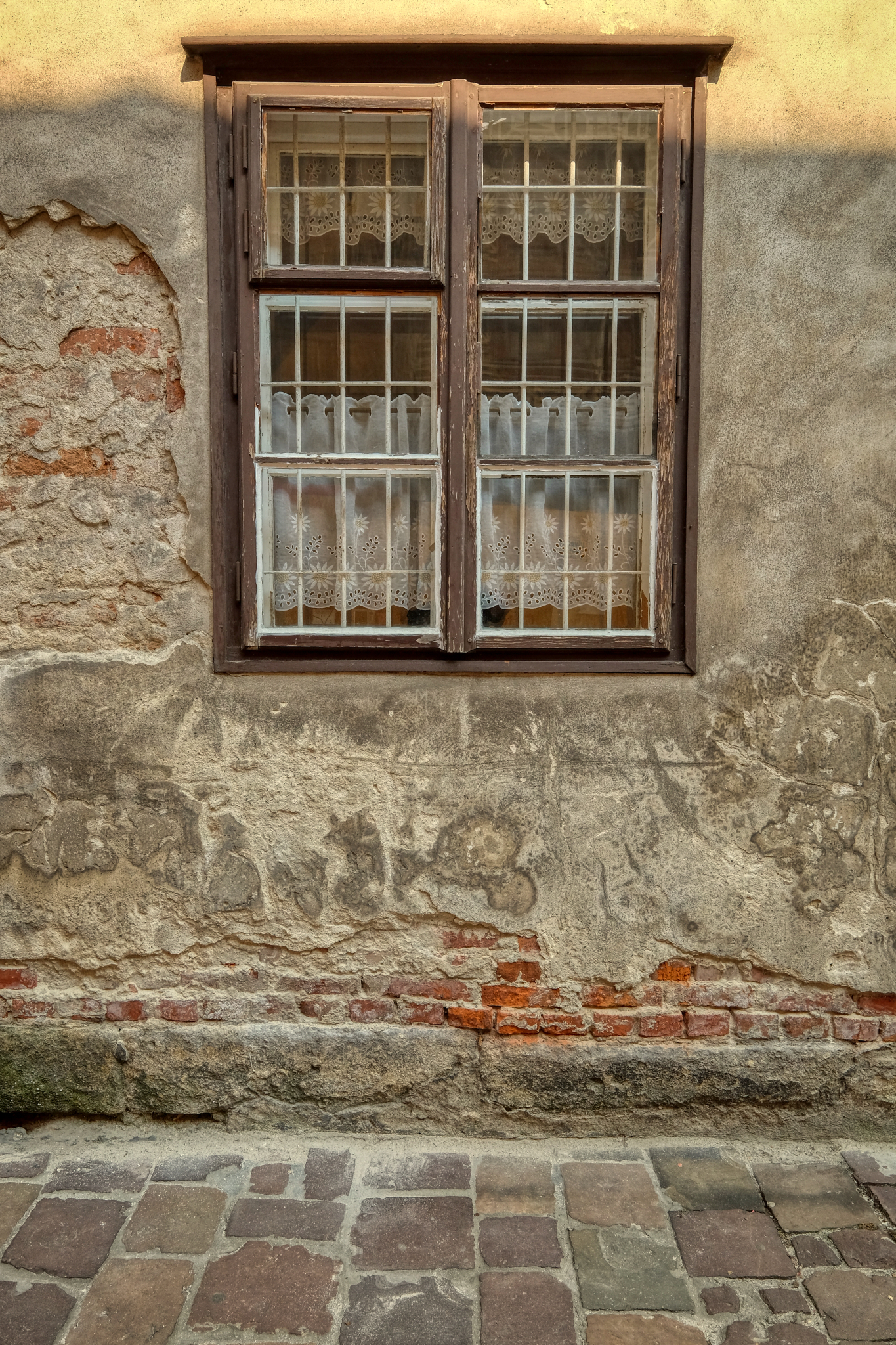 The windows are the eyes of a building . . . they can reveal so much.
The windows are the eyes of a building . . . they can reveal so much.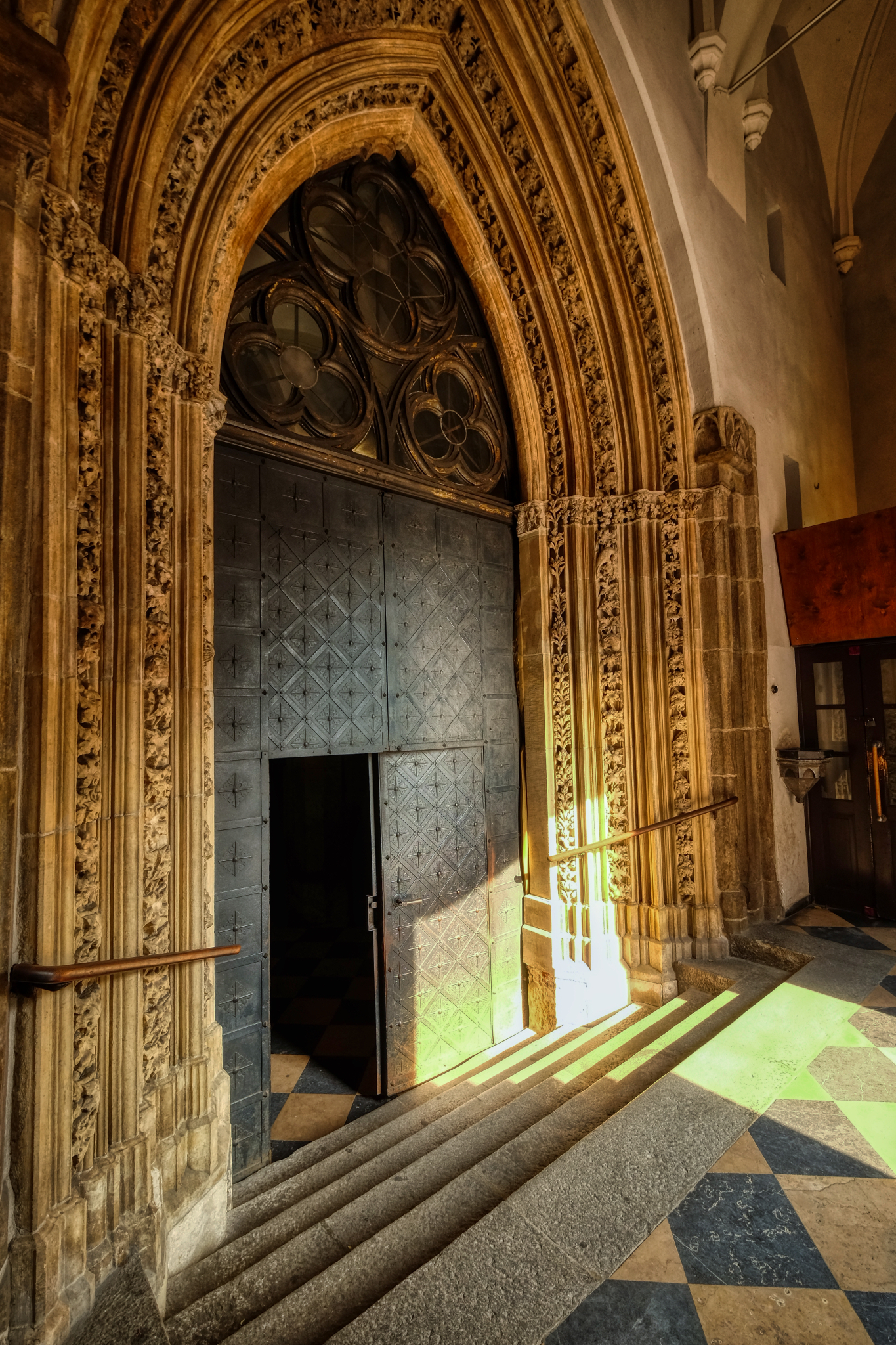 A church/cathedral door, and all it promises, and all of its history, and all of its sorrow.
A church/cathedral door, and all it promises, and all of its history, and all of its sorrow.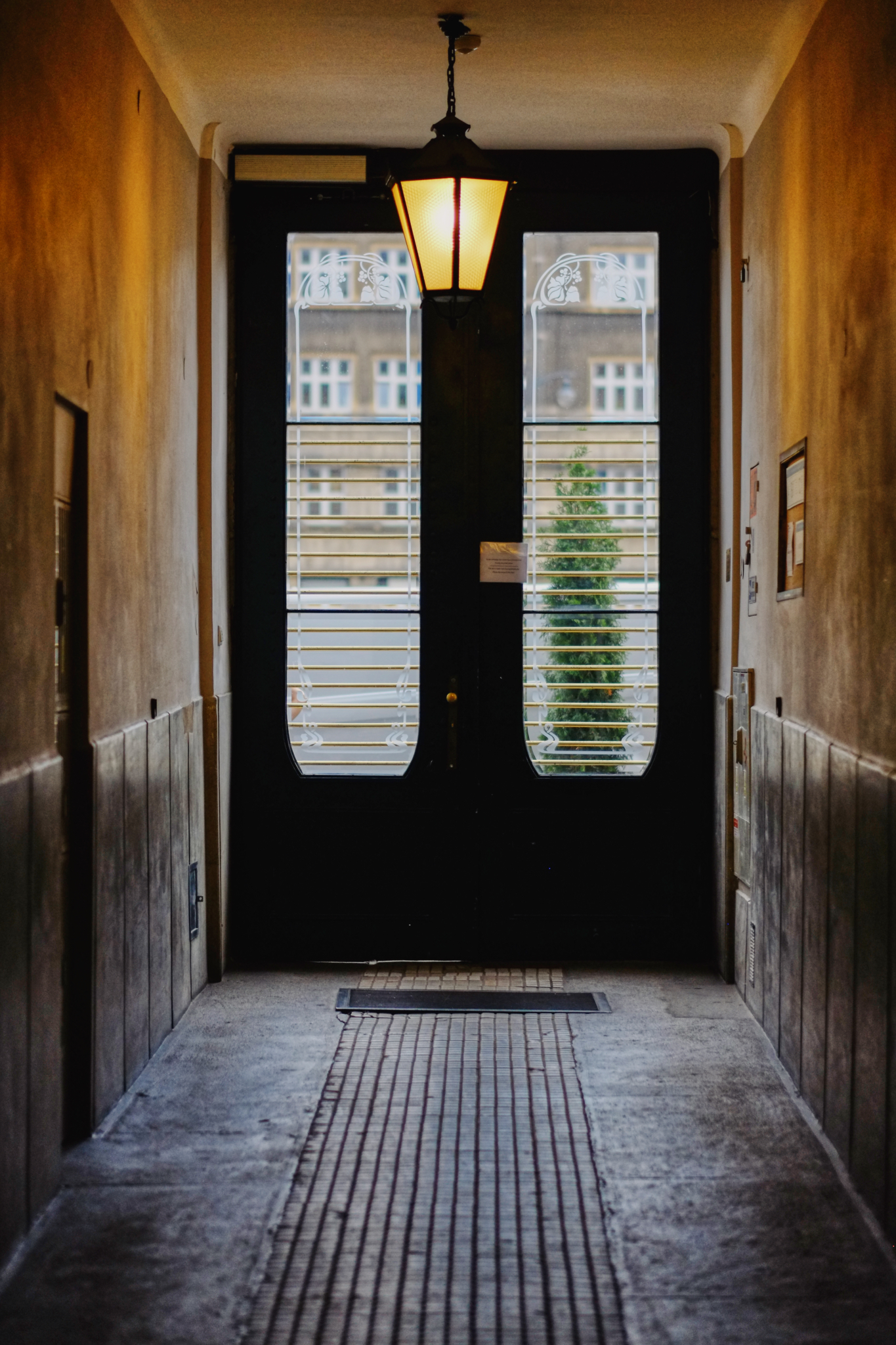 My last door photo . . . our Soviet-era hotel. Simple, honest . . . opening to the marvelous city of Kraków.
My last door photo . . . our Soviet-era hotel. Simple, honest . . . opening to the marvelous city of Kraków.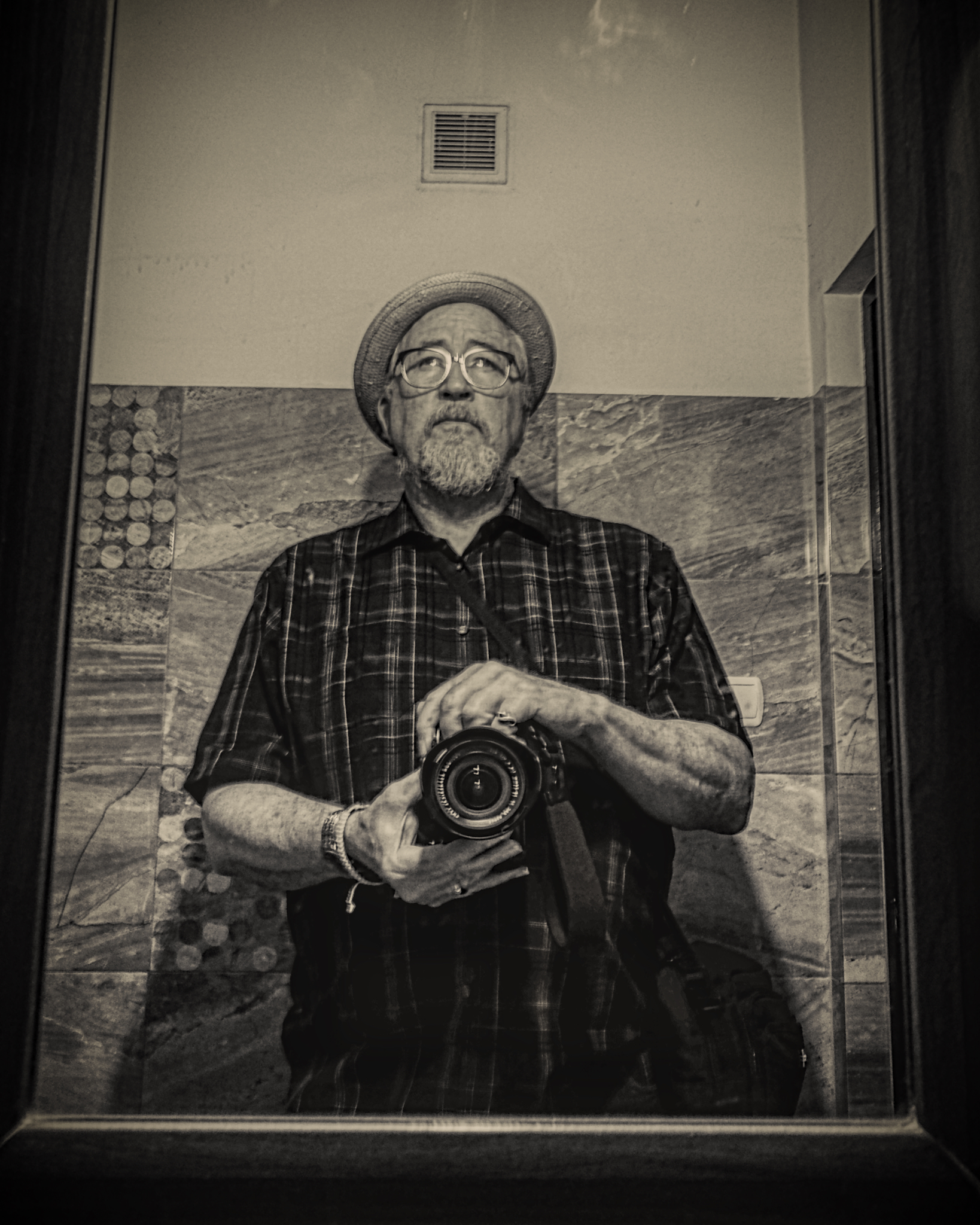 I saw this guy in the mirror of an elevator in Kraków, Poland and wondered who he was.
I saw this guy in the mirror of an elevator in Kraków, Poland and wondered who he was.A New Years Eve Ramble Near Hua Hin, Thailand
 Friday, March 20, 2020 at 2:05PM
Friday, March 20, 2020 at 2:05PM 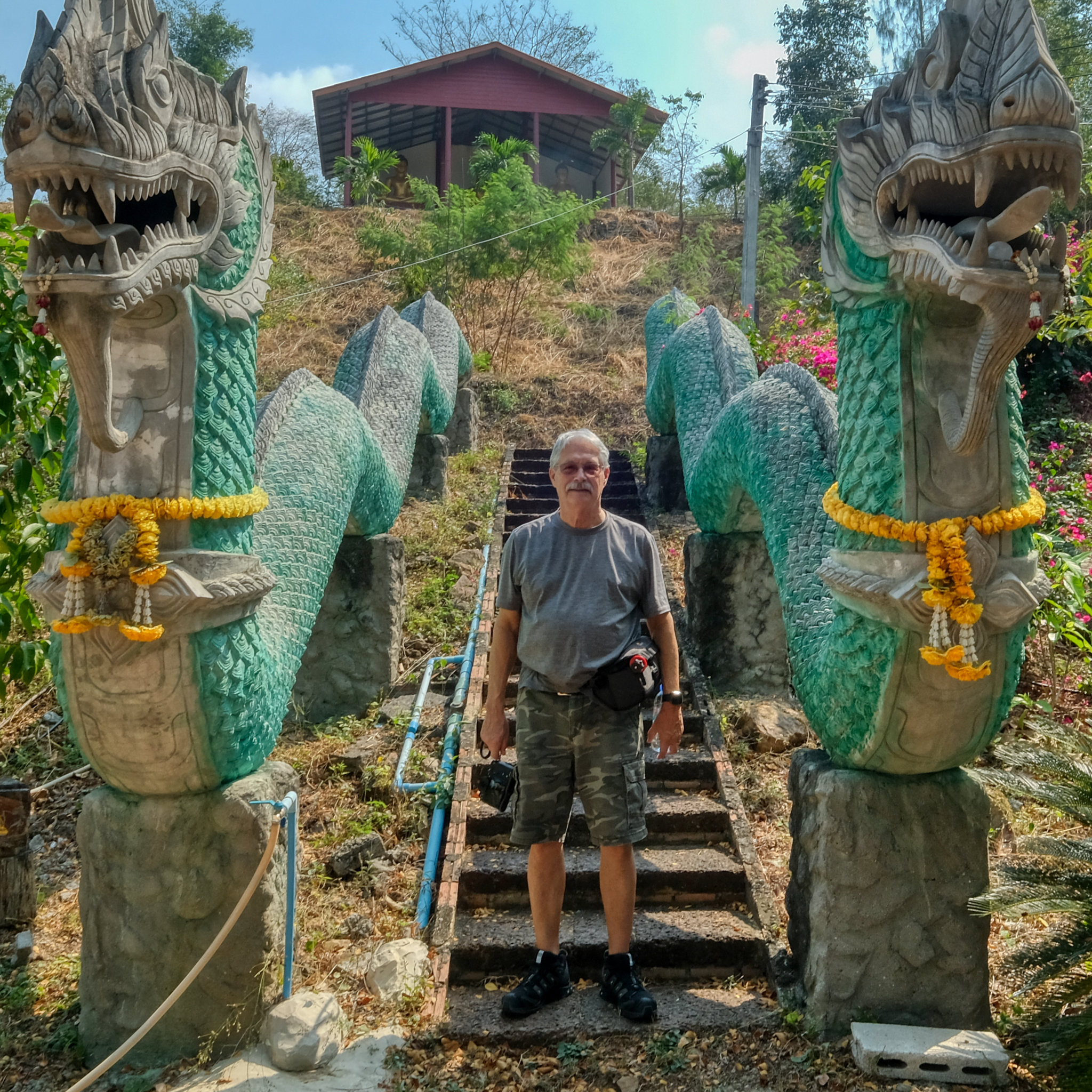 My visiting friend (of 45 years) on the verge of a long climb!
My visiting friend (of 45 years) on the verge of a long climb!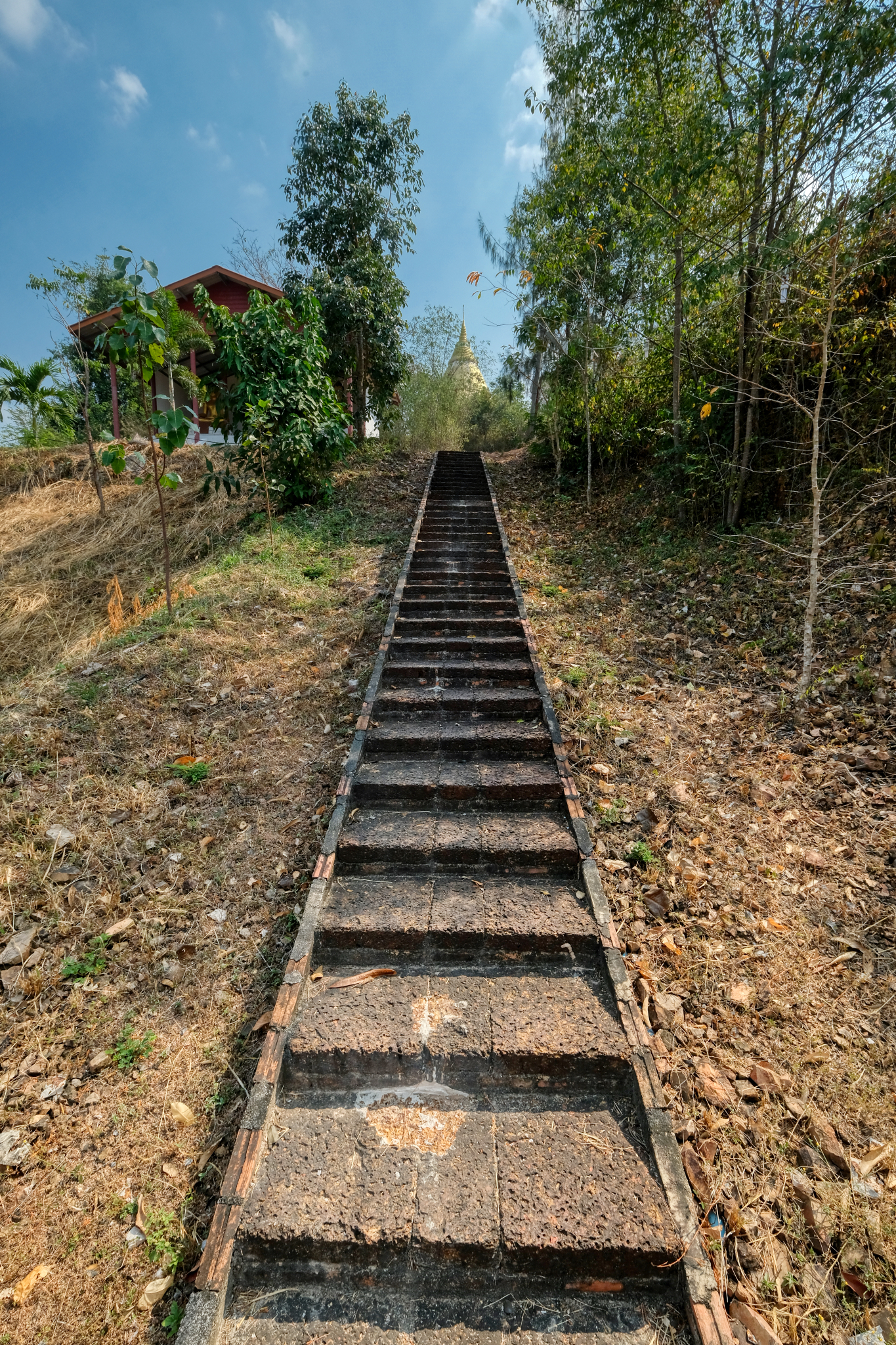 A long way up to the chedi.
A long way up to the chedi. 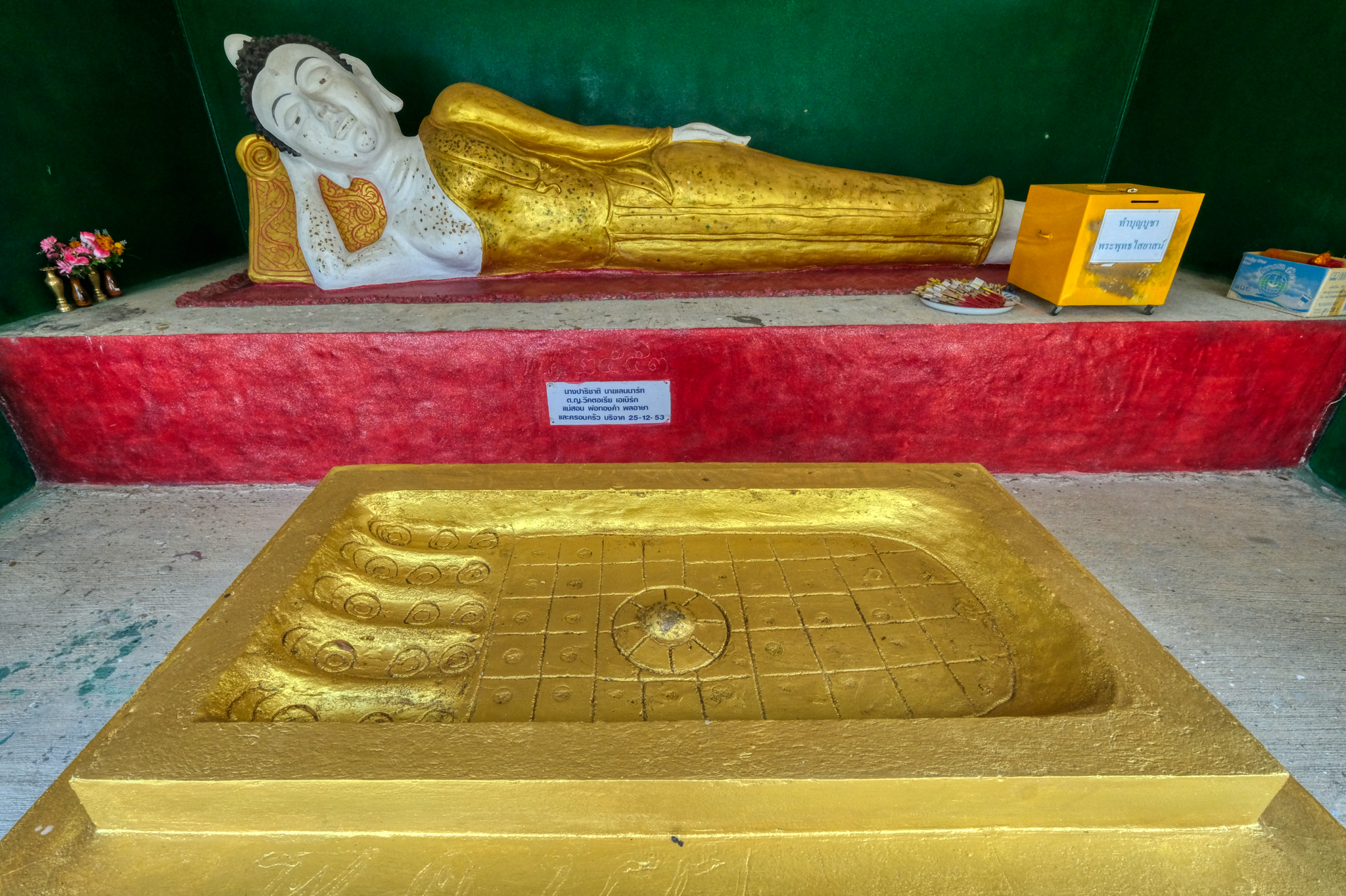 A beautiful shrine with a reclining Buddha on the way up . . .
A beautiful shrine with a reclining Buddha on the way up . . . 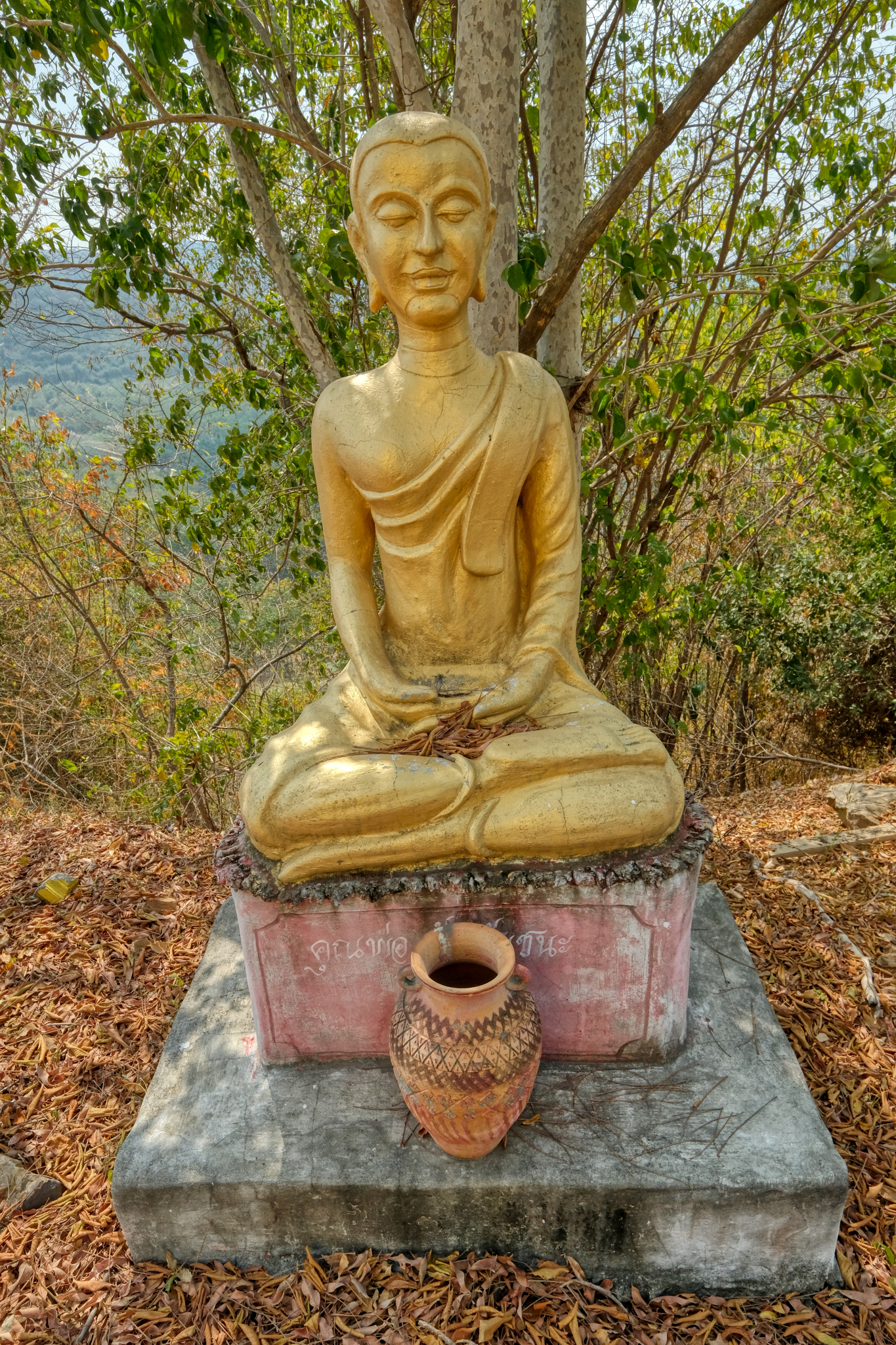 This 'naive art' Buddha image was very heartwarming.
This 'naive art' Buddha image was very heartwarming.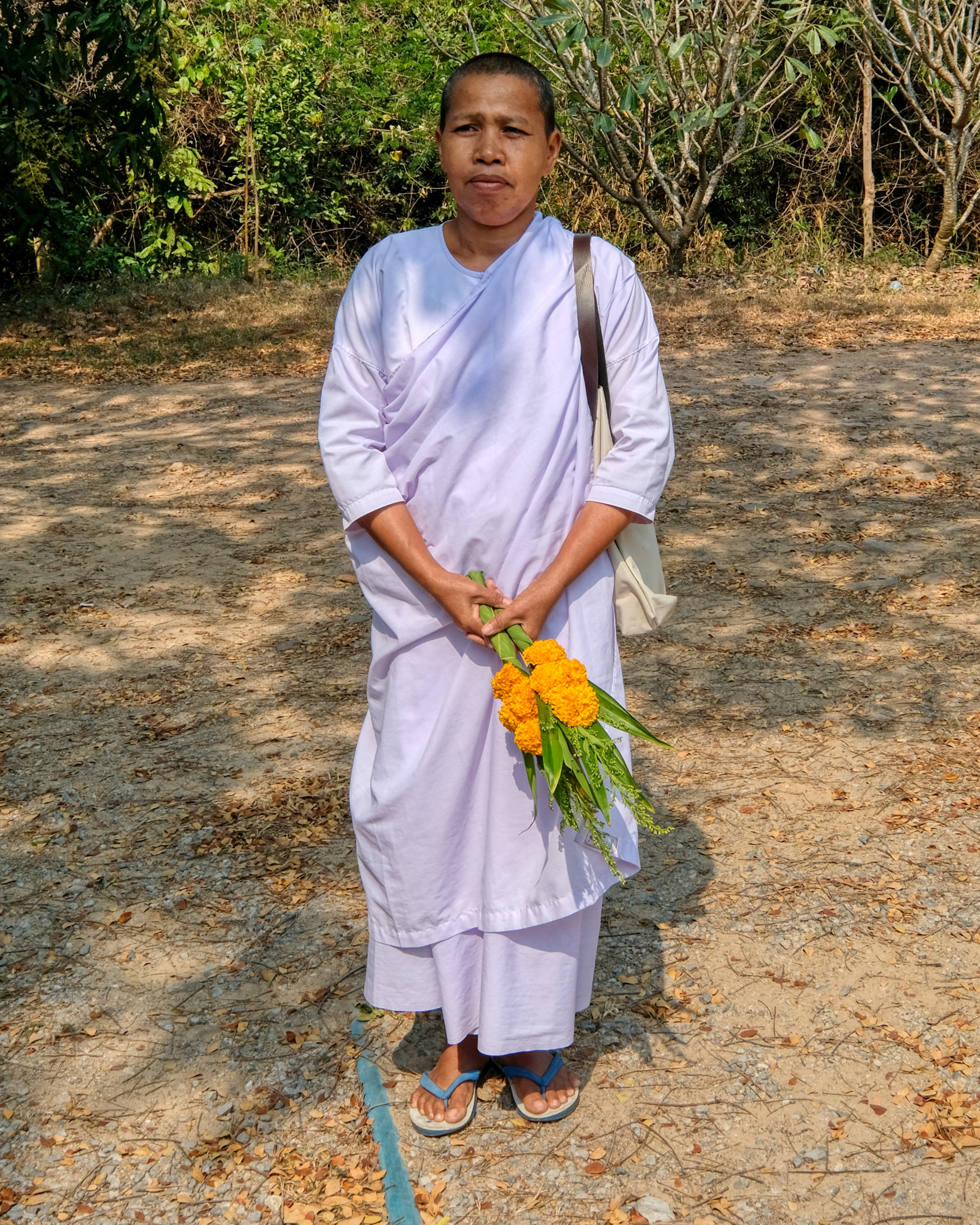 This Buddhist 'nun' followed us around for the afternoon. She is a kind of security guard. Good idea . . . there are some very beautiful and rare Buddha statues in the golden chedi (known as a 'stupa' in other Buddhist trditions and countries).
This Buddhist 'nun' followed us around for the afternoon. She is a kind of security guard. Good idea . . . there are some very beautiful and rare Buddha statues in the golden chedi (known as a 'stupa' in other Buddhist trditions and countries).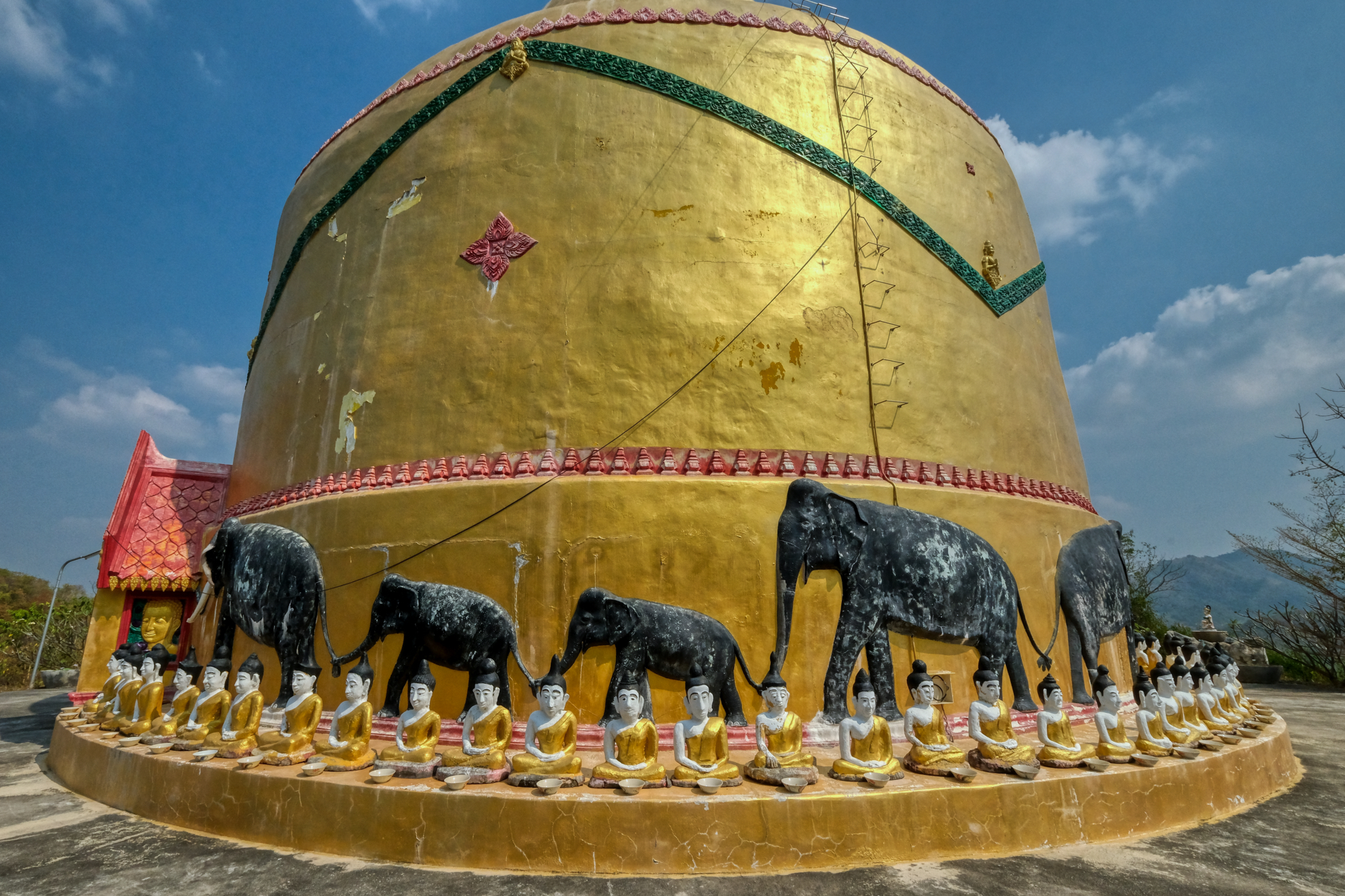 This is what I had taken my friend to see . . . and for me, to see again.
This is what I had taken my friend to see . . . and for me, to see again.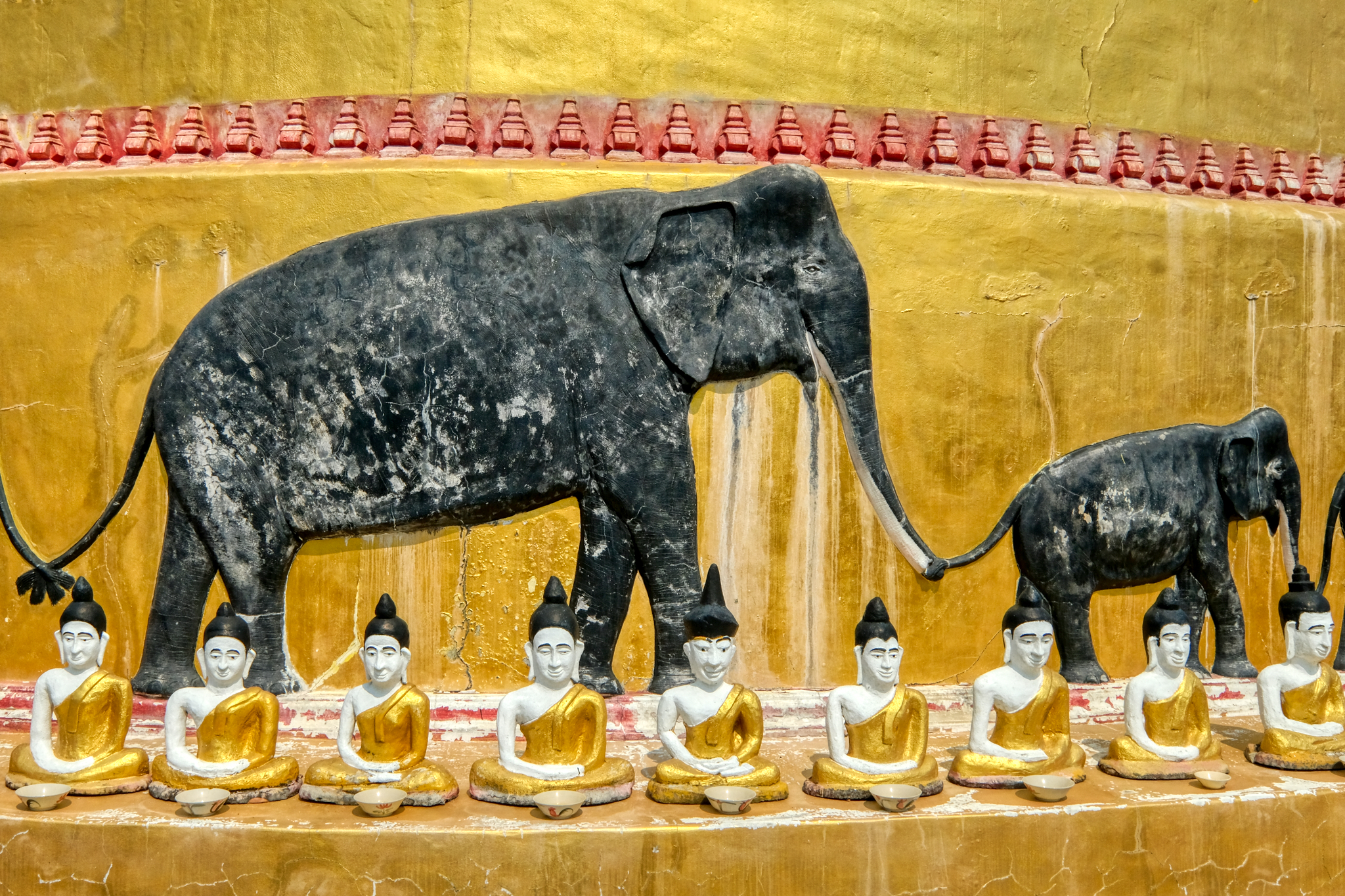 More fascinating, and individualistic, naive art Buddha images. As interesting as the outside of the chedi was, it is the inside that brought me back!
More fascinating, and individualistic, naive art Buddha images. As interesting as the outside of the chedi was, it is the inside that brought me back!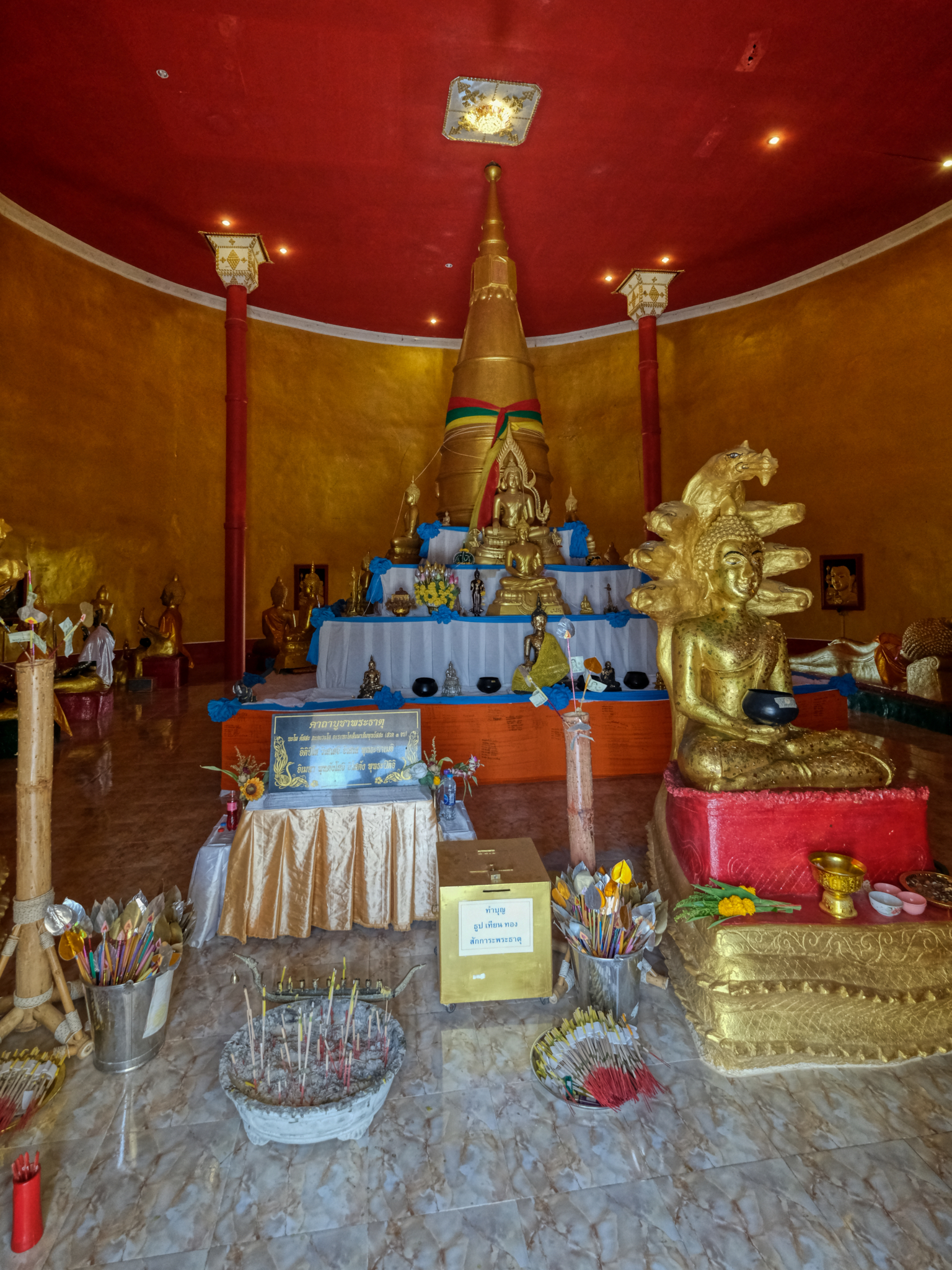 Looking into the chedi interior from the front door. WOW!
Looking into the chedi interior from the front door. WOW!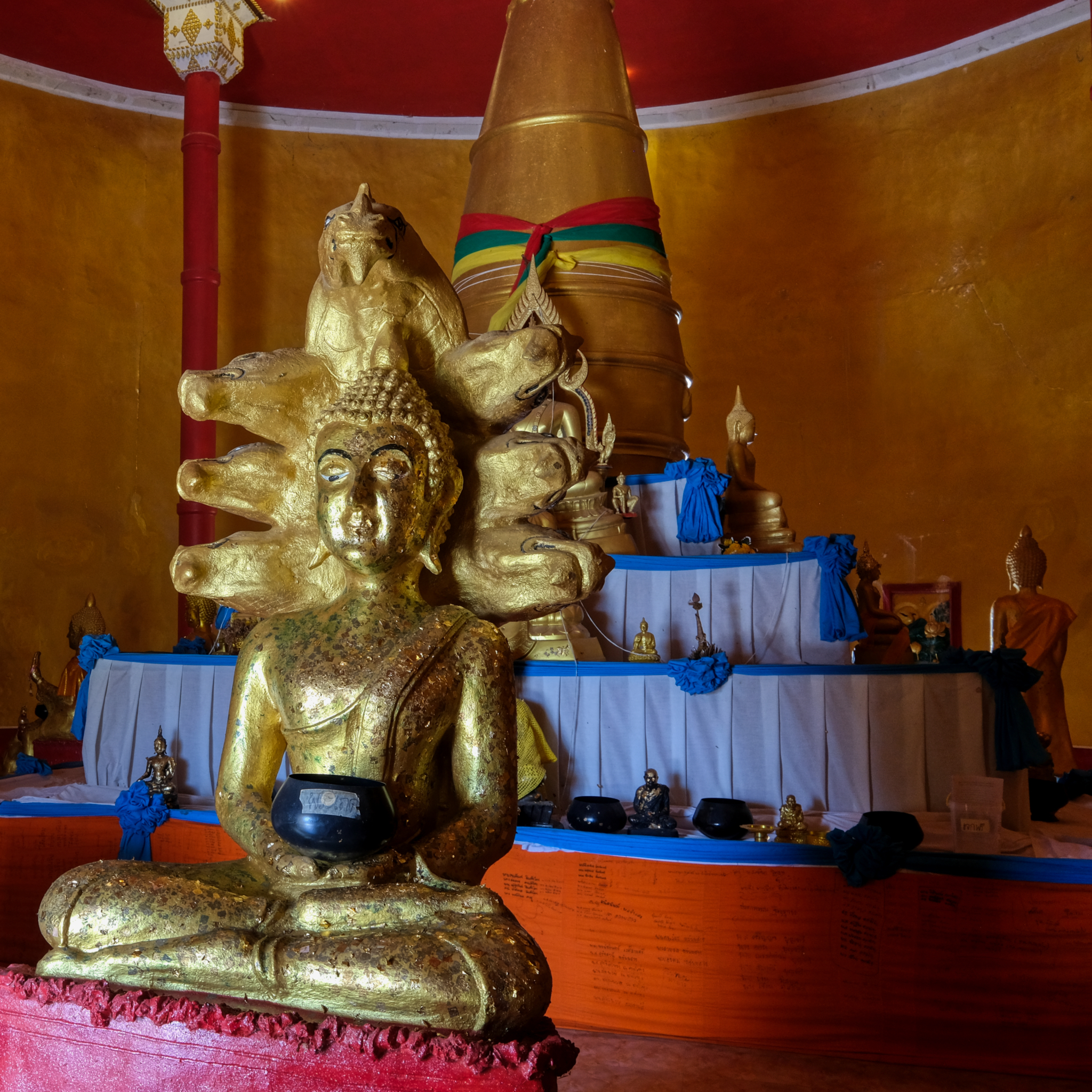 The light was so scrumptious, the images so serene . . .
The light was so scrumptious, the images so serene . . .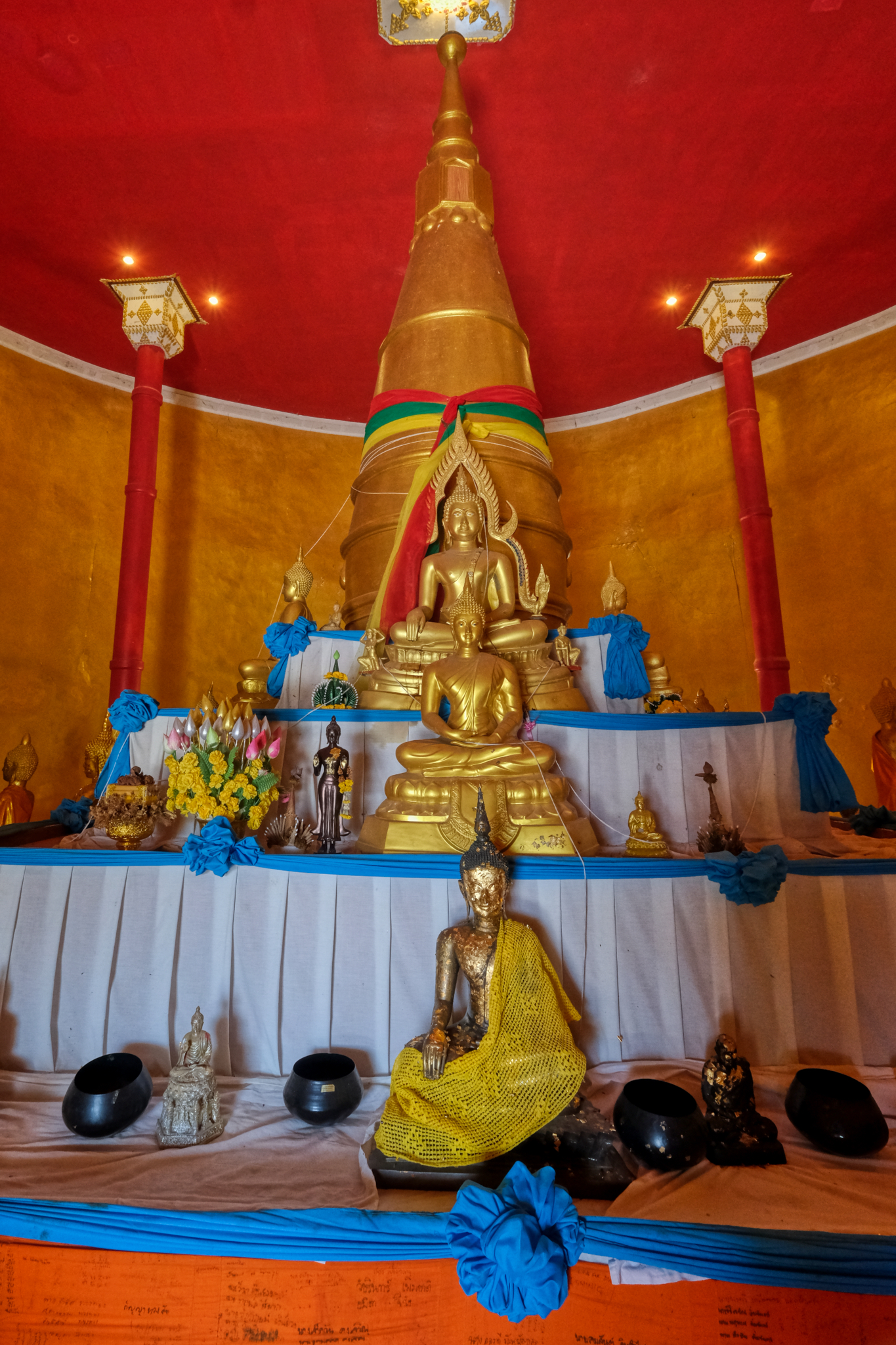 The front of the entry altar. The big interior in its marvelously bright colors.
The front of the entry altar. The big interior in its marvelously bright colors.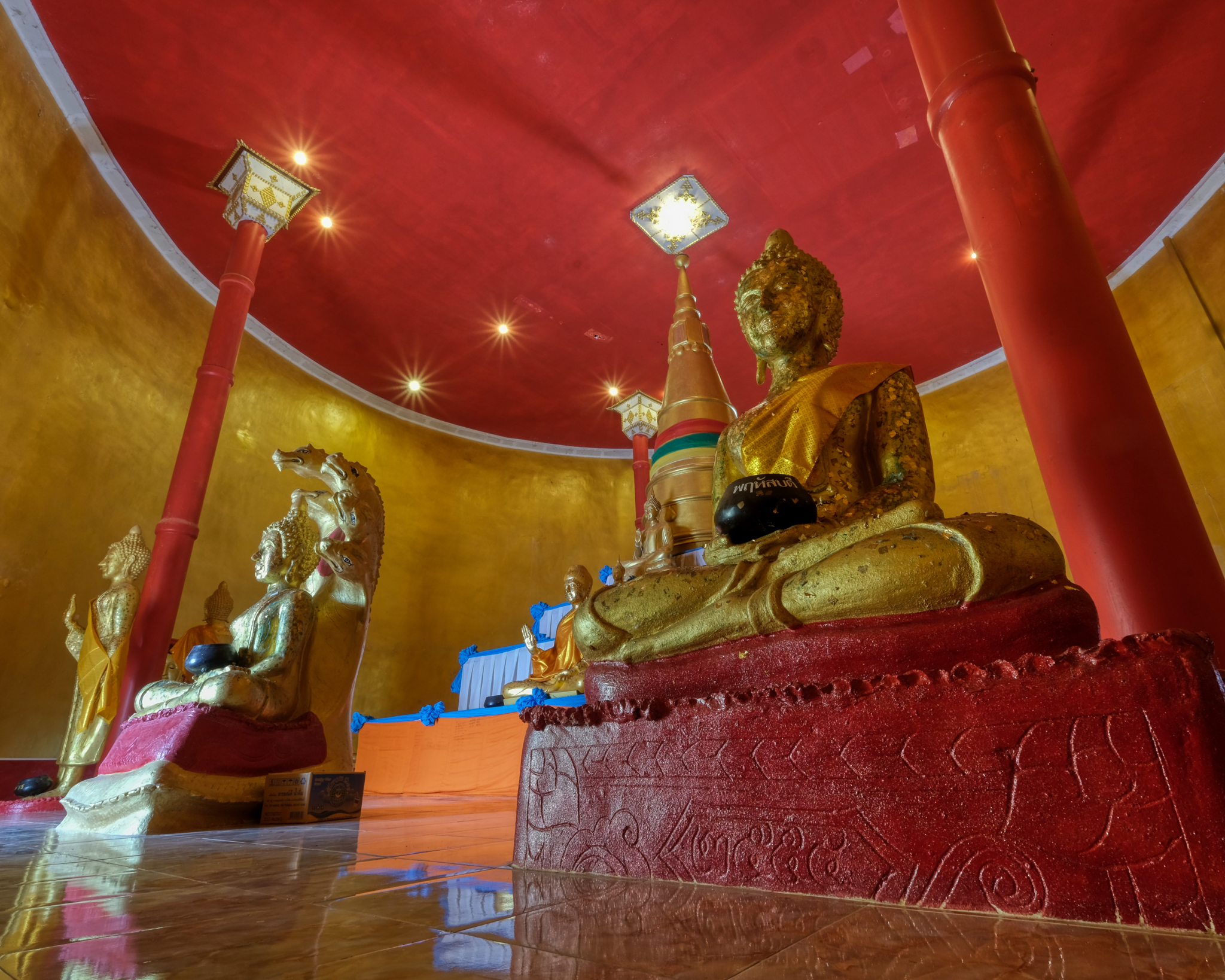 My camera on a small tripod . . . so many superb images to capture.
My camera on a small tripod . . . so many superb images to capture.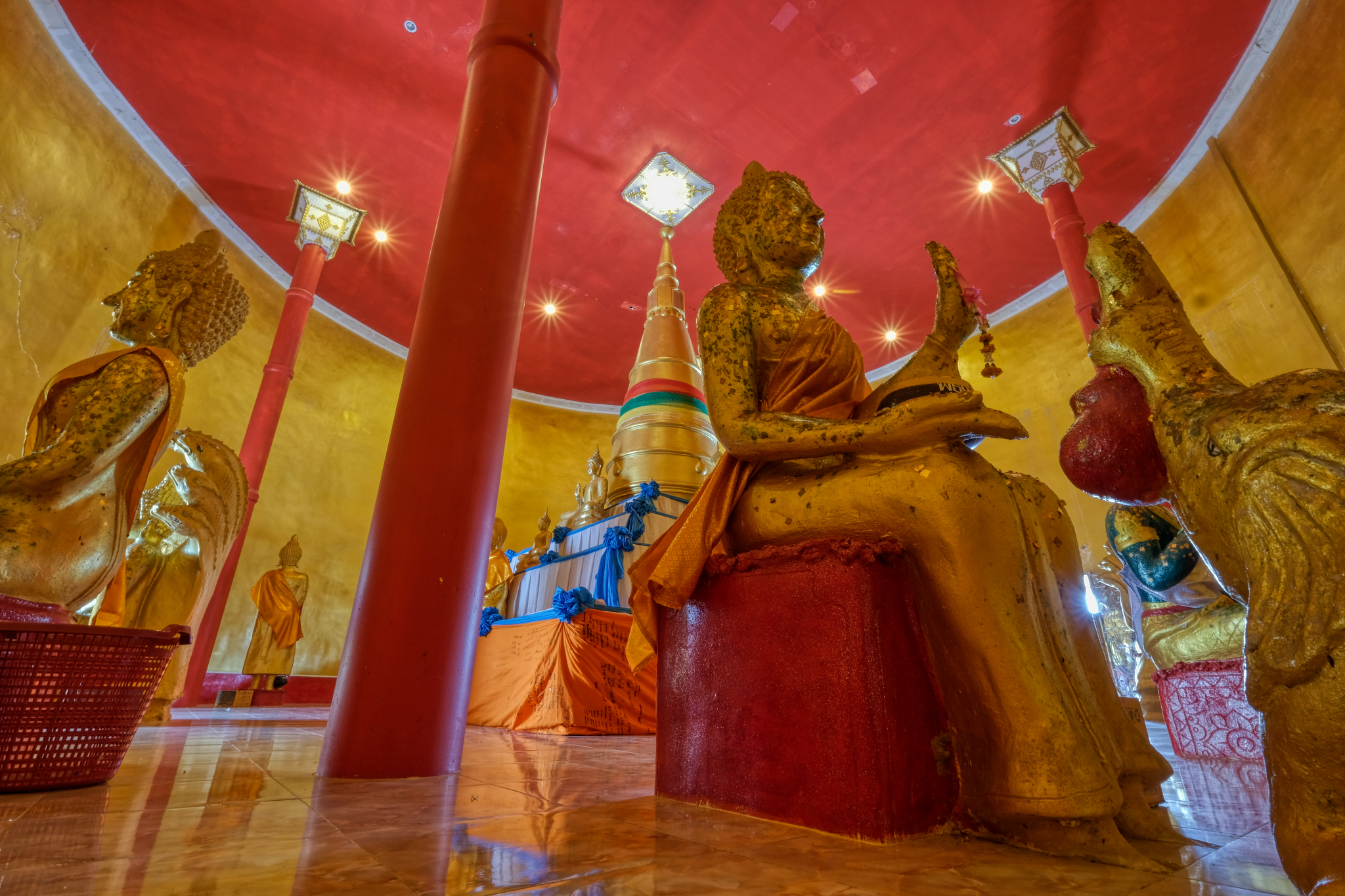
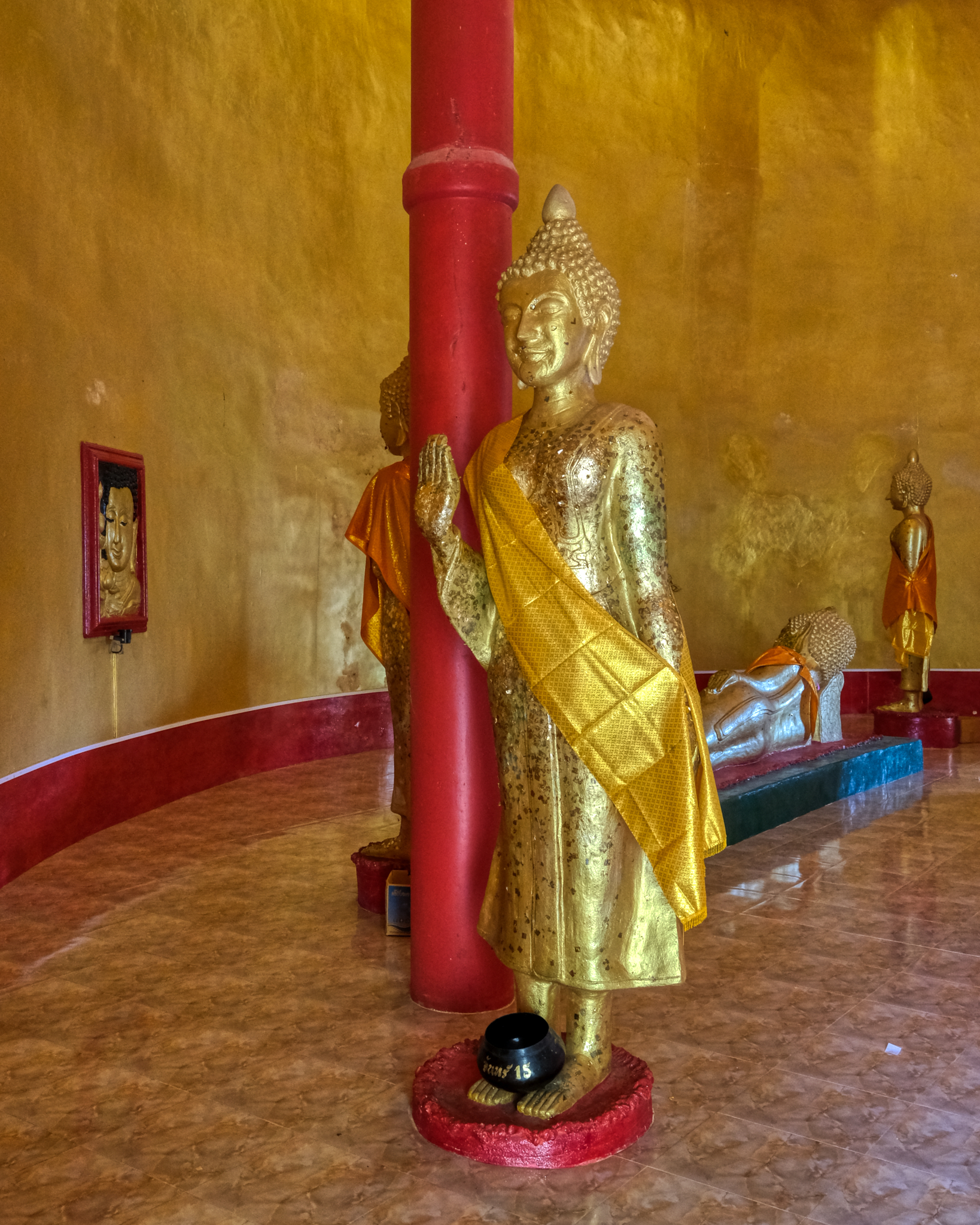 Holding Back The River of samsaric temptation.
Holding Back The River of samsaric temptation.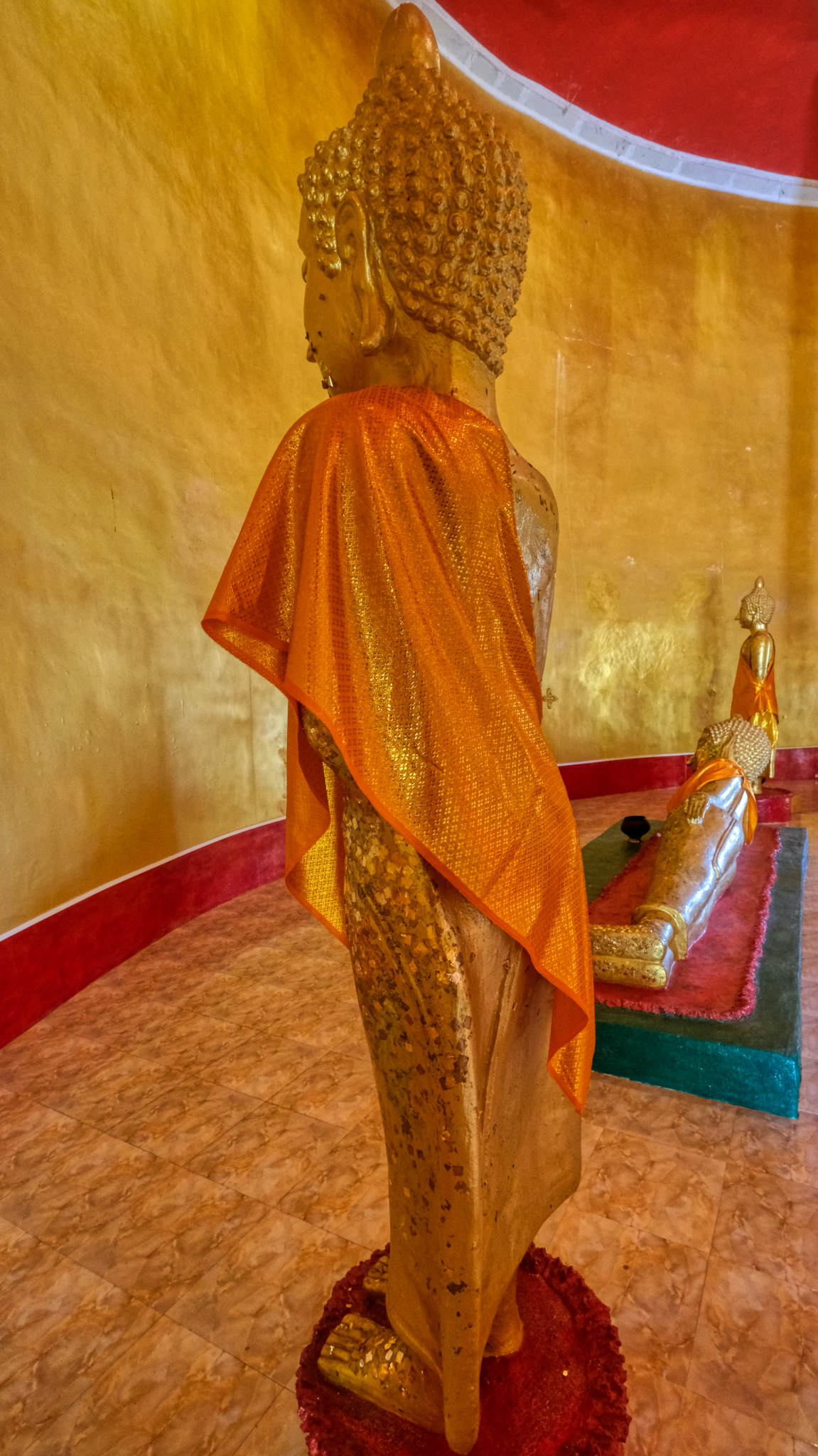 Beautiful spiritual space of Buddhanature.
Beautiful spiritual space of Buddhanature.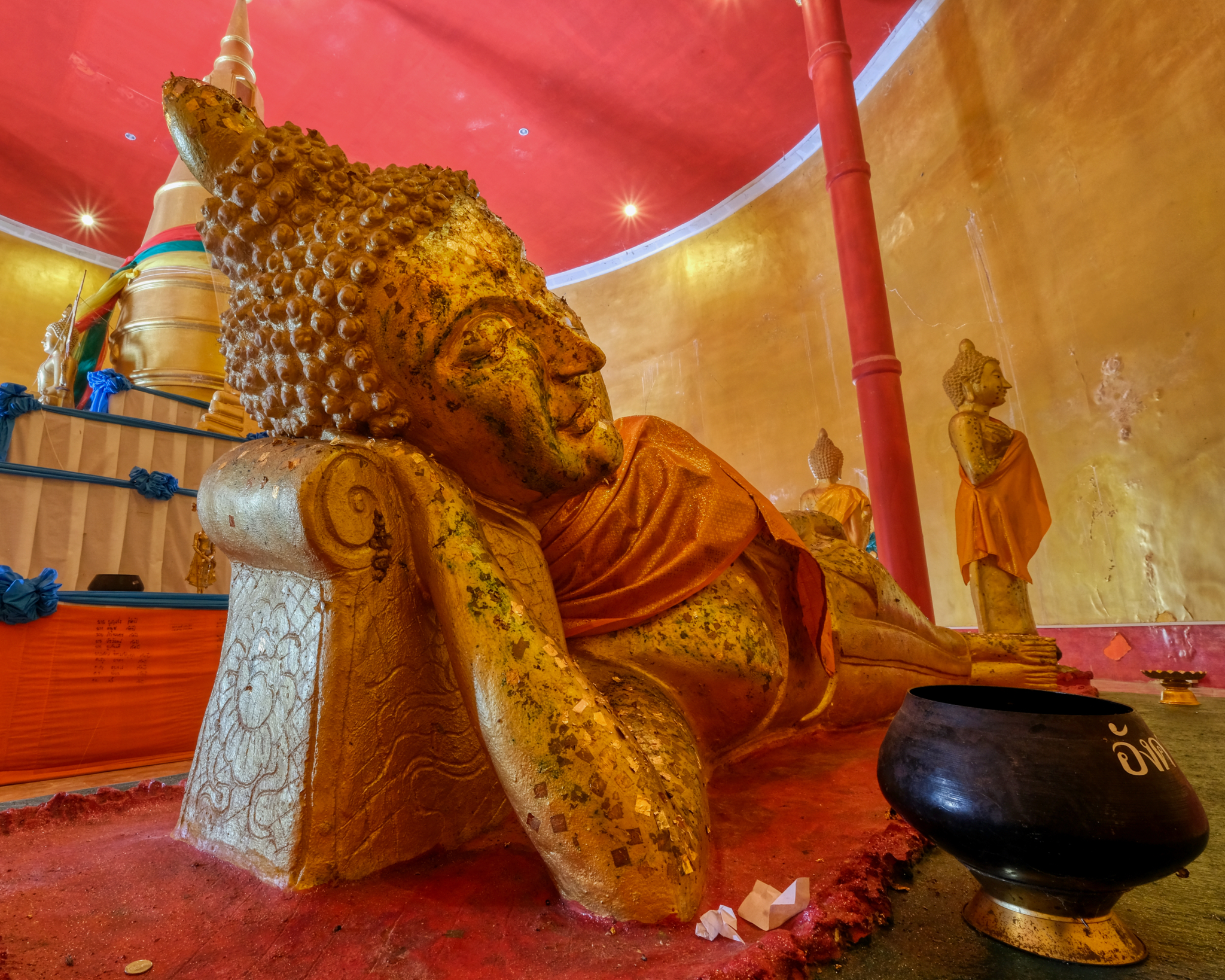 A Reclining Buddha . . . this posture represents the mahāparinabbāna: the Buddha's final state of enlightenment before his death!
A Reclining Buddha . . . this posture represents the mahāparinabbāna: the Buddha's final state of enlightenment before his death!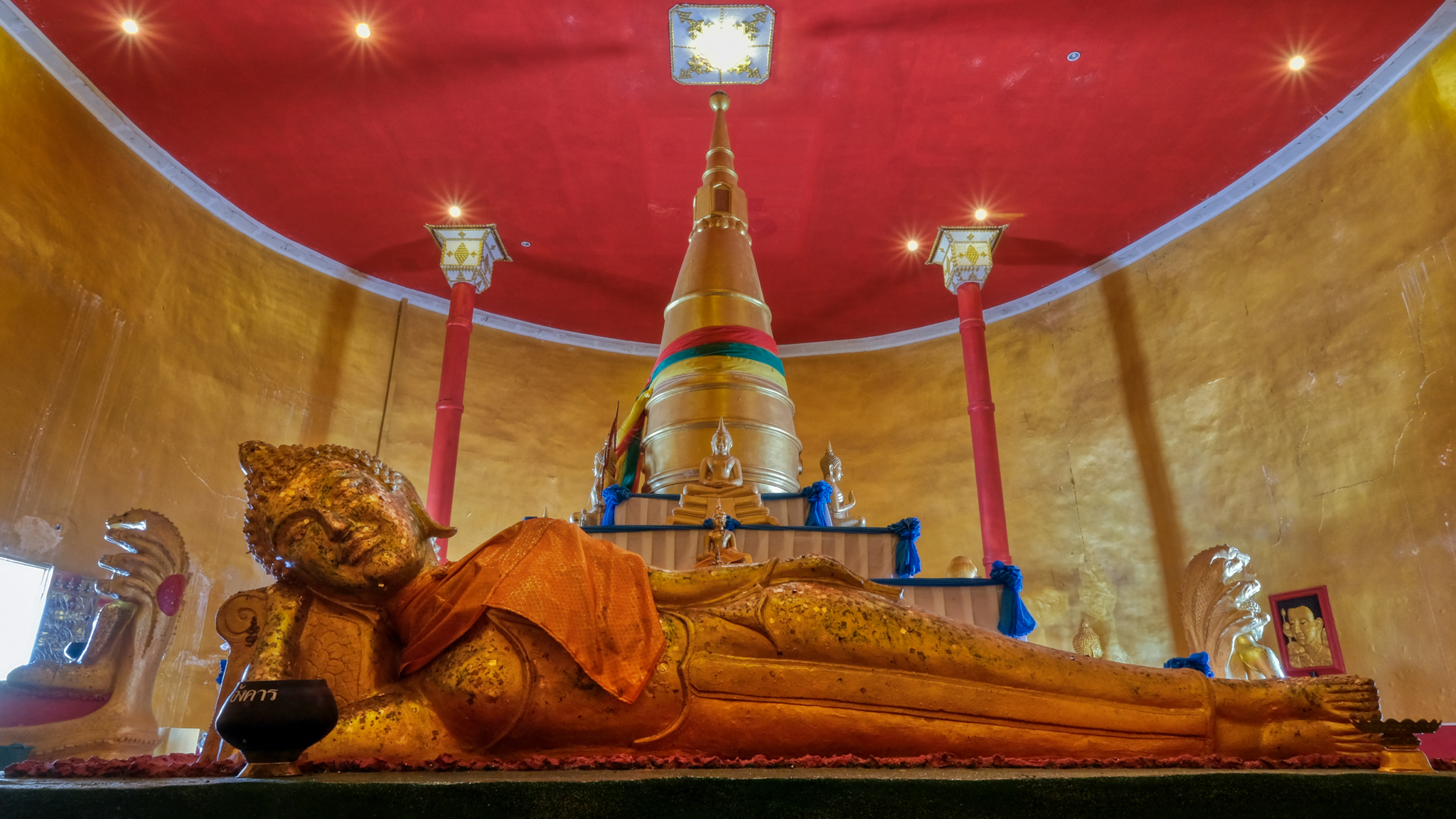 The last time I was in this chedi I did not have a lens wide enough to take this photo. I'm very glad I came back, and would have come back even without a camera. This chedi has become a favorite spiritual pilgrimage site for me.
The last time I was in this chedi I did not have a lens wide enough to take this photo. I'm very glad I came back, and would have come back even without a camera. This chedi has become a favorite spiritual pilgrimage site for me.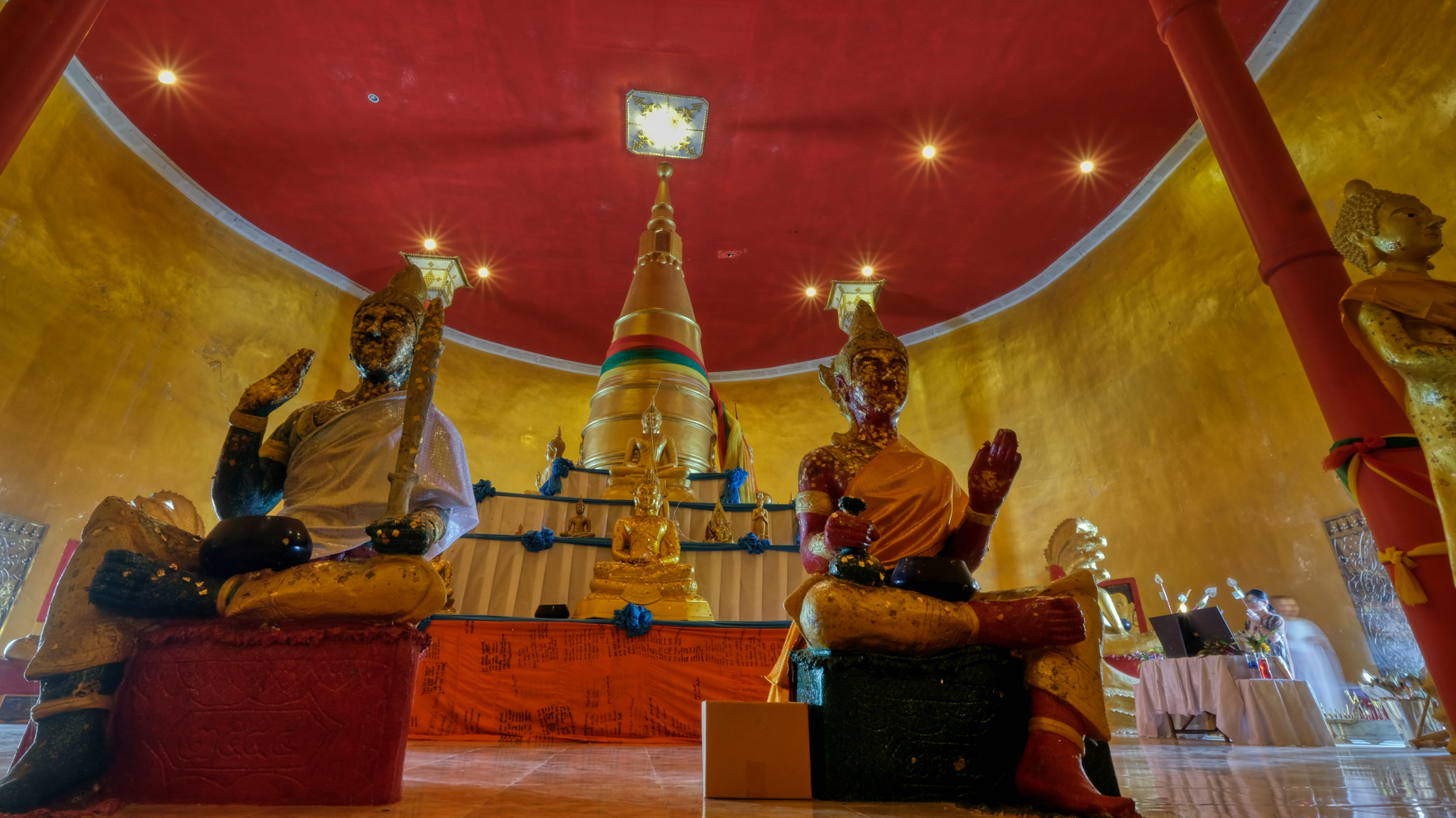 Each side of the central interior chedi presents a different compositional arrangement. Notice our nun and another pilgrim on the right.
Each side of the central interior chedi presents a different compositional arrangement. Notice our nun and another pilgrim on the right.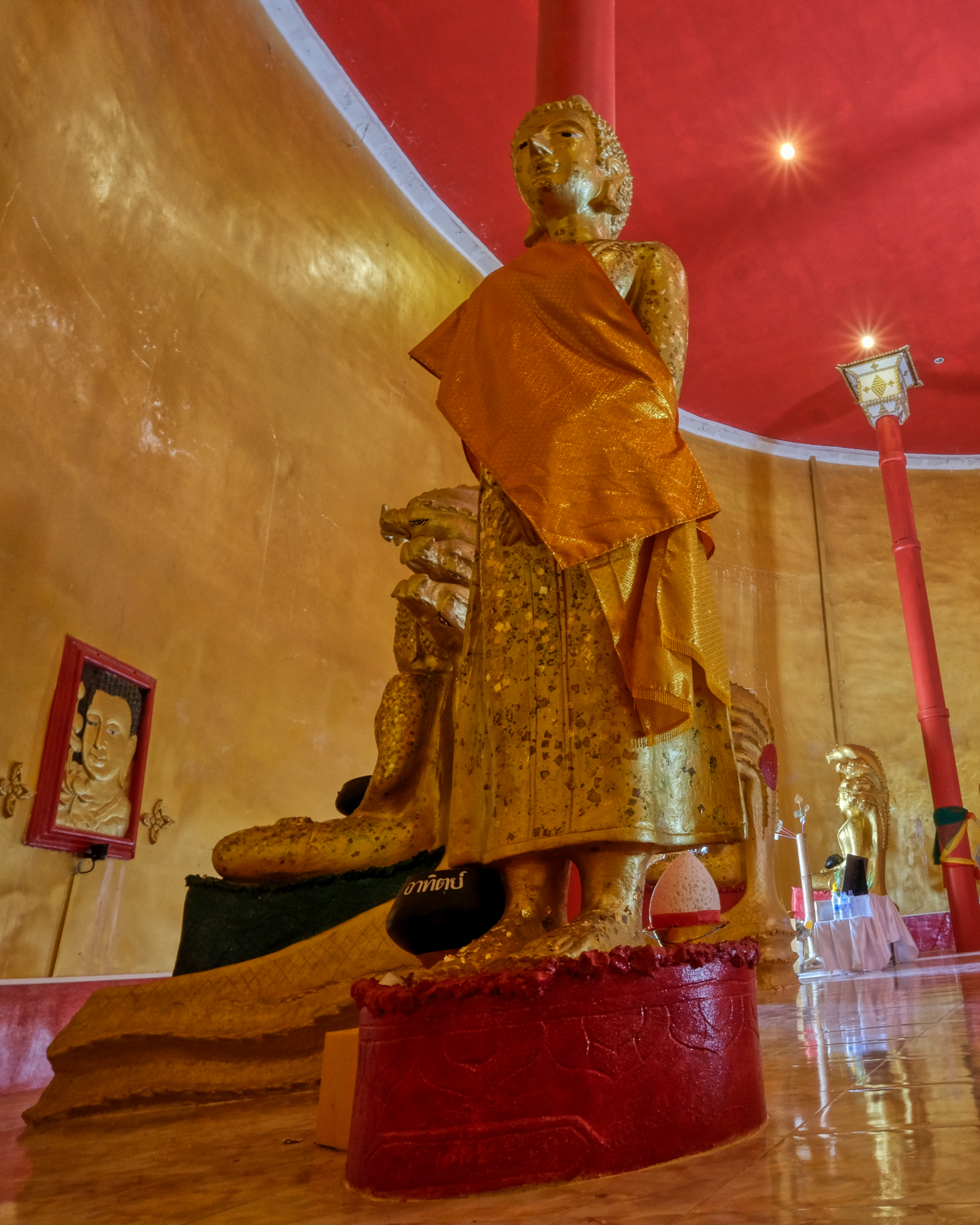 Move a few feet and see another striking composition . . .
Move a few feet and see another striking composition . . .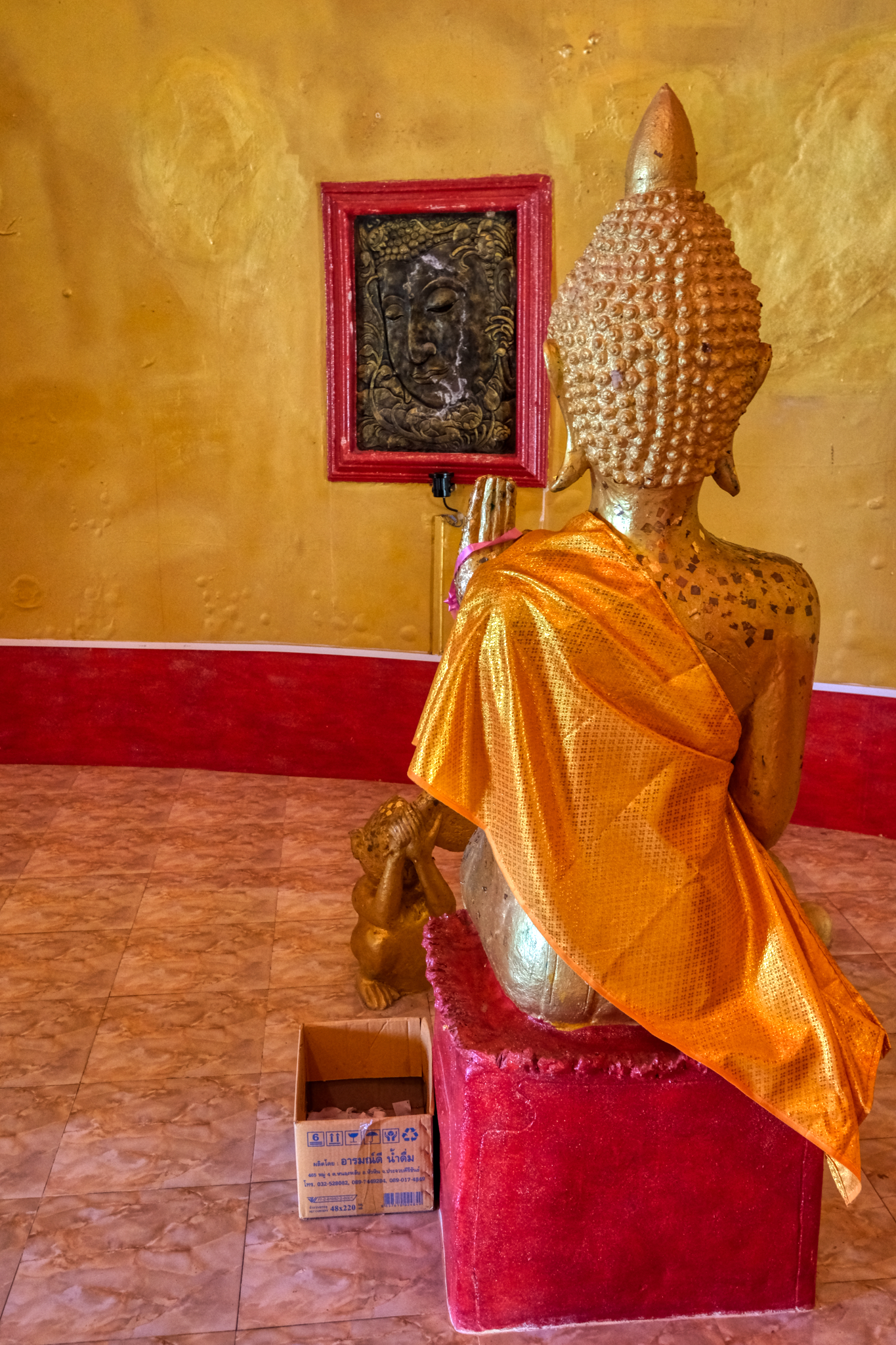 Not all of the statuary represents the Buddha. Some, like this one, are of bikkus, followers of the Buddha captured in a moment of listening to the dharma.
Not all of the statuary represents the Buddha. Some, like this one, are of bikkus, followers of the Buddha captured in a moment of listening to the dharma.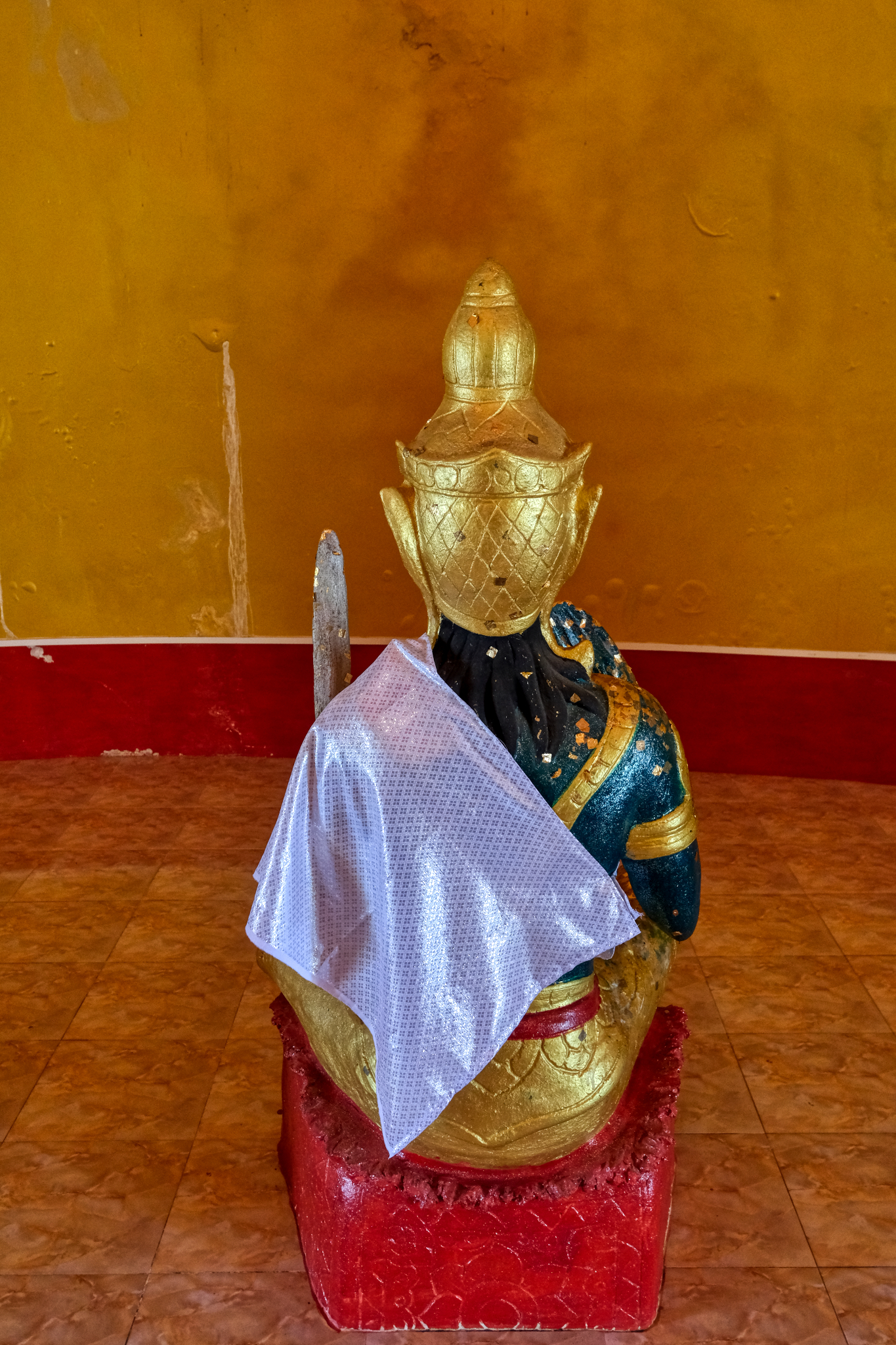 A bikku.
A bikku.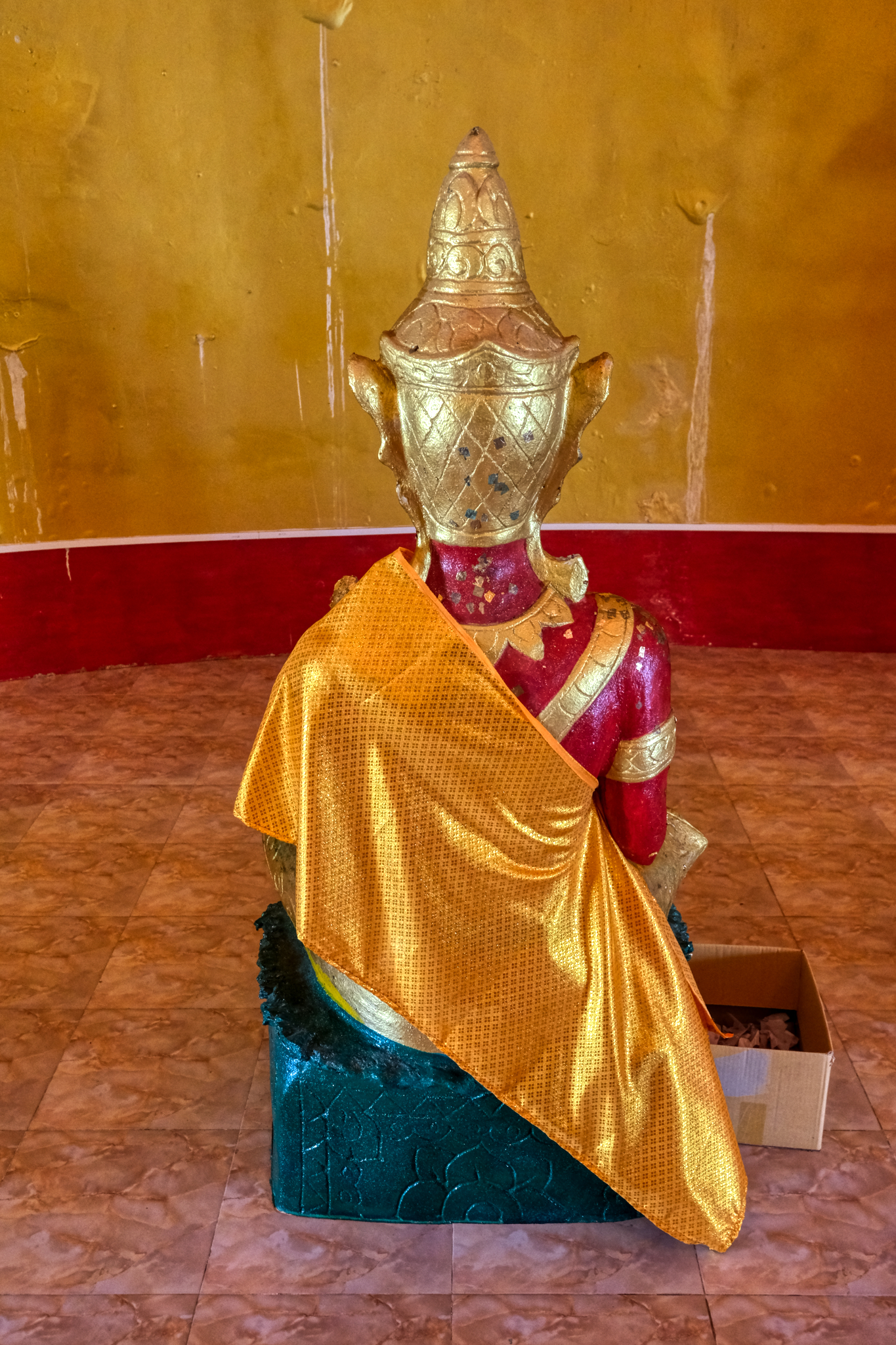 A bikku. The cardboard box is for the paper fold left over after a visitor has laid a piece of gold leaf on the statue in reverence.
A bikku. The cardboard box is for the paper fold left over after a visitor has laid a piece of gold leaf on the statue in reverence.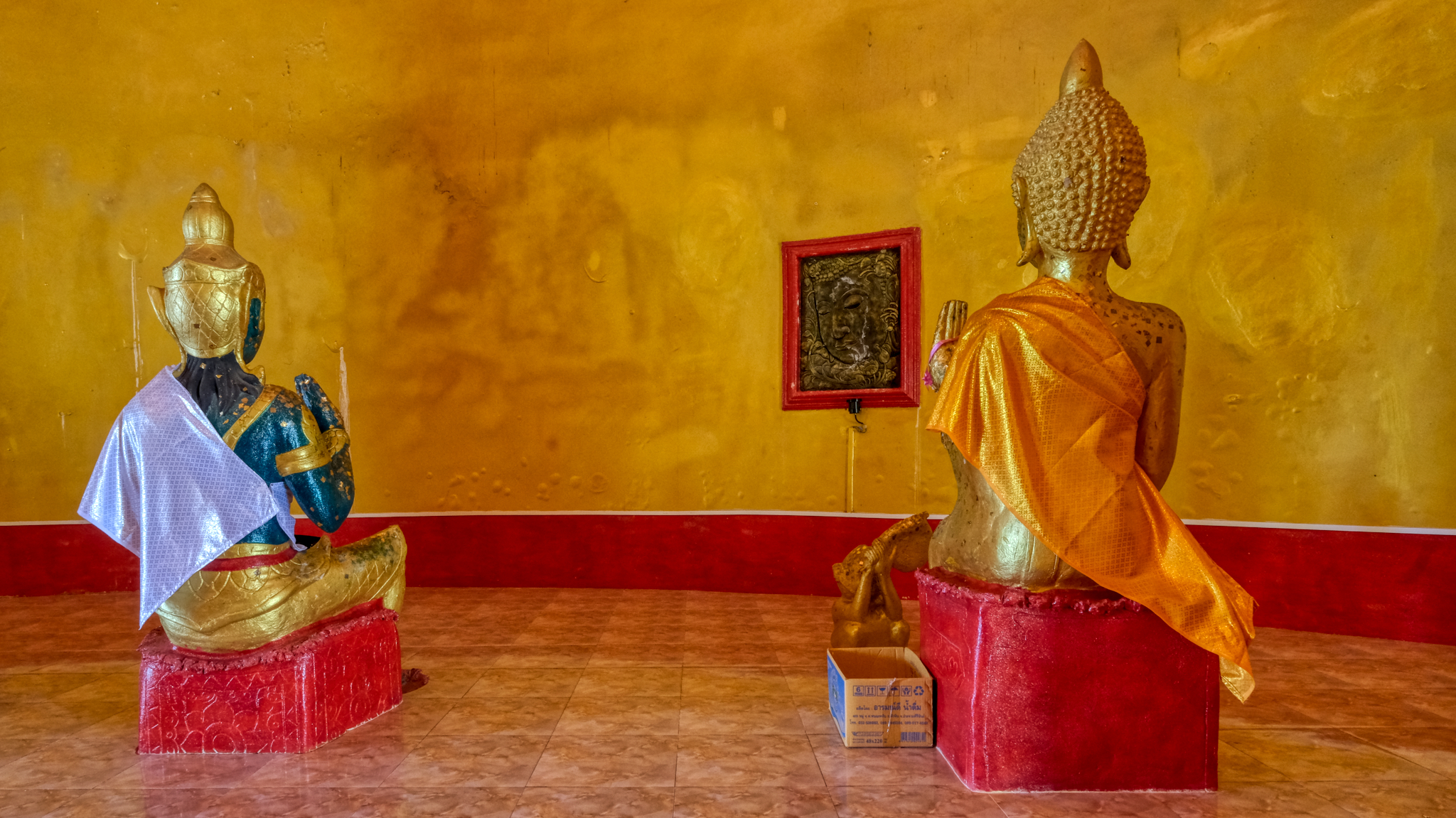 There is something so compelling about these dressed statues.
There is something so compelling about these dressed statues.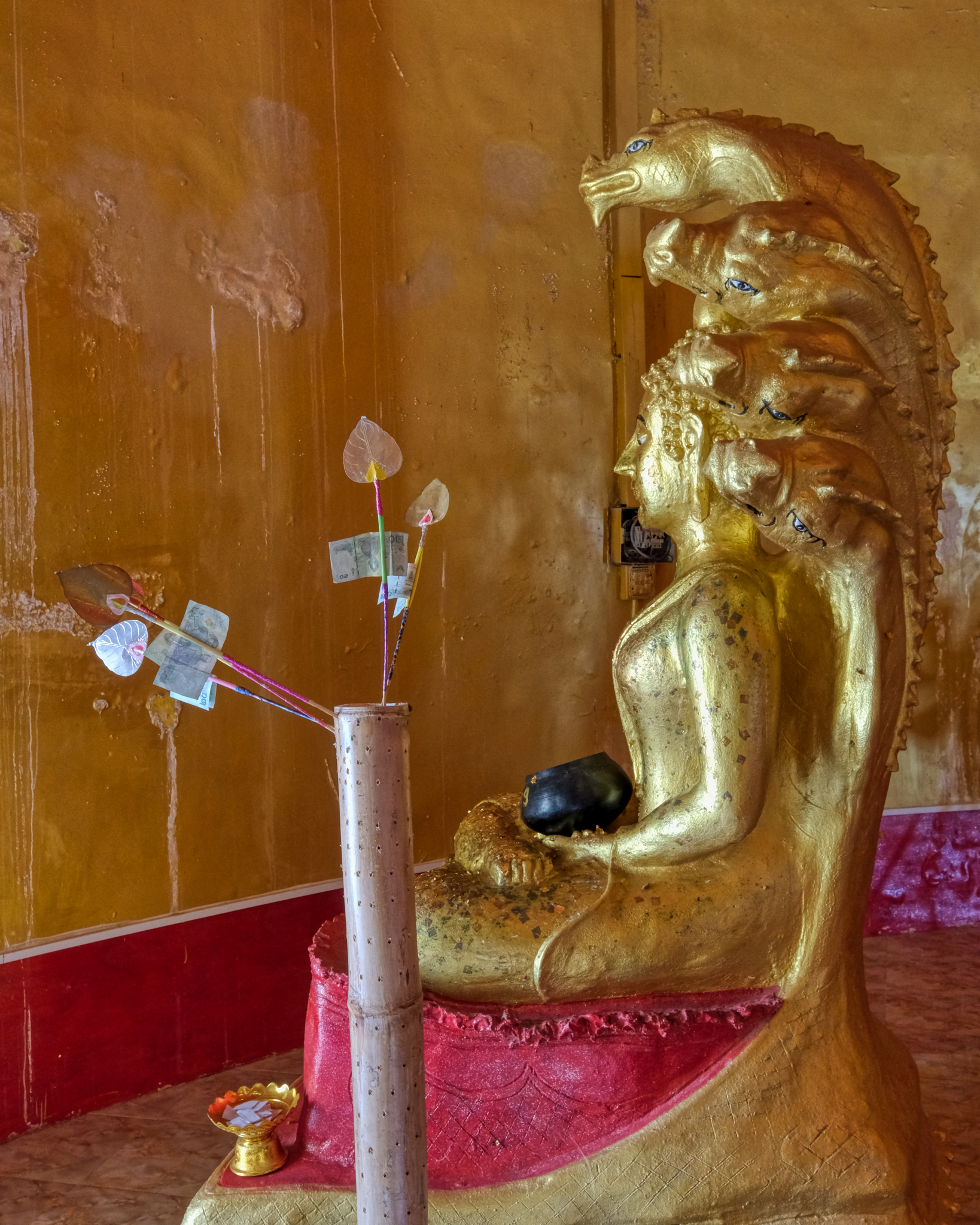 Every few feet . . . another image to never forget . . .
Every few feet . . . another image to never forget . . .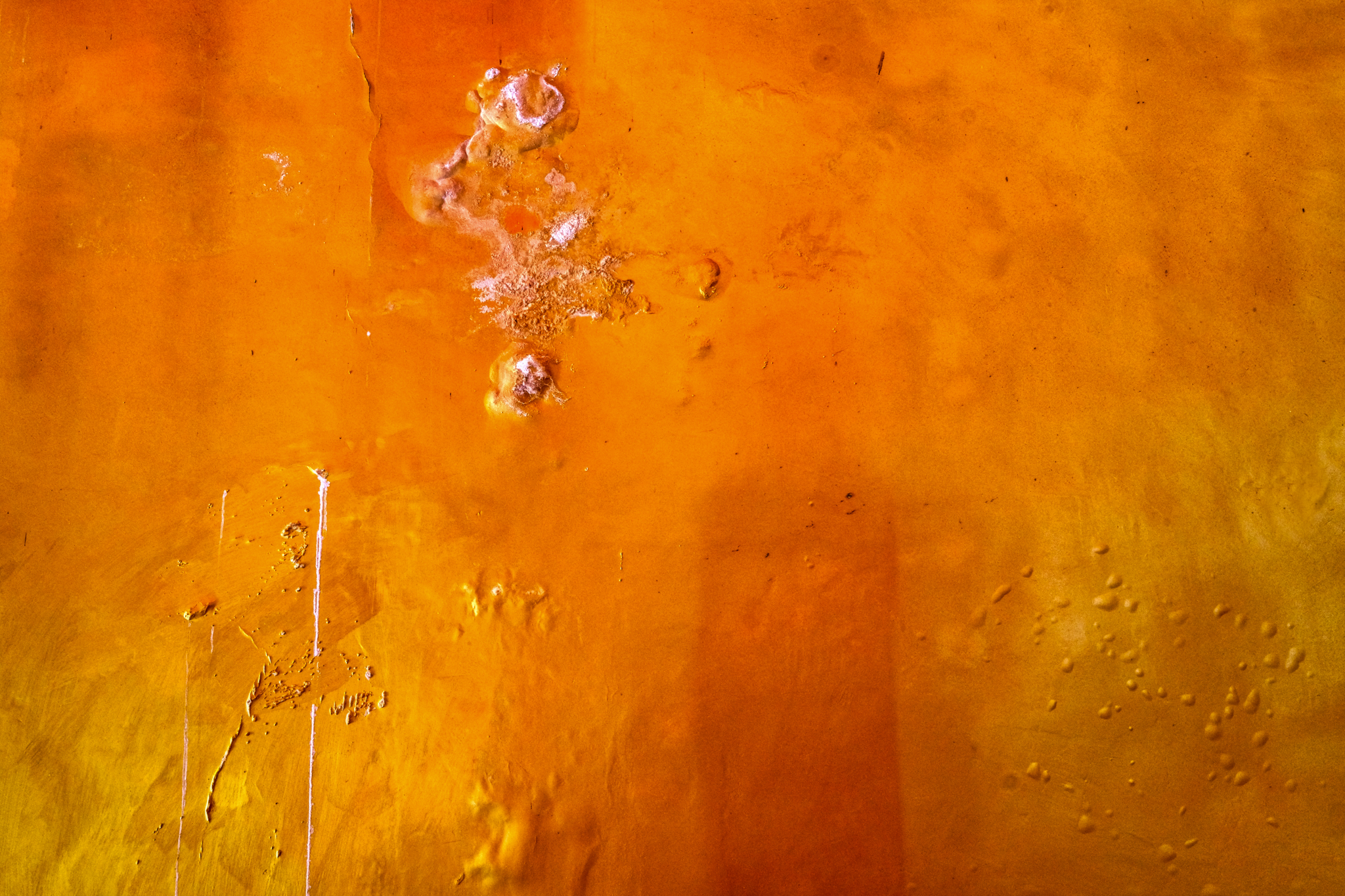 The walls themselves were a thing of wonder.
The walls themselves were a thing of wonder.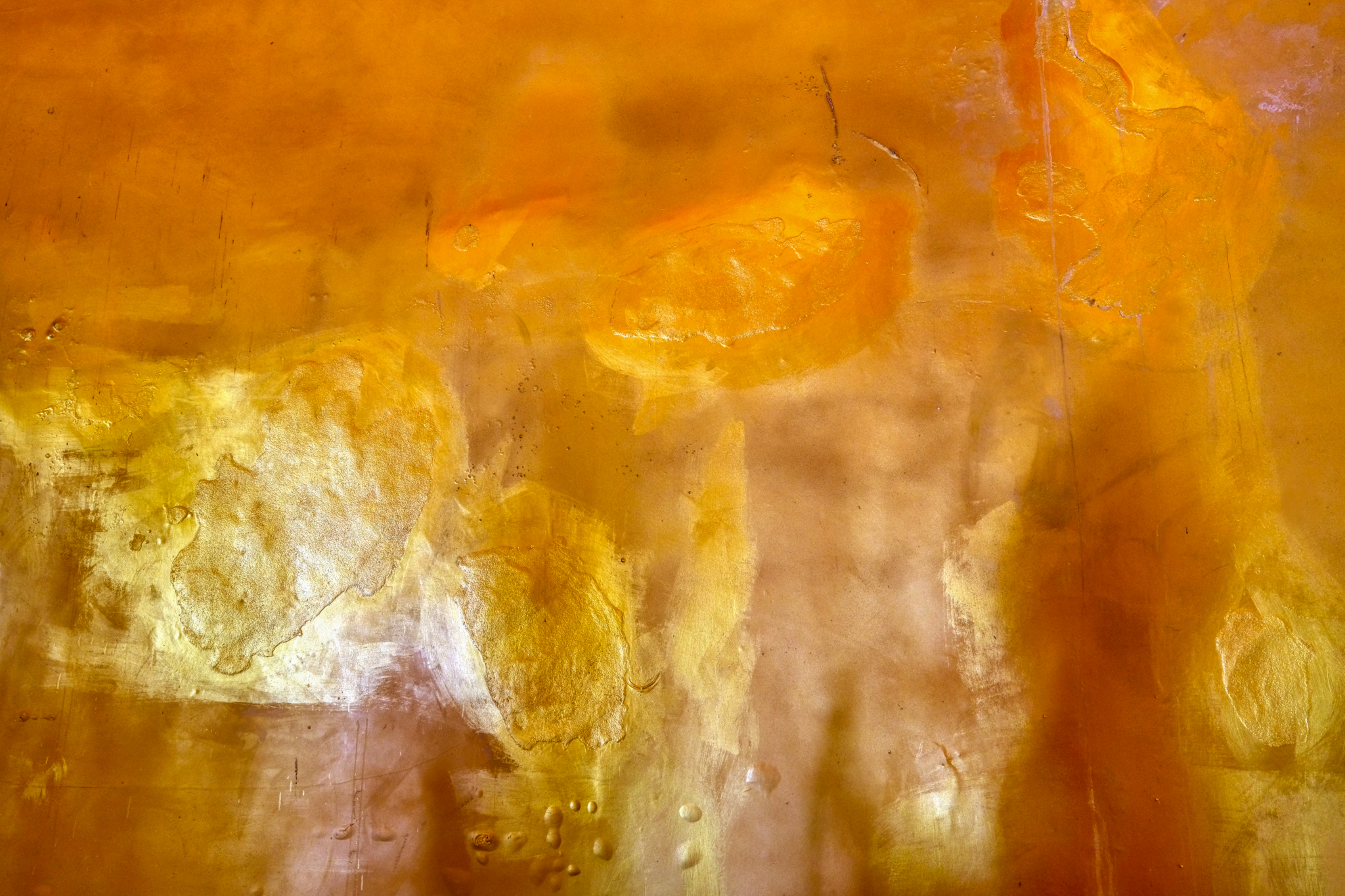 I am very nearly moved to tears by these walls . . . the color, the play of light, the human touch, the honesty.
I am very nearly moved to tears by these walls . . . the color, the play of light, the human touch, the honesty.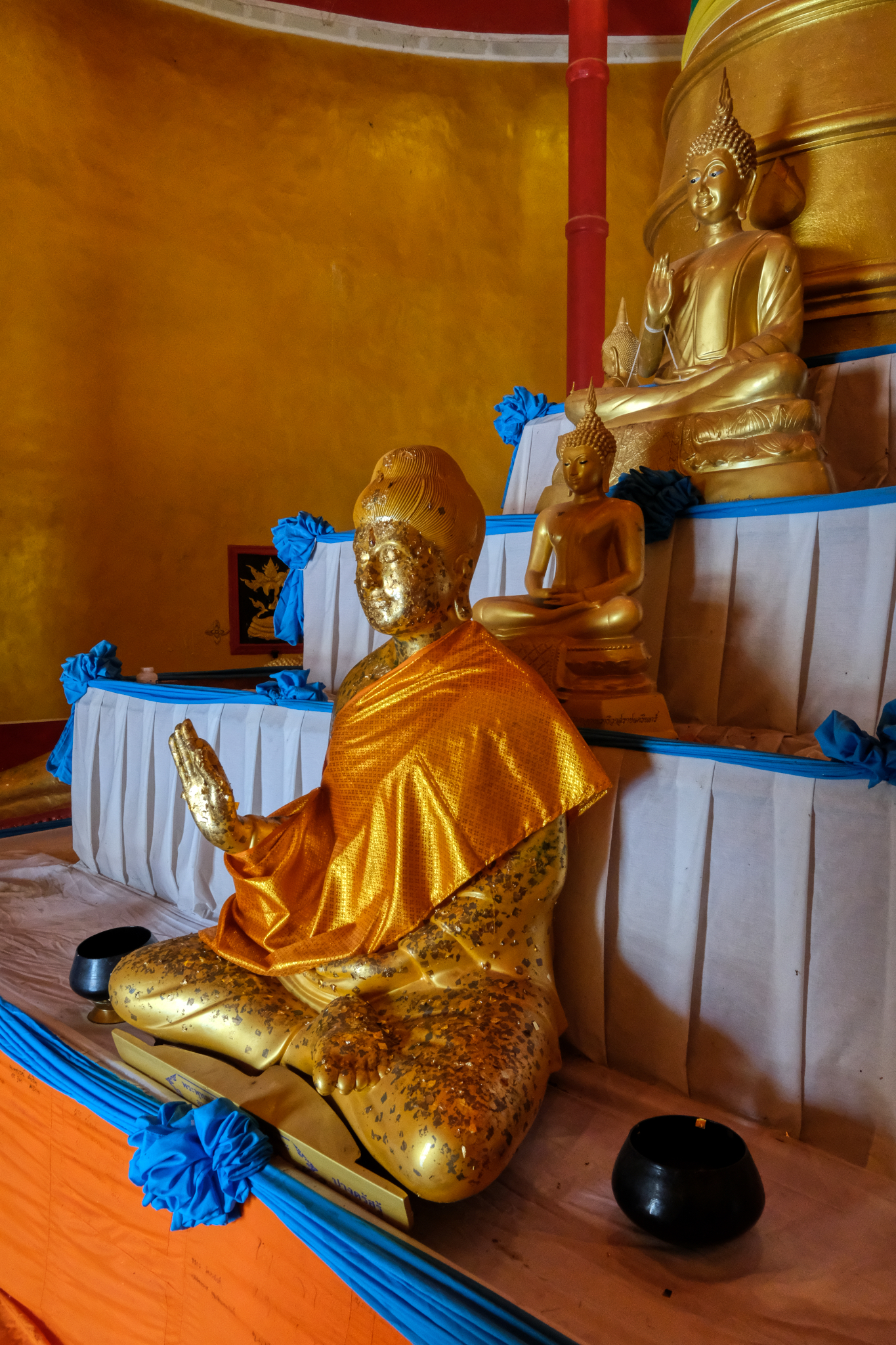 An altar facing an opposite door and sunlight.
An altar facing an opposite door and sunlight.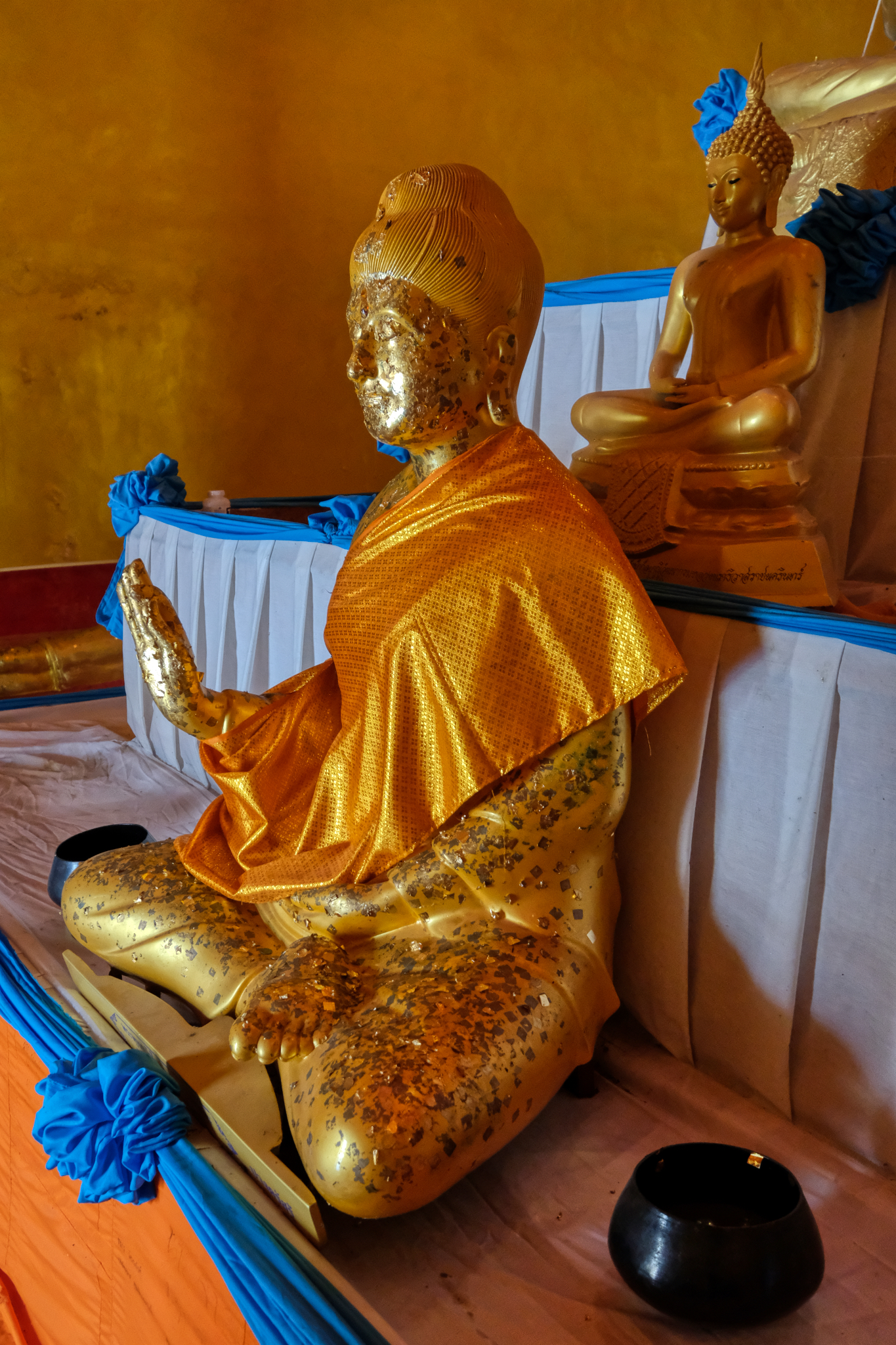 This Buddha statue in the Fearlessness (Abhāya mudrā) pose.
This Buddha statue in the Fearlessness (Abhāya mudrā) pose.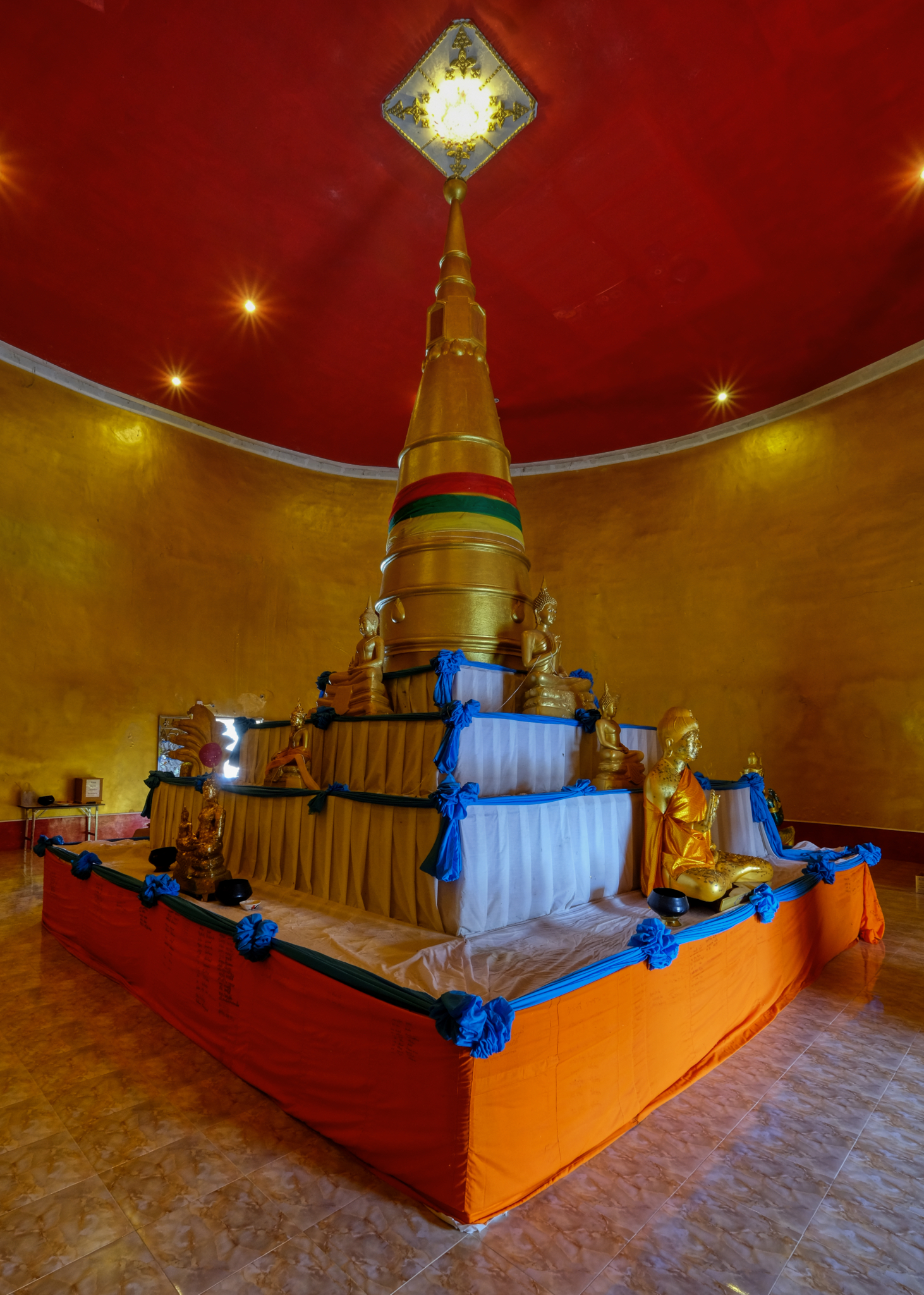 The chedi within the larger chedi.
The chedi within the larger chedi.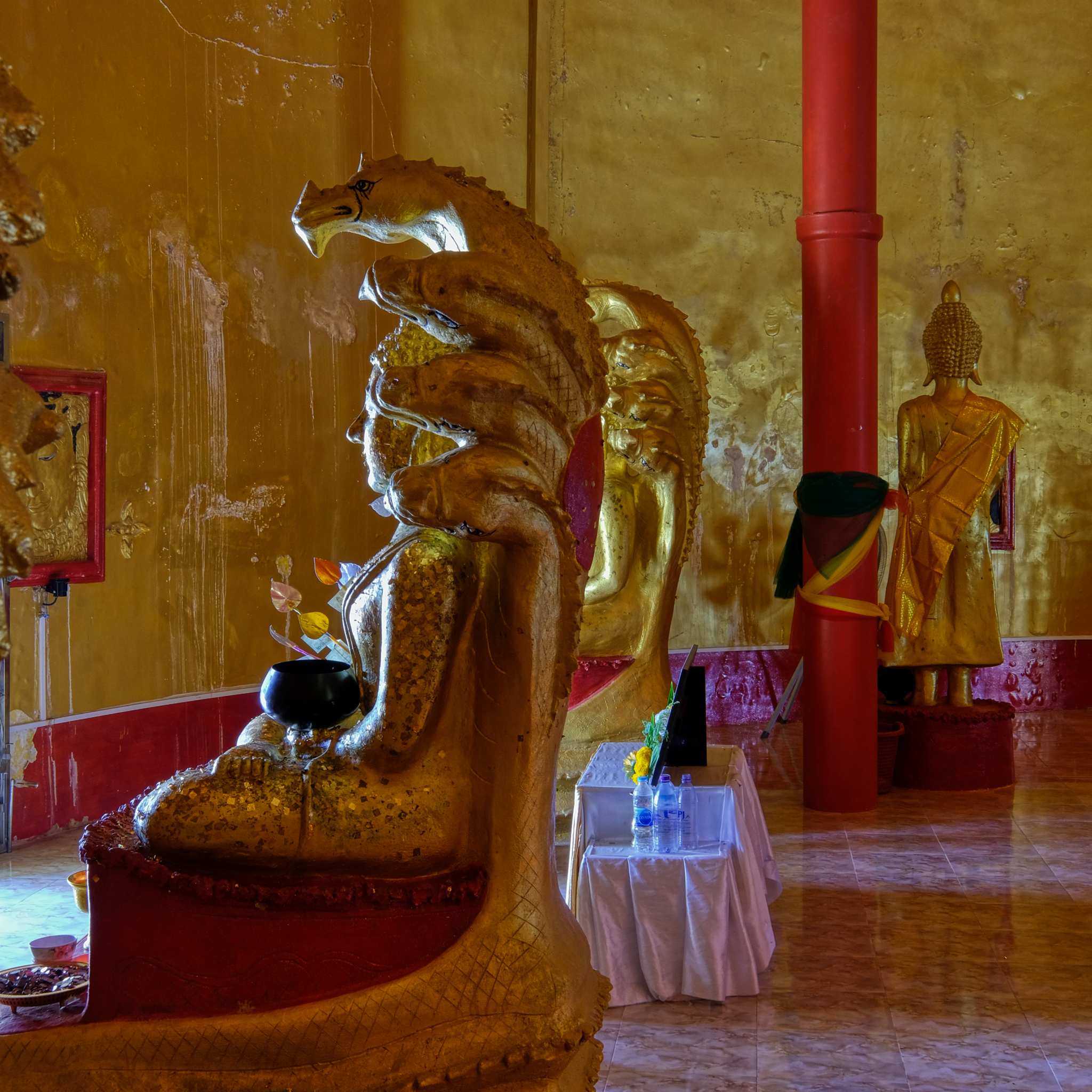 In some locations the light on the figures and on the wall came together in fantastic ways!
In some locations the light on the figures and on the wall came together in fantastic ways!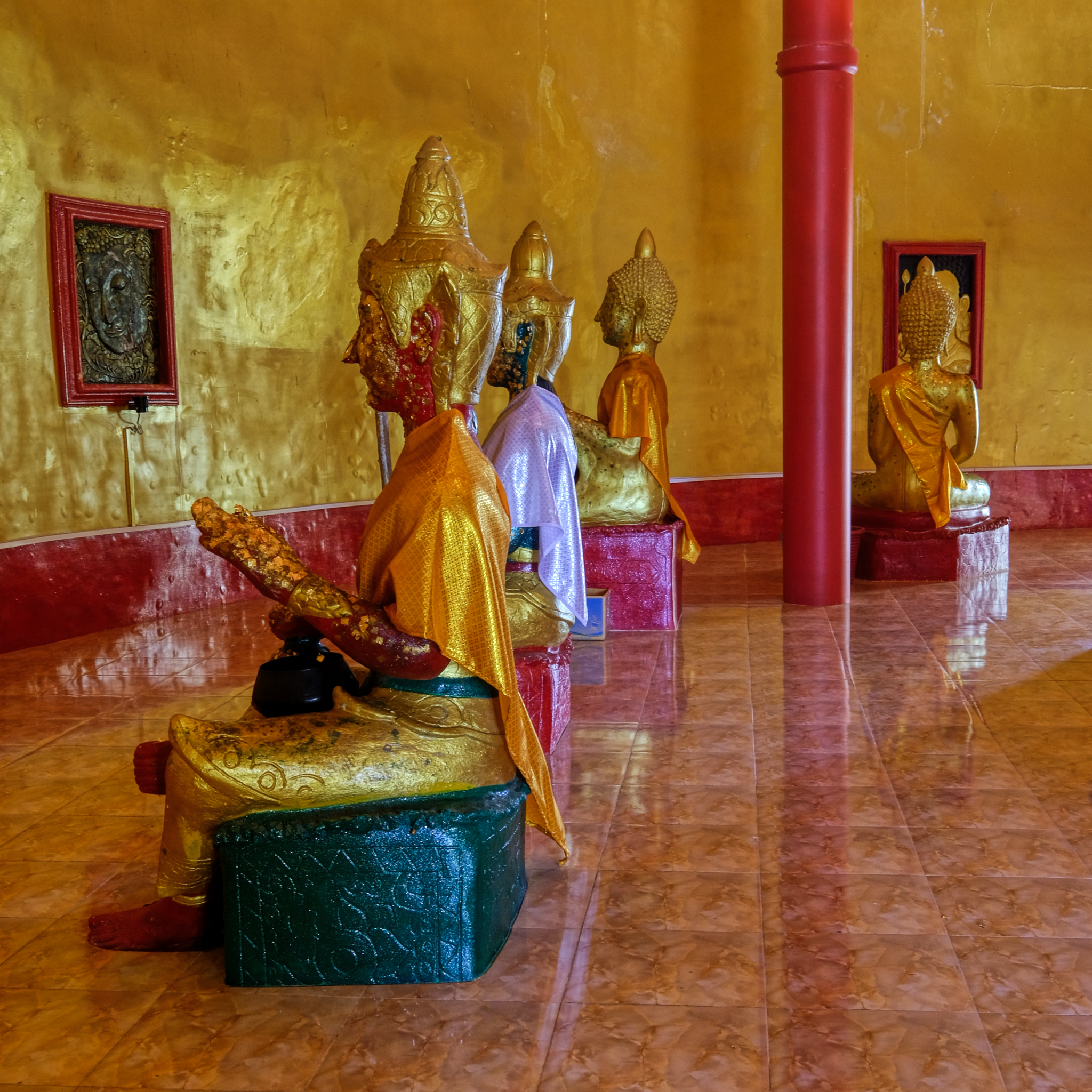 Phenomenal light and color and shapes . . . .
Phenomenal light and color and shapes . . . .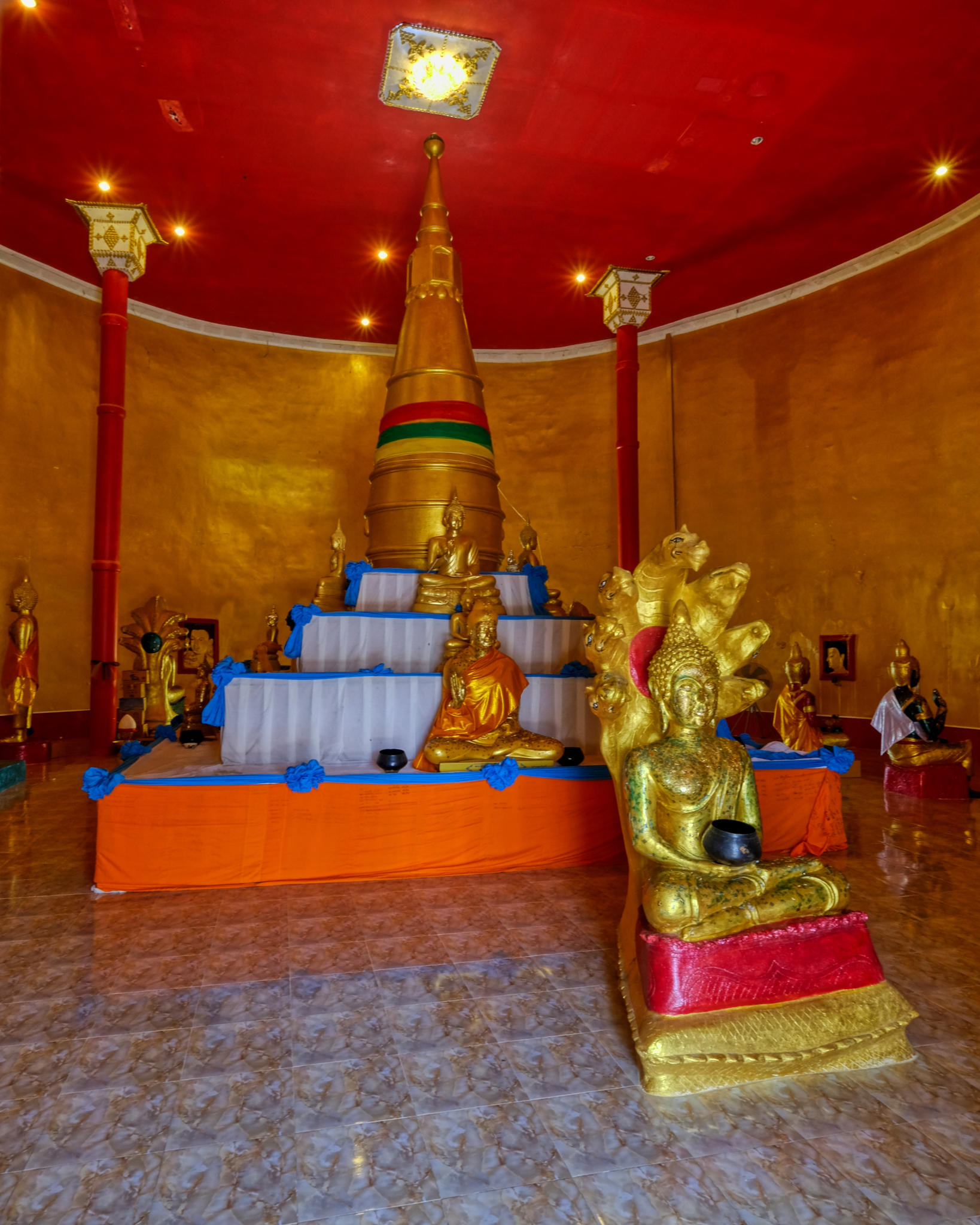 Although the Buddha figures seem sparse in this photo it seemed FULL of them.
Although the Buddha figures seem sparse in this photo it seemed FULL of them.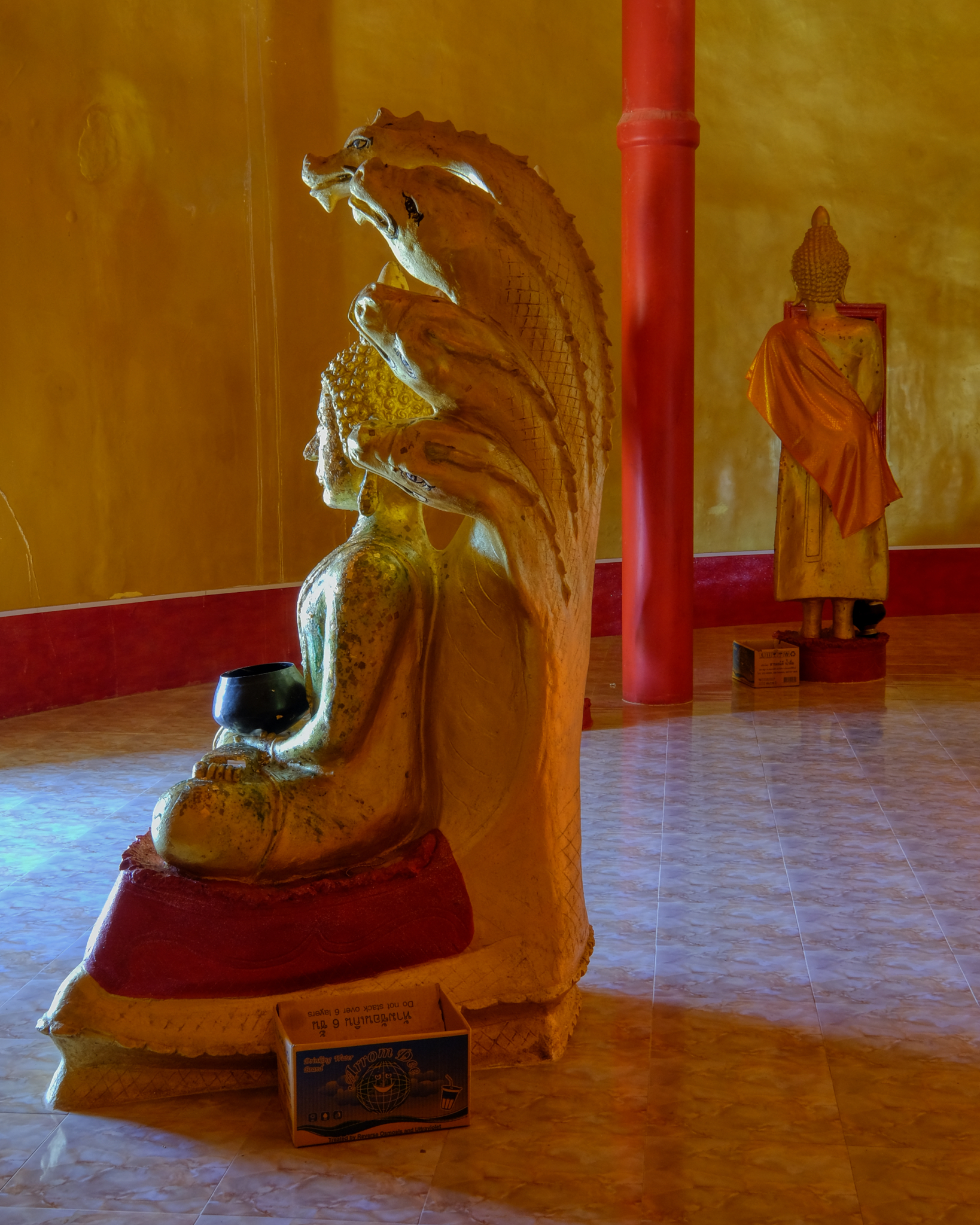 I did not know when to stop taking photos. I took a break and made merit at each Buddha image with gold leaf and reverent wais.
I did not know when to stop taking photos. I took a break and made merit at each Buddha image with gold leaf and reverent wais.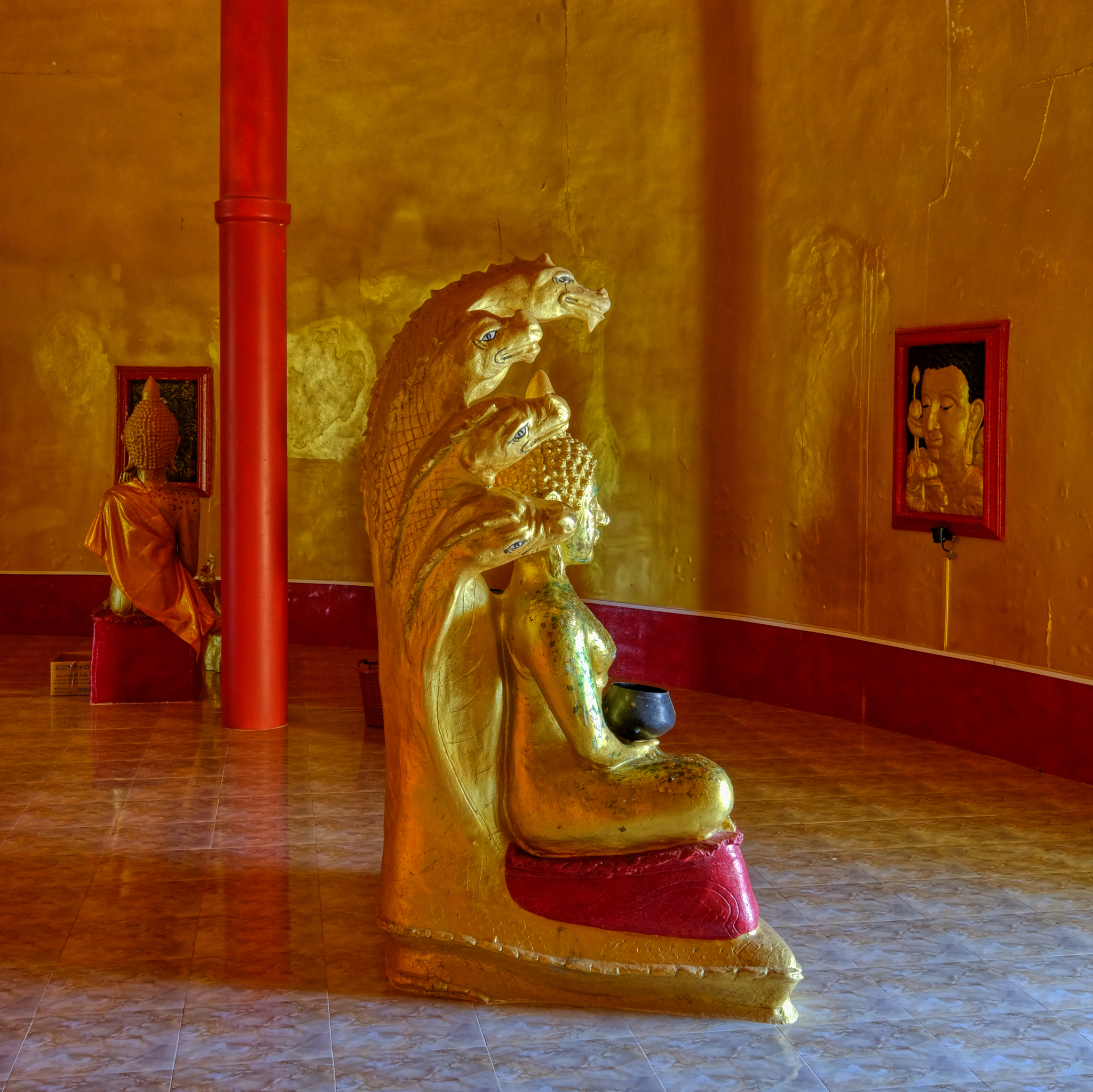 I became aware that as the sun outside brightened and dimmed, so did the lighting effects in the interior. Fantastic!
I became aware that as the sun outside brightened and dimmed, so did the lighting effects in the interior. Fantastic!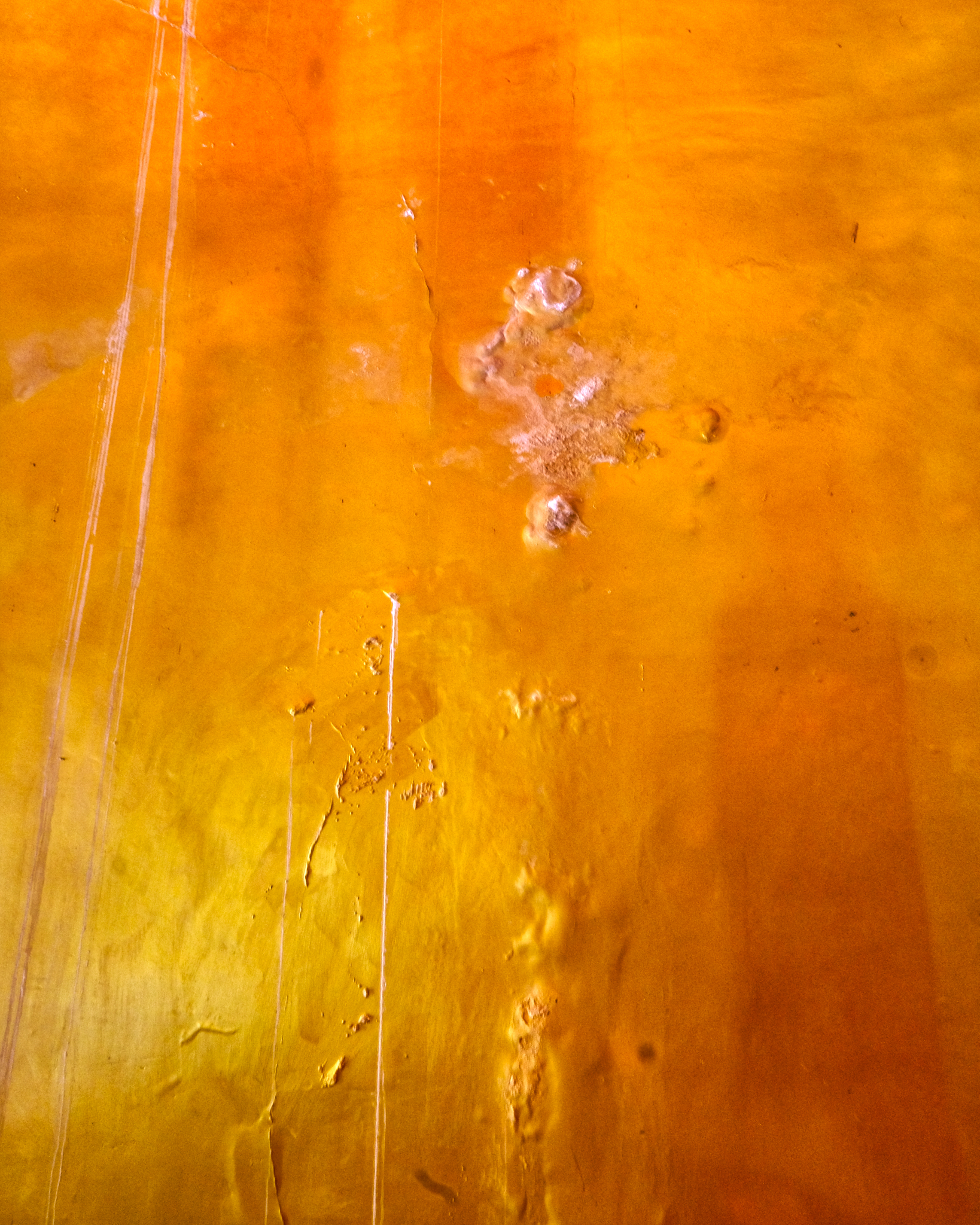 We spent several hours inside this remarkable chedi. So captivated by everything . . . standing staring at the walls in absolute wonder.
We spent several hours inside this remarkable chedi. So captivated by everything . . . standing staring at the walls in absolute wonder.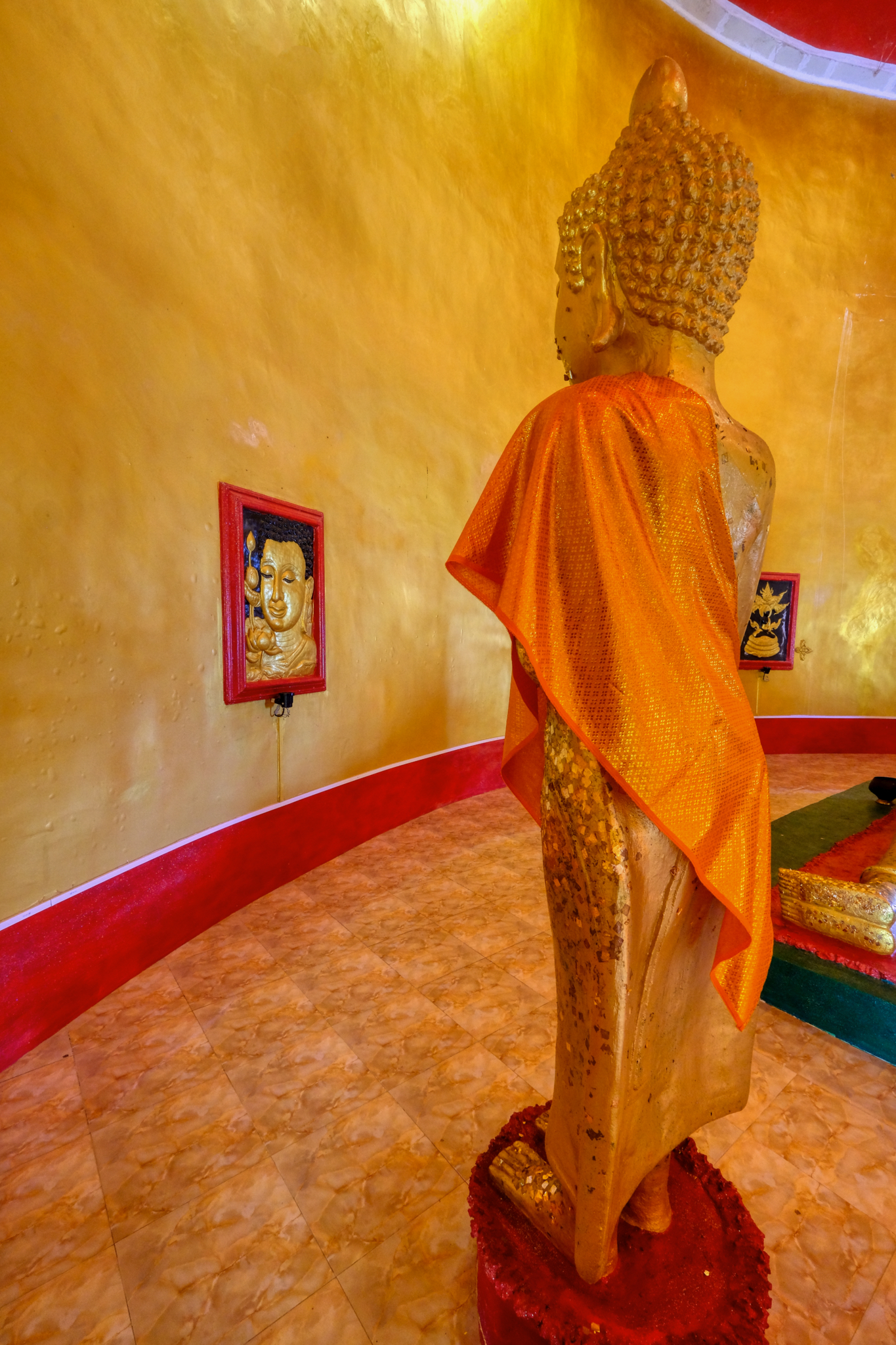 We had to leave . . . reluctantly. We had a whole day ahead of us and many adventures to have.
We had to leave . . . reluctantly. We had a whole day ahead of us and many adventures to have.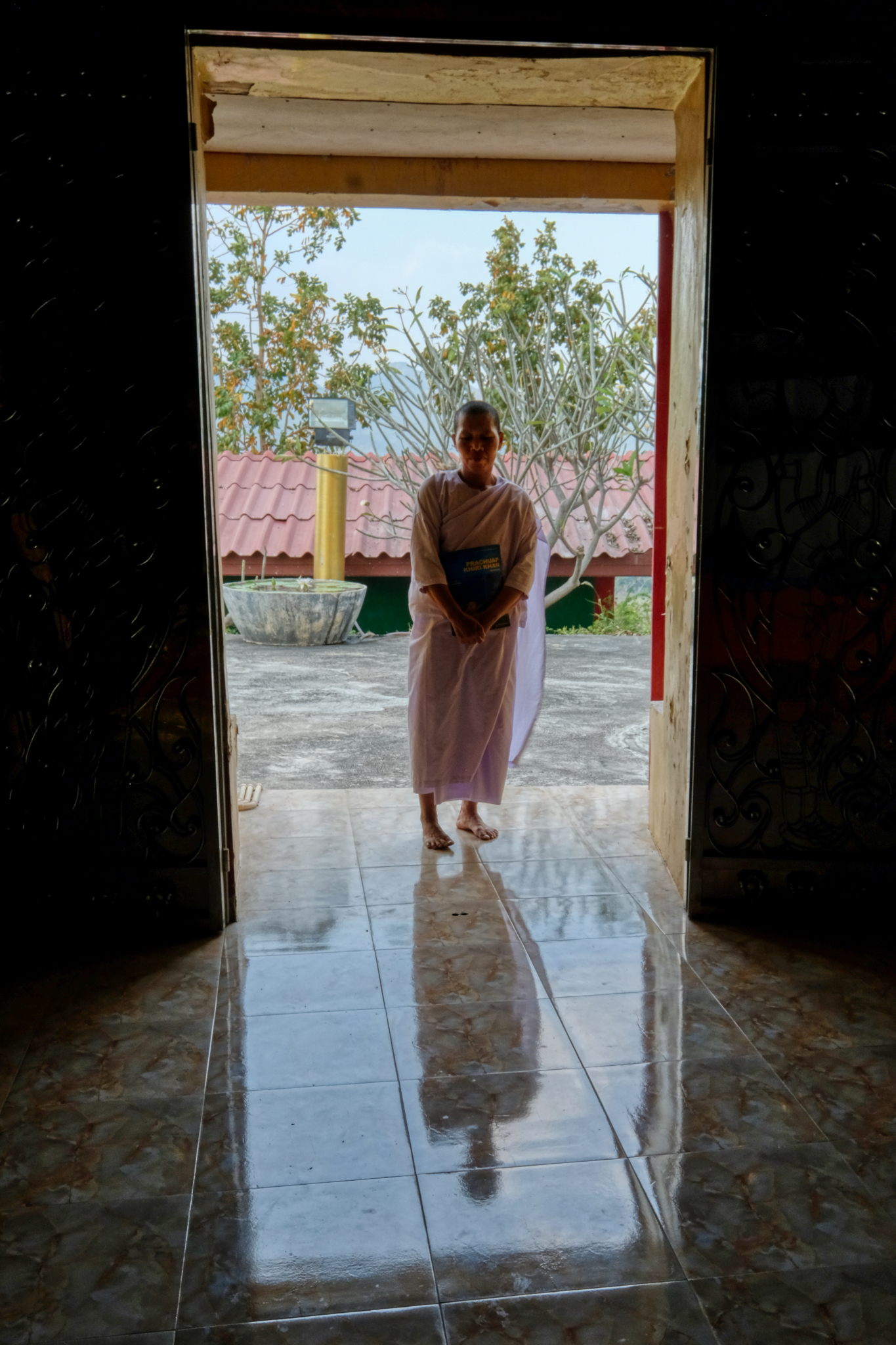 We at last left the chedi to the nun to have on her own in solitude.
We at last left the chedi to the nun to have on her own in solitude.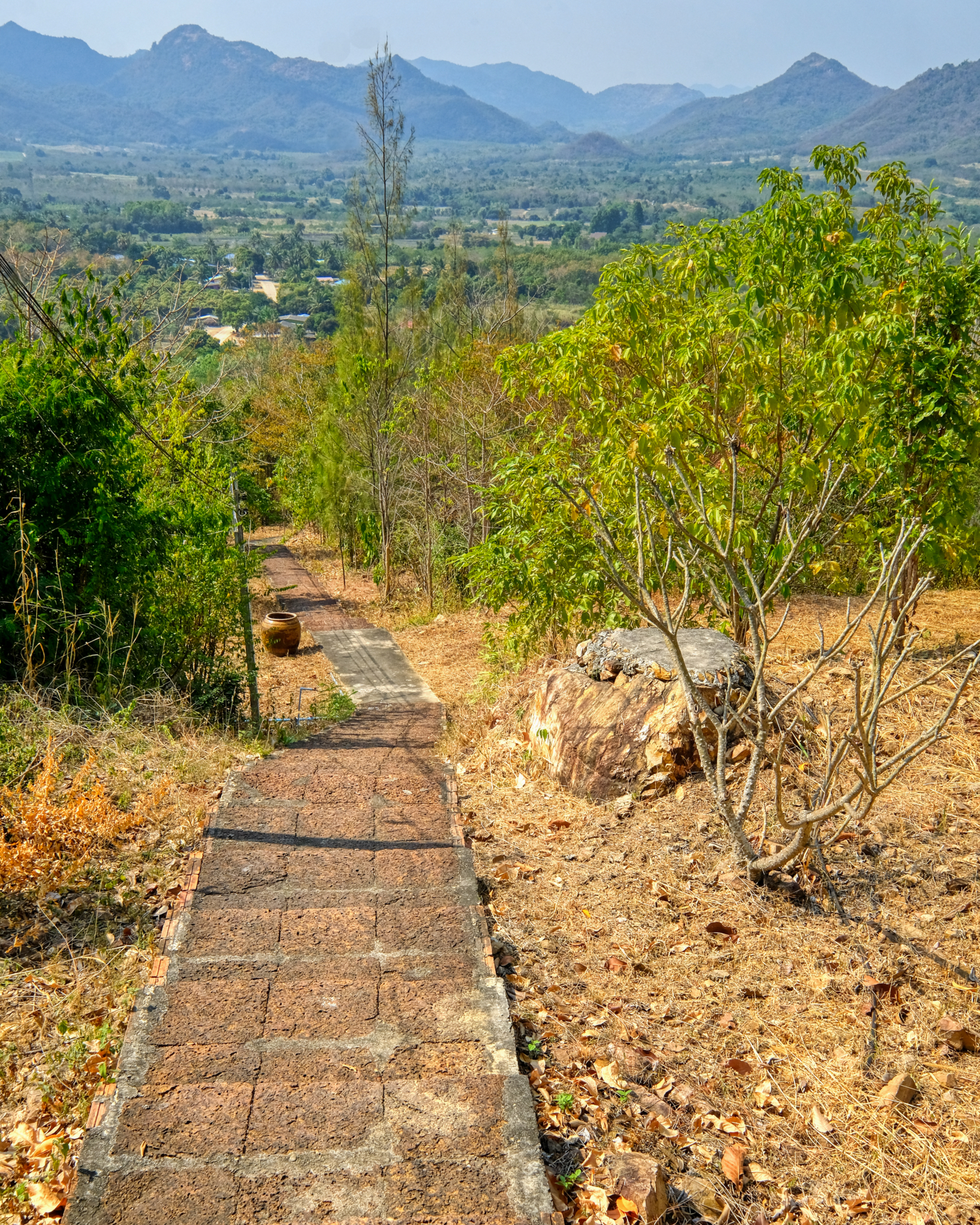 The chedi sits high on a hilltop with a wide view. This is a very rural location west of Hua Hin.
The chedi sits high on a hilltop with a wide view. This is a very rural location west of Hua Hin.Phenomenal Angkor Wat, Cambodia
 Thursday, March 5, 2020 at 3:05PM
Thursday, March 5, 2020 at 3:05PM 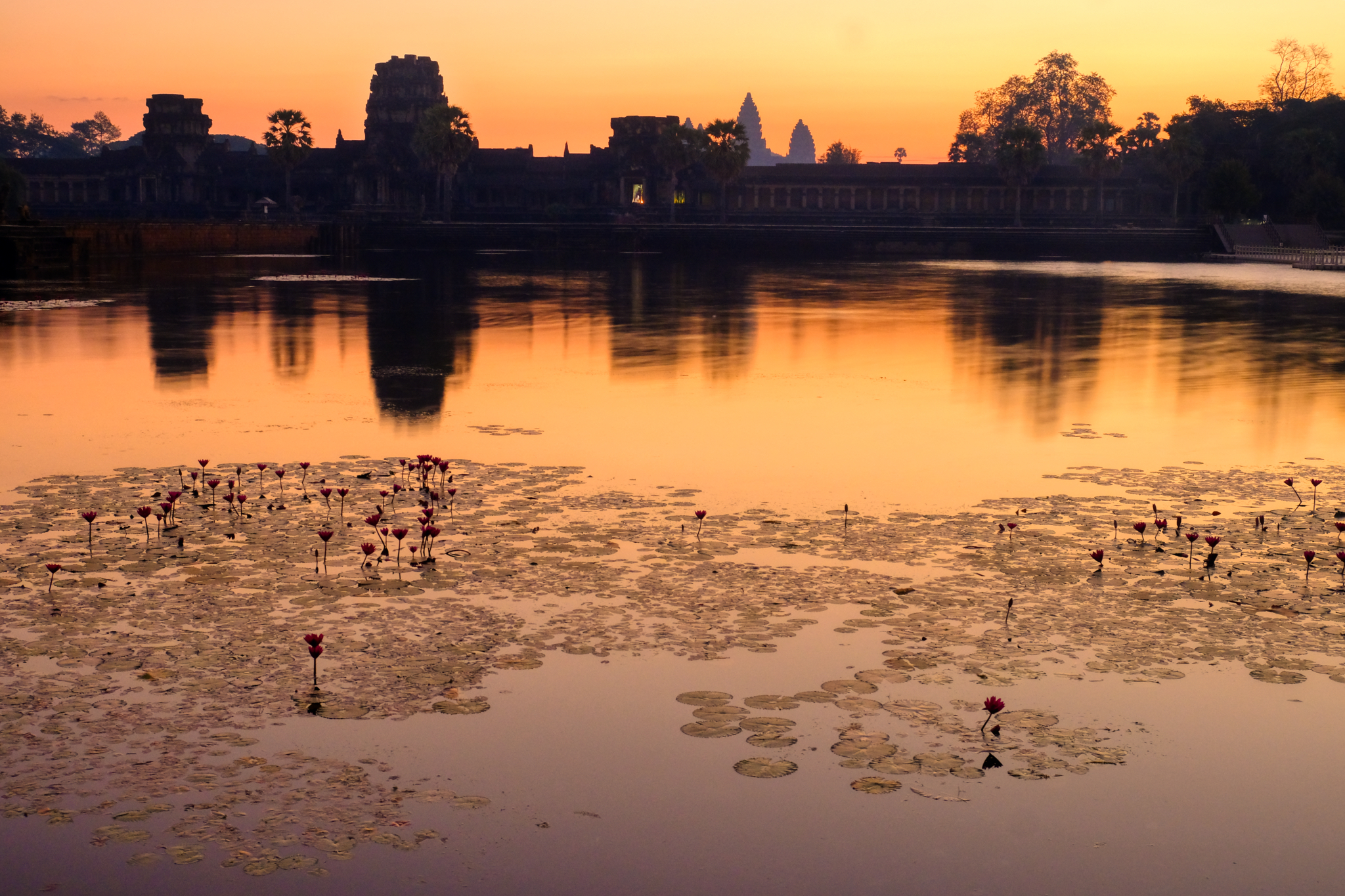 First light at Angkor Wat main complex.
First light at Angkor Wat main complex.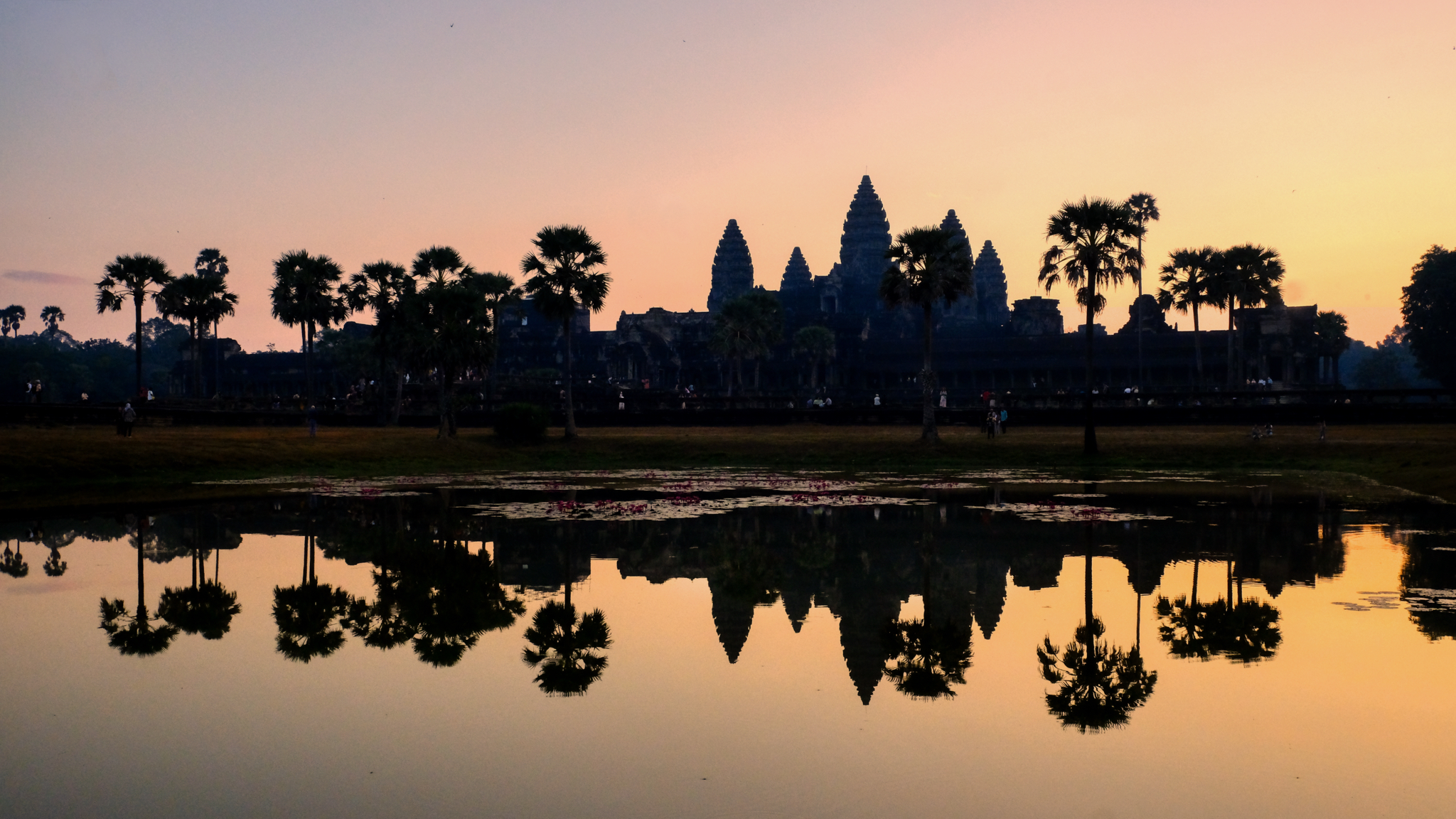 6:00am and already there were thousands of tourists to catch the temples in the magic light. Most of the tourists were either French or Chinese, although I doubt there are many Chinese now that the COVD-9 virus has almost completely halted Chinese tourism.
6:00am and already there were thousands of tourists to catch the temples in the magic light. Most of the tourists were either French or Chinese, although I doubt there are many Chinese now that the COVD-9 virus has almost completely halted Chinese tourism.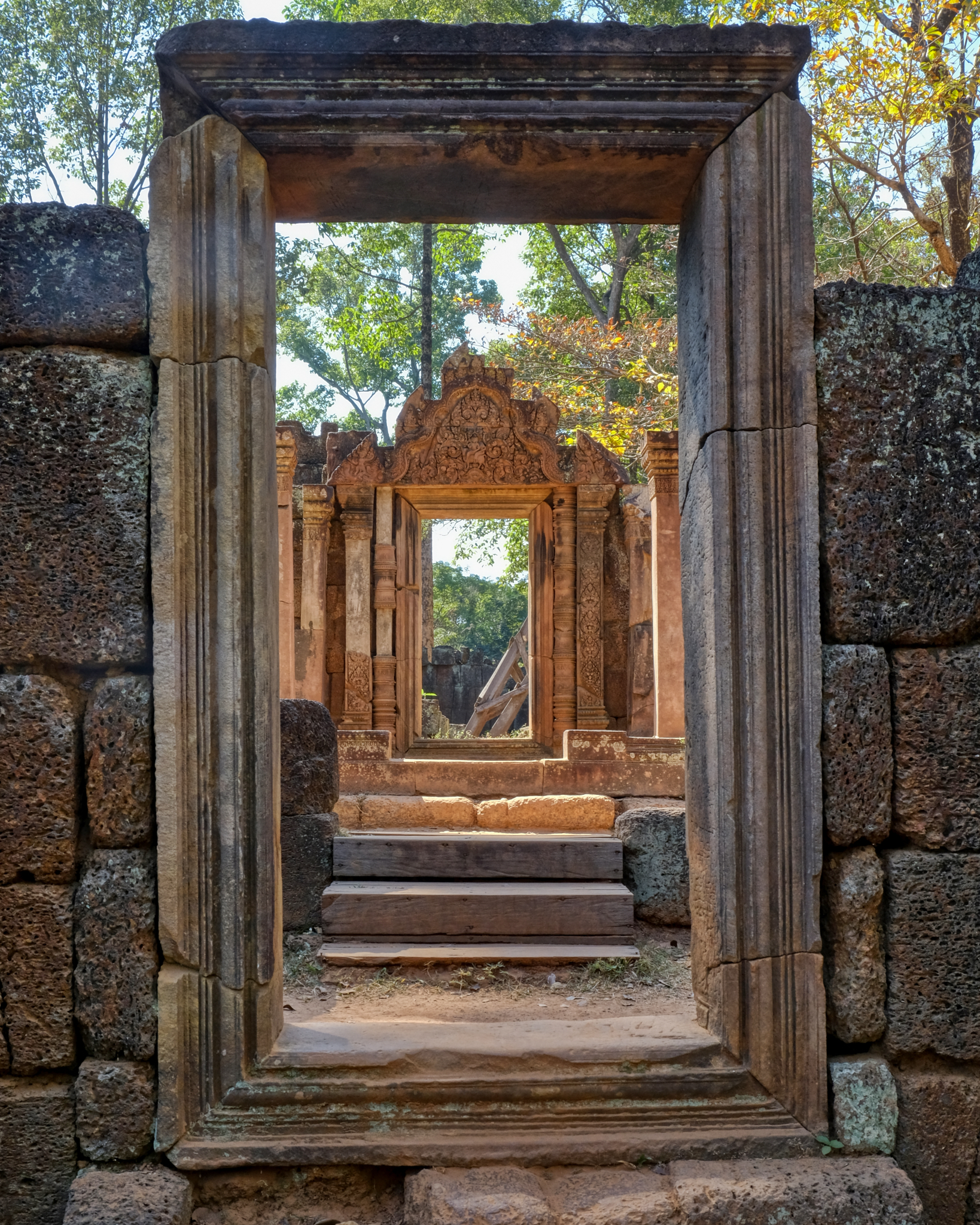 Built 1000 years ago . . . still amazing.
Built 1000 years ago . . . still amazing.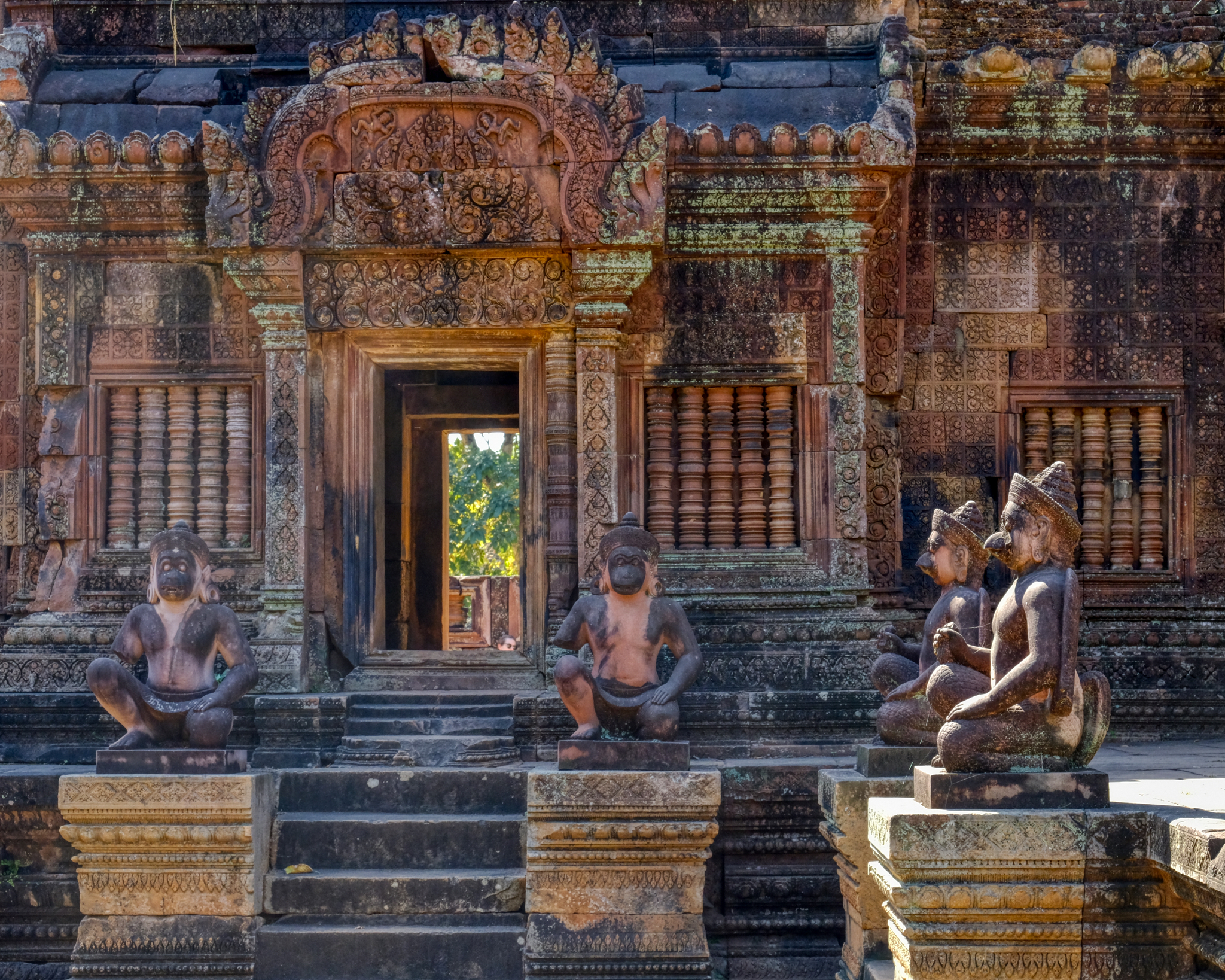 The sheer expanse of temple ruins at Angkor, and the great variety of temple materials and decoration make it well worth spending many days there, as I did in January 2020.
The sheer expanse of temple ruins at Angkor, and the great variety of temple materials and decoration make it well worth spending many days there, as I did in January 2020.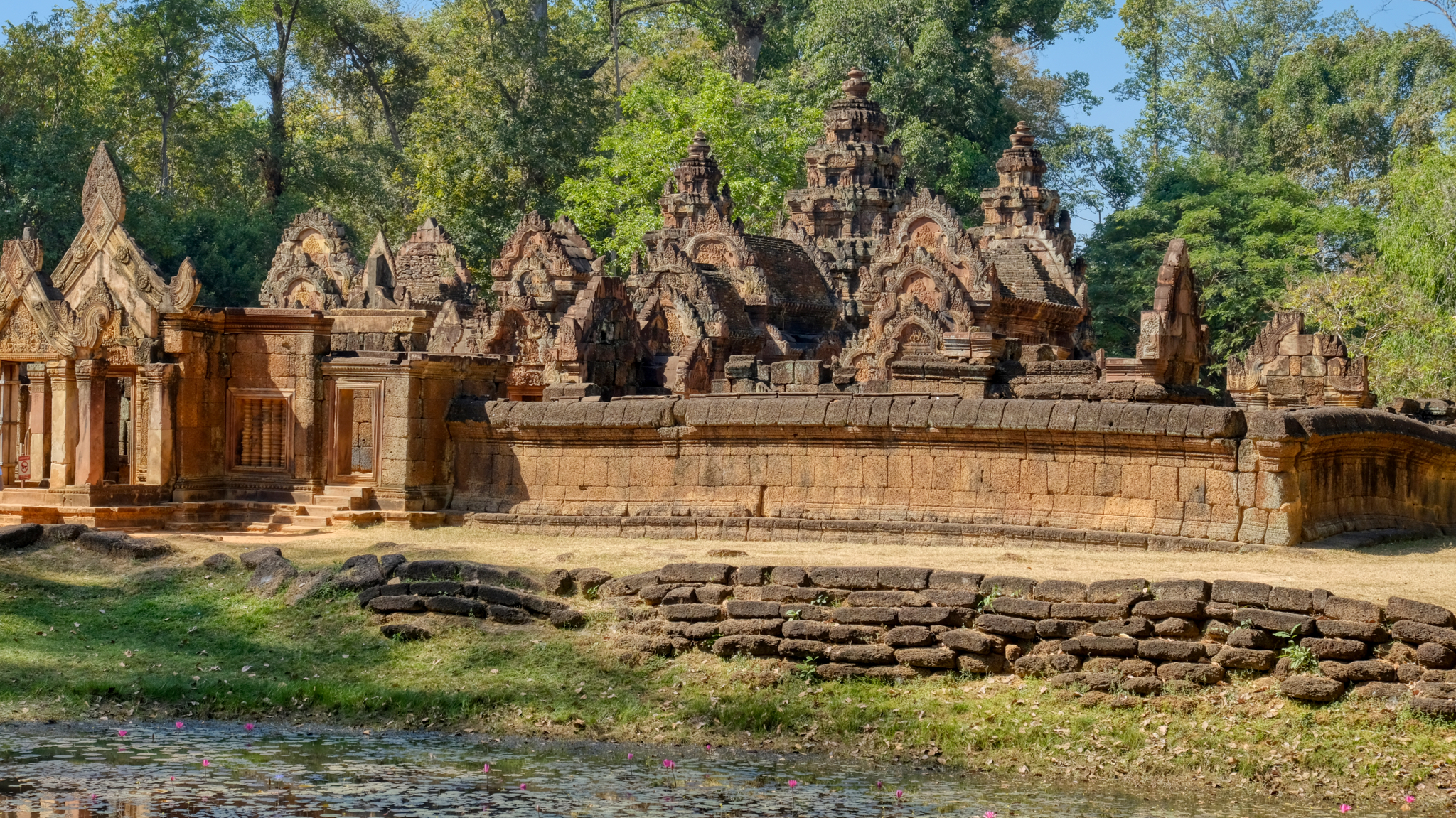 There is so much to see in the Angkor Wat complex - many ancient sites. spread out around many square miles. Here is a small slide show sampling of the sights before we begin.
There is so much to see in the Angkor Wat complex - many ancient sites. spread out around many square miles. Here is a small slide show sampling of the sights before we begin.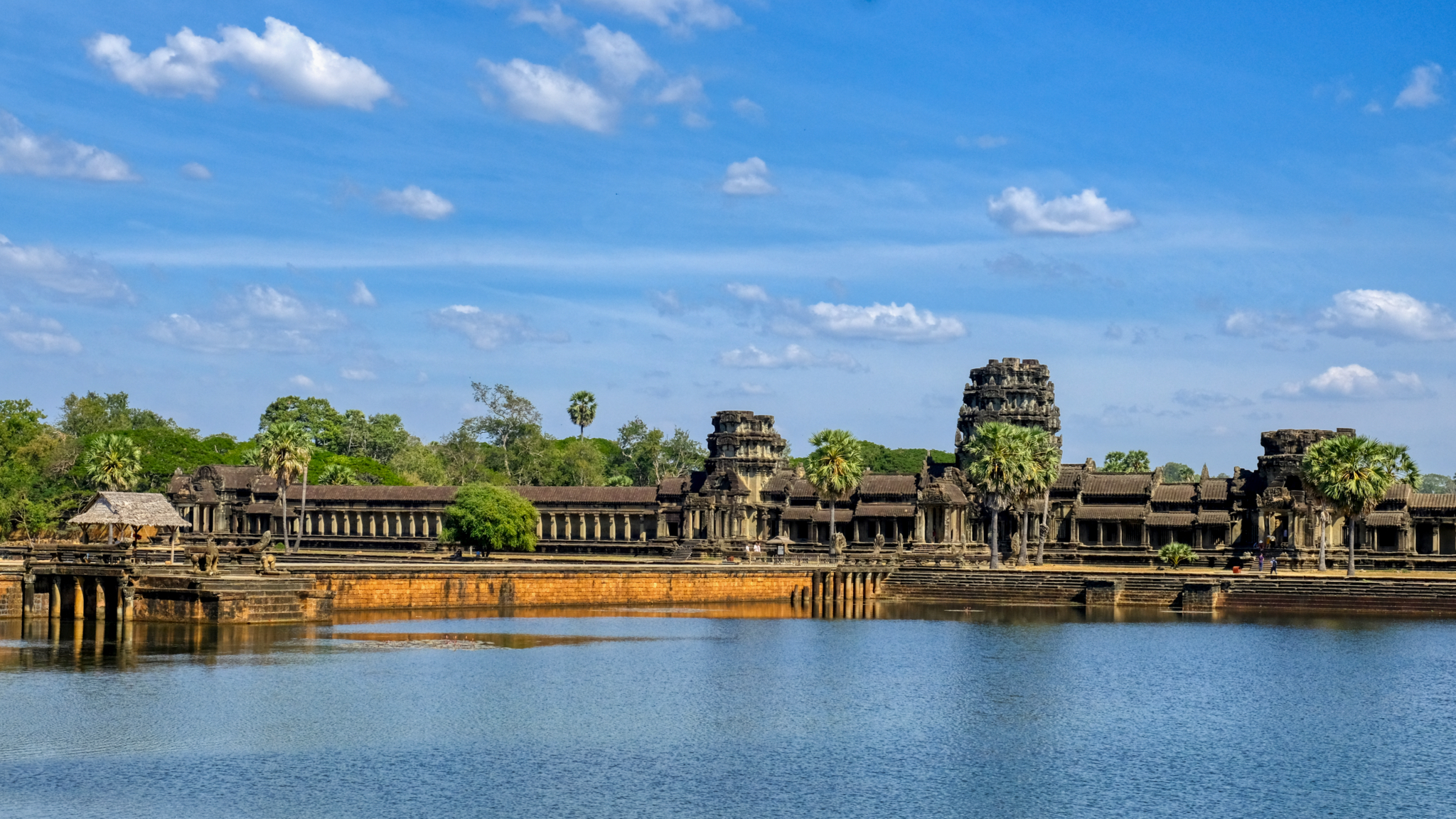 There is a main Angkor Wat temple with a grand entry across a beautiful pond.
There is a main Angkor Wat temple with a grand entry across a beautiful pond.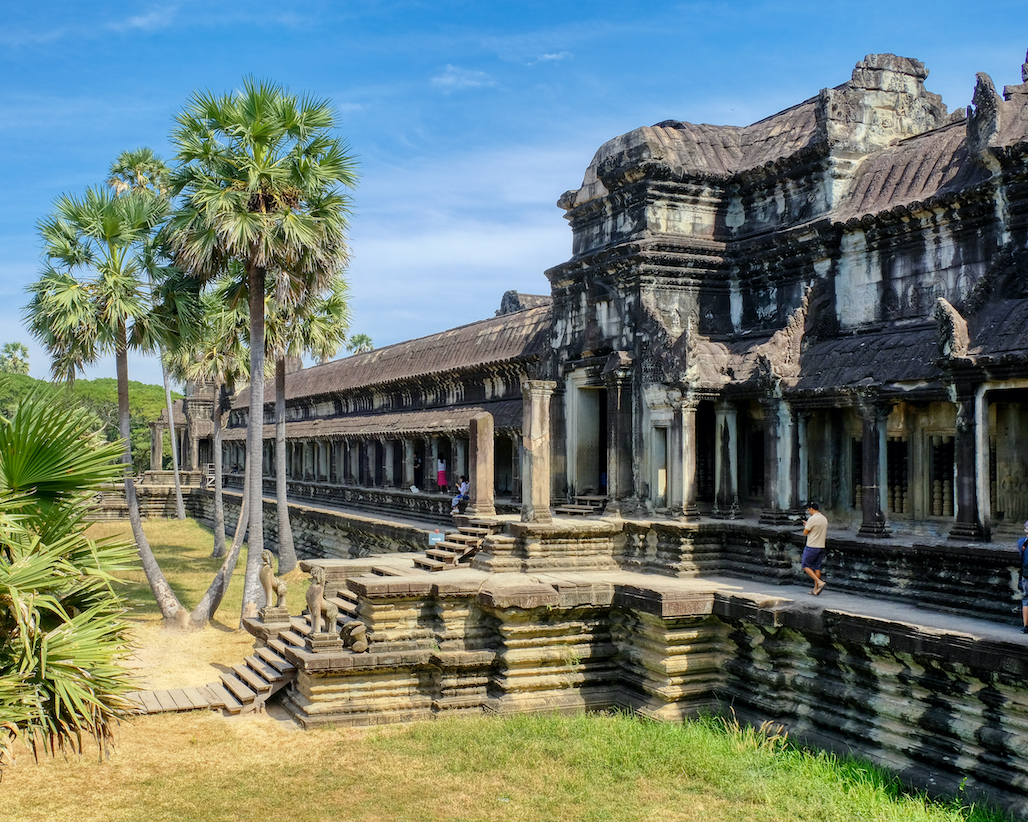 Just inside the "entry" gate.
Just inside the "entry" gate.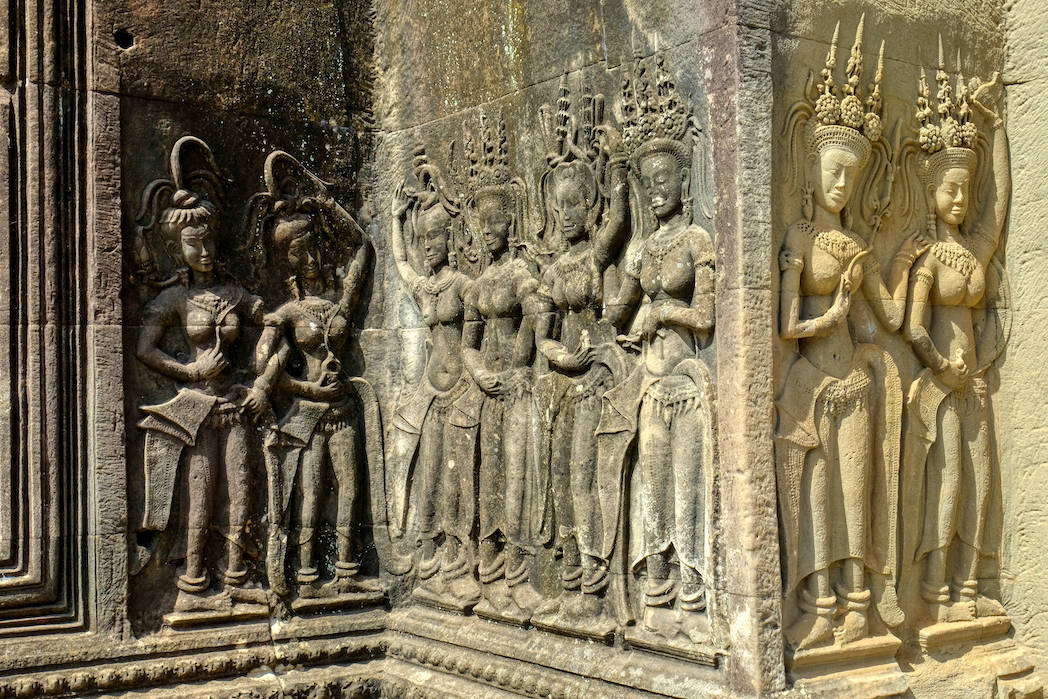 The interior and exterior surfaces are all nearly completely carved in panels of patterns and figures.
The interior and exterior surfaces are all nearly completely carved in panels of patterns and figures.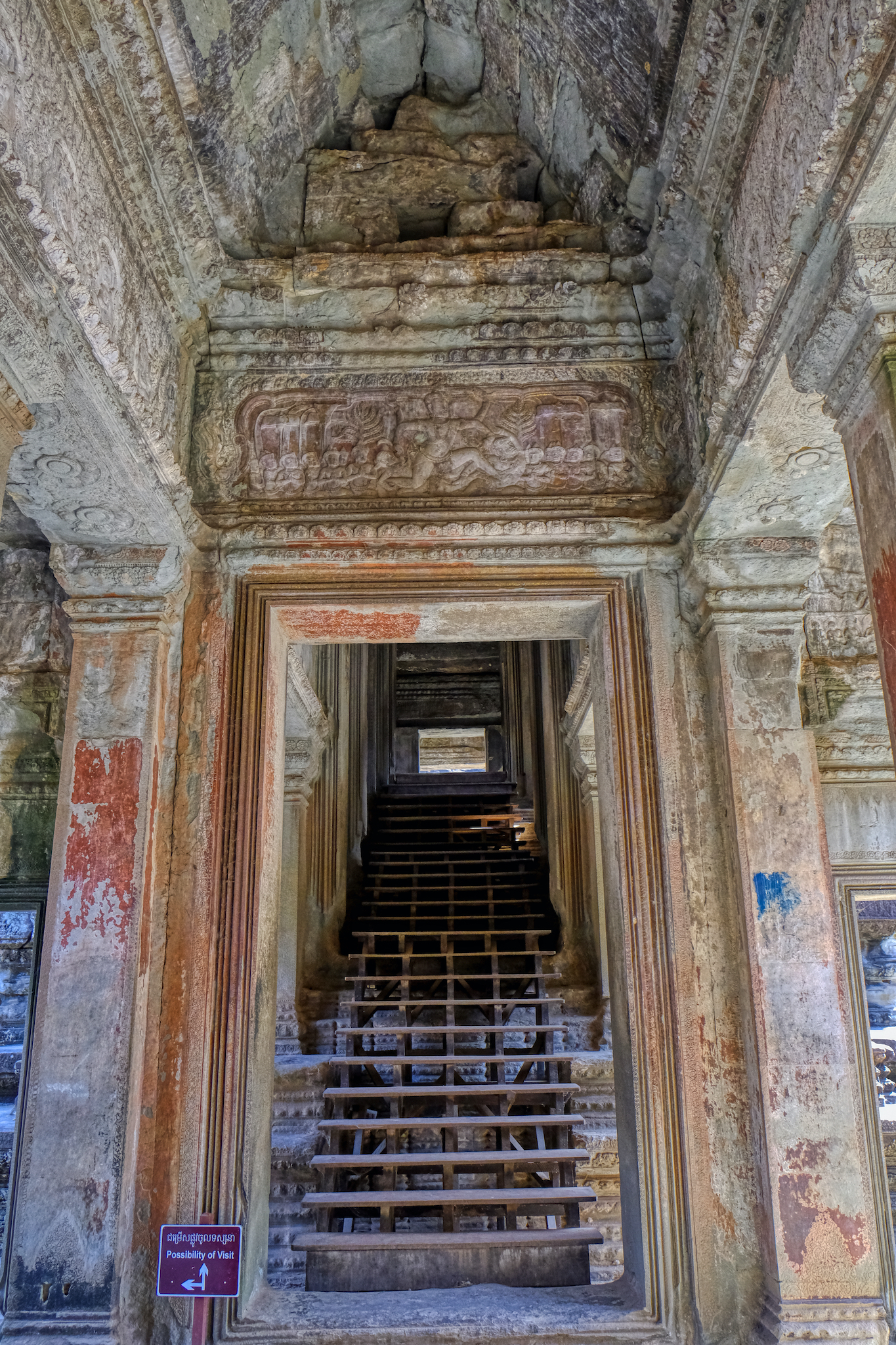
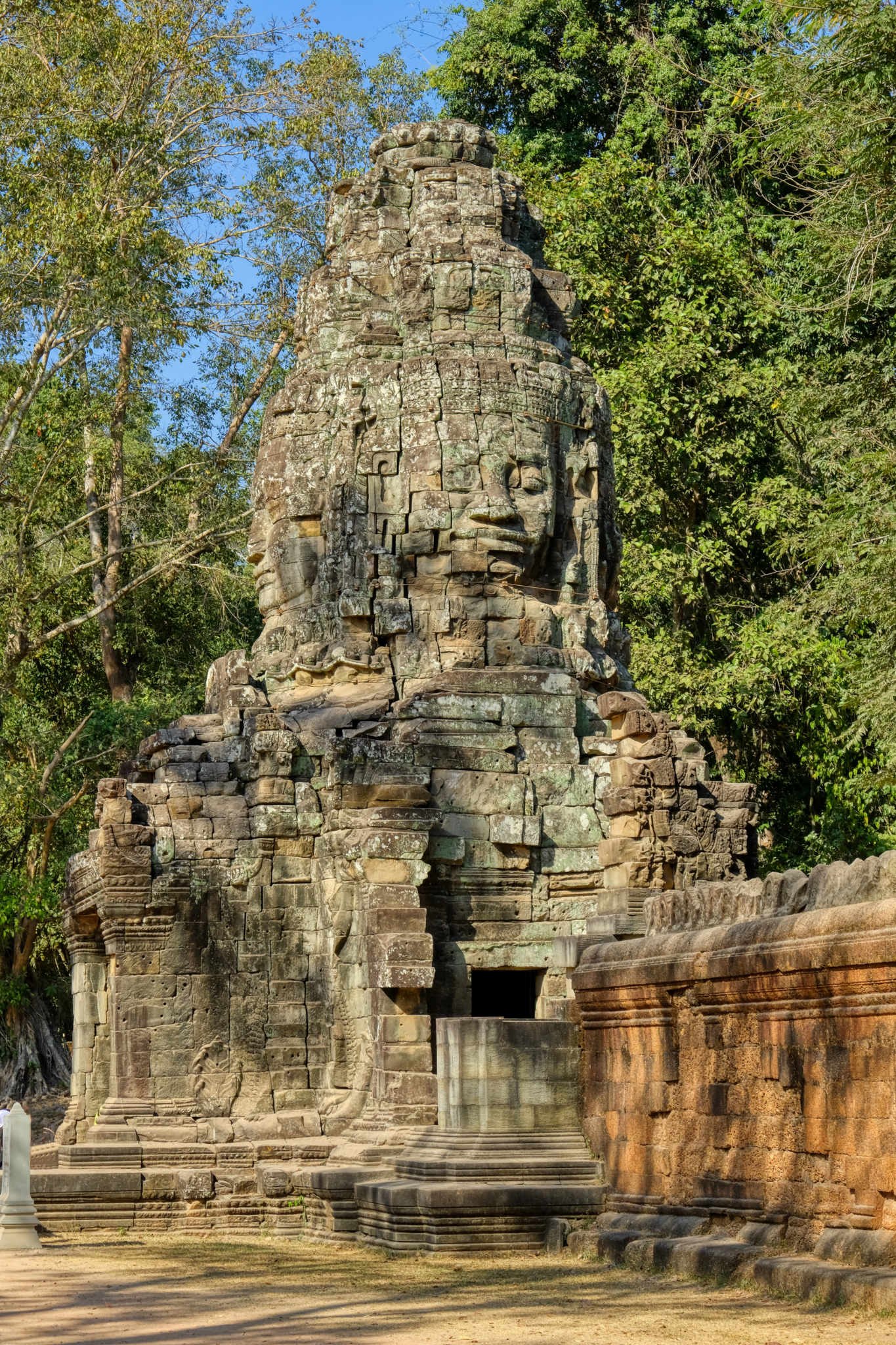 The many temple complexes are surrounded by high walls and often moats. All have four gates; one each facing north, south, east, and west.
The many temple complexes are surrounded by high walls and often moats. All have four gates; one each facing north, south, east, and west.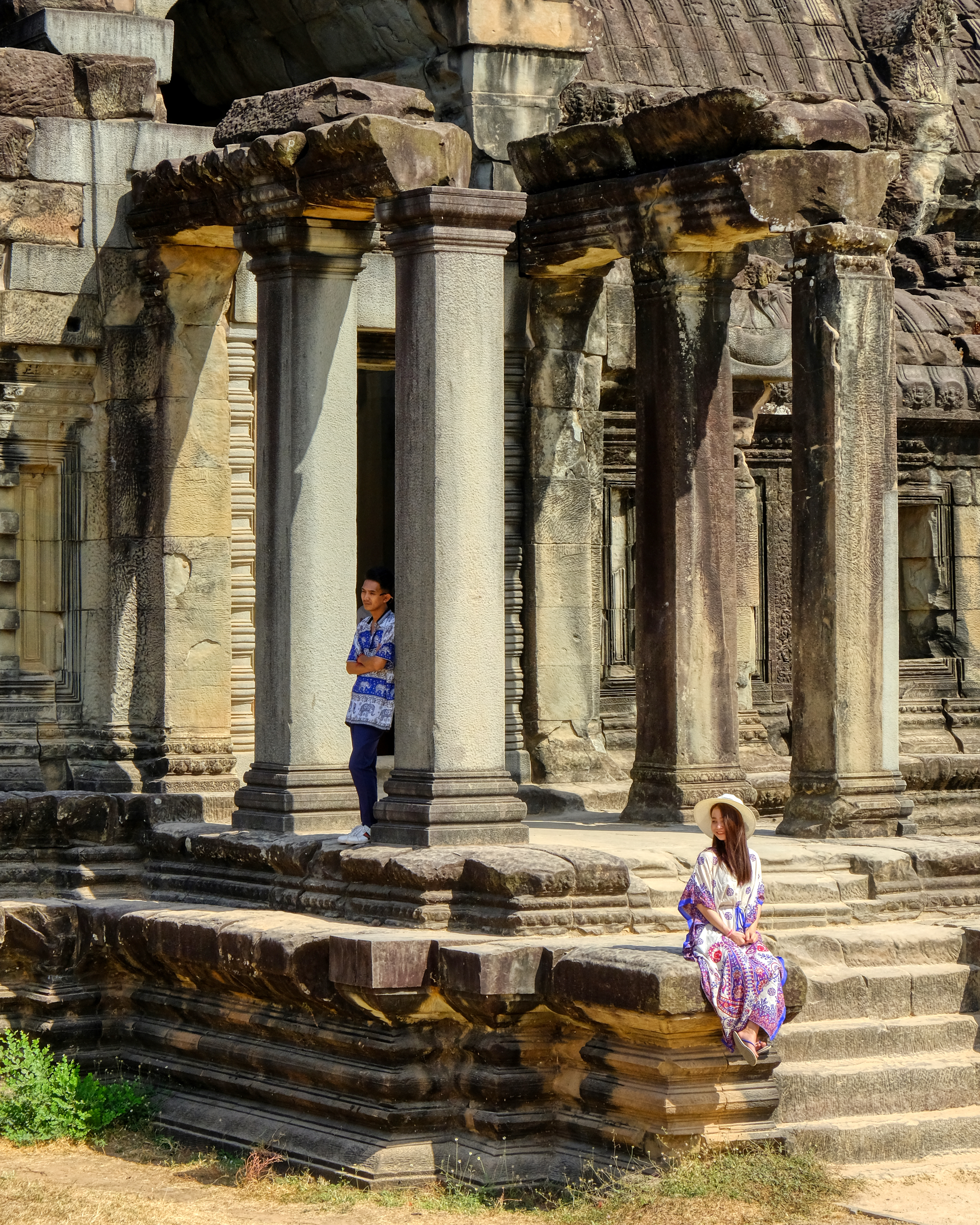 Inside the the main temple grounds, tourists stop to pose among the ruins. Thank you.
Inside the the main temple grounds, tourists stop to pose among the ruins. Thank you.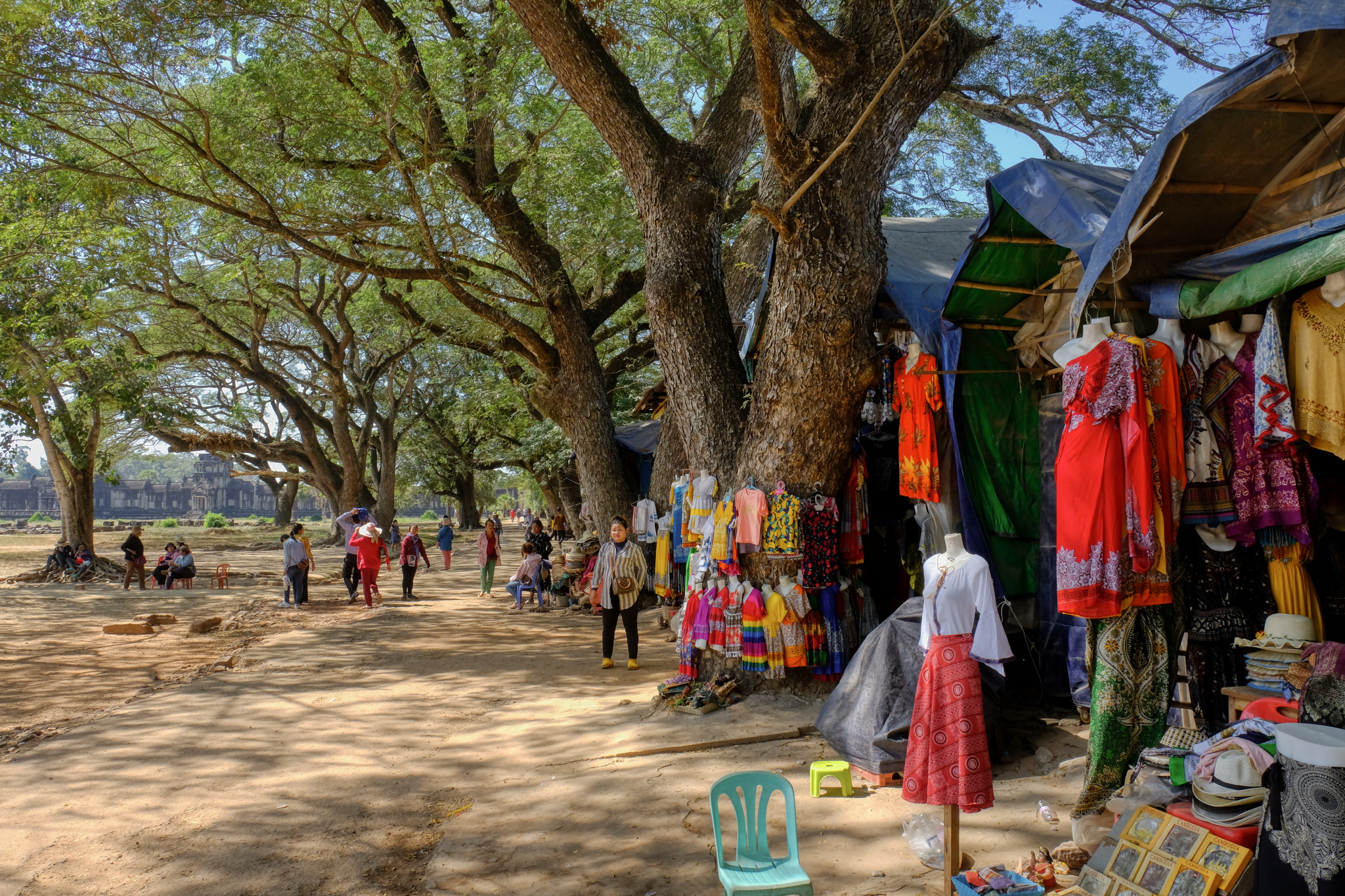 Curious vendors here and there. Yes, I bought the t-shirt. Of course I did
Curious vendors here and there. Yes, I bought the t-shirt. Of course I did Through and into a temple gatehouse structure.
Through and into a temple gatehouse structure.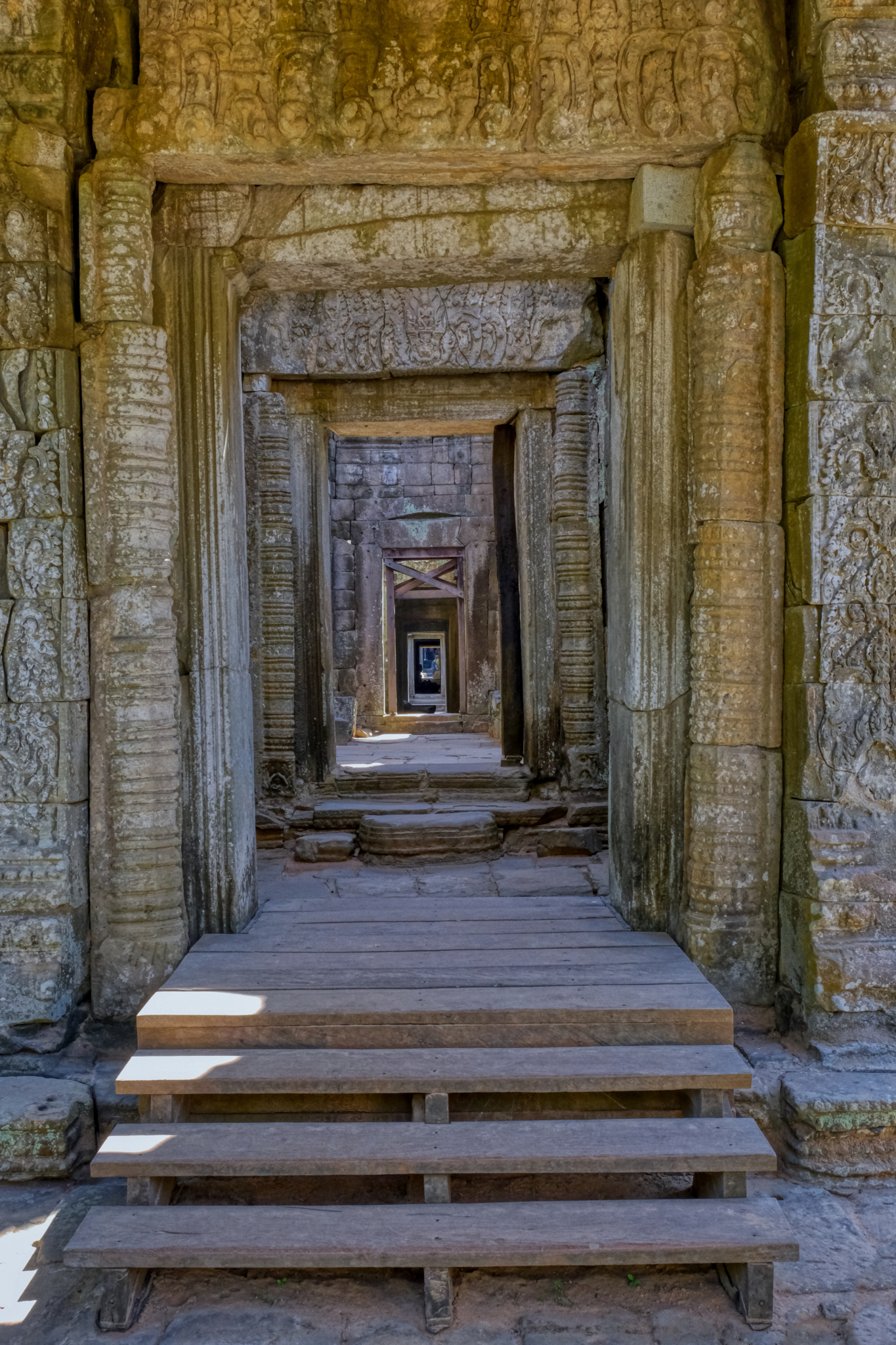 Inside the temples there are inviting and mysterious passages everywhere.
Inside the temples there are inviting and mysterious passages everywhere.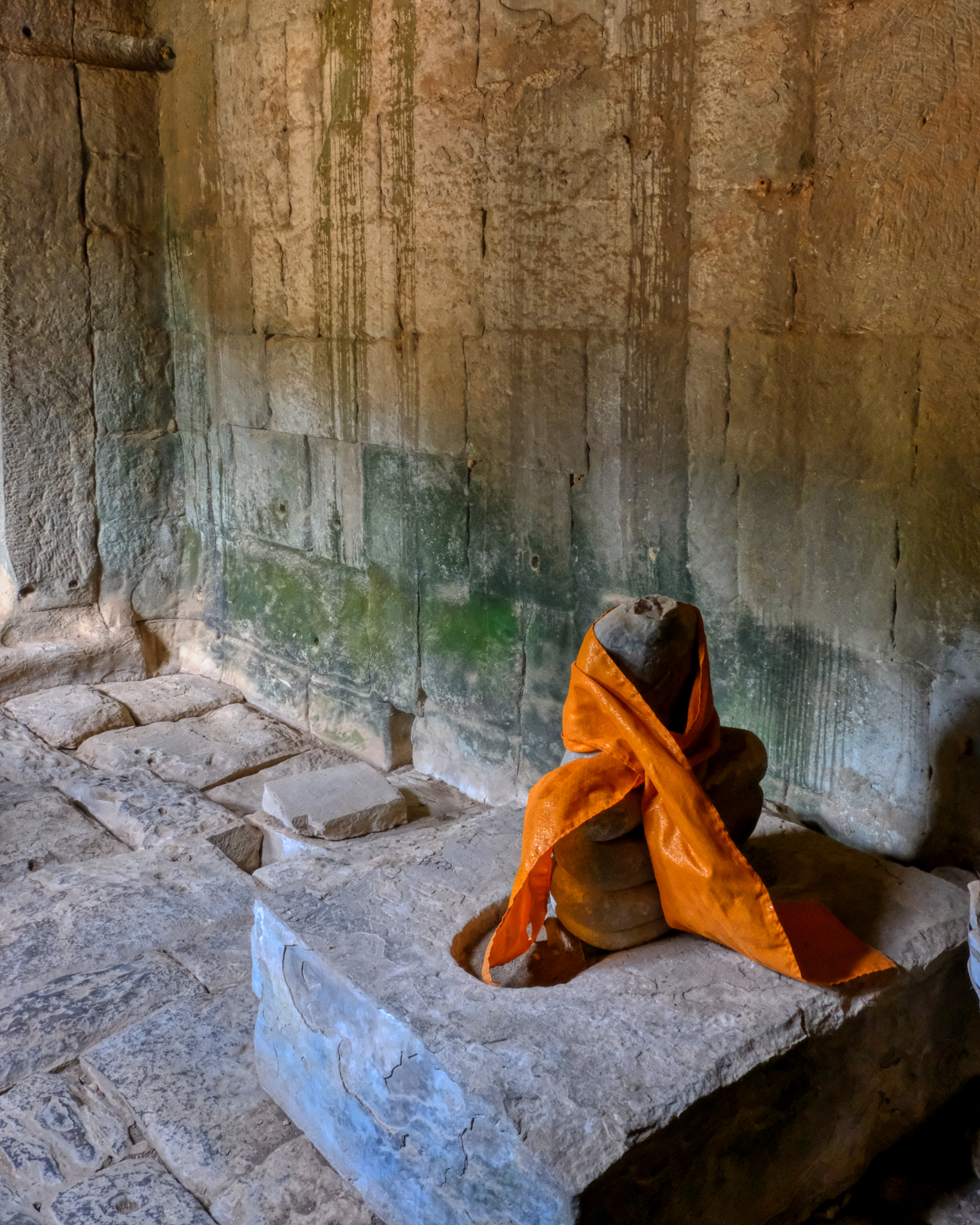 Although headless, many of the ancient Buddha relics are still tended by local followers.
Although headless, many of the ancient Buddha relics are still tended by local followers.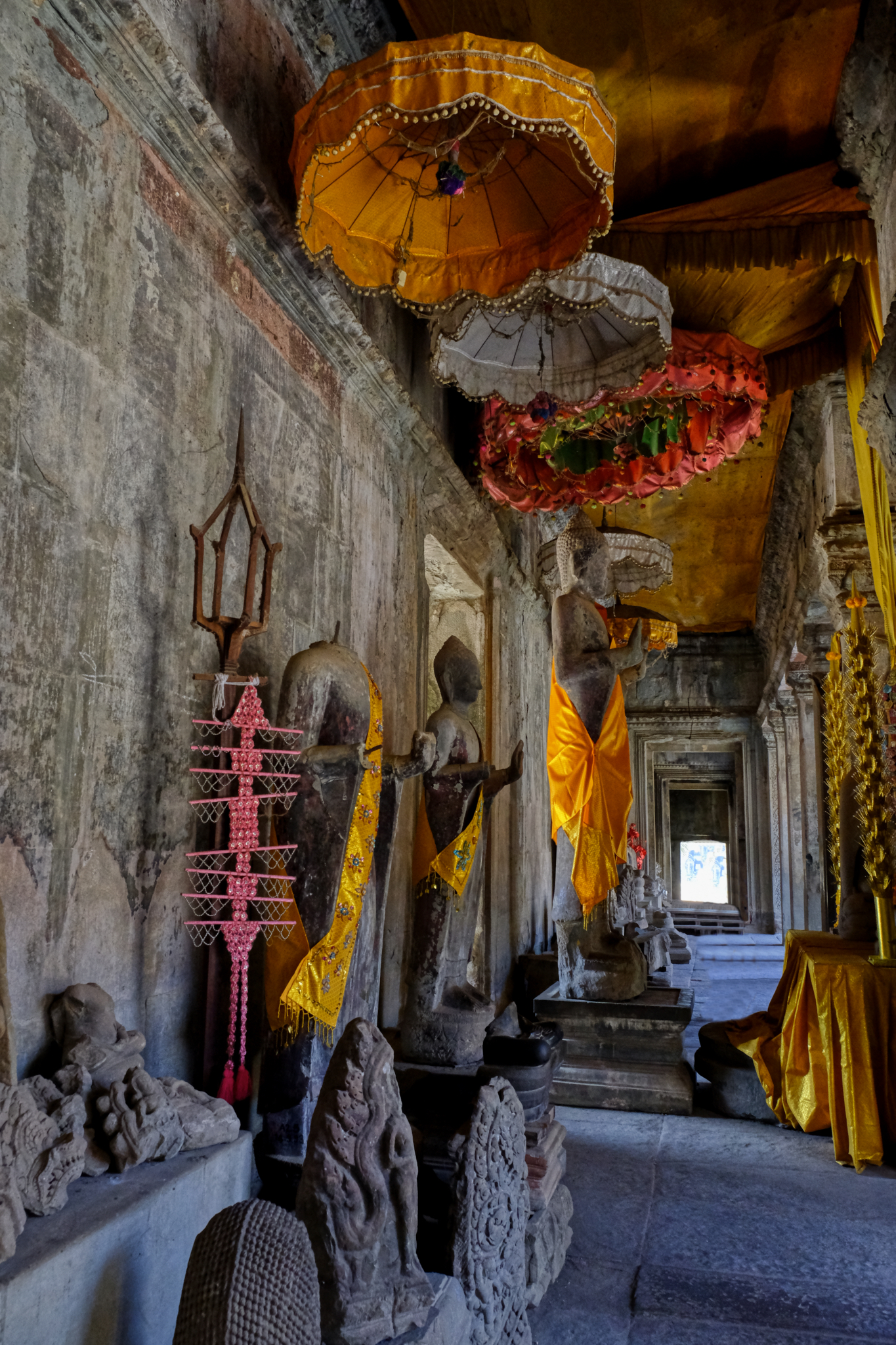 A fascinating hall of revered Buddha relics.
A fascinating hall of revered Buddha relics.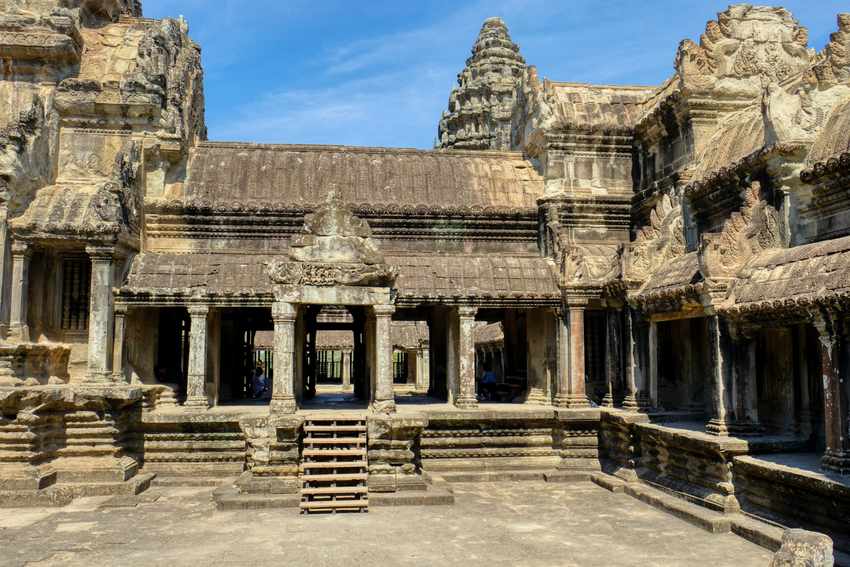 Interior courtyard within the temple structures.
Interior courtyard within the temple structures.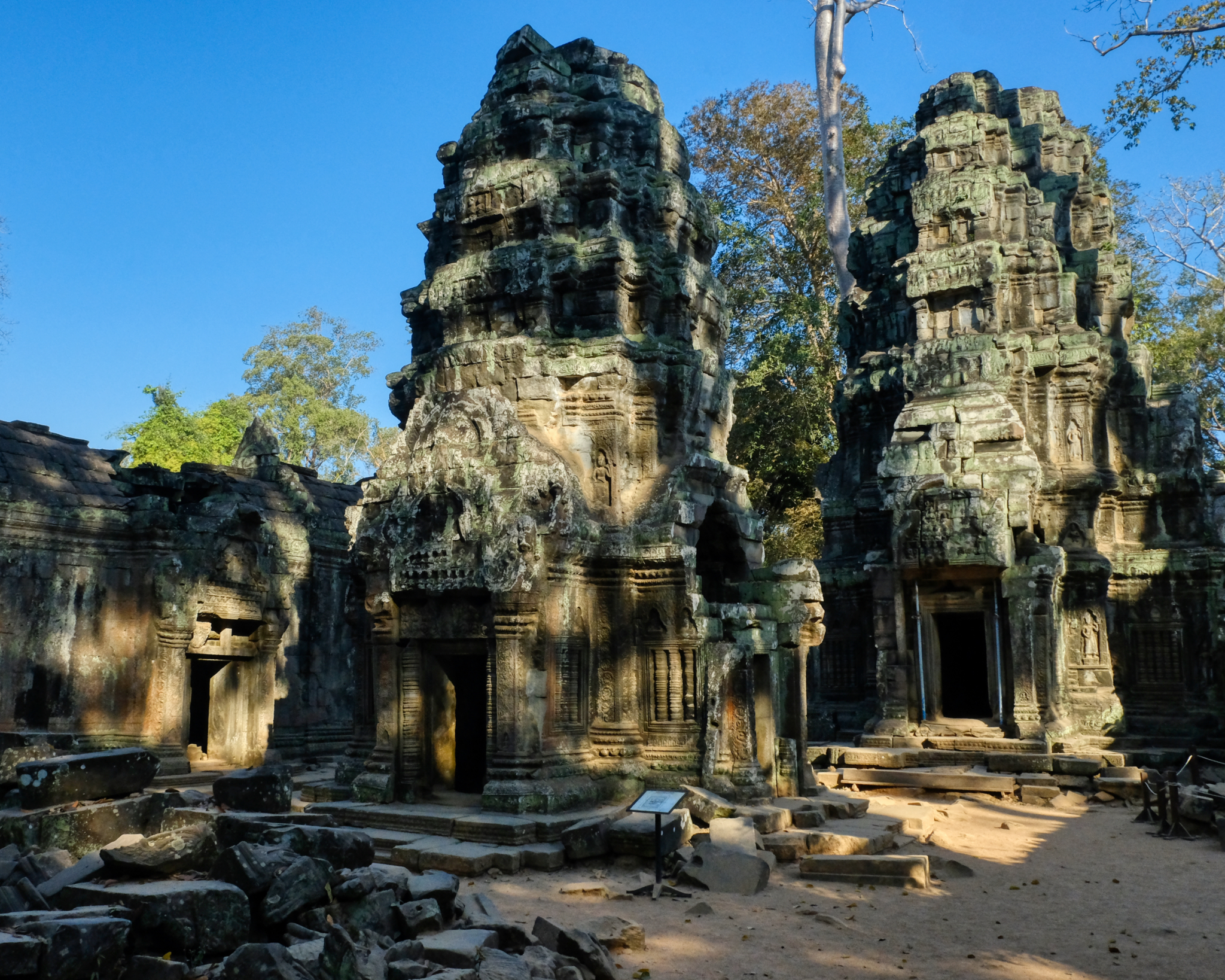 Ruins of Angkor Wat chedis. Incredible and unique architectural style.
Ruins of Angkor Wat chedis. Incredible and unique architectural style.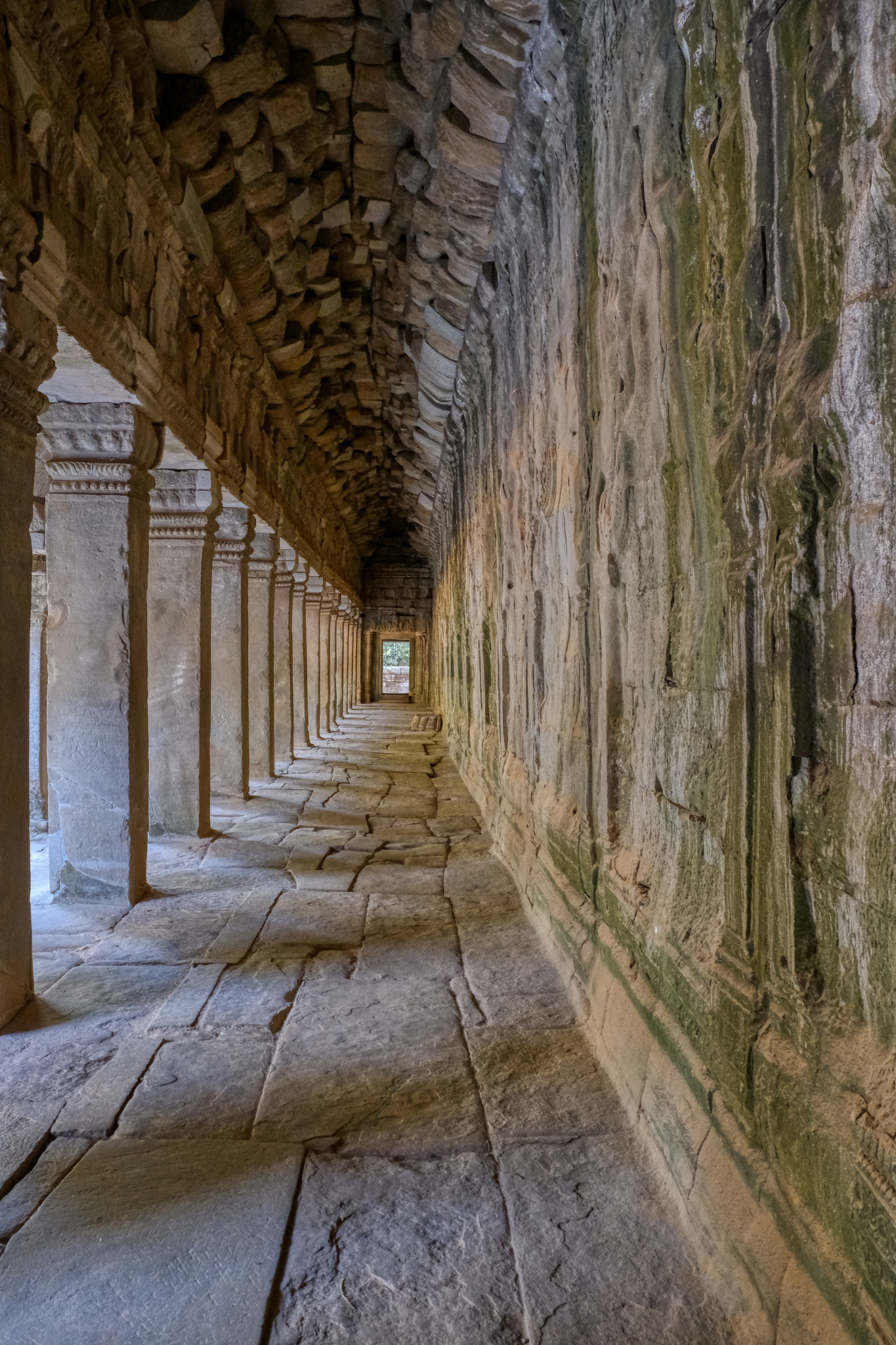 Interior halls and colonnades everywhere invite exploration.
Interior halls and colonnades everywhere invite exploration.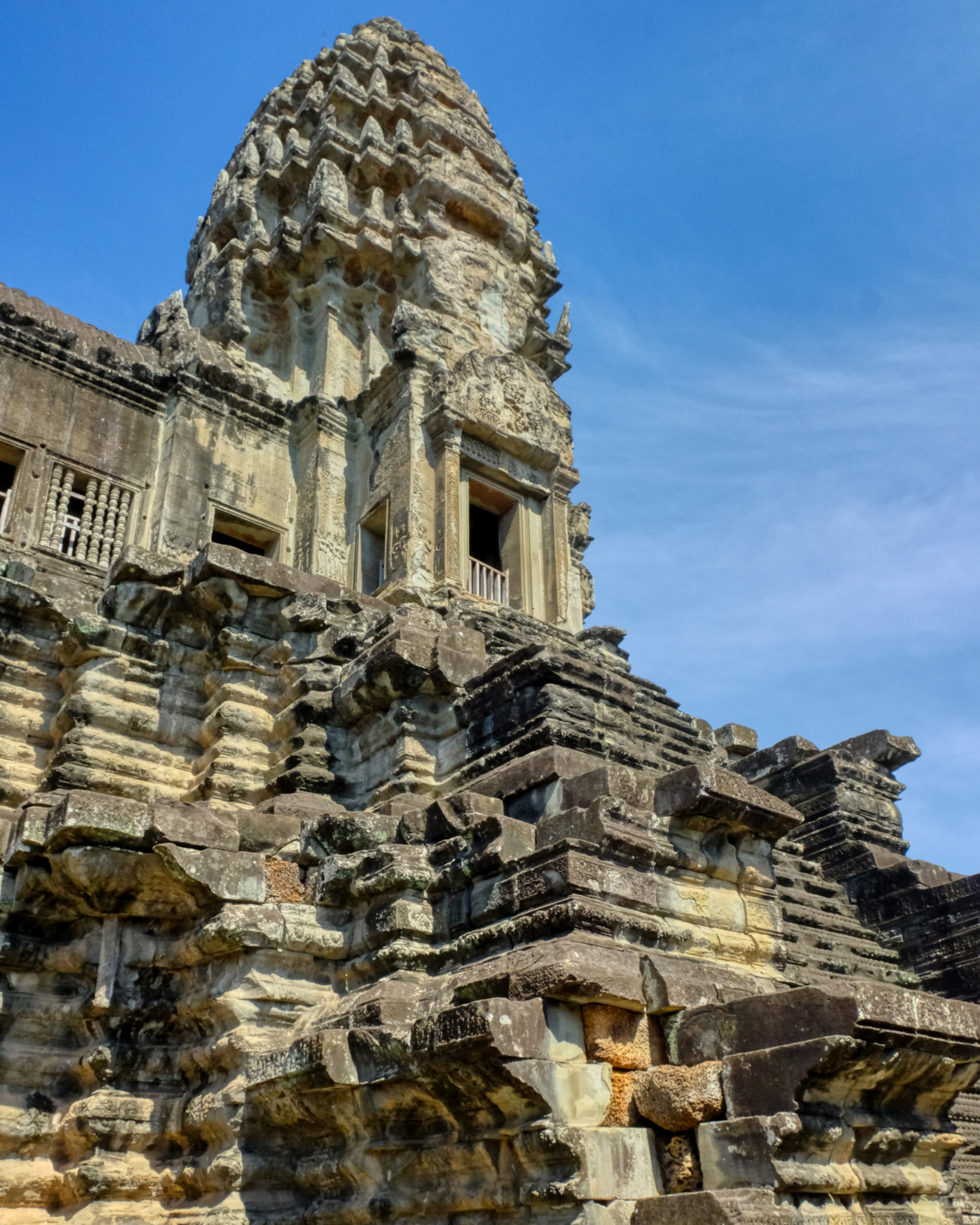 Stone spires carved with elaborate patterns of adornment.
Stone spires carved with elaborate patterns of adornment.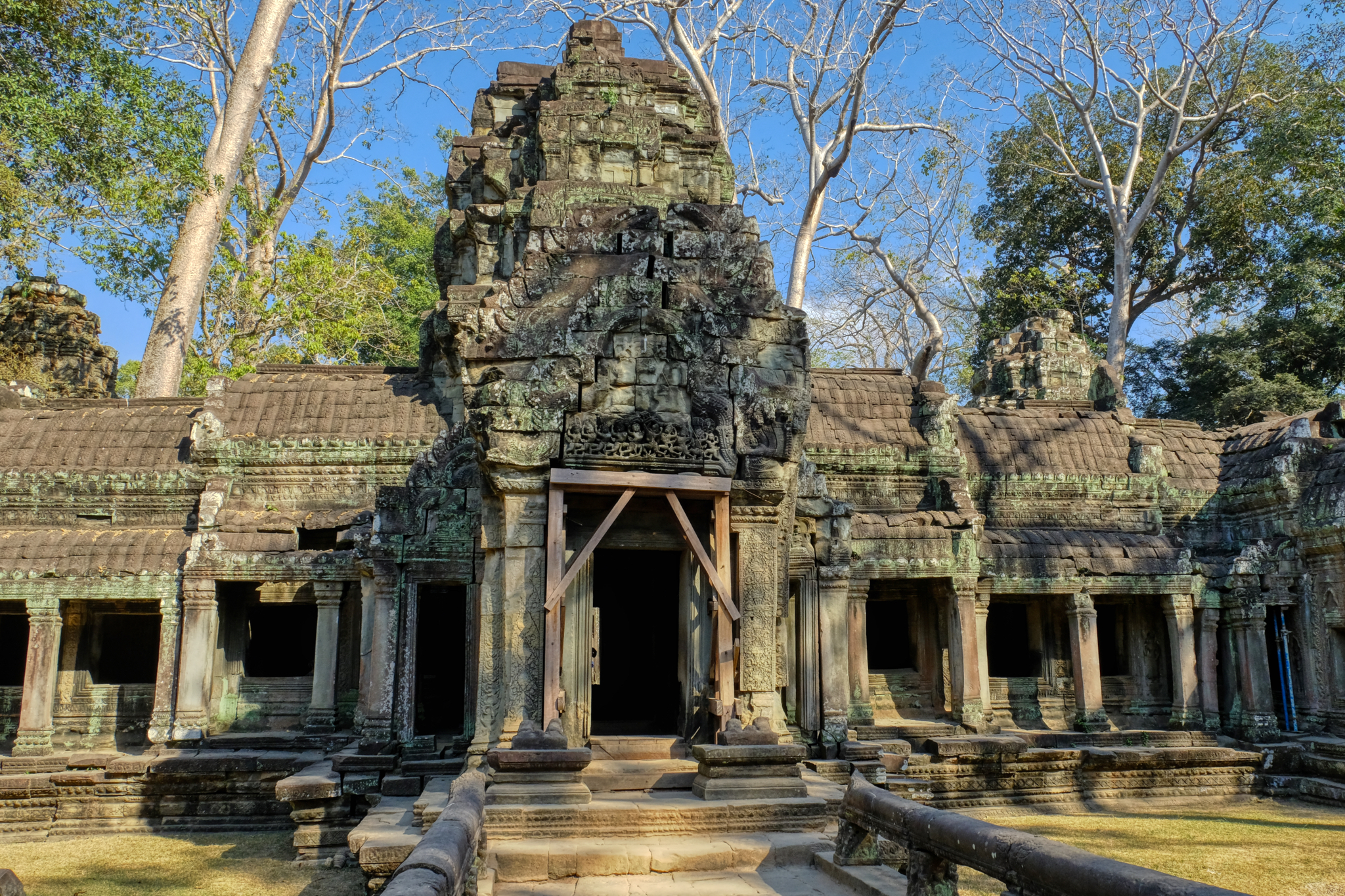 Reclaimed from the jungle that reclaimed the temple centuries ago.
Reclaimed from the jungle that reclaimed the temple centuries ago.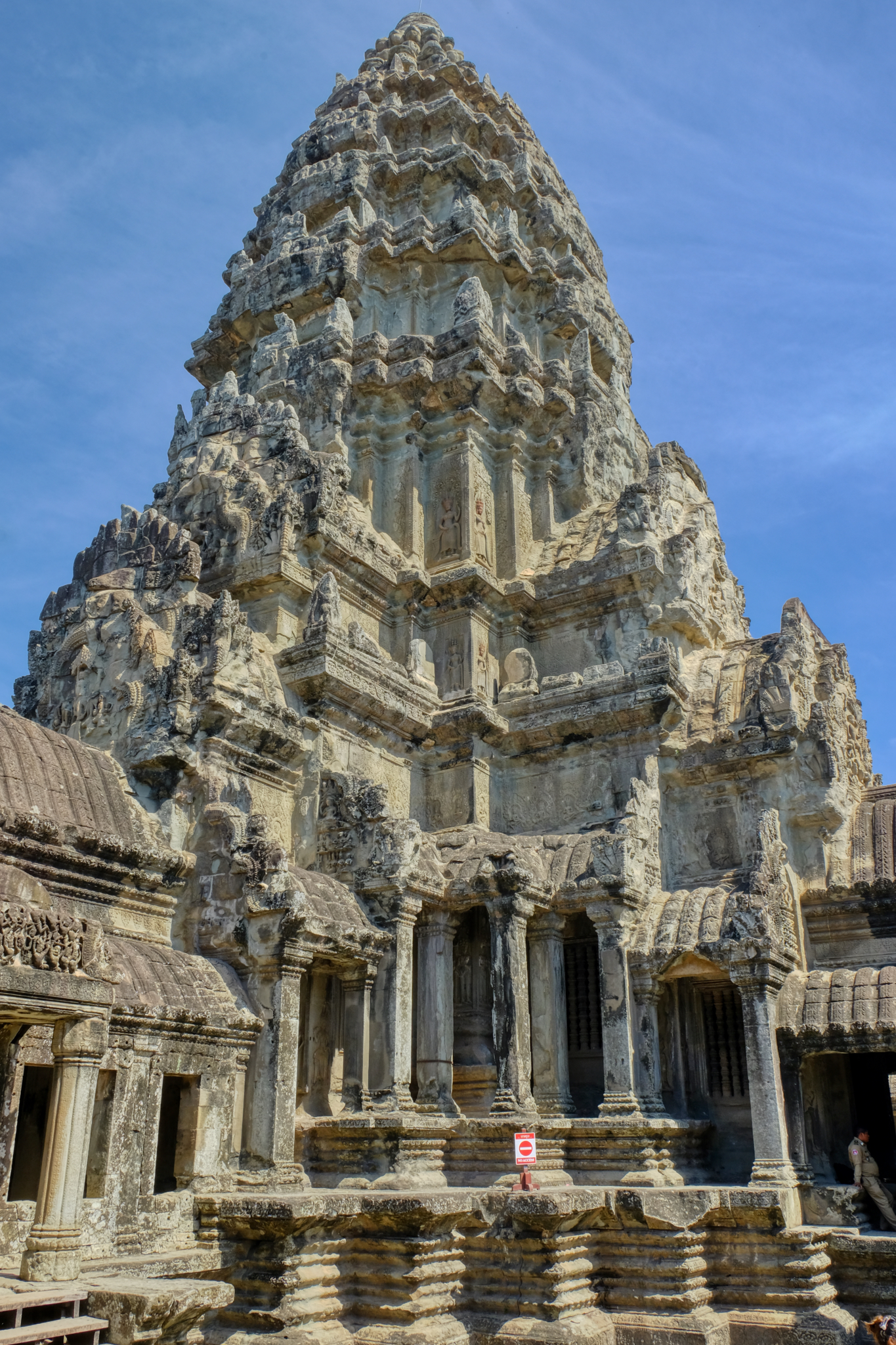 A temple spire. Fascinating.
A temple spire. Fascinating.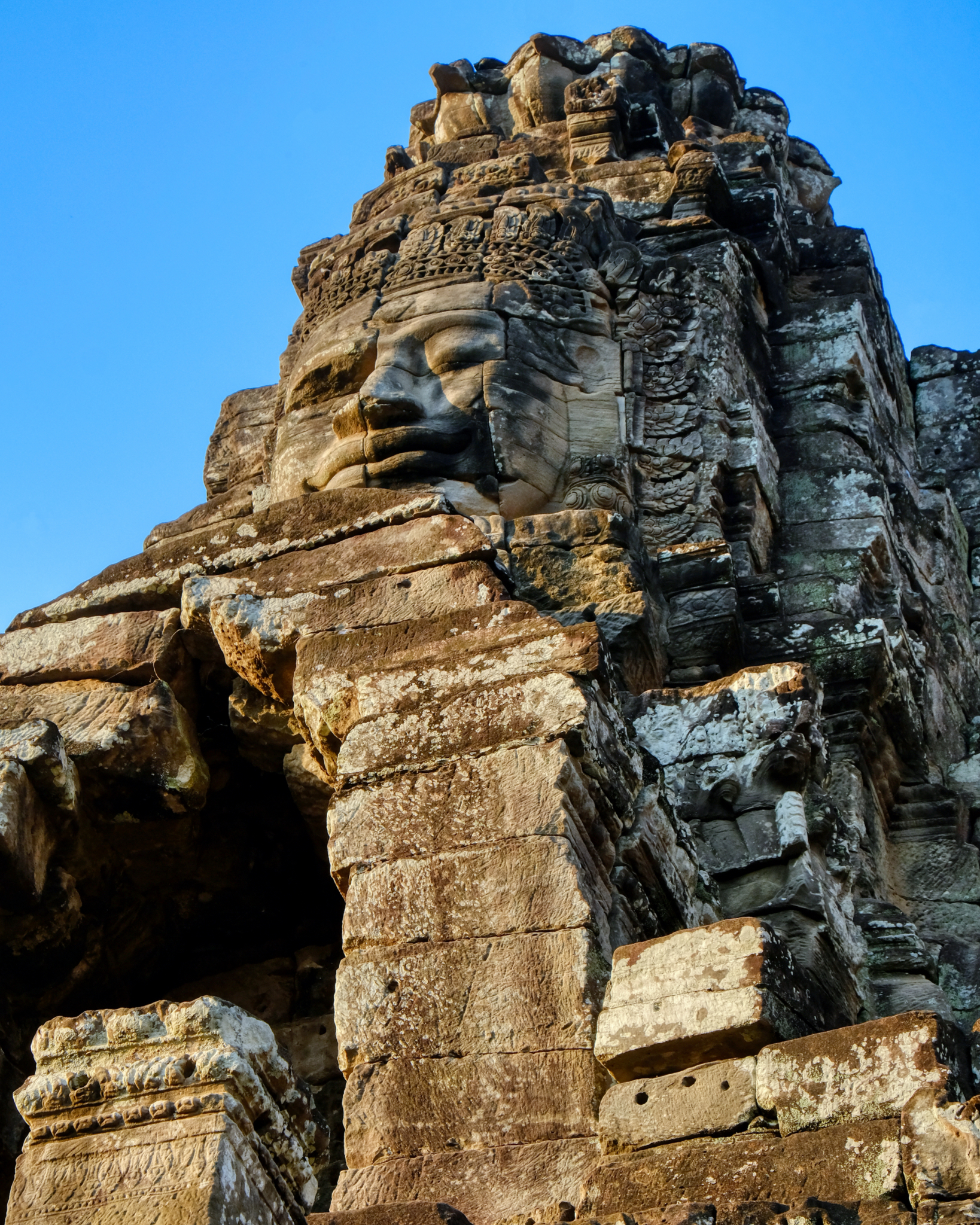
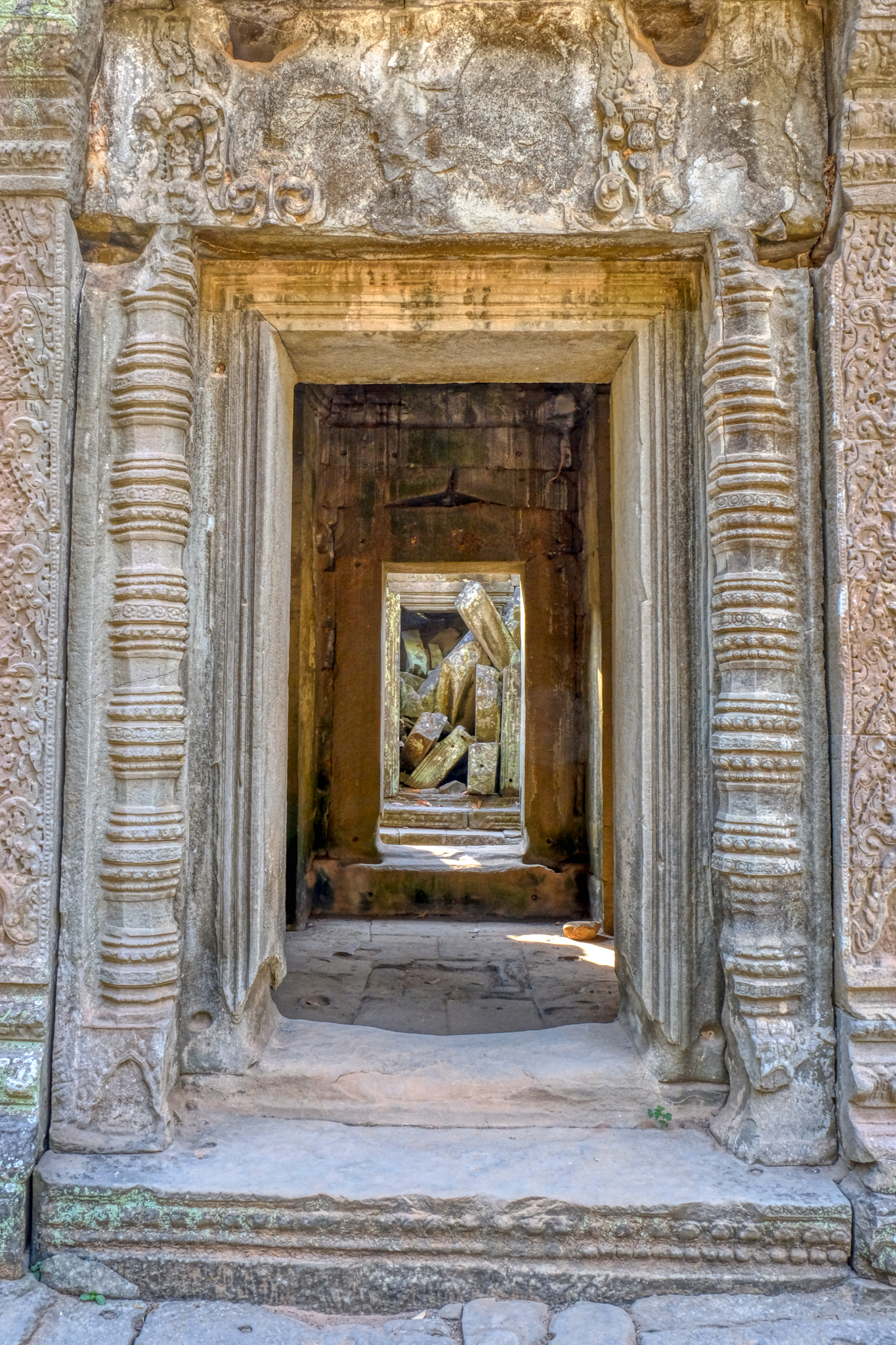 Endless passages, rooms, doors, and b locked exits. It was incredibly interesting to just wander around in this ancient place.
Endless passages, rooms, doors, and b locked exits. It was incredibly interesting to just wander around in this ancient place.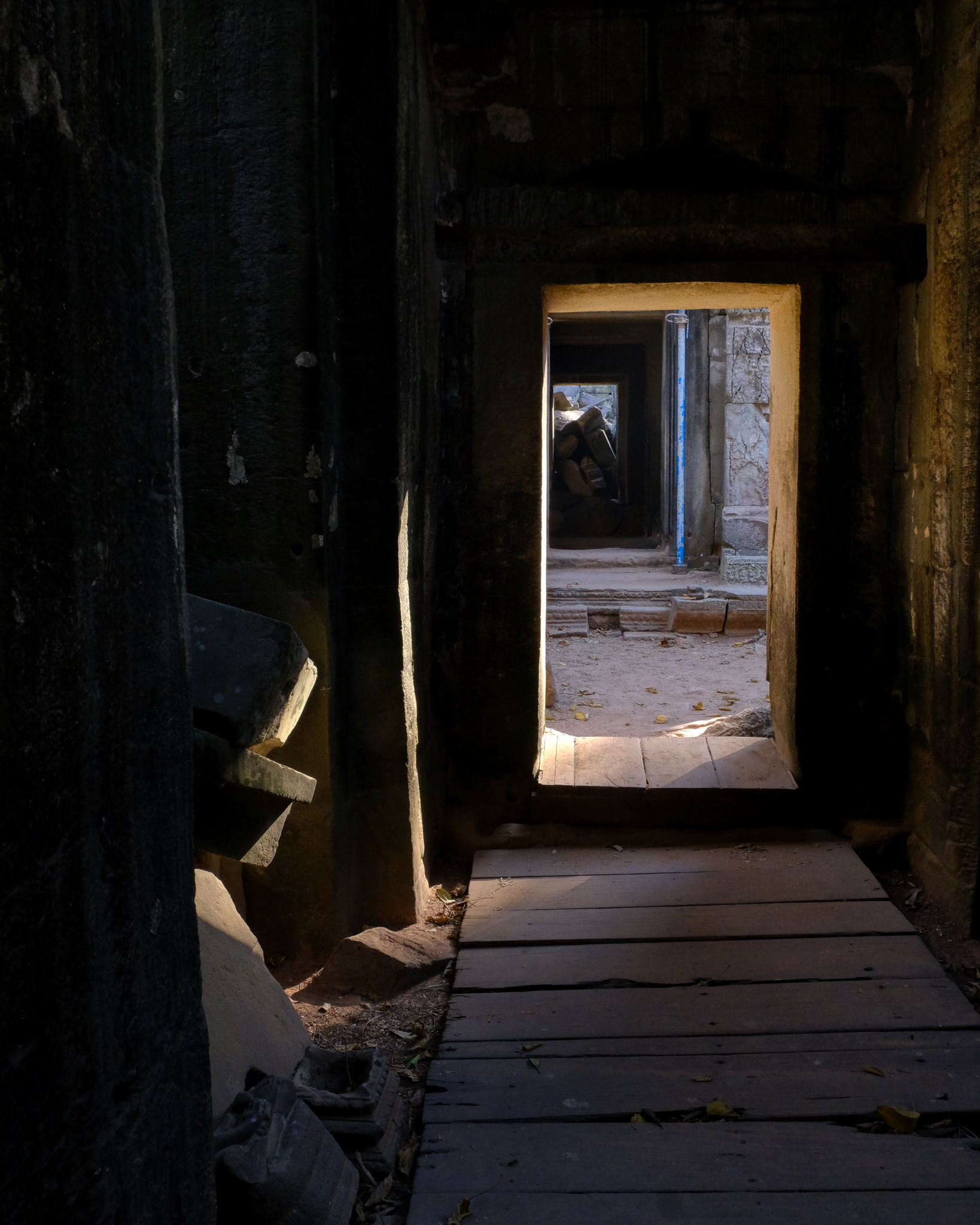 A space of wonder.
A space of wonder.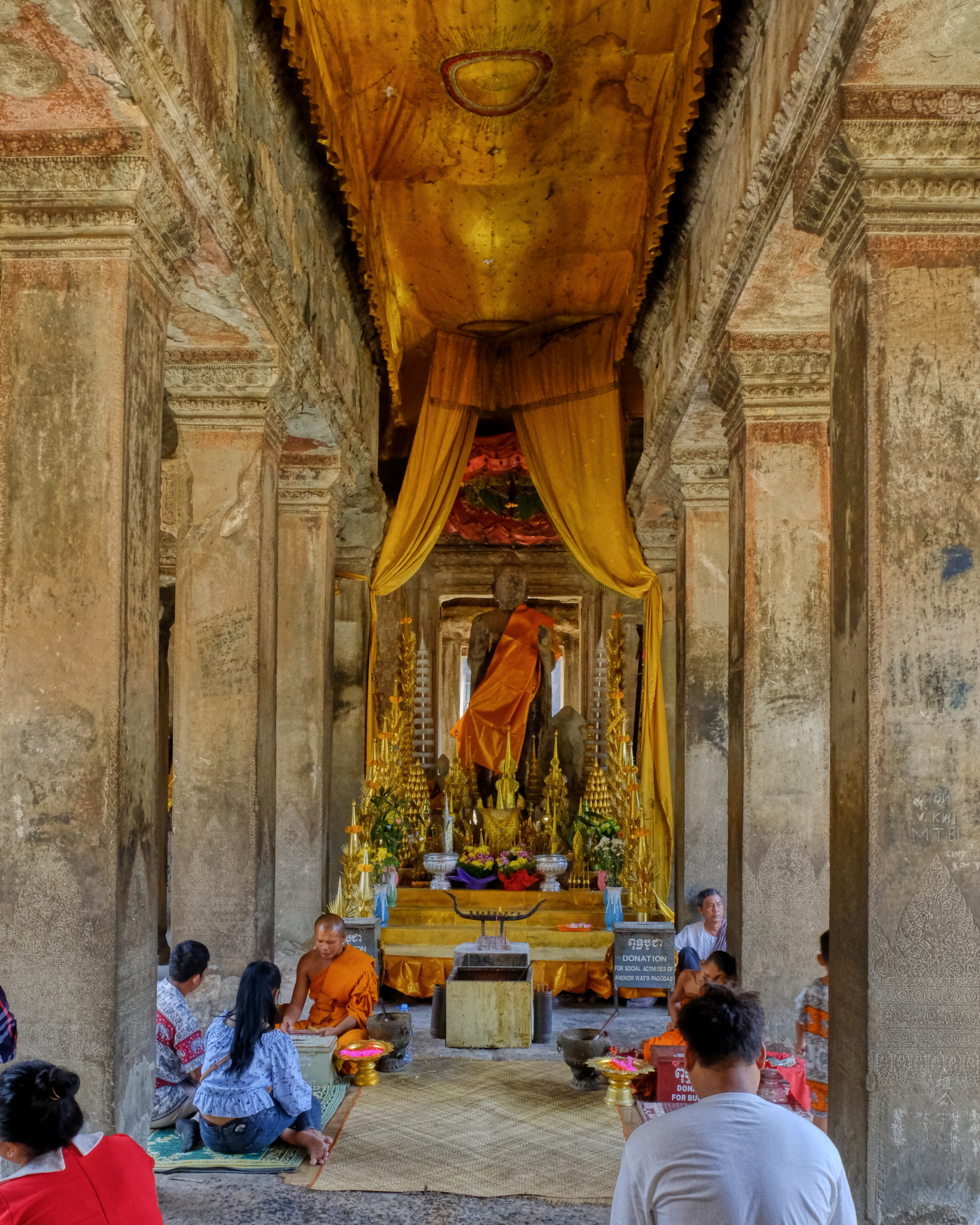 Rounding a corner inside the temple I came across Buddhist monks blessing devotees: Ankor Wat is still a living spiritual center.
Rounding a corner inside the temple I came across Buddhist monks blessing devotees: Ankor Wat is still a living spiritual center.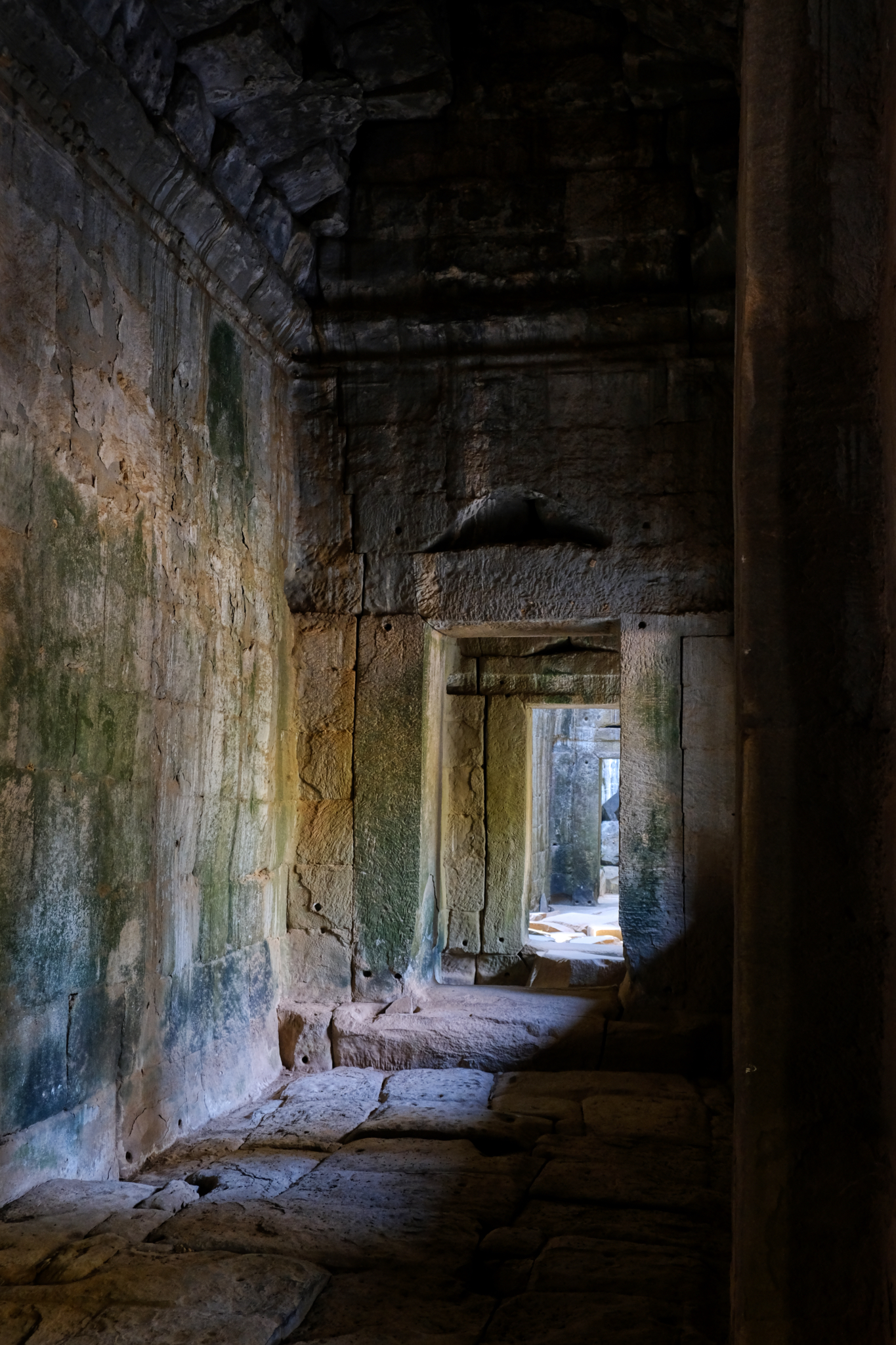 After the blessing monks . . . back into the labyrinth of passages . . .
After the blessing monks . . . back into the labyrinth of passages . . .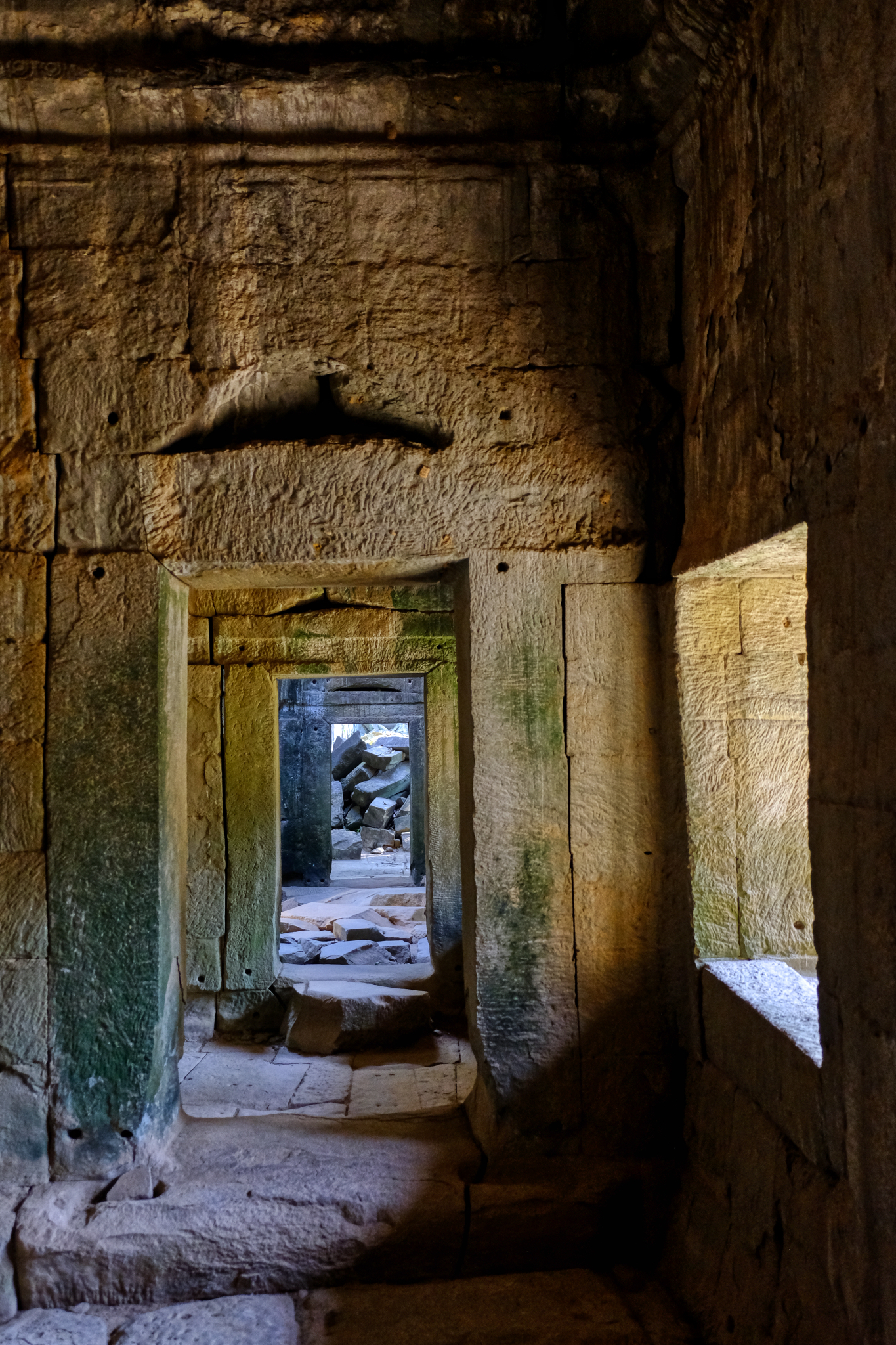 On and on . . . imagining the people who occupied these spaces when it was an active and populated city.
On and on . . . imagining the people who occupied these spaces when it was an active and populated city.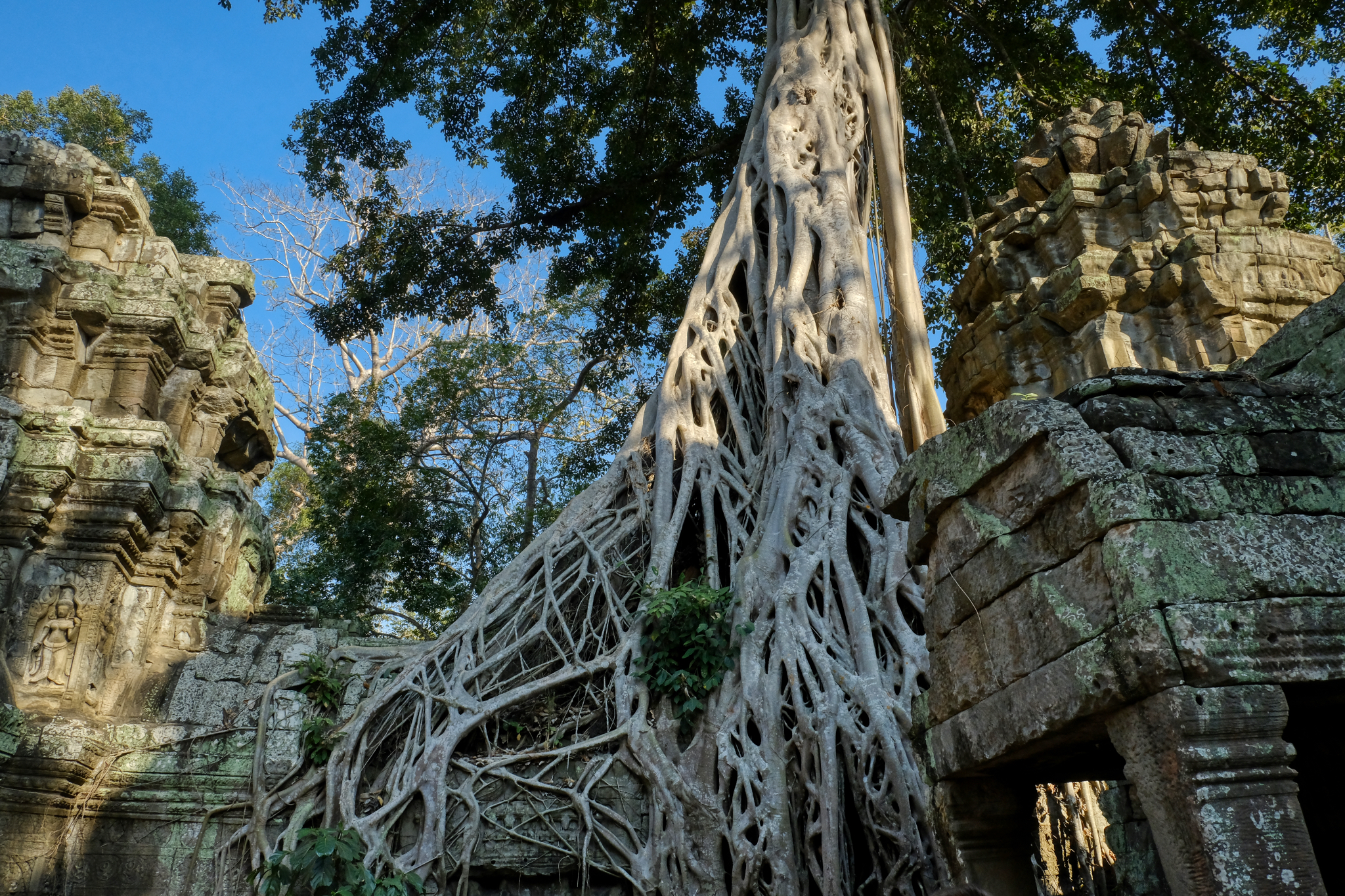 The jungle is still trying to interpose itself on the ancient temple structures.
The jungle is still trying to interpose itself on the ancient temple structures.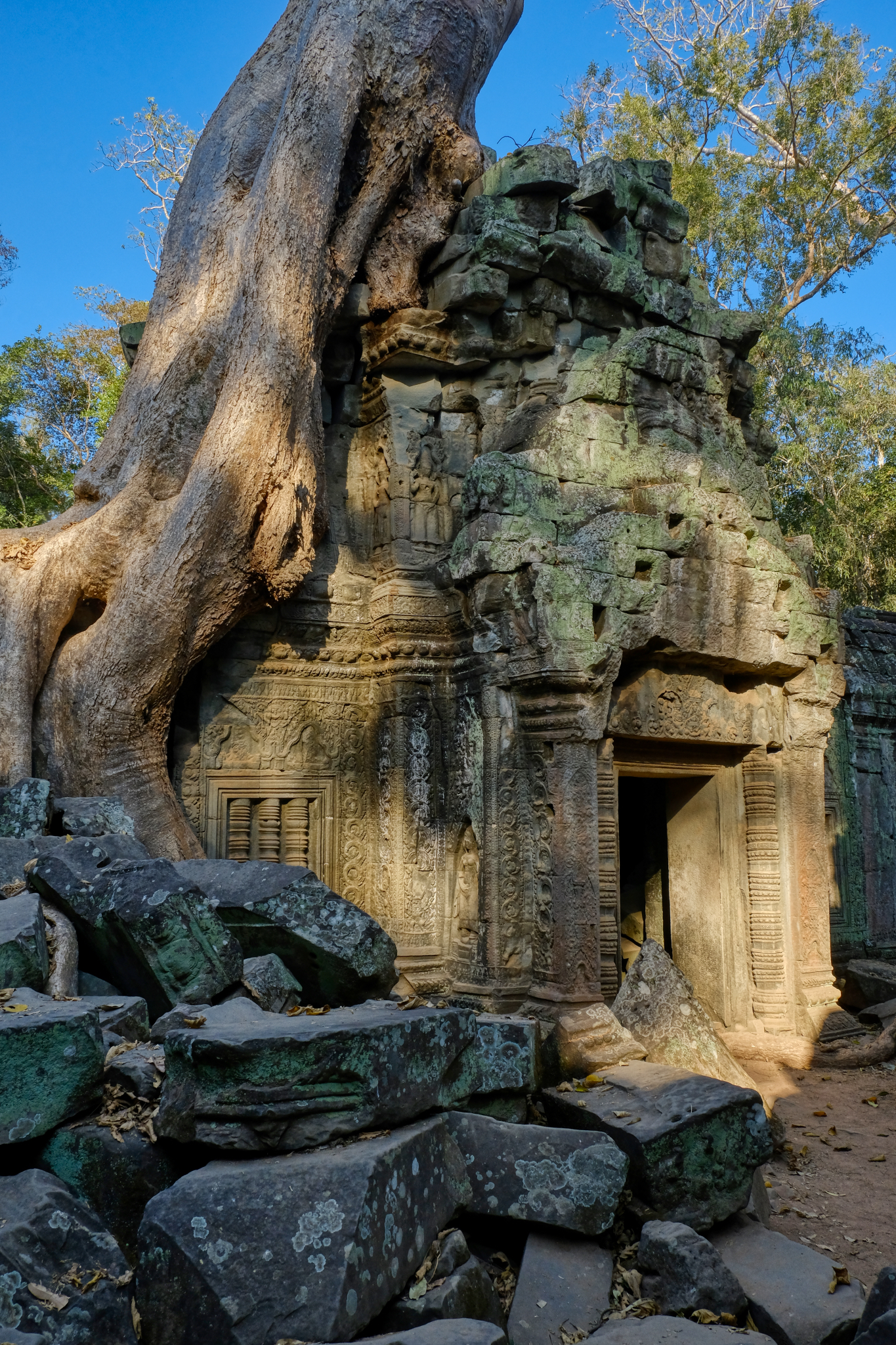 The iconic image of Angkor Wat is the giant tree roots embracing the temple stones.
The iconic image of Angkor Wat is the giant tree roots embracing the temple stones.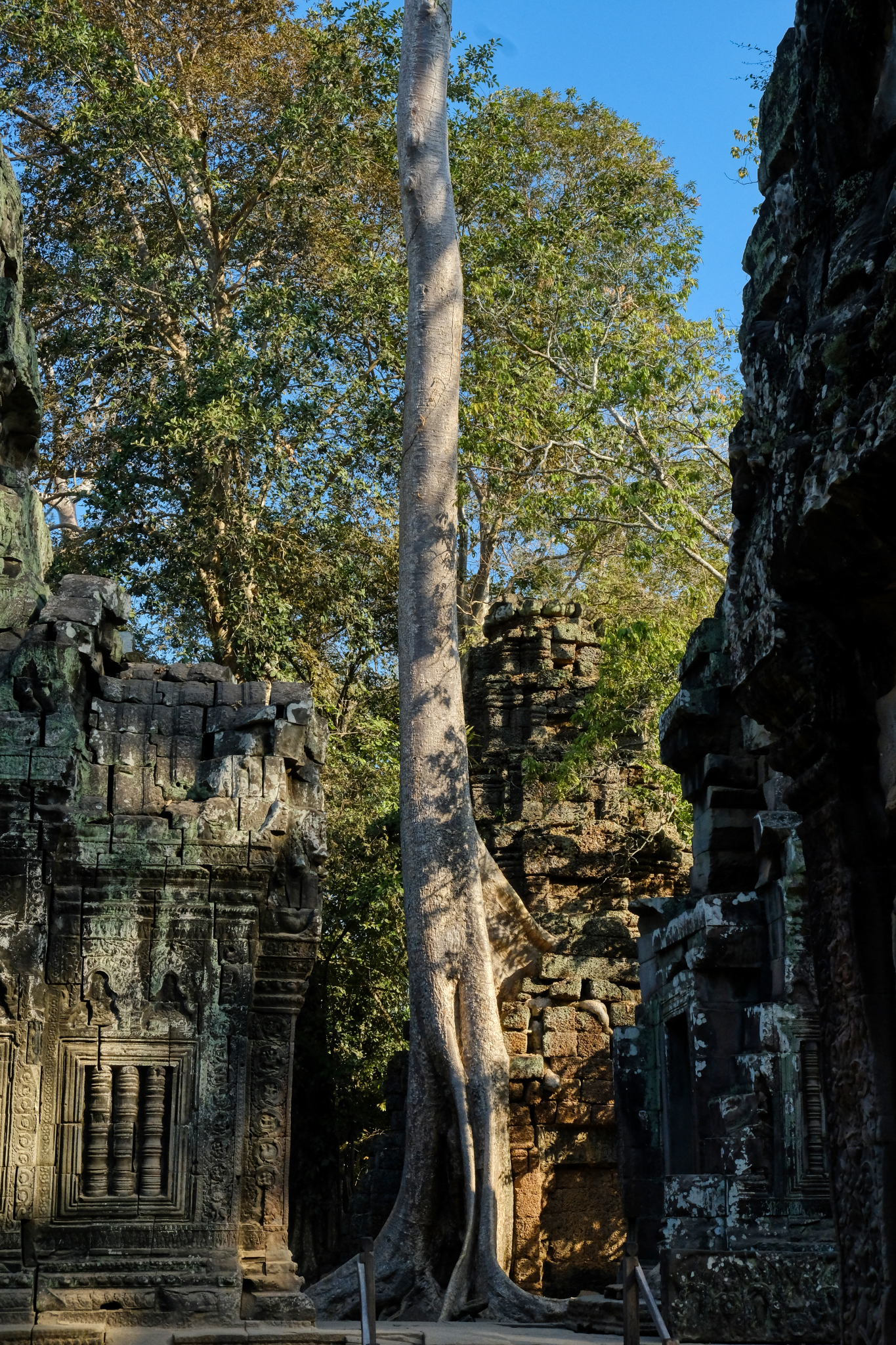 A mutual embrace . . . this tower looks as if it would fall without the support of the tree.
A mutual embrace . . . this tower looks as if it would fall without the support of the tree.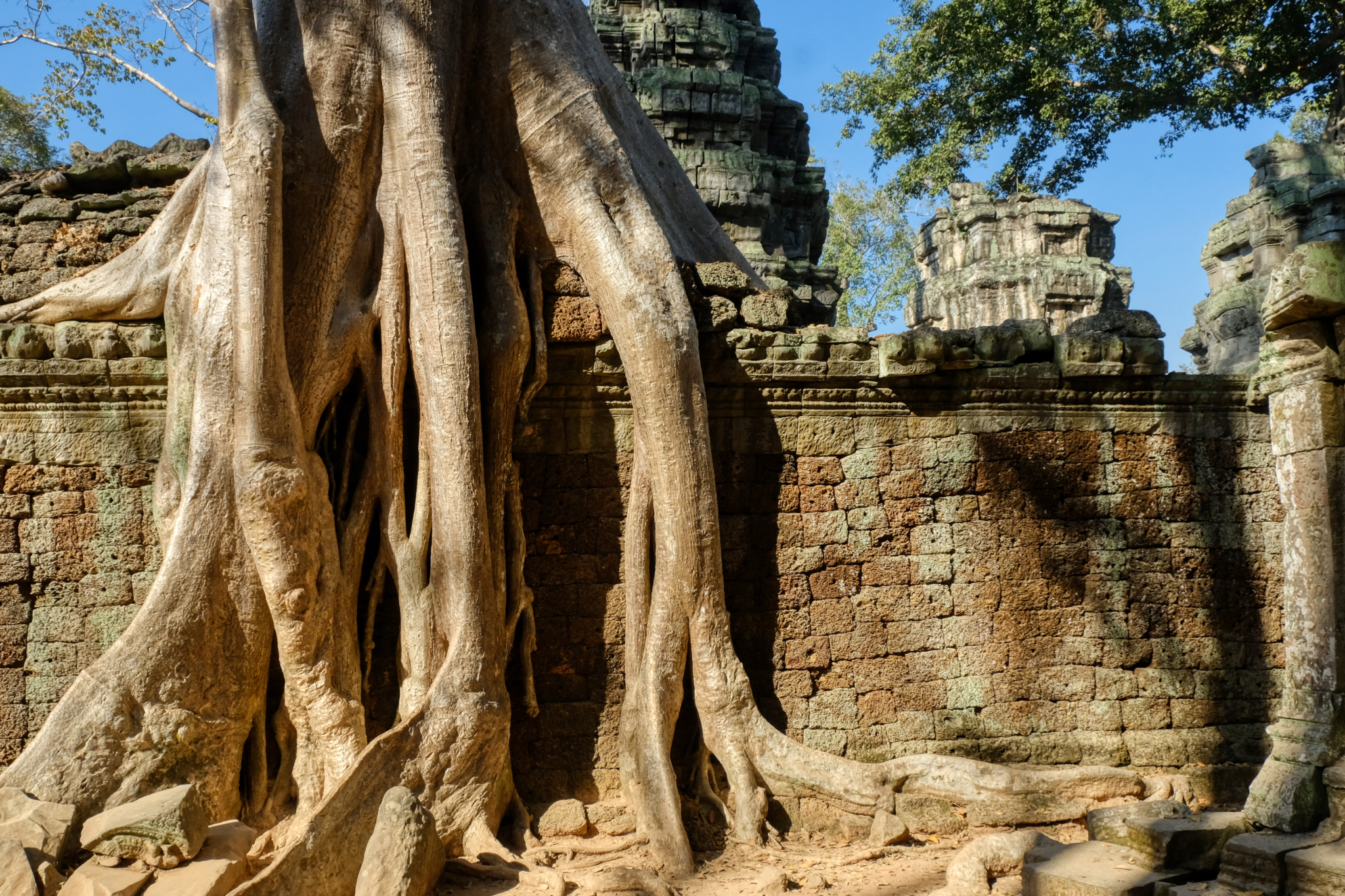 A wall with cascading roots. Truly awesome.
A wall with cascading roots. Truly awesome.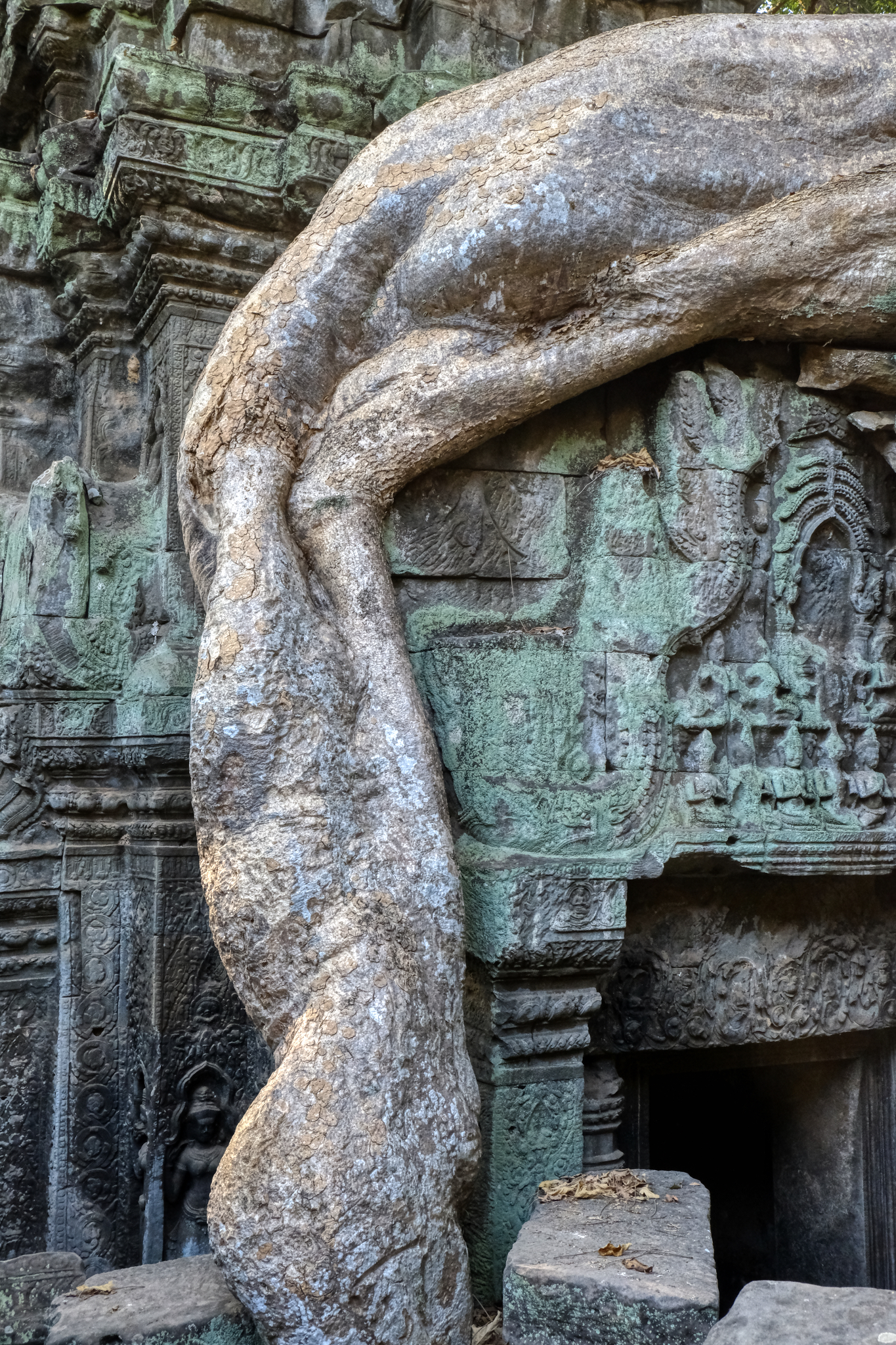 Like a limb from a giant alien animal . . . these roots are massive!
Like a limb from a giant alien animal . . . these roots are massive!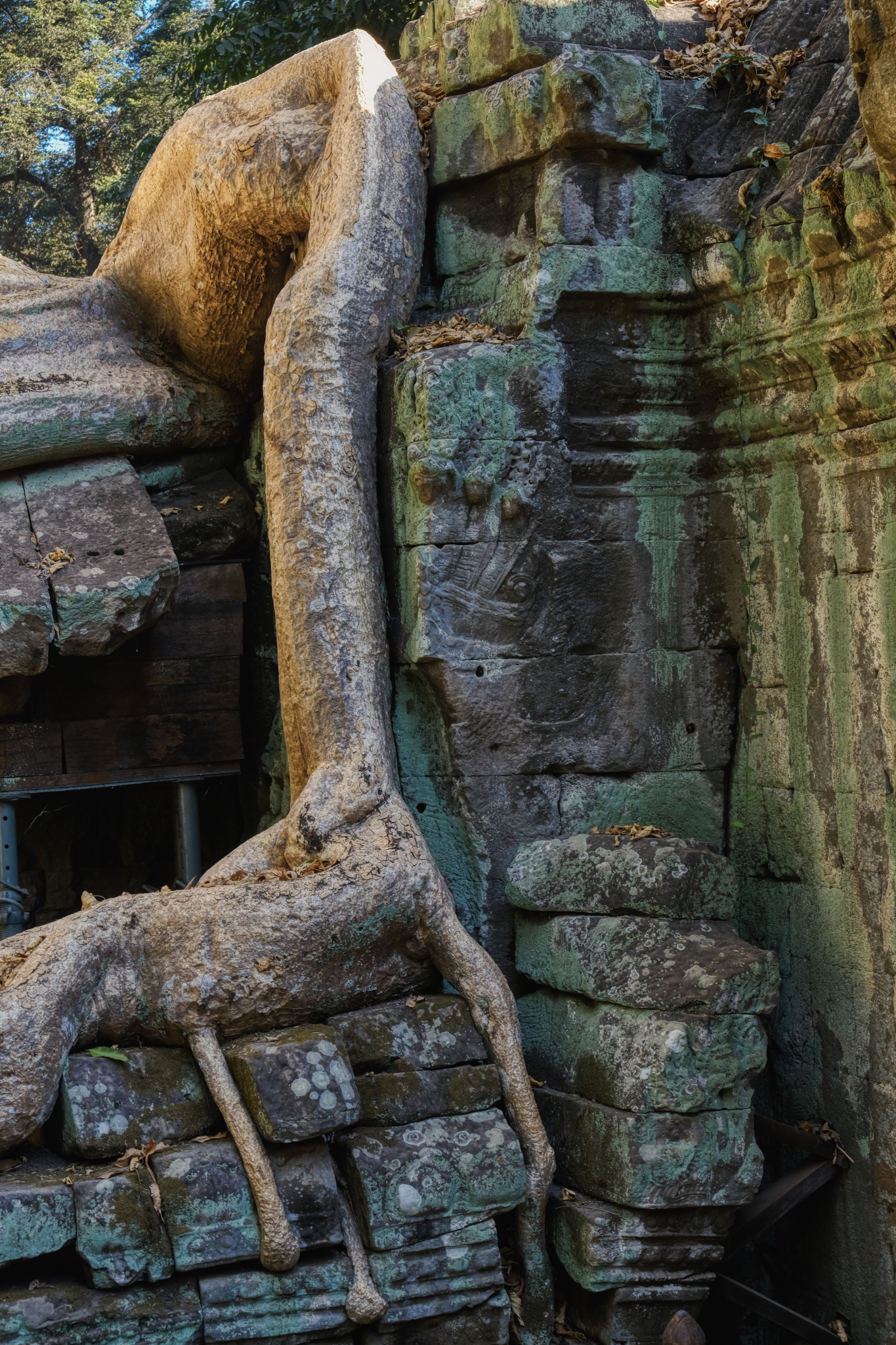 The temple in the grip of its alien overlord!
The temple in the grip of its alien overlord!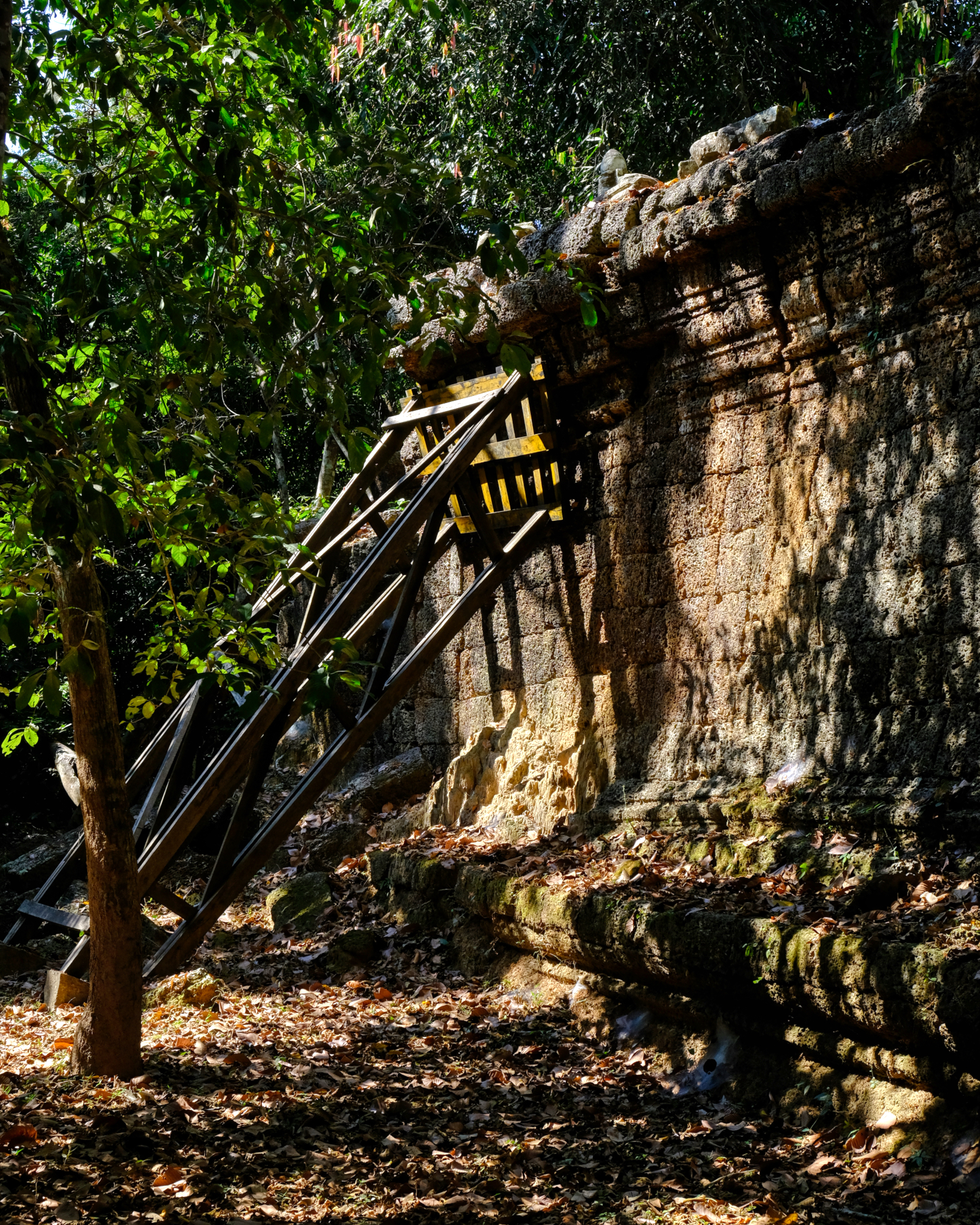 The aging walls supported. Most of the restoration work on Angkor Wat has been carries out by French and Cambodian archaeologists.
The aging walls supported. Most of the restoration work on Angkor Wat has been carries out by French and Cambodian archaeologists.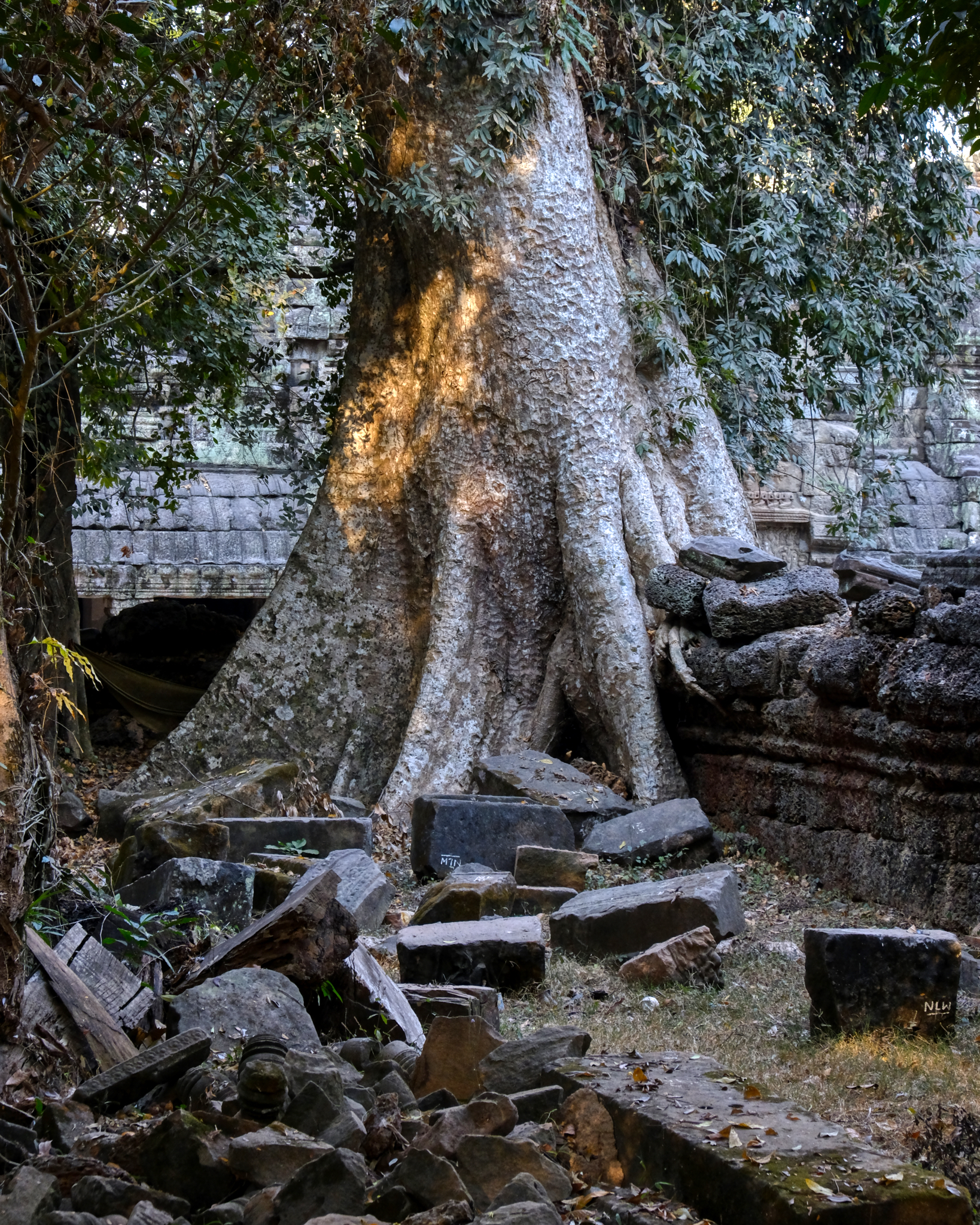 Much of the various sites remain unreconstructed.
Much of the various sites remain unreconstructed.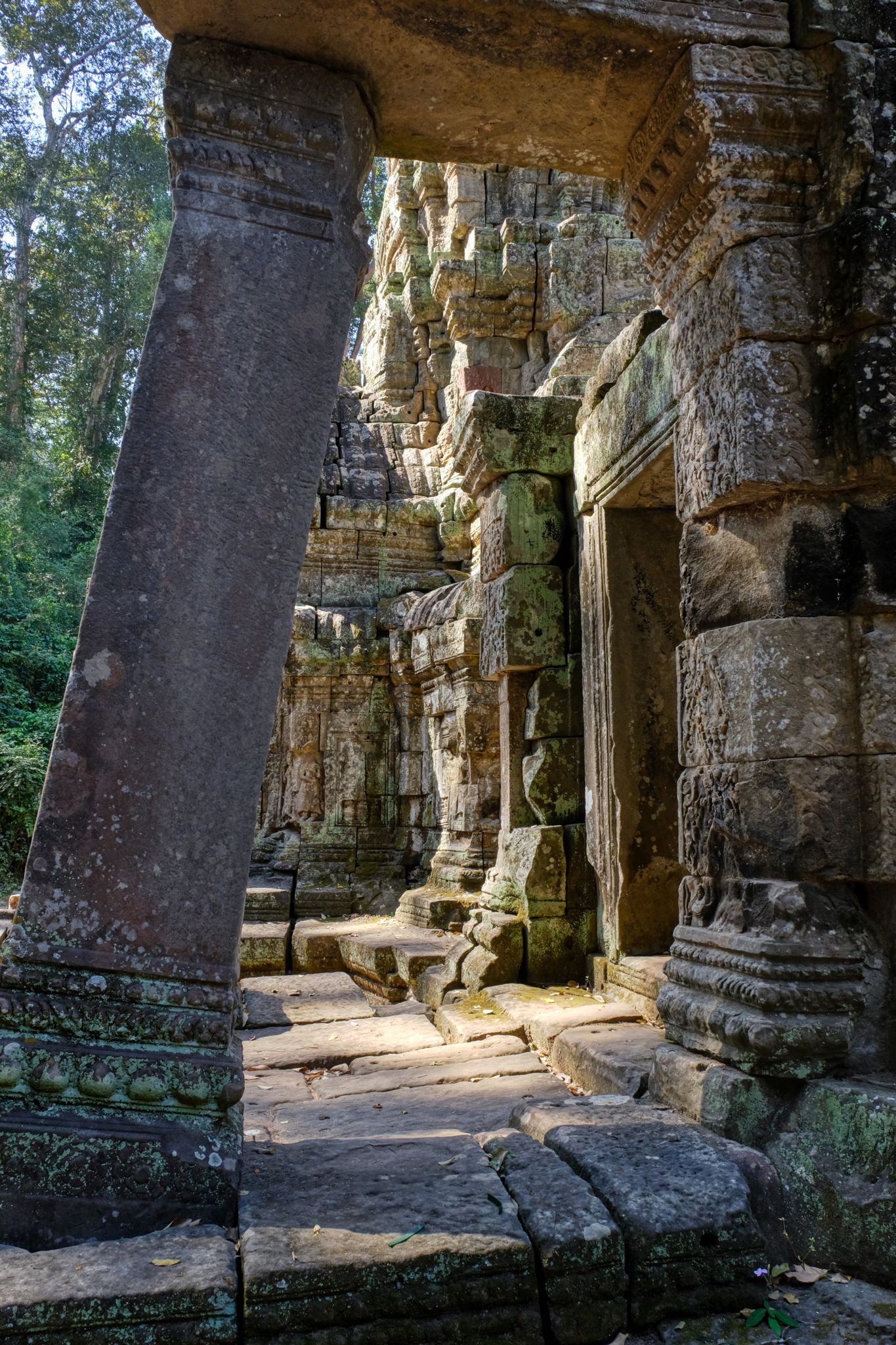 The state of deterioration is surprisingly less than one would have thought after 1000 years . . . but they build out of stone!
The state of deterioration is surprisingly less than one would have thought after 1000 years . . . but they build out of stone!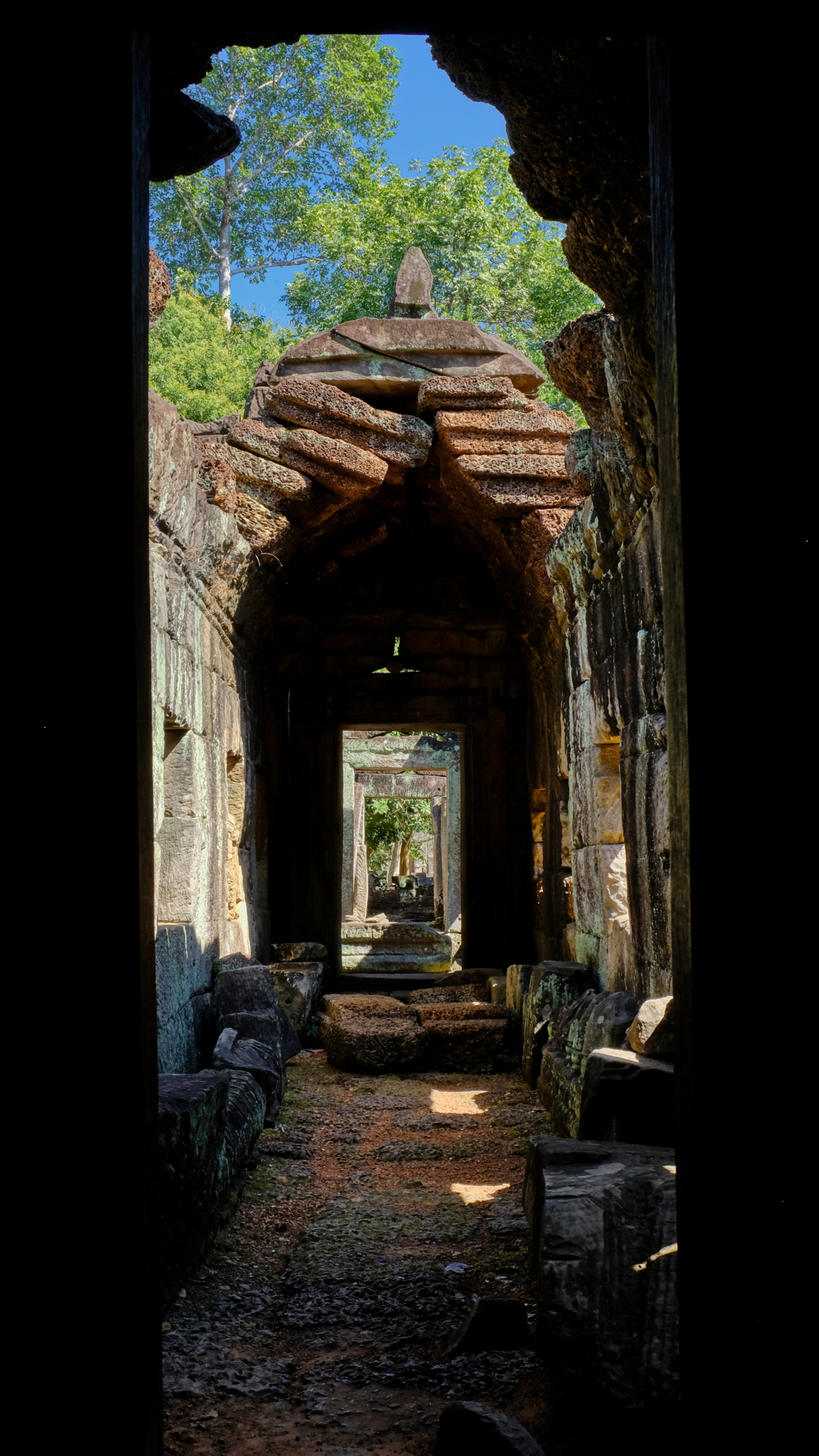 My friend and I wandered for many hours through these narrow mysterious passages, always surprised with some amazing scene around every corner . . .
My friend and I wandered for many hours through these narrow mysterious passages, always surprised with some amazing scene around every corner . . .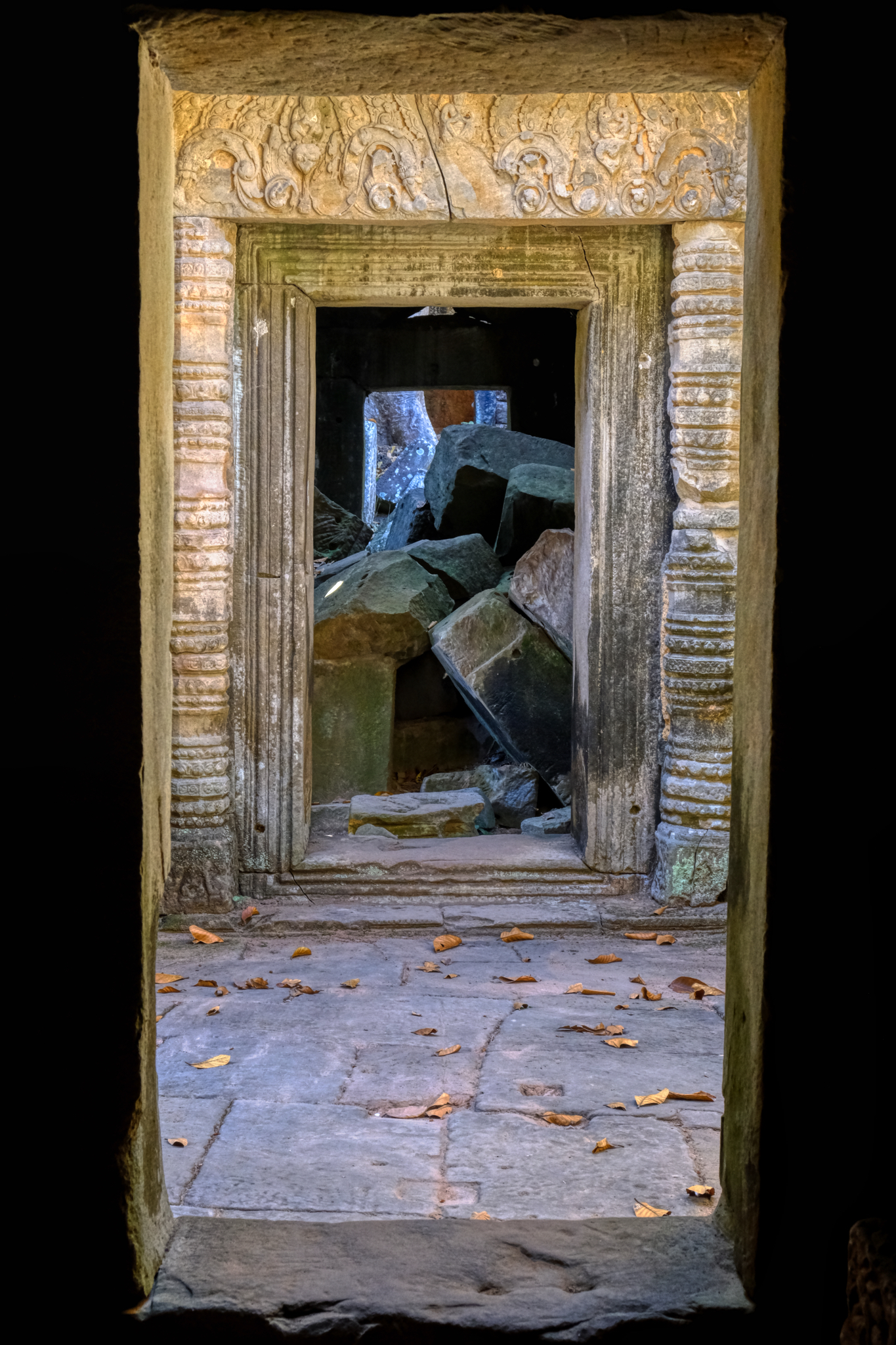 . . . always another scene of doors and passages . . . gorgeous . . .
. . . always another scene of doors and passages . . . gorgeous . . .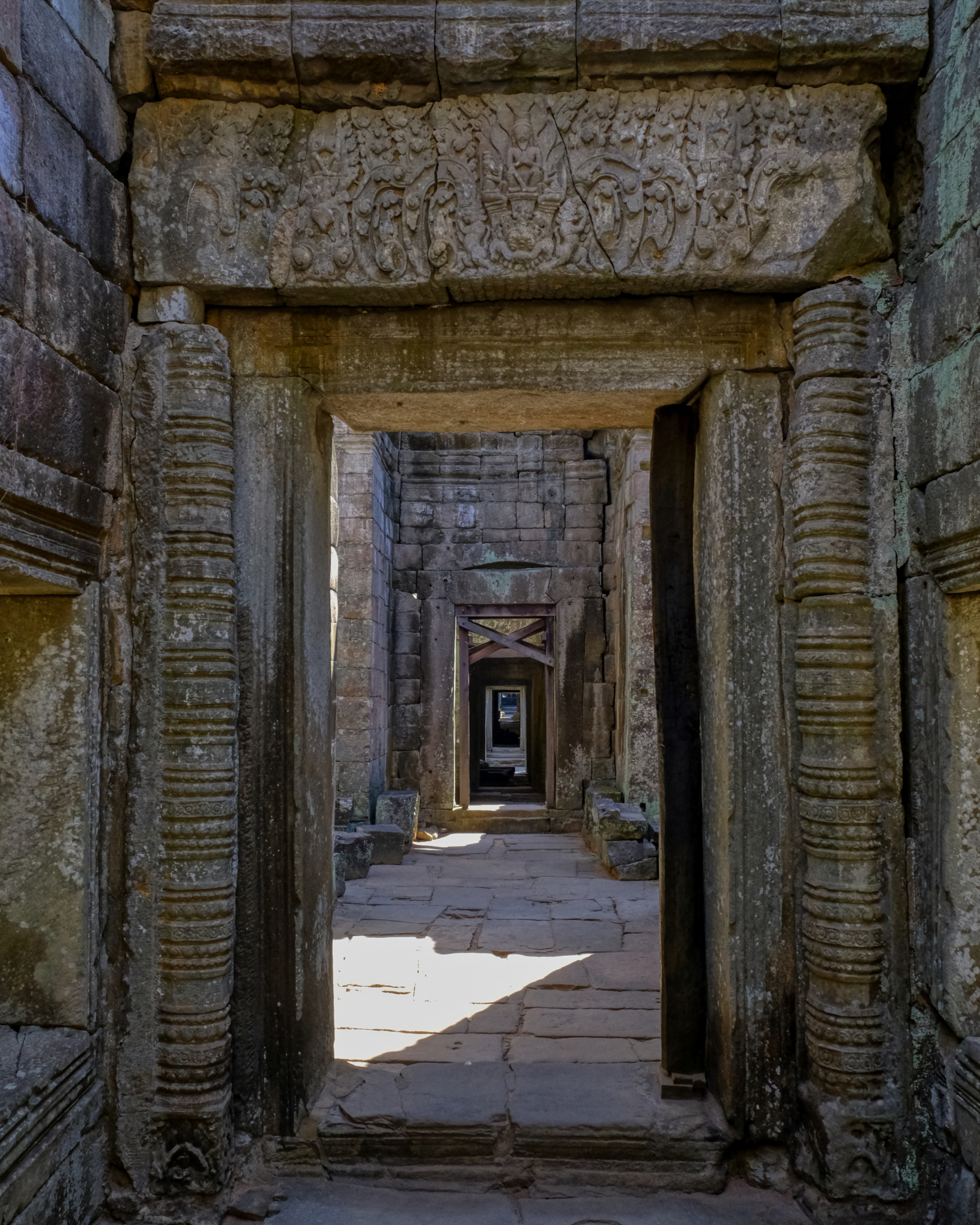 . . . on and on we walked, our mouths open in amazement all the while!
. . . on and on we walked, our mouths open in amazement all the while!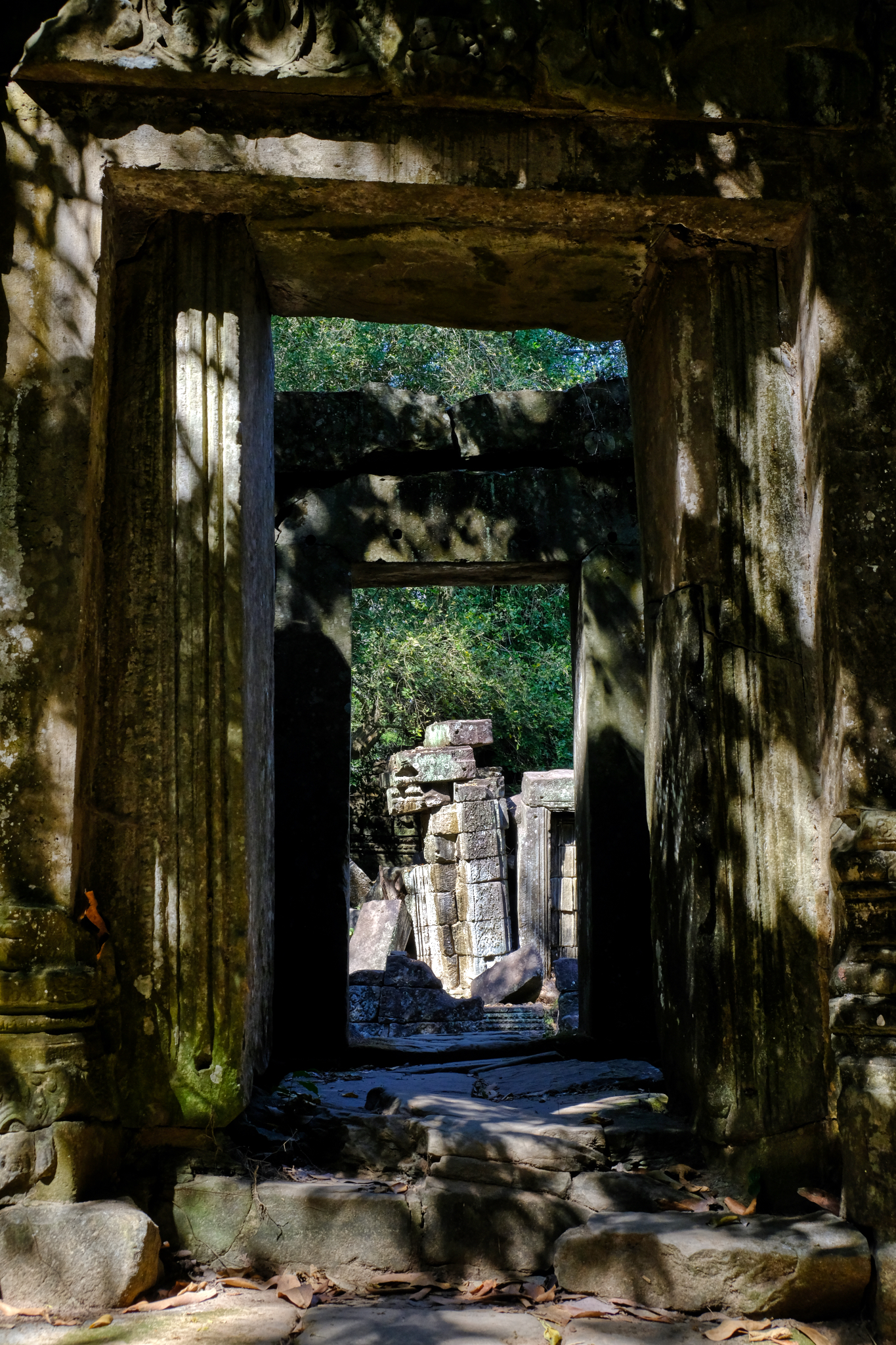 Our long walks through the interior passages would occasionally lead us back outdoors.
Our long walks through the interior passages would occasionally lead us back outdoors.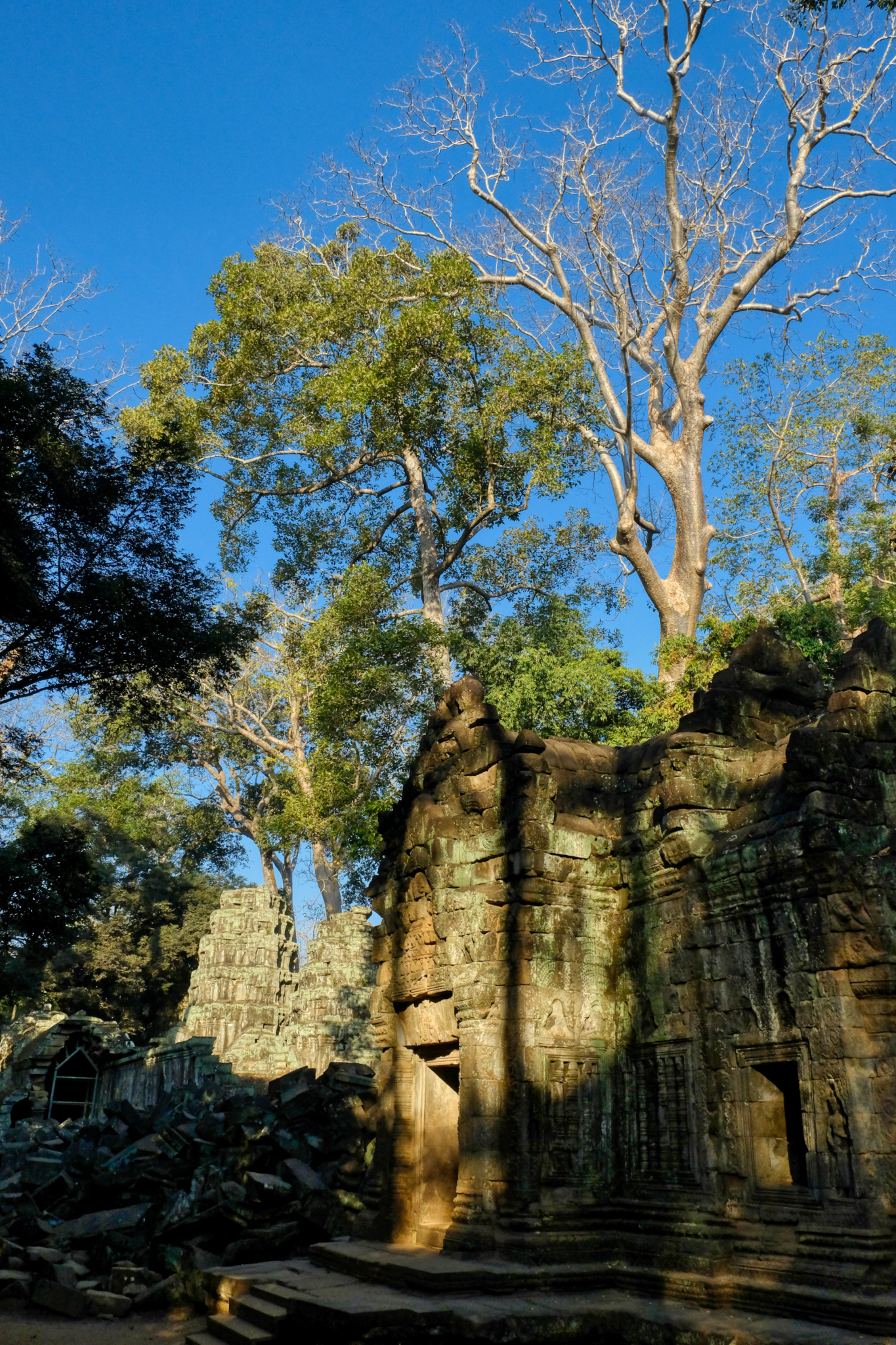 And back outside we were greeted with more amazing ancient monumental temple structures.
And back outside we were greeted with more amazing ancient monumental temple structures.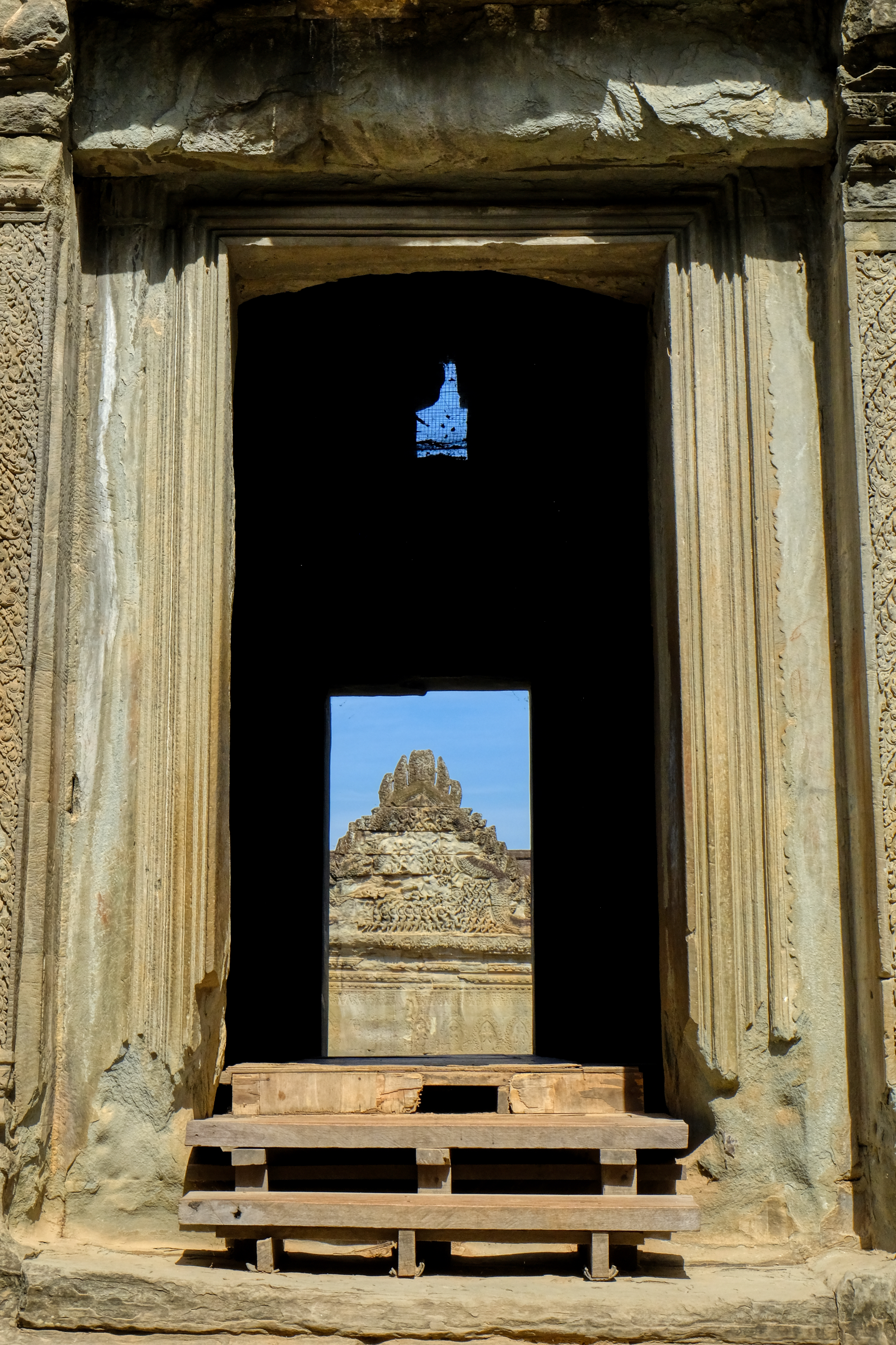 Always tempted to explore in another courtyard . . . endless curiosity.
Always tempted to explore in another courtyard . . . endless curiosity.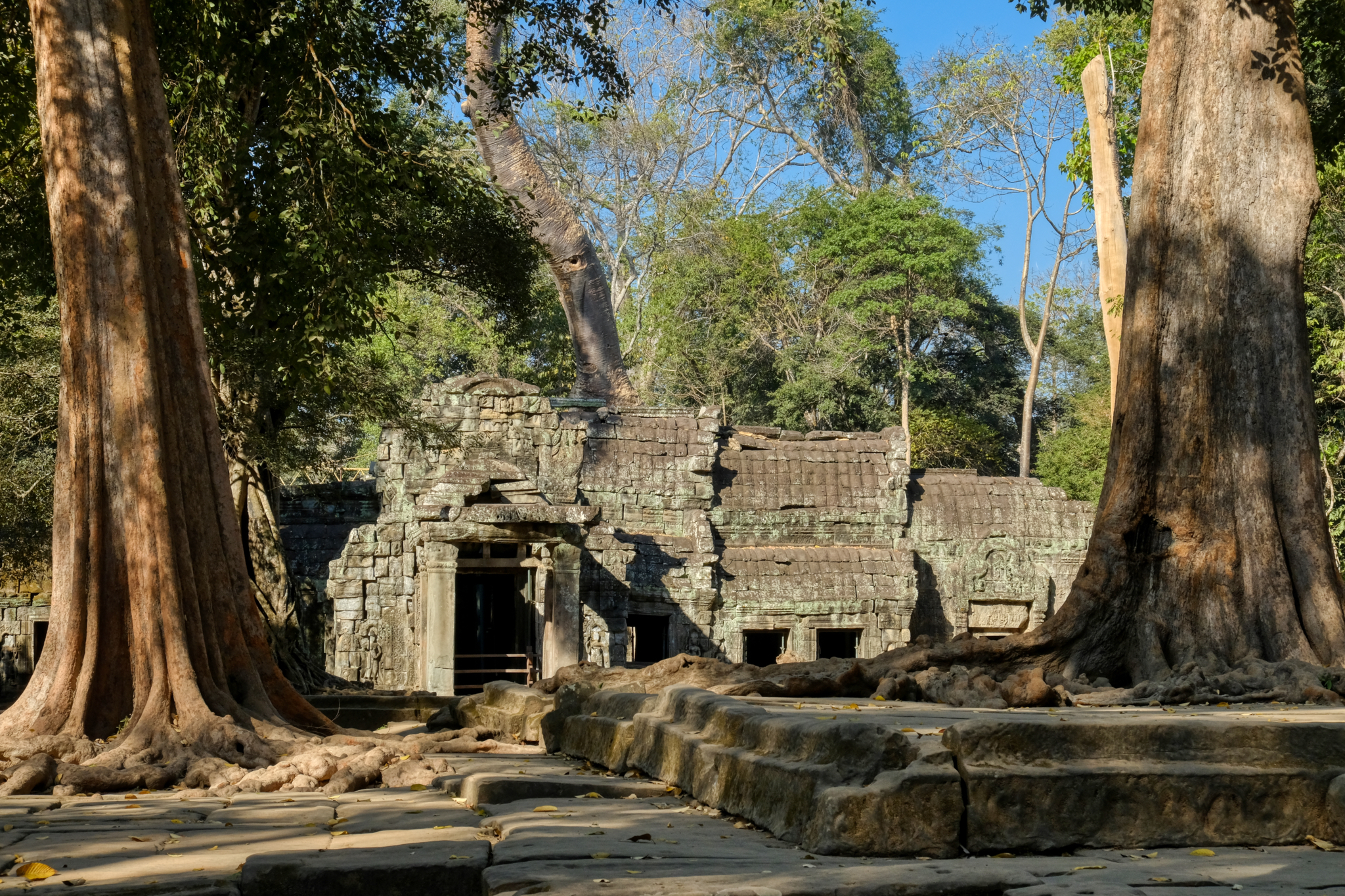 We had a car and driver each day who knew all the temples and would drive us between them. A new temple.
We had a car and driver each day who knew all the temples and would drive us between them. A new temple.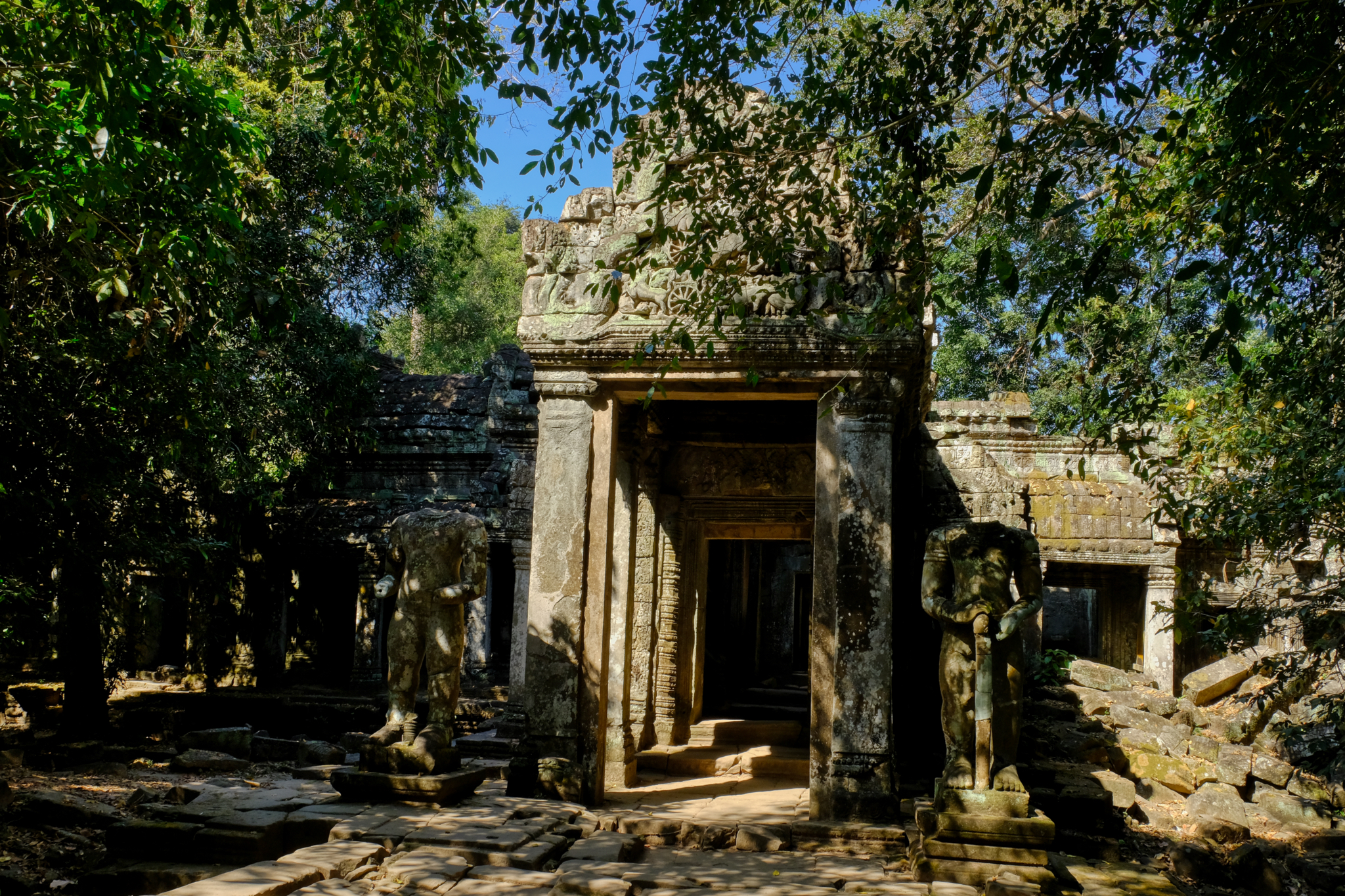 There were signs of vandalism and pilfering of stone figure heads.
There were signs of vandalism and pilfering of stone figure heads.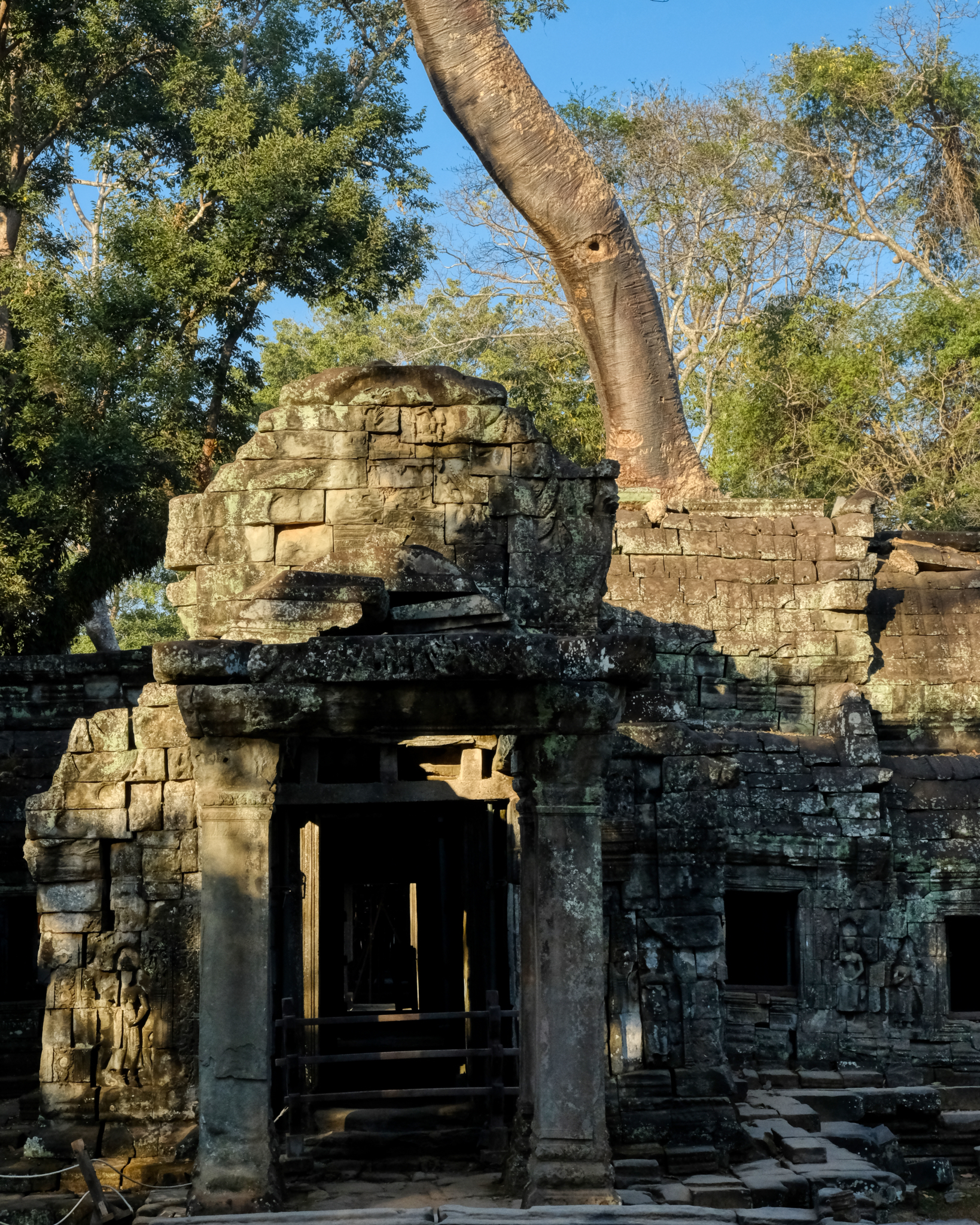 A sweet temple sala.
A sweet temple sala.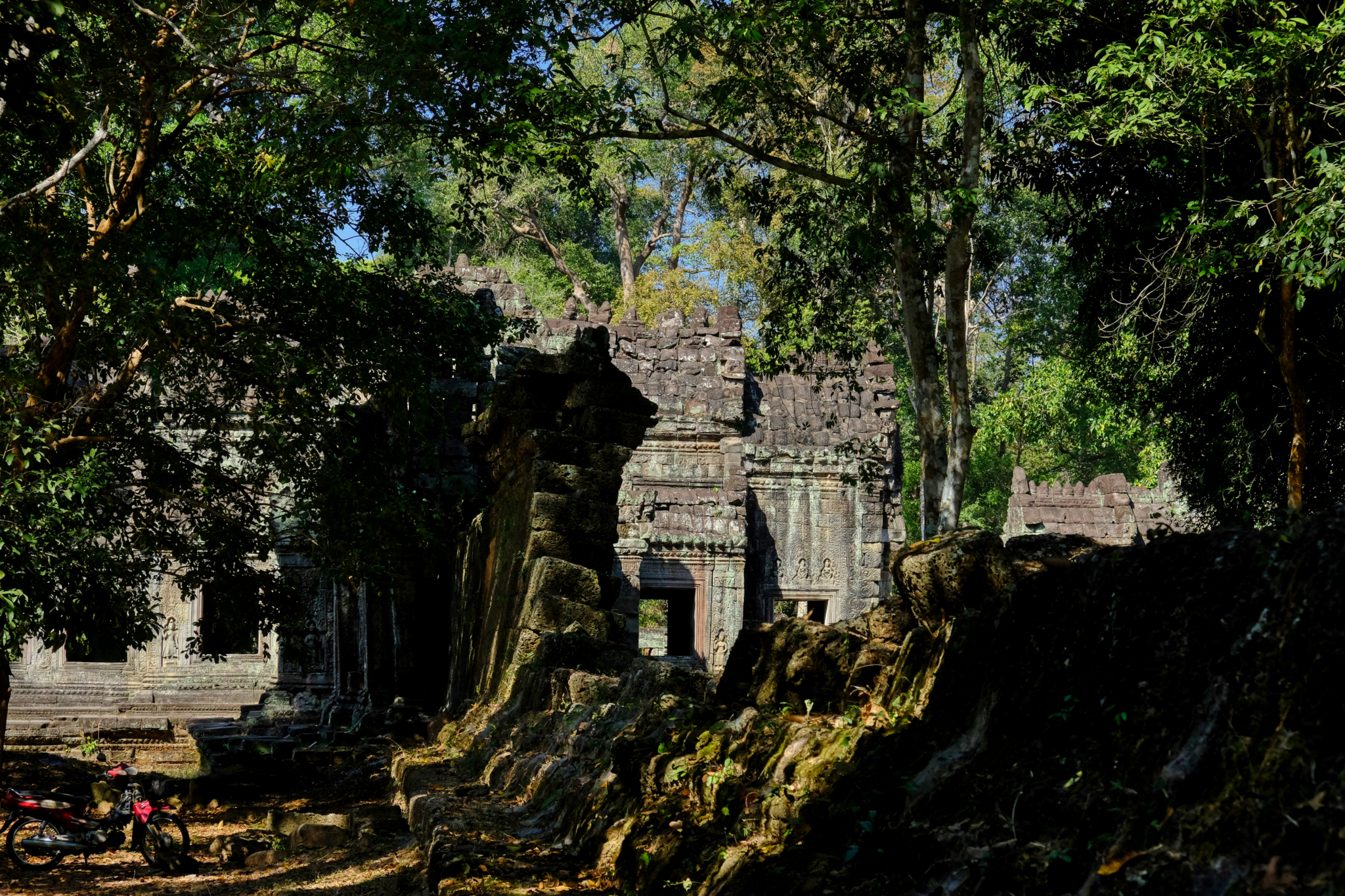 In deep shade or in bright sun, the temples are a marvel of detail . . .
In deep shade or in bright sun, the temples are a marvel of detail . . . 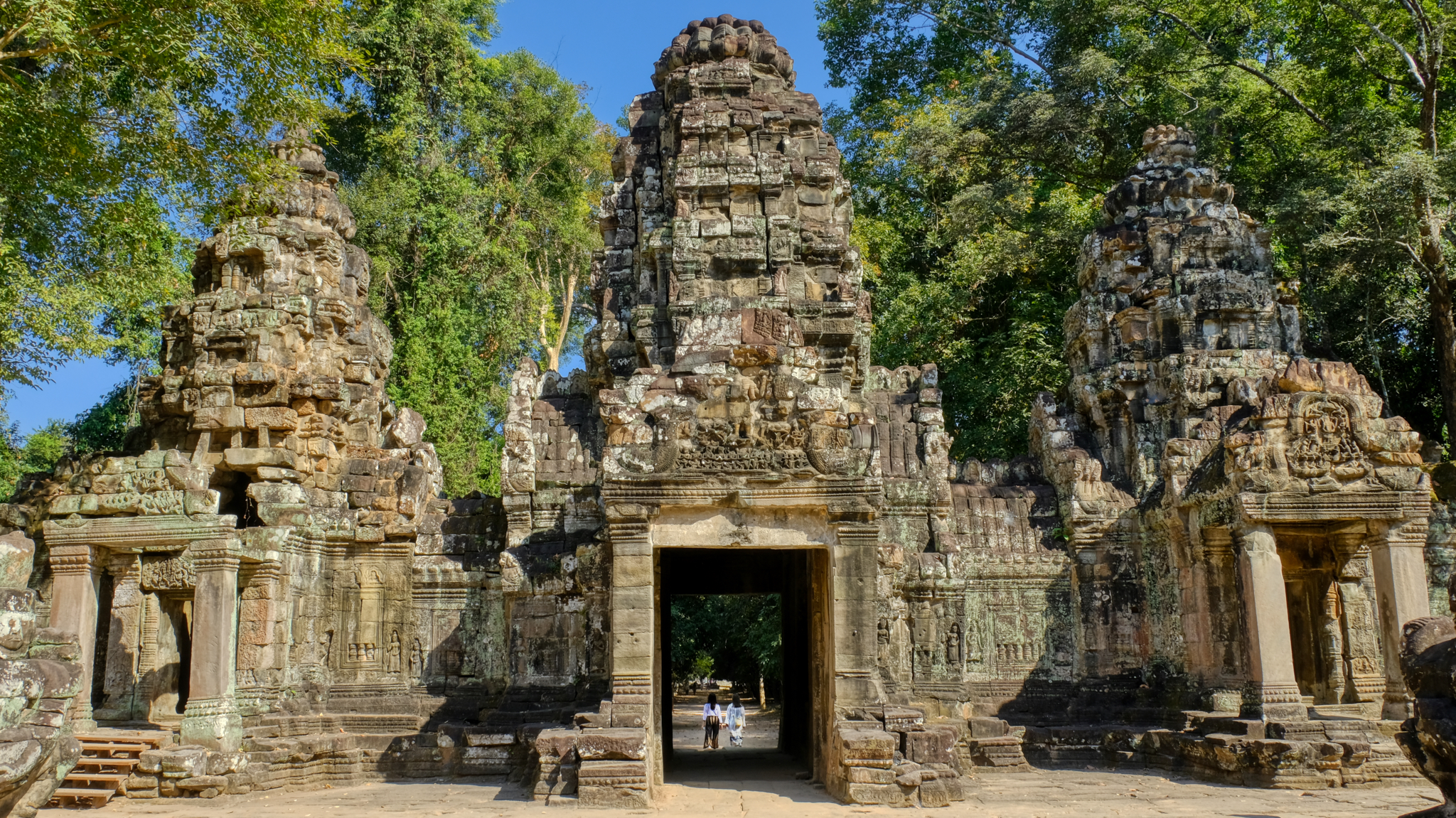 One of the many extraordinary gates.
One of the many extraordinary gates.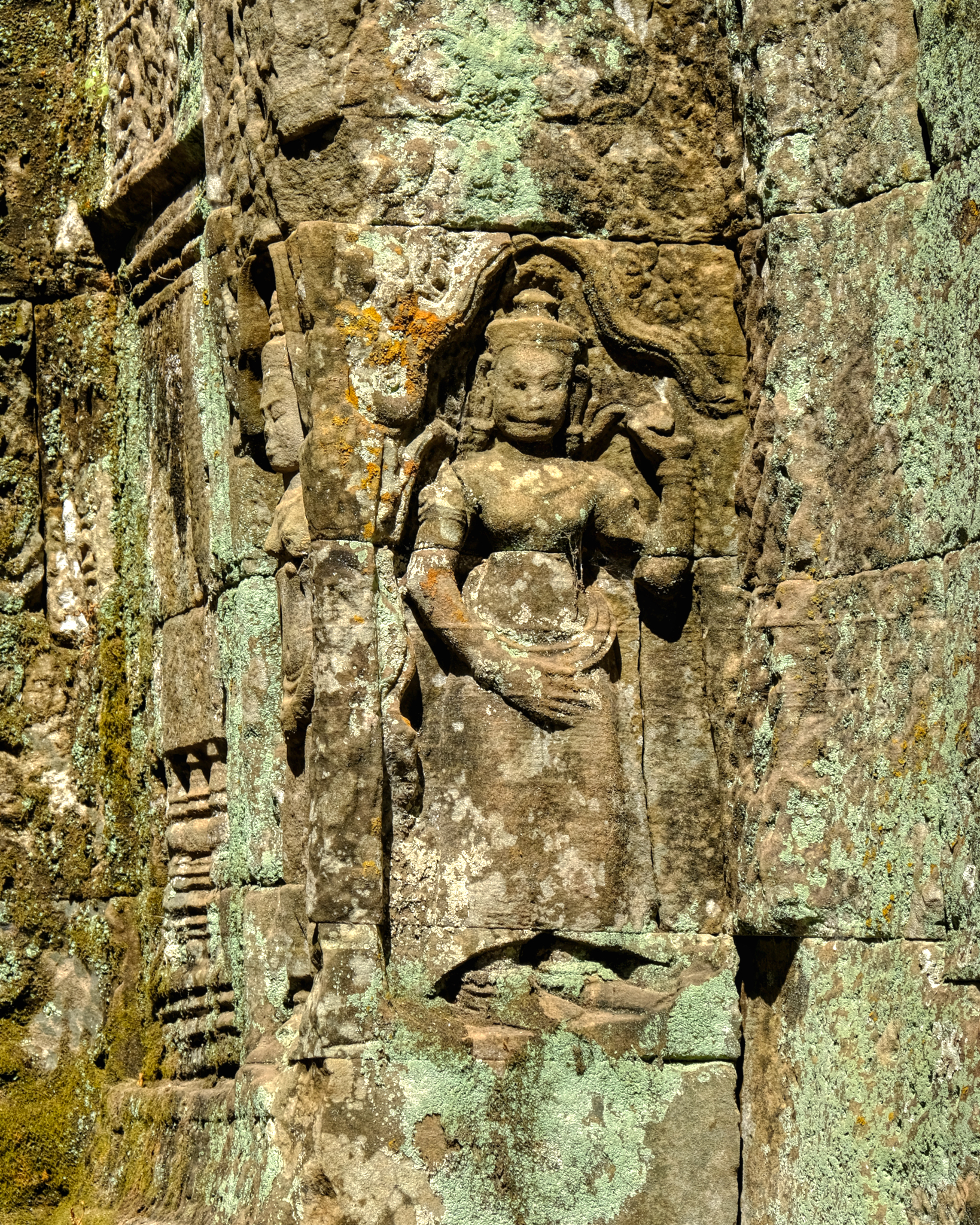 These gates were carved in exquisite detail. Cambodia is a tropical country with a considerable wet season each year, as evidenced by the moss and mold that often covered the monuments.
These gates were carved in exquisite detail. Cambodia is a tropical country with a considerable wet season each year, as evidenced by the moss and mold that often covered the monuments.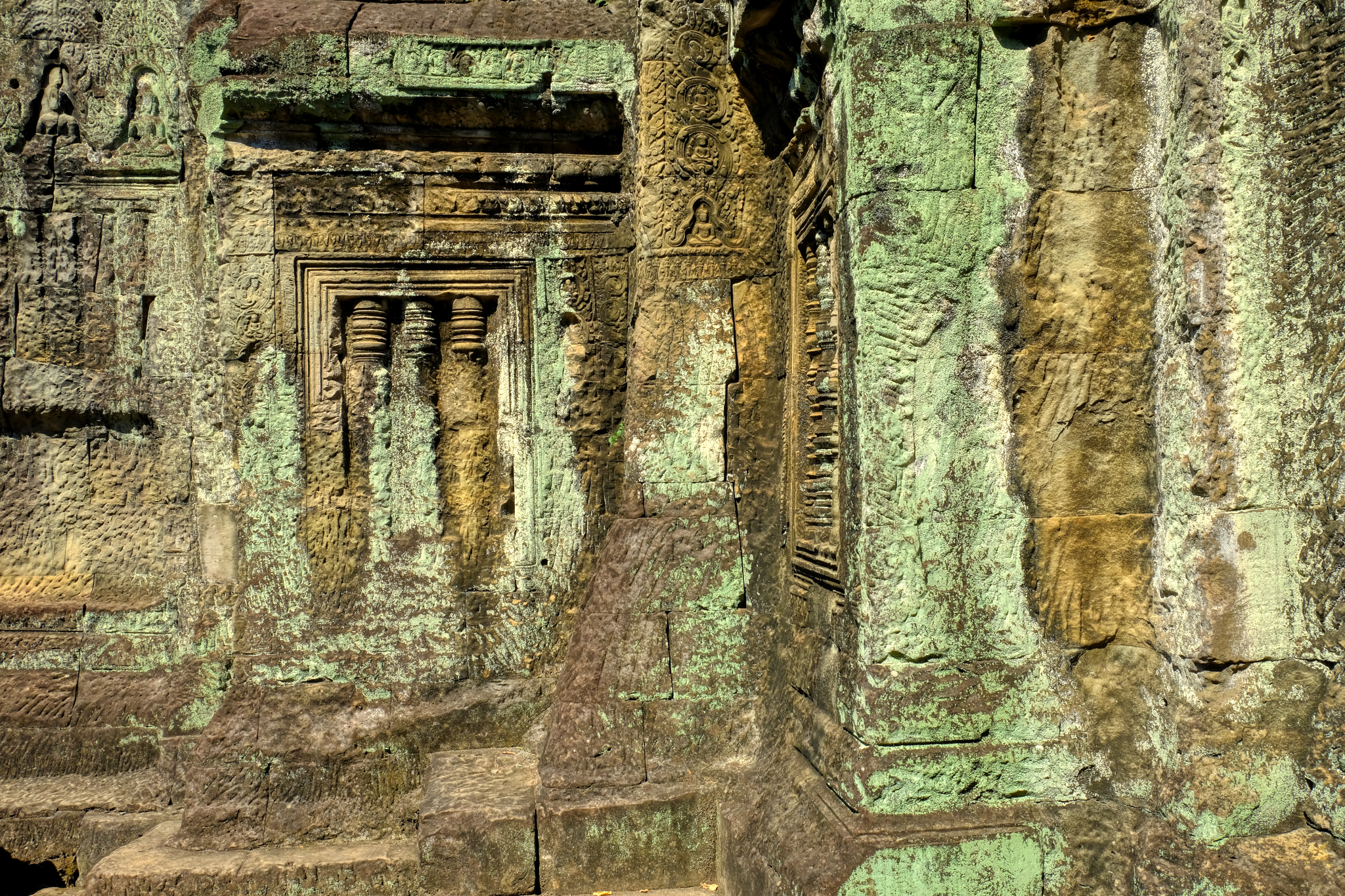 The harsh, almost clinical, light actually helps in these photos of the tropical encrusting of the ruins.
The harsh, almost clinical, light actually helps in these photos of the tropical encrusting of the ruins.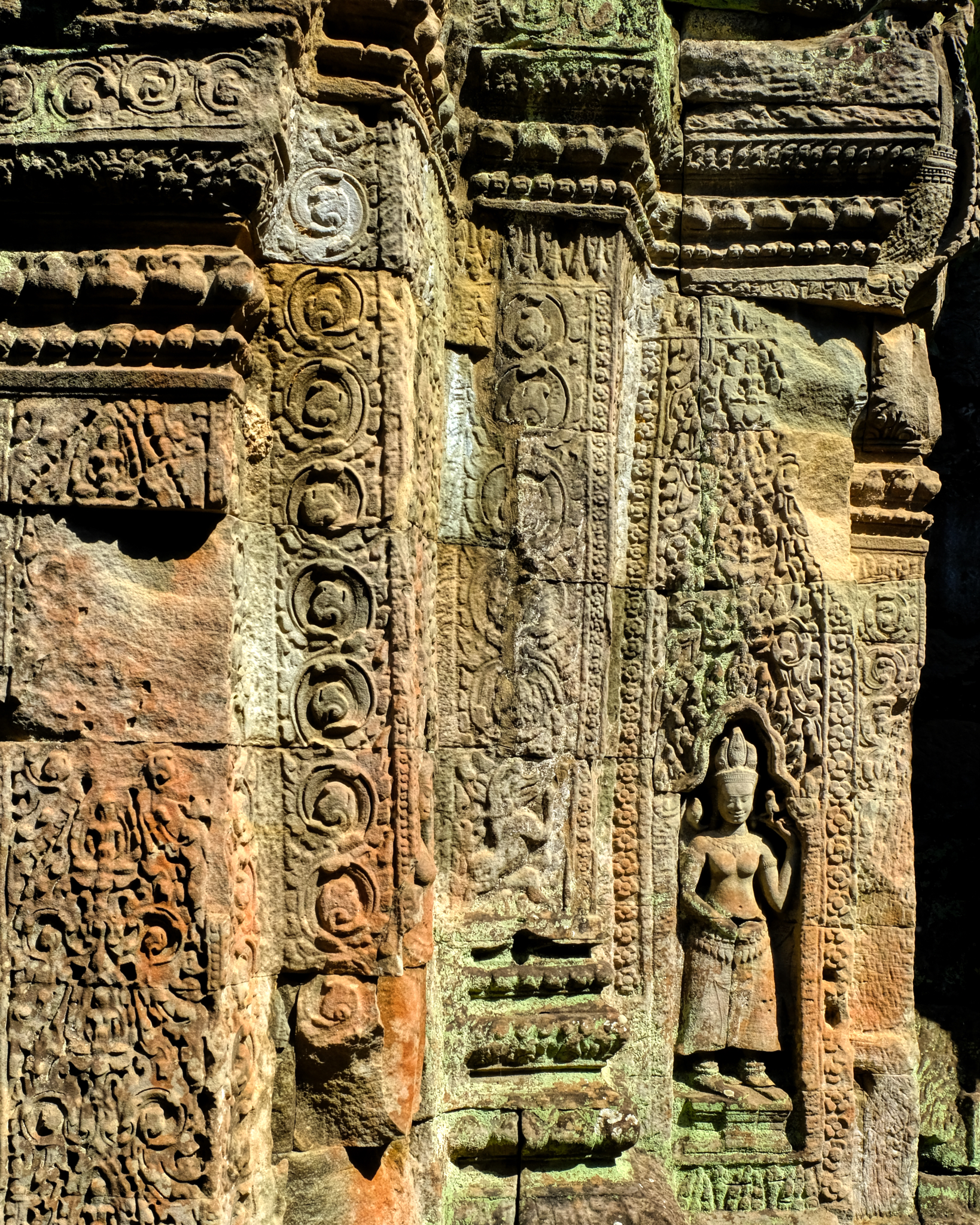 Such beautifully carved figures and patterns everywhere.
Such beautifully carved figures and patterns everywhere.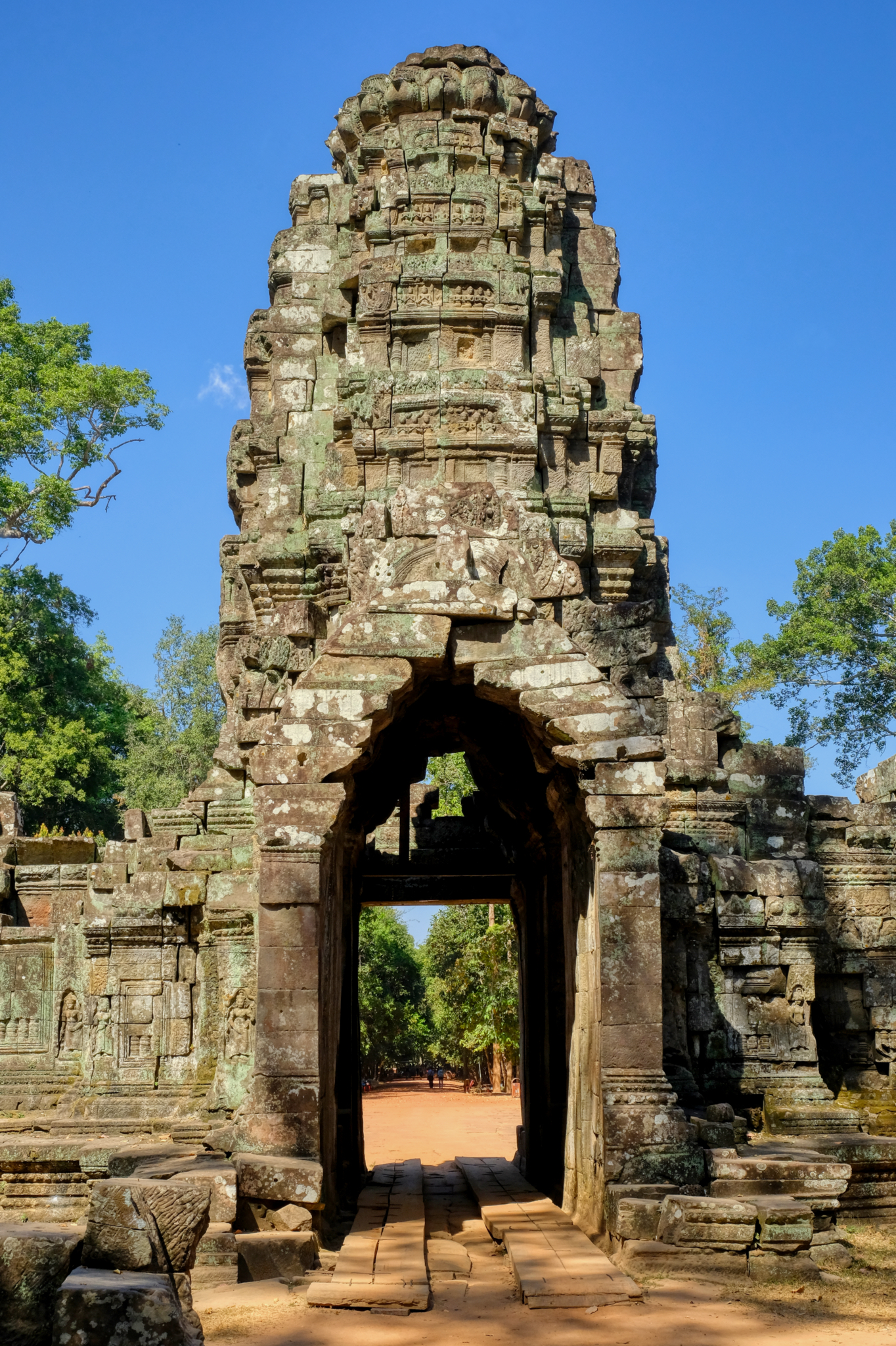 I loved these gates . . .
I loved these gates . . . 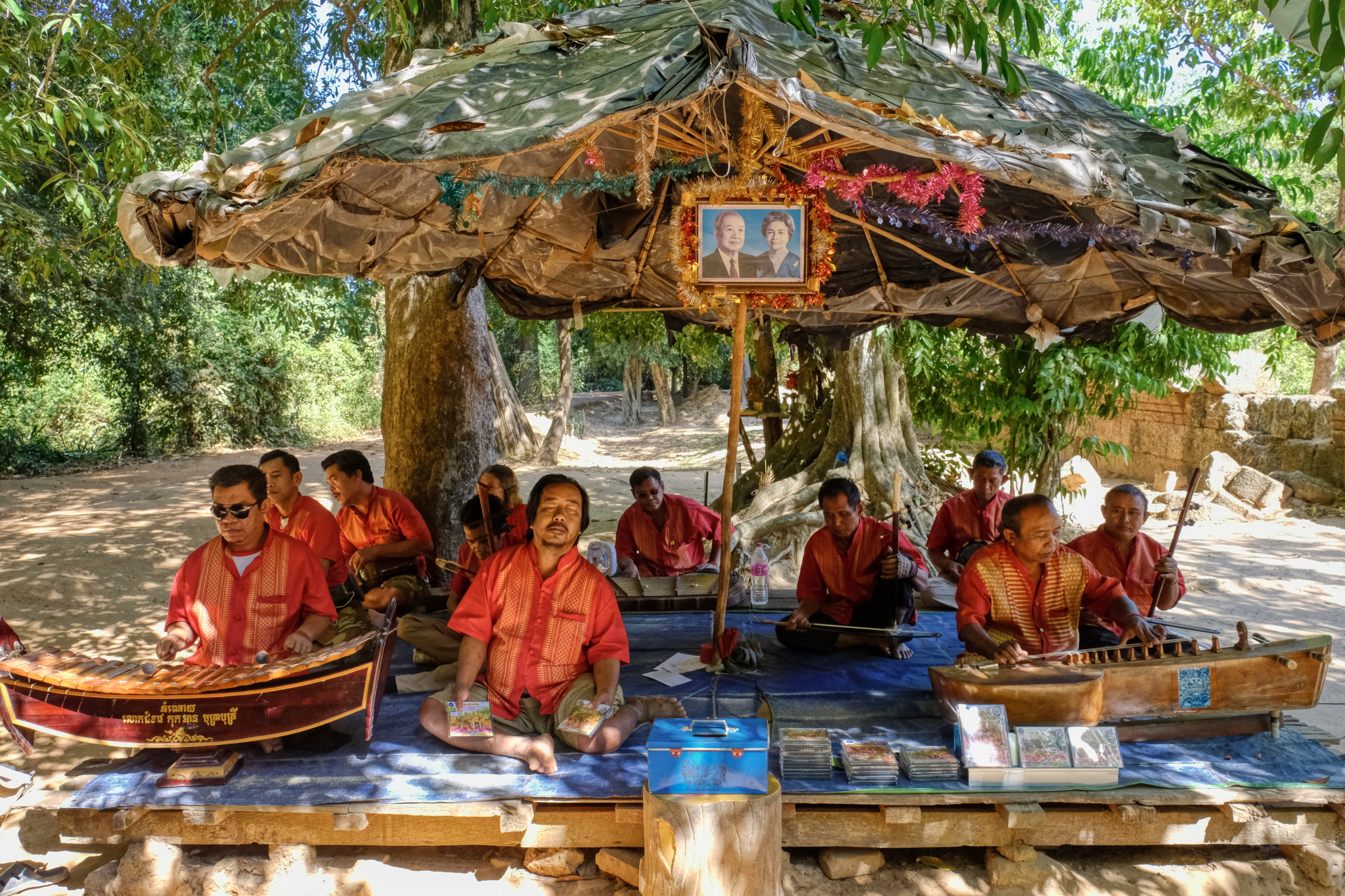 After walking through the gates, it was sometimes a kilometer or more until you arrived at the temple complex. Sometimes there would be traditional Khmer musicians along the walk.
After walking through the gates, it was sometimes a kilometer or more until you arrived at the temple complex. Sometimes there would be traditional Khmer musicians along the walk.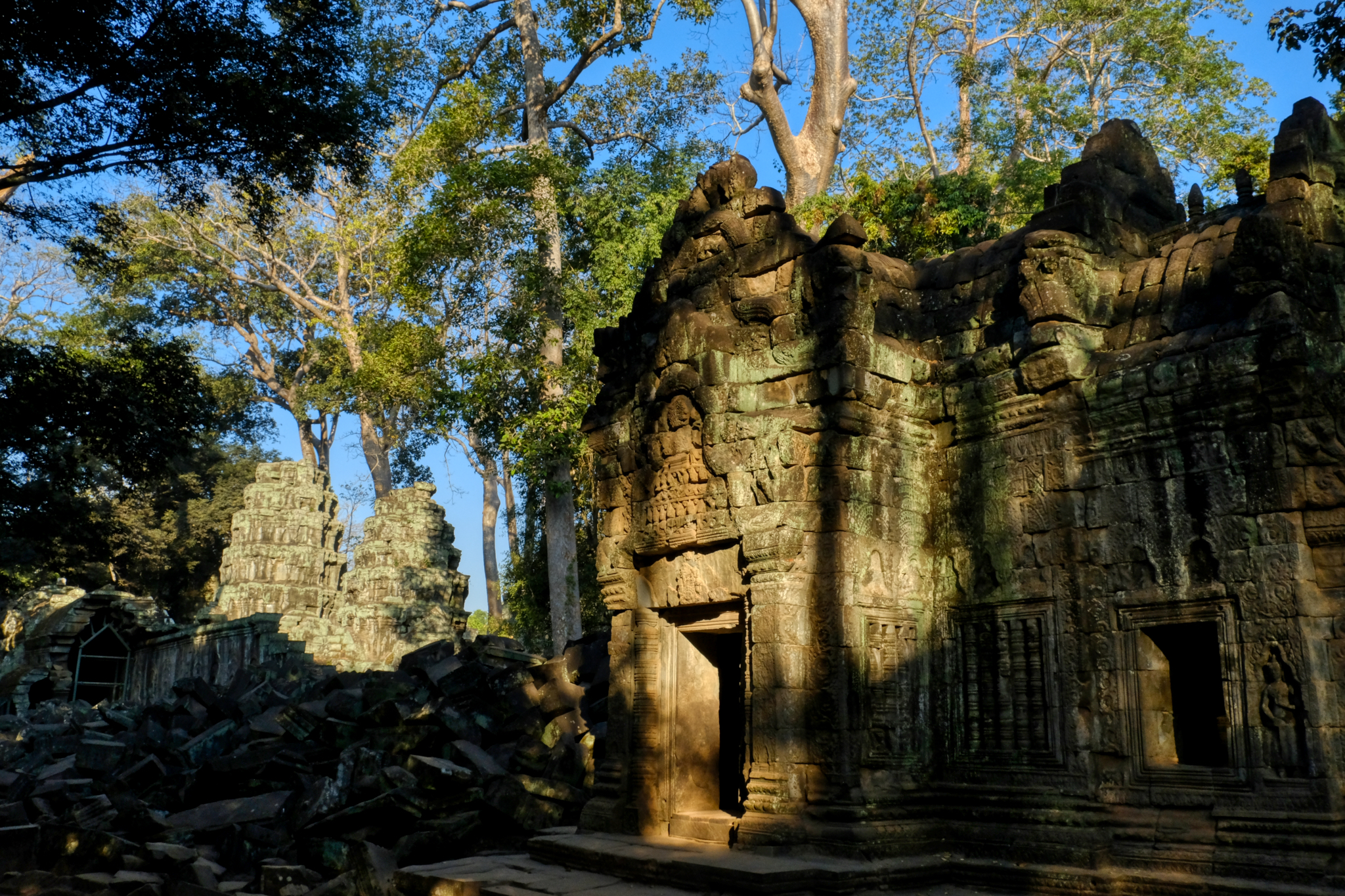 We spent two full days, starting before sunrise and ending after sunset, among the Angkor ruin.
We spent two full days, starting before sunrise and ending after sunset, among the Angkor ruin.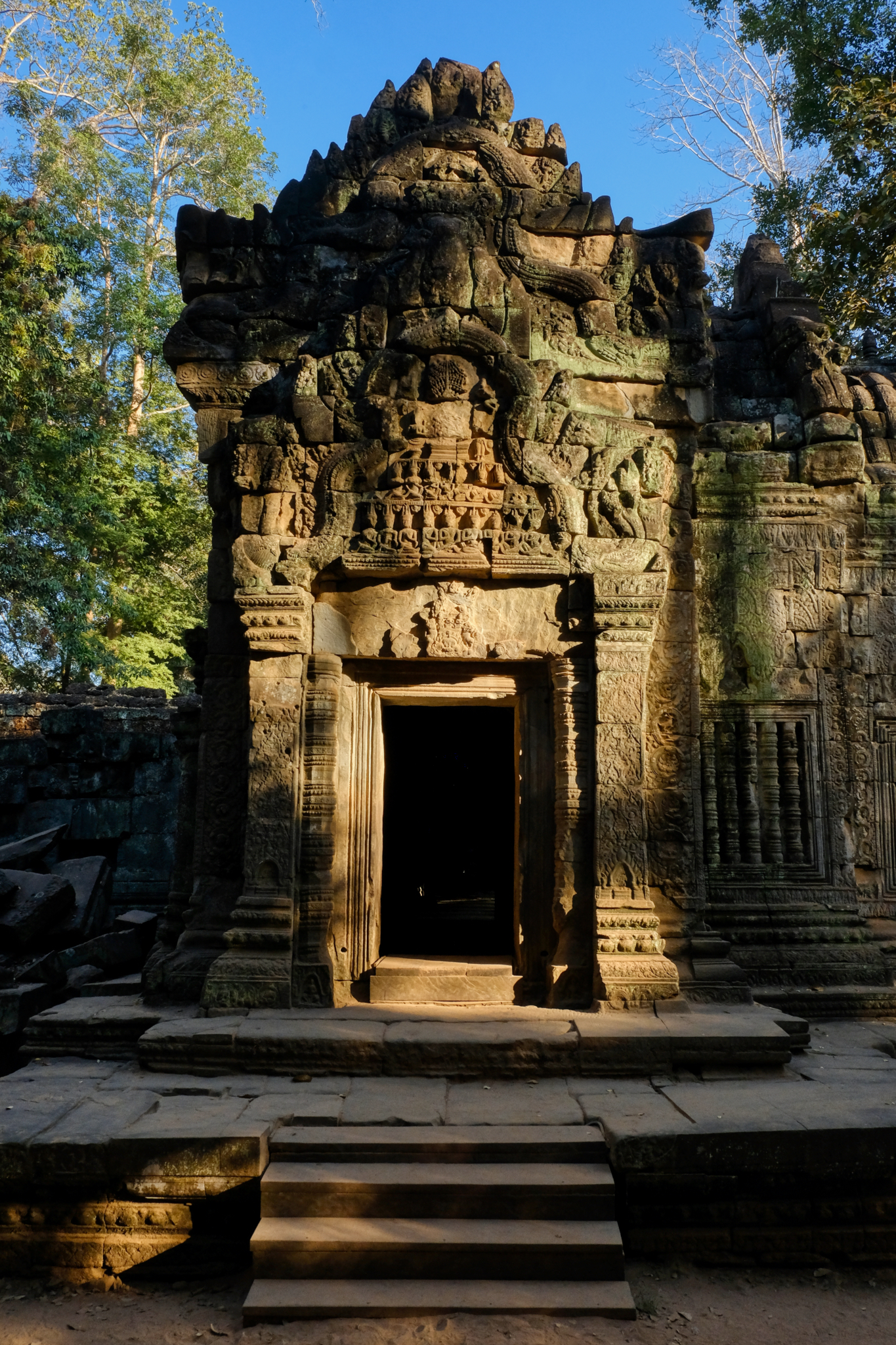 The late, angled light made for some fantastic conditions for photography.
The late, angled light made for some fantastic conditions for photography.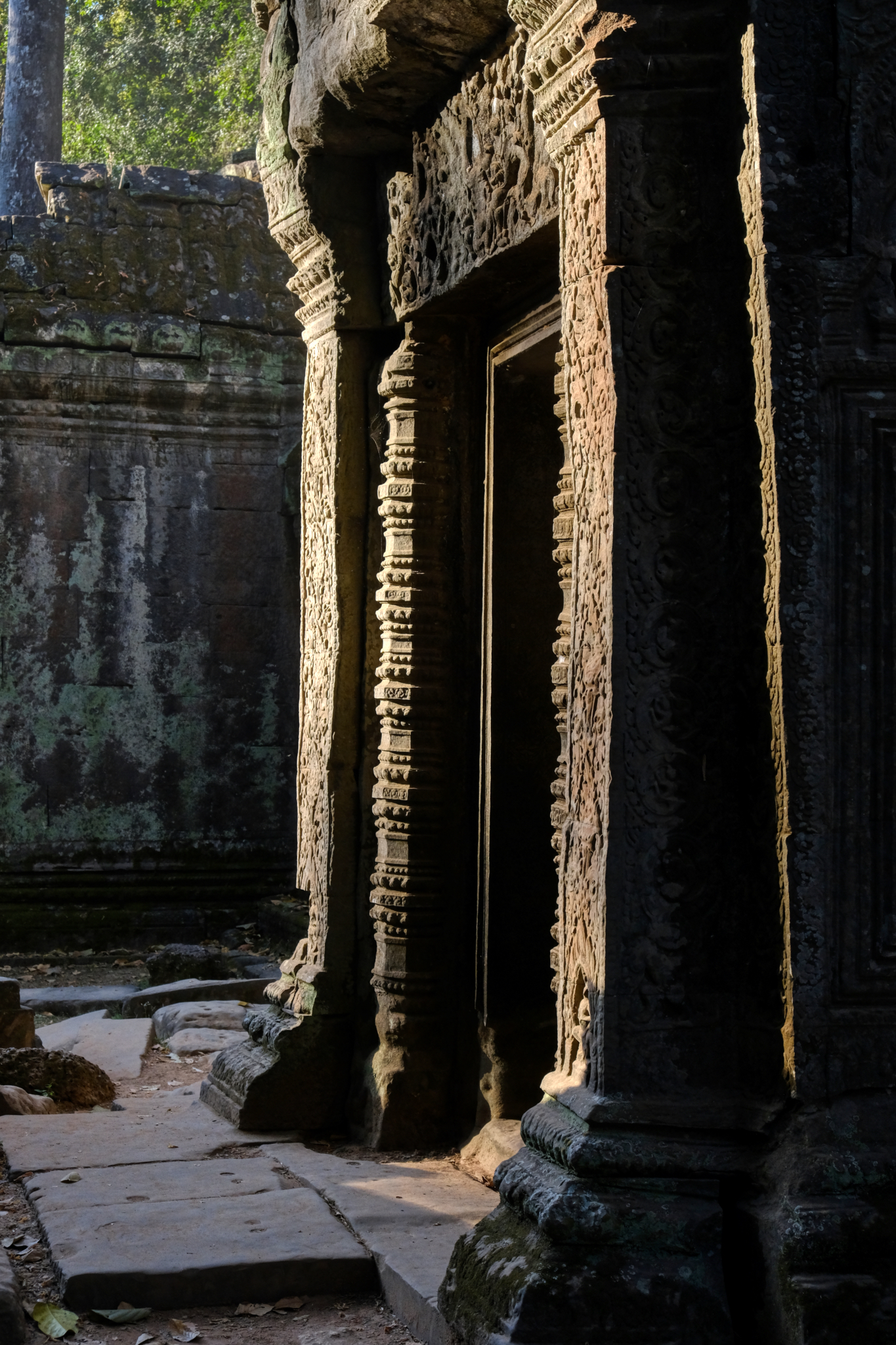 Late light and shadow on the Angkor Wat ruins.
Late light and shadow on the Angkor Wat ruins.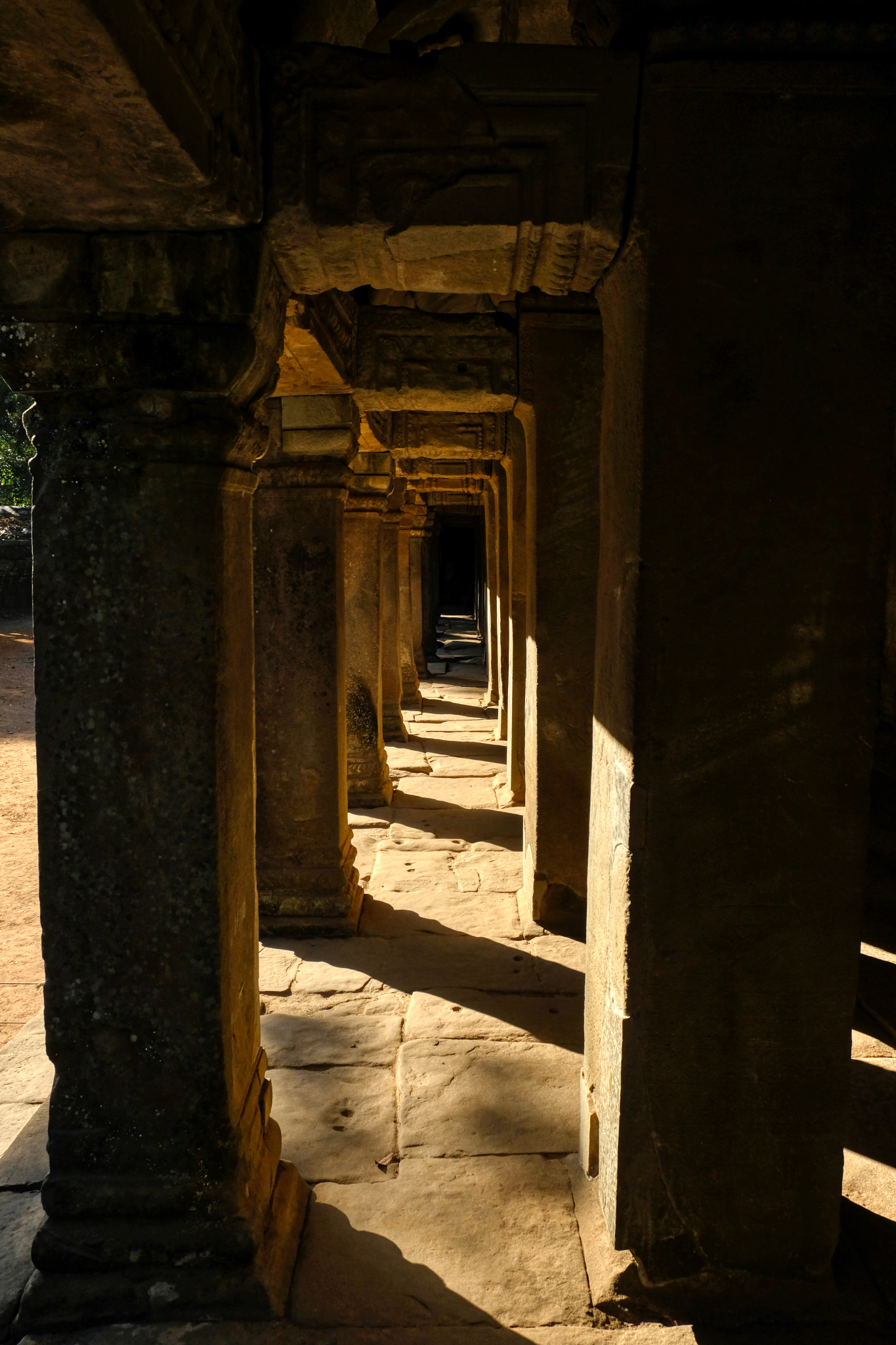 Sharp shadow in the Angkor Wat colonnades.
Sharp shadow in the Angkor Wat colonnades.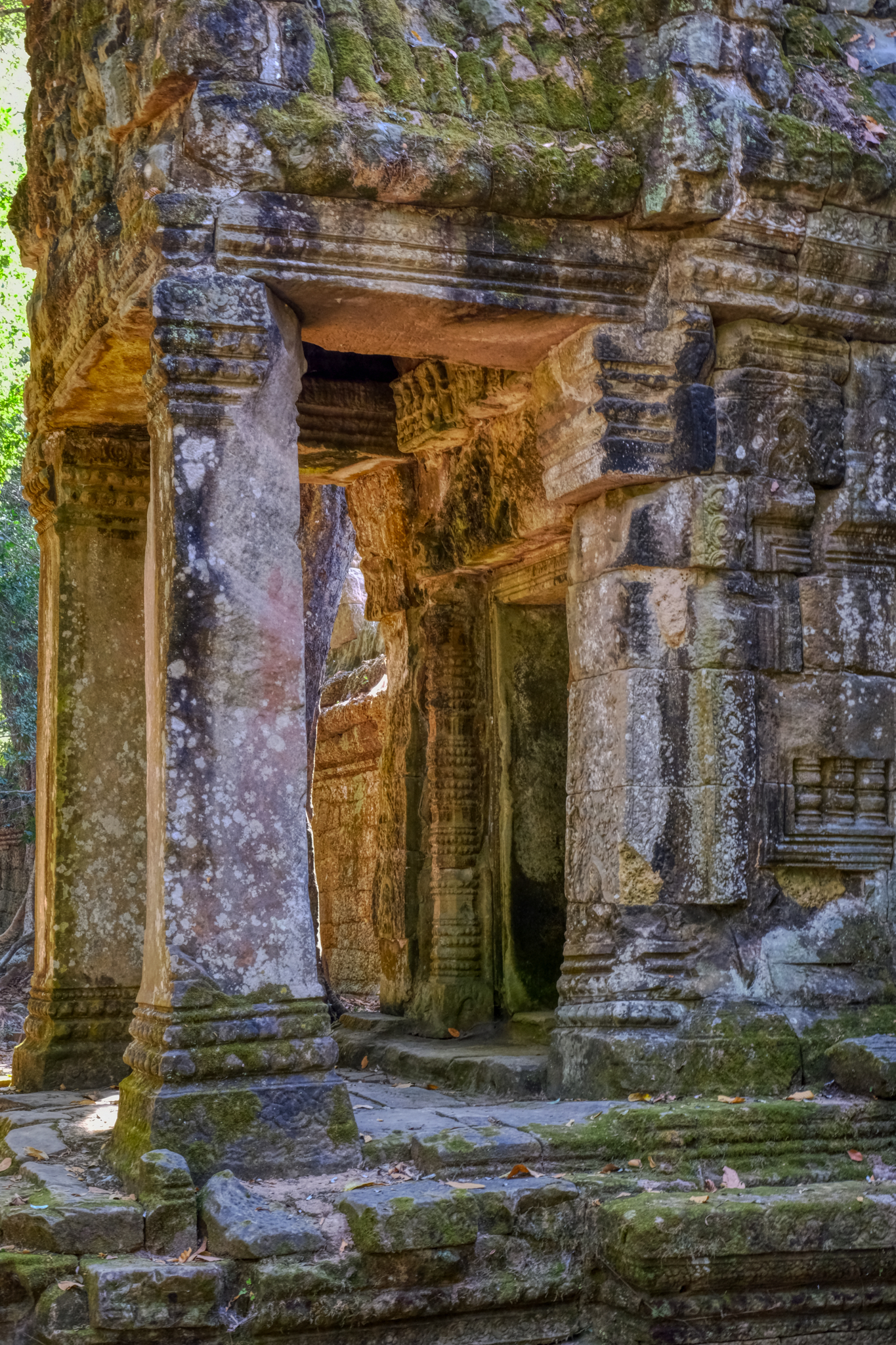 Ah! The light!
Ah! The light!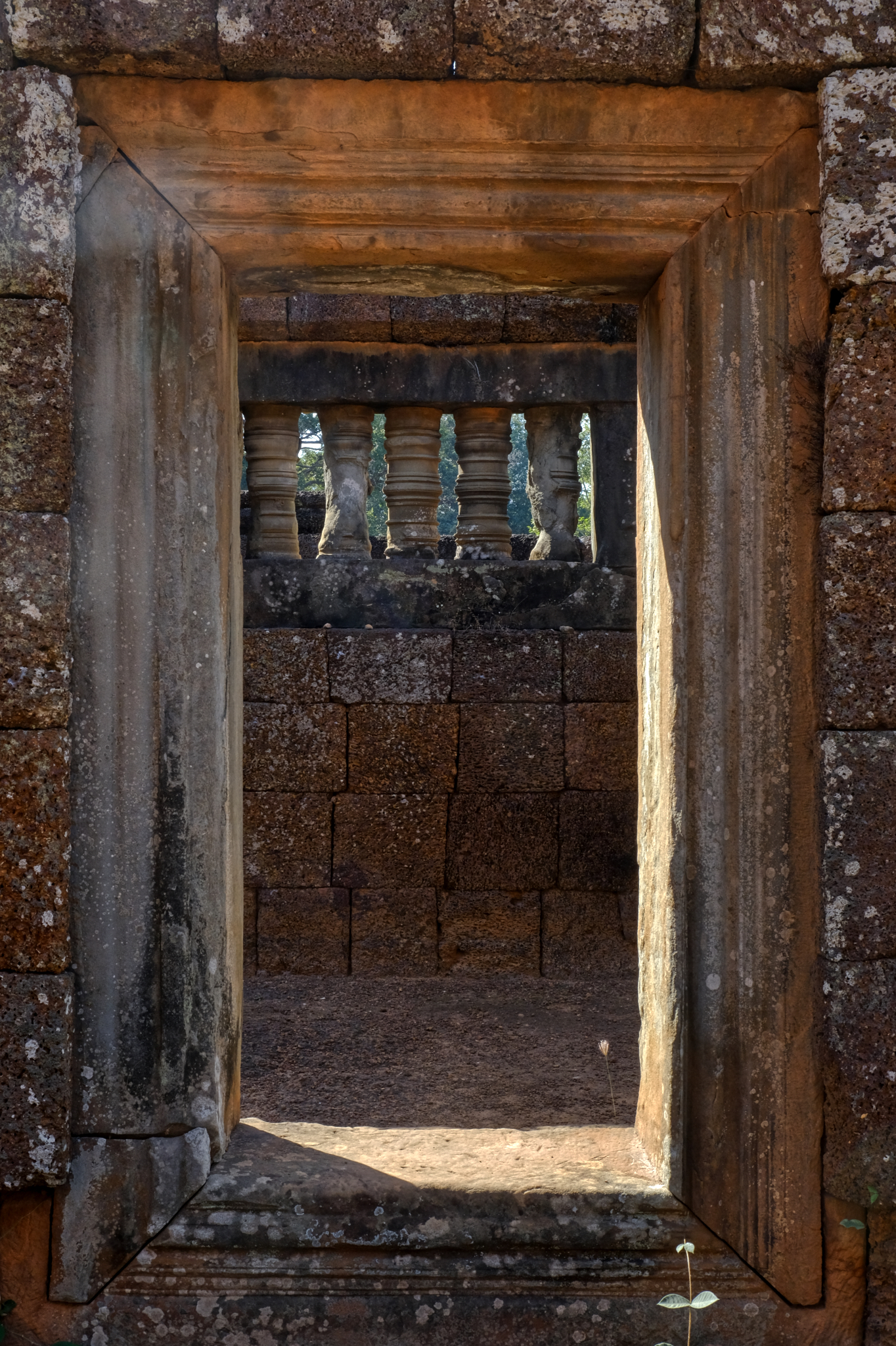 Shadows framed.
Shadows framed.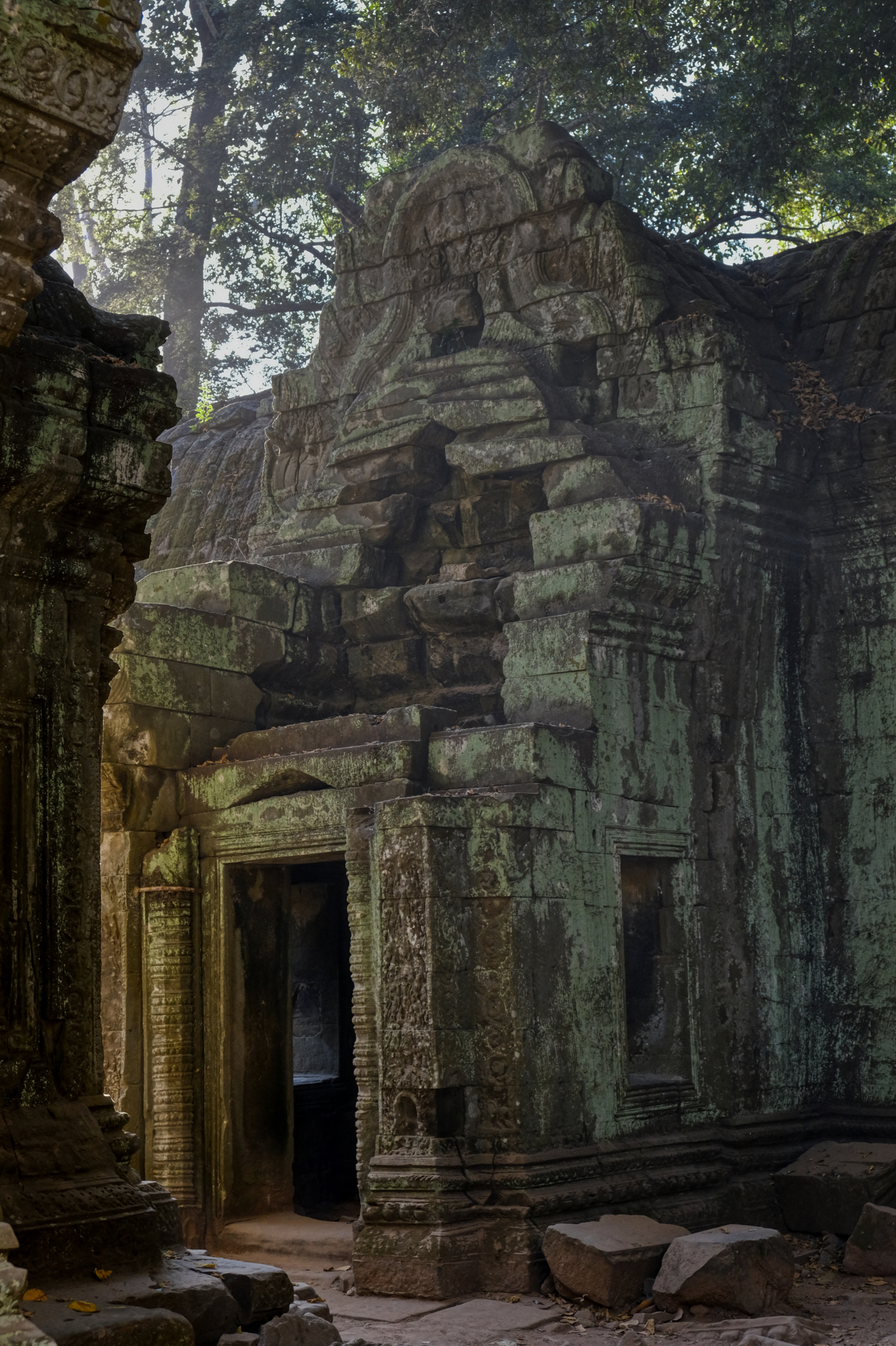 Smoky ruins in the late light.
Smoky ruins in the late light.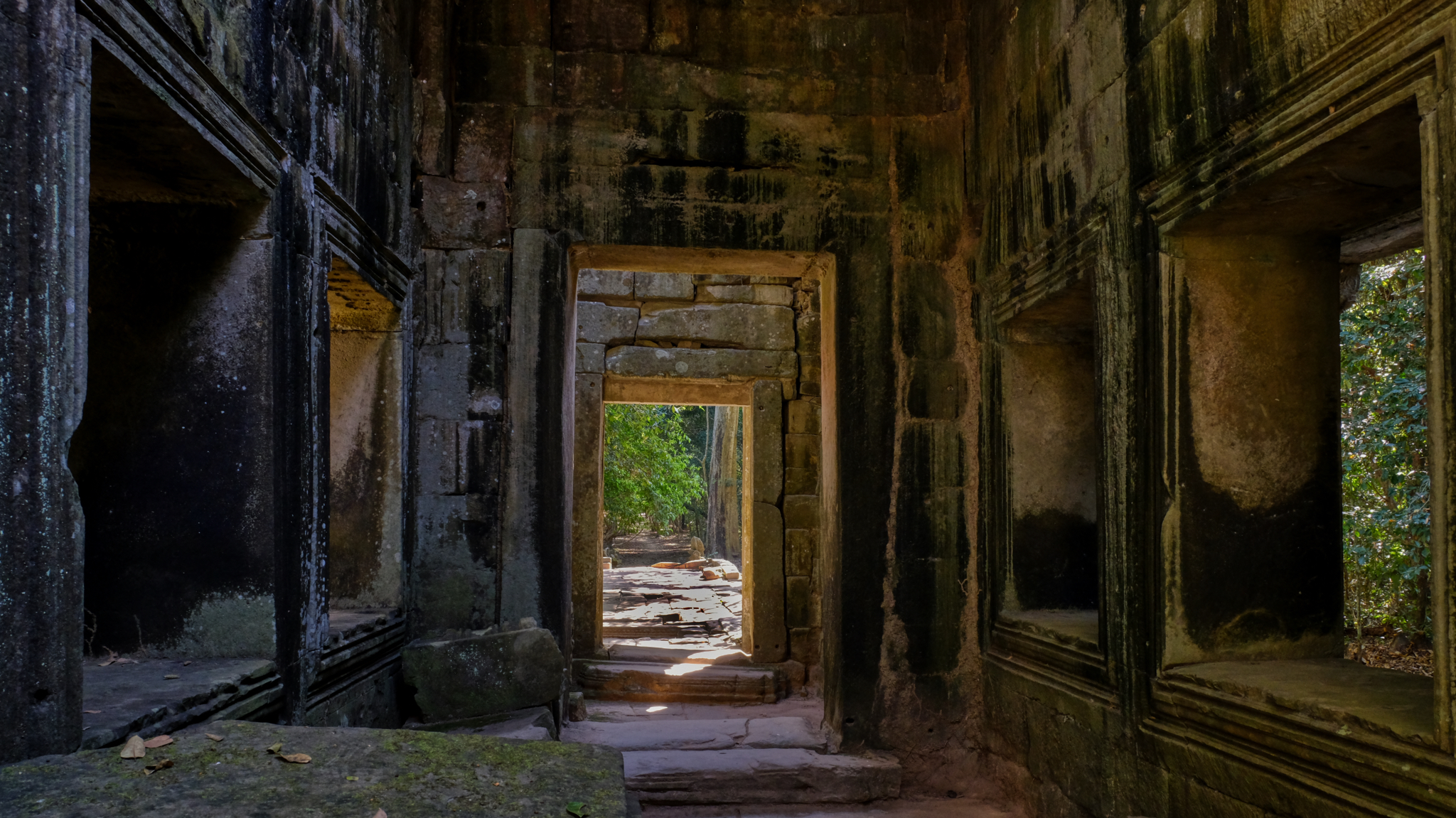 These interiors were full of an almost magical spiritual moodiness.
These interiors were full of an almost magical spiritual moodiness.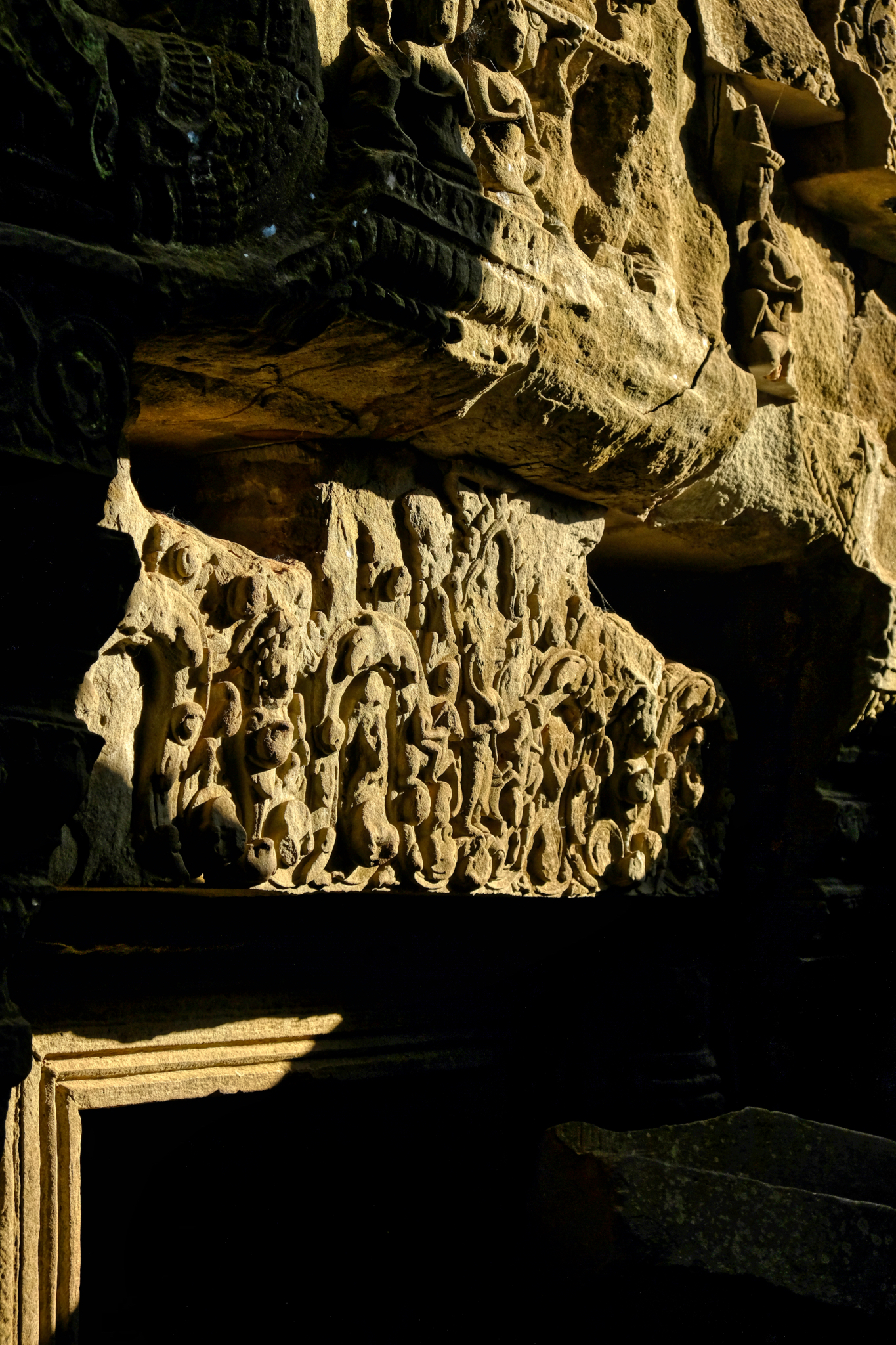 Long shadows accentuated the fine detail. Almost every surface of the temples was carved.
Long shadows accentuated the fine detail. Almost every surface of the temples was carved.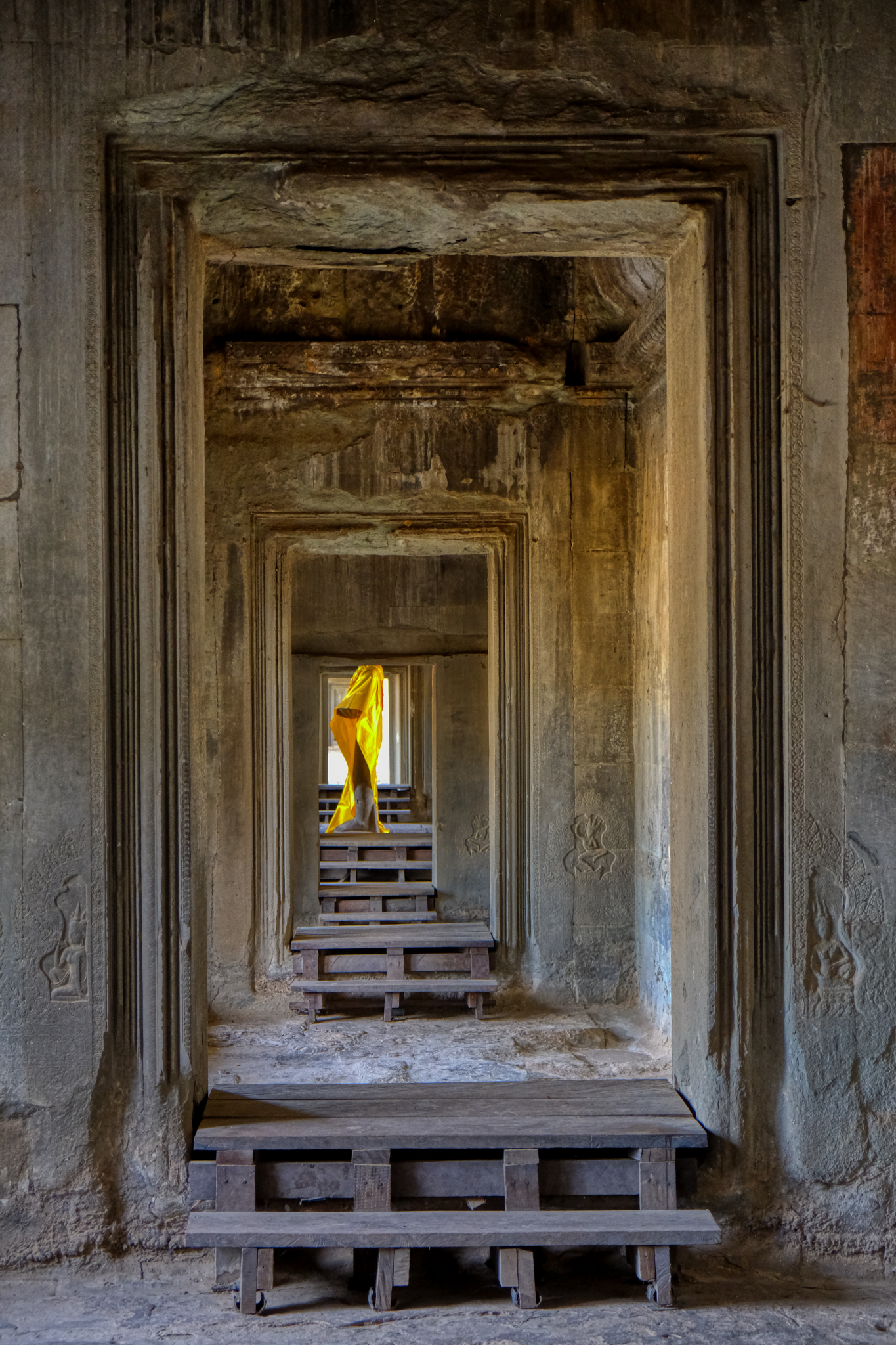 As you might imagine, I was in photographers' heaven walking the halls and passages of Angkor Wat . . . something amazing to shoot at every turn.
As you might imagine, I was in photographers' heaven walking the halls and passages of Angkor Wat . . . something amazing to shoot at every turn.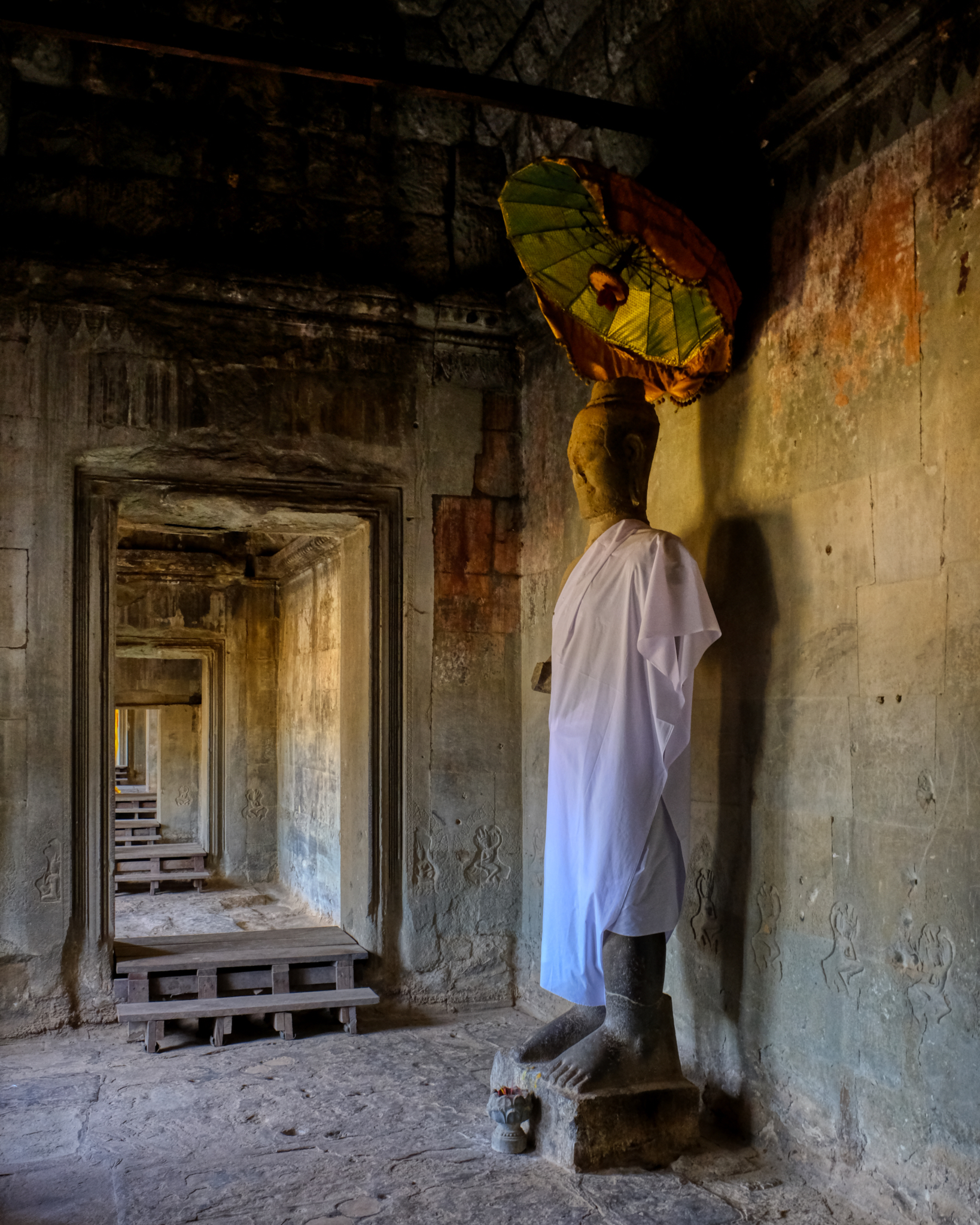 A new image at each turn, at each new chamber, at each door.
A new image at each turn, at each new chamber, at each door.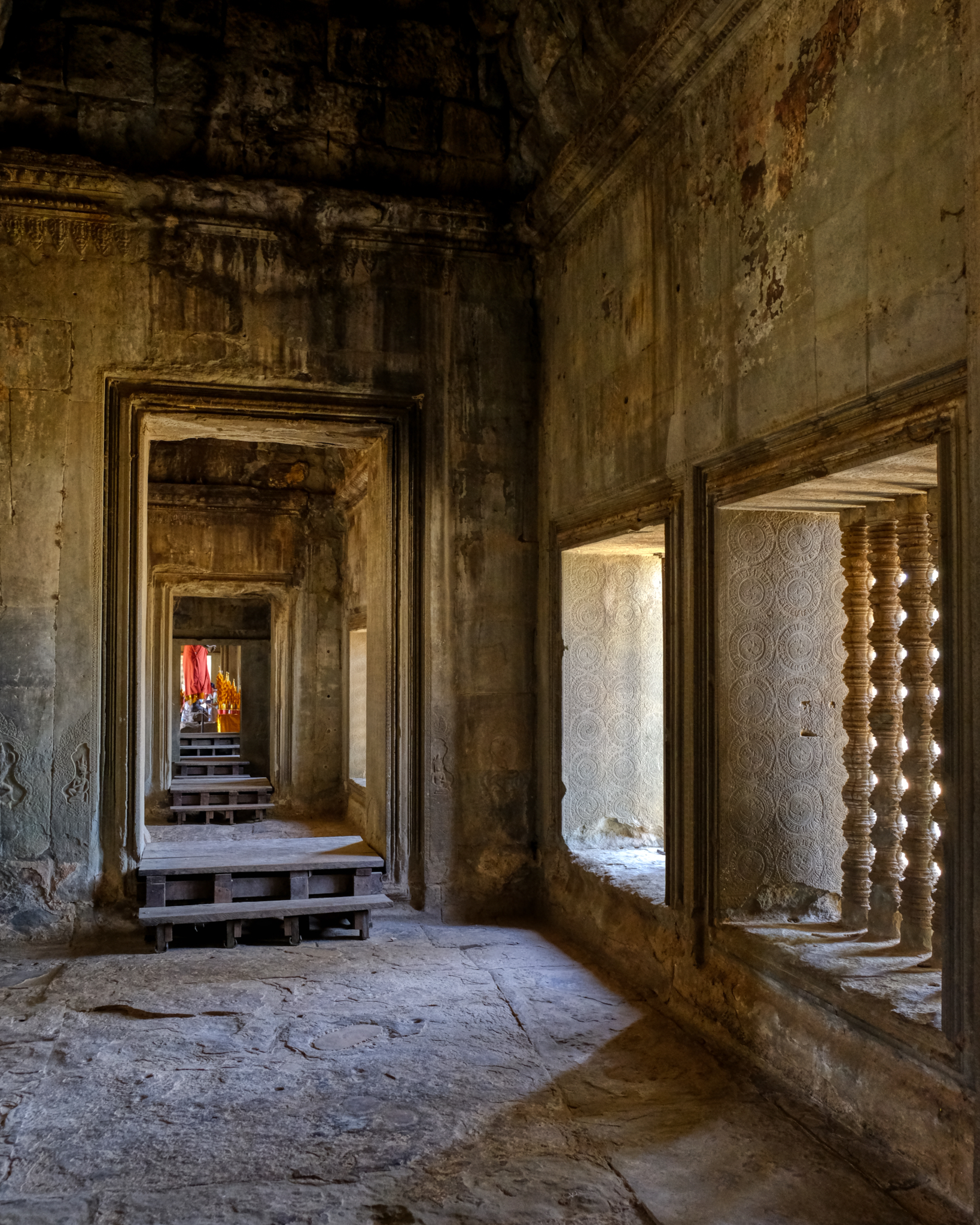 A surprise ahead!
A surprise ahead!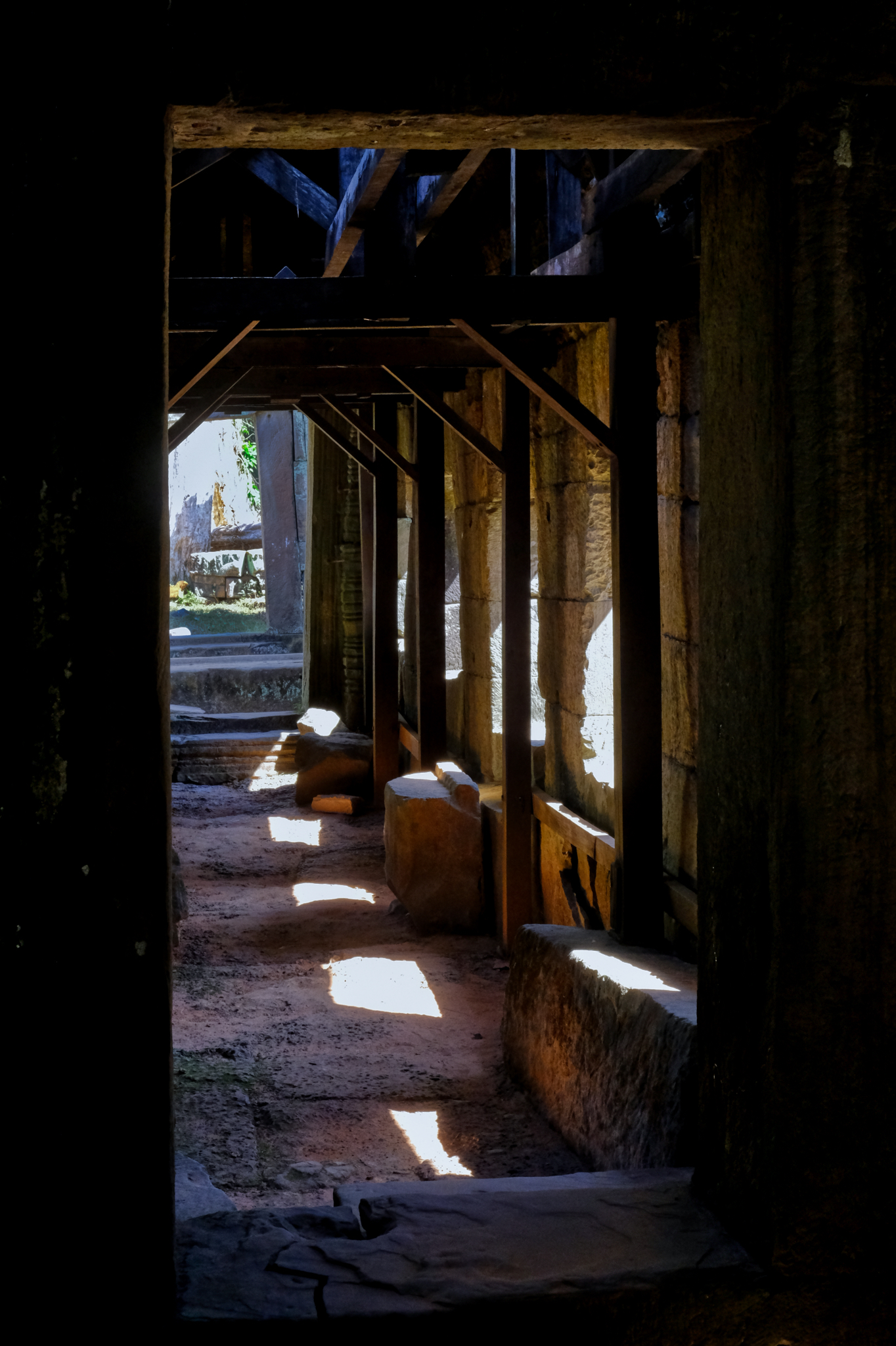 Gorgeous light along the galleries.
Gorgeous light along the galleries.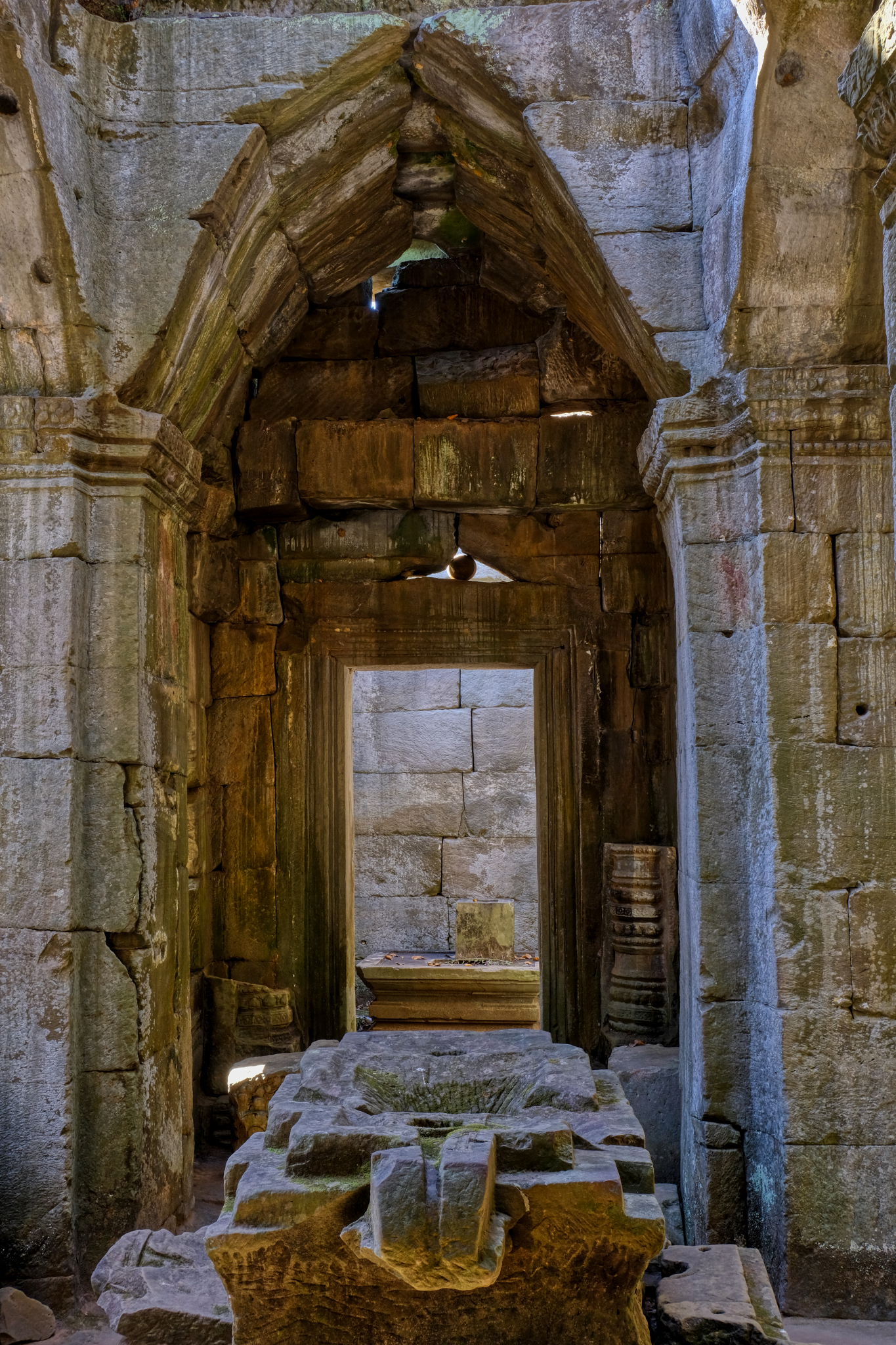 The aesthetics of these stone passages with their relics evokes a calm amazement.
The aesthetics of these stone passages with their relics evokes a calm amazement.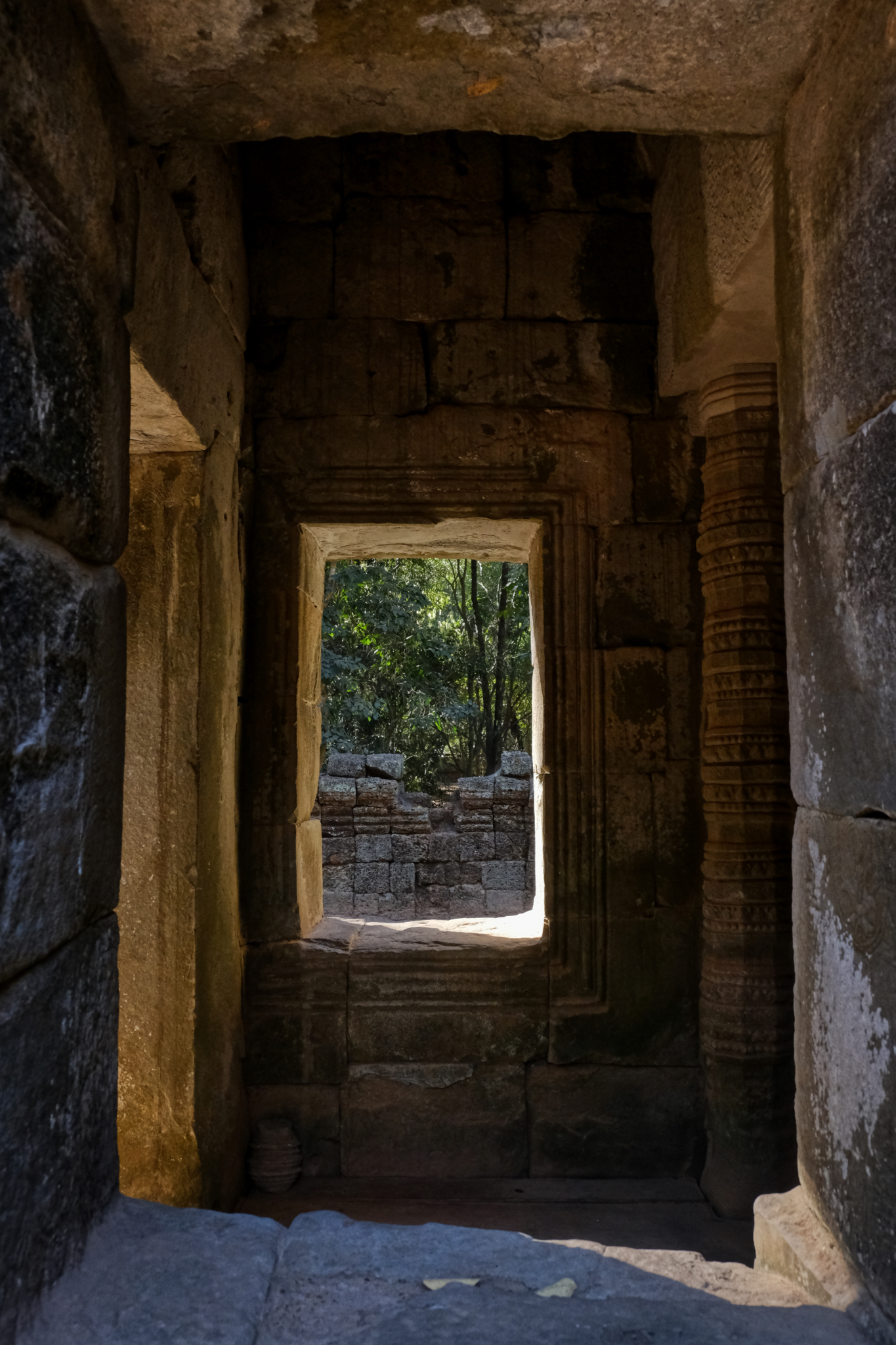 I have always been drawn to these kinds of scenes for photography . . . there seems to be some elemental symbolics involved here . . .
I have always been drawn to these kinds of scenes for photography . . . there seems to be some elemental symbolics involved here . . . 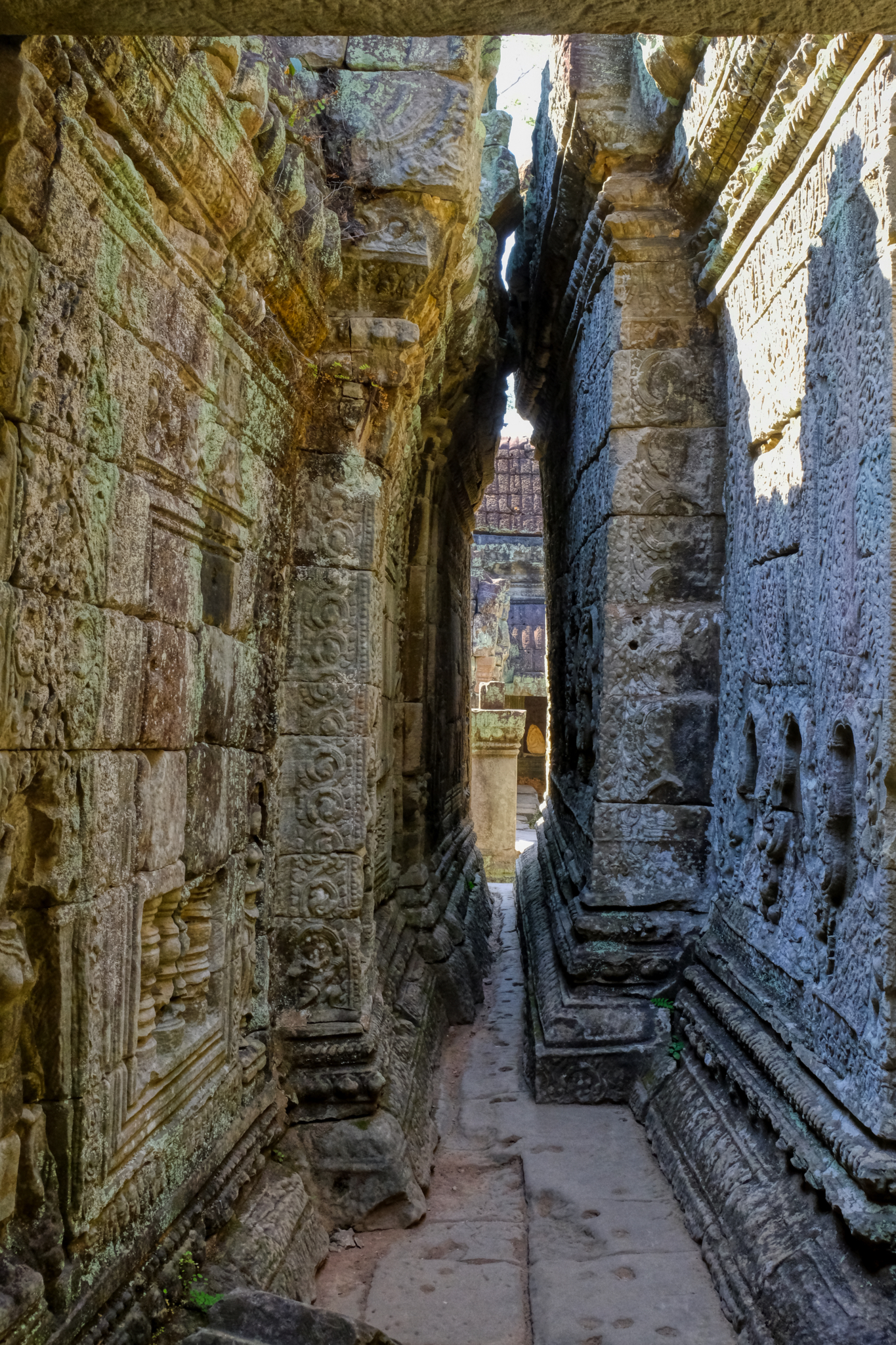 Endless stone doors and windows, light and shadow . . .
Endless stone doors and windows, light and shadow . . .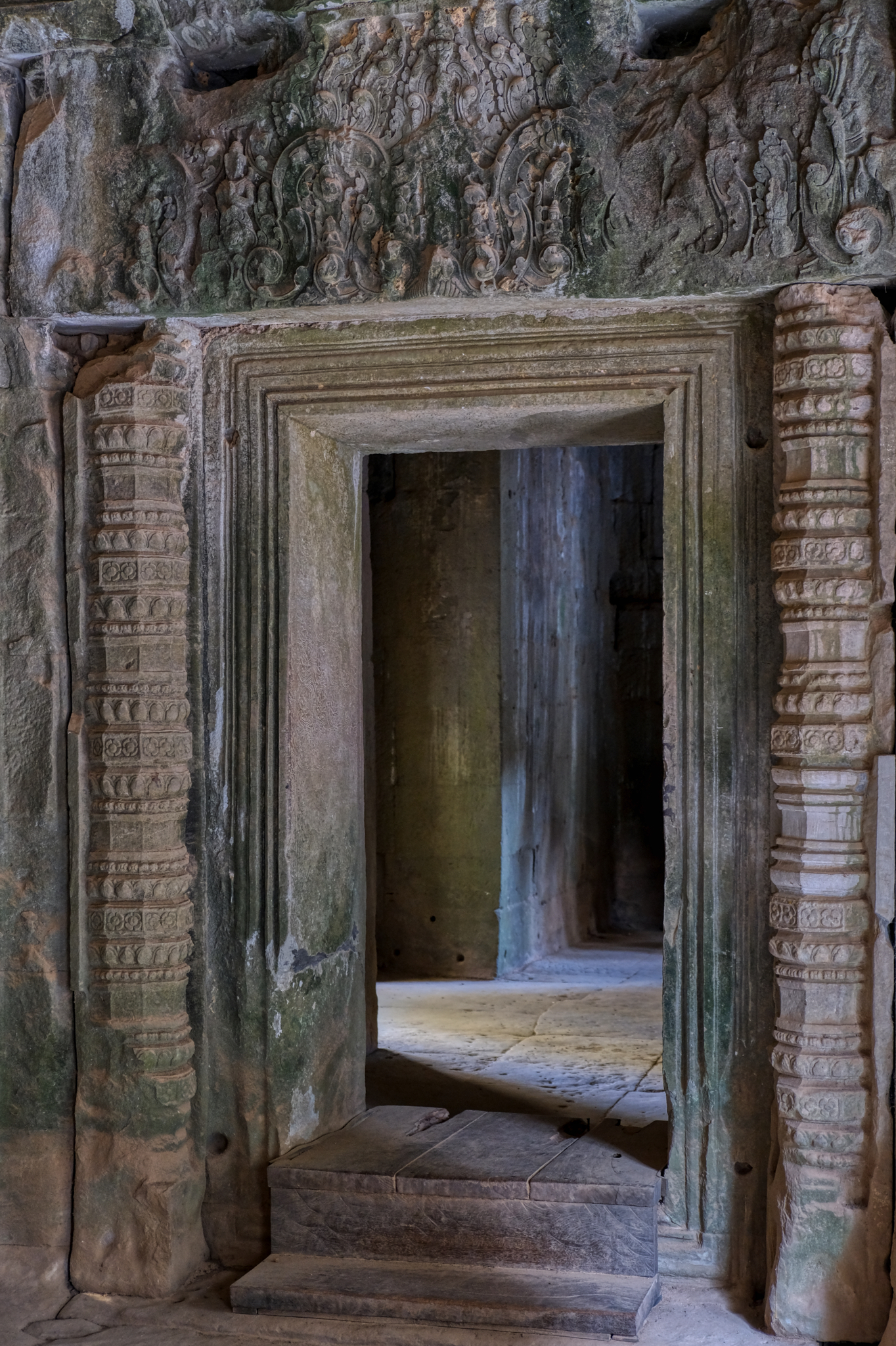 Interior doors. The Light! The shadows!
Interior doors. The Light! The shadows!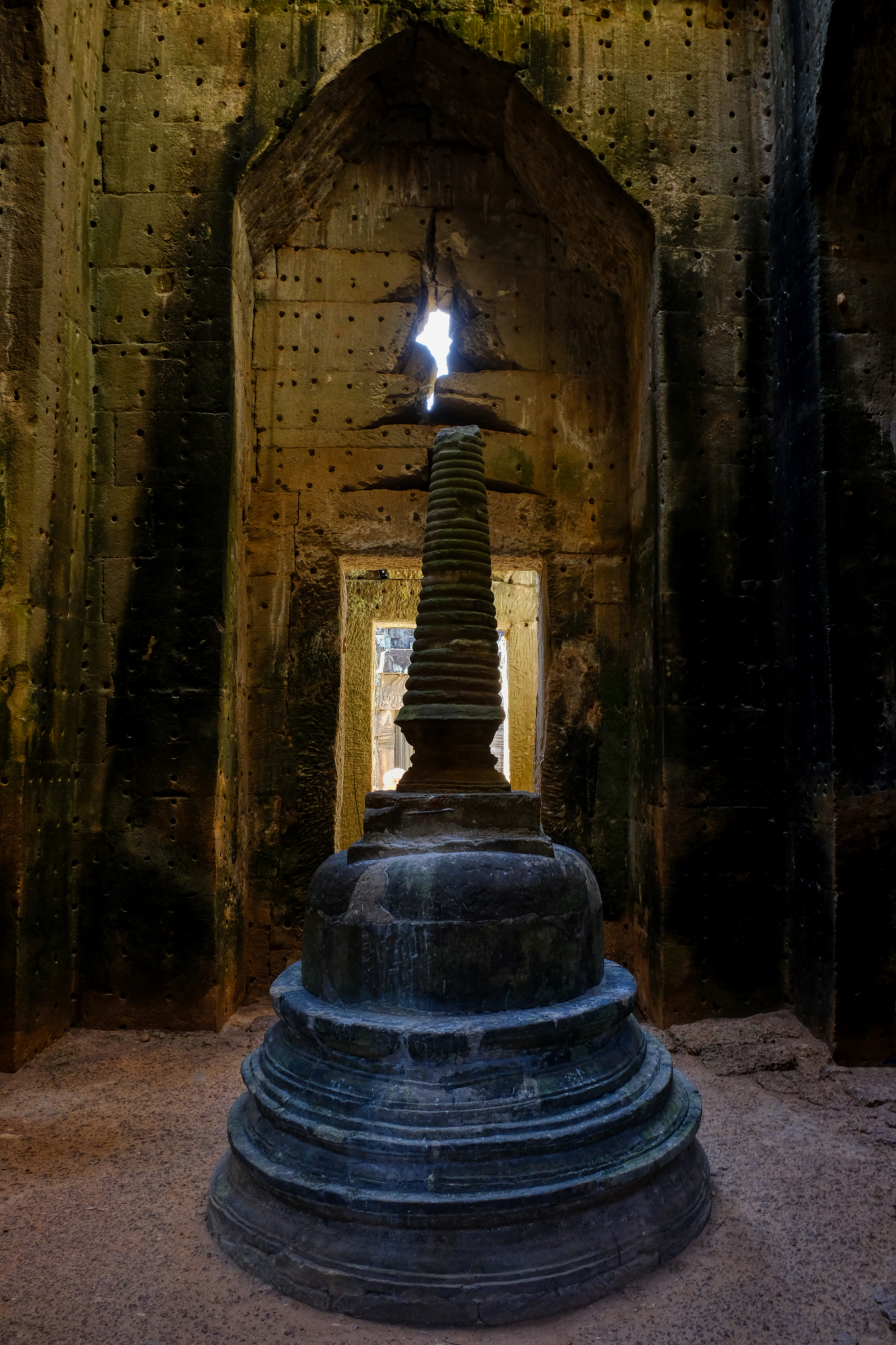 Astonishing chedi in the intersection of two long halls! The many holes in the stone walls indicate they were covered with carvings in stone or wood.
Astonishing chedi in the intersection of two long halls! The many holes in the stone walls indicate they were covered with carvings in stone or wood.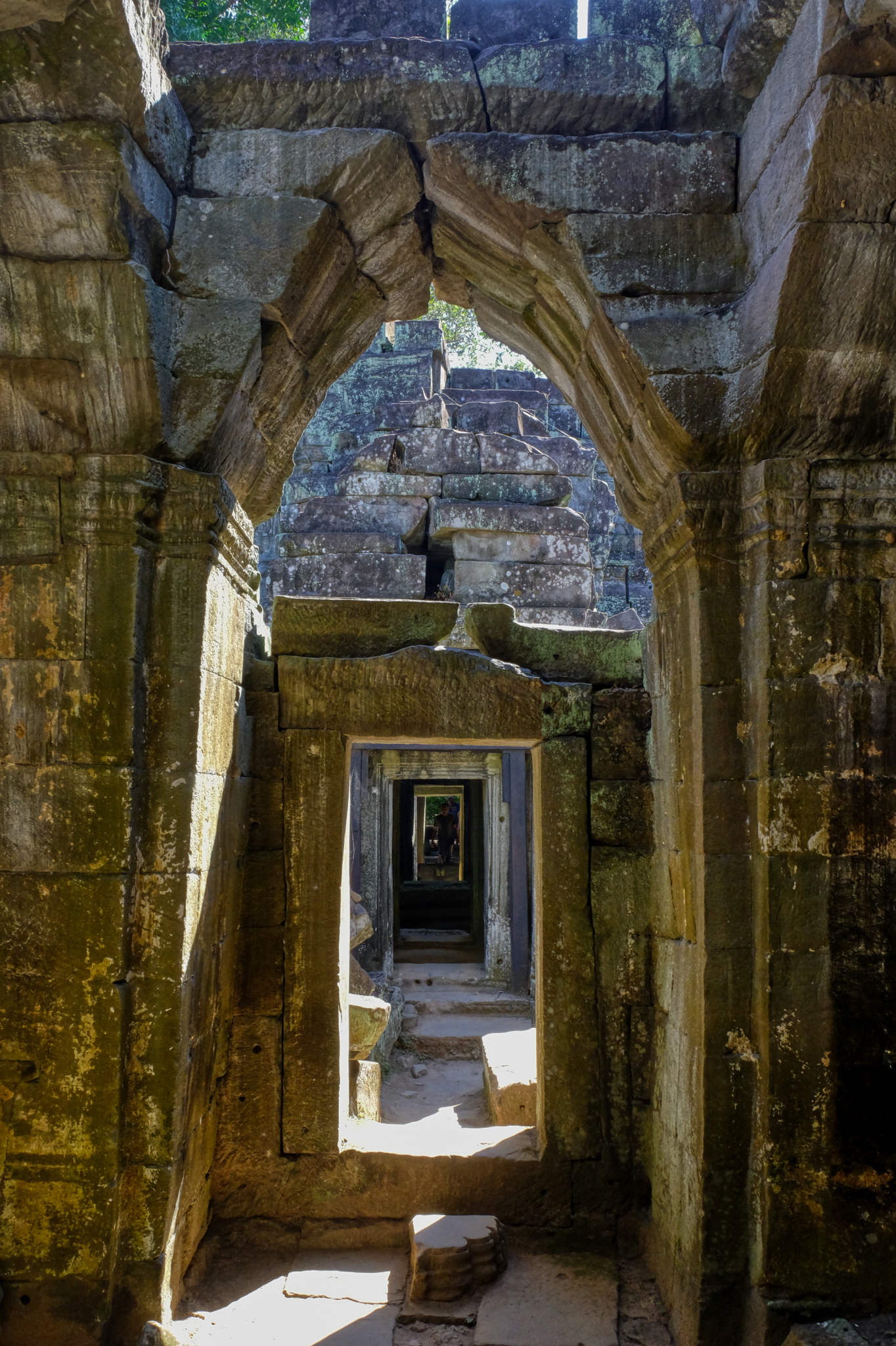 Endless curiosity . . .
Endless curiosity . . .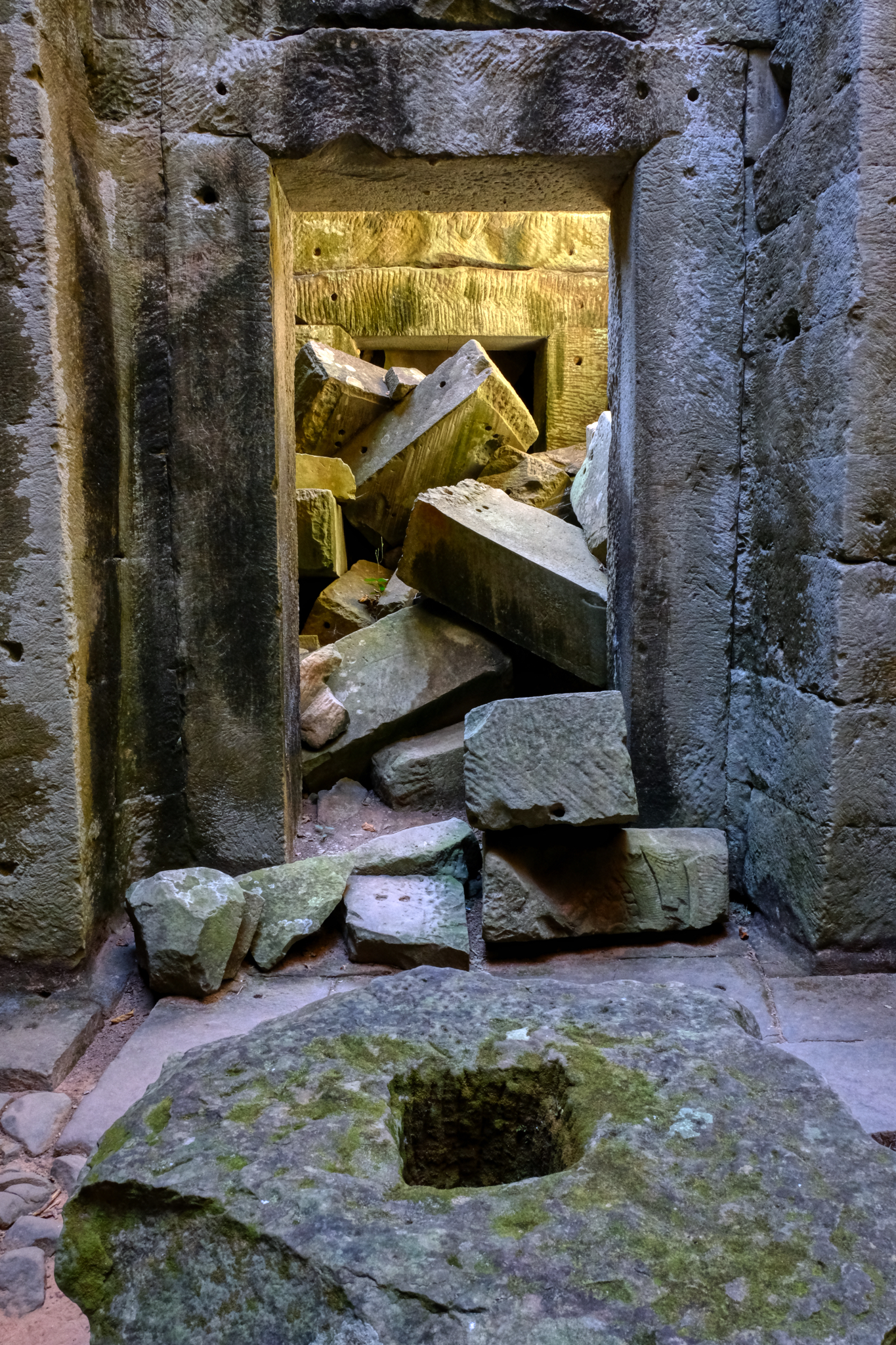 Wandering the halls and passages and finding an outlet into the honey light . . . what's out there?
Wandering the halls and passages and finding an outlet into the honey light . . . what's out there?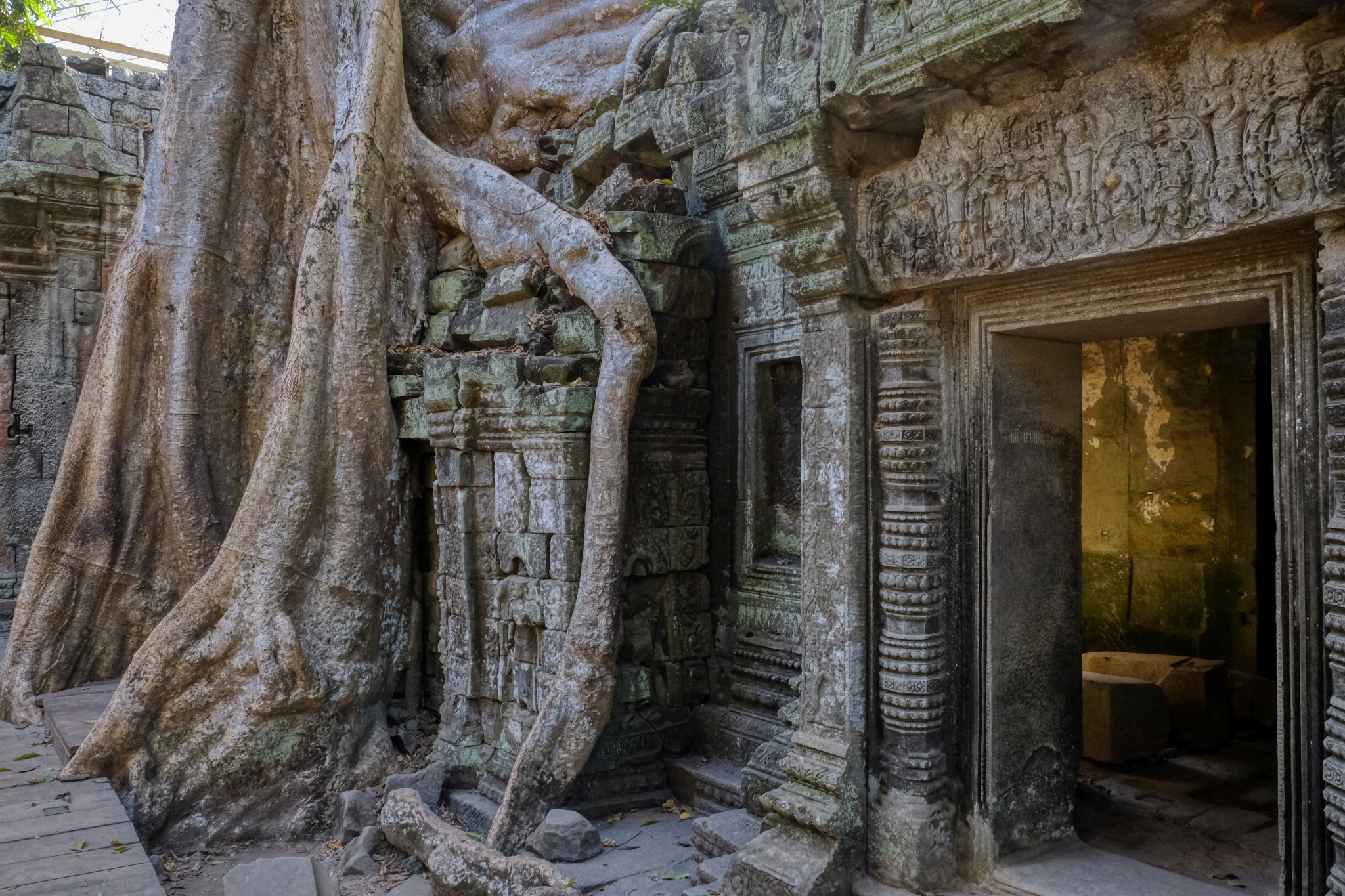 . . . and THIS is what was on the outside of these long stone passages!
. . . and THIS is what was on the outside of these long stone passages!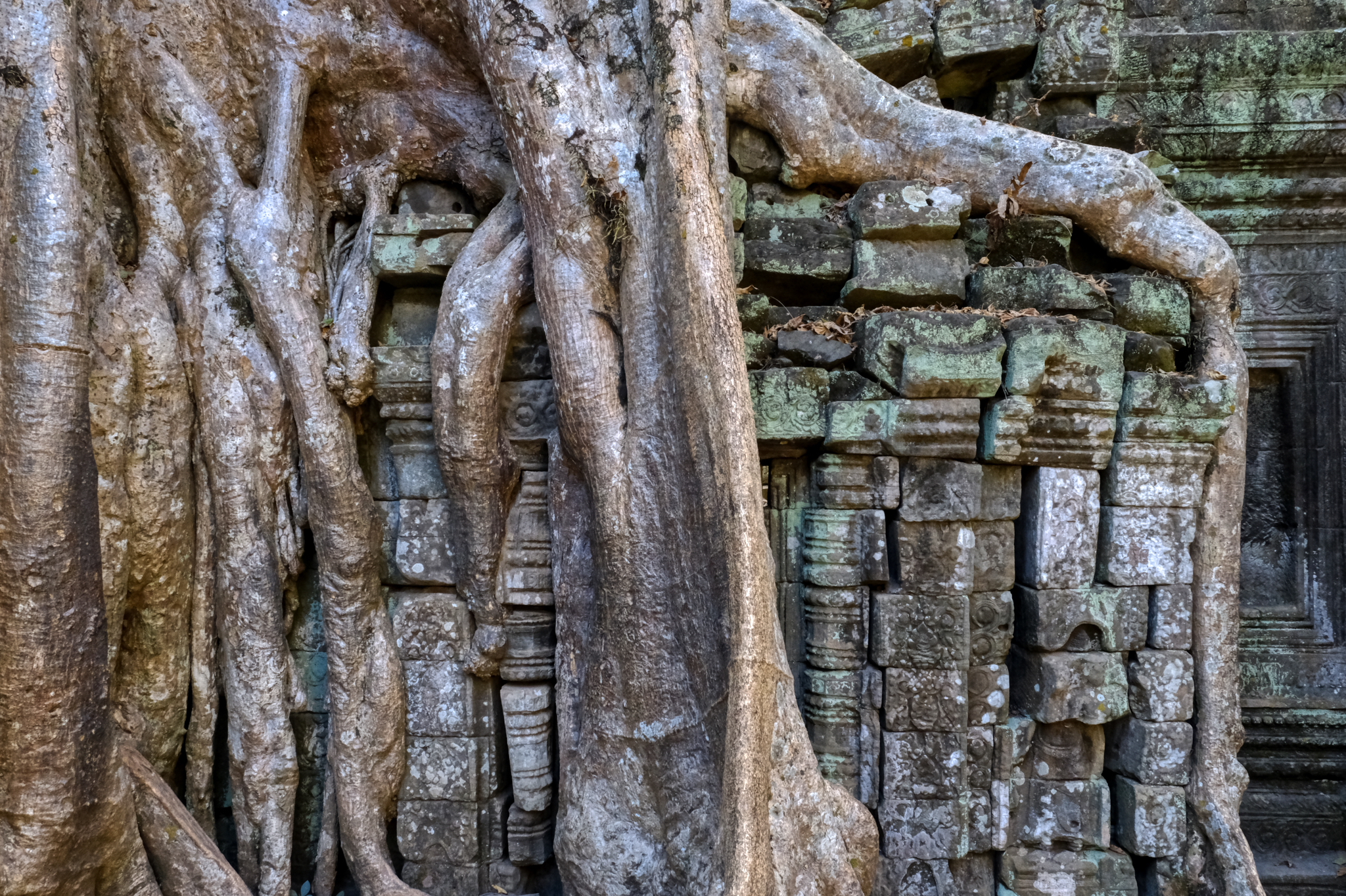 The classic 'Jungle Reclaiming the Lost Temple' photo. Still wonderful!
The classic 'Jungle Reclaiming the Lost Temple' photo. Still wonderful!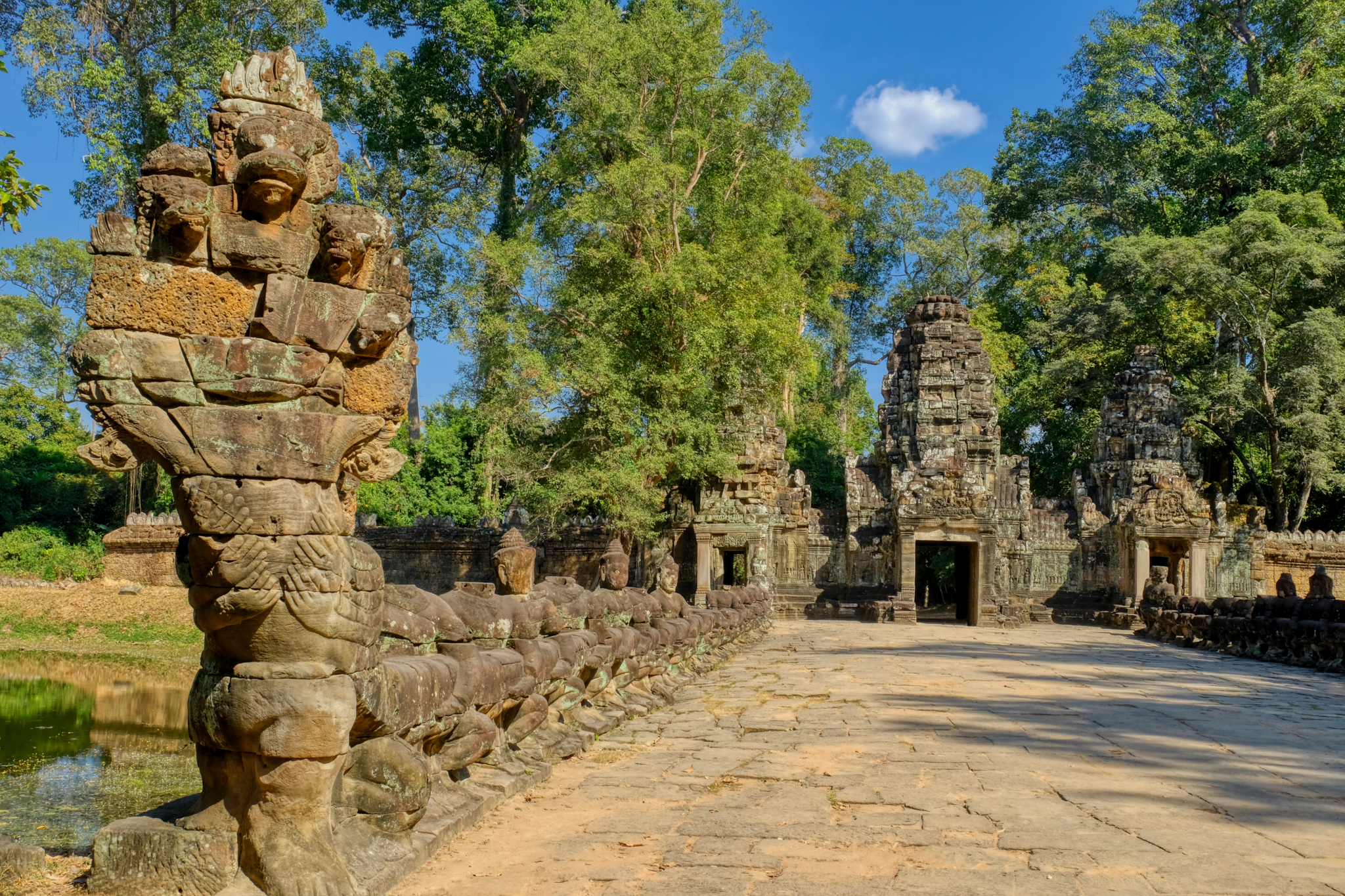 Our driver brought us to another temple site, this one had an entrance guarded by a bridge guarded by stone cobras!
Our driver brought us to another temple site, this one had an entrance guarded by a bridge guarded by stone cobras!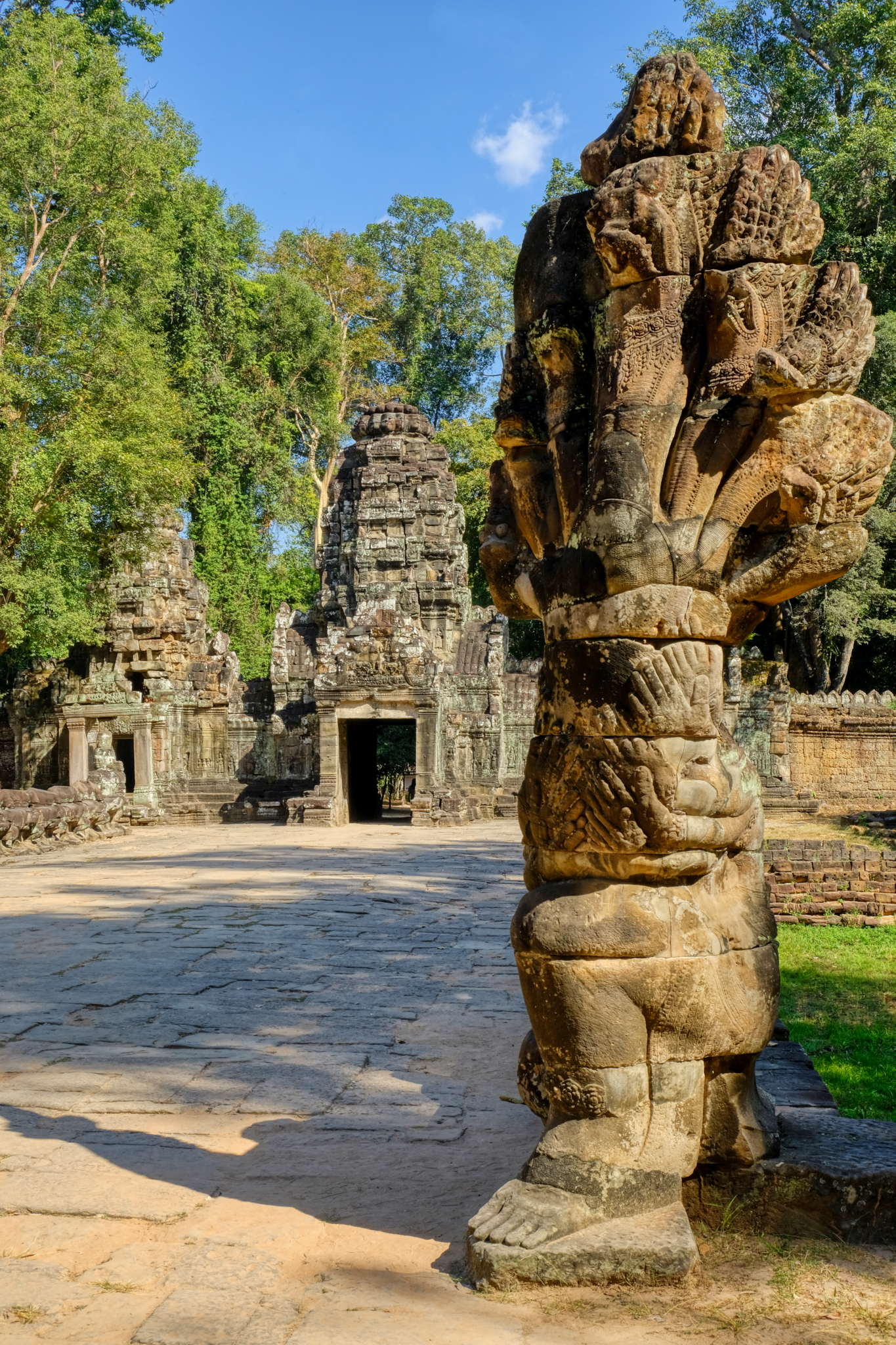 Frightening to peoples of that time, I would imaging.
Frightening to peoples of that time, I would imaging.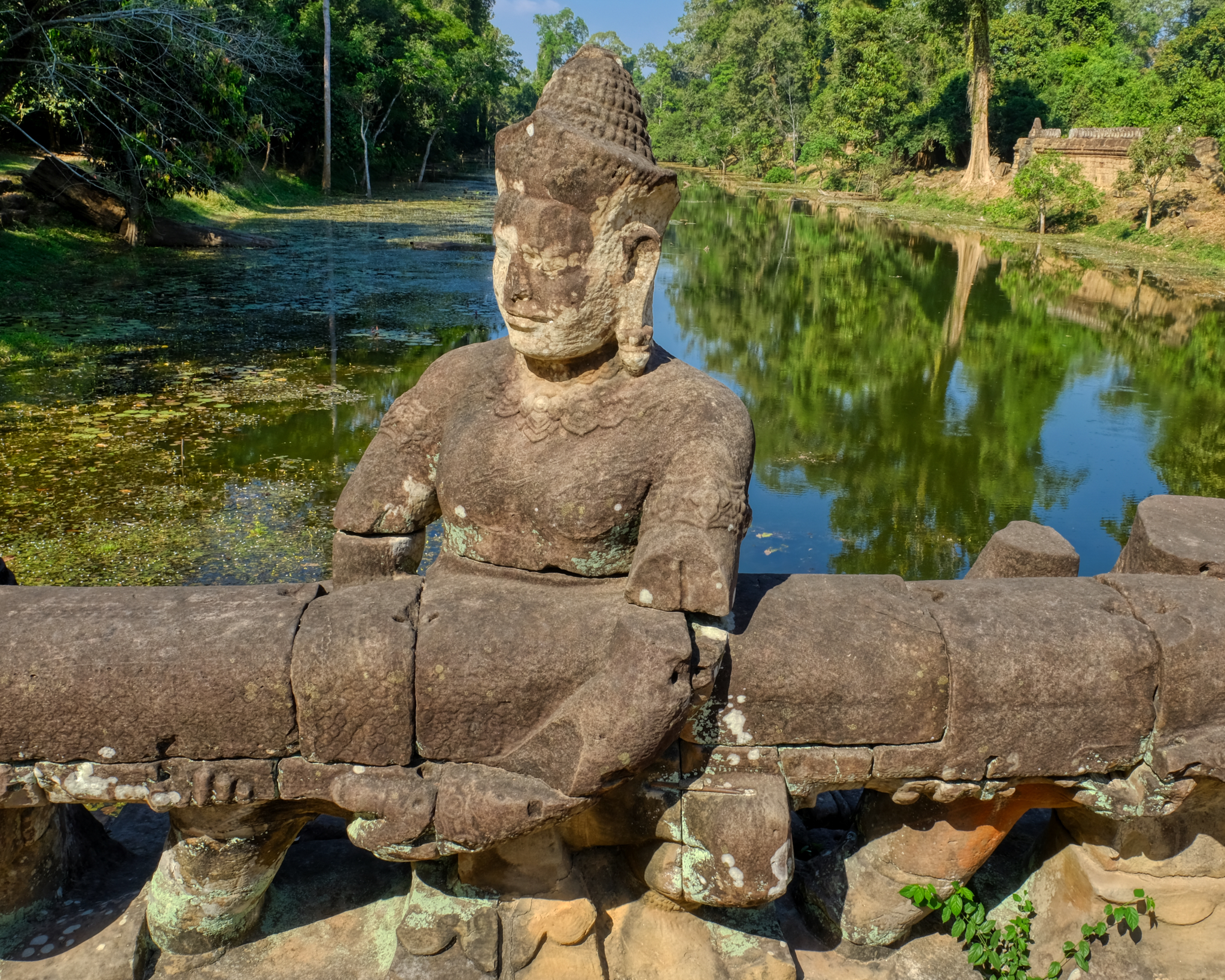 The body of the giant stone cobra was held by a row stone statues that made up the bridge guardrail.
The body of the giant stone cobra was held by a row stone statues that made up the bridge guardrail.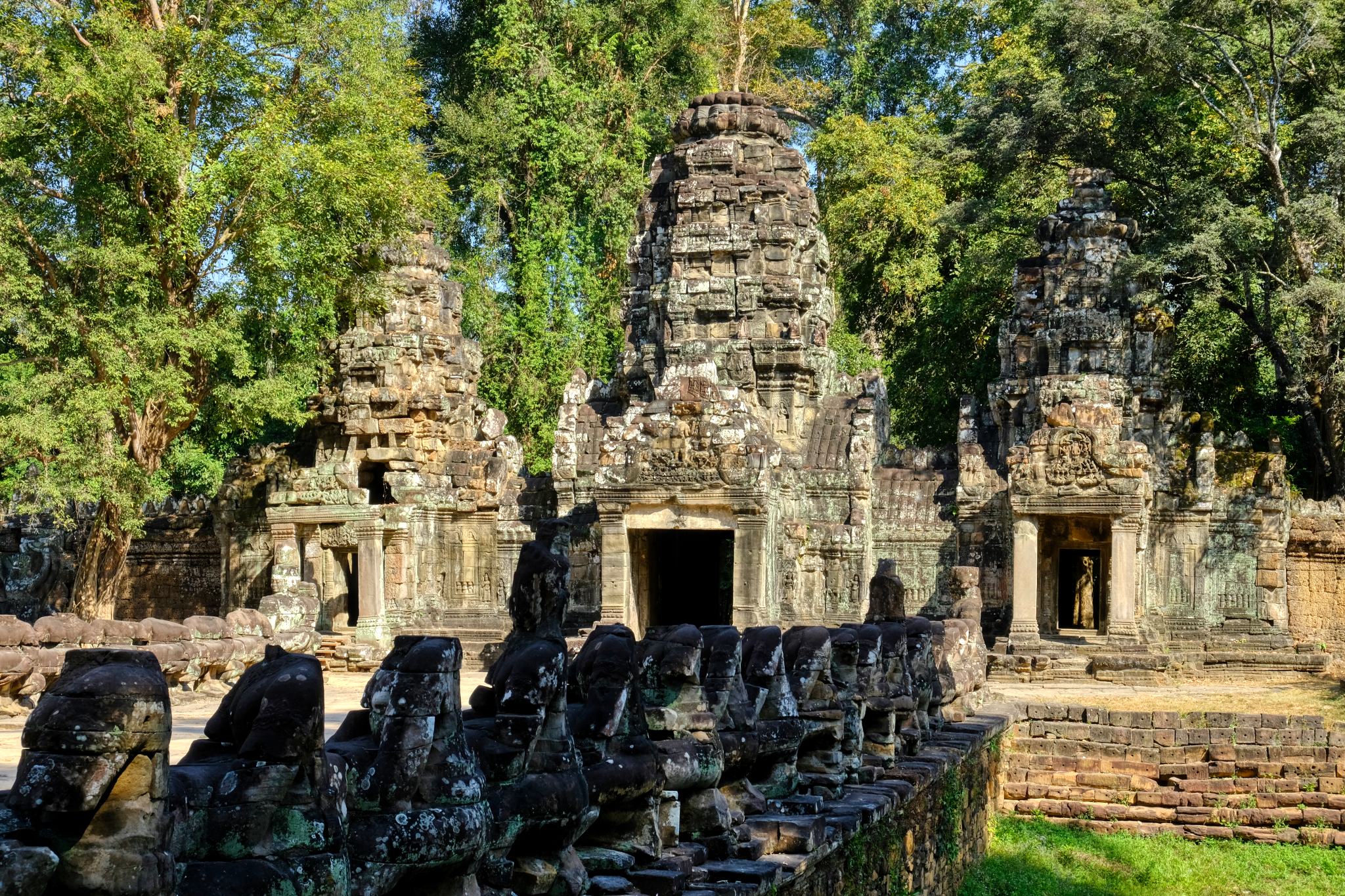 The heads on all of the stone bridge statues have been stolen over the years . . . they end up in museums, private collections, and "art" shops in Bangkok. Despicable.
The heads on all of the stone bridge statues have been stolen over the years . . . they end up in museums, private collections, and "art" shops in Bangkok. Despicable.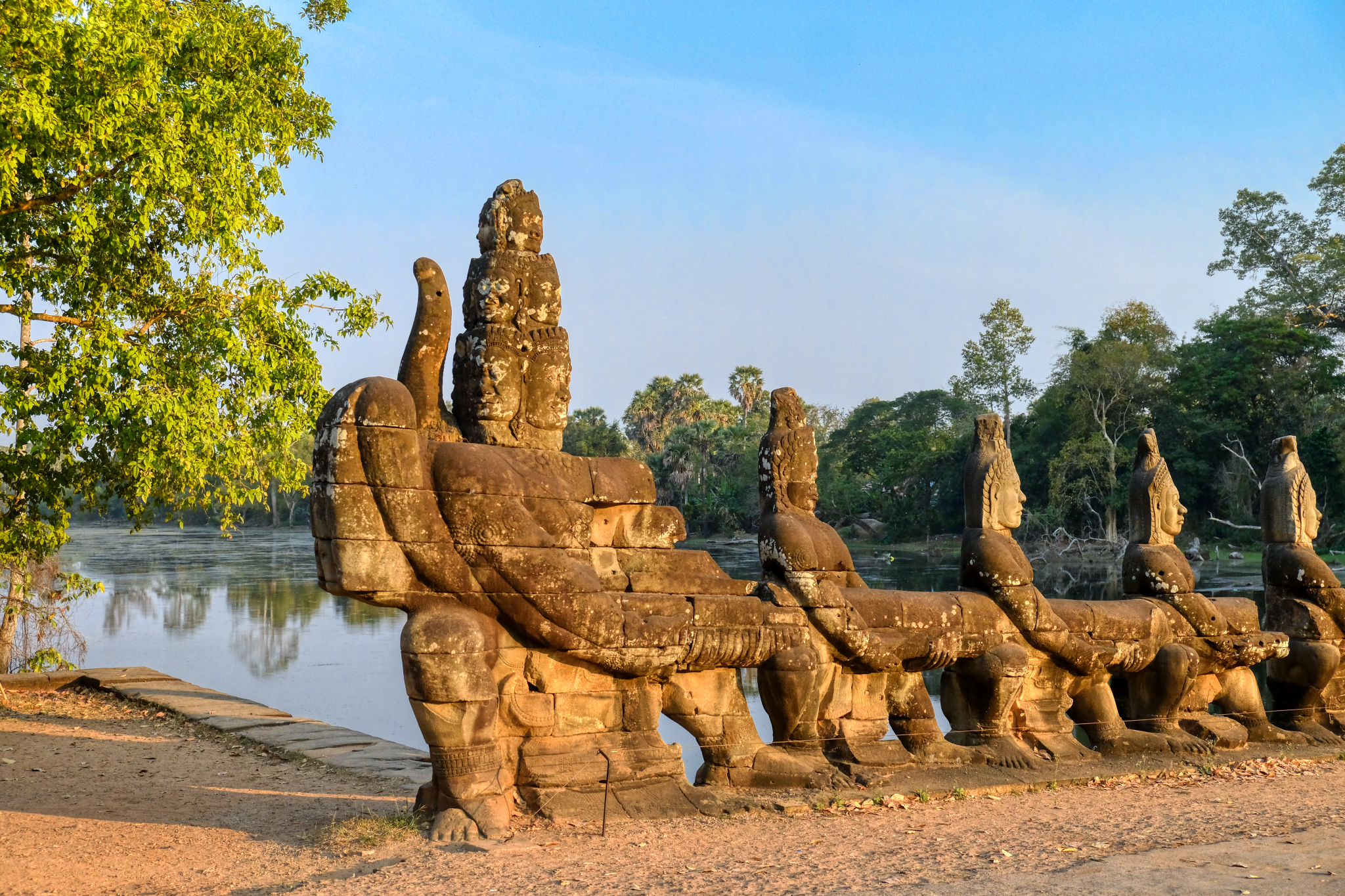 Many of the temple complexes still have their moats.
Many of the temple complexes still have their moats.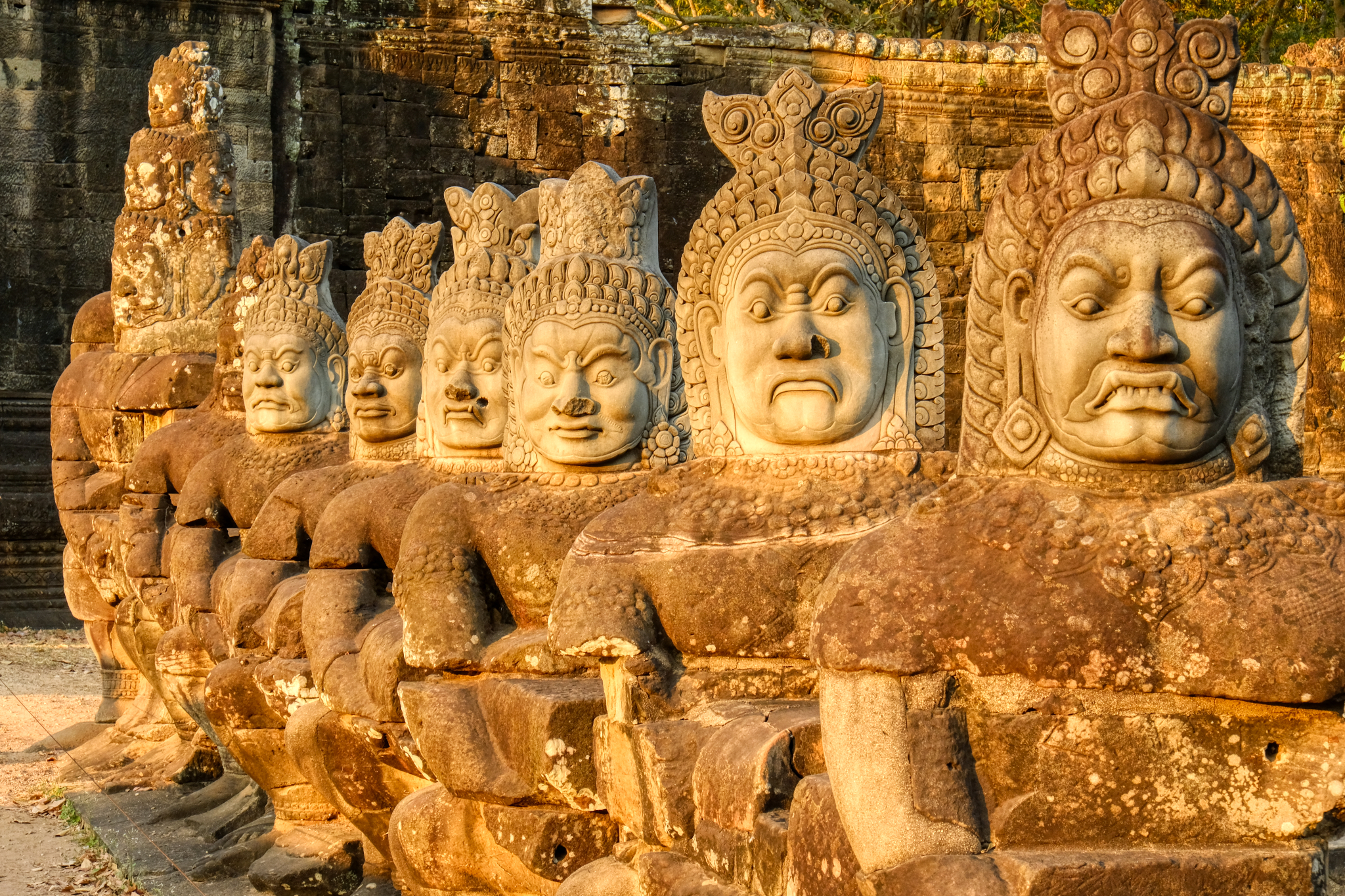 We found only one bridge with the full compliment of guarding figures . . . and they were wonderful!
We found only one bridge with the full compliment of guarding figures . . . and they were wonderful!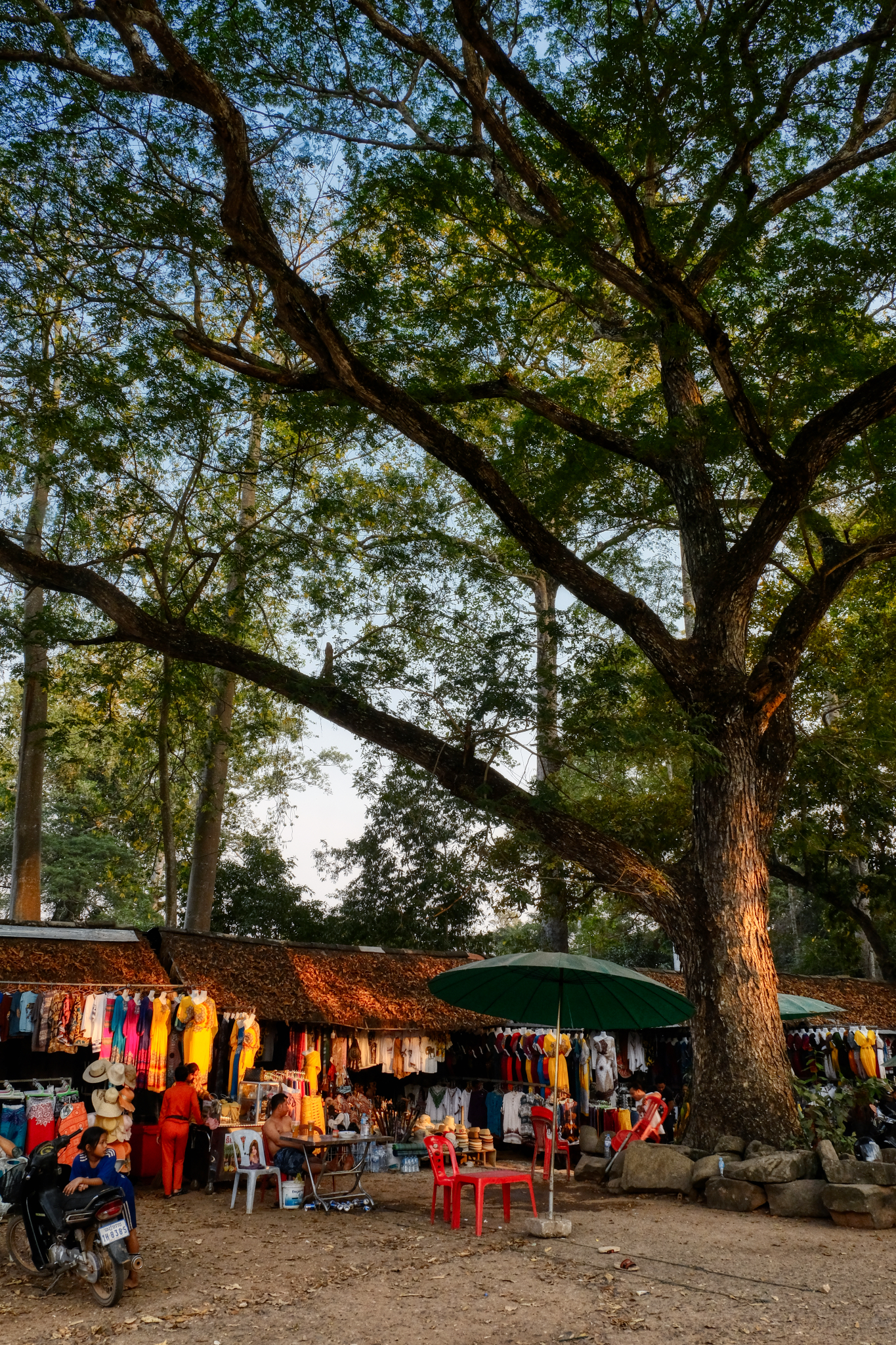 Here and there we saw small encampments of curios hawkers.
Here and there we saw small encampments of curios hawkers.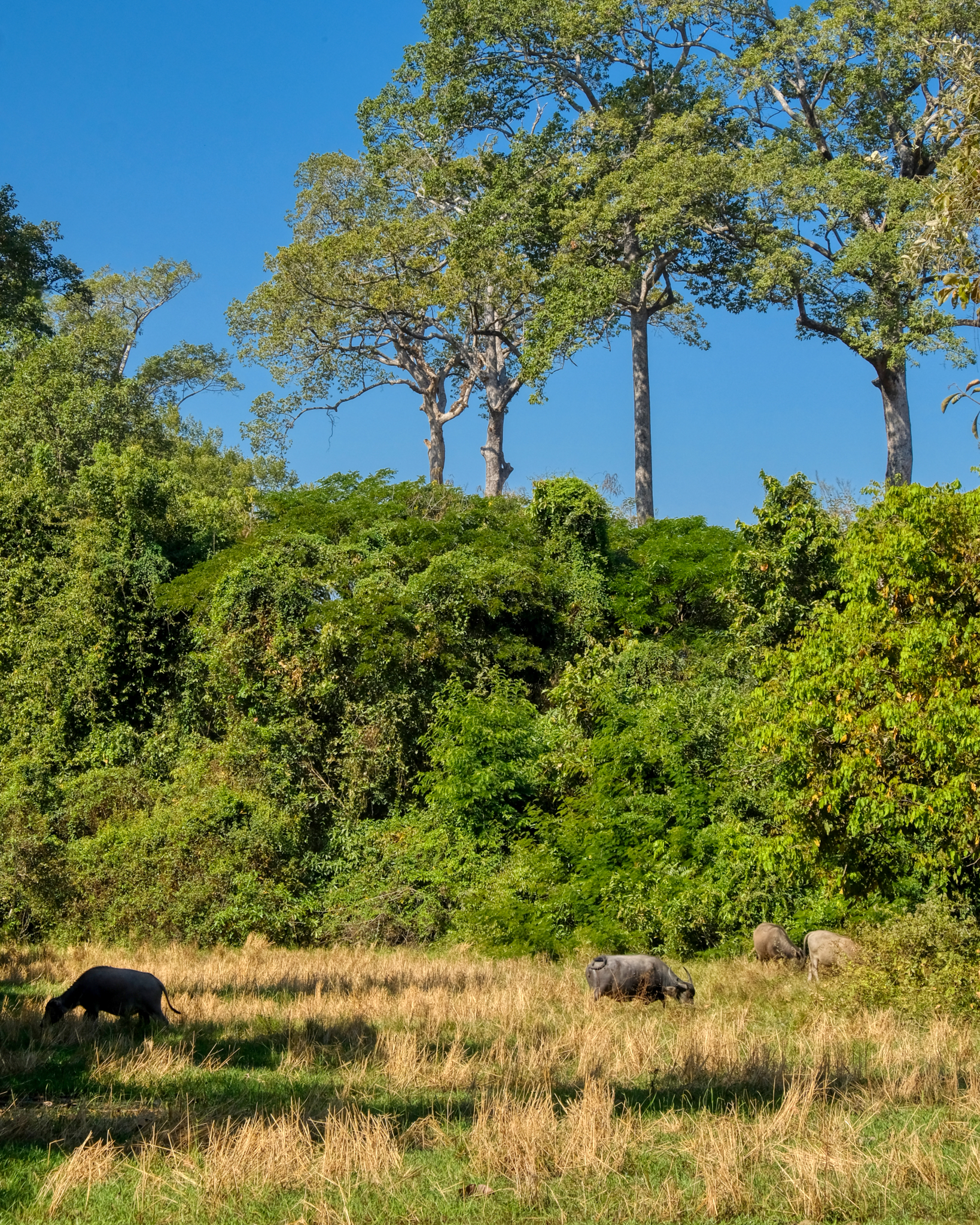 Our drive between temple sited took us through some beautiful and peaceful countryside. Some of the temples were 8-10 miles apart.
Our drive between temple sited took us through some beautiful and peaceful countryside. Some of the temples were 8-10 miles apart.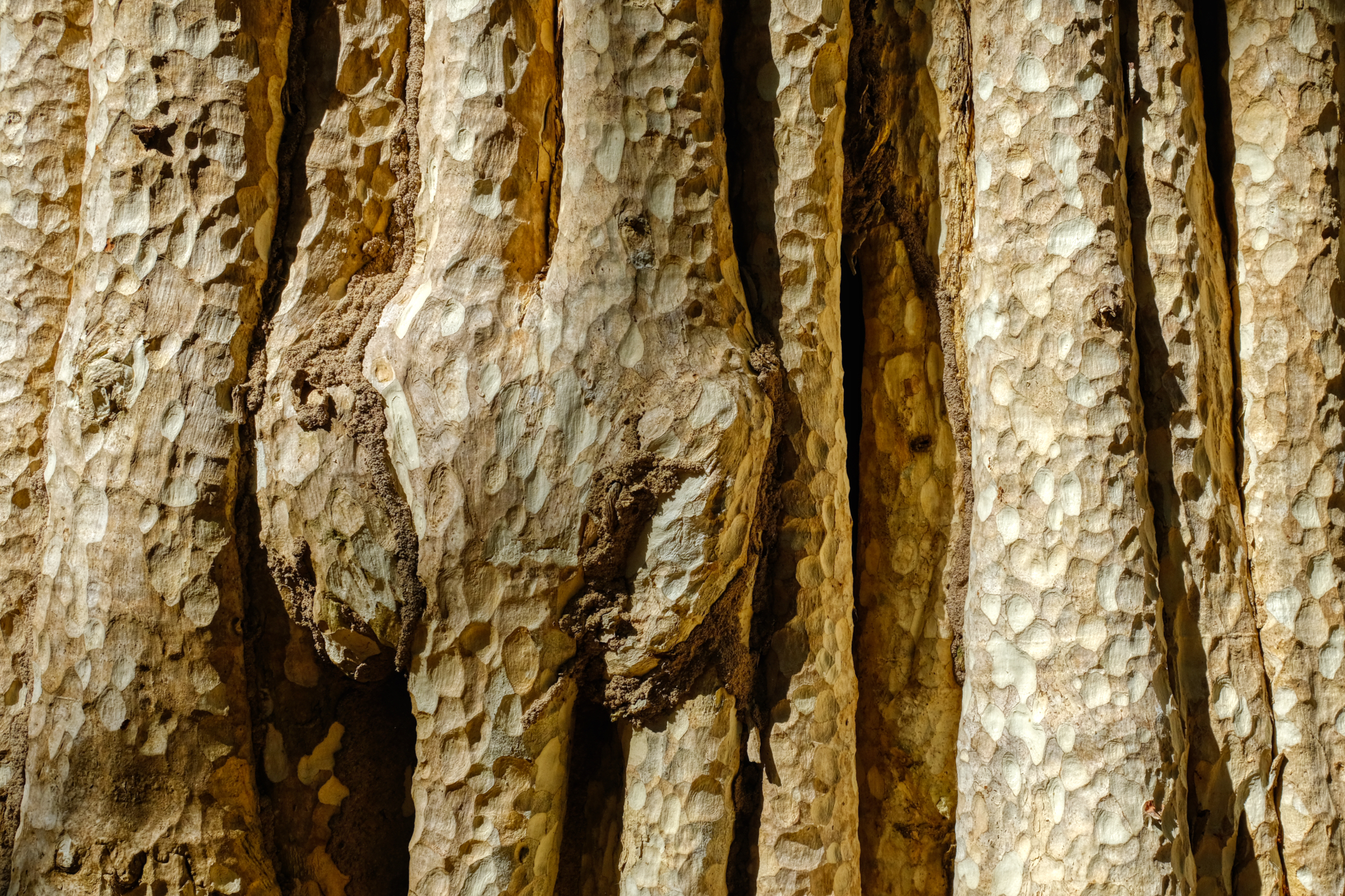 Nature here held some big surprises . . . like this complex tree bark.
Nature here held some big surprises . . . like this complex tree bark. Here and there, as we neared a new temple site, the road would be lined with these markers.
Here and there, as we neared a new temple site, the road would be lined with these markers.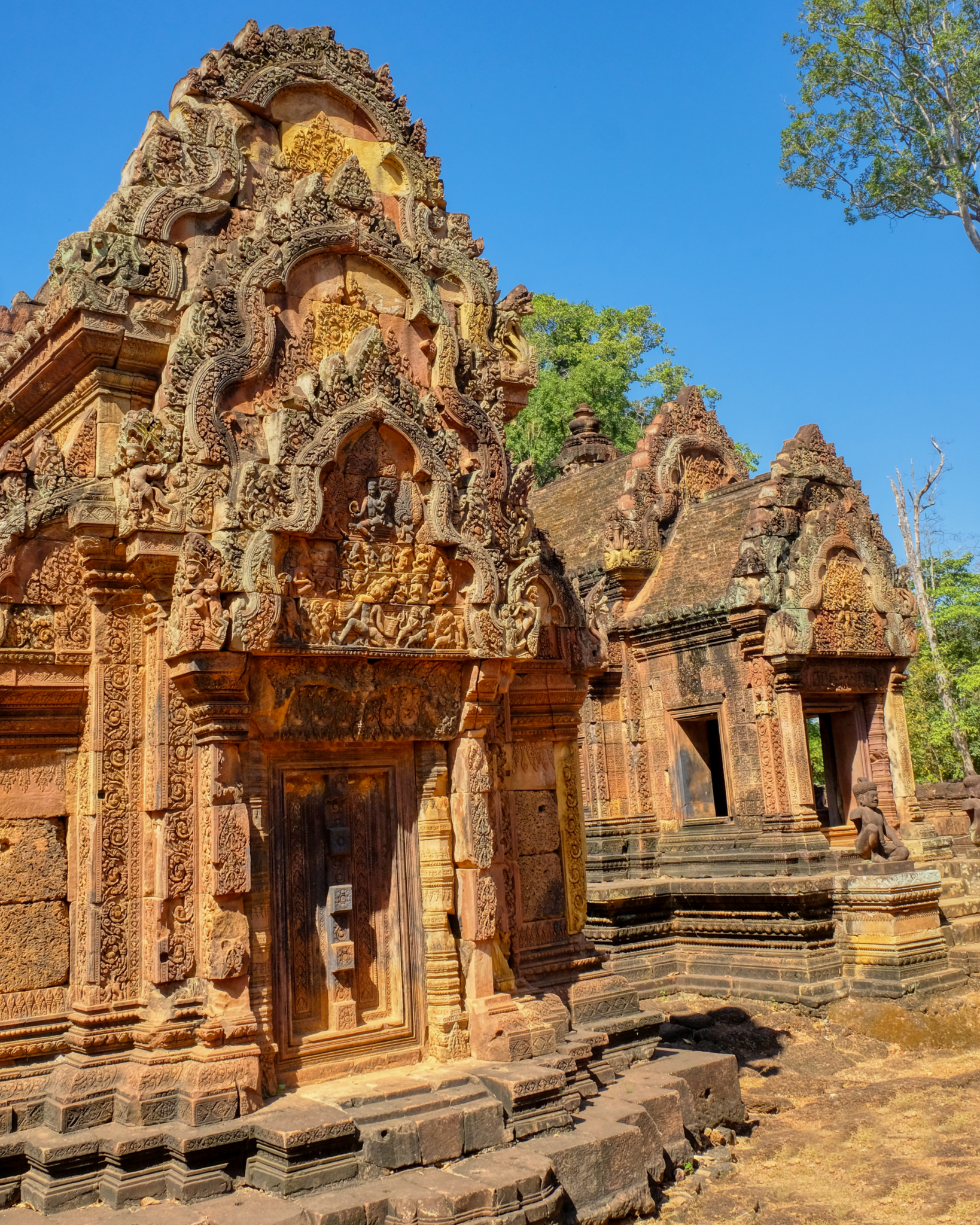 One of the last sites we visited had the temple structures made of a reddish stone with black volcanic rock accents. All carved, of course.
One of the last sites we visited had the temple structures made of a reddish stone with black volcanic rock accents. All carved, of course.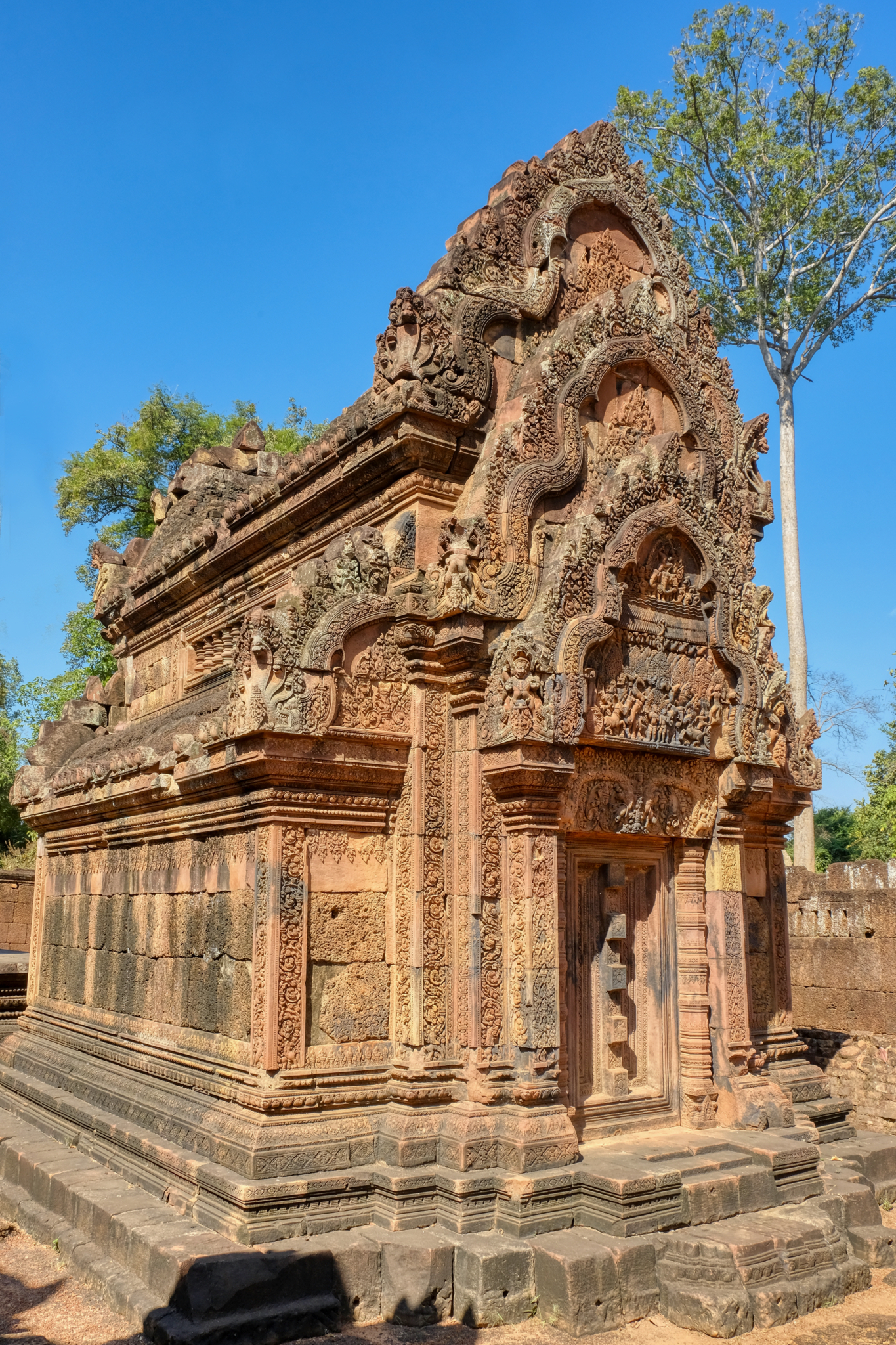 The carved details were very detailed and refined.
The carved details were very detailed and refined.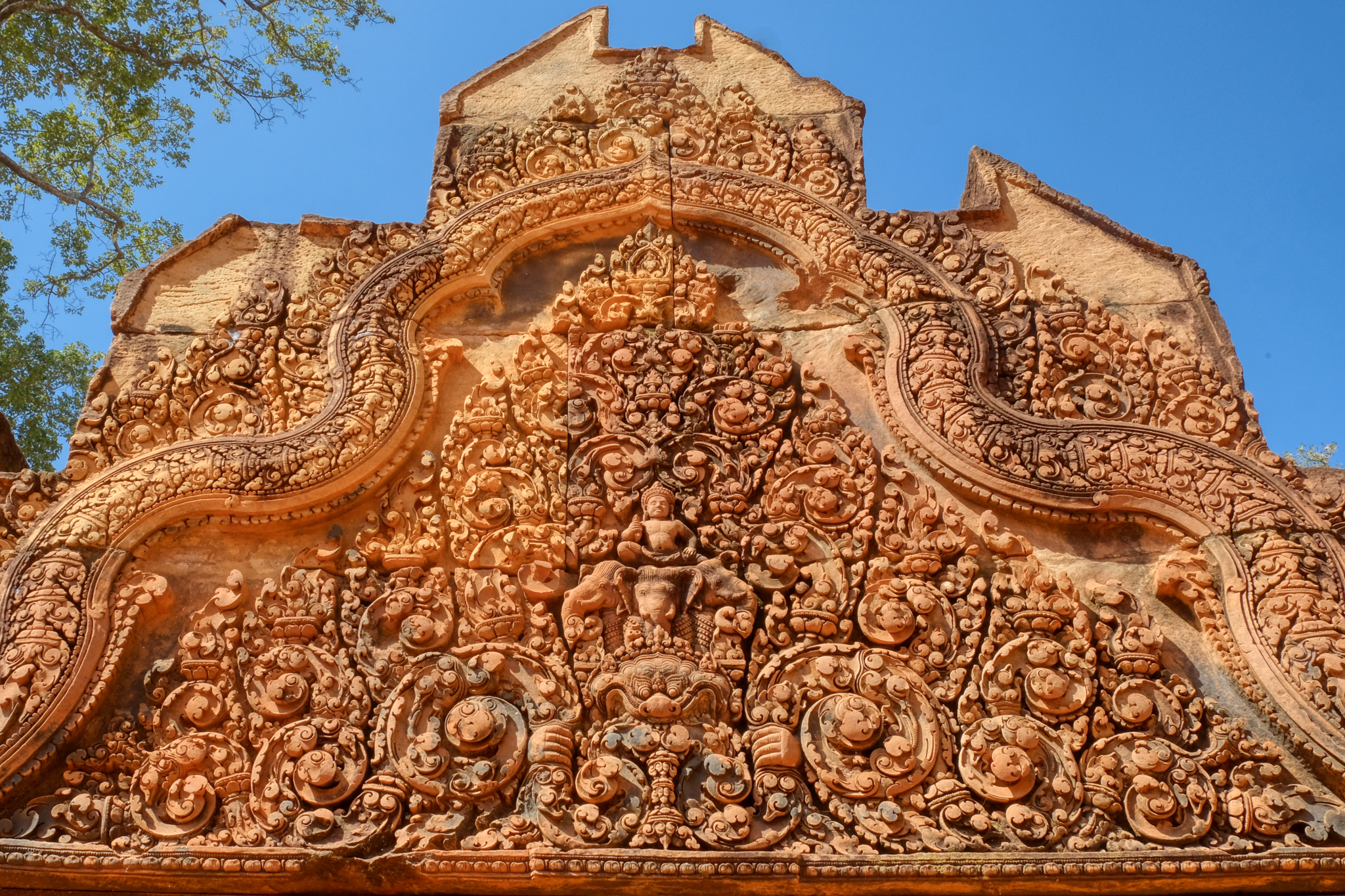 Upon closer inspection, I could not tell if these were fired red clay ceramics or a red sandstone . . . .
Upon closer inspection, I could not tell if these were fired red clay ceramics or a red sandstone . . . .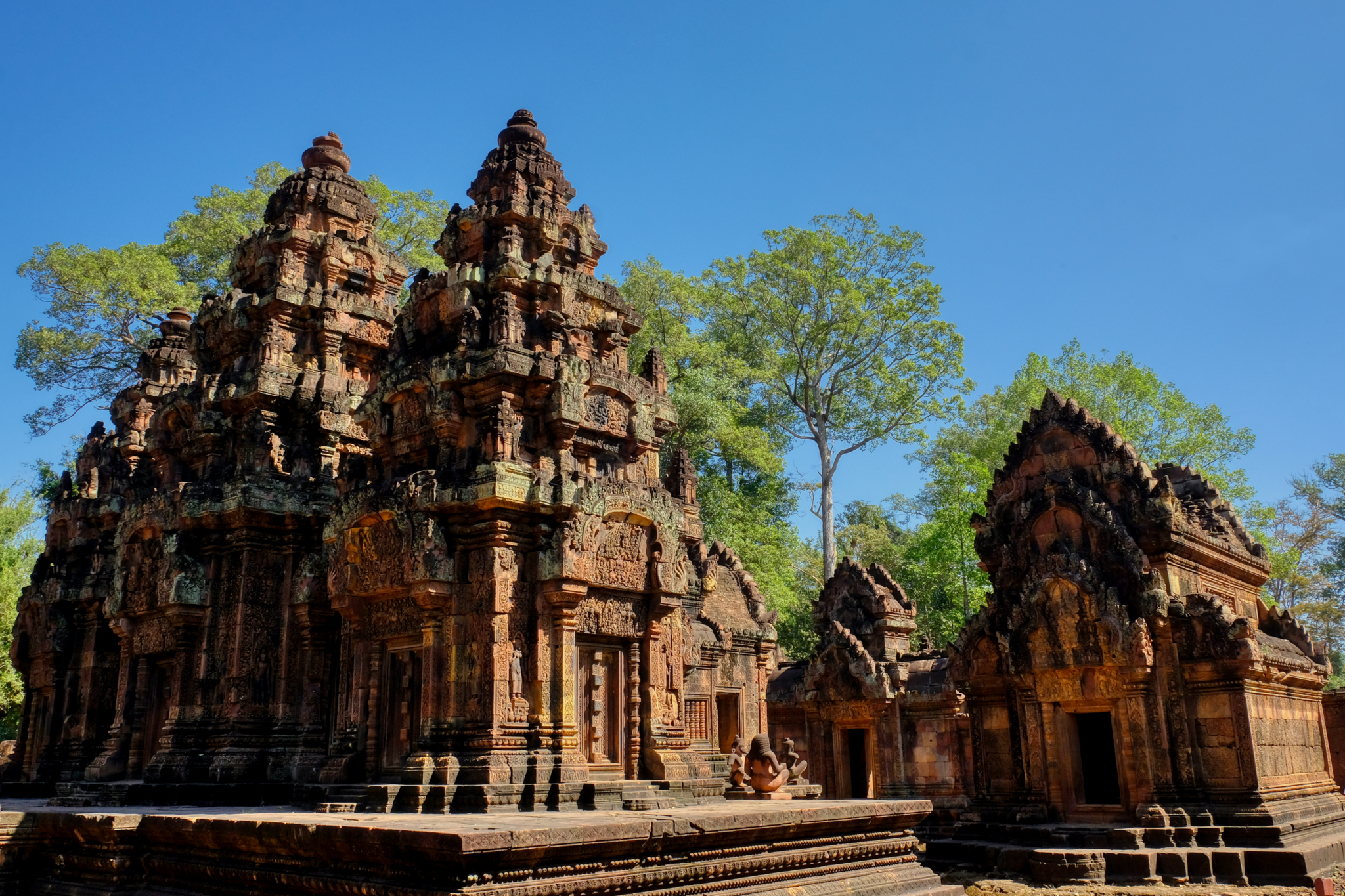 Late afternoon deep shadows on the red temple.
Late afternoon deep shadows on the red temple.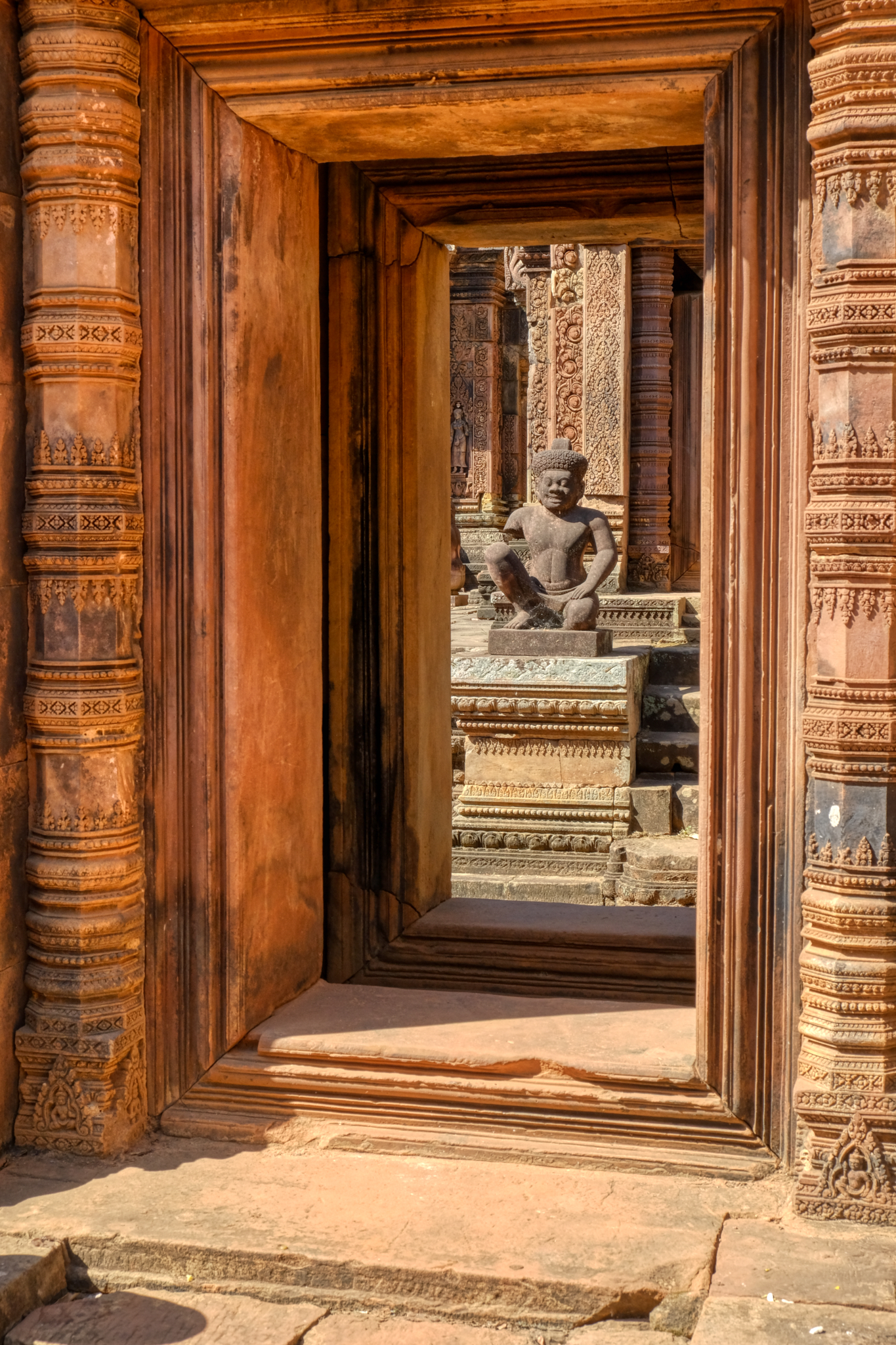 Many of these images, especially this one, lend themselves to printing and framing.
Many of these images, especially this one, lend themselves to printing and framing.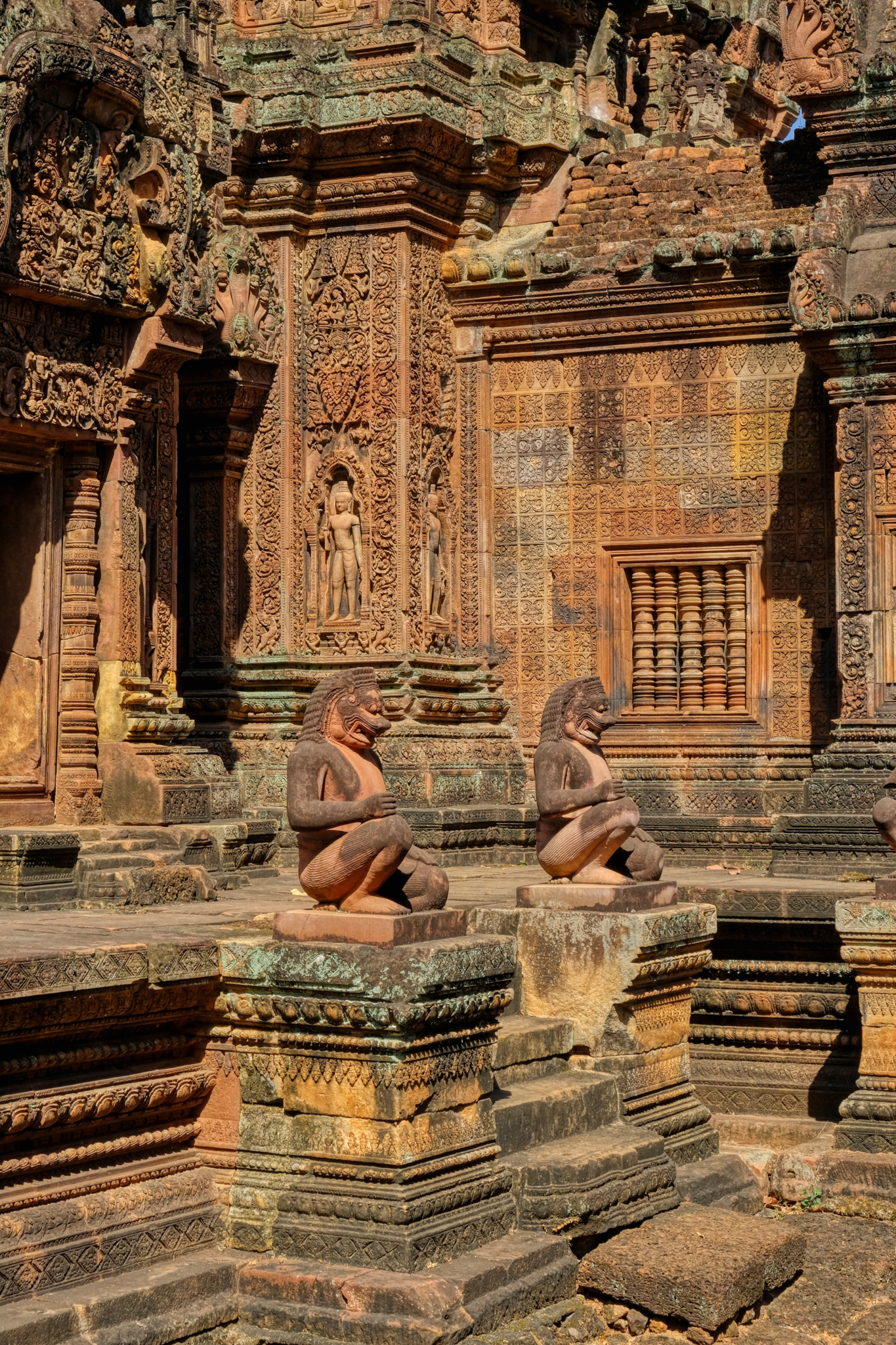 This temple had nearly no evidence of vandalism. Phenomenal beauty.
This temple had nearly no evidence of vandalism. Phenomenal beauty.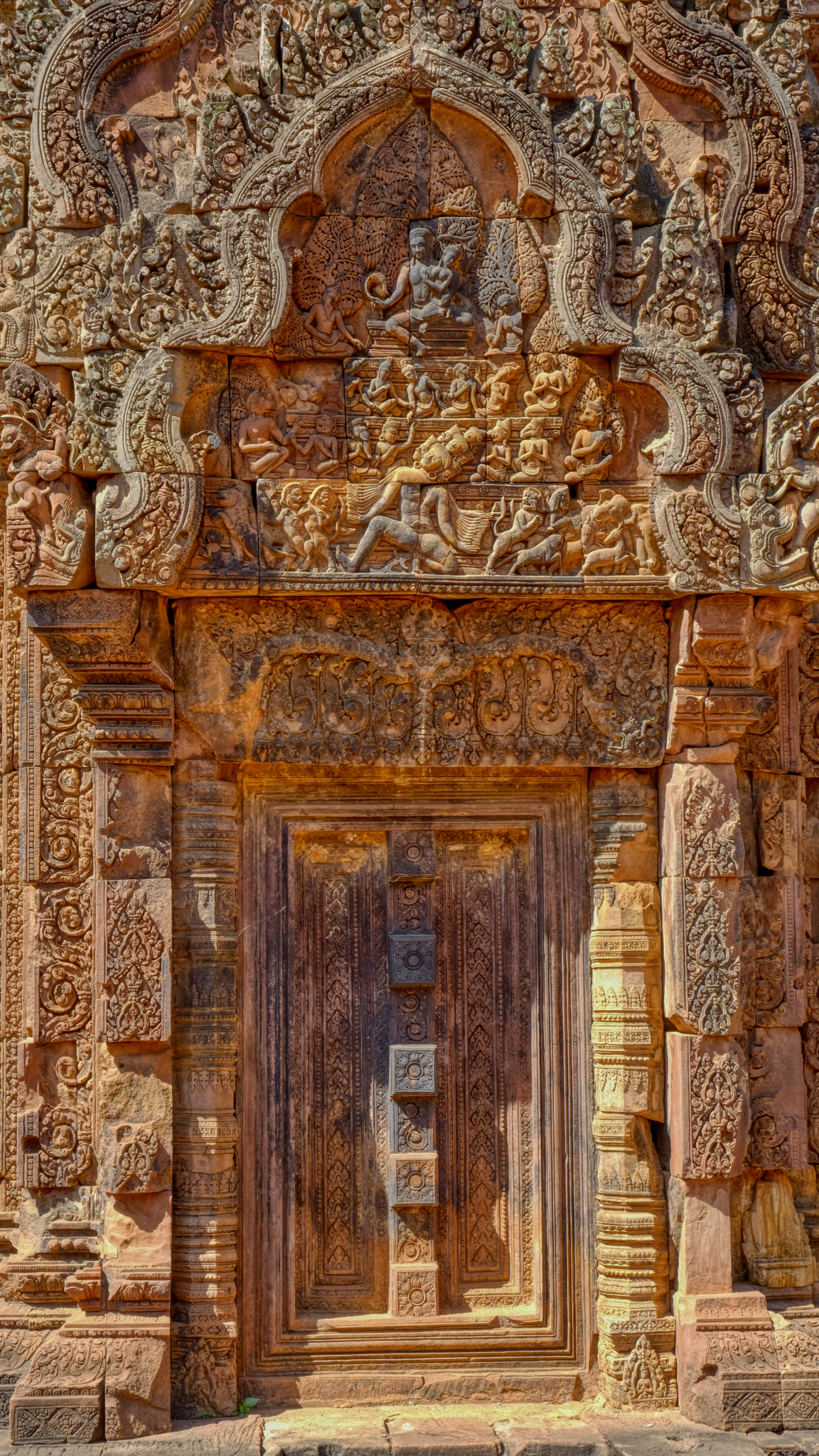 A magnificently carved stone door.
A magnificently carved stone door.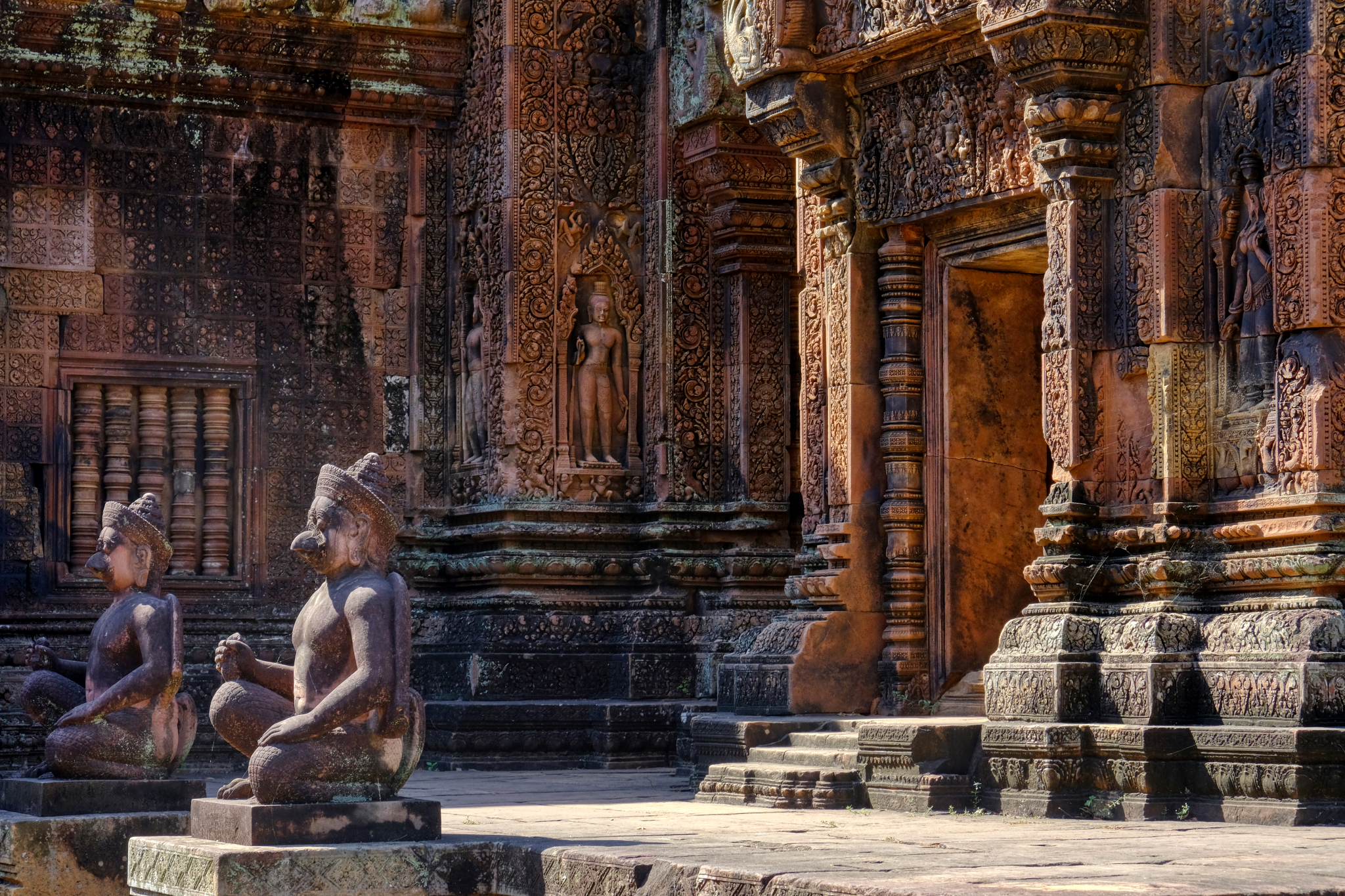 In the deep afternoon shadows, these statues in front of the carved temple presented an ancient, mystical image I will never forget.
In the deep afternoon shadows, these statues in front of the carved temple presented an ancient, mystical image I will never forget.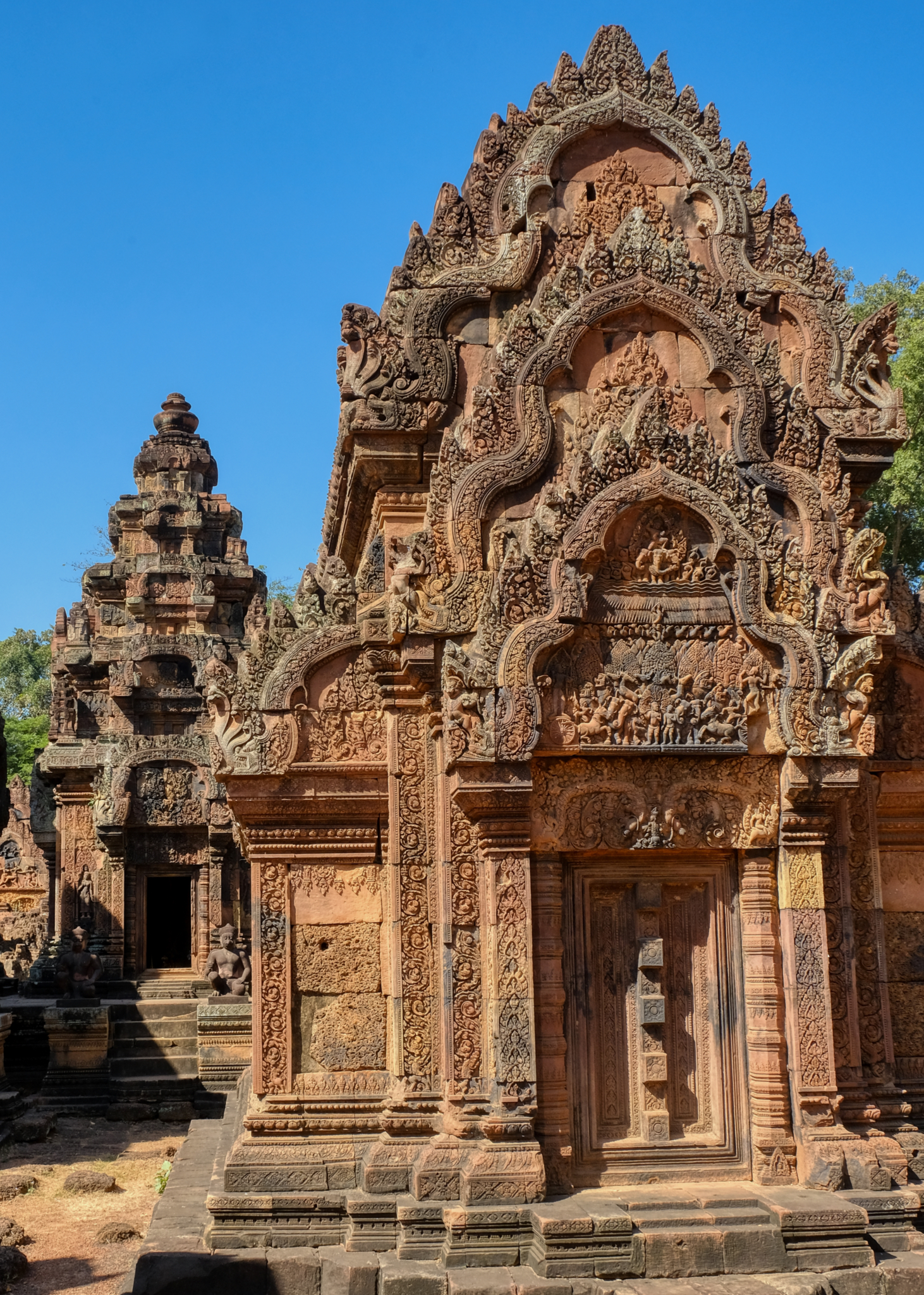 Many small temple structures filled the walled enclosure surrounded by a moat.
Many small temple structures filled the walled enclosure surrounded by a moat.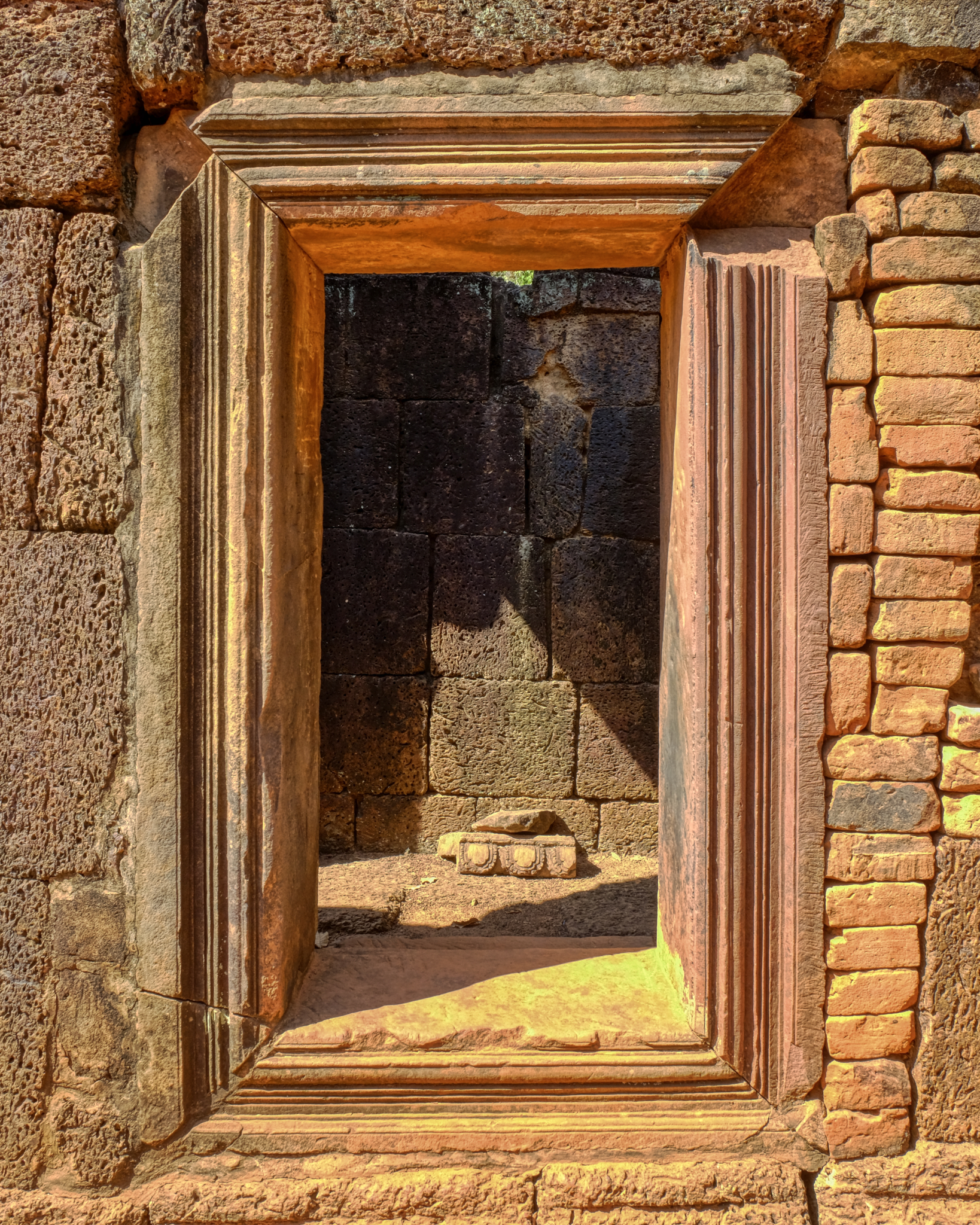 After exploring the red temple, and taking 30-40 photographs of windows and doors, we headed down the road again.
After exploring the red temple, and taking 30-40 photographs of windows and doors, we headed down the road again.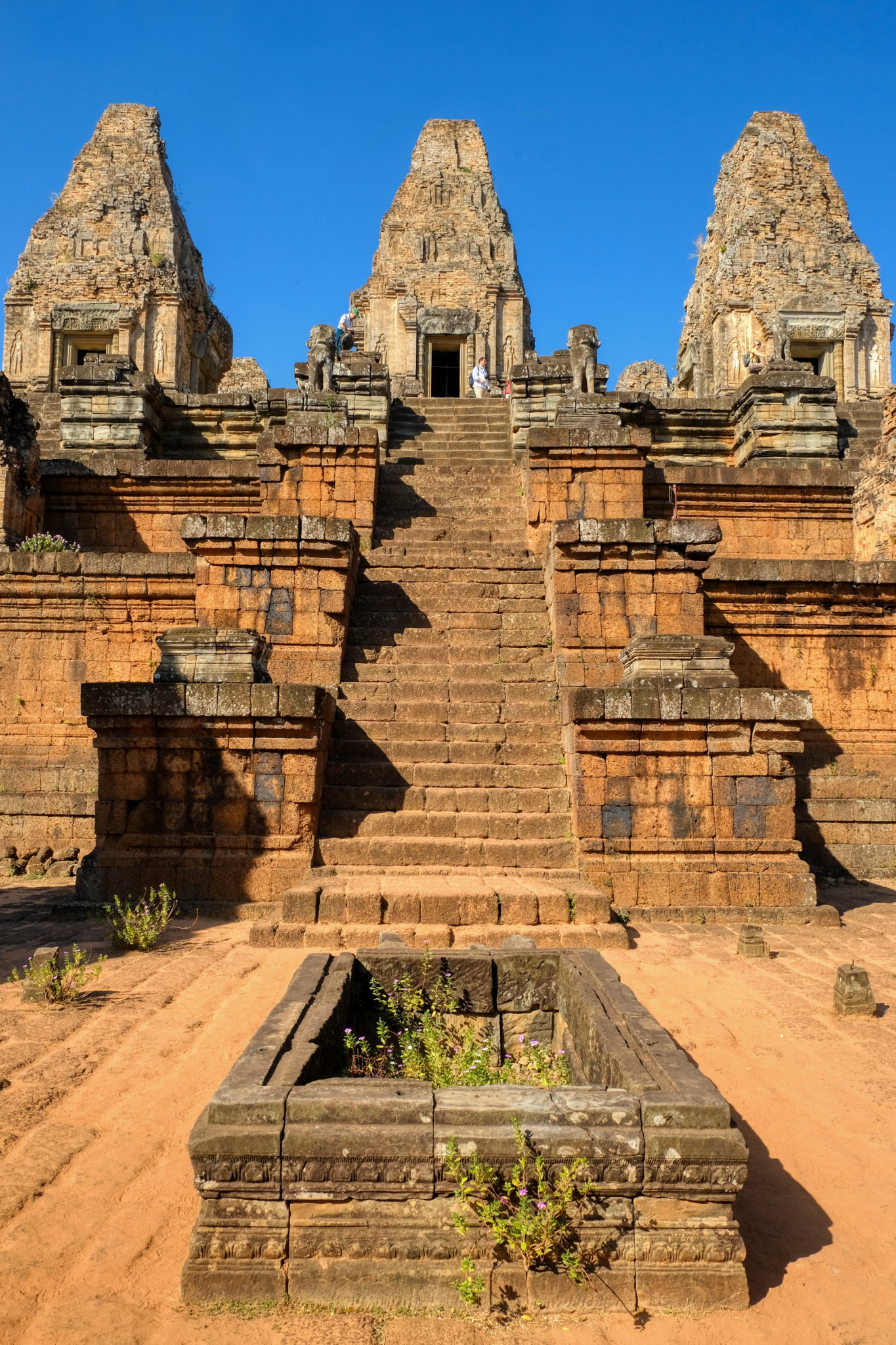 While speeding along a rural road, we yelled to the driver to stop when we saw this small temple alongside the road . . . .
While speeding along a rural road, we yelled to the driver to stop when we saw this small temple alongside the road . . . .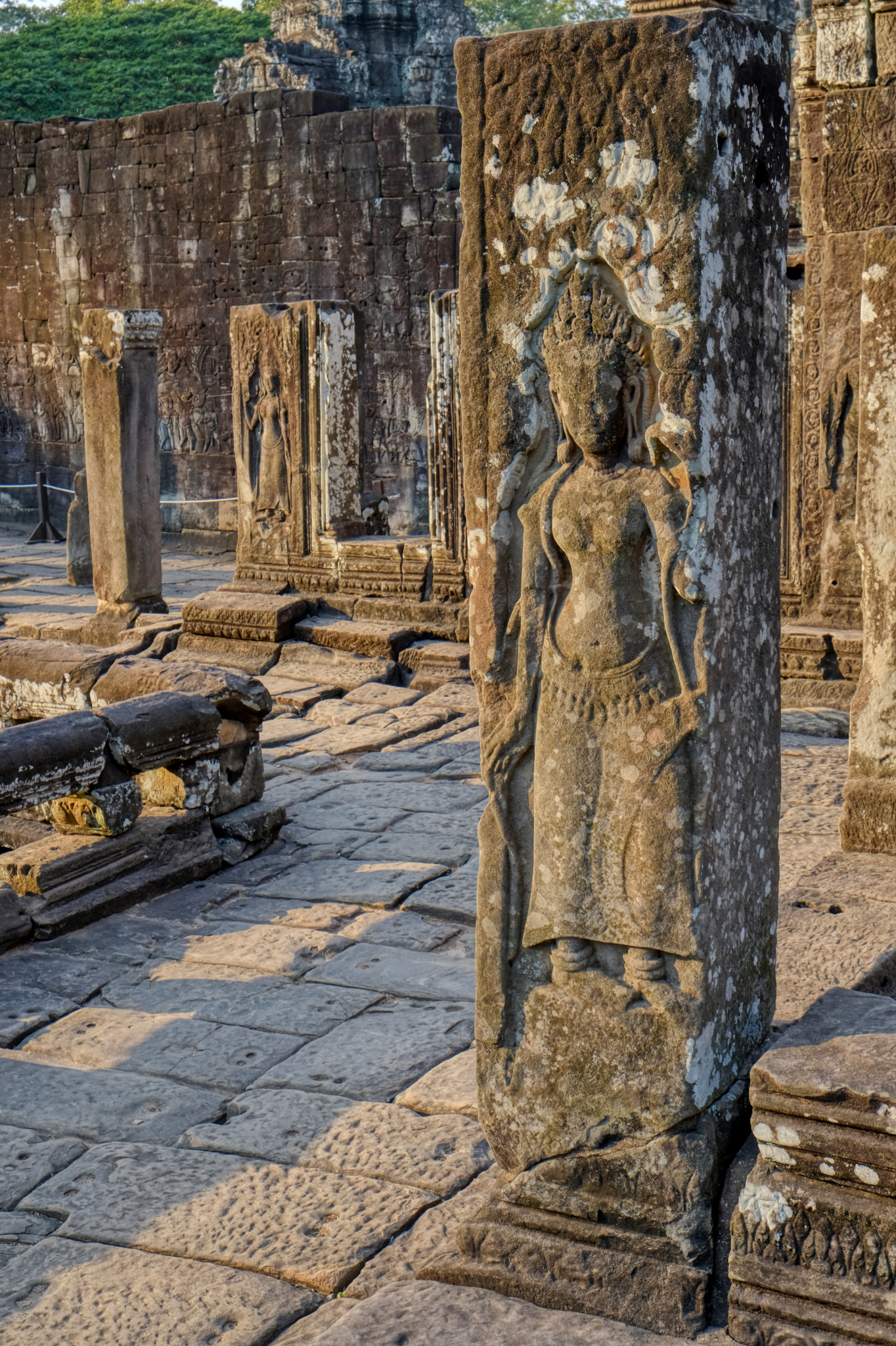 A remarkable temple in the late magic light.
A remarkable temple in the late magic light.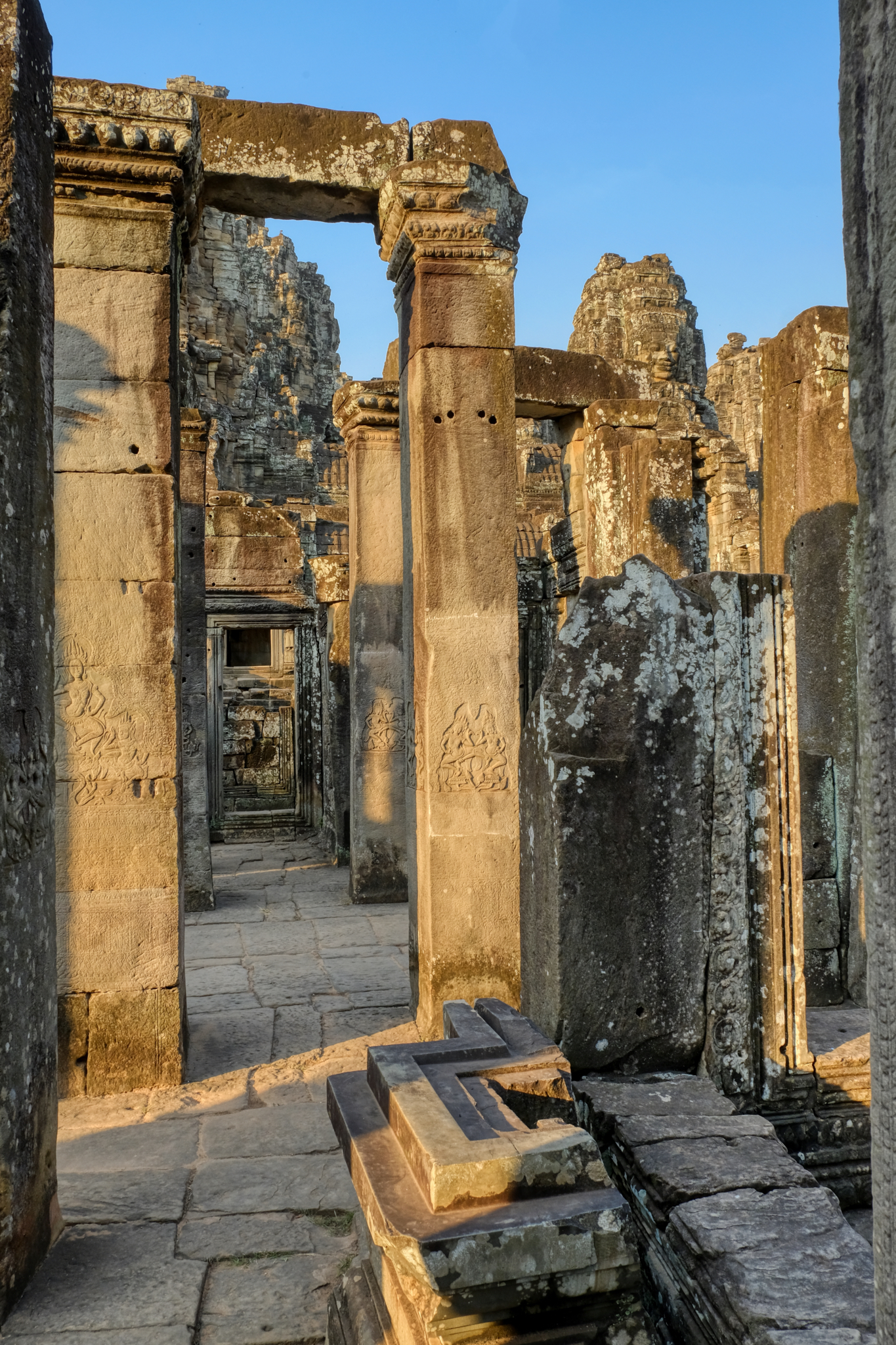 Stunning bas reliefs on the columns.
Stunning bas reliefs on the columns.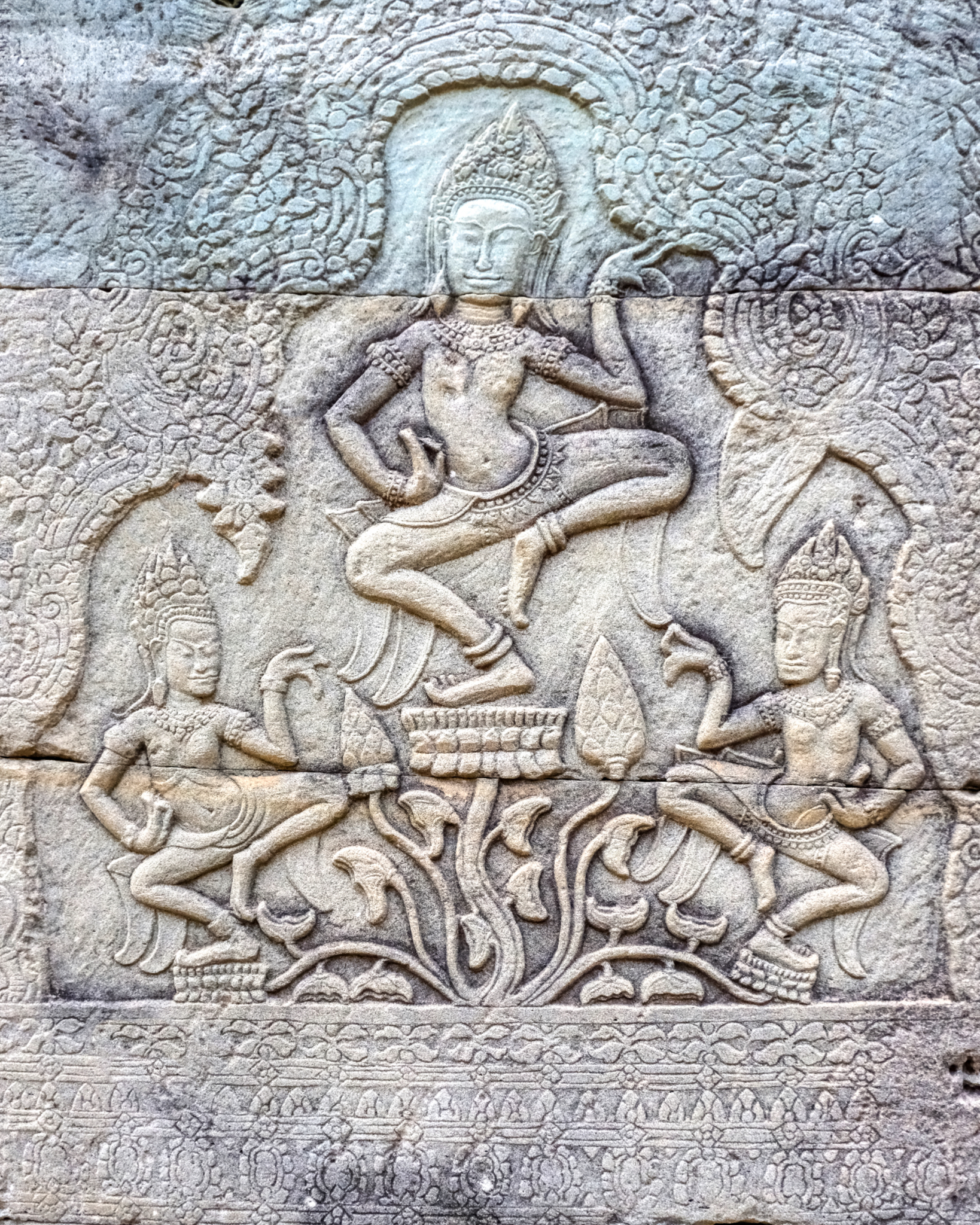 One of the columns' bas relief of a dancer.
One of the columns' bas relief of a dancer.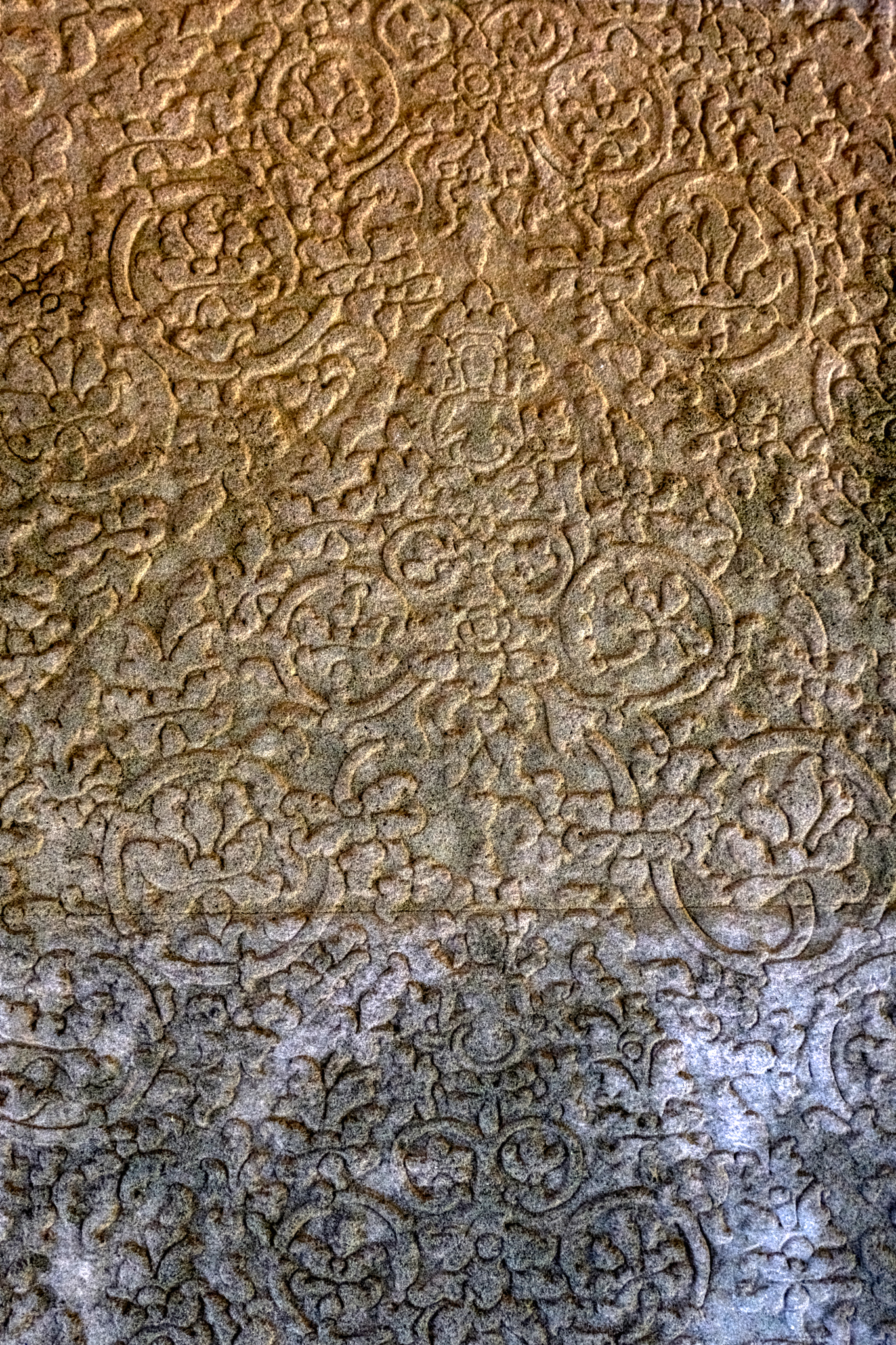 Almost every surface of this temple was incised with these marvelous patterns.
Almost every surface of this temple was incised with these marvelous patterns.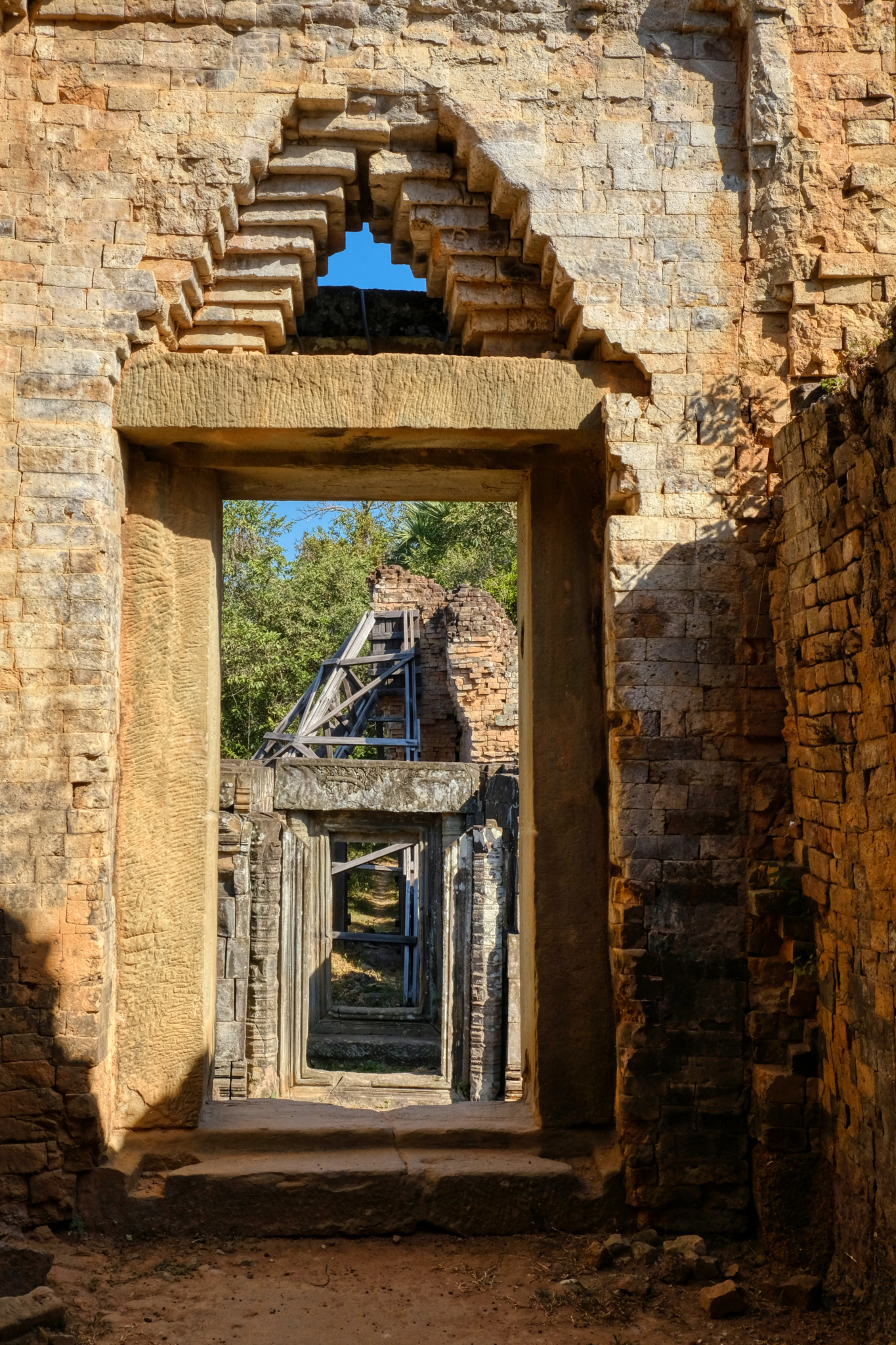 We wandered around this small temple for only 15 minutes before heading out with the driver again. I must go back!!!
We wandered around this small temple for only 15 minutes before heading out with the driver again. I must go back!!!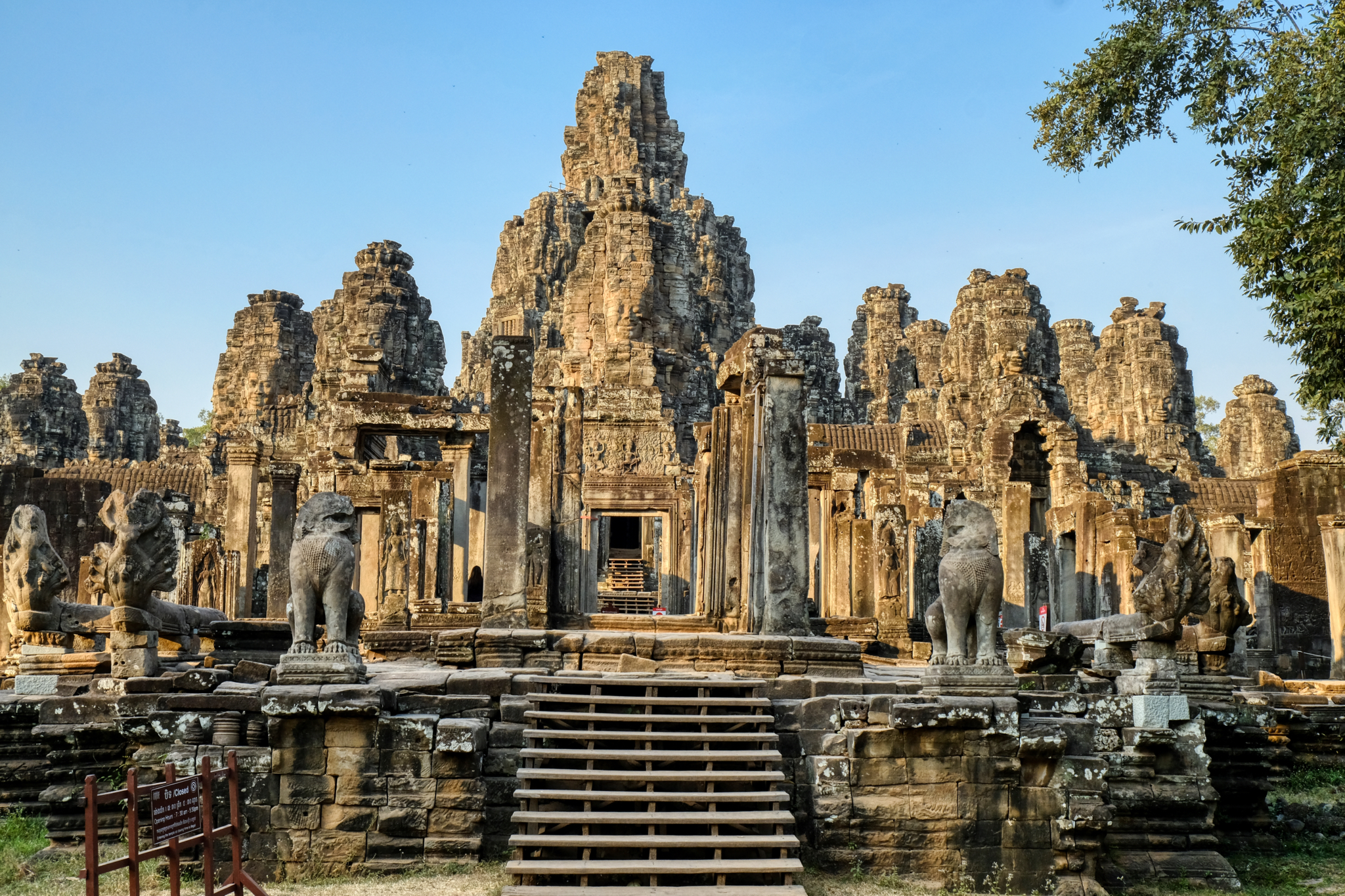 Another roadside temple . . . this photograph taken out of the window of the car. No time to explore it.
Another roadside temple . . . this photograph taken out of the window of the car. No time to explore it.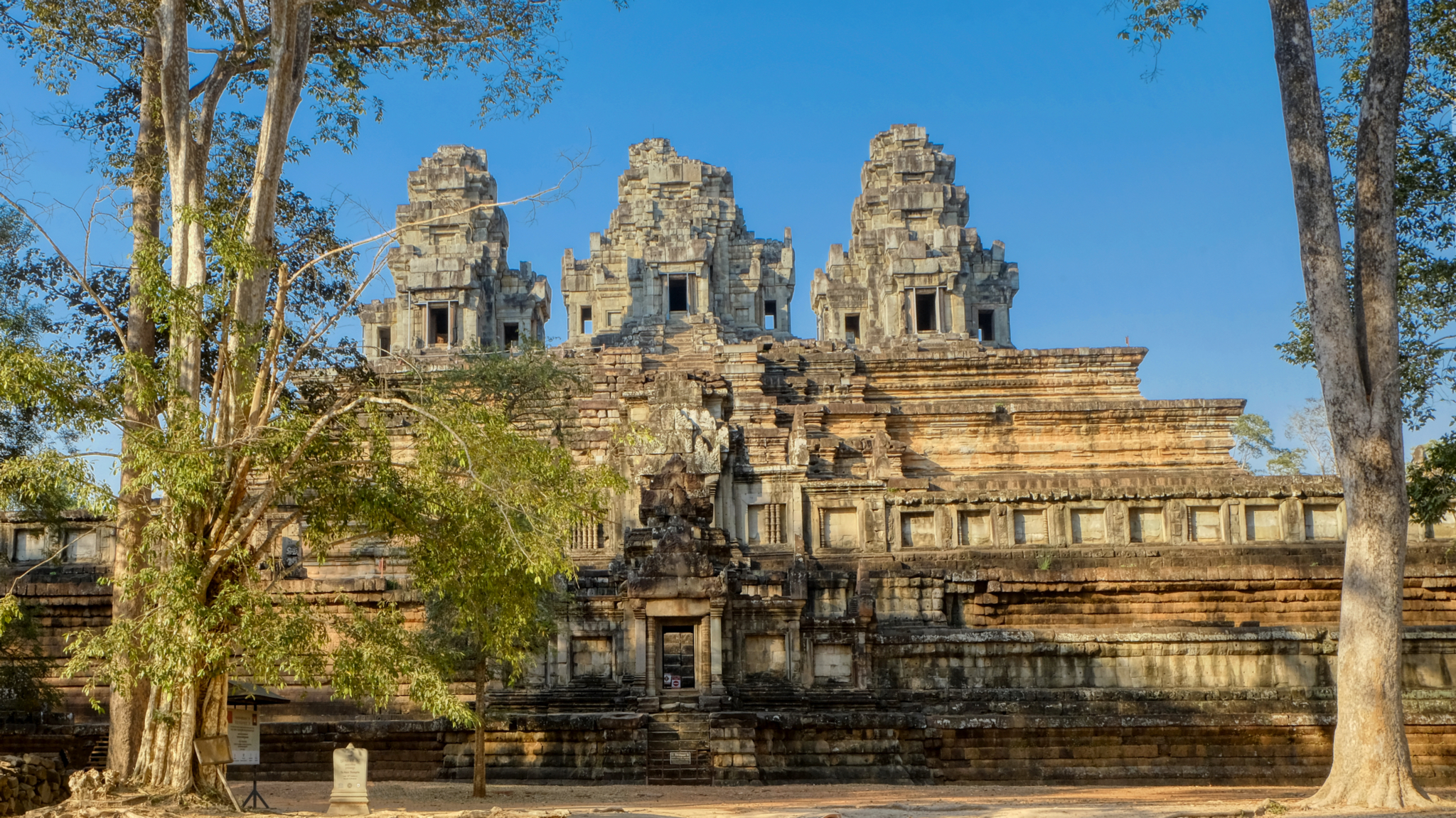 Yet another photo taken from the car of a temple not explored . . . I MUST come back!
Yet another photo taken from the car of a temple not explored . . . I MUST come back! A highlight of the day was the 'discovery' of the halls of carved stone concubines at a place called the elephant race track.
A highlight of the day was the 'discovery' of the halls of carved stone concubines at a place called the elephant race track.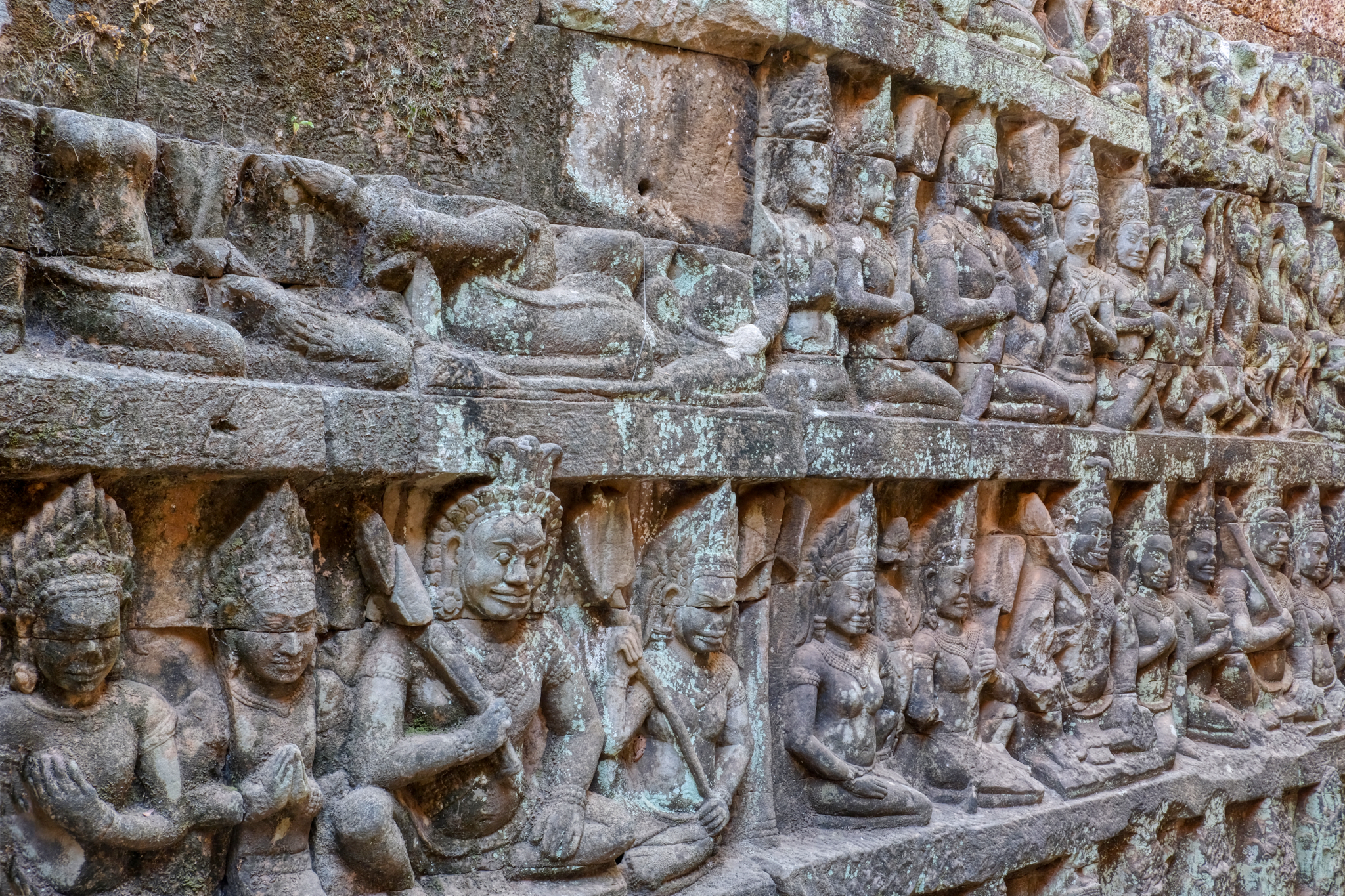 Hundreds and hundreds of individuals represented in stone.
Hundreds and hundreds of individuals represented in stone.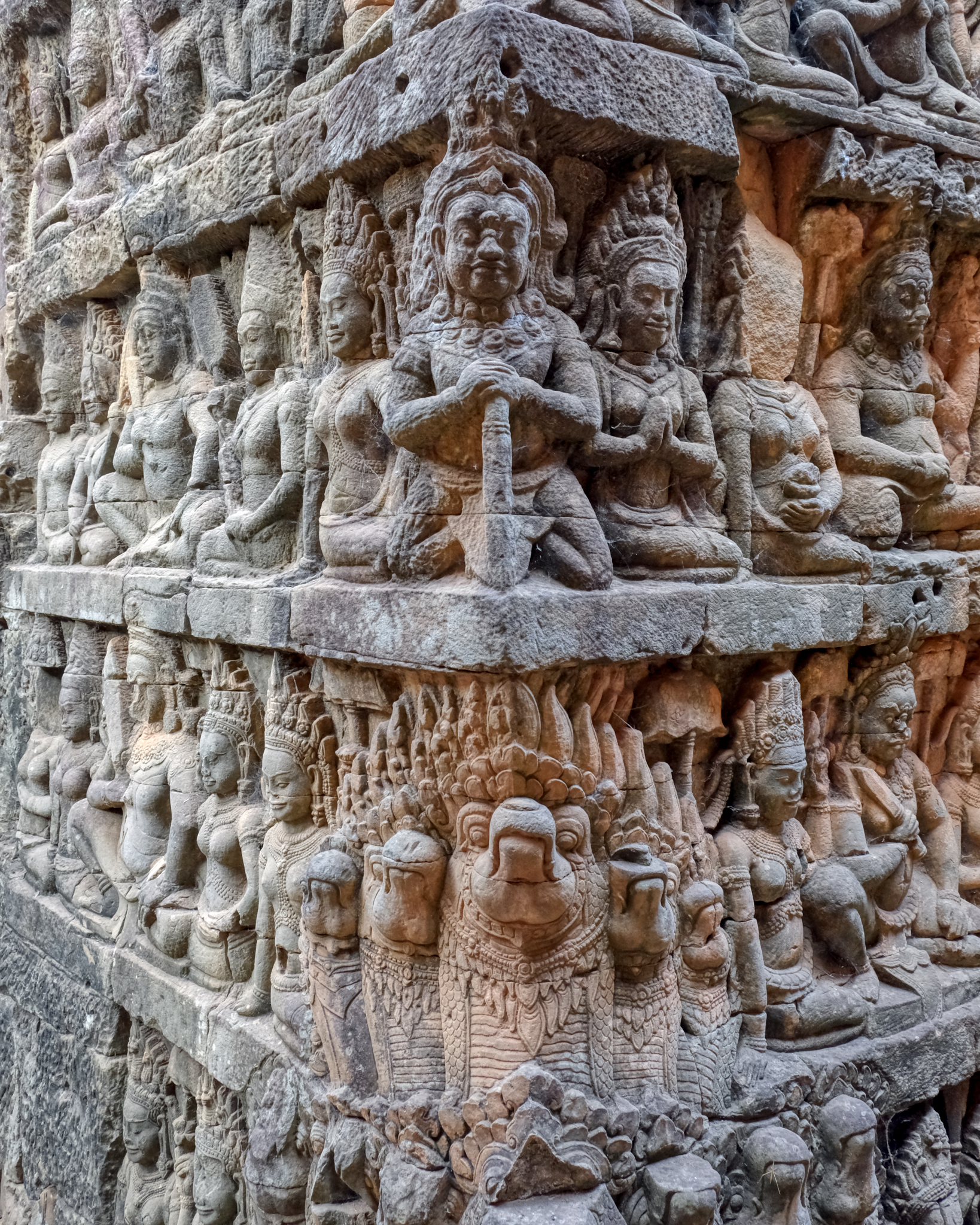 An incredible archeological find.
An incredible archeological find.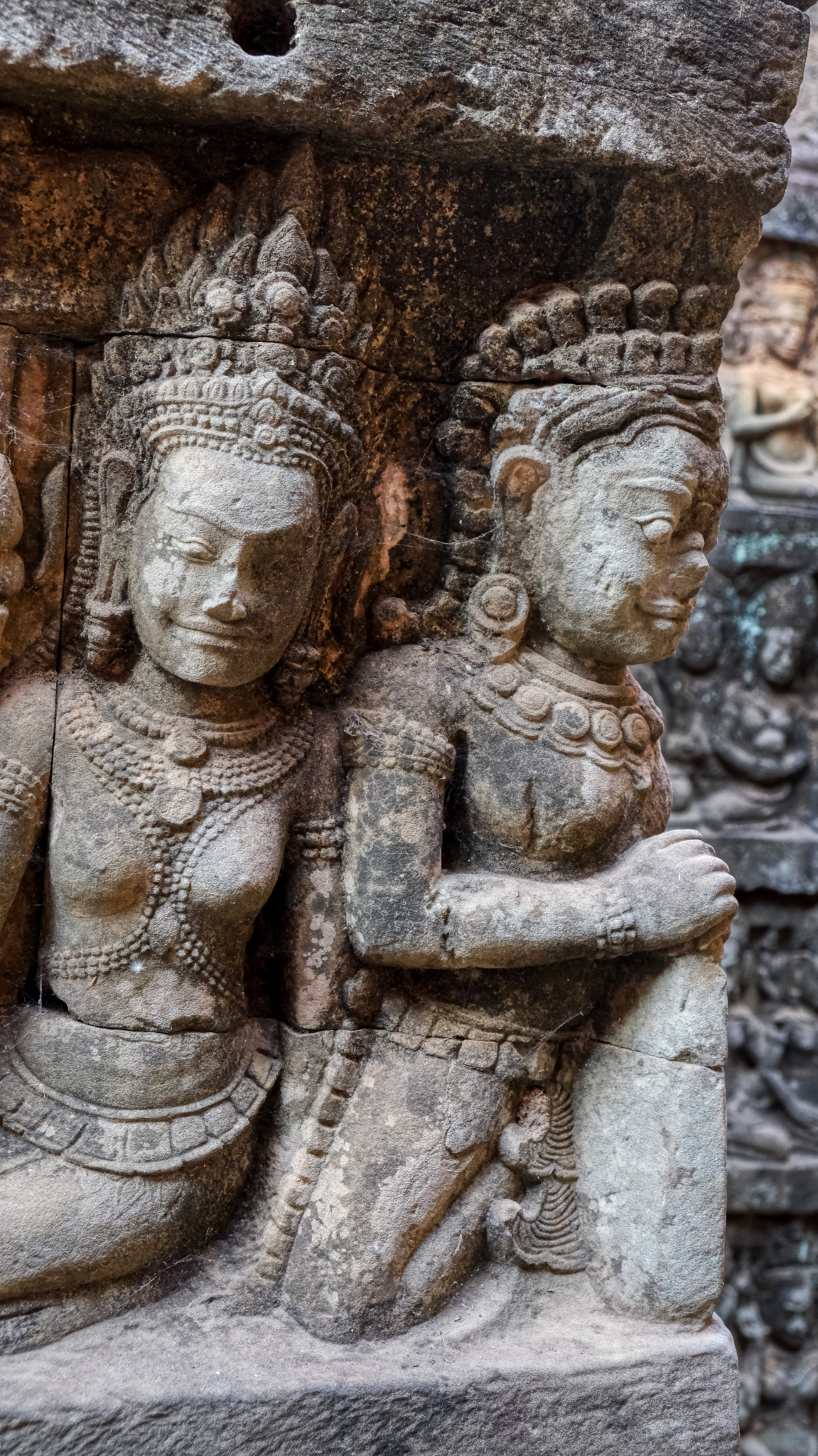 Great detail.
Great detail.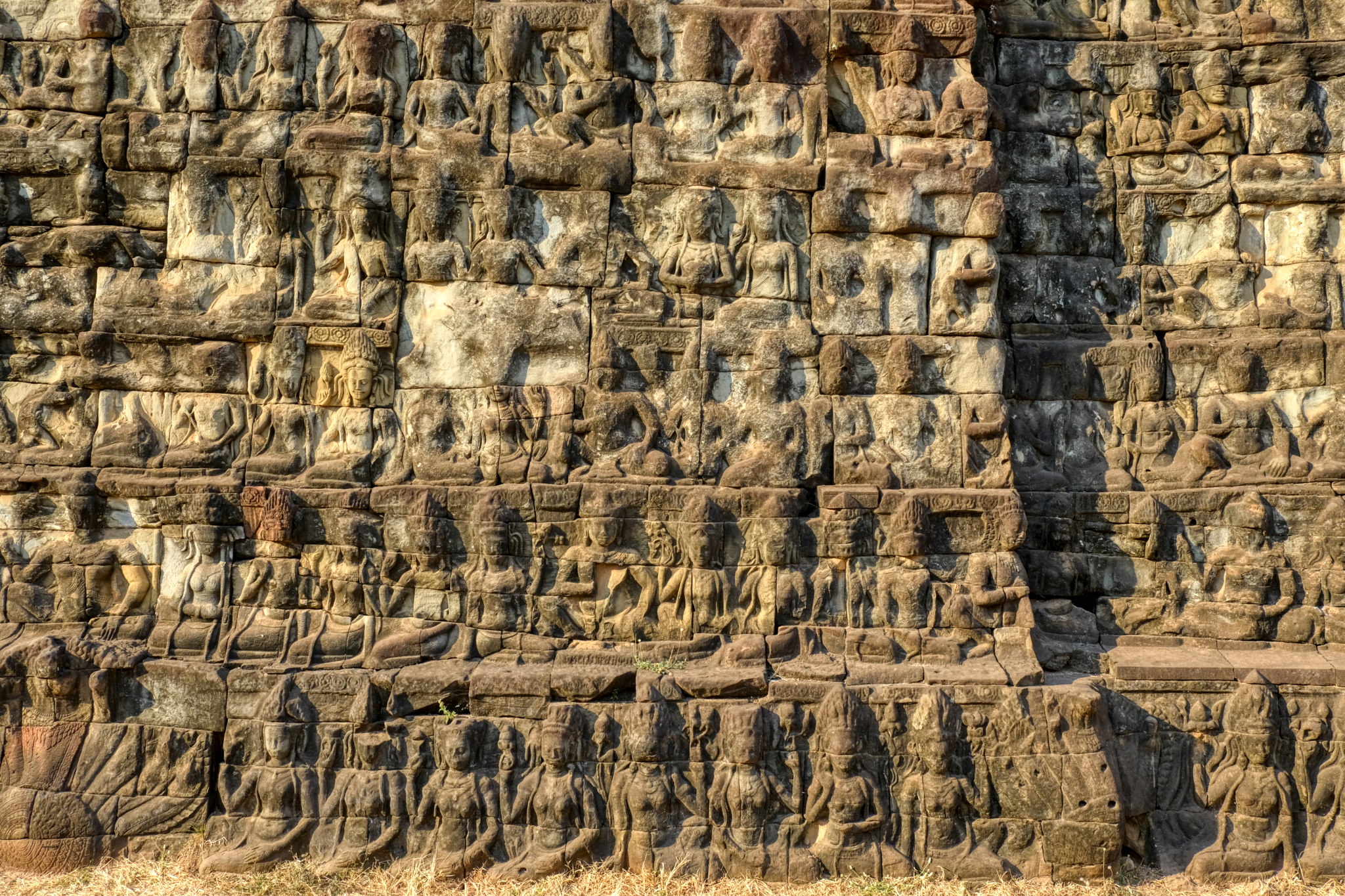 Another wall of concubines in the late sunlight.
Another wall of concubines in the late sunlight.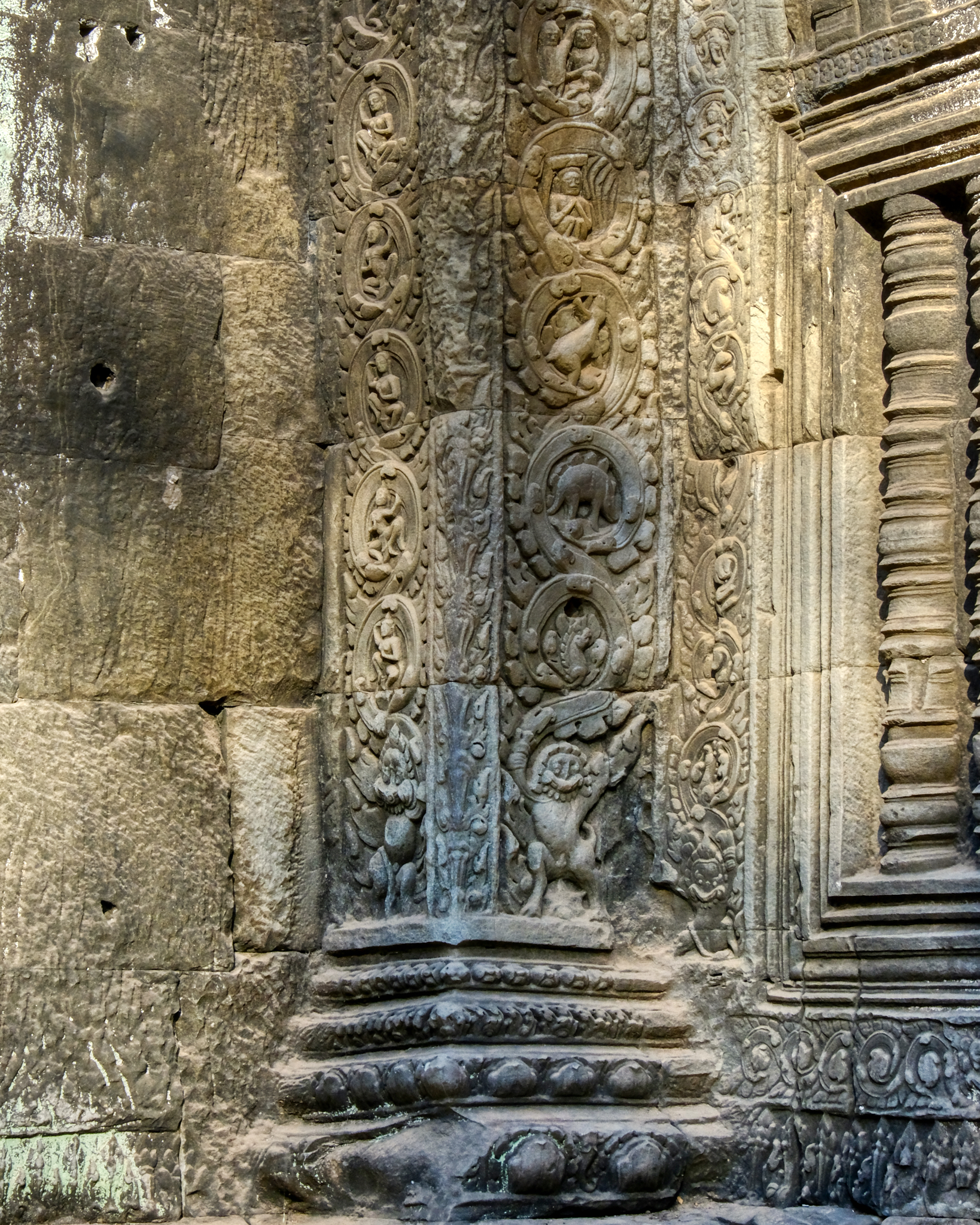 This corner panel has stumped archaeologists for a hundred years. See if you can spot the carved stegosaurus (3rd one up from the bottom on right). . . . they didn't know about the dinosaurs at that time!
This corner panel has stumped archaeologists for a hundred years. See if you can spot the carved stegosaurus (3rd one up from the bottom on right). . . . they didn't know about the dinosaurs at that time!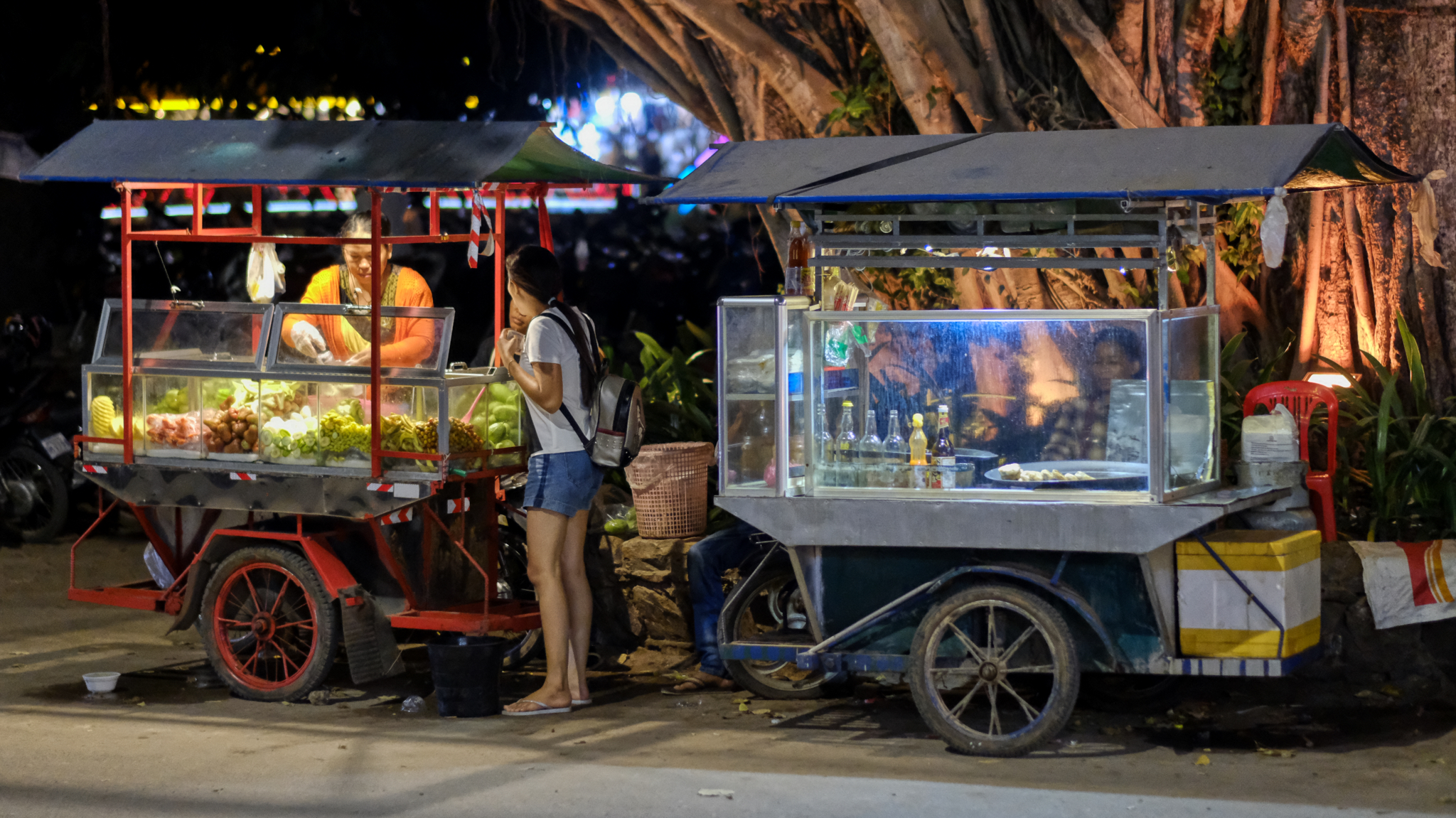 We stayed at the nearby town of Siem Reap. Although it was filling up with tourists (before the Covid-19 scare), it was a pleasant and vibrant little place with good restaurants and good shopping.
We stayed at the nearby town of Siem Reap. Although it was filling up with tourists (before the Covid-19 scare), it was a pleasant and vibrant little place with good restaurants and good shopping.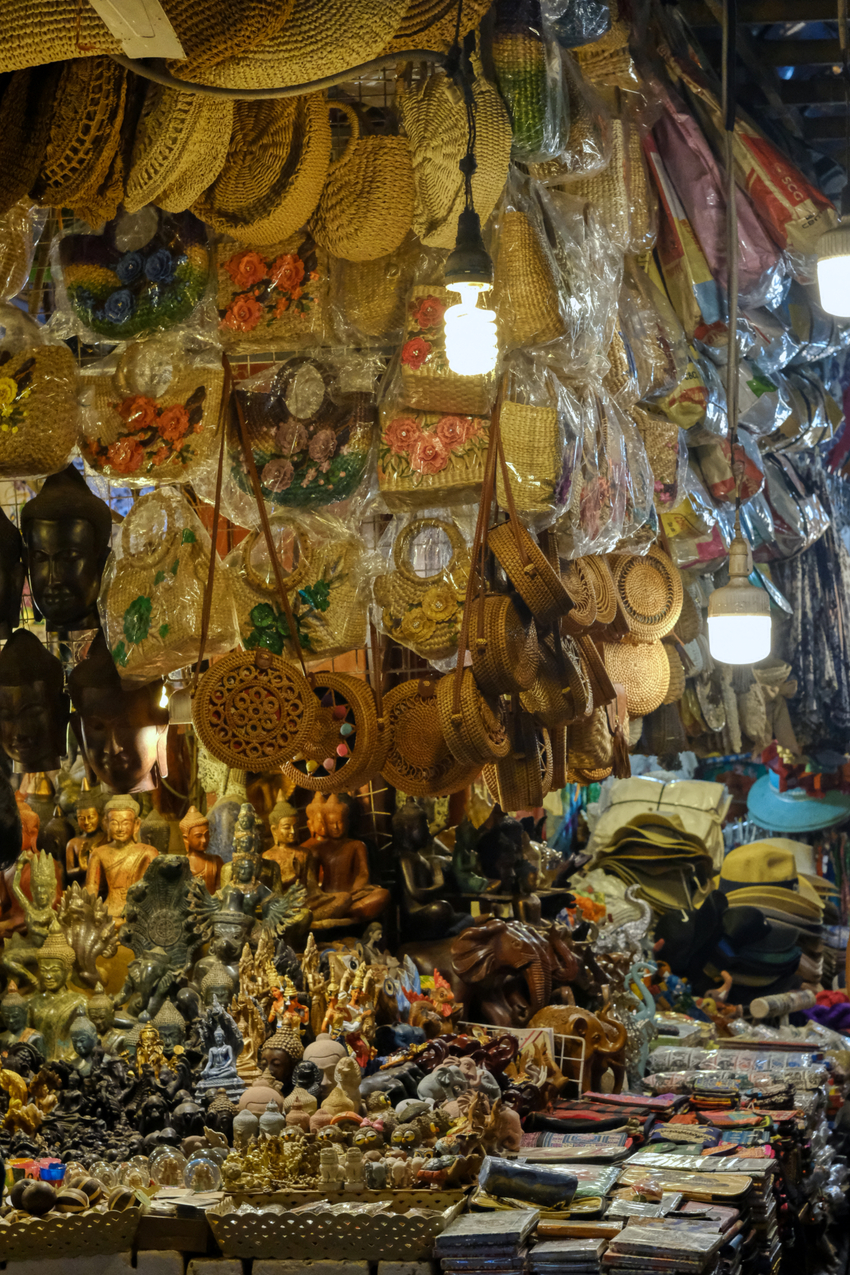 There was an extensive 'night market' stuffed with tourist curios . . . and some very nice things too.
There was an extensive 'night market' stuffed with tourist curios . . . and some very nice things too.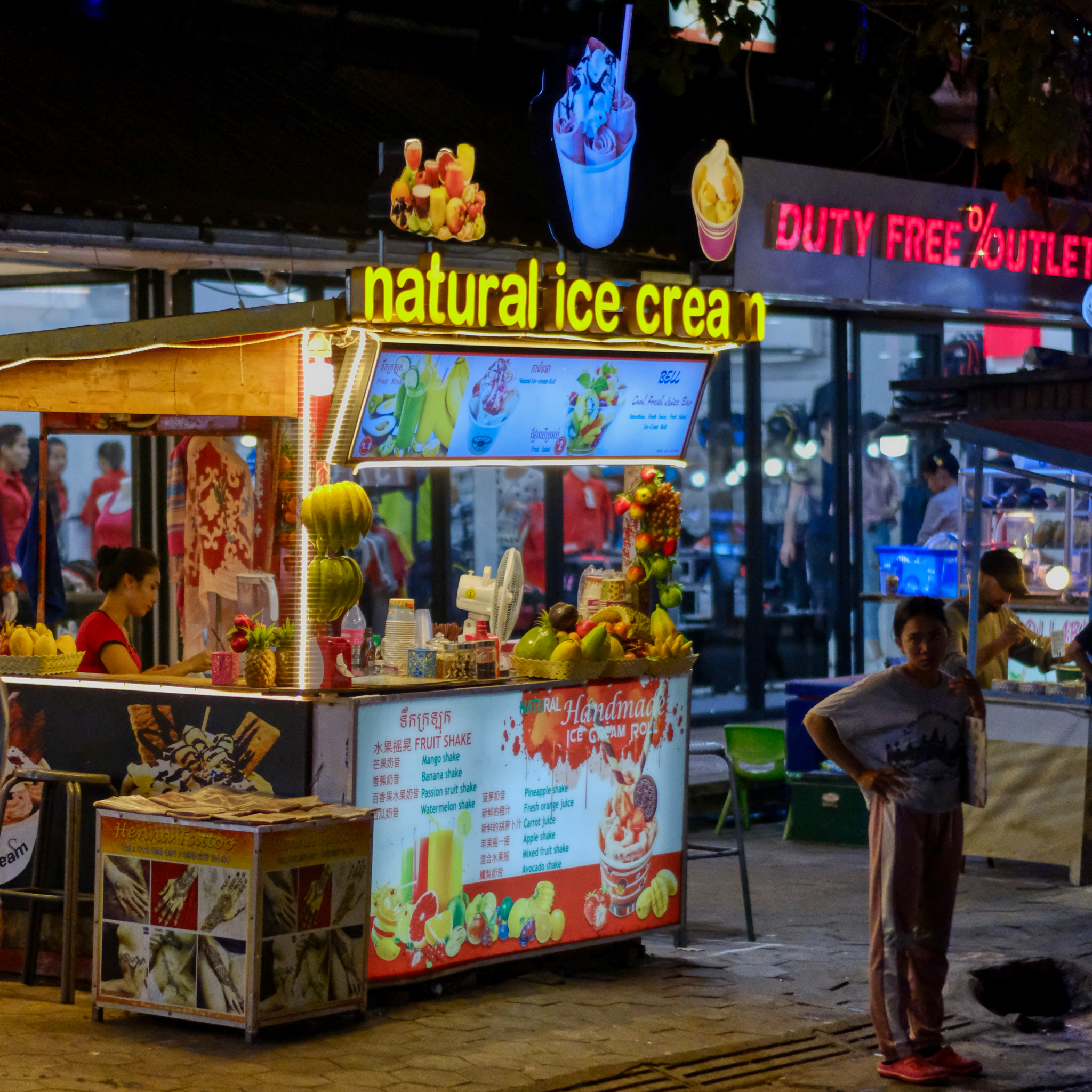 Yes, everything an international tourist might want on a hot Cambodian night.
Yes, everything an international tourist might want on a hot Cambodian night.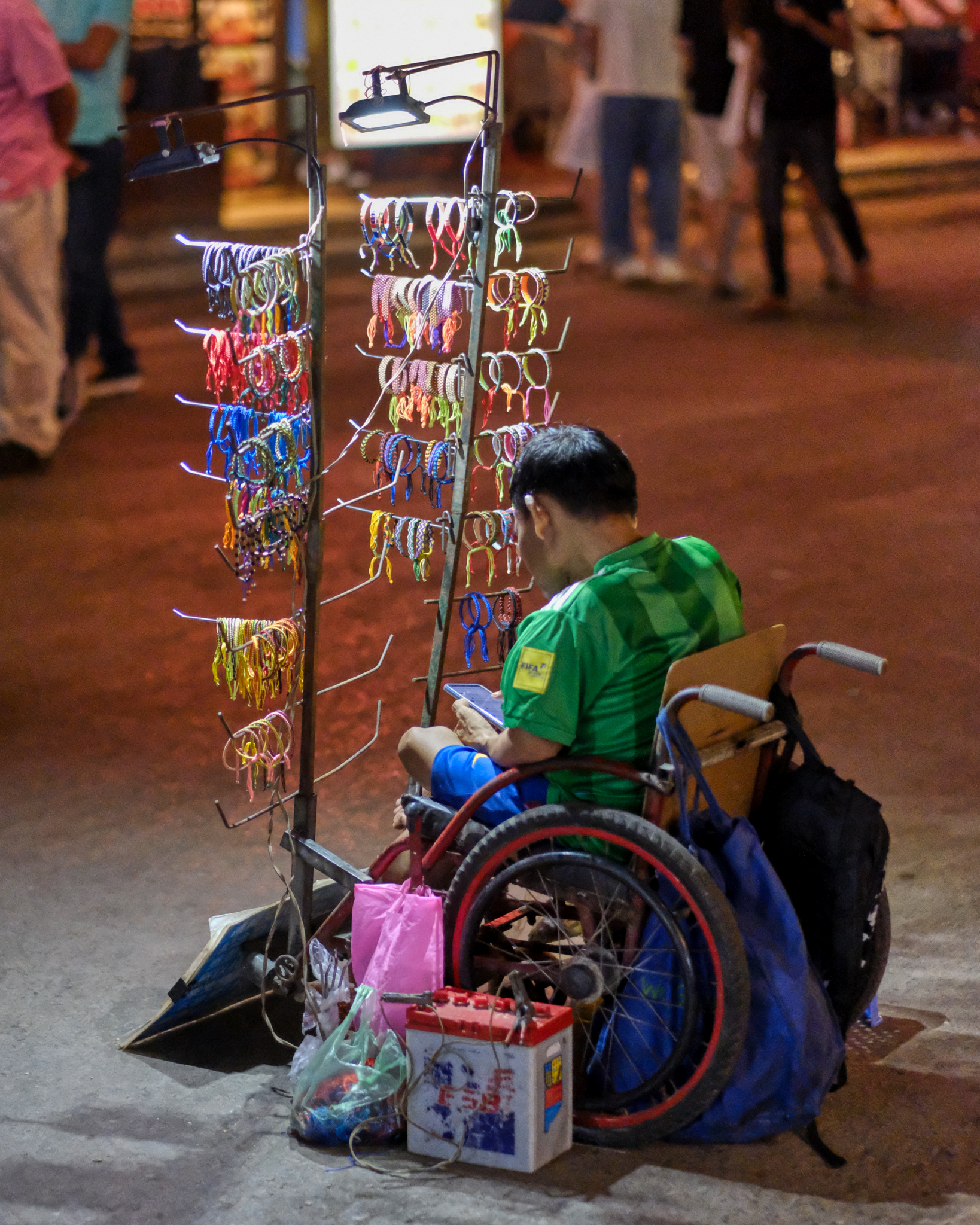 I bought some bracelets from this hard working guy.
I bought some bracelets from this hard working guy.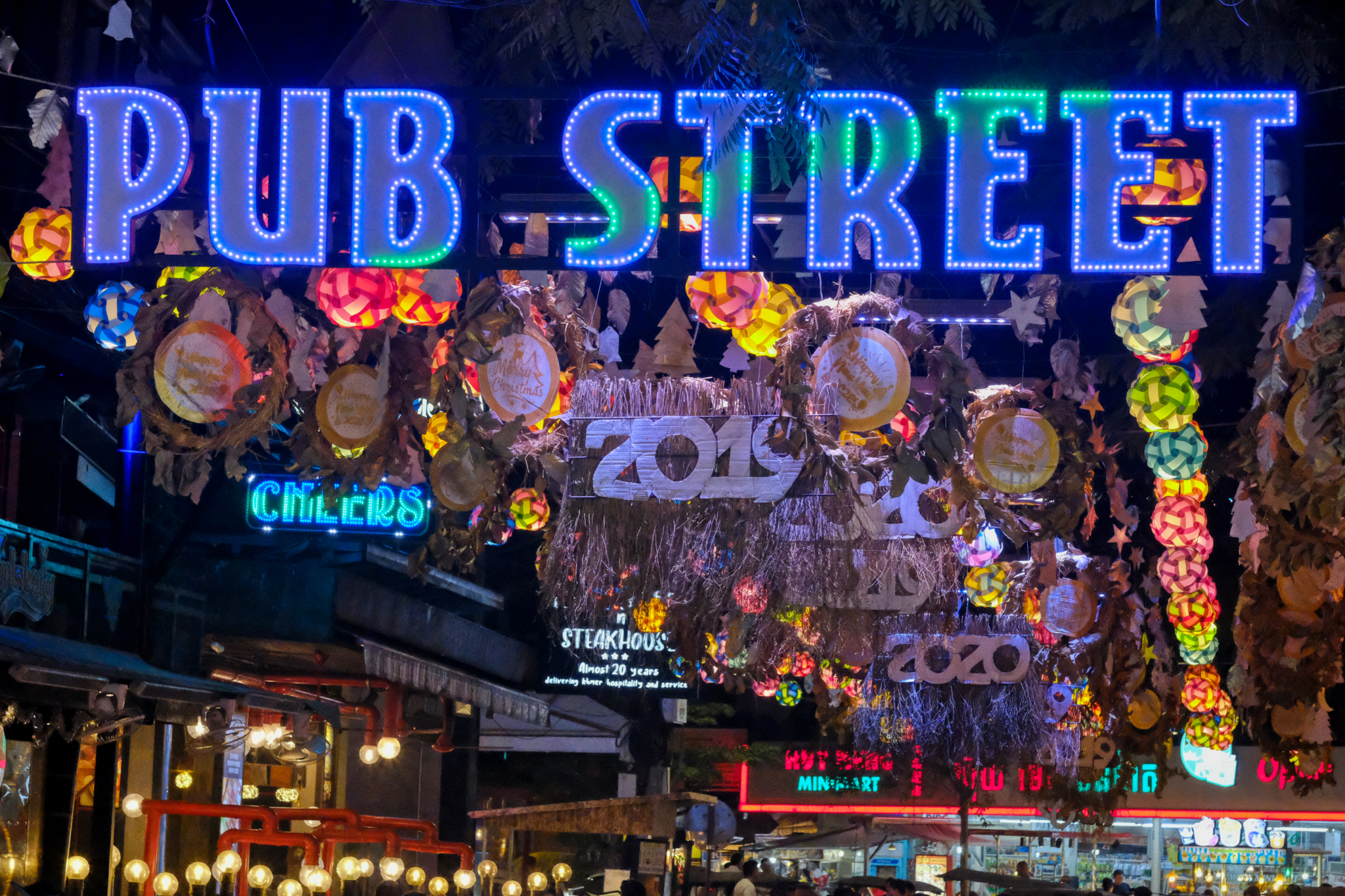 We had a feeling we were not the first tourists to have visited Siem Reap. Pub Street was a lively place.
We had a feeling we were not the first tourists to have visited Siem Reap. Pub Street was a lively place.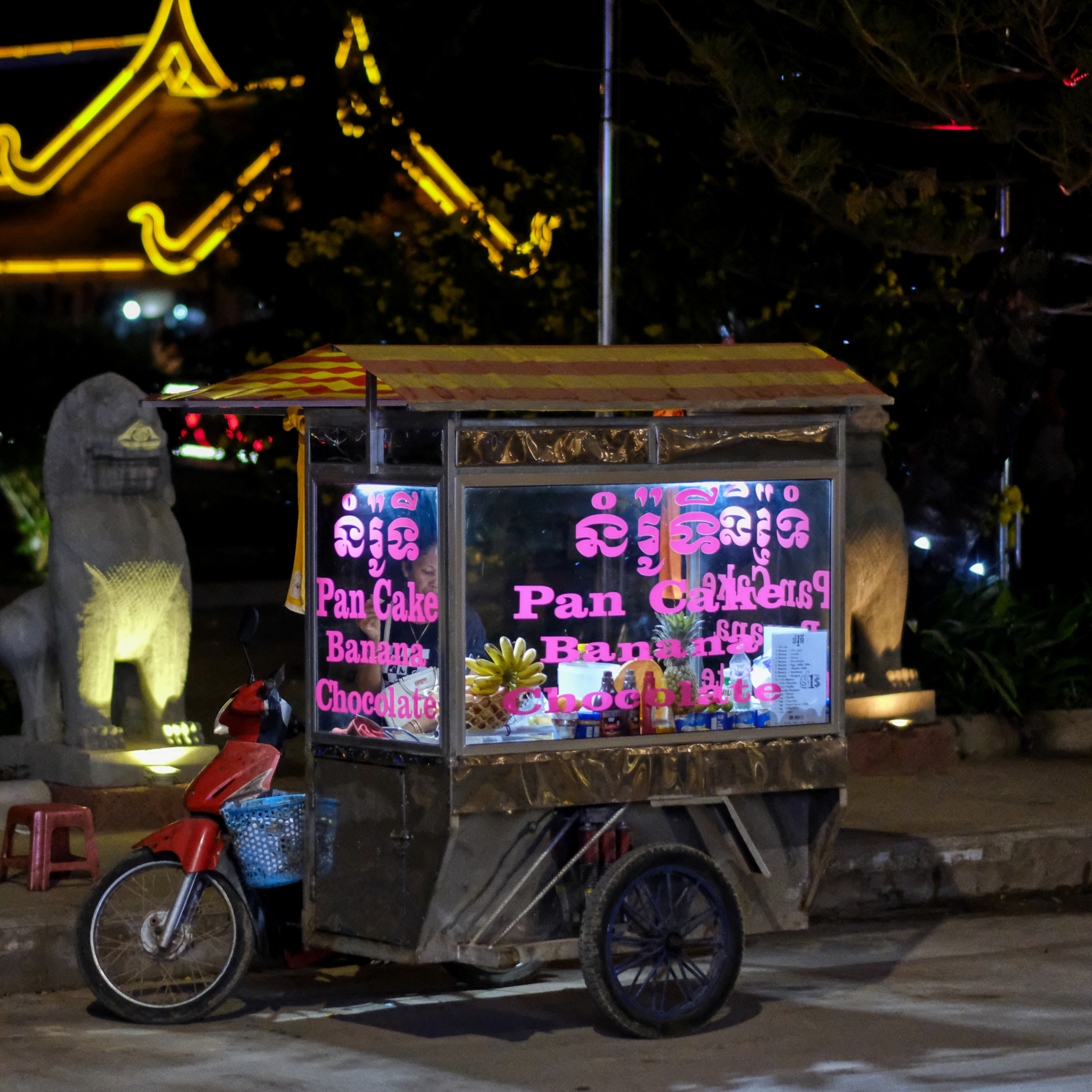 This cart reminded me of the movie Groundhog Day . . . "Hey, who wants some flapjacks?"
This cart reminded me of the movie Groundhog Day . . . "Hey, who wants some flapjacks?"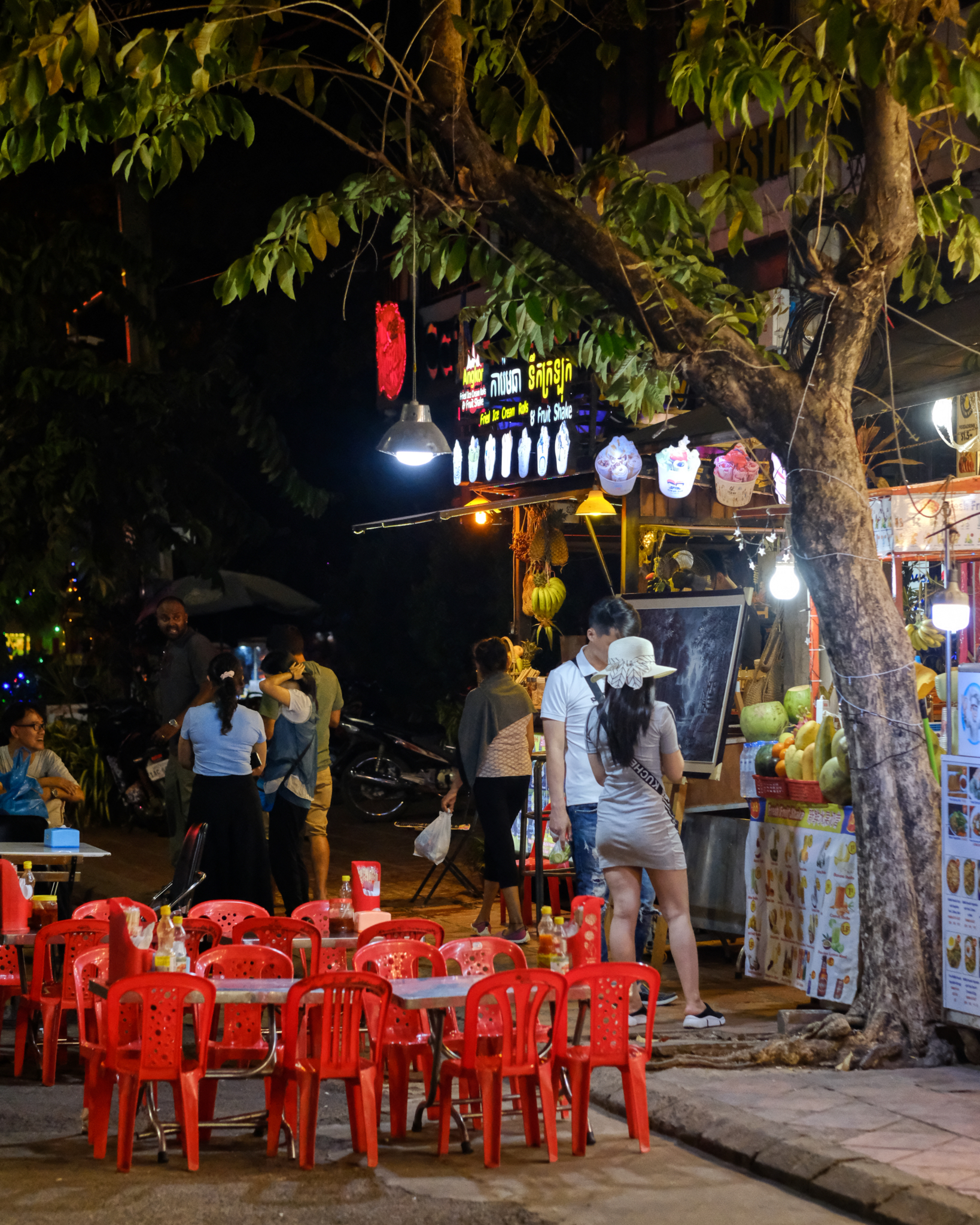 Lots of small street eateries. This was in the middle of the tourist season, mid-January, and it was not as crowded as I would have thought.
Lots of small street eateries. This was in the middle of the tourist season, mid-January, and it was not as crowded as I would have thought.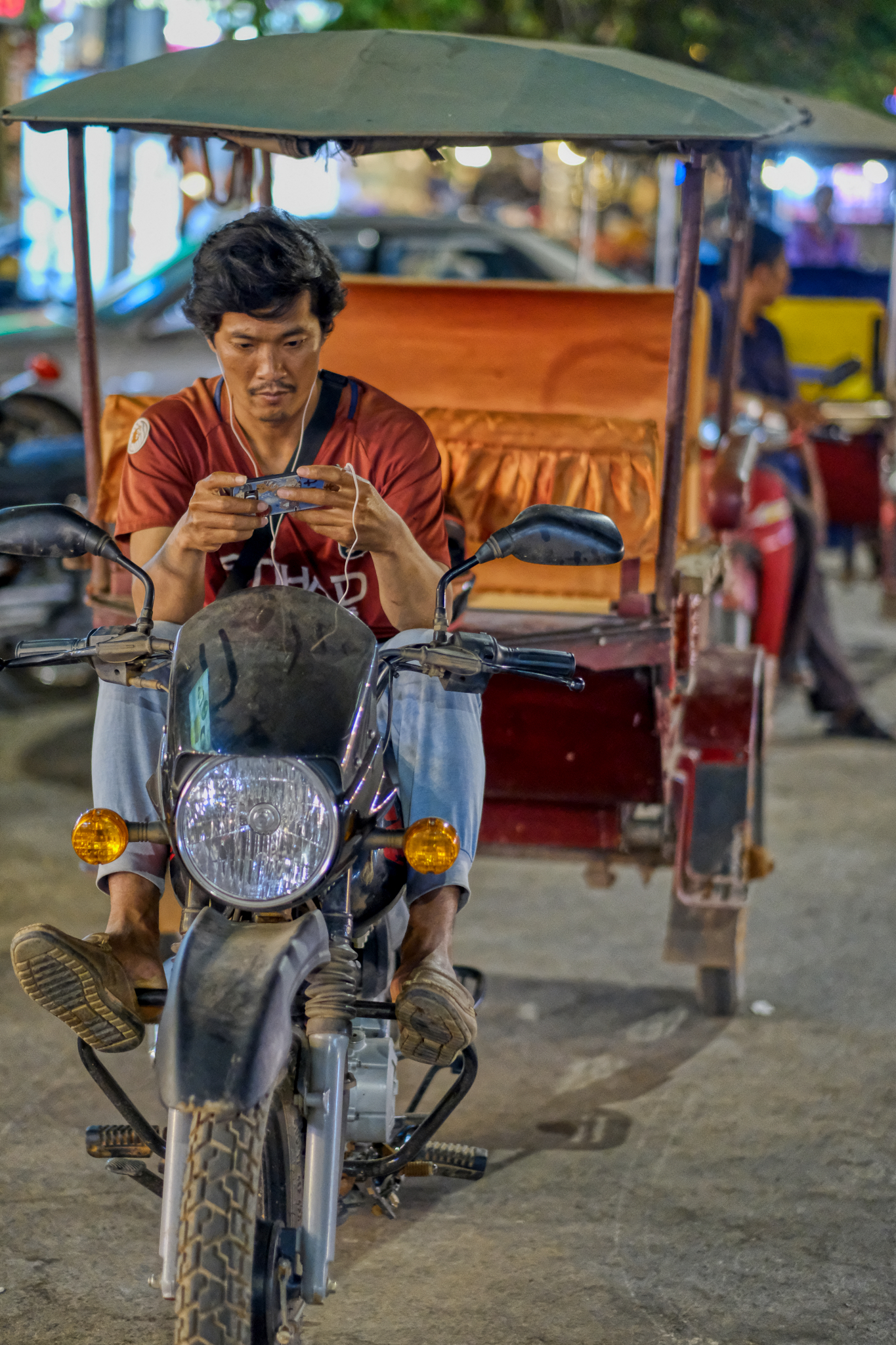 The modern tuk-tuk driver is hooked into the world and its events.
The modern tuk-tuk driver is hooked into the world and its events.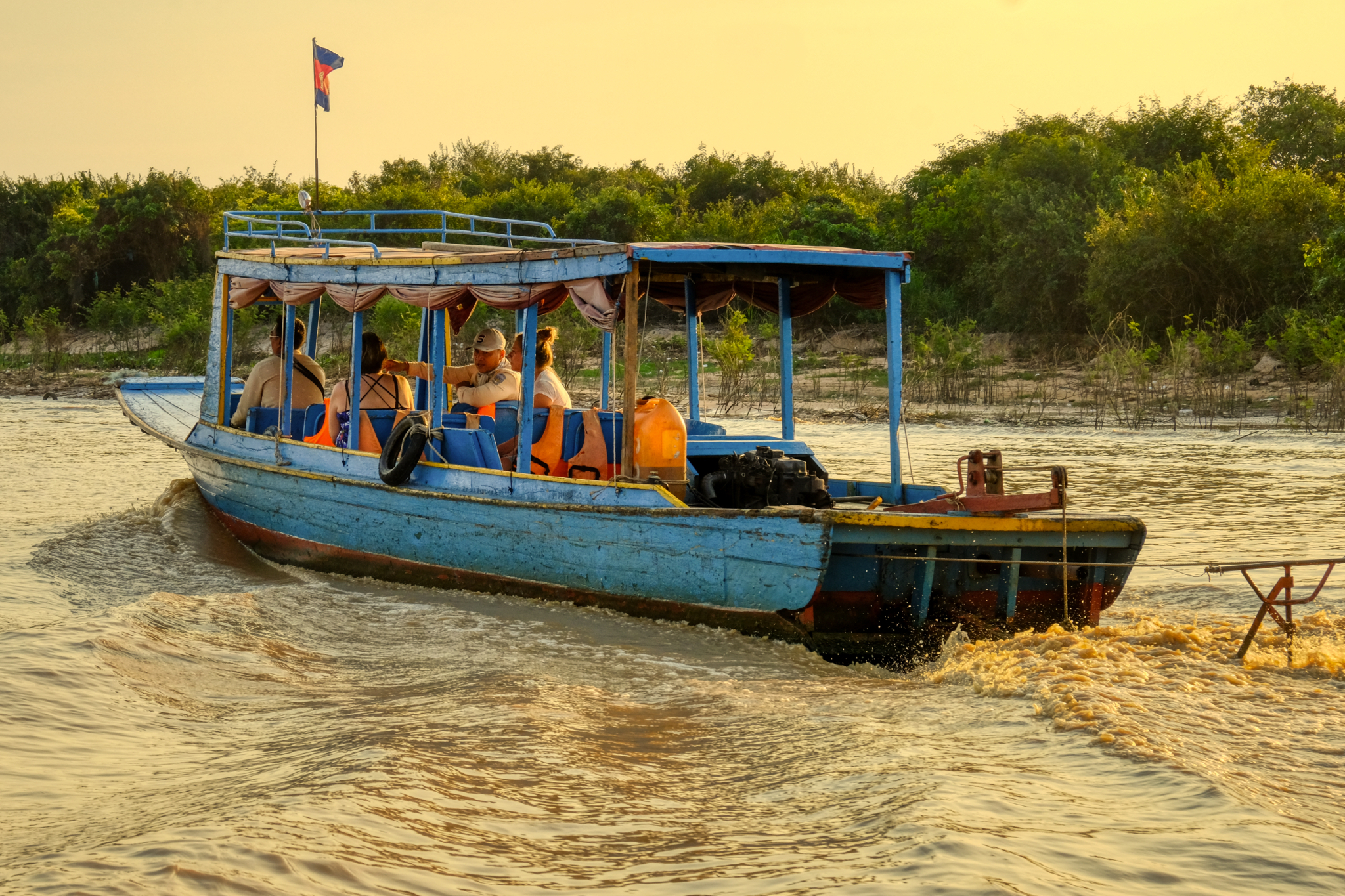 Our driver insisted that we all go out to the lake and take a boat on the water to see the sunset. We were sure it was just a tourist trap, but we relented. There were hundreds of small boats full of tourists. We got one and headed out.
Our driver insisted that we all go out to the lake and take a boat on the water to see the sunset. We were sure it was just a tourist trap, but we relented. There were hundreds of small boats full of tourists. We got one and headed out.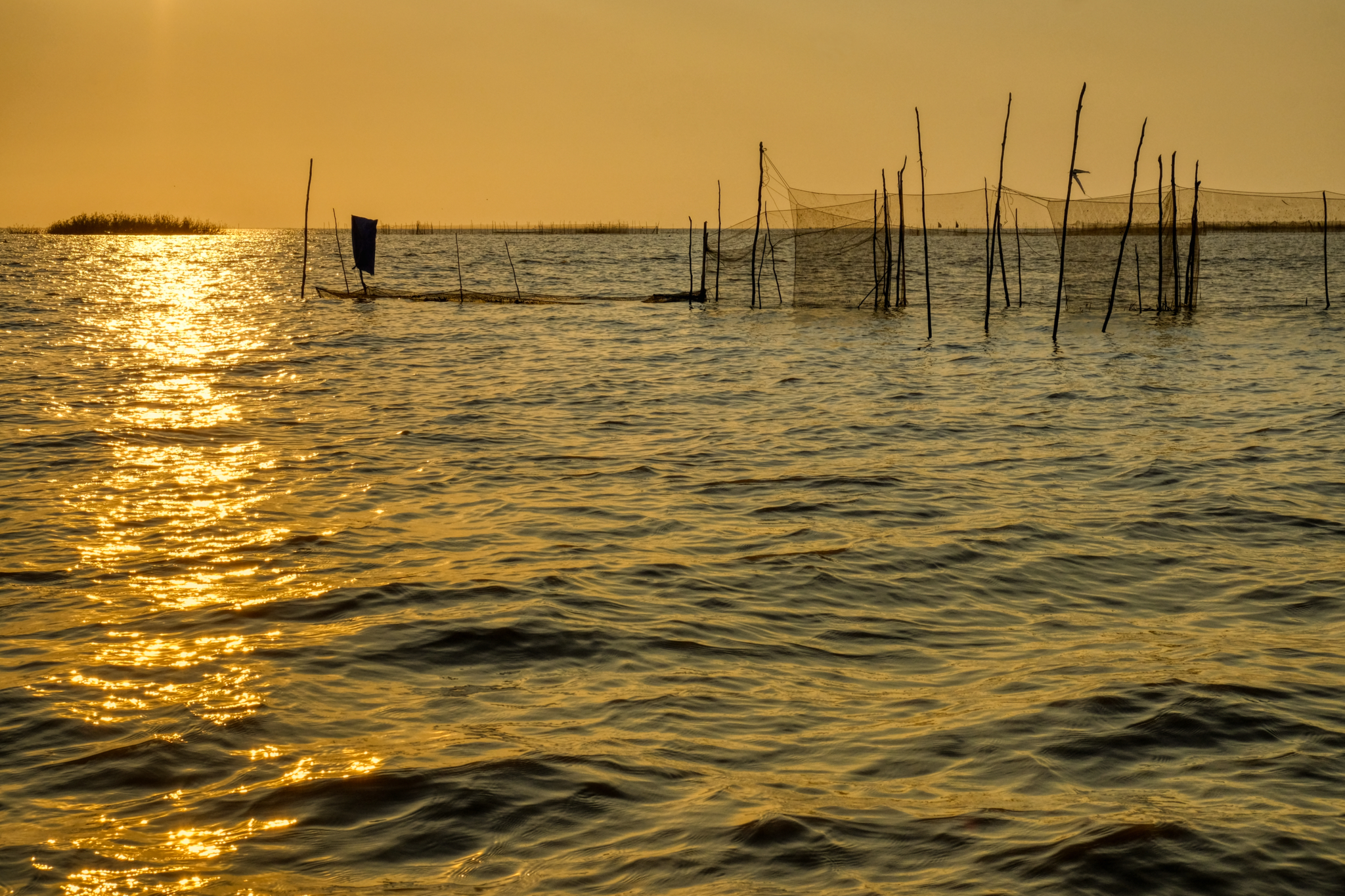 The ride out to the lake was spectacular. We were very happy we had taken the trip.
The ride out to the lake was spectacular. We were very happy we had taken the trip.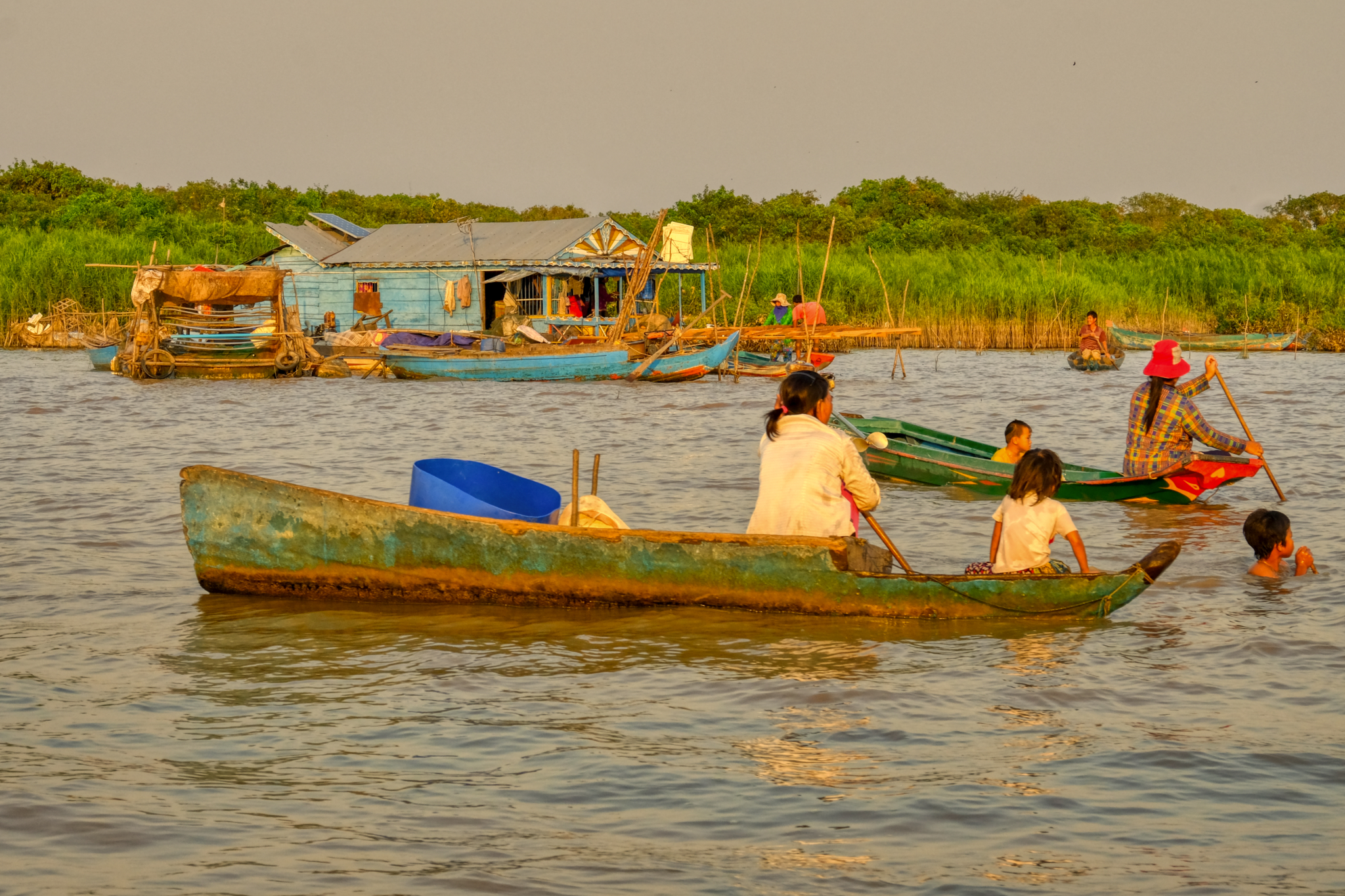 We passed through a floating village along the way. The boatman told us that this village moves with the rising and falling of the lake.
We passed through a floating village along the way. The boatman told us that this village moves with the rising and falling of the lake.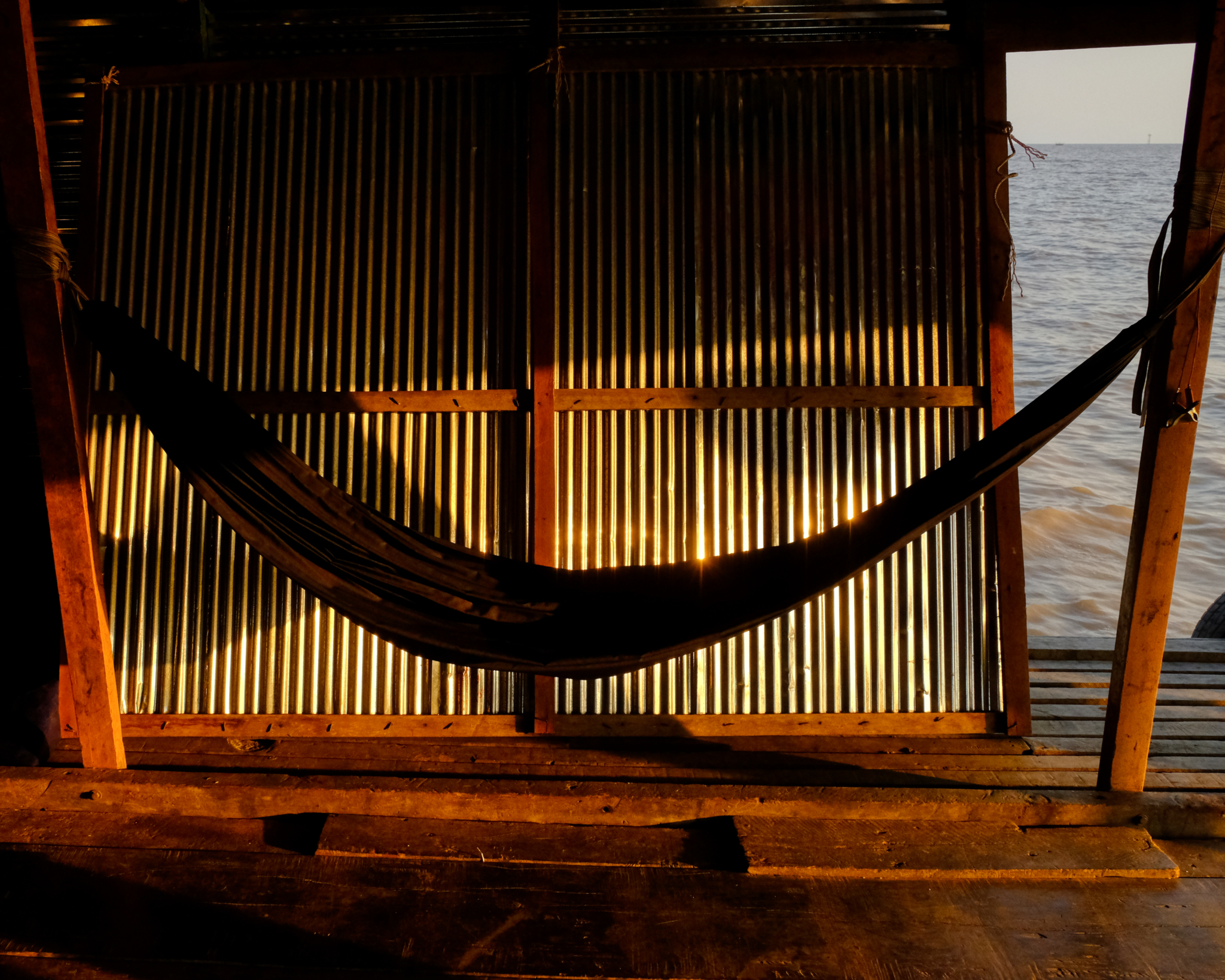 We stopped off at one of the floating shacks.
We stopped off at one of the floating shacks.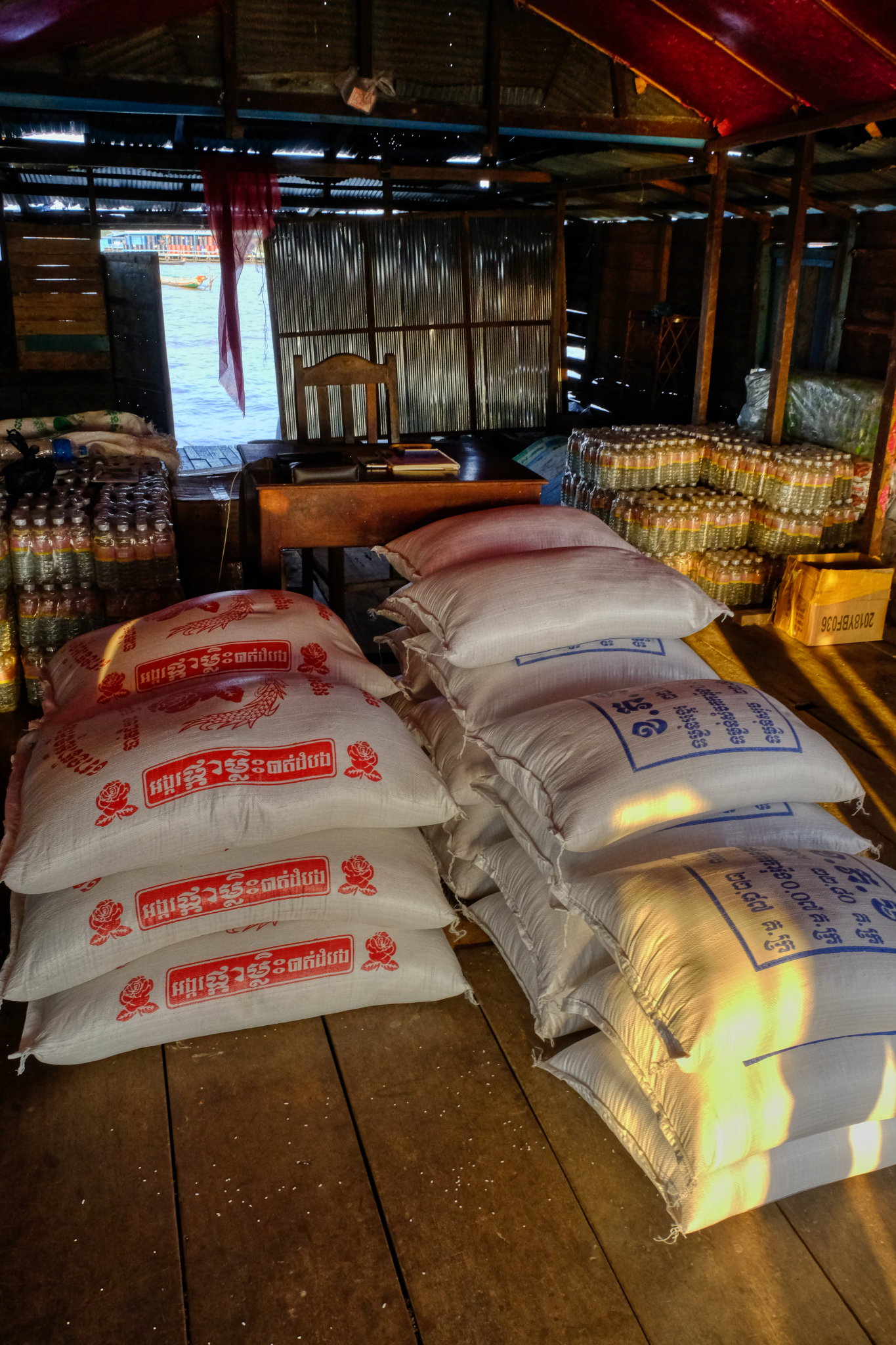 The boatman said these villagers were very poor. He asked if we would like to make a donation of rice to the local floating school. We were happy to help. For a few dollars we bought four sacks of rice and delivered them to this school:
The boatman said these villagers were very poor. He asked if we would like to make a donation of rice to the local floating school. We were happy to help. For a few dollars we bought four sacks of rice and delivered them to this school: This is the floating school. We stopped here to unload the rice.
This is the floating school. We stopped here to unload the rice.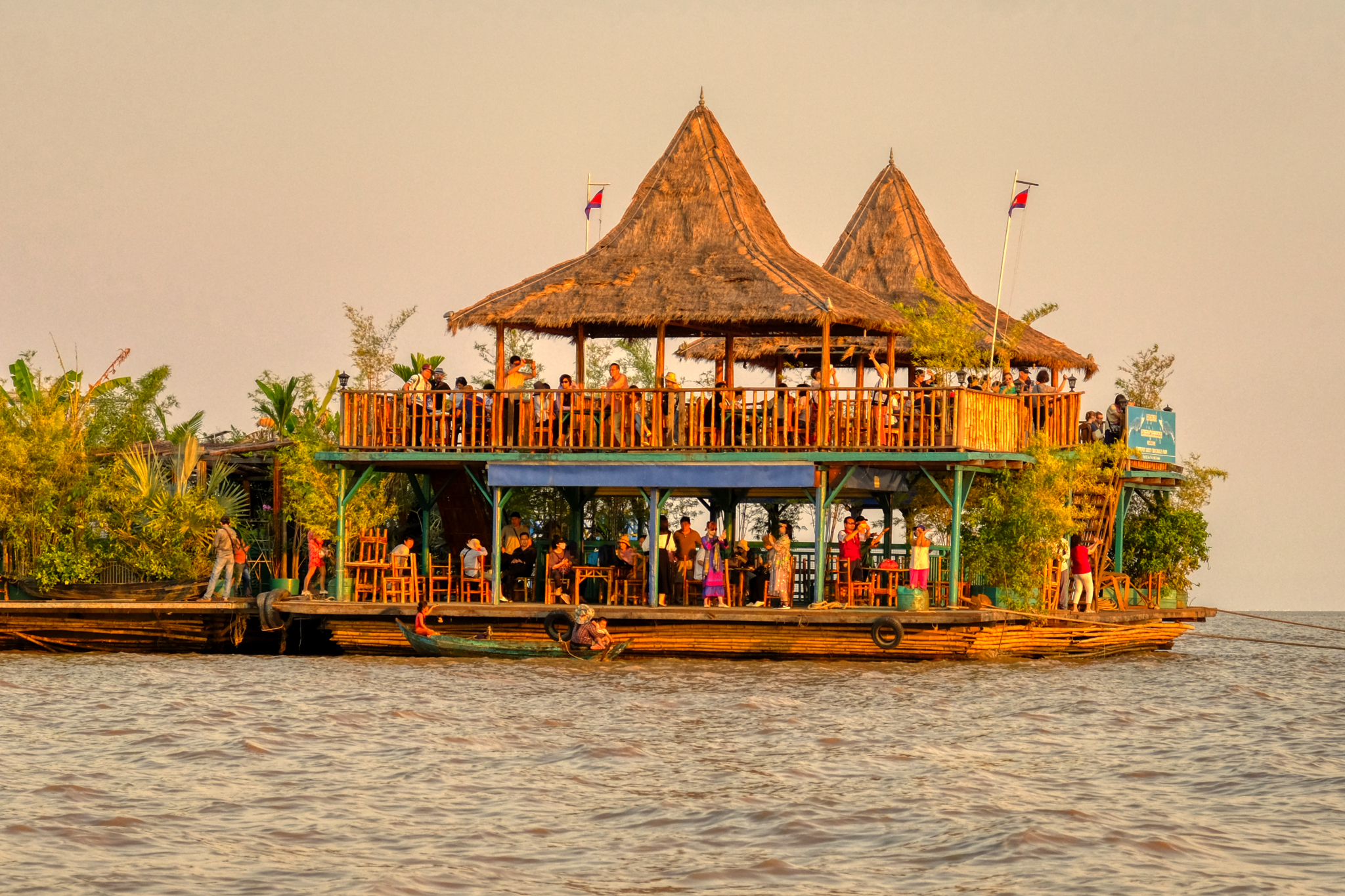 There were several of these large sunset viewing rafts out a mile or so from the shore of the lake . . . full of tourists like us.
There were several of these large sunset viewing rafts out a mile or so from the shore of the lake . . . full of tourists like us.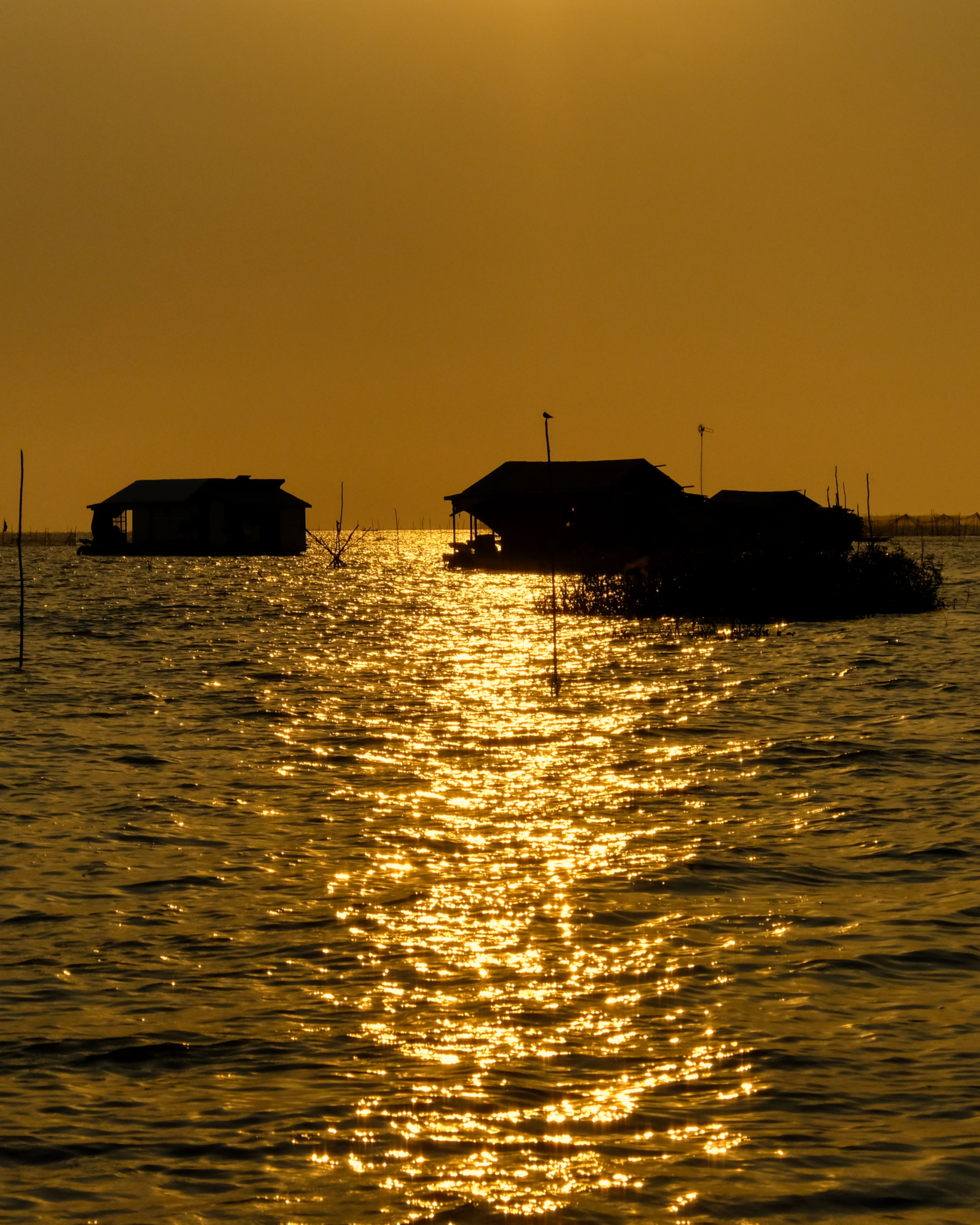 A beautiful trip out into the inland sea.
A beautiful trip out into the inland sea.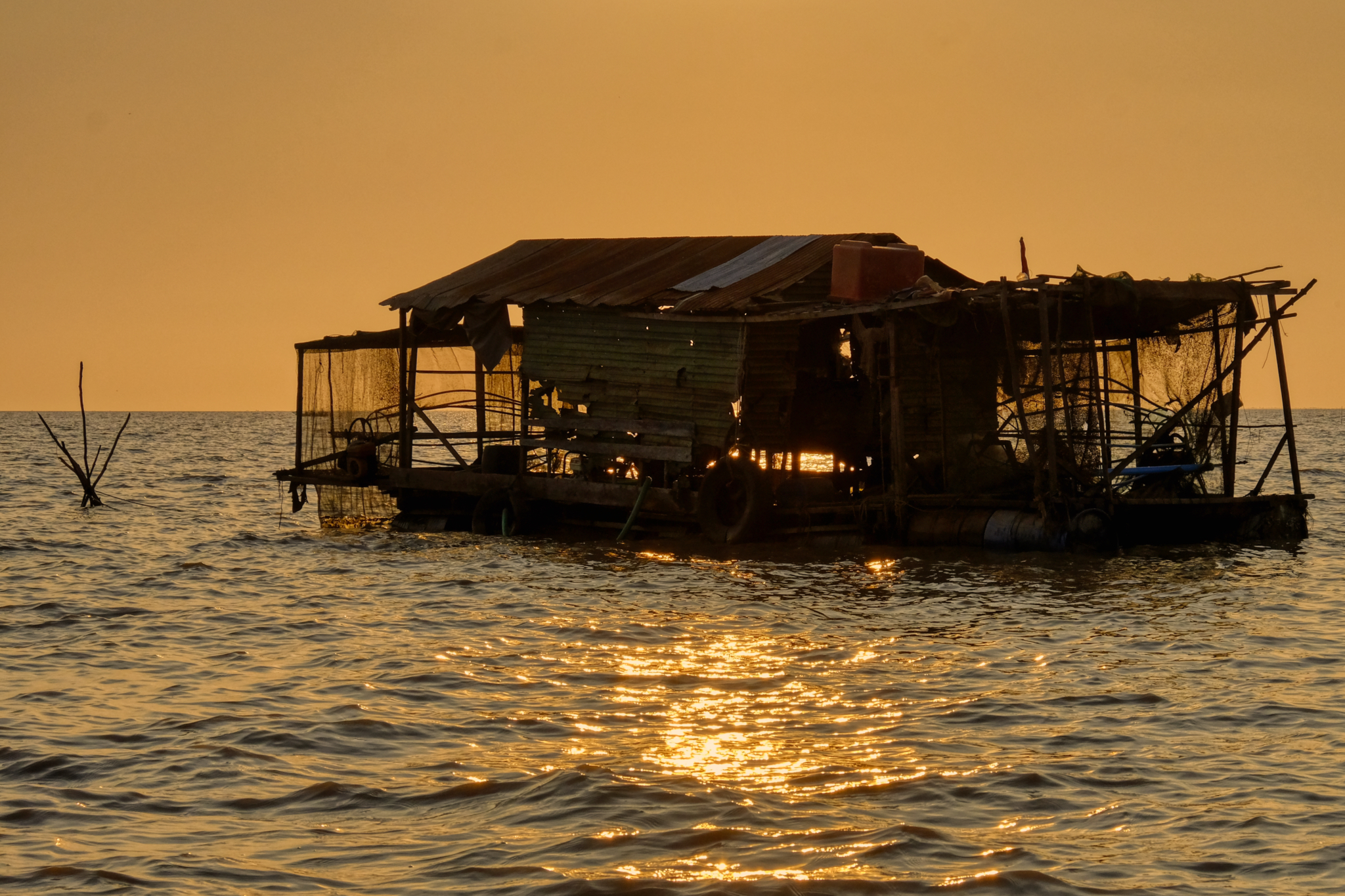 The villagers made their living fishing from their floating platforms.
The villagers made their living fishing from their floating platforms.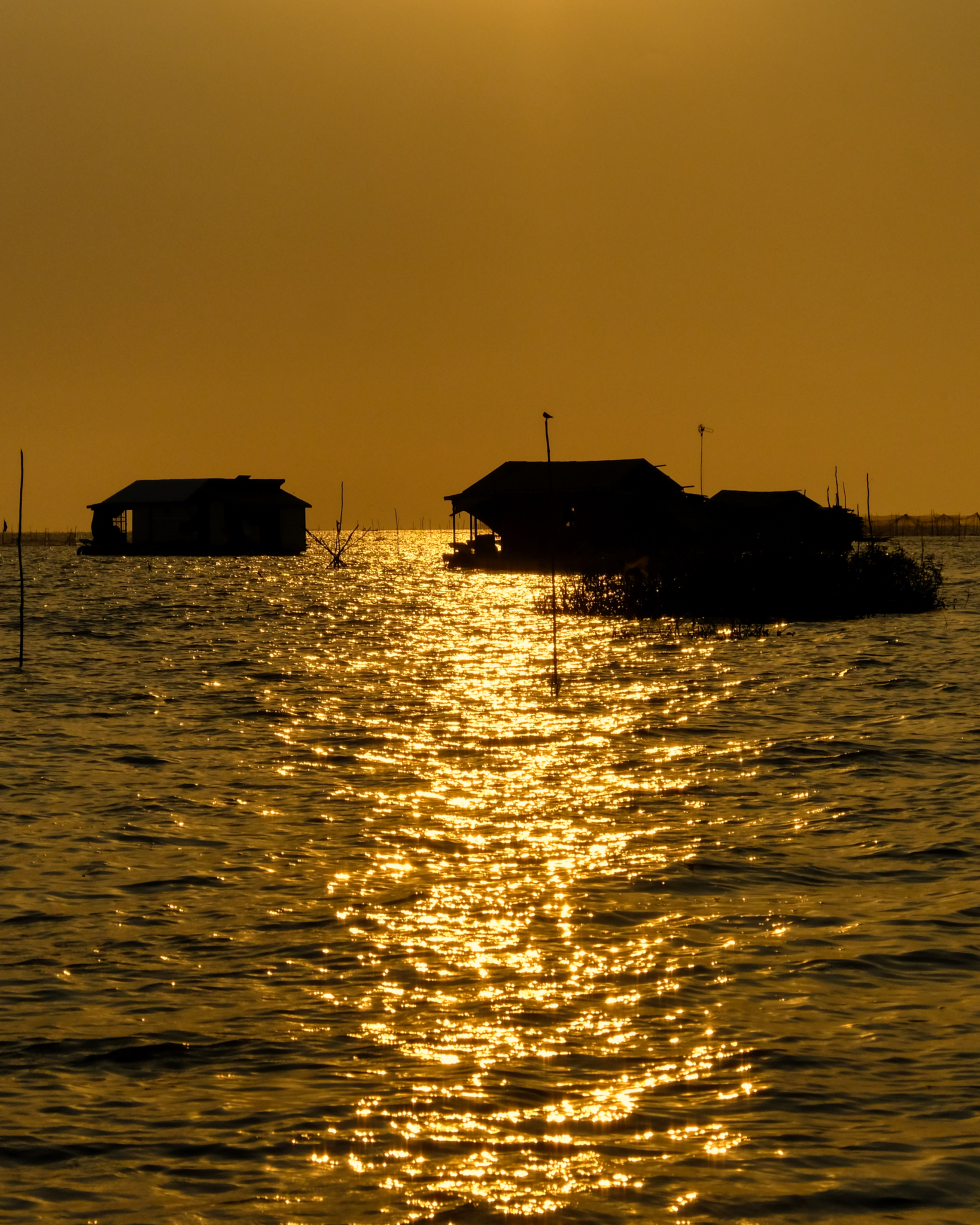 Village shacks in the amber sunset light.
Village shacks in the amber sunset light.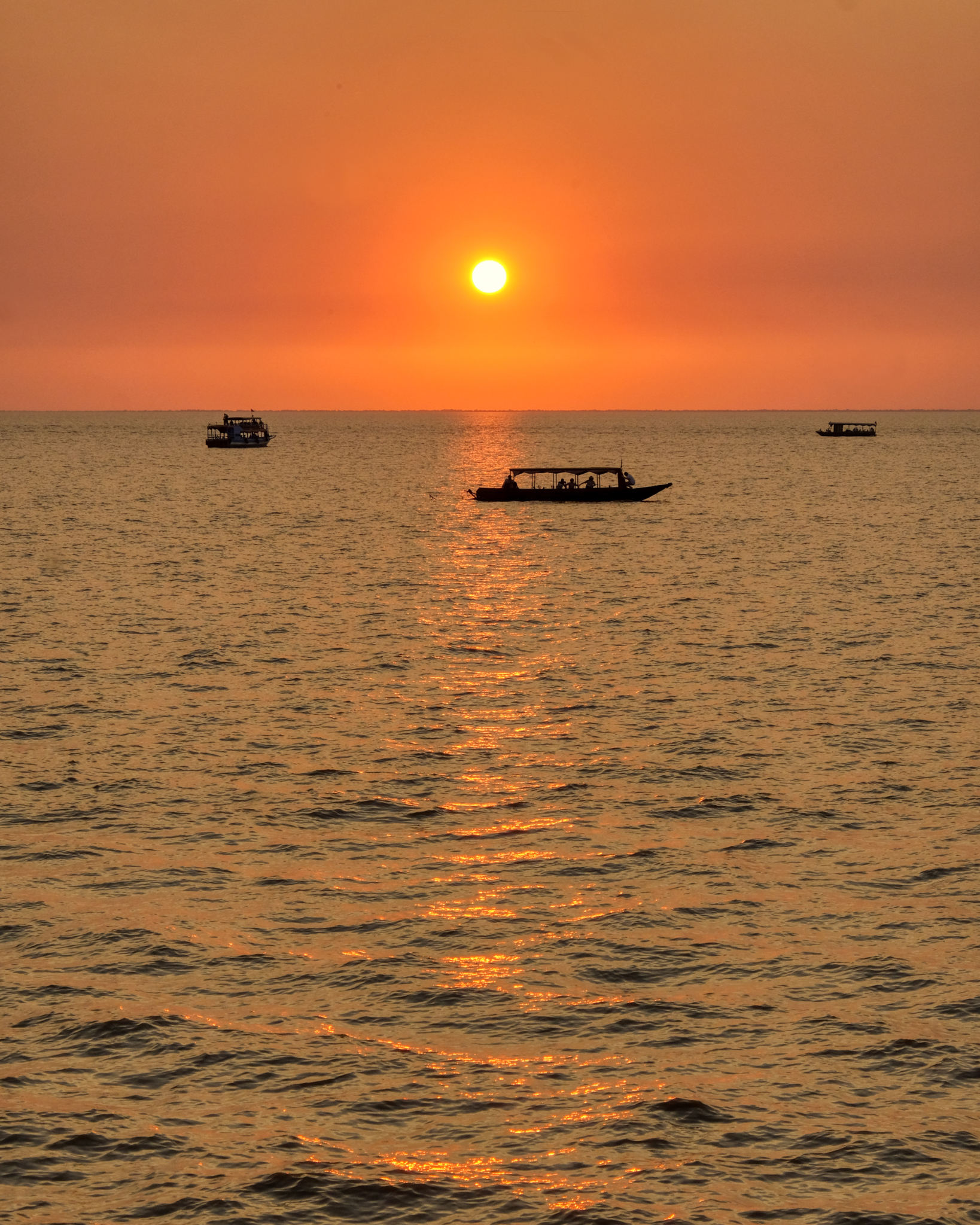 The view from our observation deck . . . boats in the setting sun.
The view from our observation deck . . . boats in the setting sun. And the sun set over our Angkor Wat vacation. A wonderful four days. If you go to see Angkor Wat, I highly recommend the sunset boat trip . . . .
And the sun set over our Angkor Wat vacation. A wonderful four days. If you go to see Angkor Wat, I highly recommend the sunset boat trip . . . .A Long Week-End in Maçau, China
 Sunday, February 2, 2020 at 3:57PM
Sunday, February 2, 2020 at 3:57PM 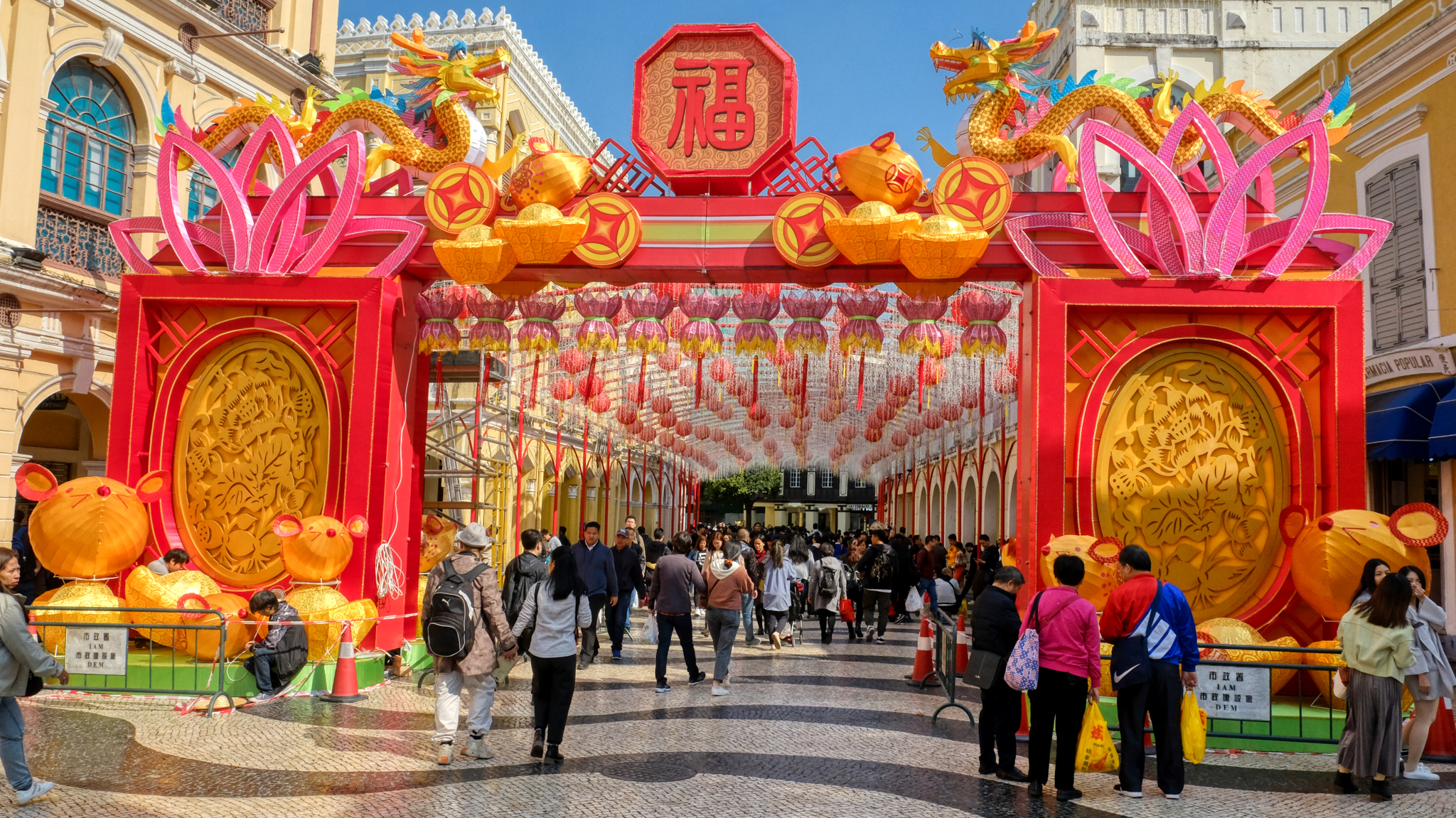 On the week-end that the corona virus was announced, we happened to be in Maçau . . . it was beautiful in the old part of the city as they were erecting decorations for the upcoming Chinese New Year festivities.
On the week-end that the corona virus was announced, we happened to be in Maçau . . . it was beautiful in the old part of the city as they were erecting decorations for the upcoming Chinese New Year festivities.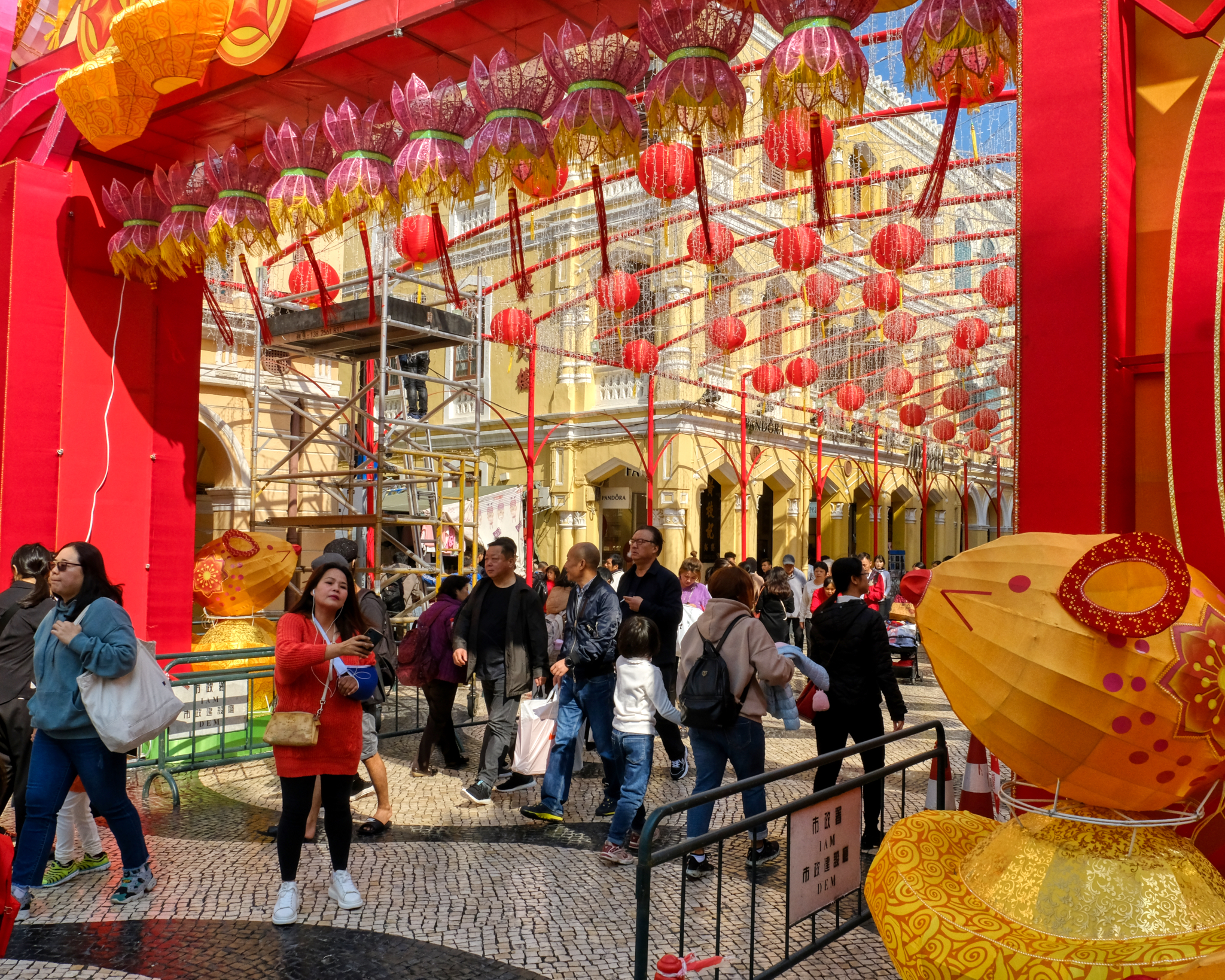 Big crowds on a beautiful February day.
Big crowds on a beautiful February day.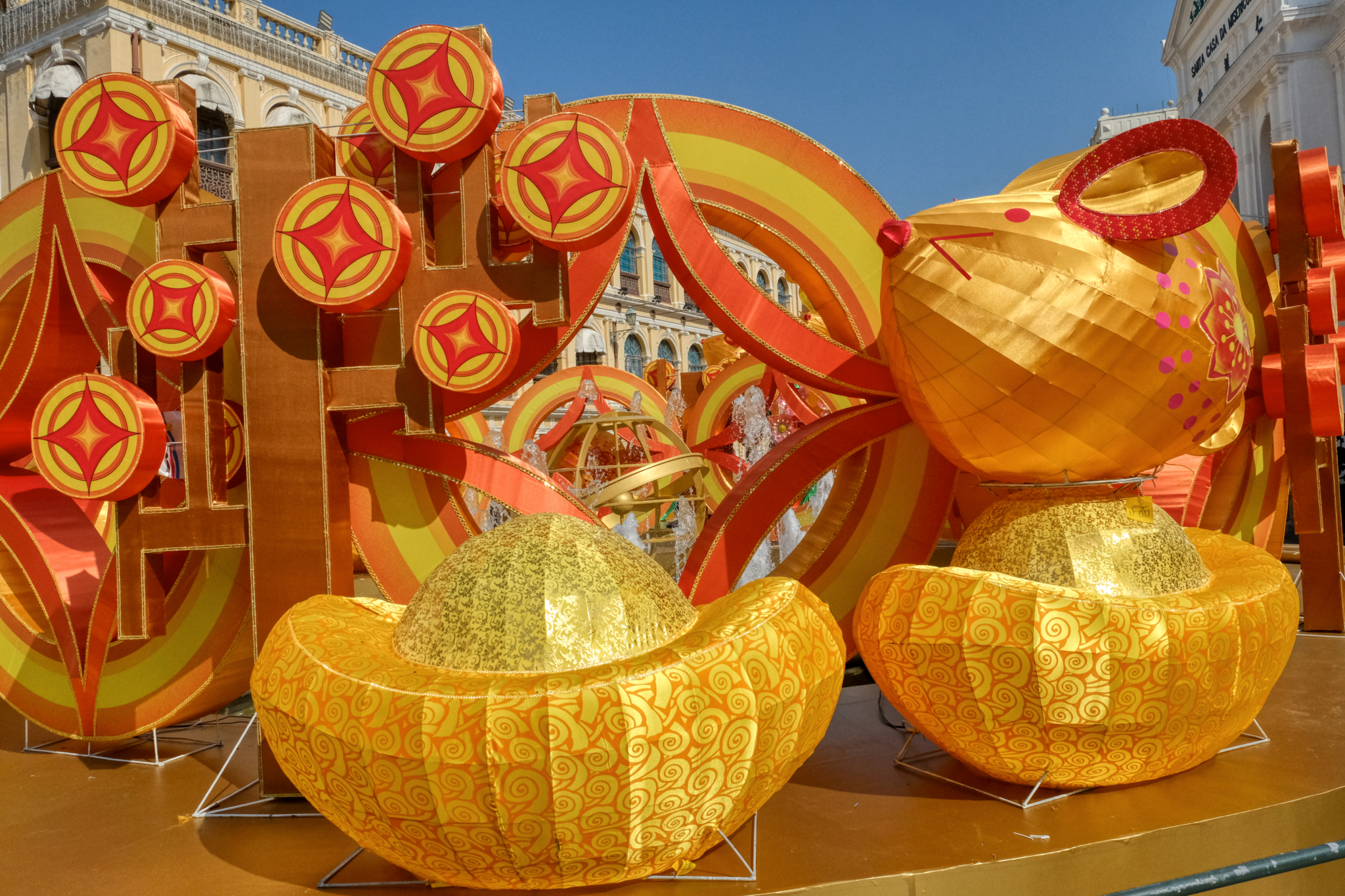 Gold for good luck . . . Year of the Rat (but only mice depicted!!!). . .
Gold for good luck . . . Year of the Rat (but only mice depicted!!!). . .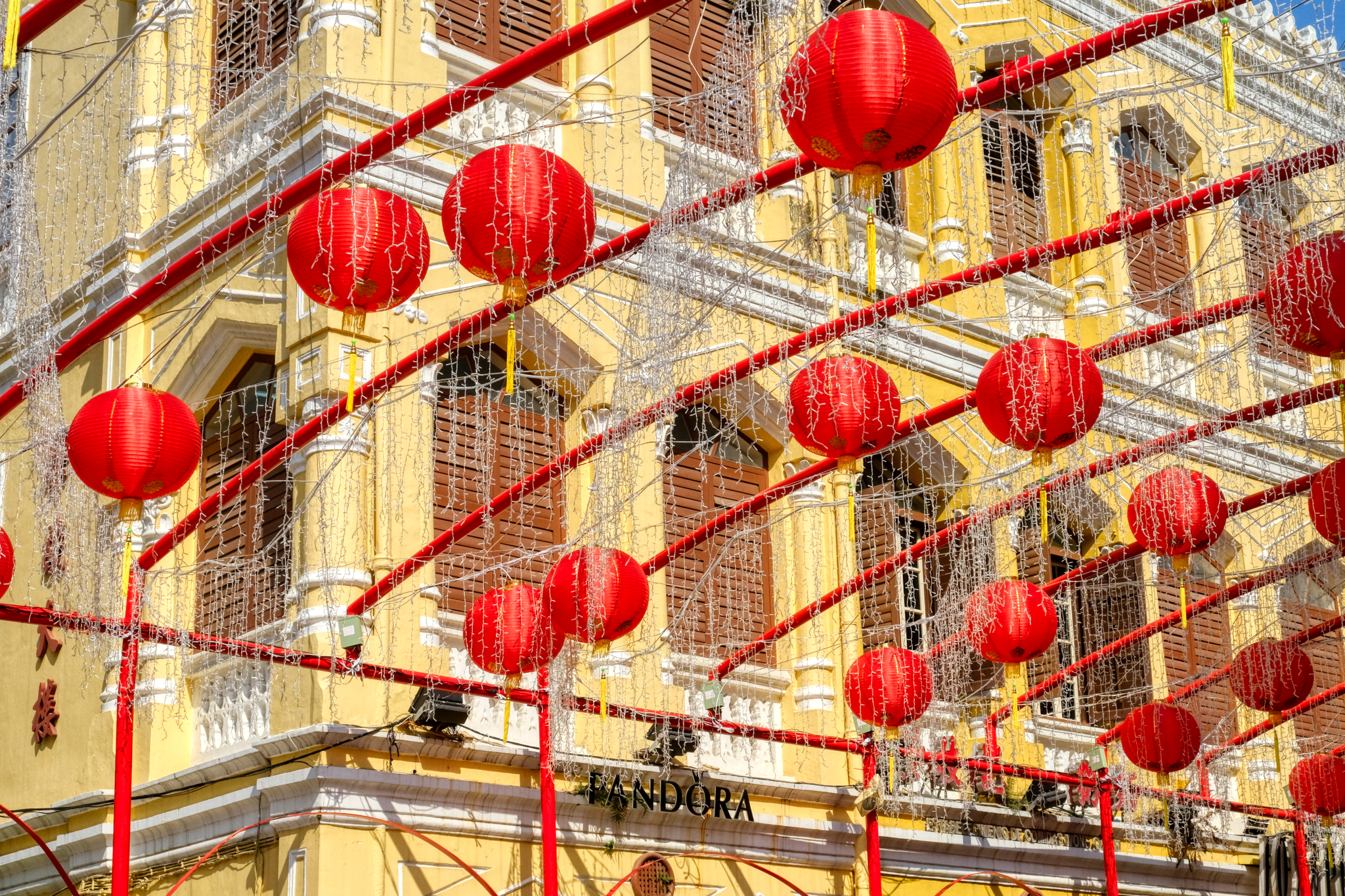 There were crews putting up the elaborate Chinese New Years decorations along the famous walking streets.
There were crews putting up the elaborate Chinese New Years decorations along the famous walking streets.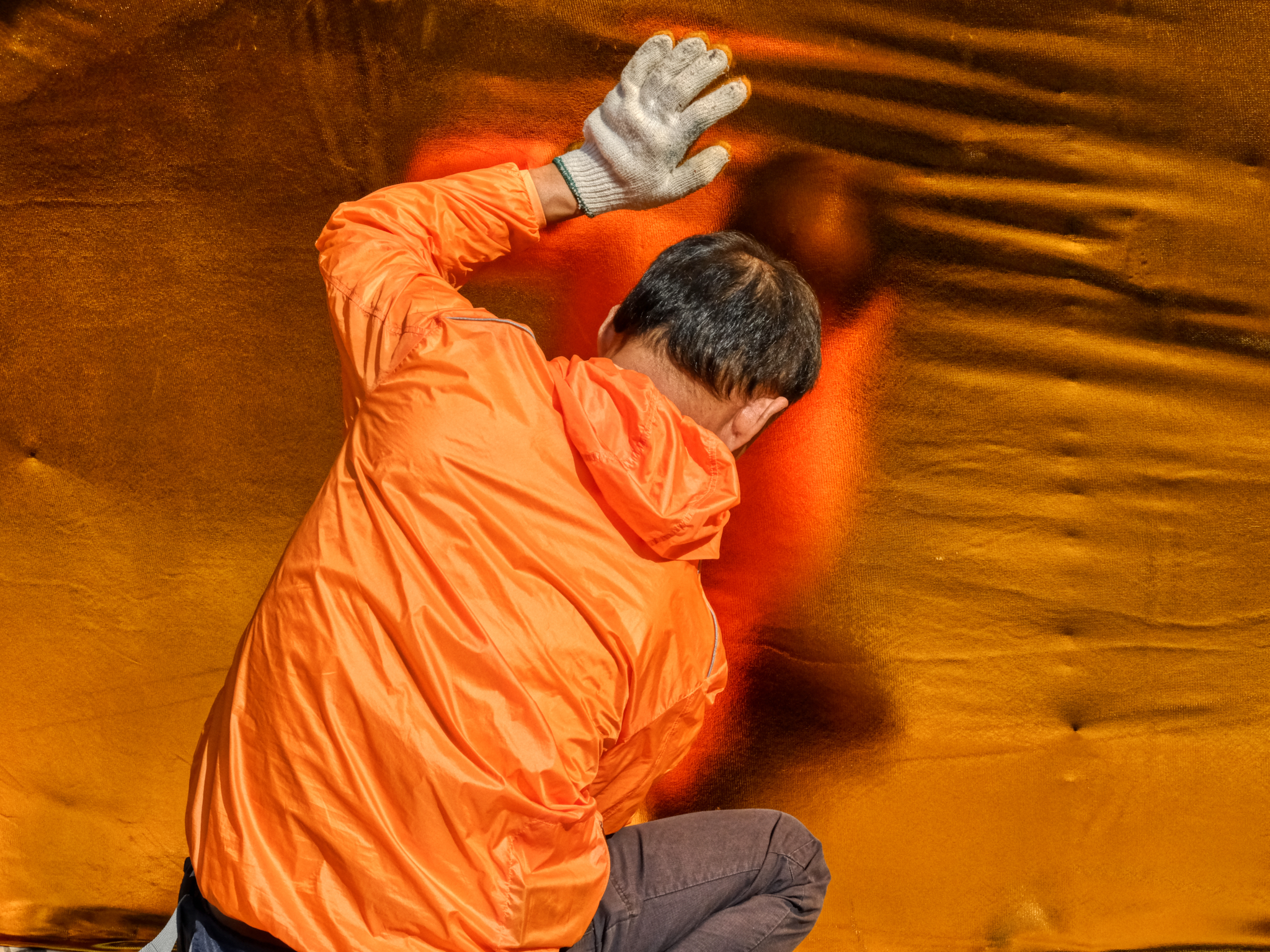 Maçau is a photographers dream come true . . . especially at this time of year. A worker putting up decorative gold bunting.
Maçau is a photographers dream come true . . . especially at this time of year. A worker putting up decorative gold bunting.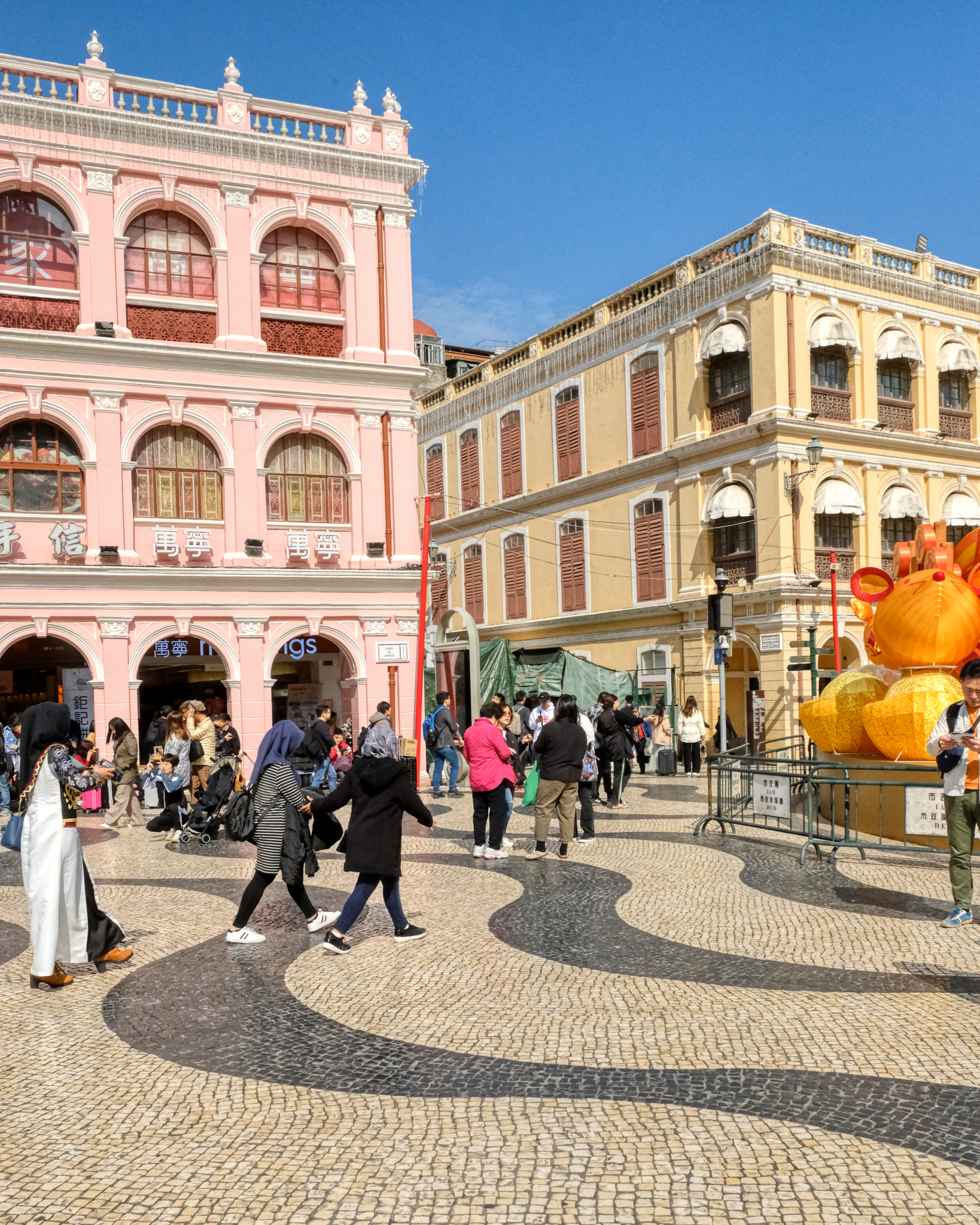 This was my third time in Maçau. The historic center of Maçau is a UNESCO World Heritage Site and is popular from people from all over the world . . . before the virus, that is.
This was my third time in Maçau. The historic center of Maçau is a UNESCO World Heritage Site and is popular from people from all over the world . . . before the virus, that is.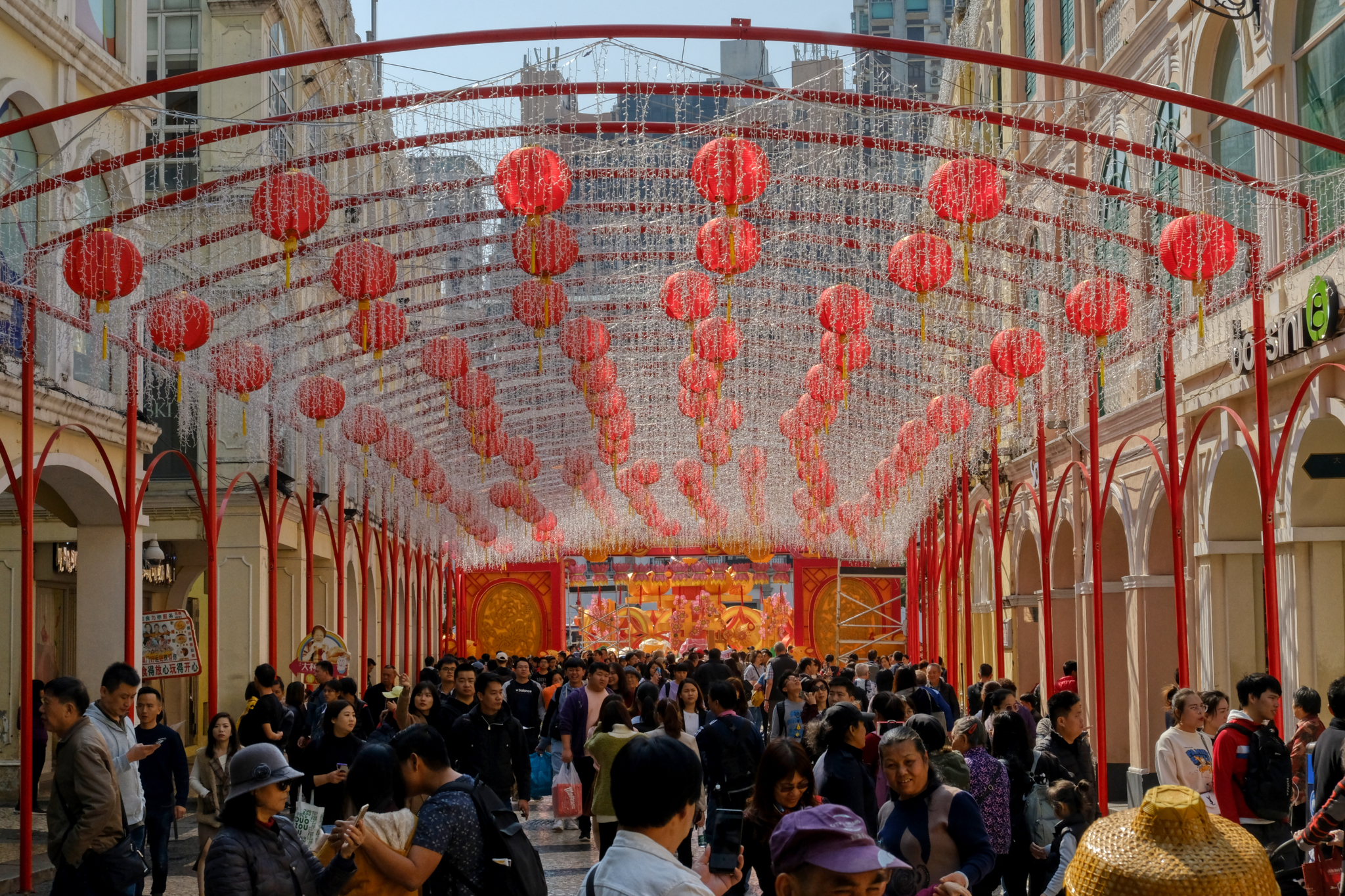 The walking streets were packed with tourists, mostly from mainland China.
The walking streets were packed with tourists, mostly from mainland China.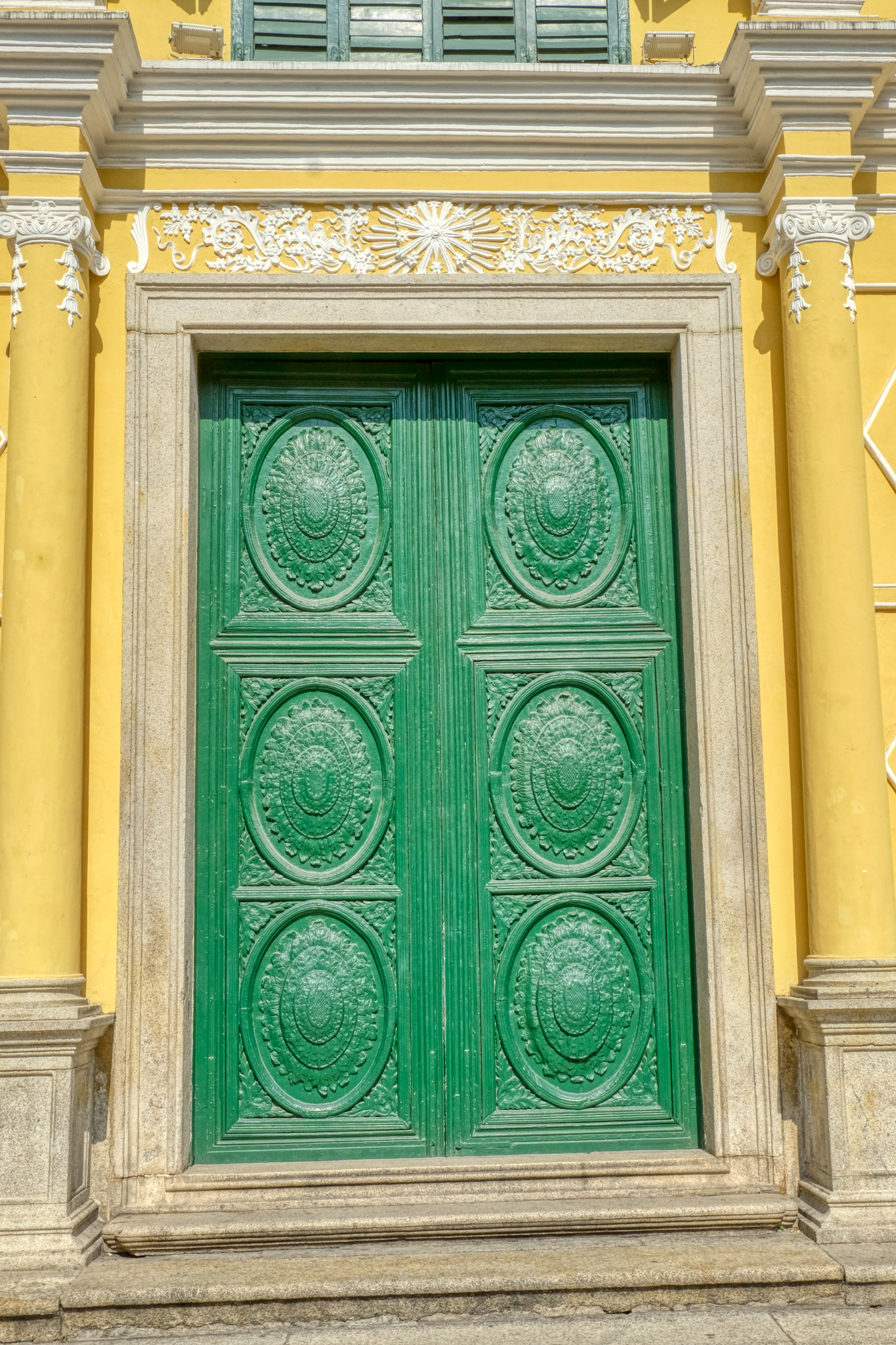 The door of the old Portuguese church.
The door of the old Portuguese church.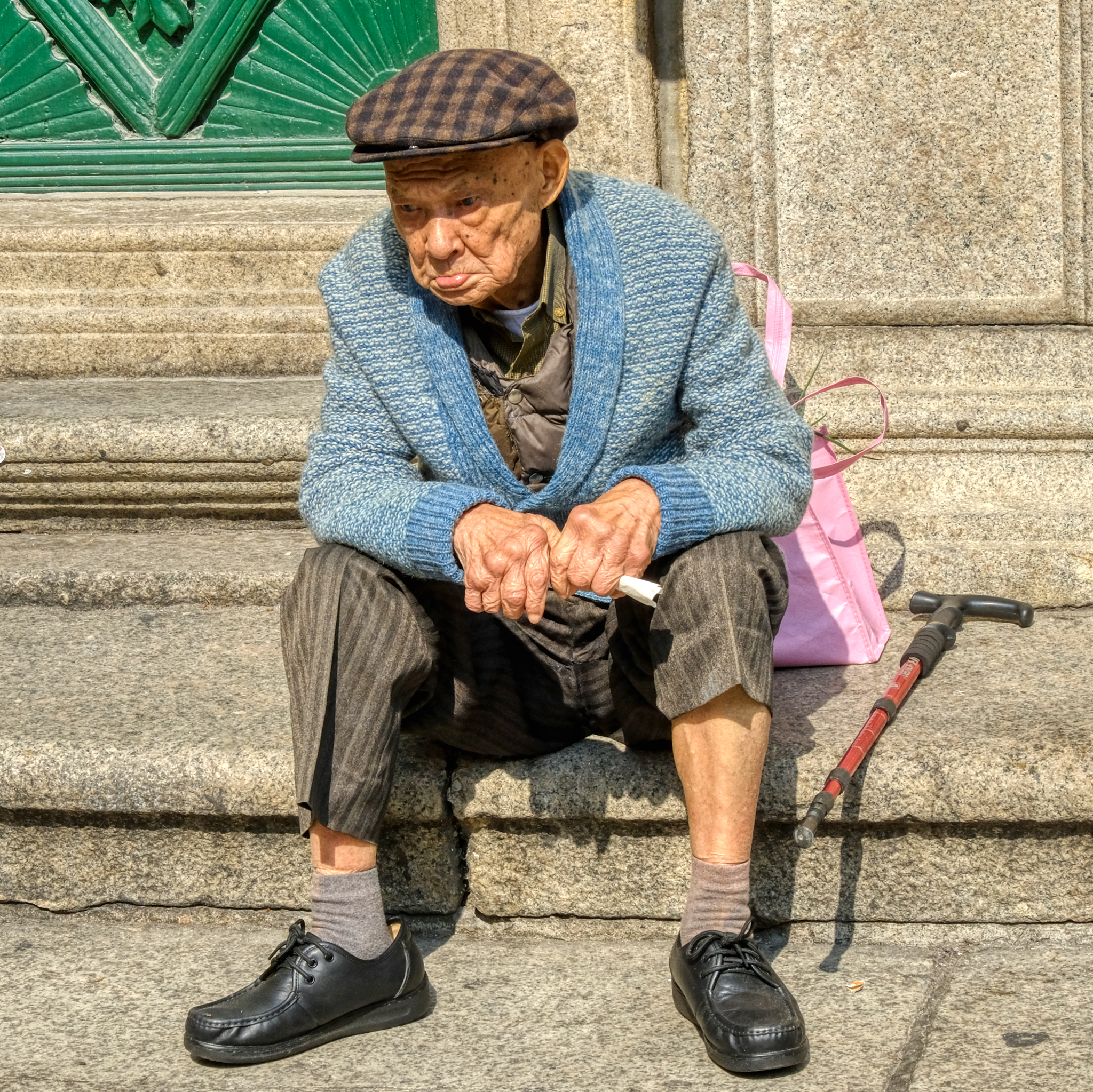 Yes. A photographer's dream come true.
Yes. A photographer's dream come true.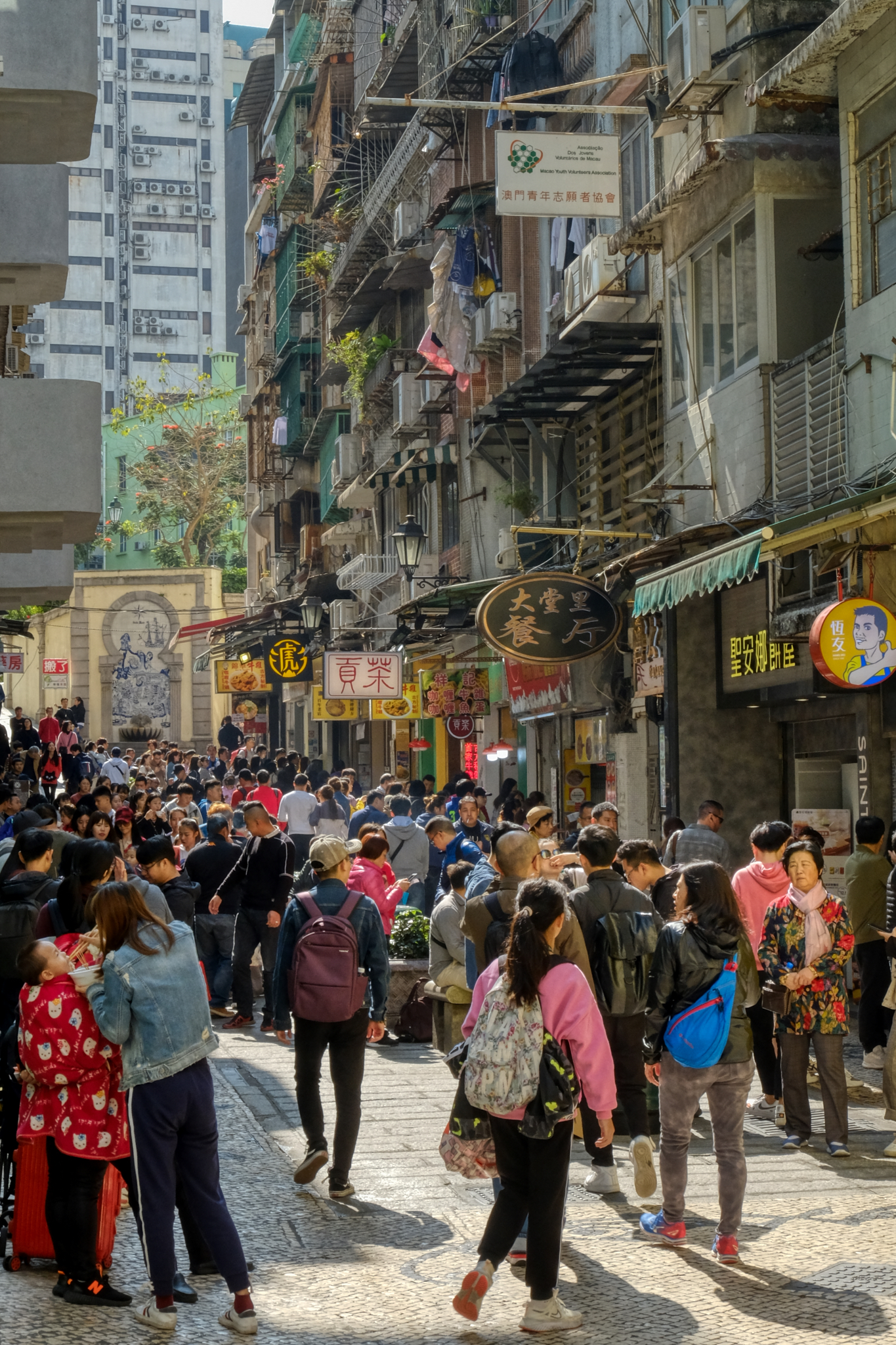 Did I mention there were large crowds from mainland China . . . .
Did I mention there were large crowds from mainland China . . . .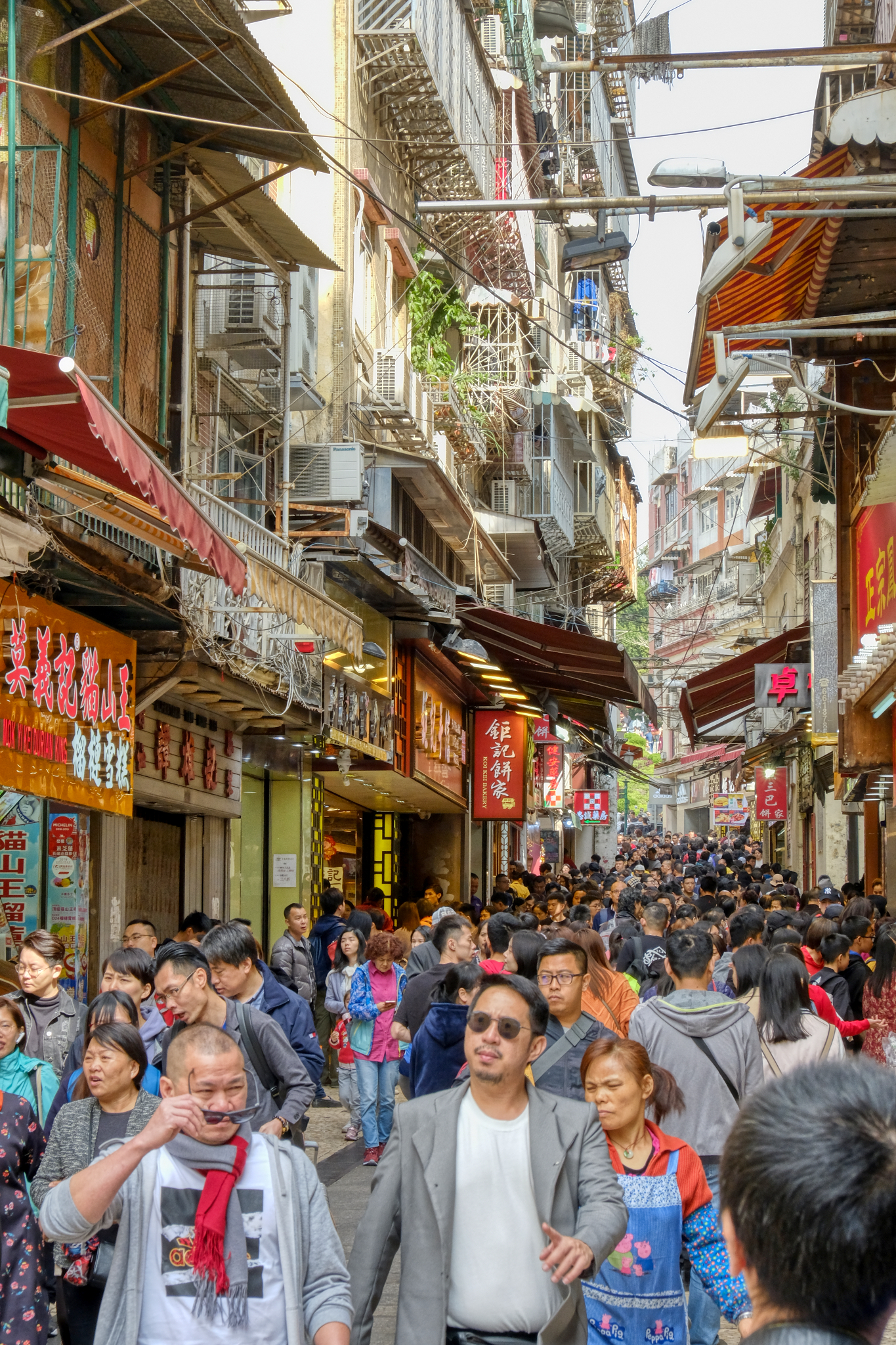 The mainland Chinese like to come to Maçau and nearby Hong Kong for shopping. We talked to a shopkeeper who said that for items like cosmetics and medicines, the Chinese preferred shopping here because they did not trust the quality back home . . . and they didn't want their neighbors see them buying expensive things!!!
The mainland Chinese like to come to Maçau and nearby Hong Kong for shopping. We talked to a shopkeeper who said that for items like cosmetics and medicines, the Chinese preferred shopping here because they did not trust the quality back home . . . and they didn't want their neighbors see them buying expensive things!!!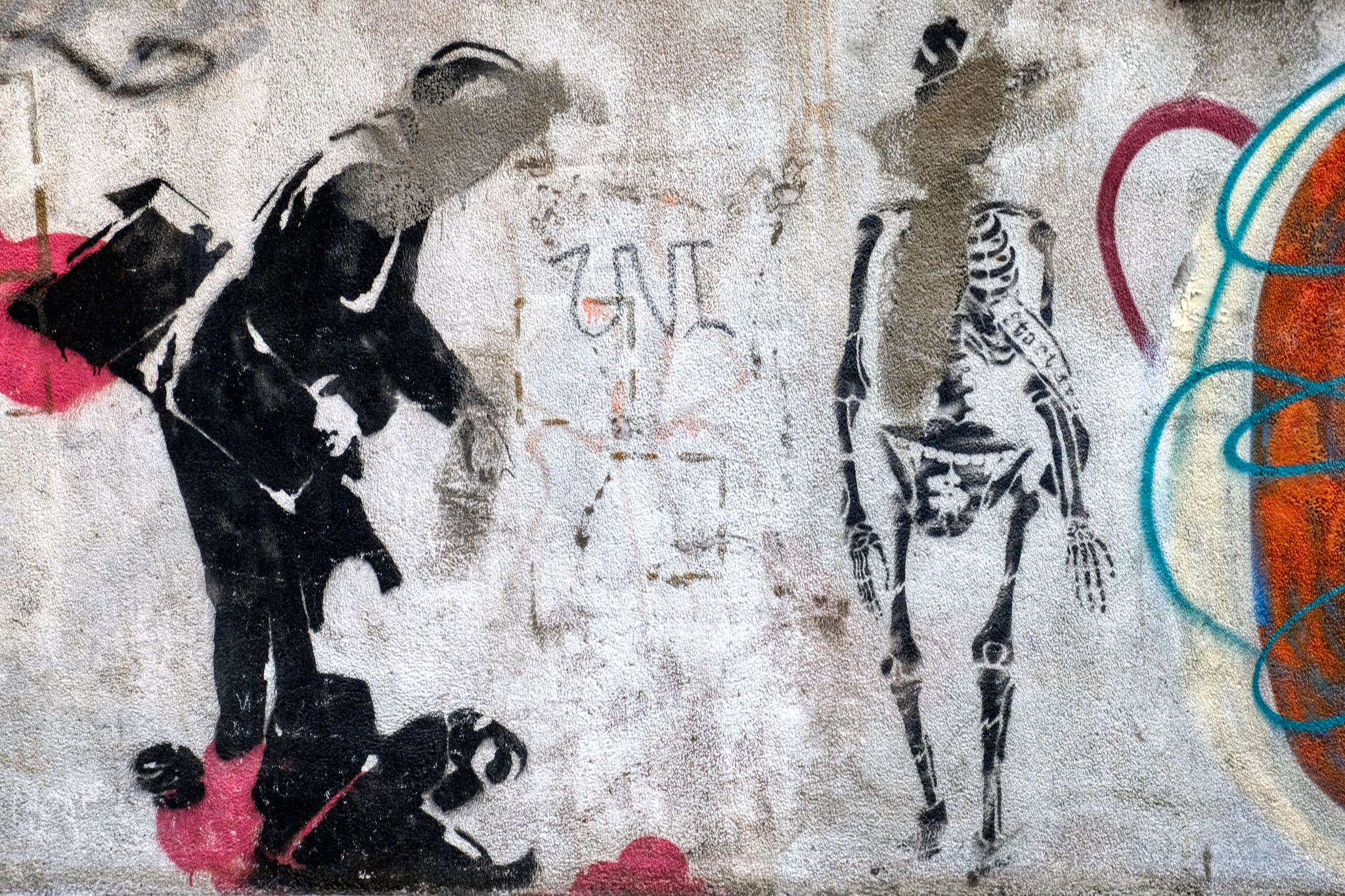 Some VERY interesting graffiti in the alleys of Maçau!
Some VERY interesting graffiti in the alleys of Maçau!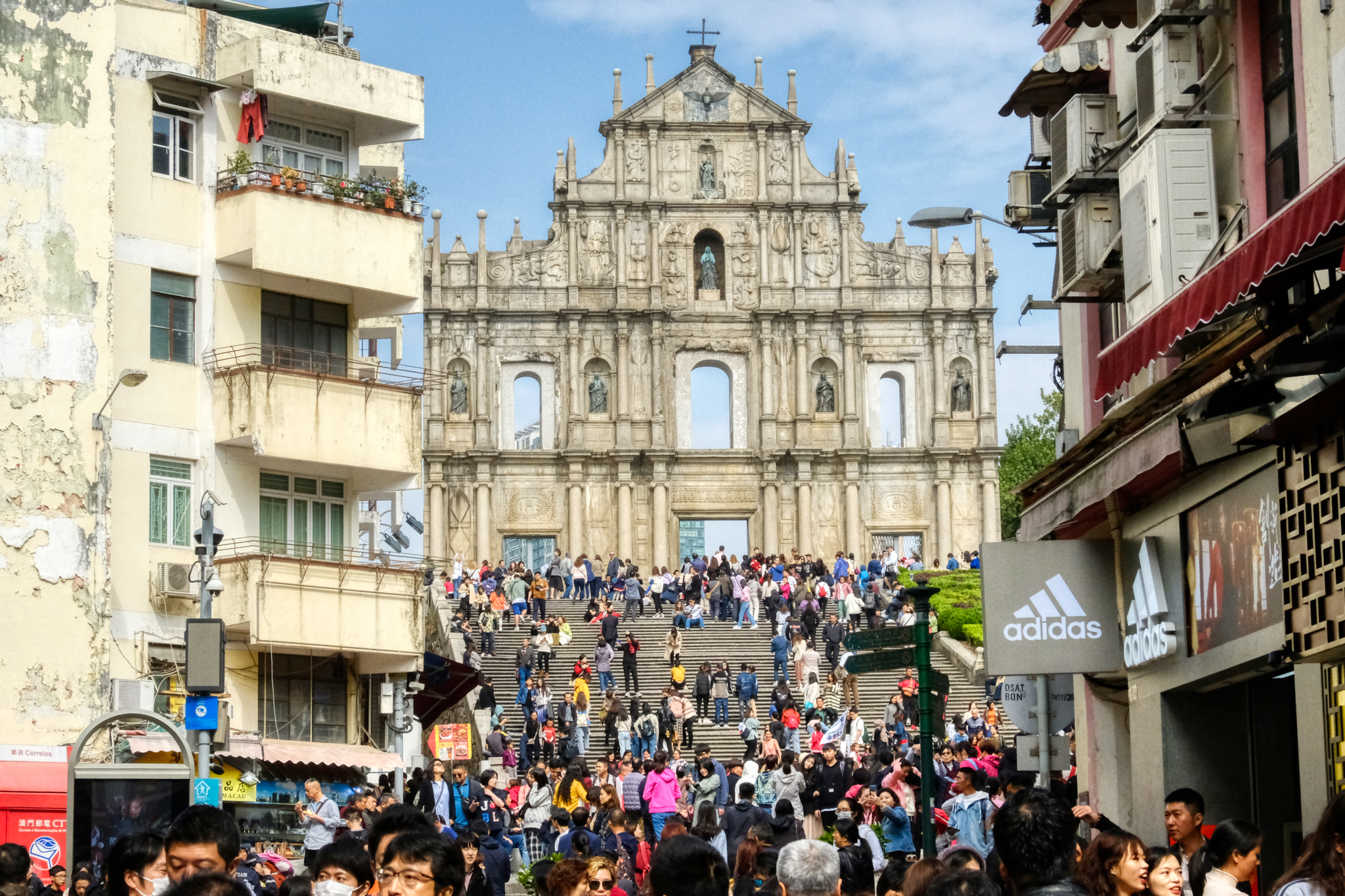 Most tourists spend a day in the walking streets and narrow streets by walking all the way up to the ruins of St. Paul's Cathedral.
Most tourists spend a day in the walking streets and narrow streets by walking all the way up to the ruins of St. Paul's Cathedral.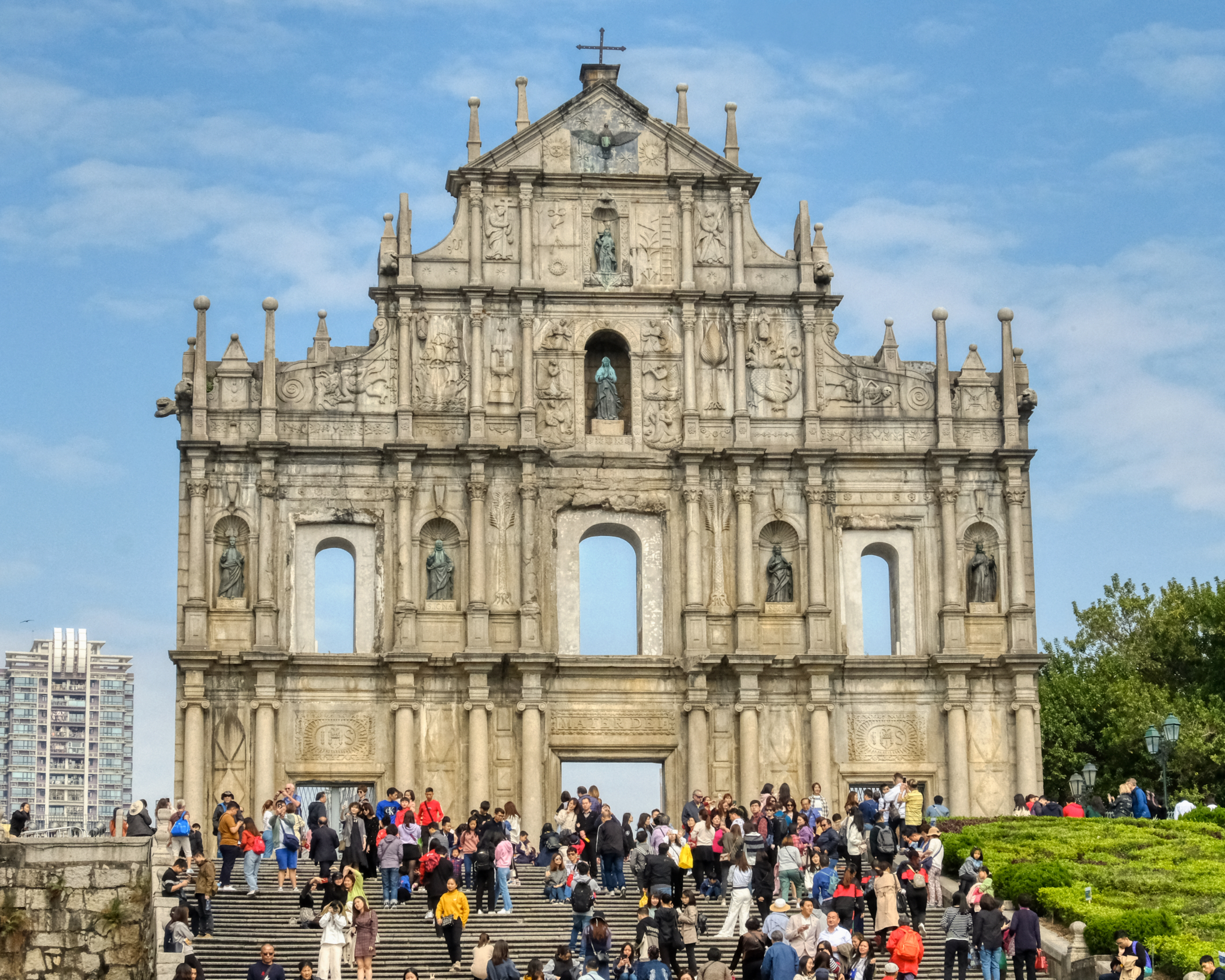 The old St. Paul's ruins are lovely. Built in 1602 and burned down during a typhoon in 1835.
The old St. Paul's ruins are lovely. Built in 1602 and burned down during a typhoon in 1835.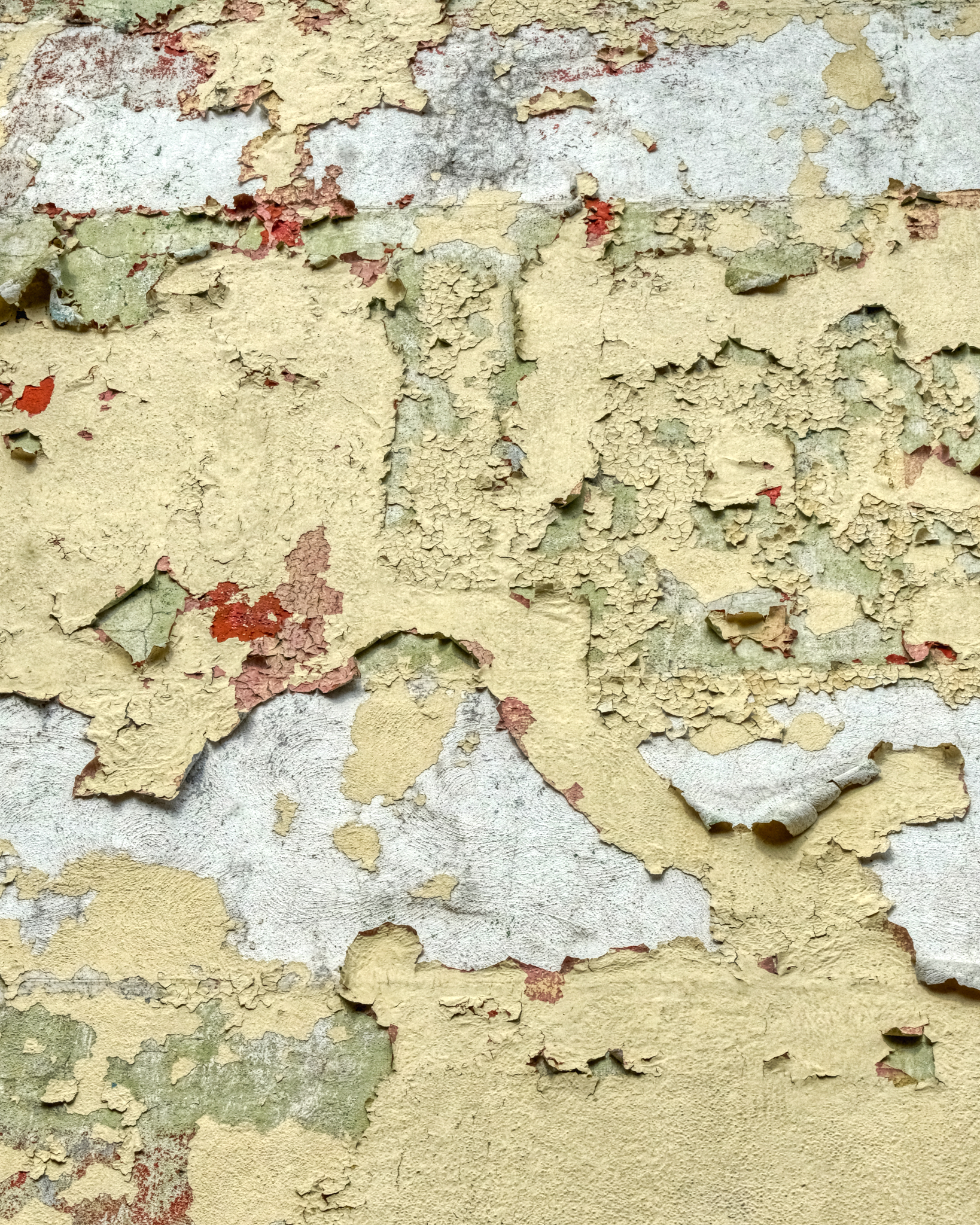 One of my favorite subjects for photography are old wall textures. Maçhau plenty!
One of my favorite subjects for photography are old wall textures. Maçhau plenty!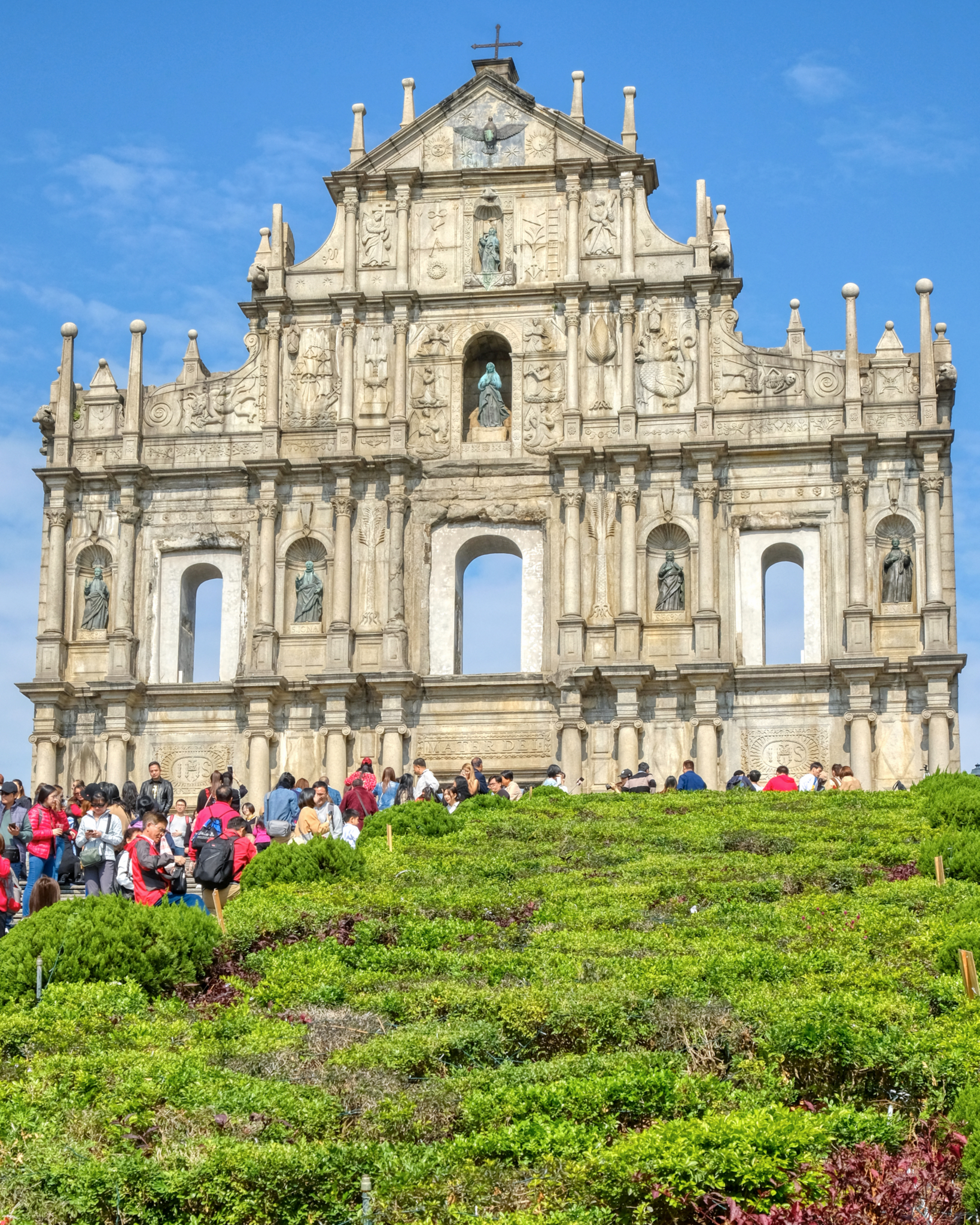 Understandably a major tourist destination. Beautiful.
Understandably a major tourist destination. Beautiful.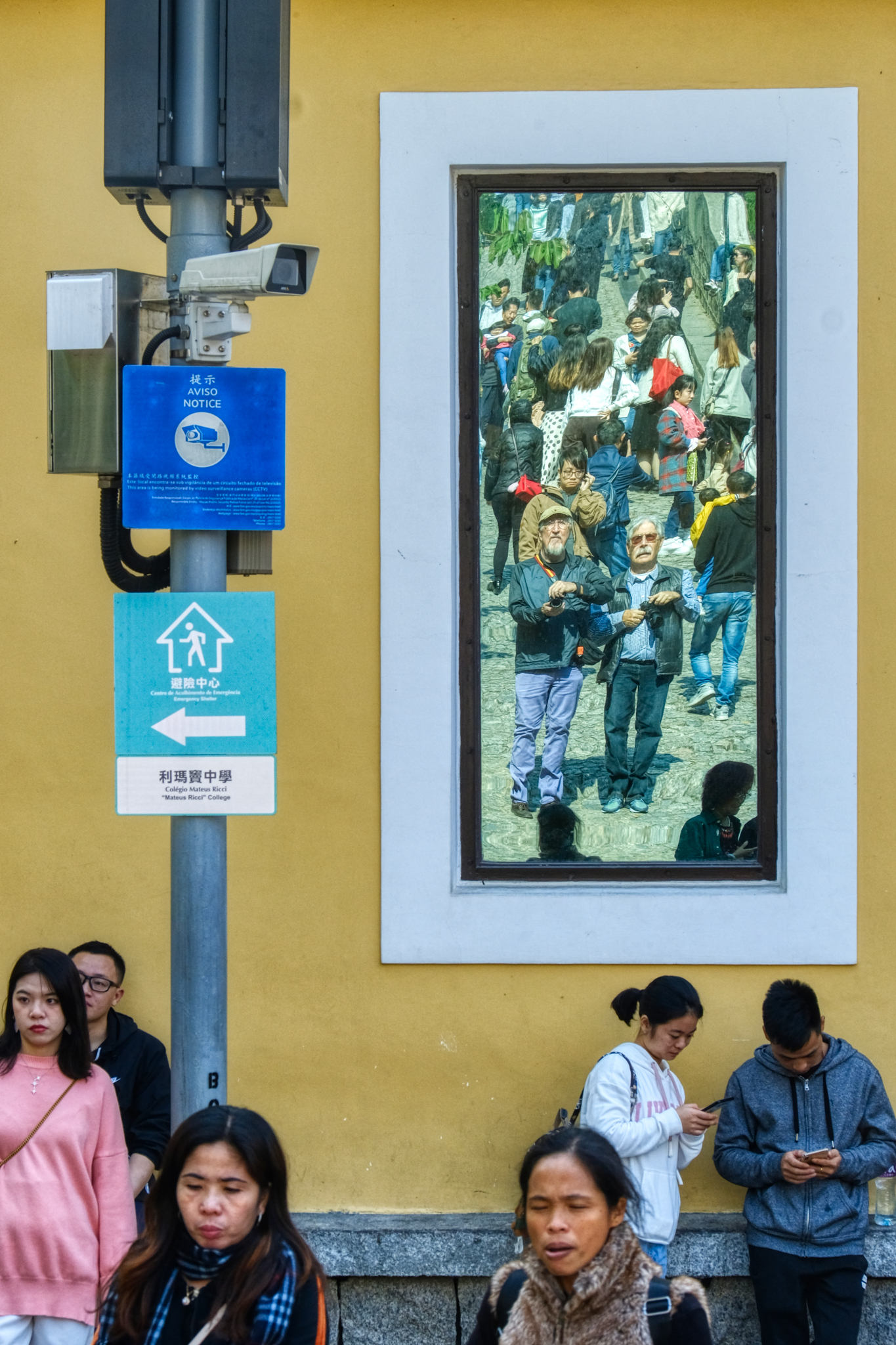 There are a lot of CCTV around Maçau . . . cameras everywhere. We spotted these two western tourists looking lost . . .
There are a lot of CCTV around Maçau . . . cameras everywhere. We spotted these two western tourists looking lost . . .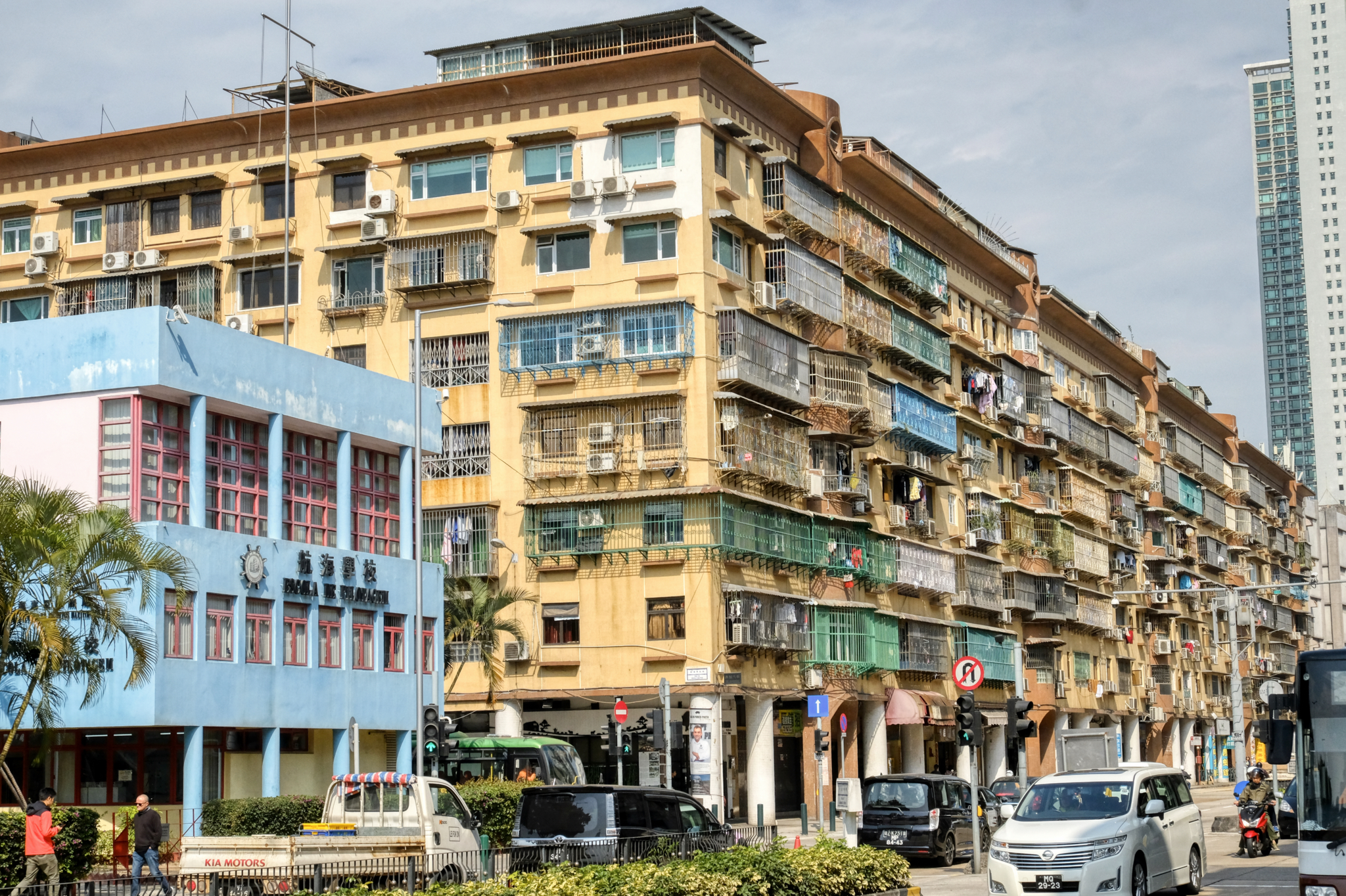 We took taxis around town to many sites of interest. This is how most working people in Maçau live.
We took taxis around town to many sites of interest. This is how most working people in Maçau live.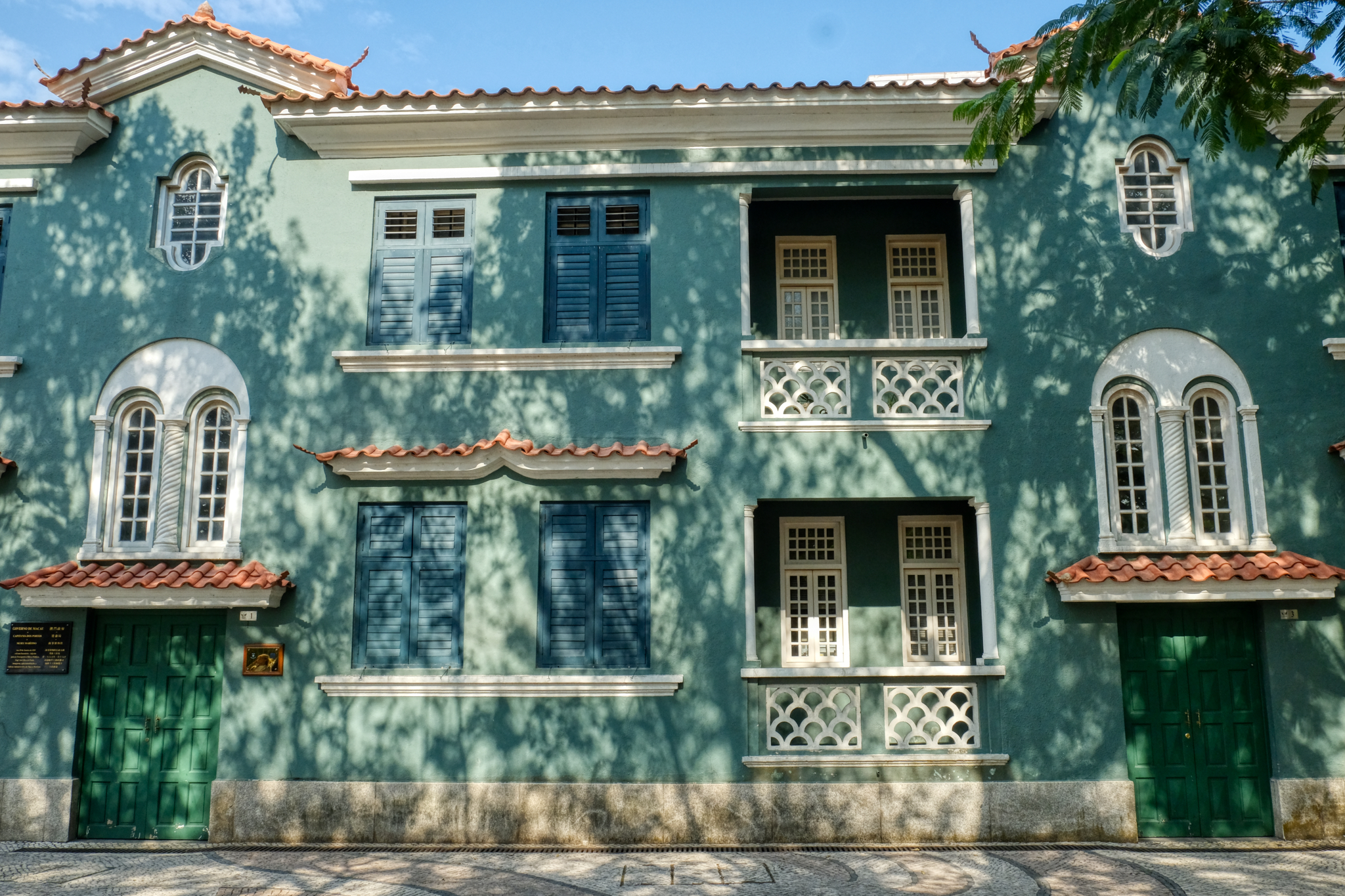 One stop was at the old Portuguese Governors Office. Portugal acquired a leas on Maçau in 1557 and ceded it back to China in 1999.
One stop was at the old Portuguese Governors Office. Portugal acquired a leas on Maçau in 1557 and ceded it back to China in 1999.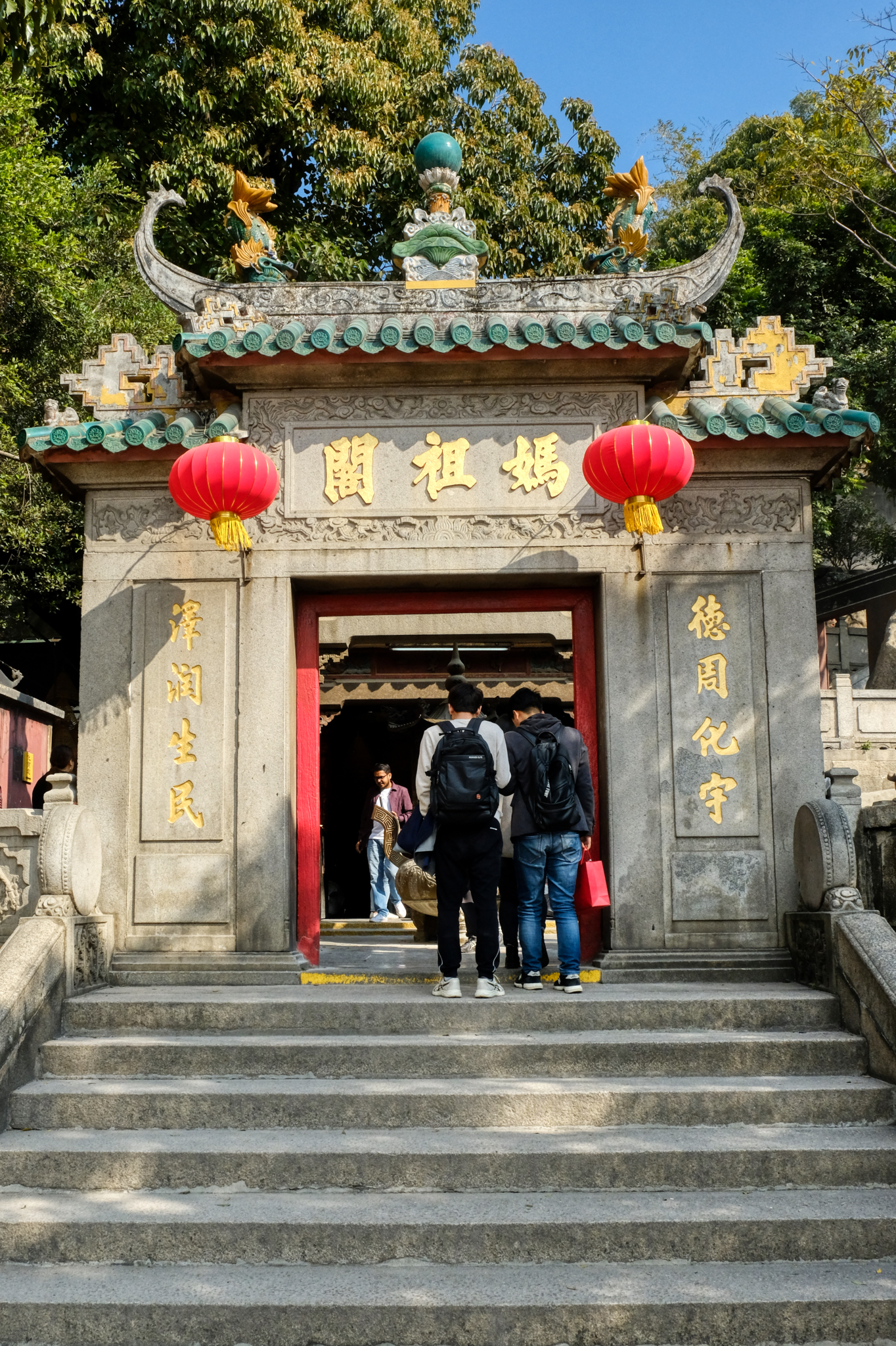 Next to the Portuguese Governors Office was a lovely old hillside Chinese Temple, the oldest in Maçau we were told.
Next to the Portuguese Governors Office was a lovely old hillside Chinese Temple, the oldest in Maçau we were told.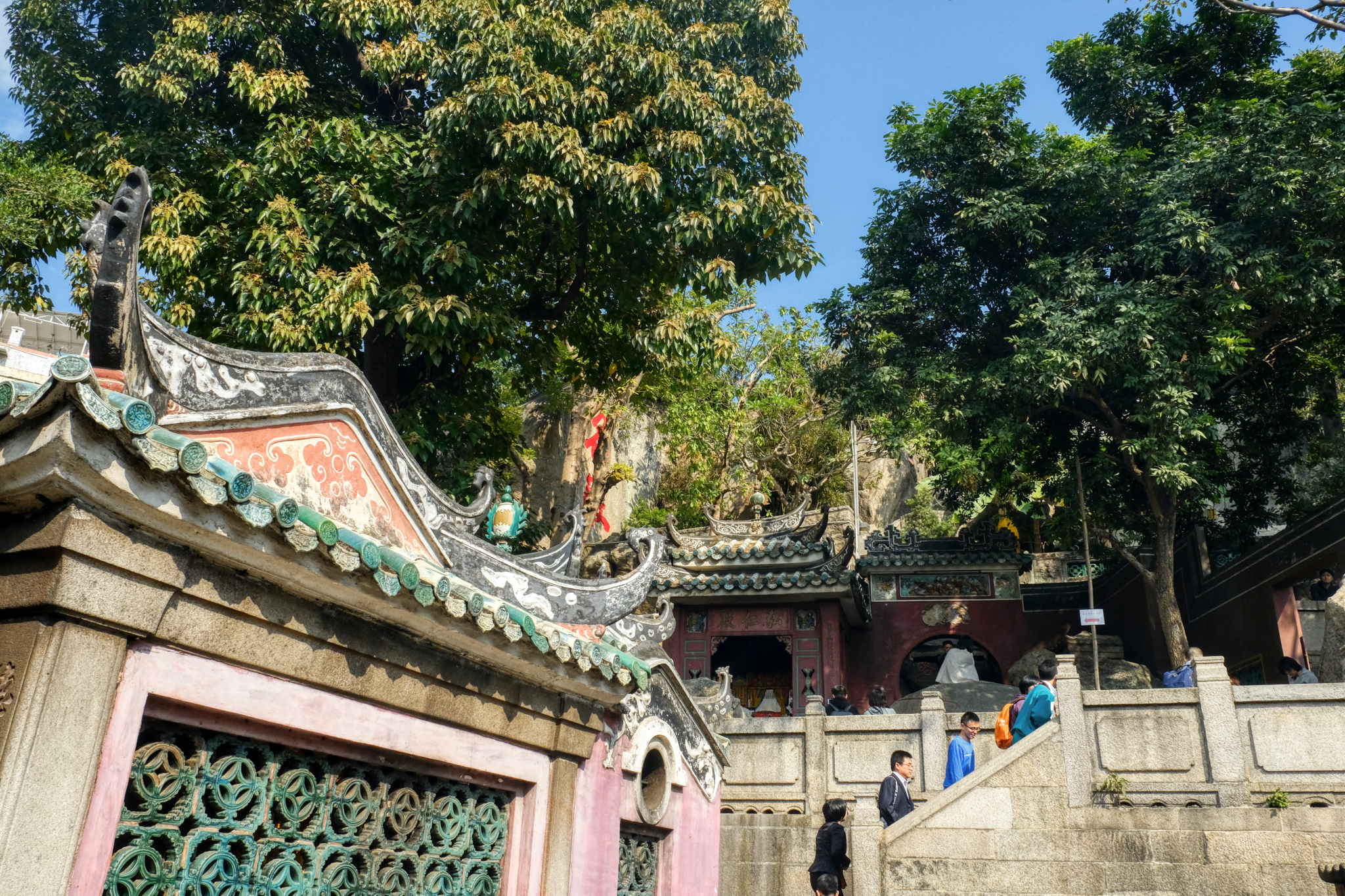 We walked to the top of the temple compound along narrow and steep steps.
We walked to the top of the temple compound along narrow and steep steps.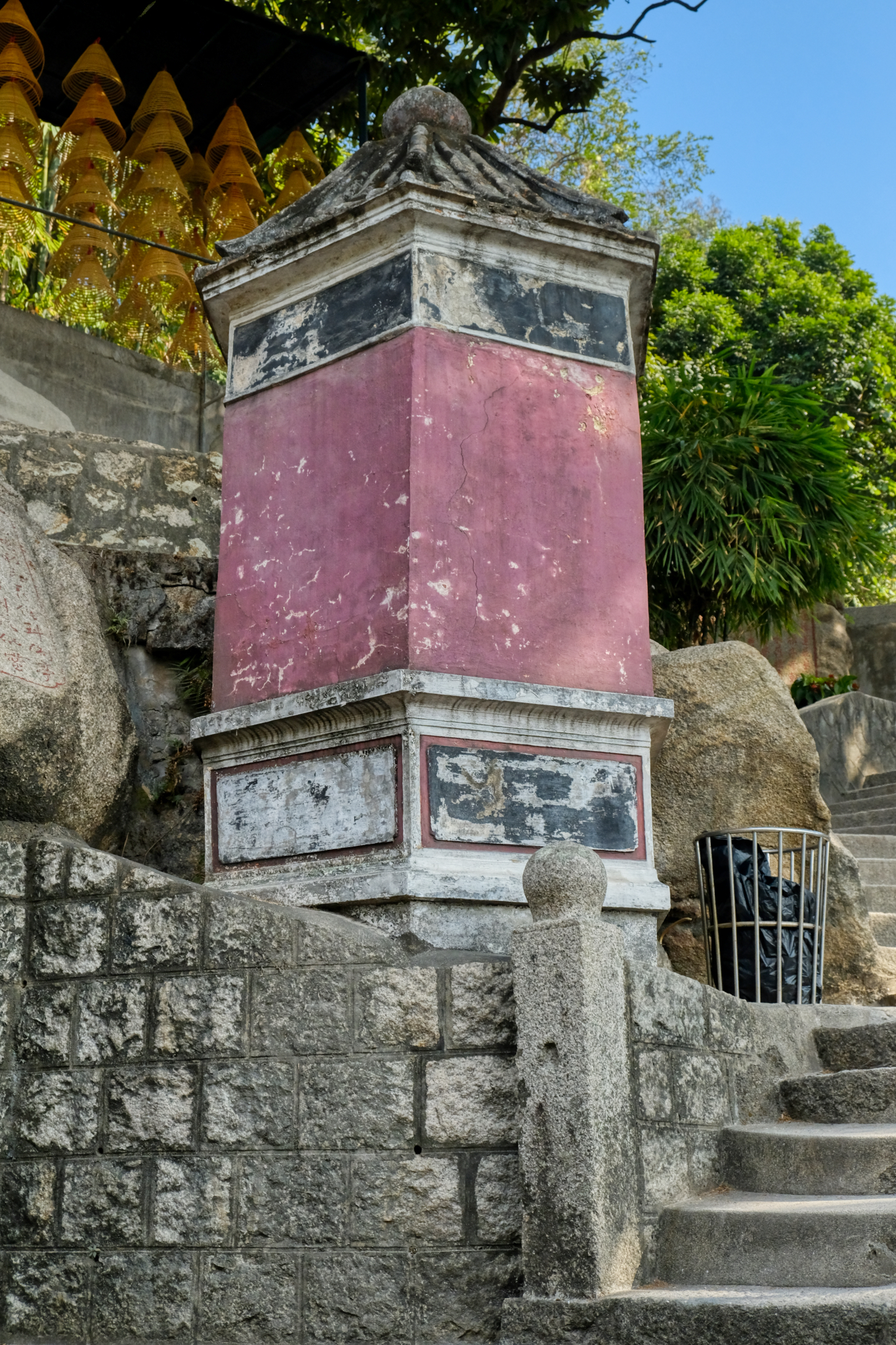 Something interesting around every corner . . .
Something interesting around every corner . . .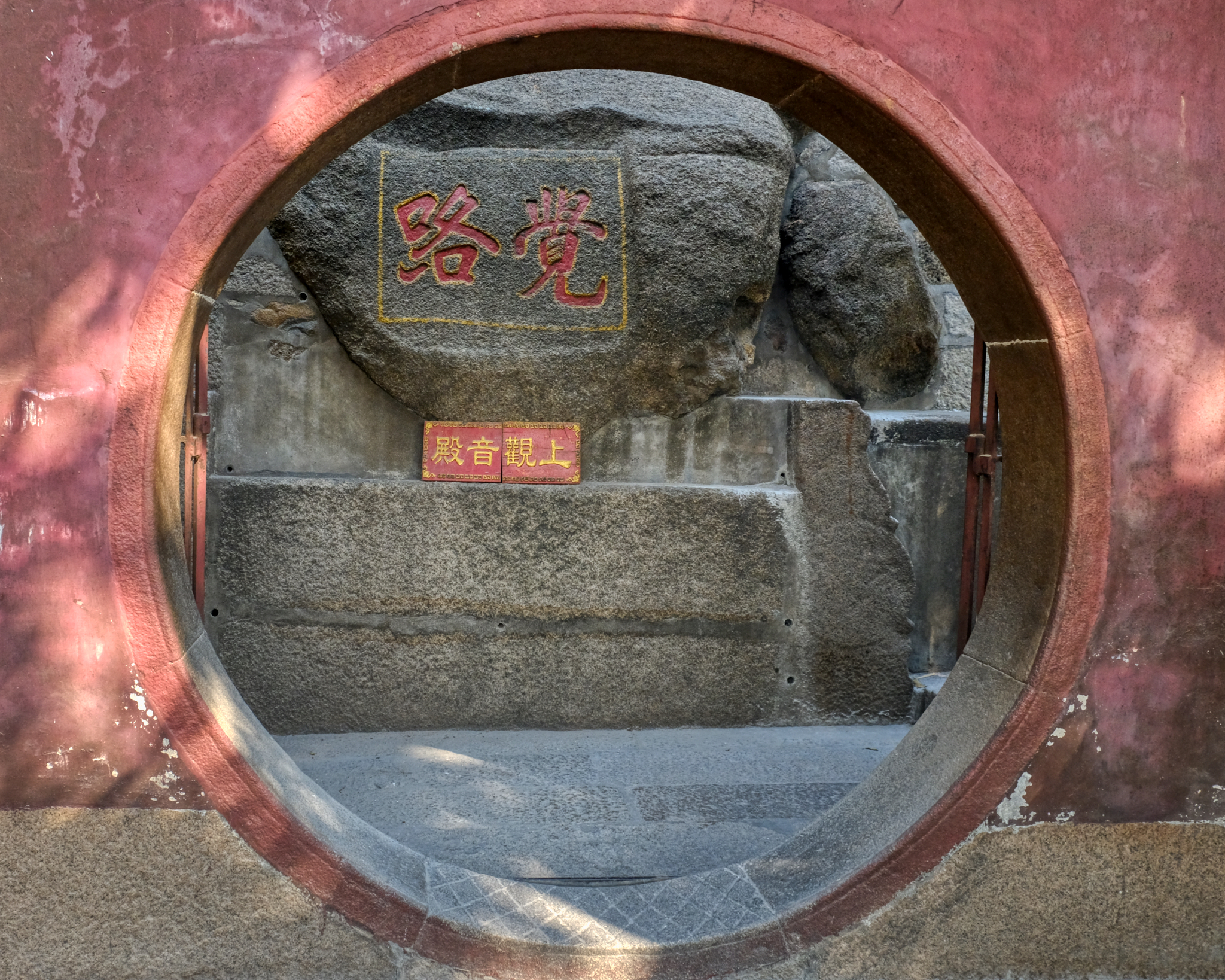 The way up led went through this lovely circular passageway.
The way up led went through this lovely circular passageway.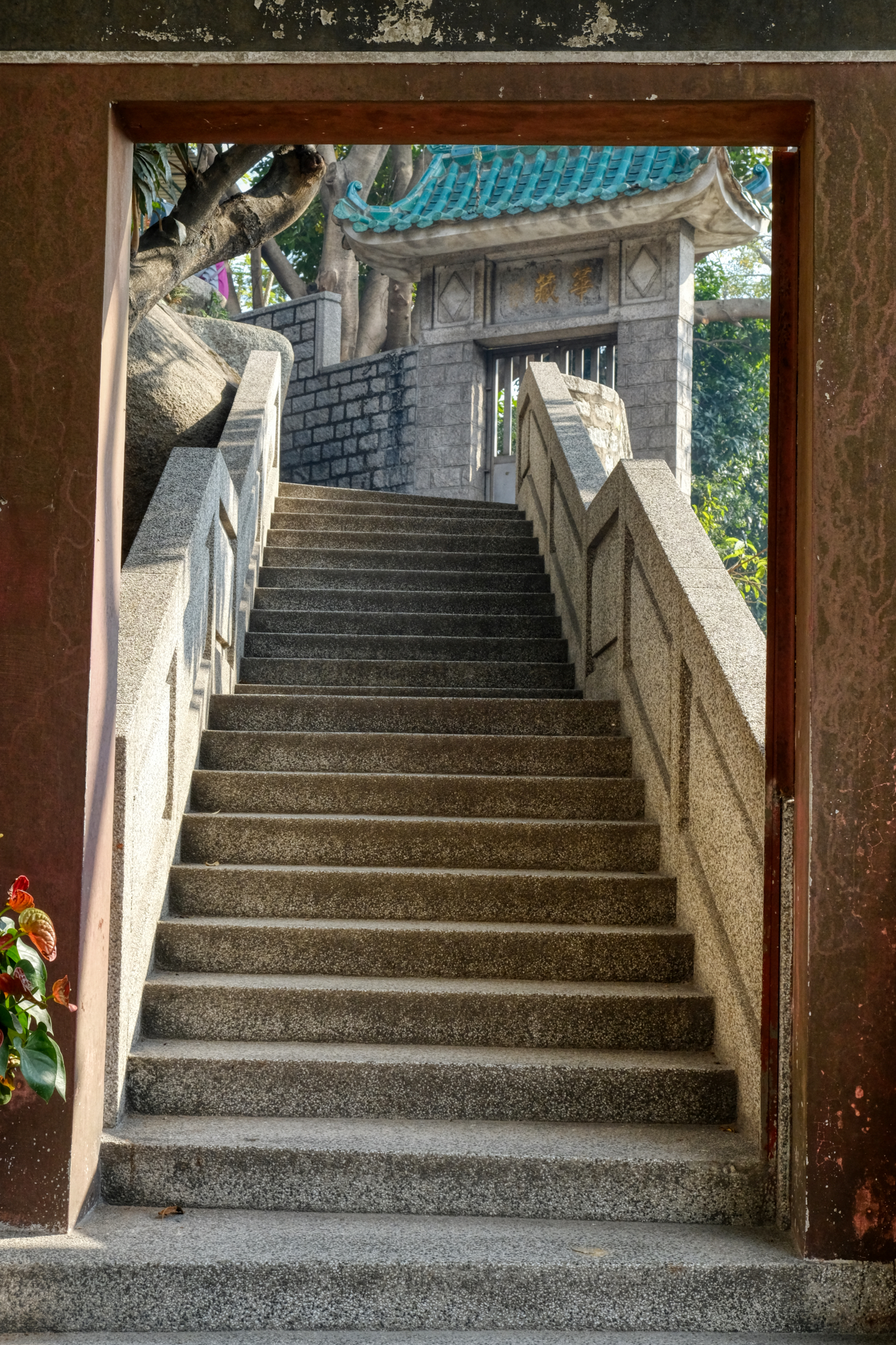 Up and up we went!
Up and up we went!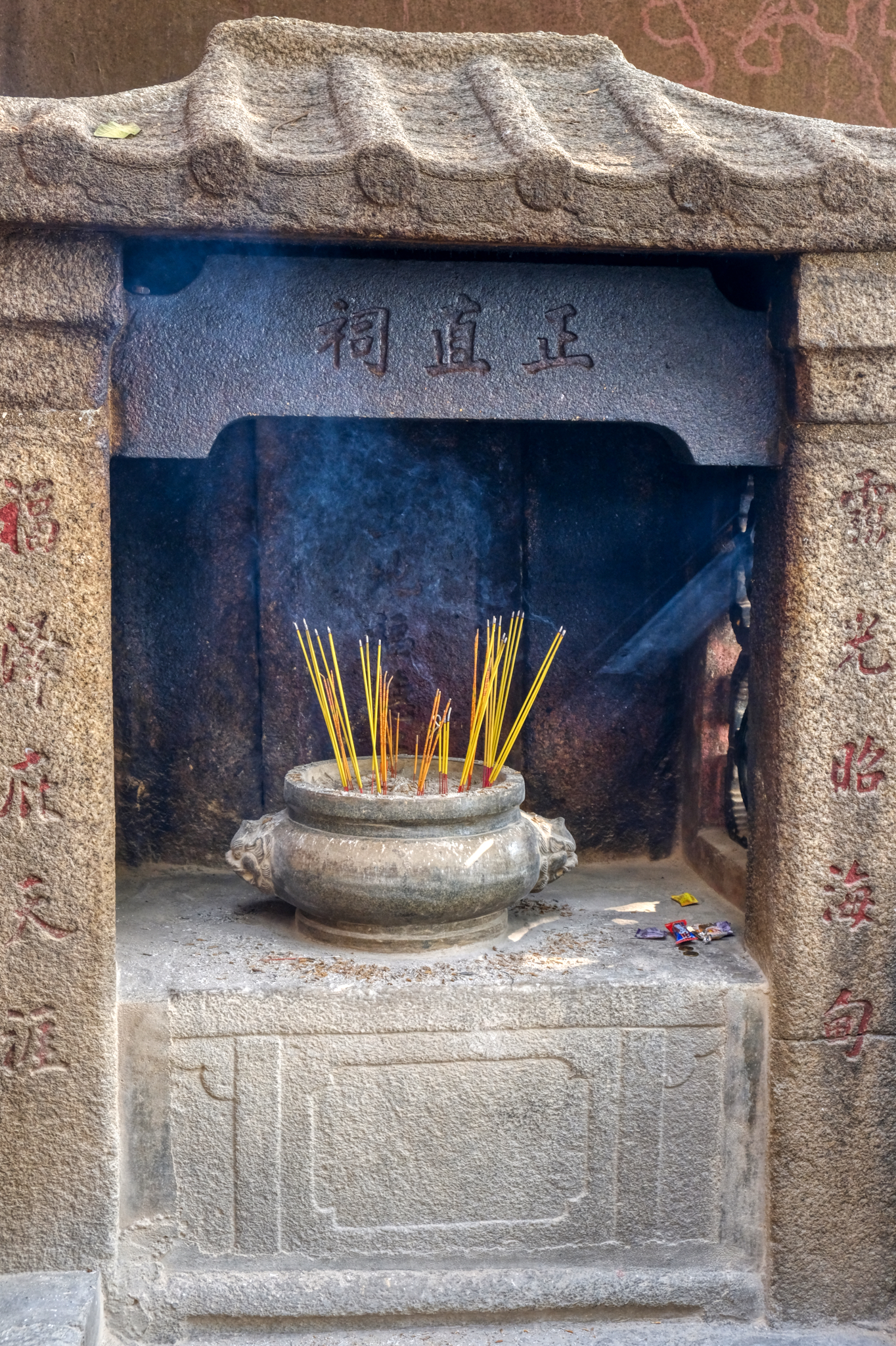 Small shrines were found all along the way up.
Small shrines were found all along the way up.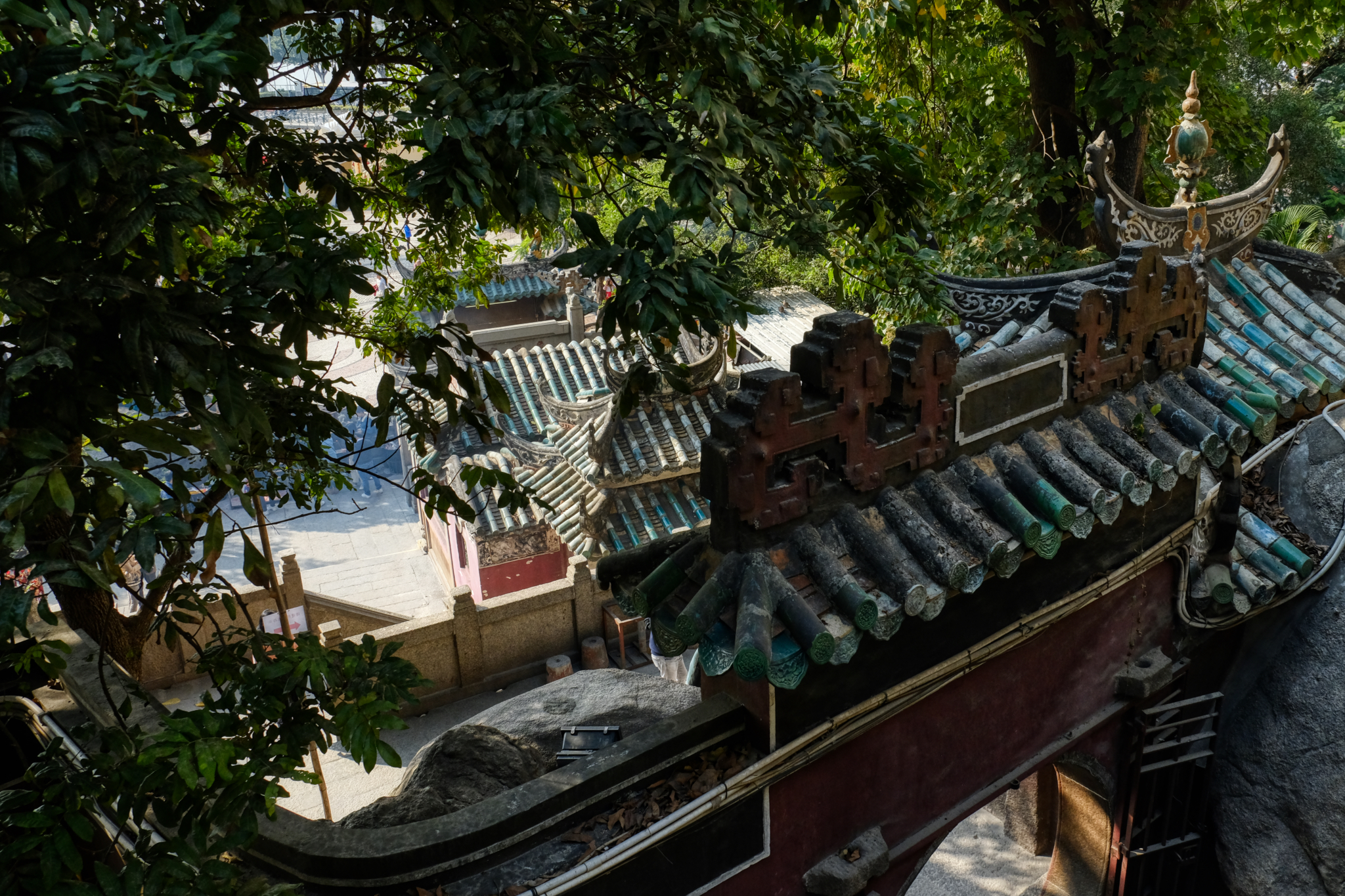 The views back down over the temple roofs.
The views back down over the temple roofs.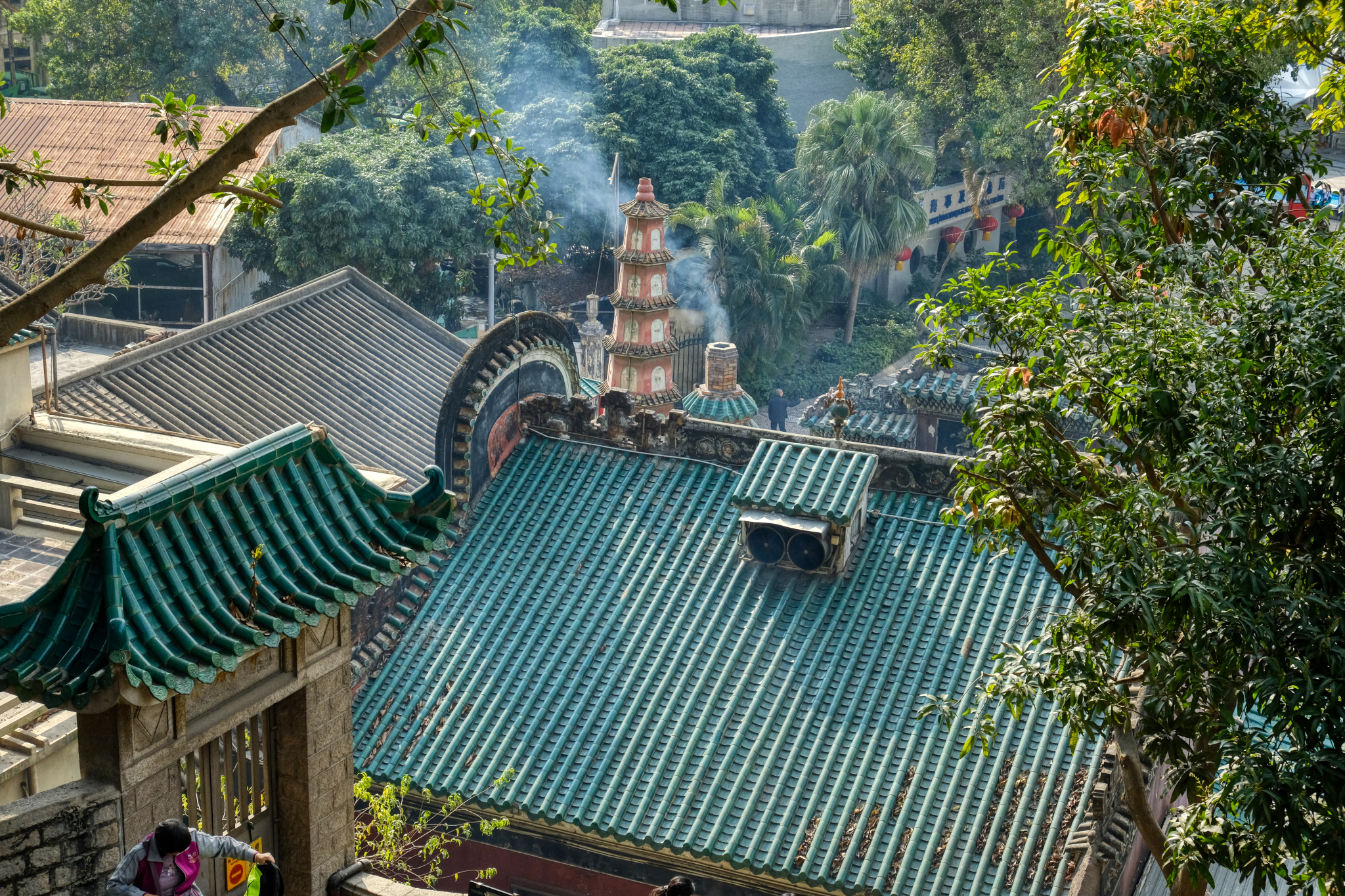 The temple complex from above.
The temple complex from above.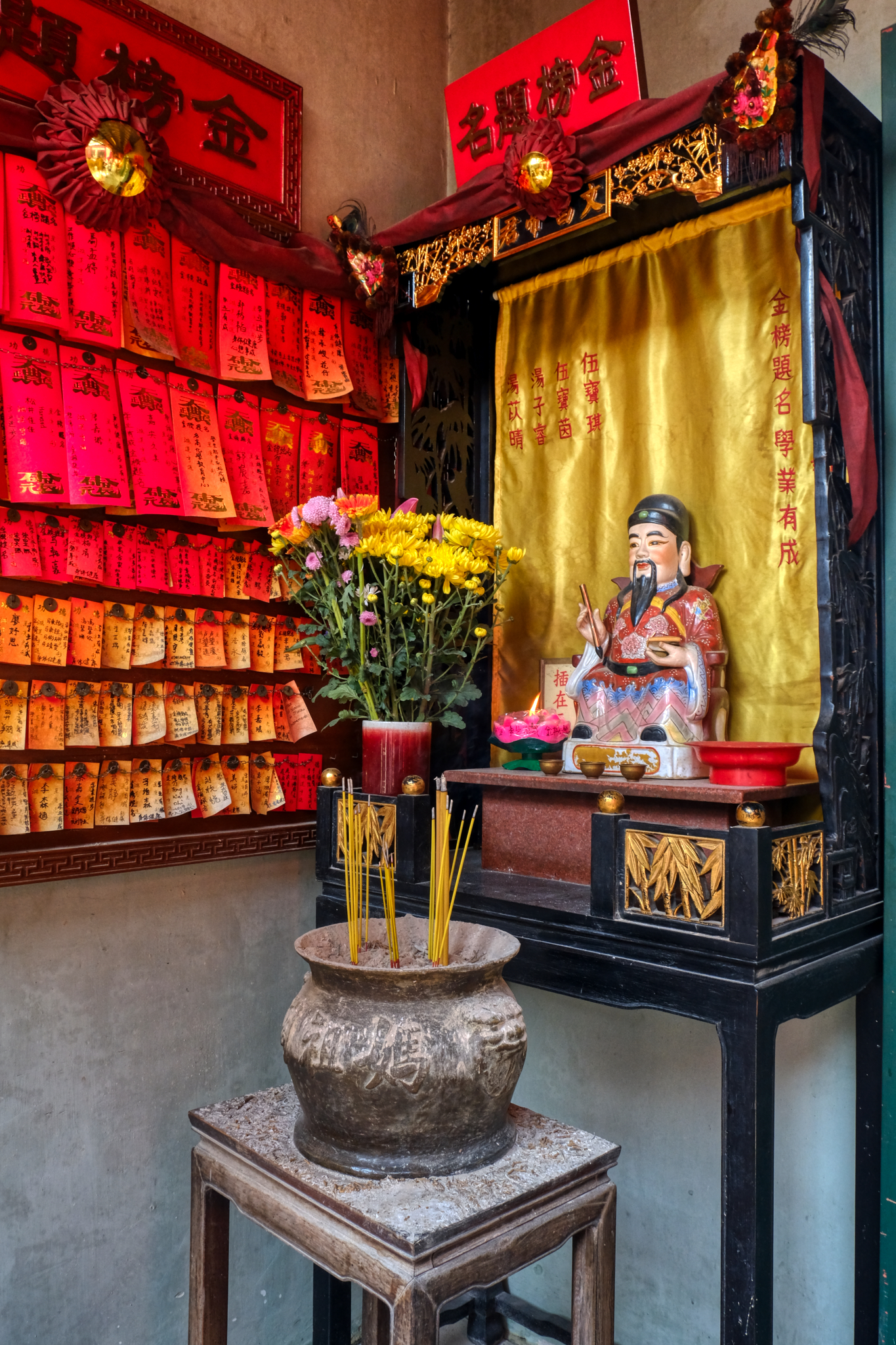 Small buildings along the way held fascinating altars.
Small buildings along the way held fascinating altars.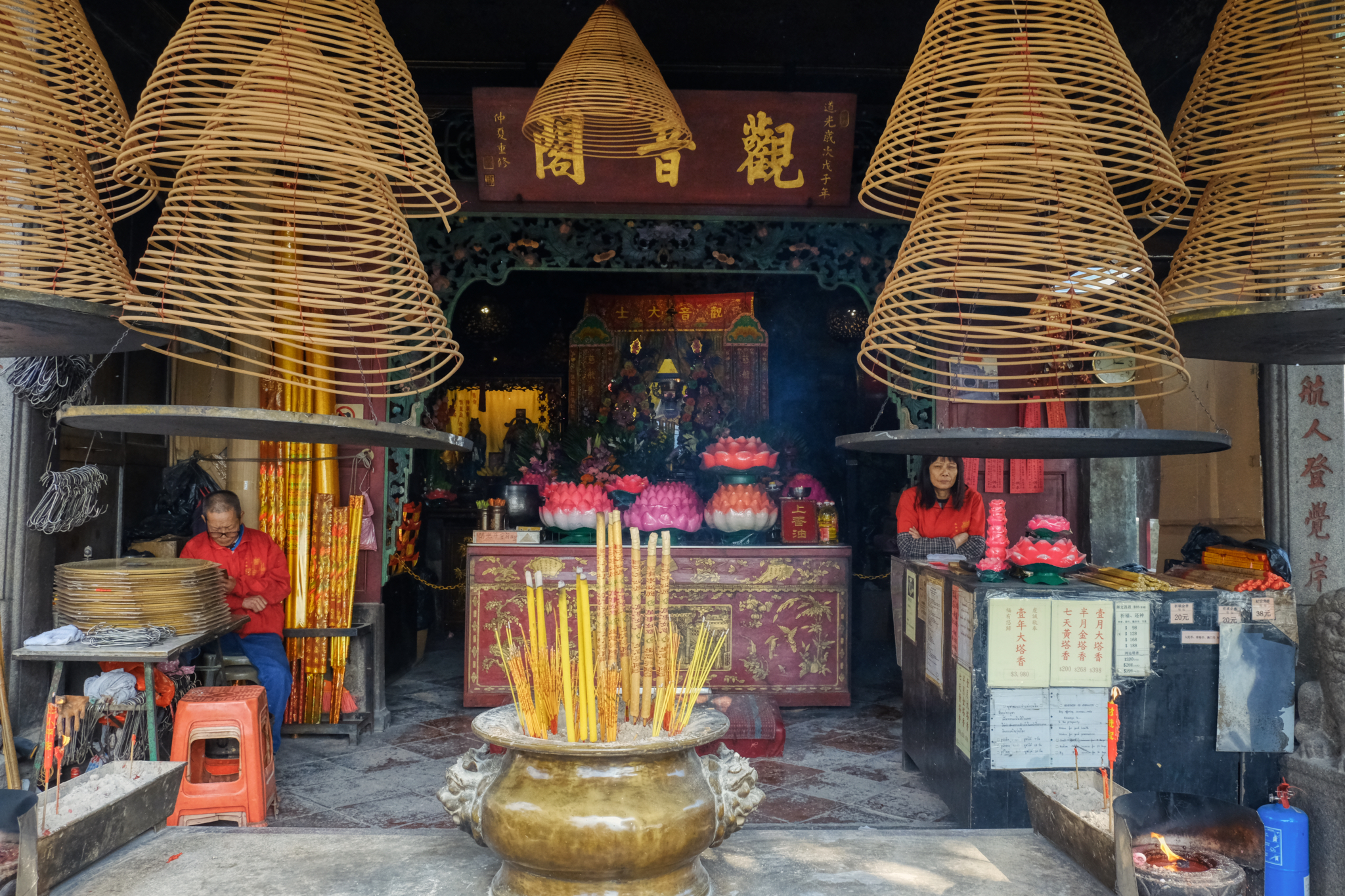 Among the most interesting altars I have ever seen . . .
Among the most interesting altars I have ever seen . . .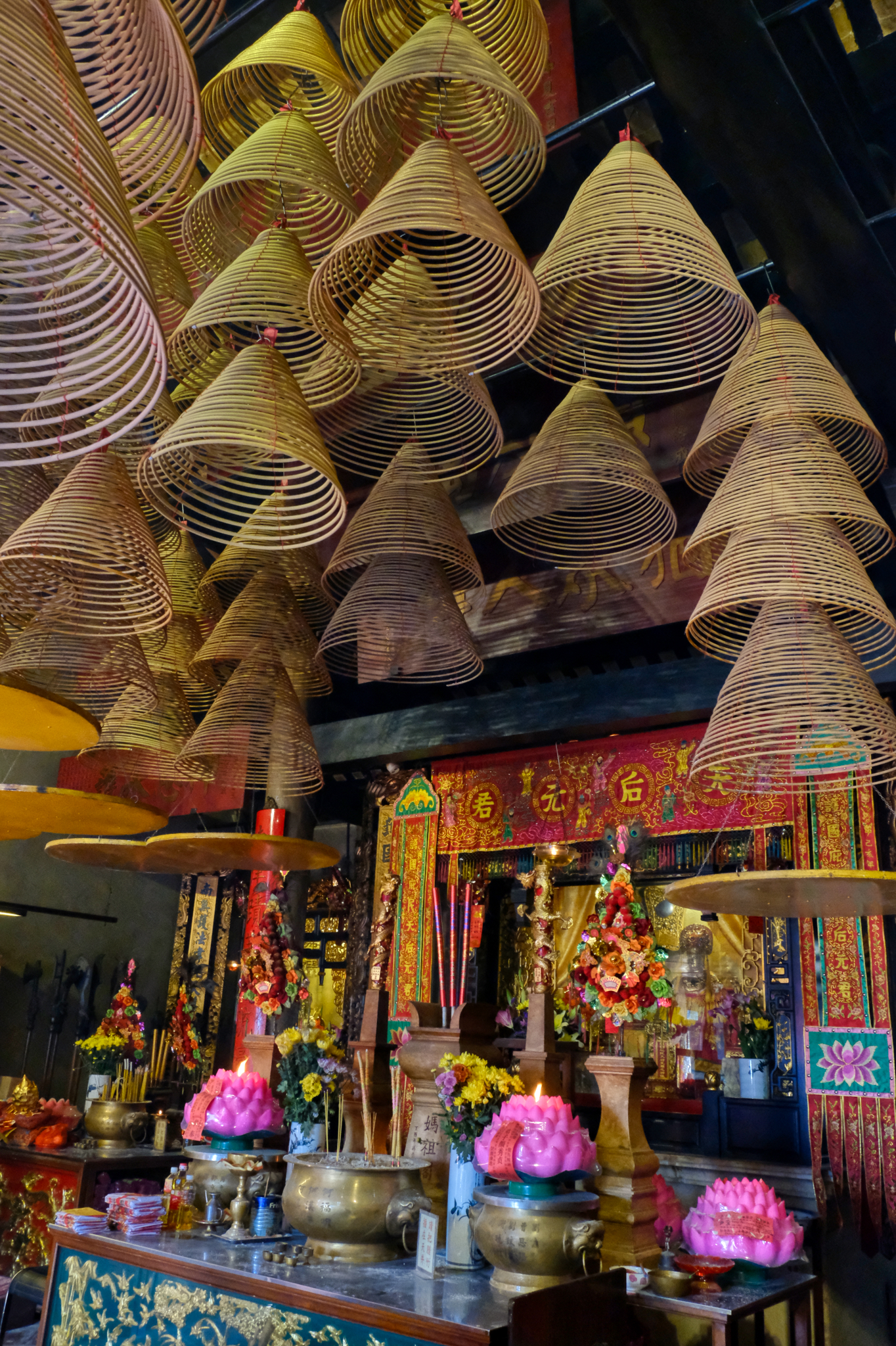 Large conical incense hanging from the rafters.
Large conical incense hanging from the rafters. Each altar has their own tender.
Each altar has their own tender.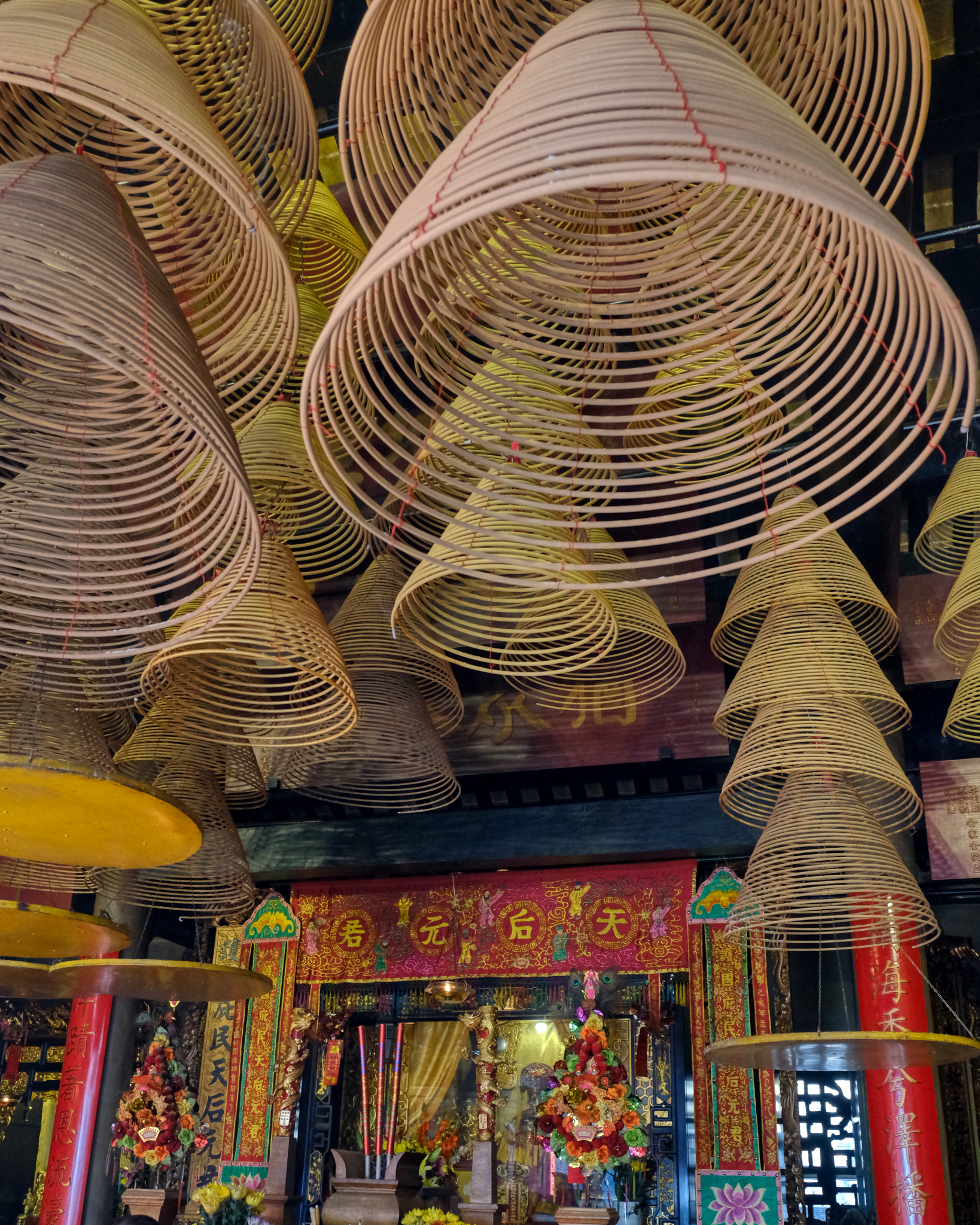 The coils made for some amazing patterns.
The coils made for some amazing patterns.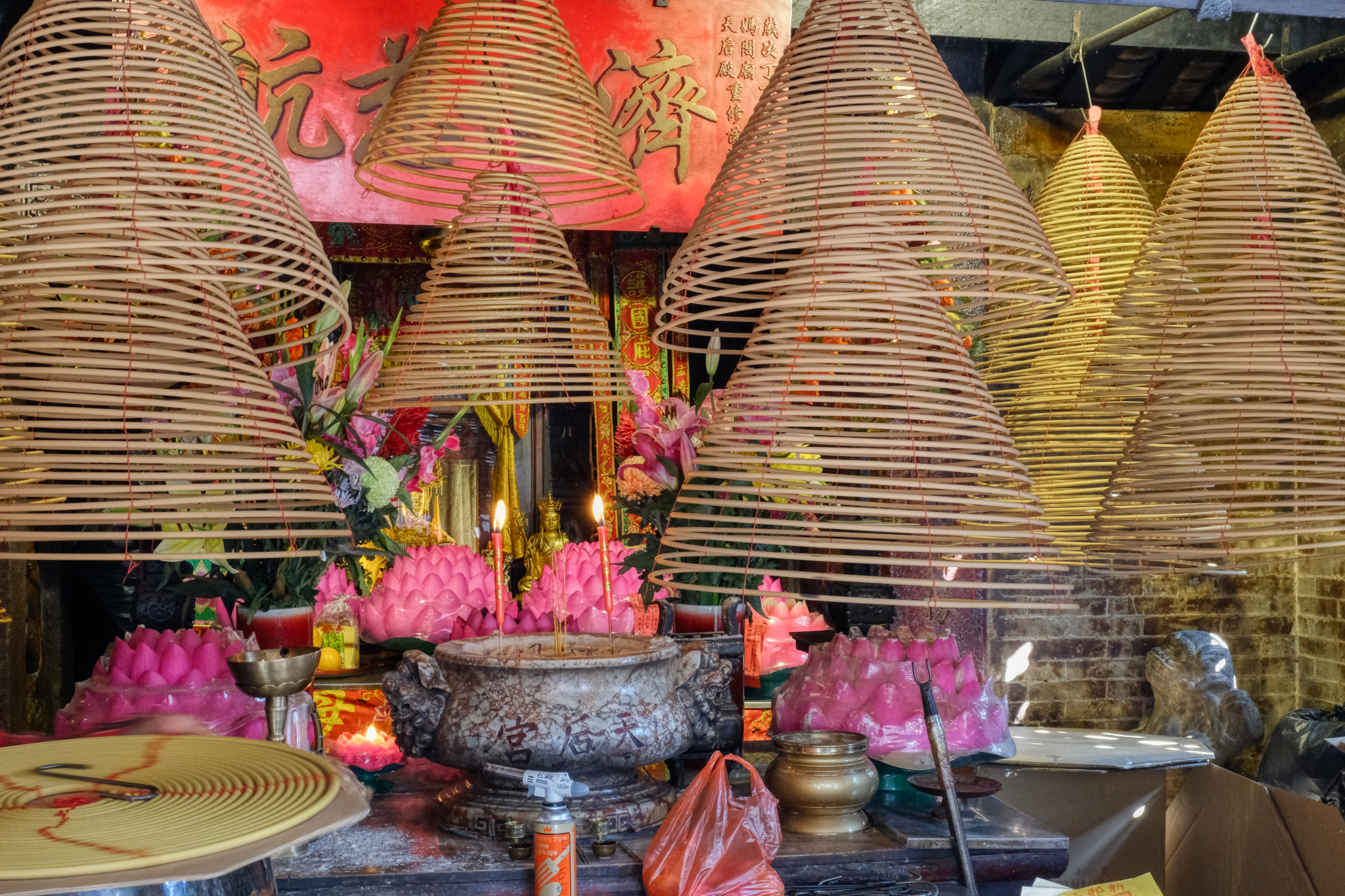 The votive incense cones were really interesting.
The votive incense cones were really interesting.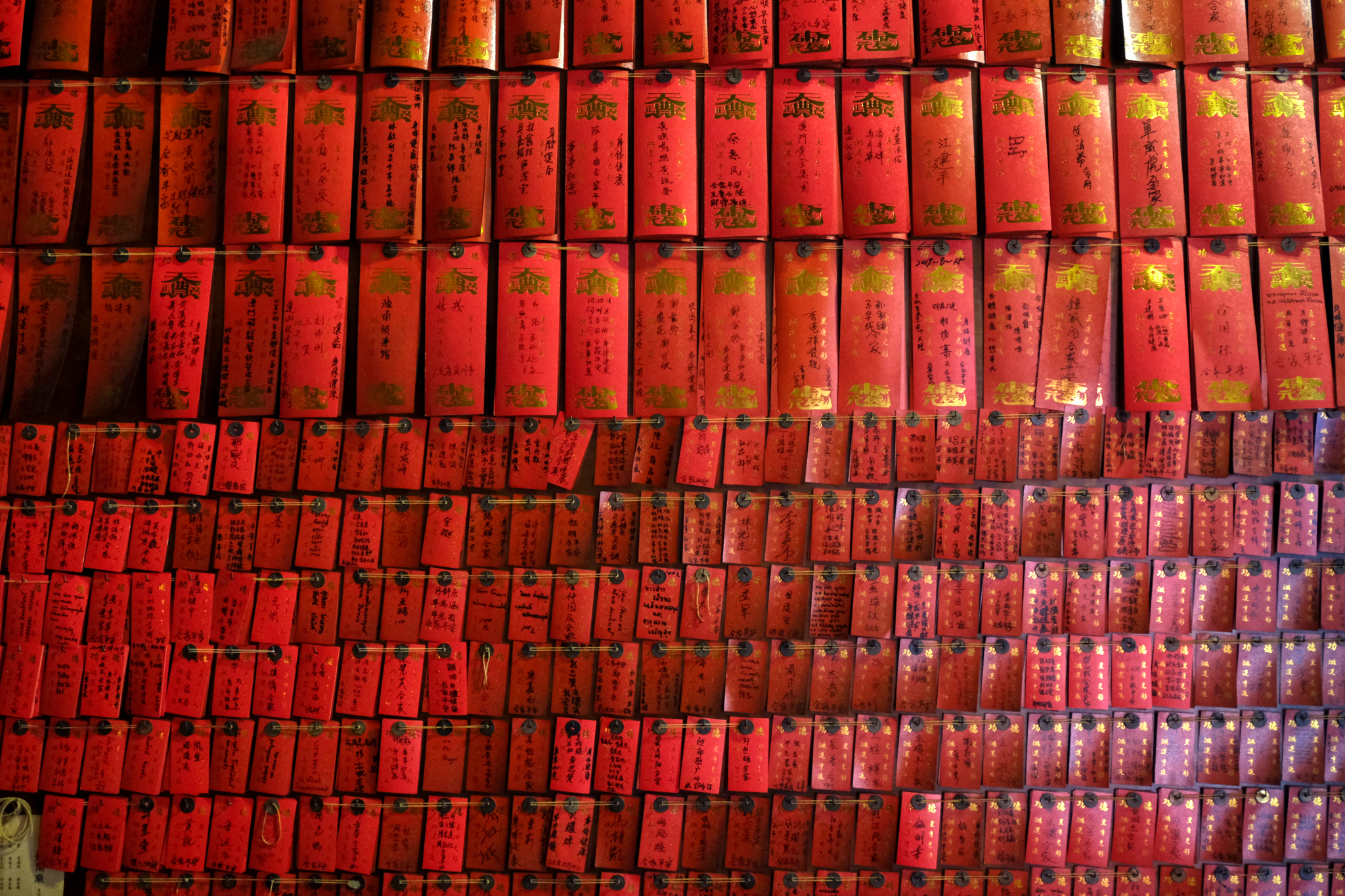 Fortune cards . . .
Fortune cards . . .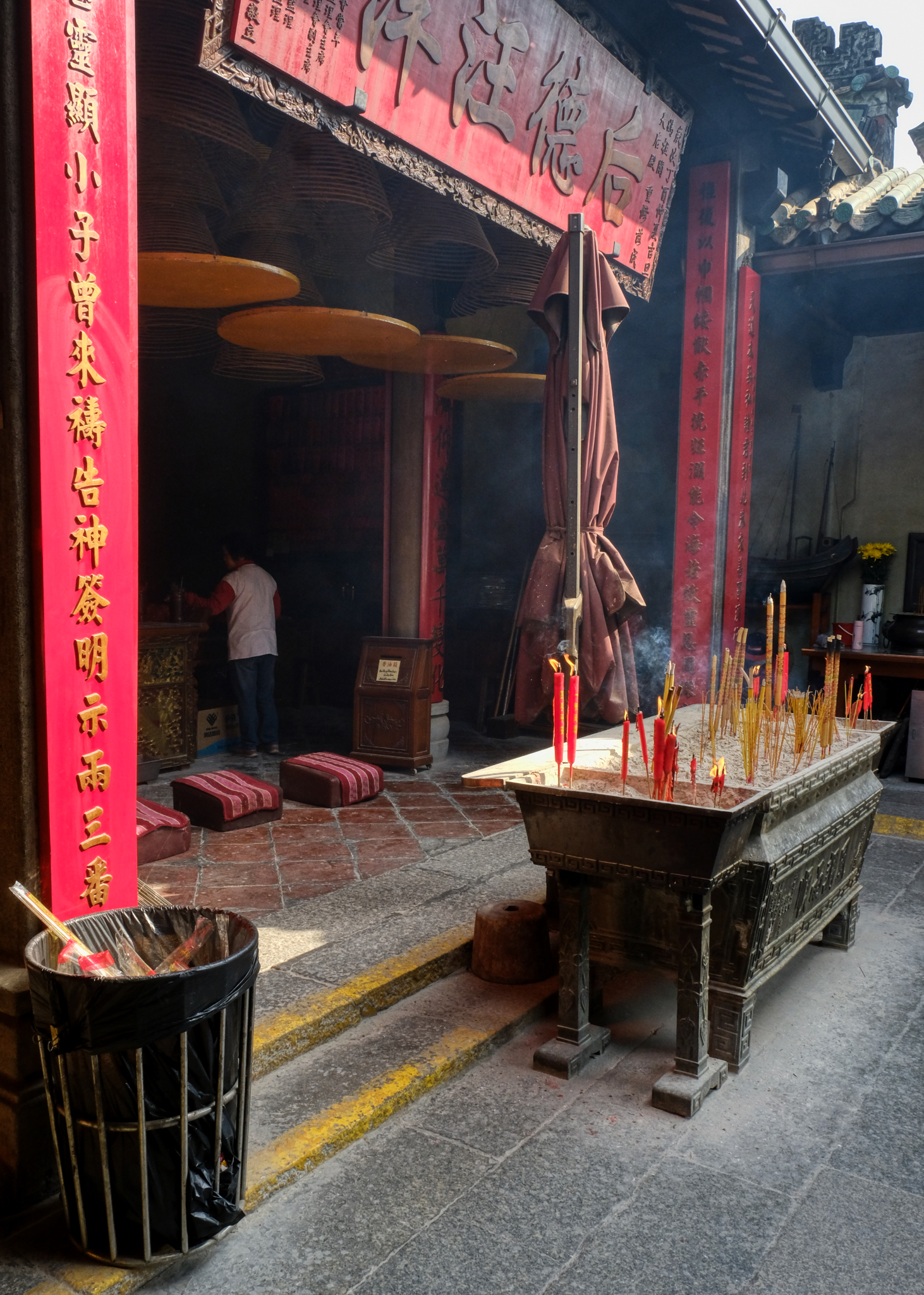 Another of the many temple shrines at the hillside temple.
Another of the many temple shrines at the hillside temple.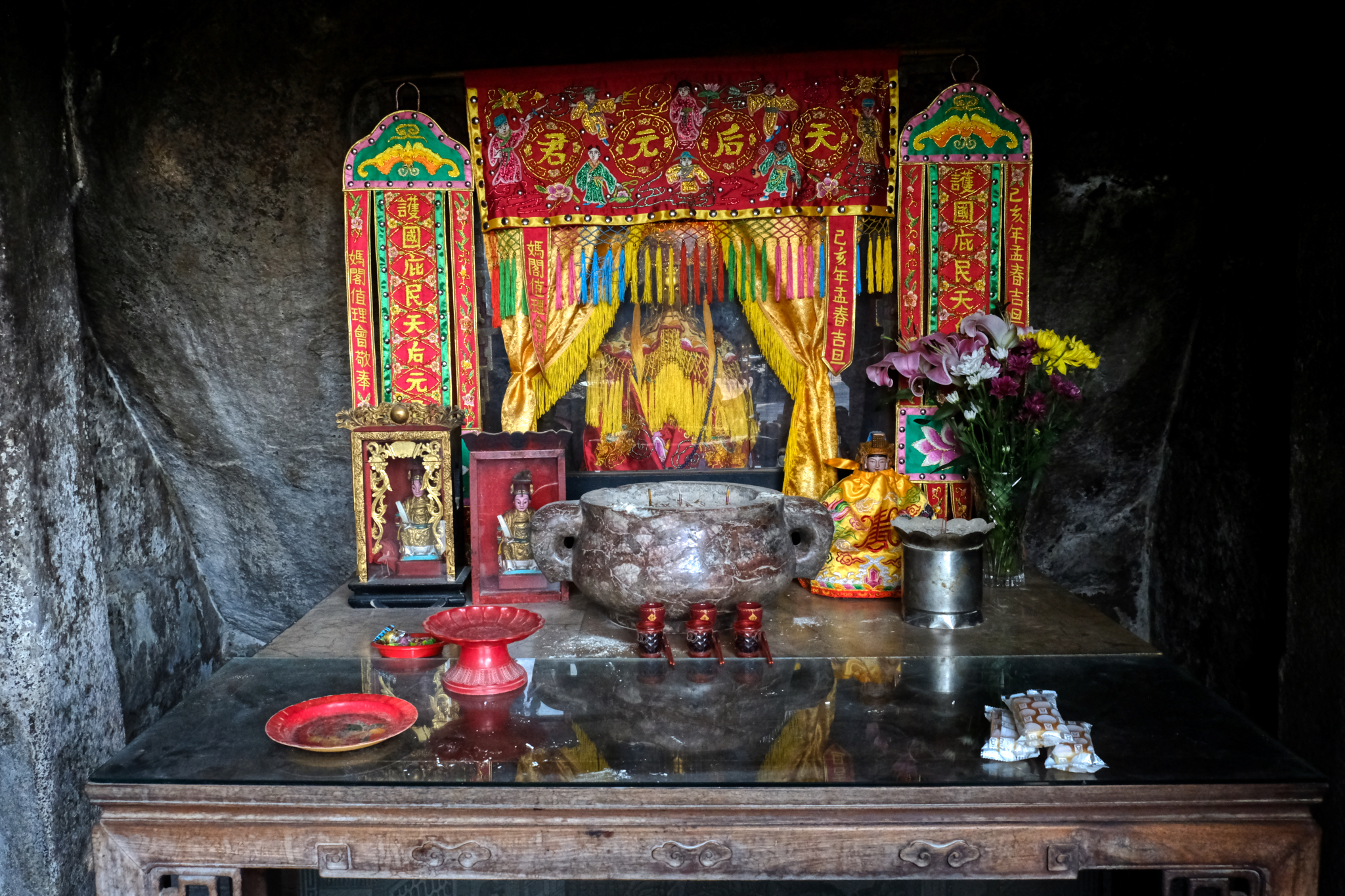 A small and seemingly ancient altar.
A small and seemingly ancient altar.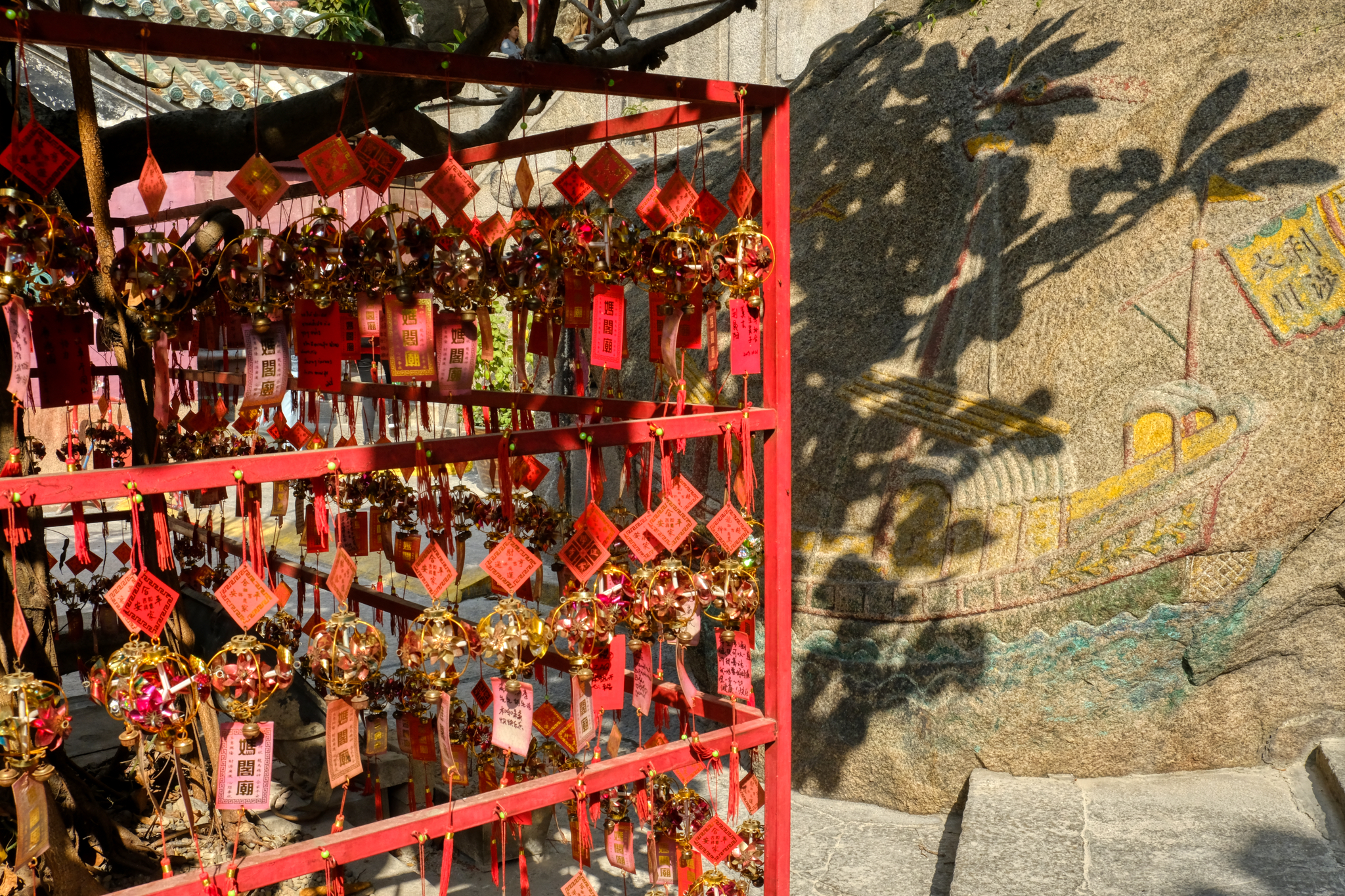 Wishes set into the wind . . .
Wishes set into the wind . . .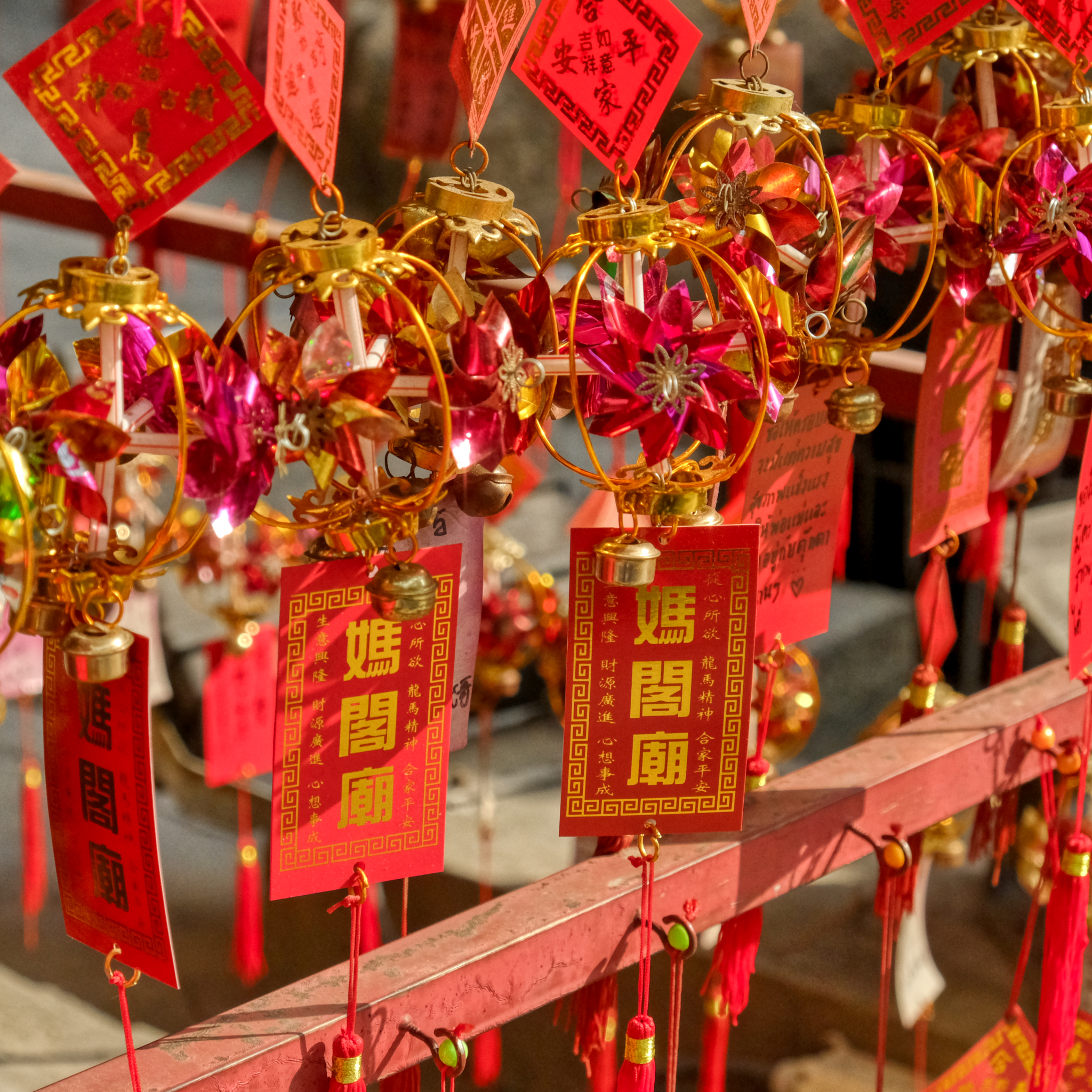 These were so sweet . . . casting your wishes to the wind.
These were so sweet . . . casting your wishes to the wind.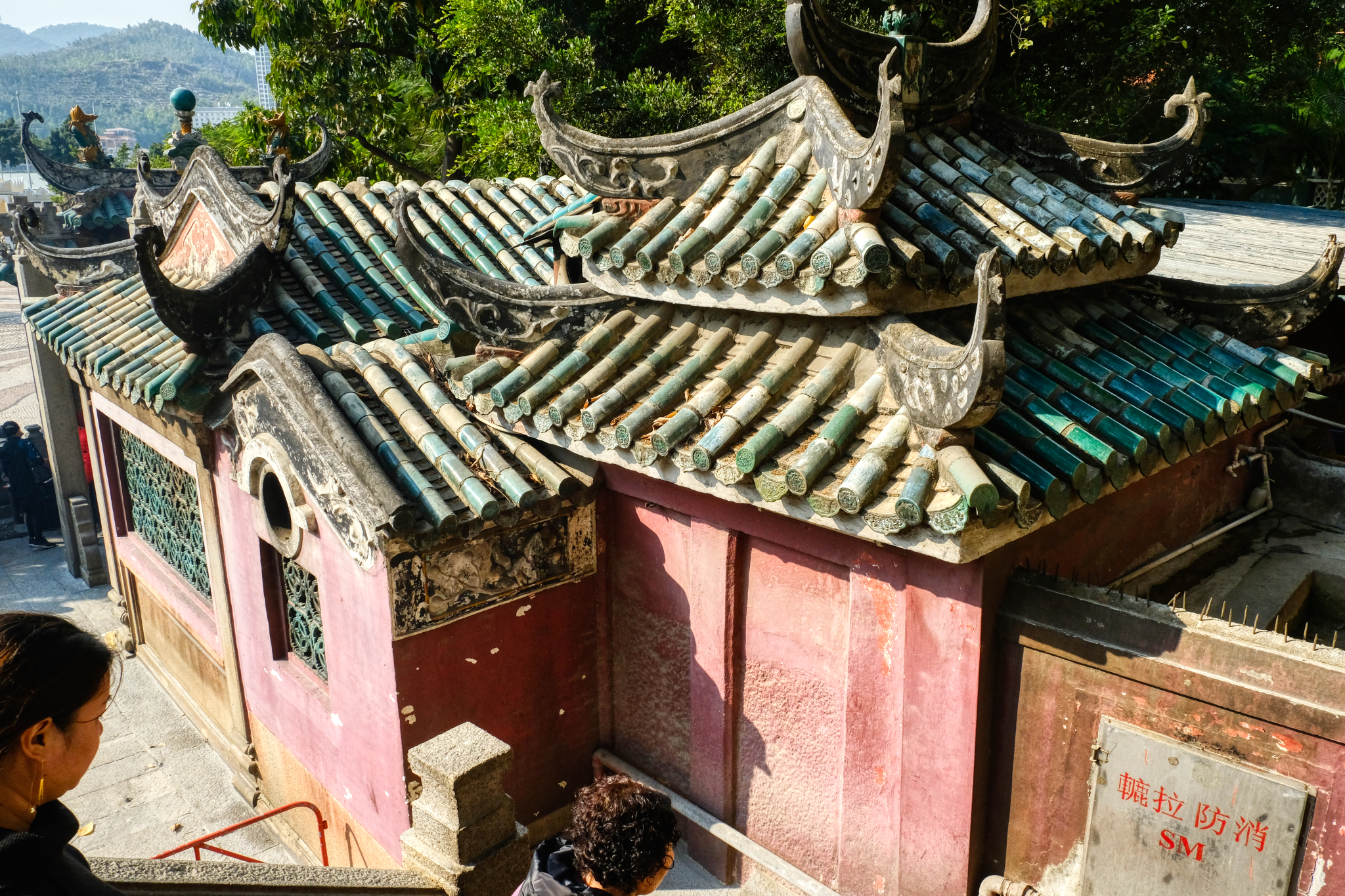 The walk back down was also beautiful.
The walk back down was also beautiful.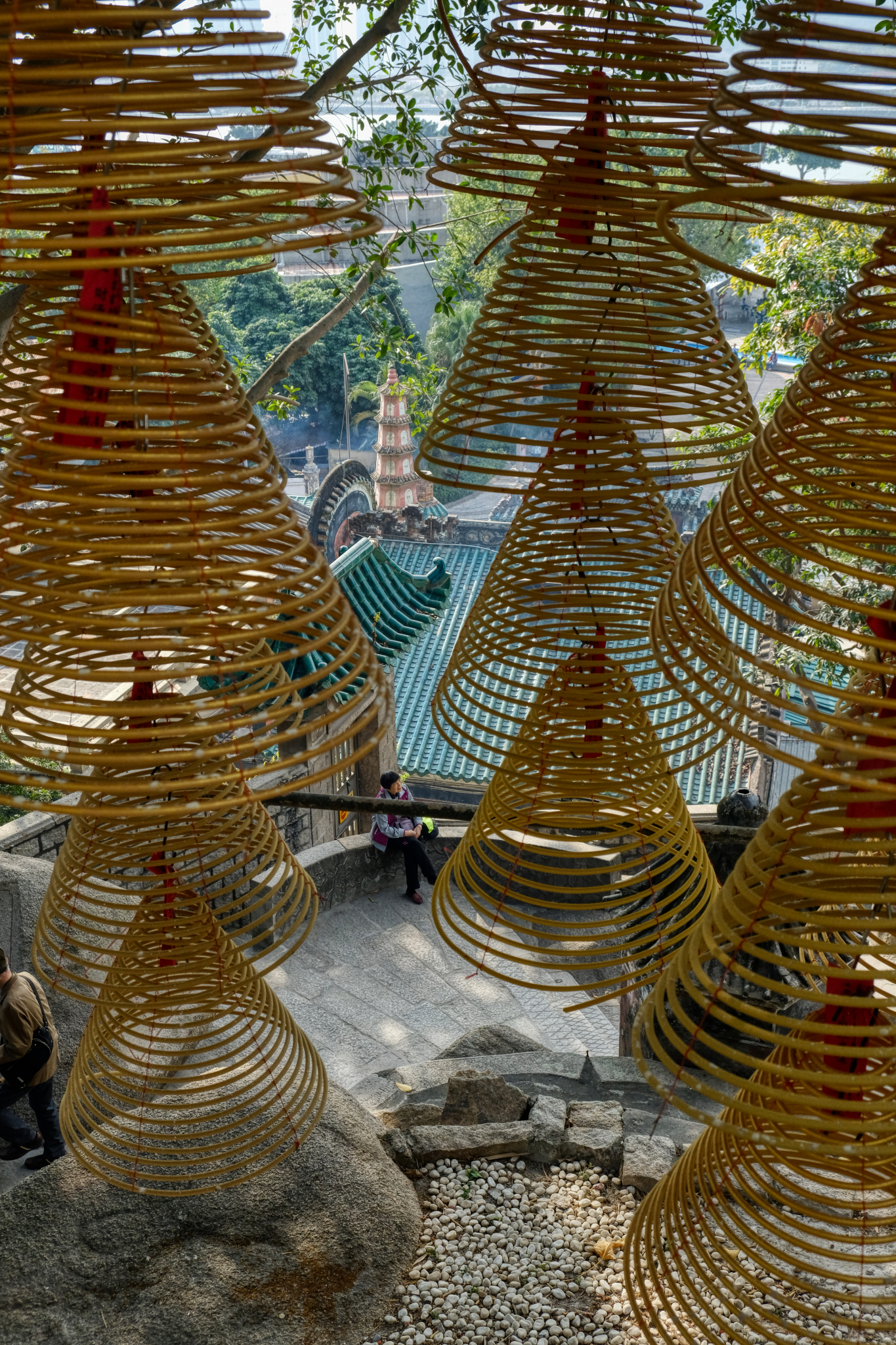 The view down through the incense coils.
The view down through the incense coils.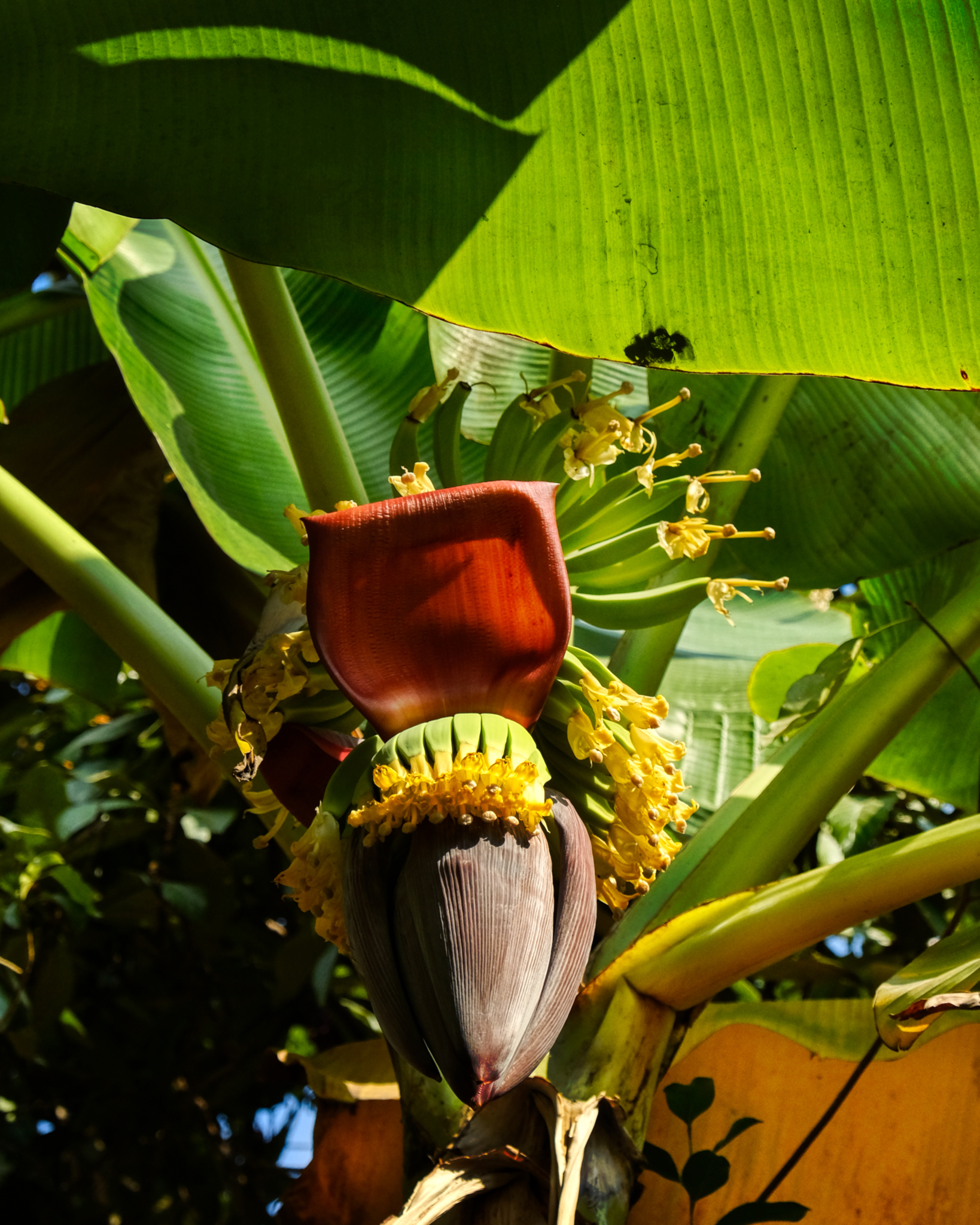 A Maçau banana flower.
A Maçau banana flower.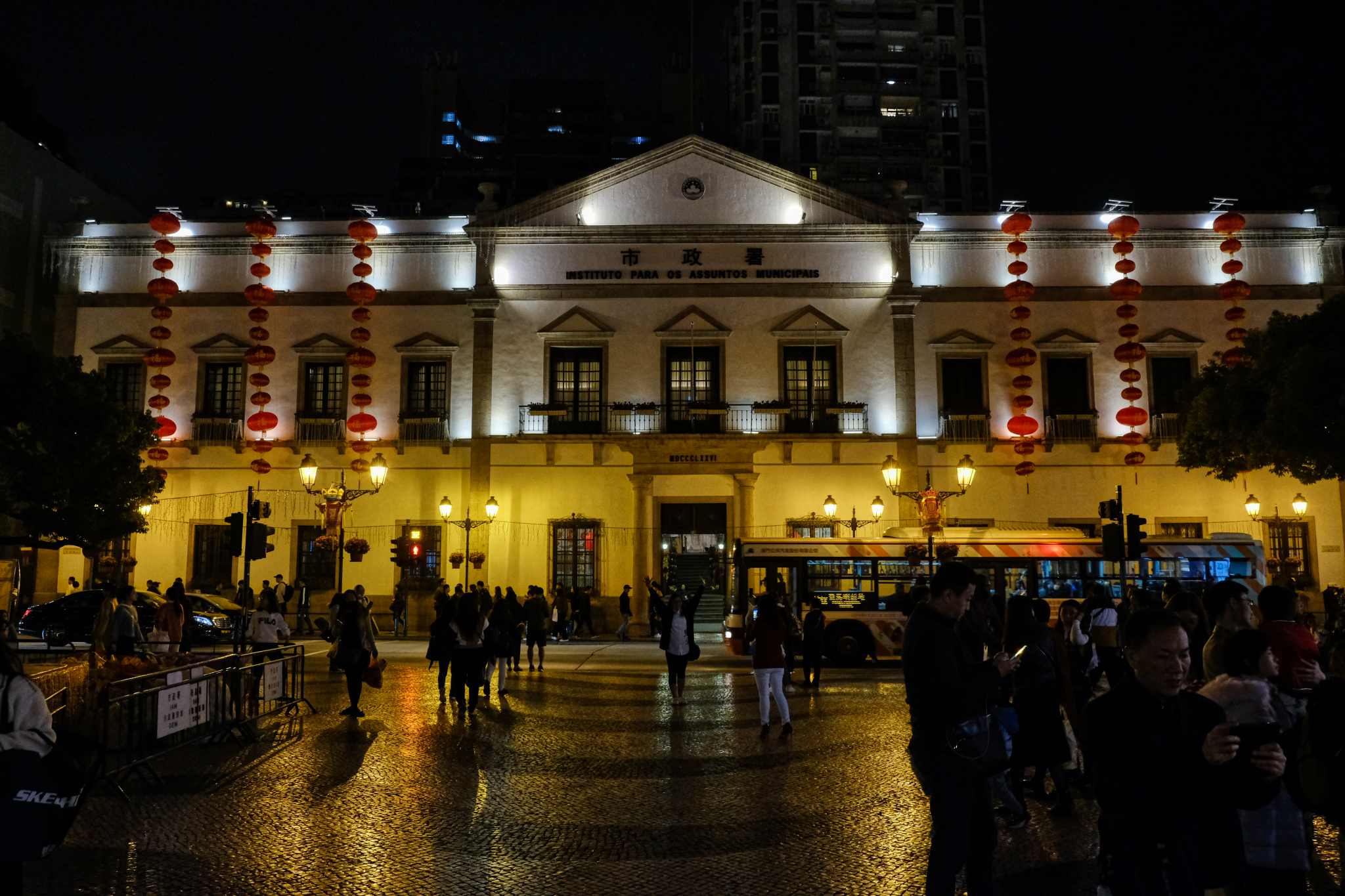 Maçau Municipal Building.
Maçau Municipal Building.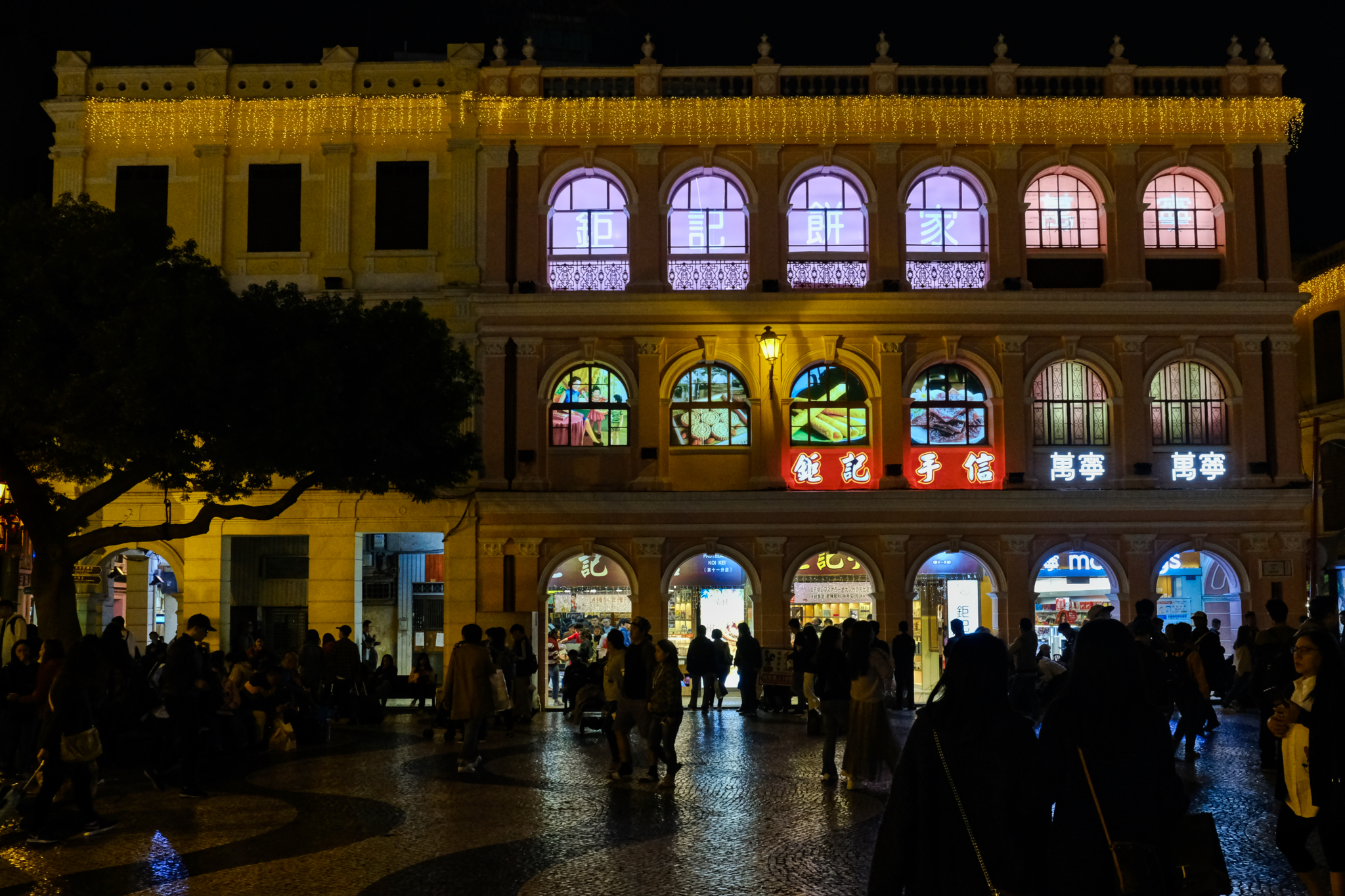 The historic town center at night was really beautiful.
The historic town center at night was really beautiful.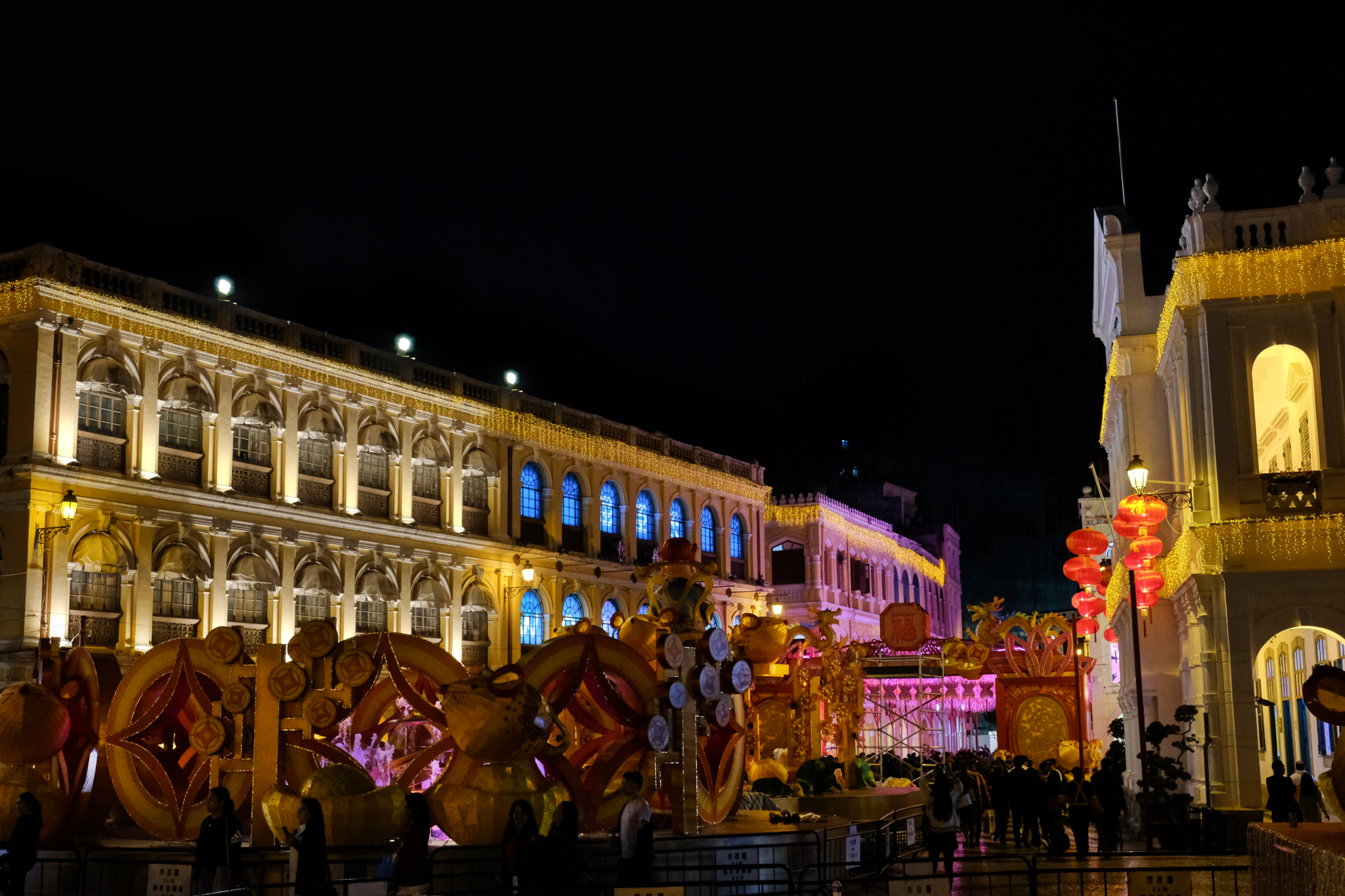 The Chinese New Years decorations were mostly installed, but it was too early in the season to see them all lit up. Drat.
The Chinese New Years decorations were mostly installed, but it was too early in the season to see them all lit up. Drat.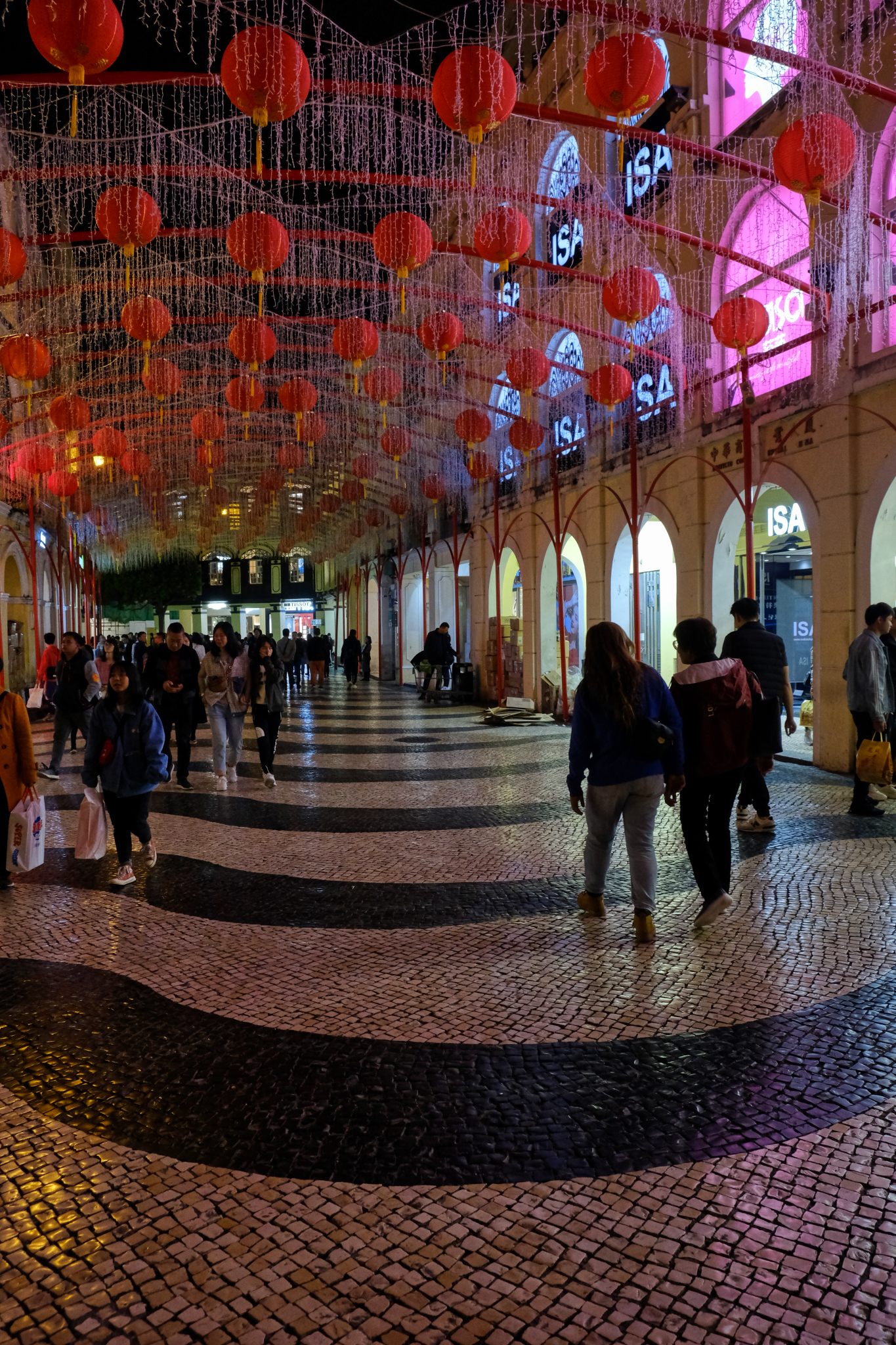 The famous ripple pattern tiled streets with lights above.
The famous ripple pattern tiled streets with lights above.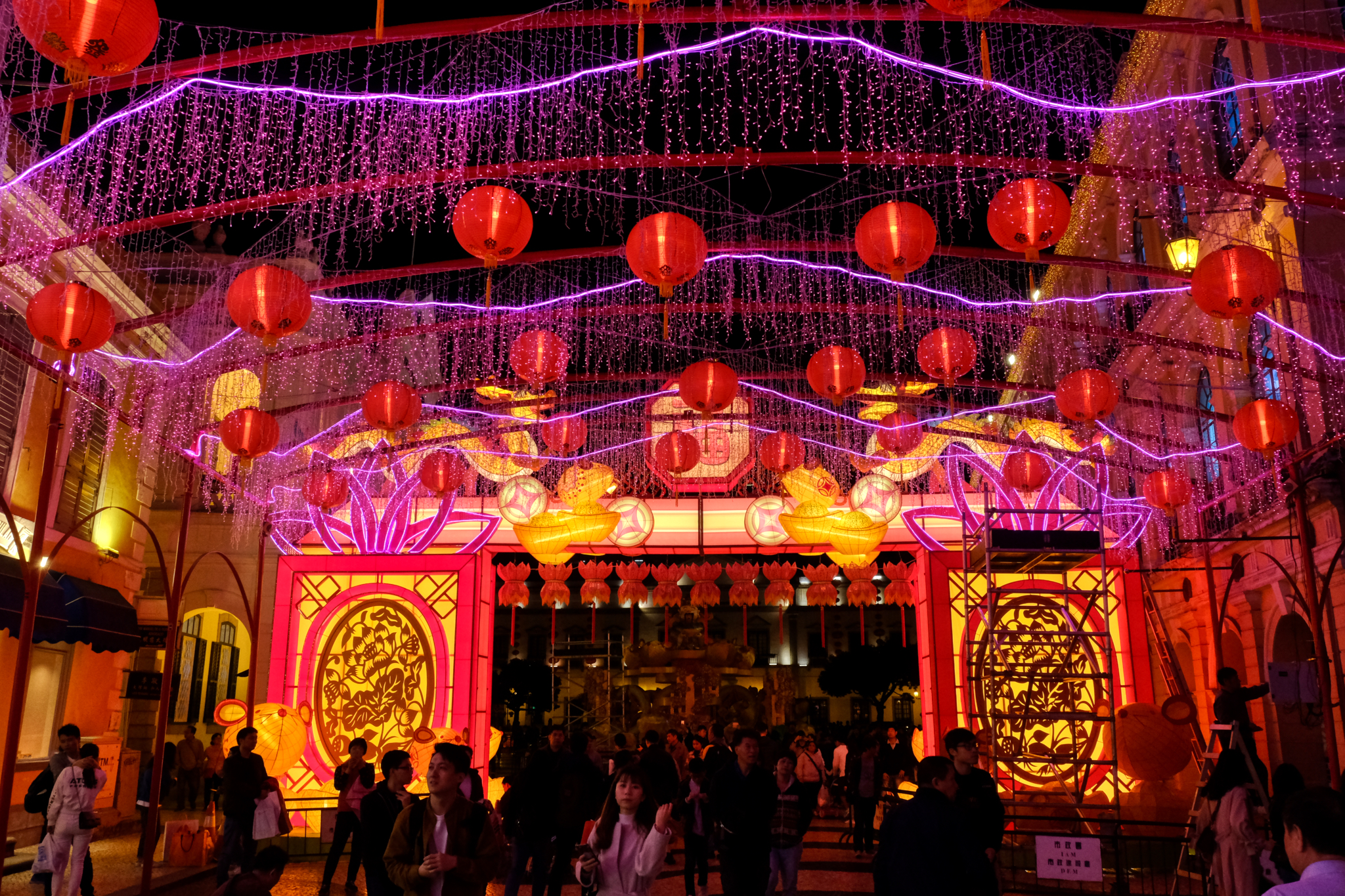 Just as we were saying how great it would be to see the decorations all lit up . . . they all lit up! If you look to the right side of this photo you see a guy on a ladder and a fuse box . . . he was testing the lights! What good luck! We were in the right place at the right time.
Just as we were saying how great it would be to see the decorations all lit up . . . they all lit up! If you look to the right side of this photo you see a guy on a ladder and a fuse box . . . he was testing the lights! What good luck! We were in the right place at the right time.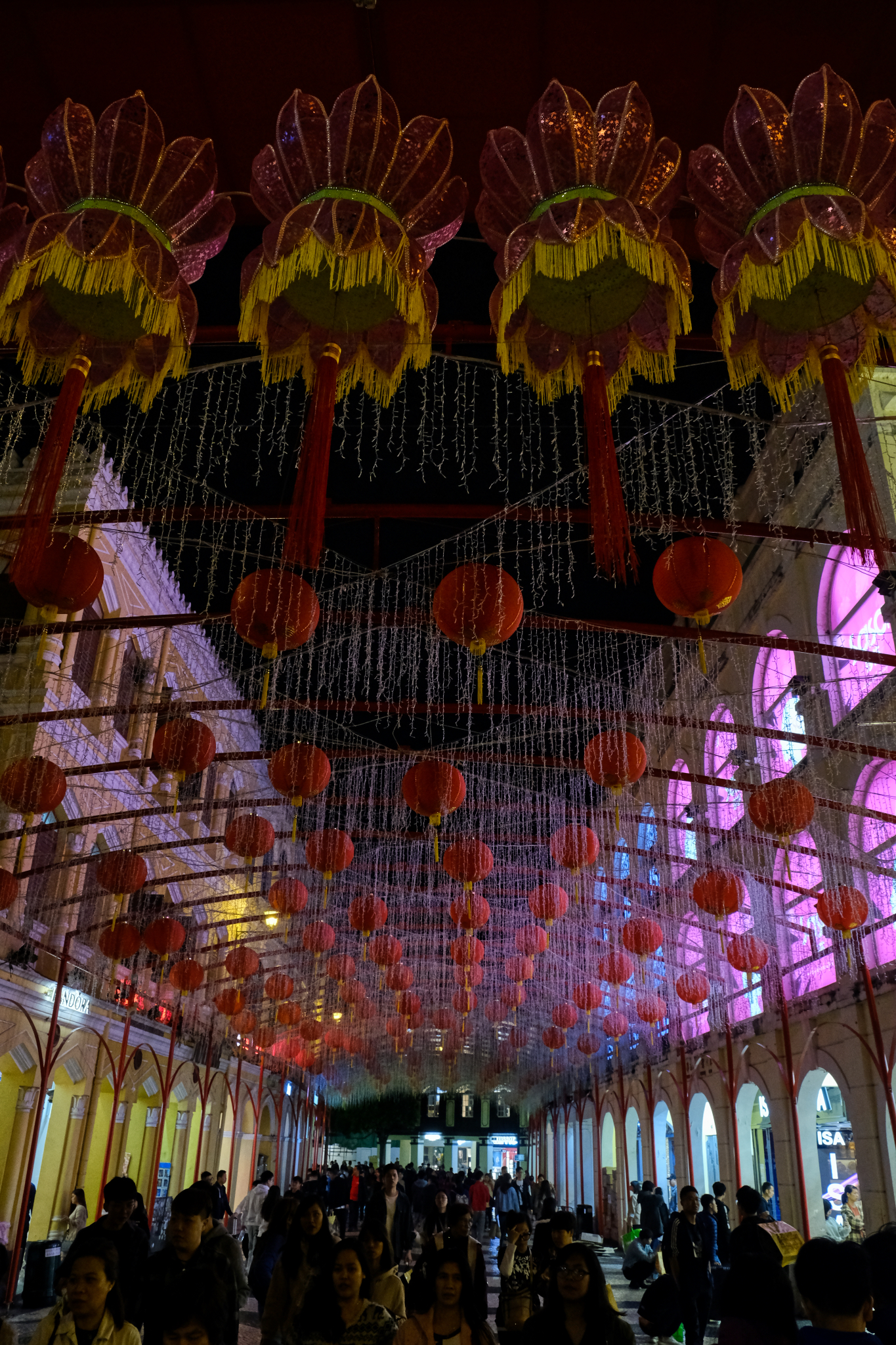 So, of course, I turned around to get a photo of the FULL decorations all lit up . . . and the lights went off!
So, of course, I turned around to get a photo of the FULL decorations all lit up . . . and the lights went off!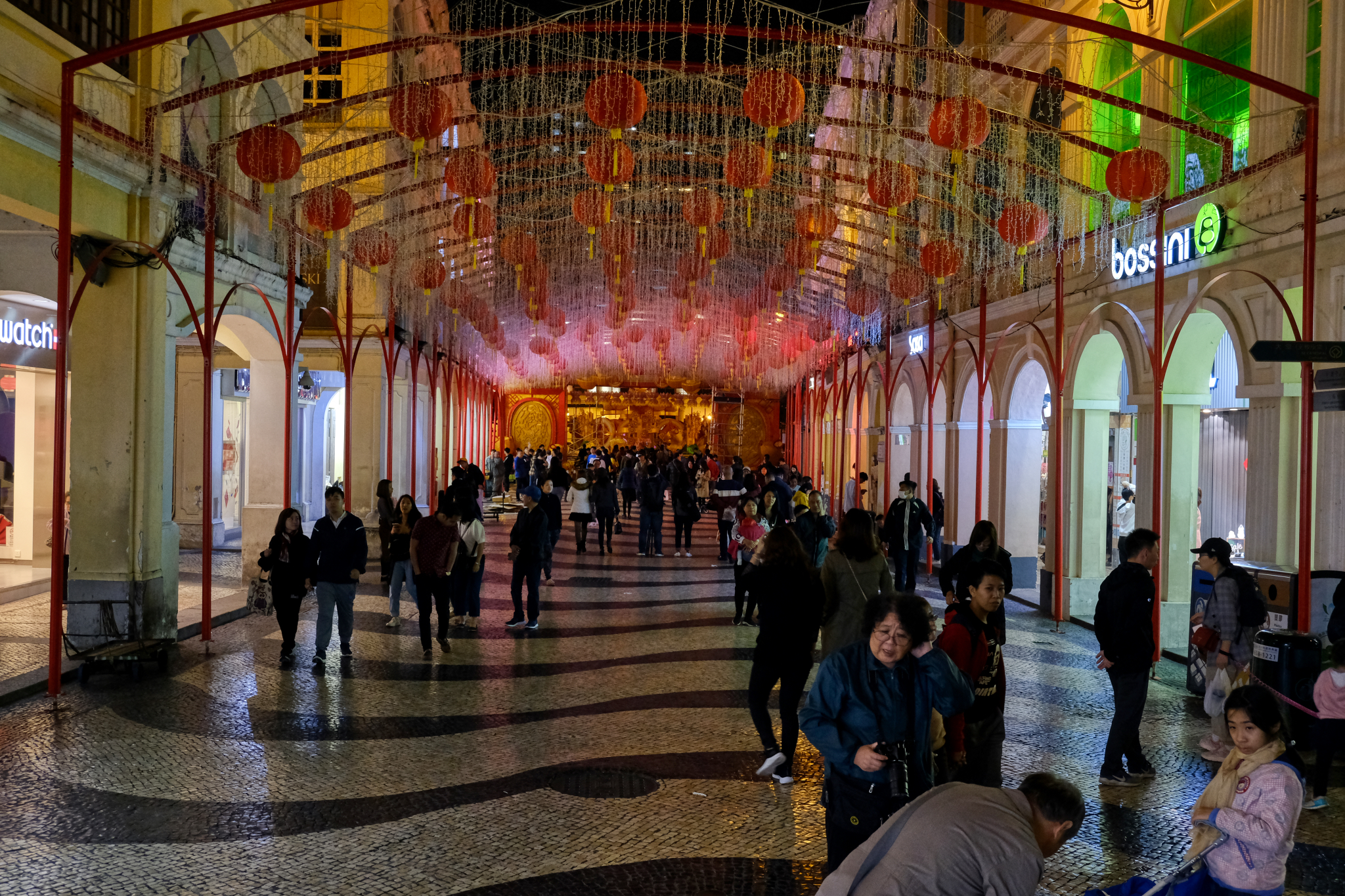 Oh well. It was still a very beautiful place to be at night. We walked in . . .
Oh well. It was still a very beautiful place to be at night. We walked in . . . 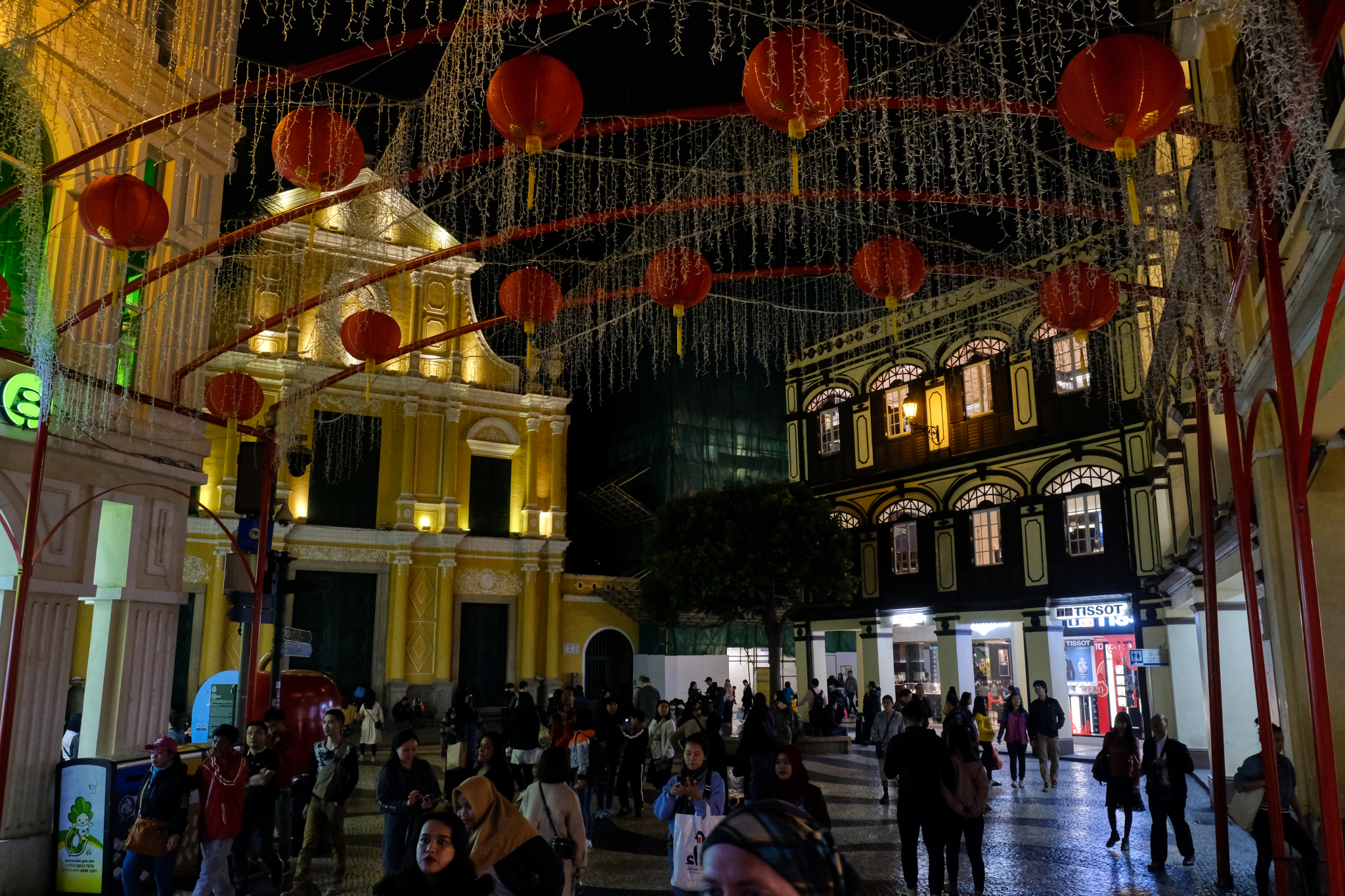 The old church square at night.
The old church square at night.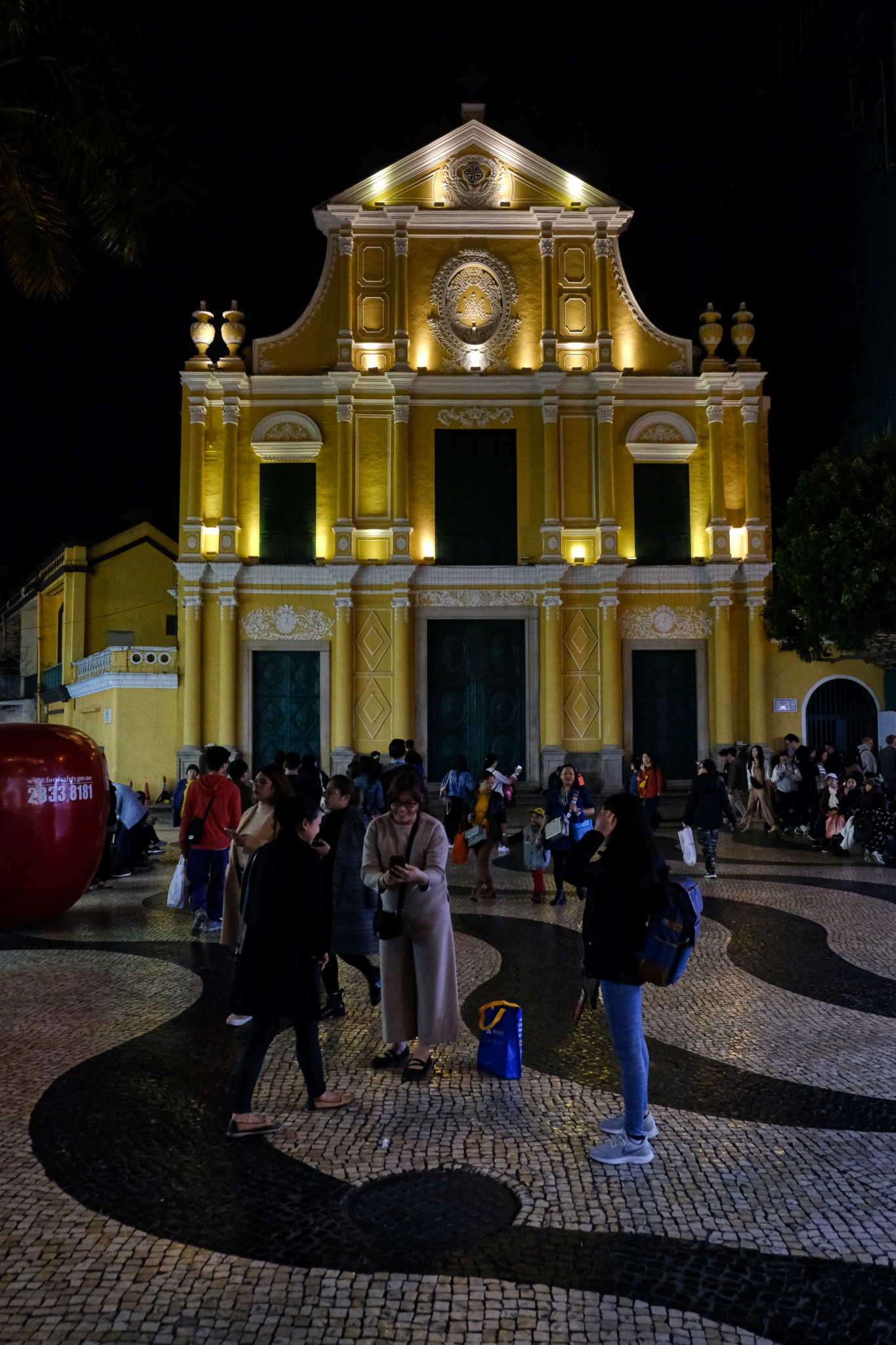 The old yellow church at night . . . still lots of tourists out and about.
The old yellow church at night . . . still lots of tourists out and about.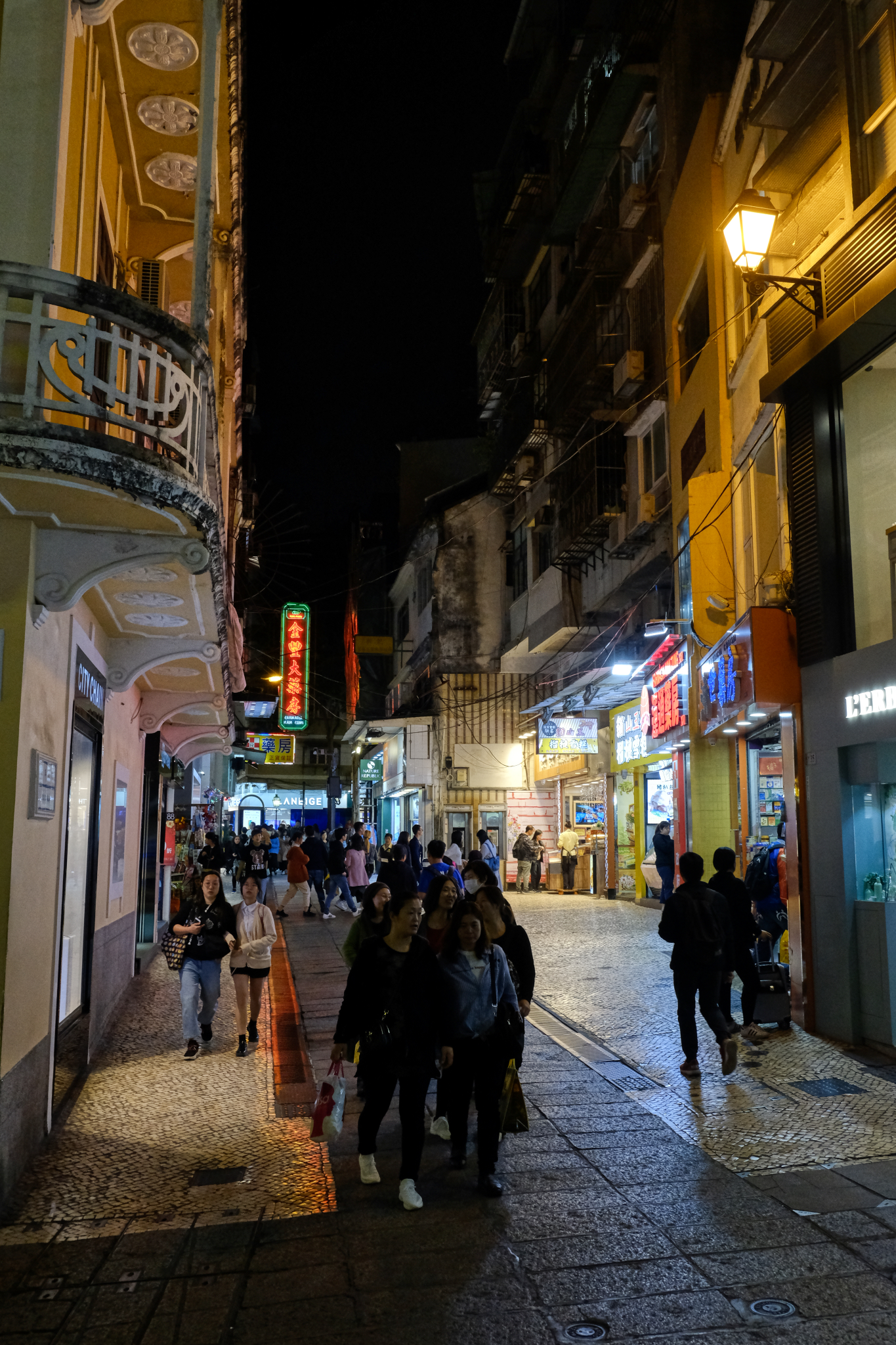 And so we walked on into the side streets towards the St. Paul's Cathedral ruins.
And so we walked on into the side streets towards the St. Paul's Cathedral ruins.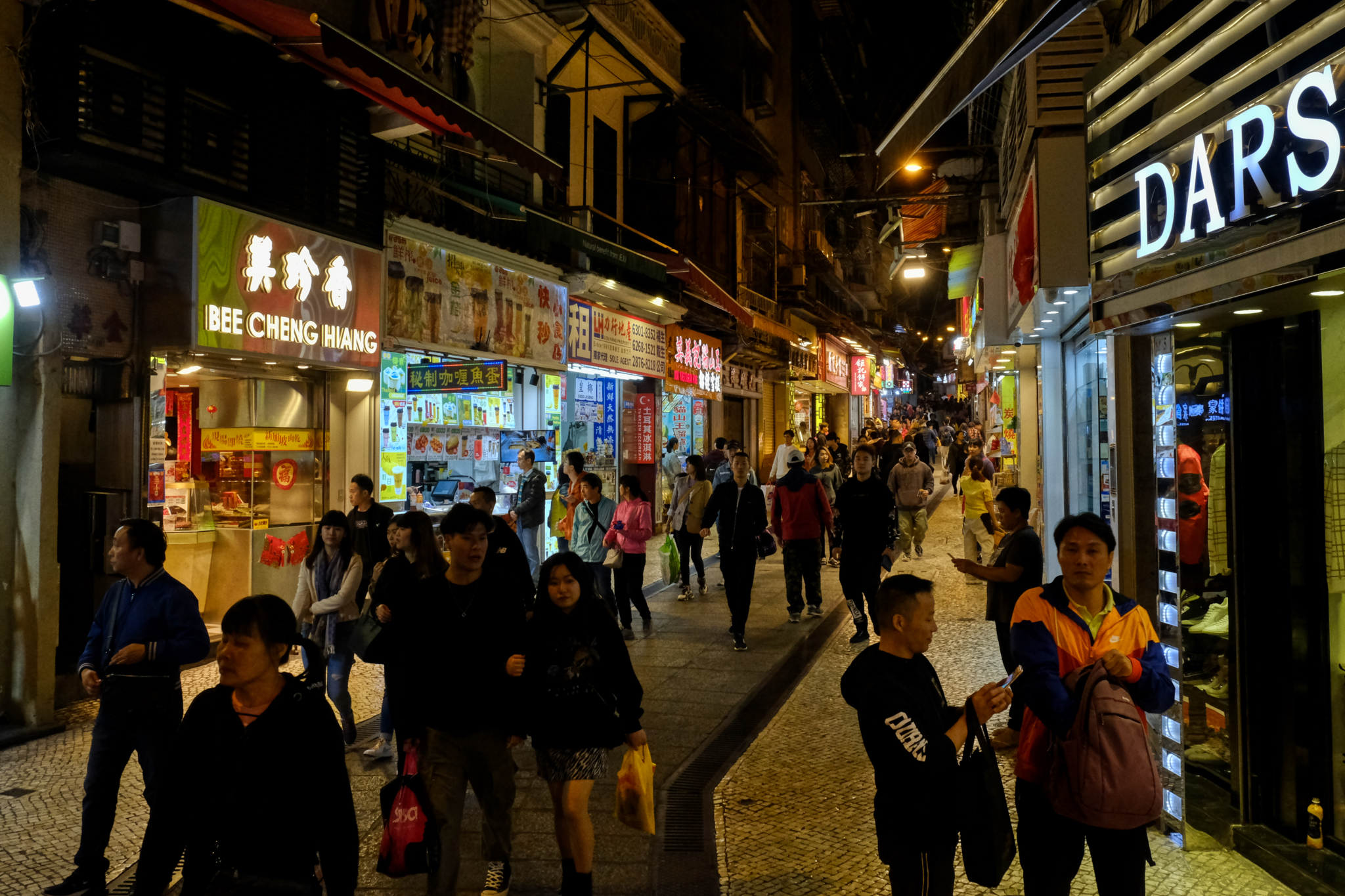 Crowds of mainland Chinese shoppers . . .
Crowds of mainland Chinese shoppers . . . 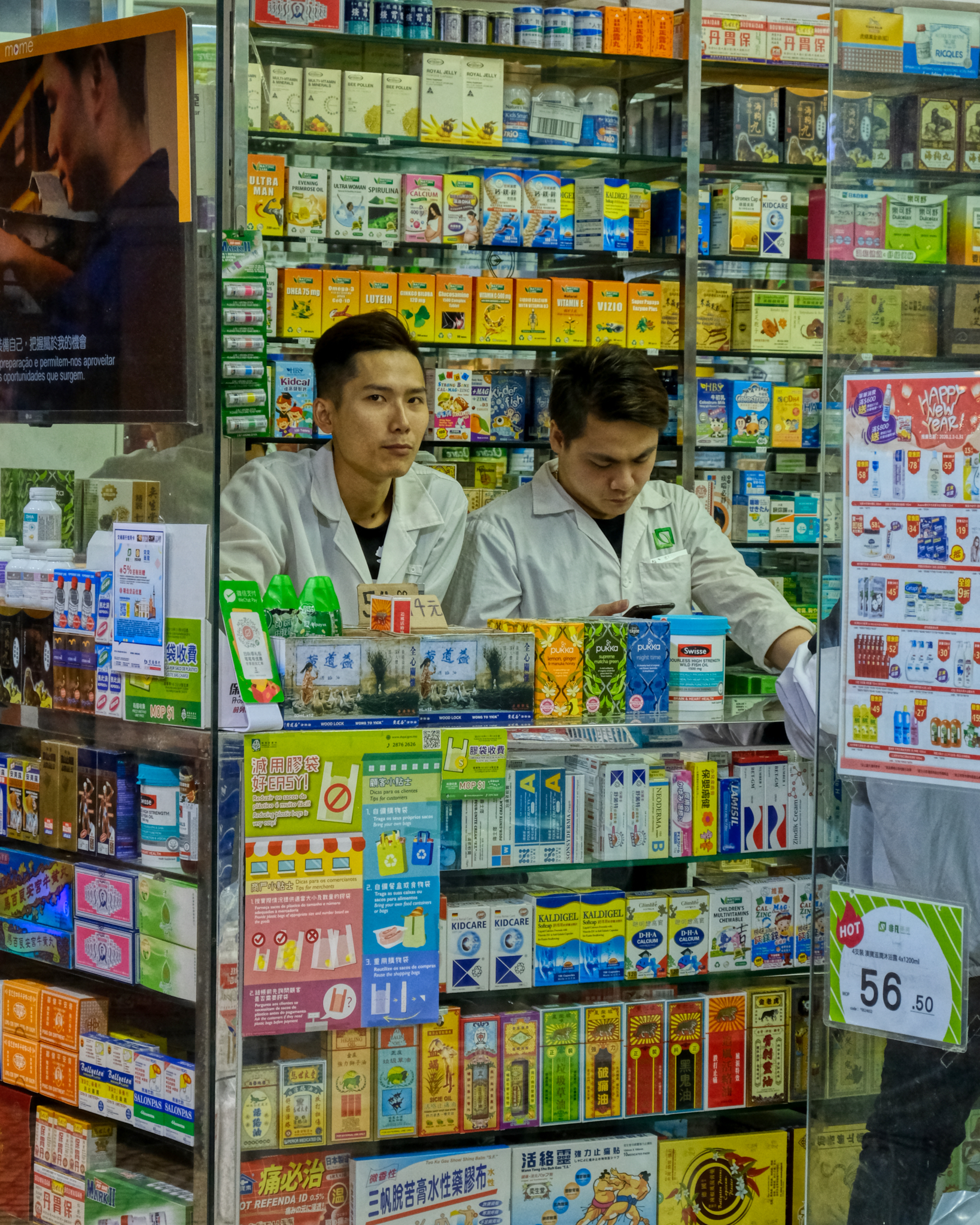 The strange lighting in some of the shops made for some interesting people photos.
The strange lighting in some of the shops made for some interesting people photos.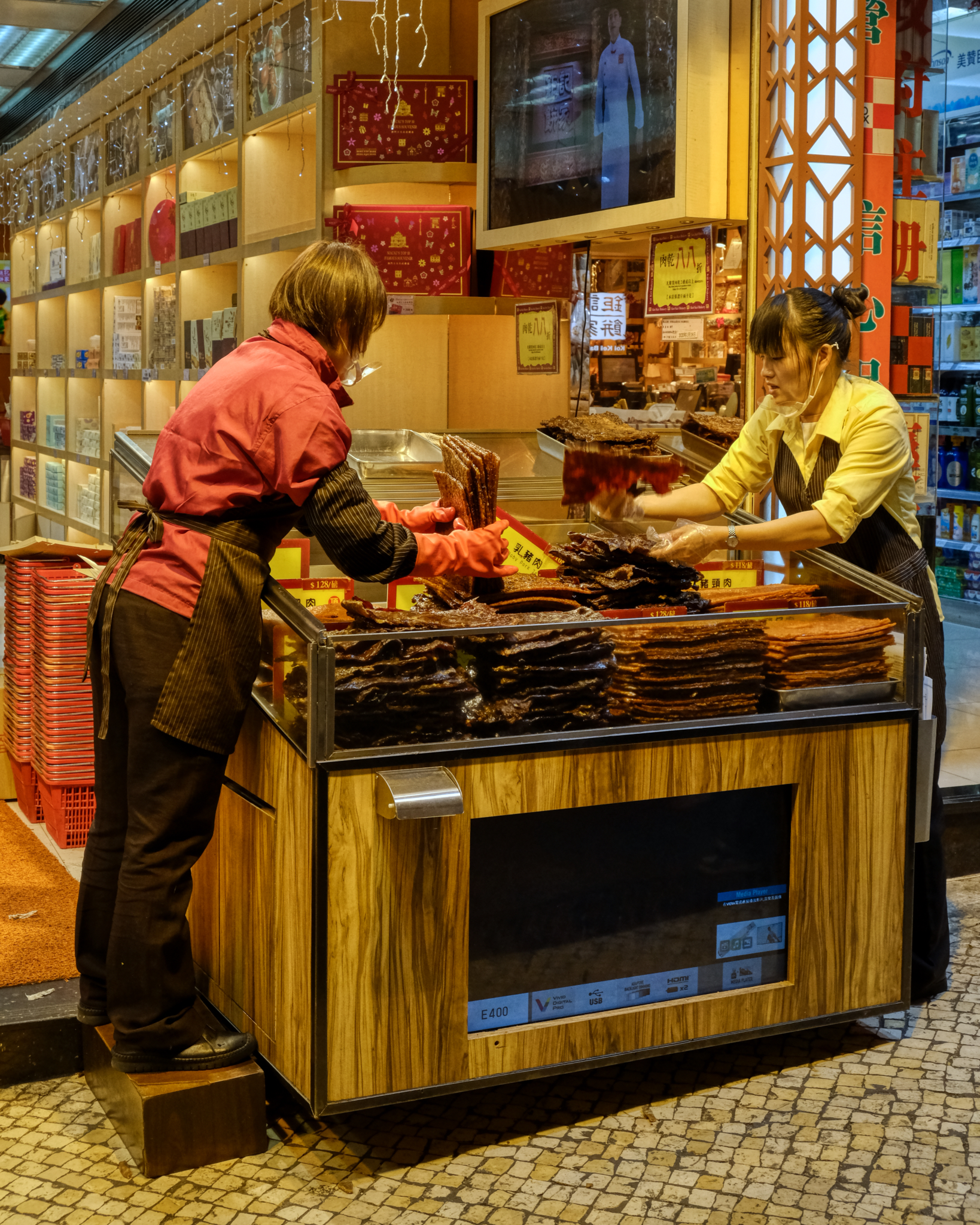 Press dried meat stackers. Very popular with the tourists . . . free samples every few blocks. Very tasty.
Press dried meat stackers. Very popular with the tourists . . . free samples every few blocks. Very tasty.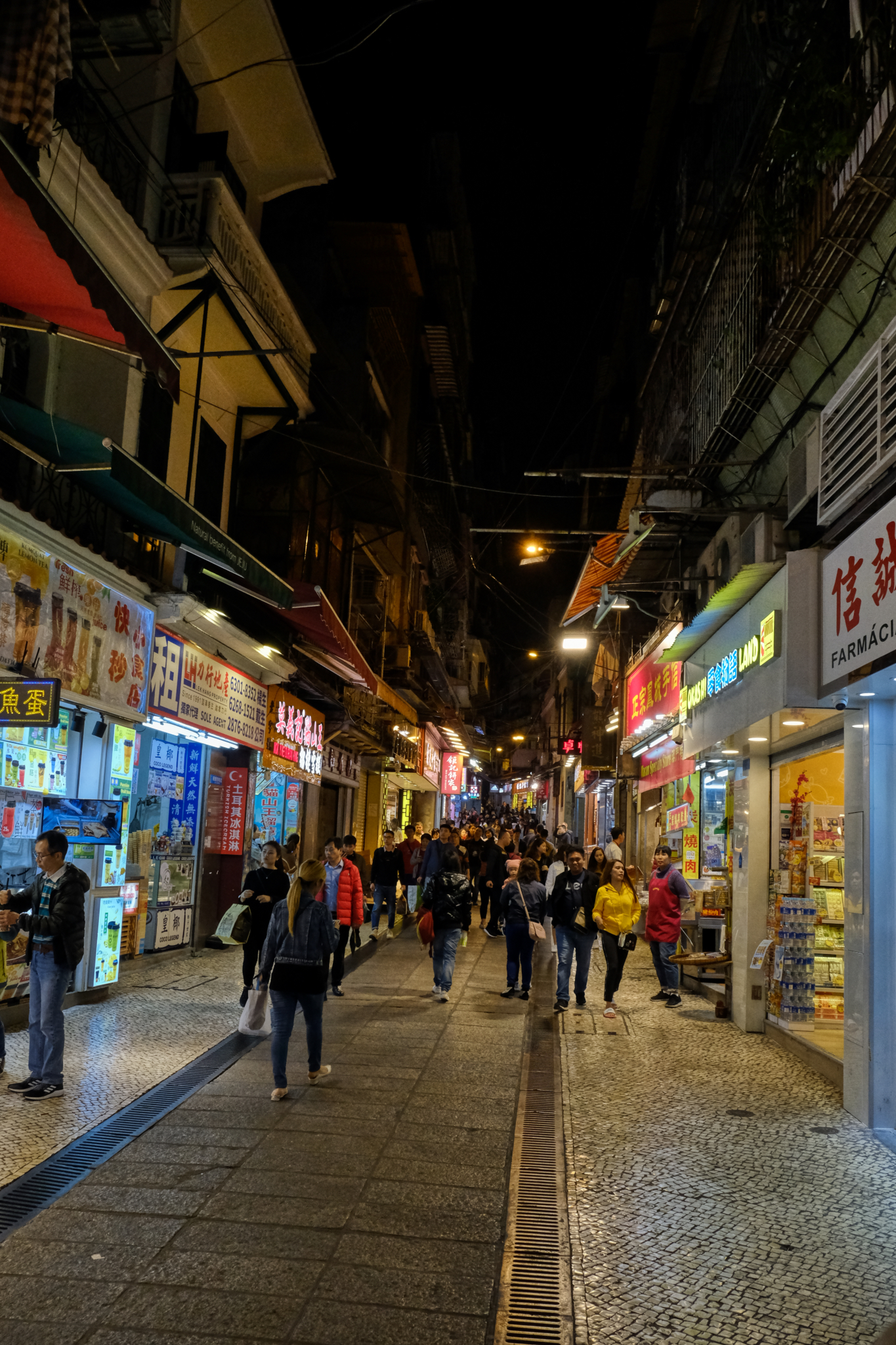 Crowds in the narrow streets of historic Maçau at night.
Crowds in the narrow streets of historic Maçau at night.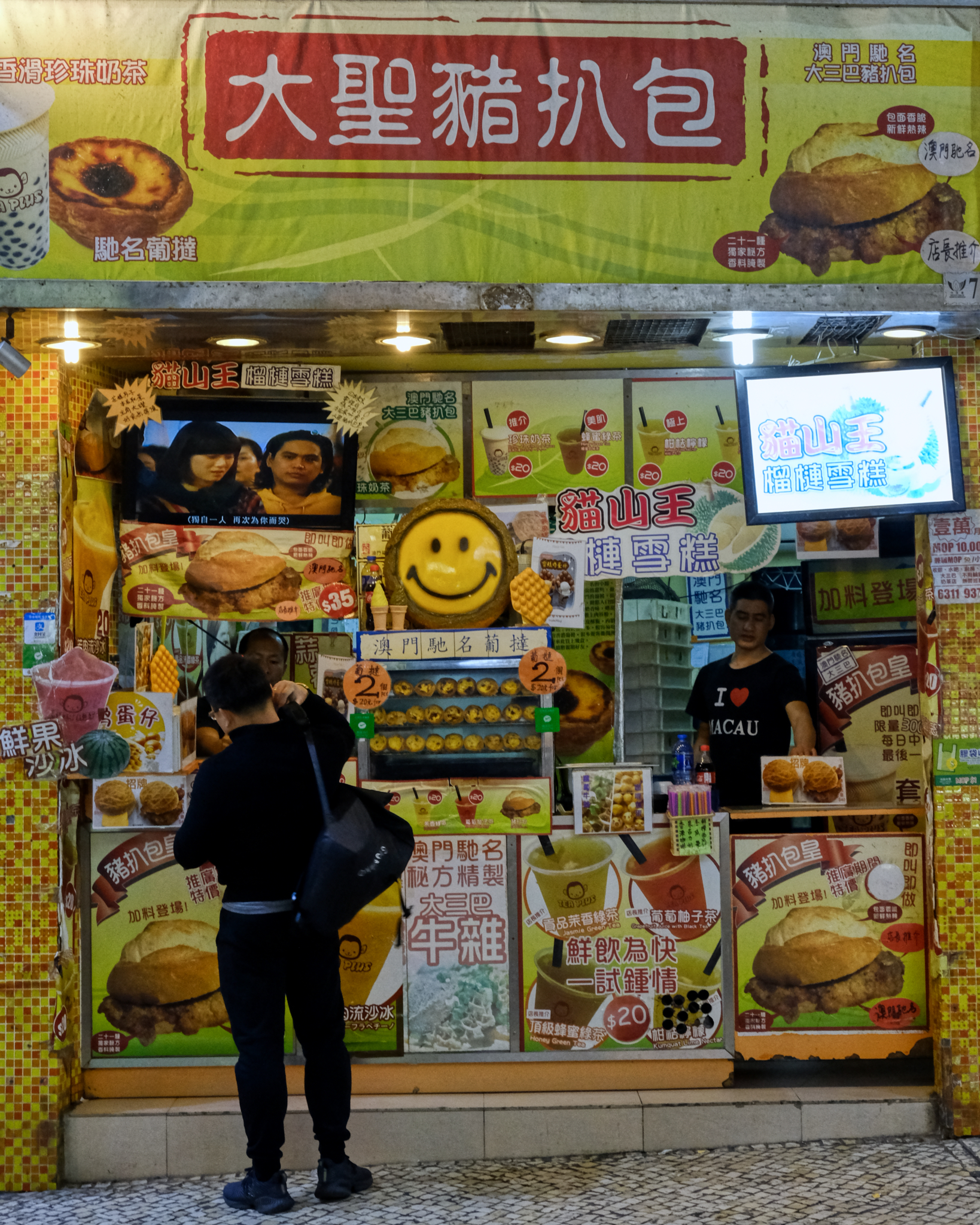 These little egg custard pies were absolutely delicious!!!
These little egg custard pies were absolutely delicious!!!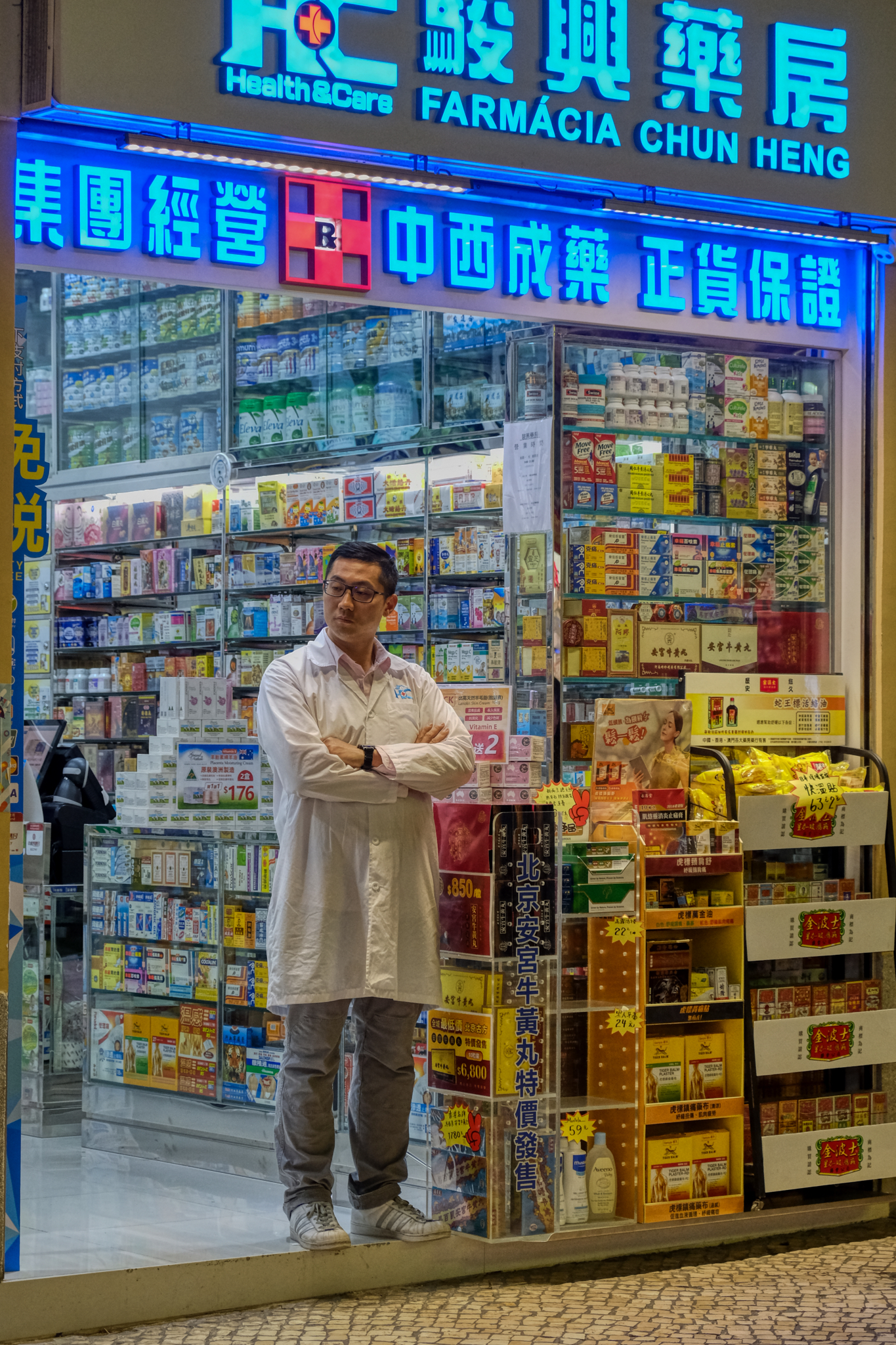 It seemed like there was a pharmacy on every corner. Lots of mainland Chinese buy their pharmaceutical products abroad . . . for safety.
It seemed like there was a pharmacy on every corner. Lots of mainland Chinese buy their pharmaceutical products abroad . . . for safety.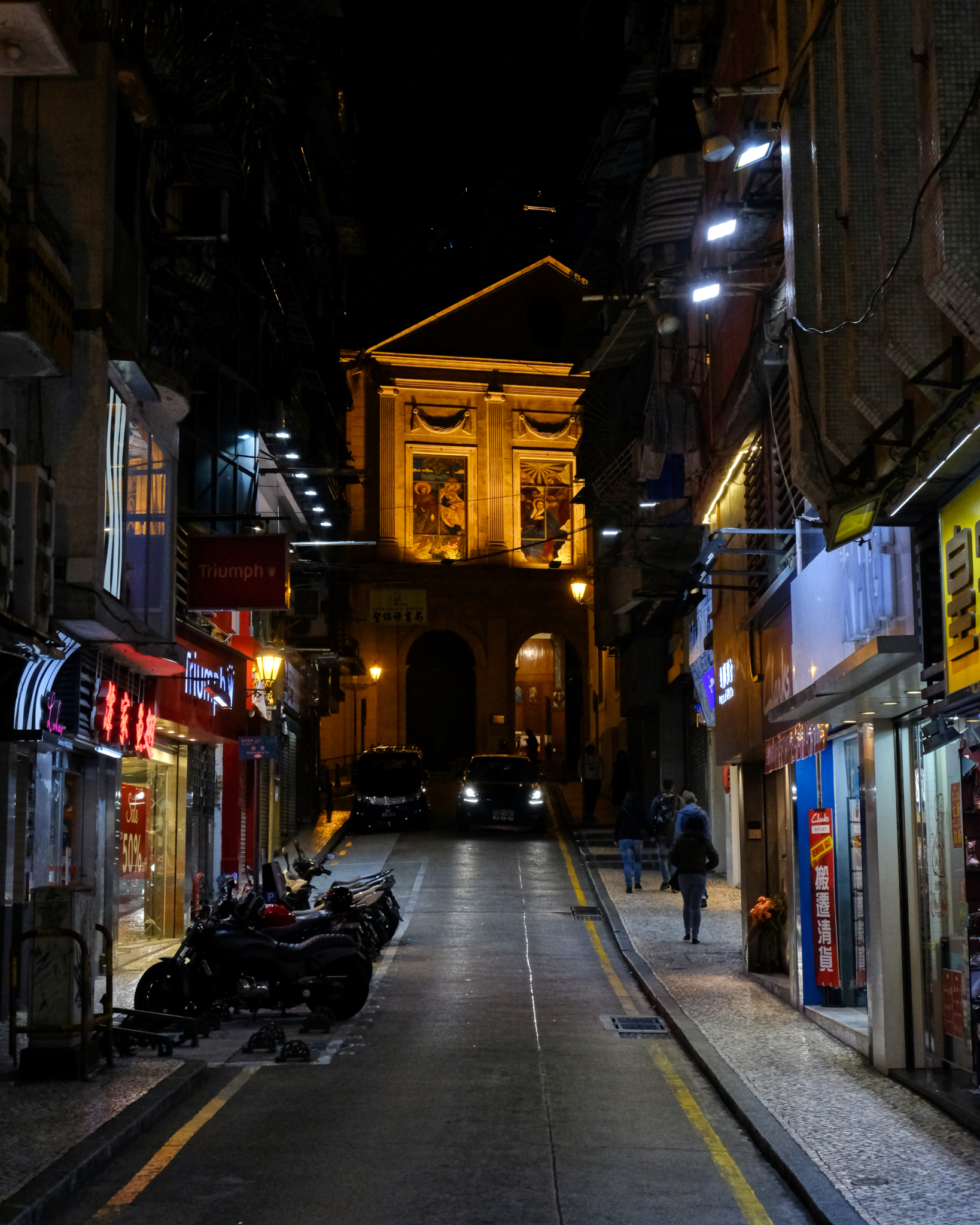 Interesting architectural find up a side street . . . the Portuguese influence everywhere.
Interesting architectural find up a side street . . . the Portuguese influence everywhere.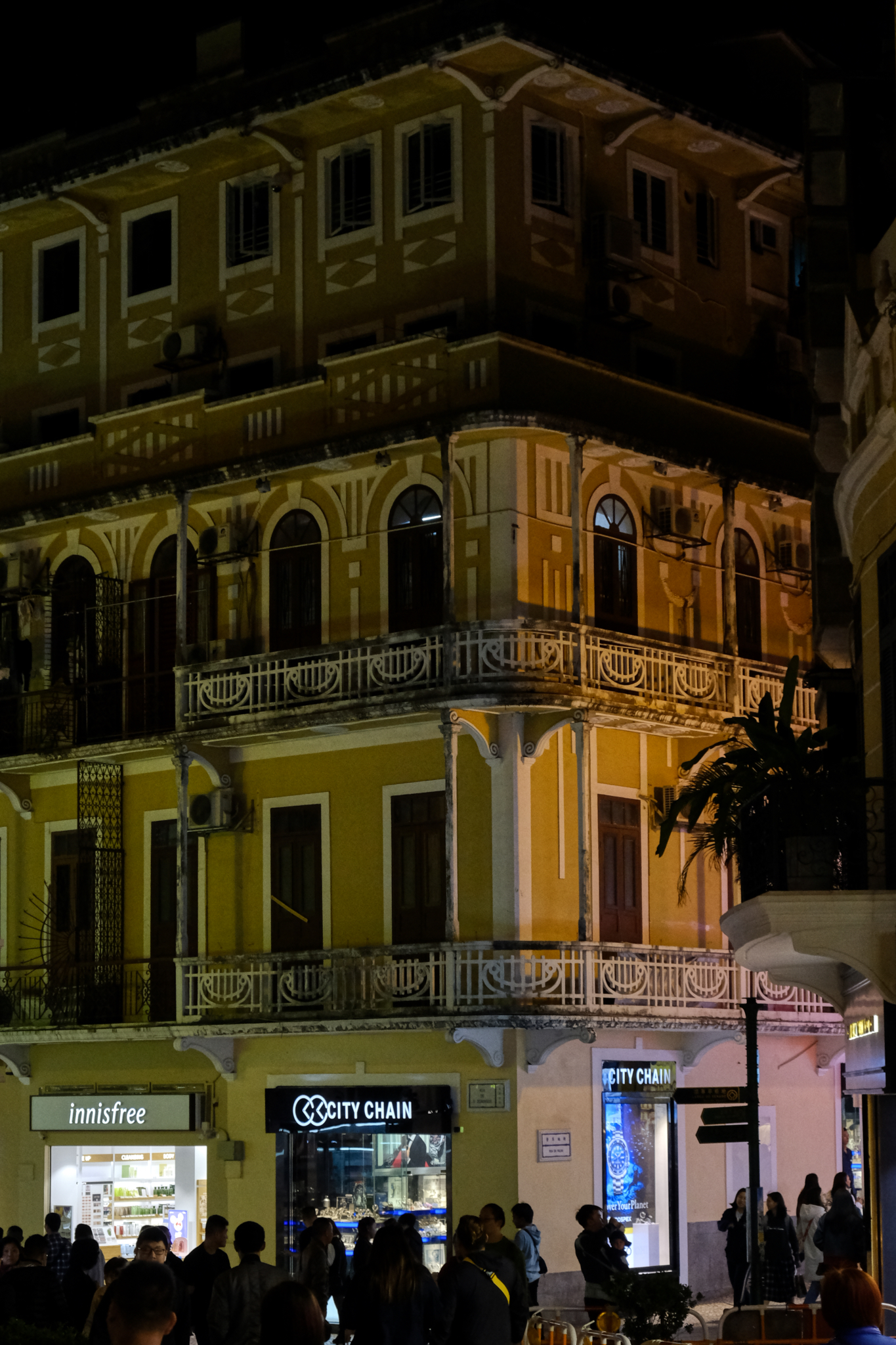 Lots of very interesting old buildings.
Lots of very interesting old buildings.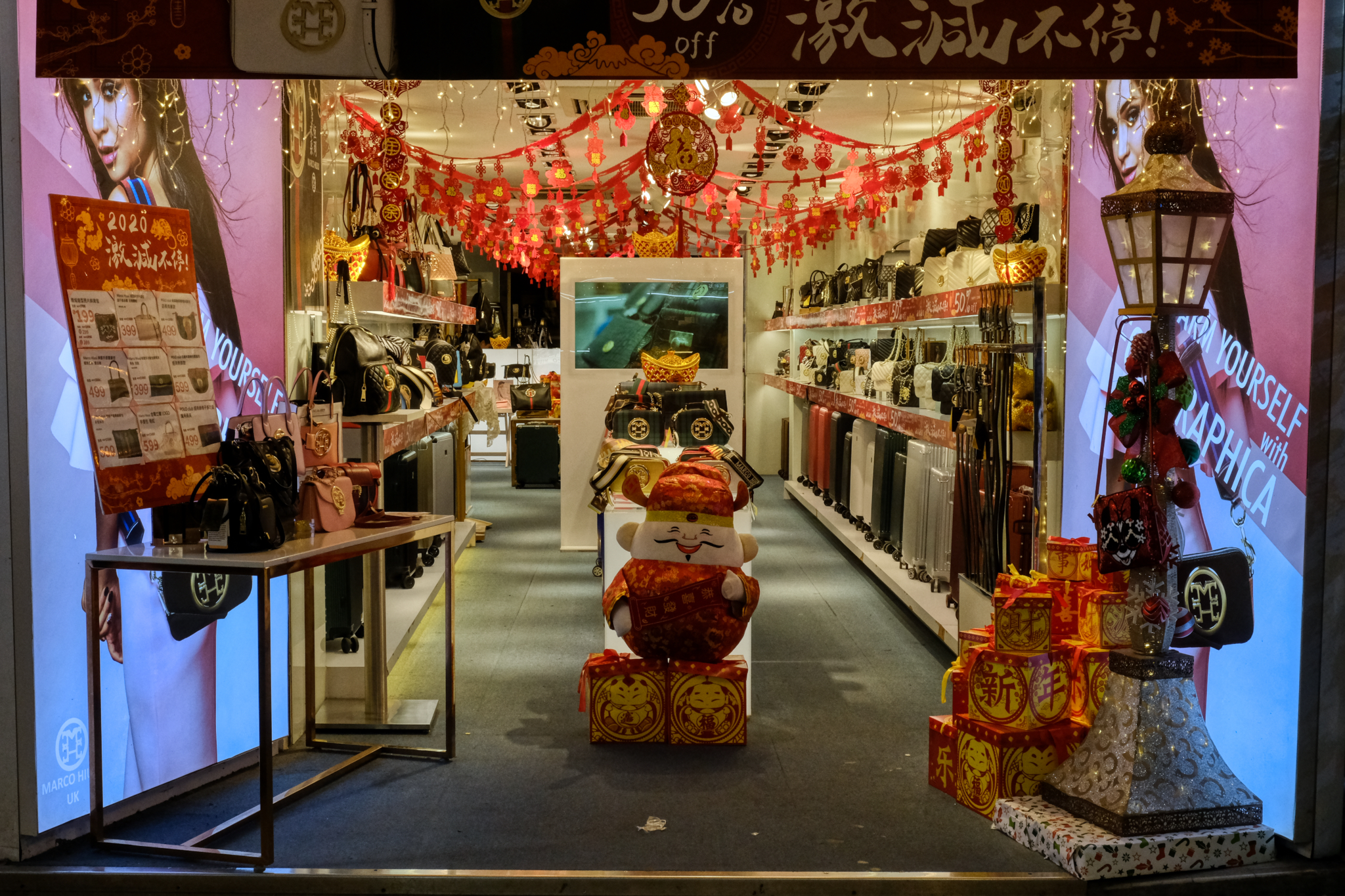 A shop of dreams! Something for the Little Woman?
A shop of dreams! Something for the Little Woman?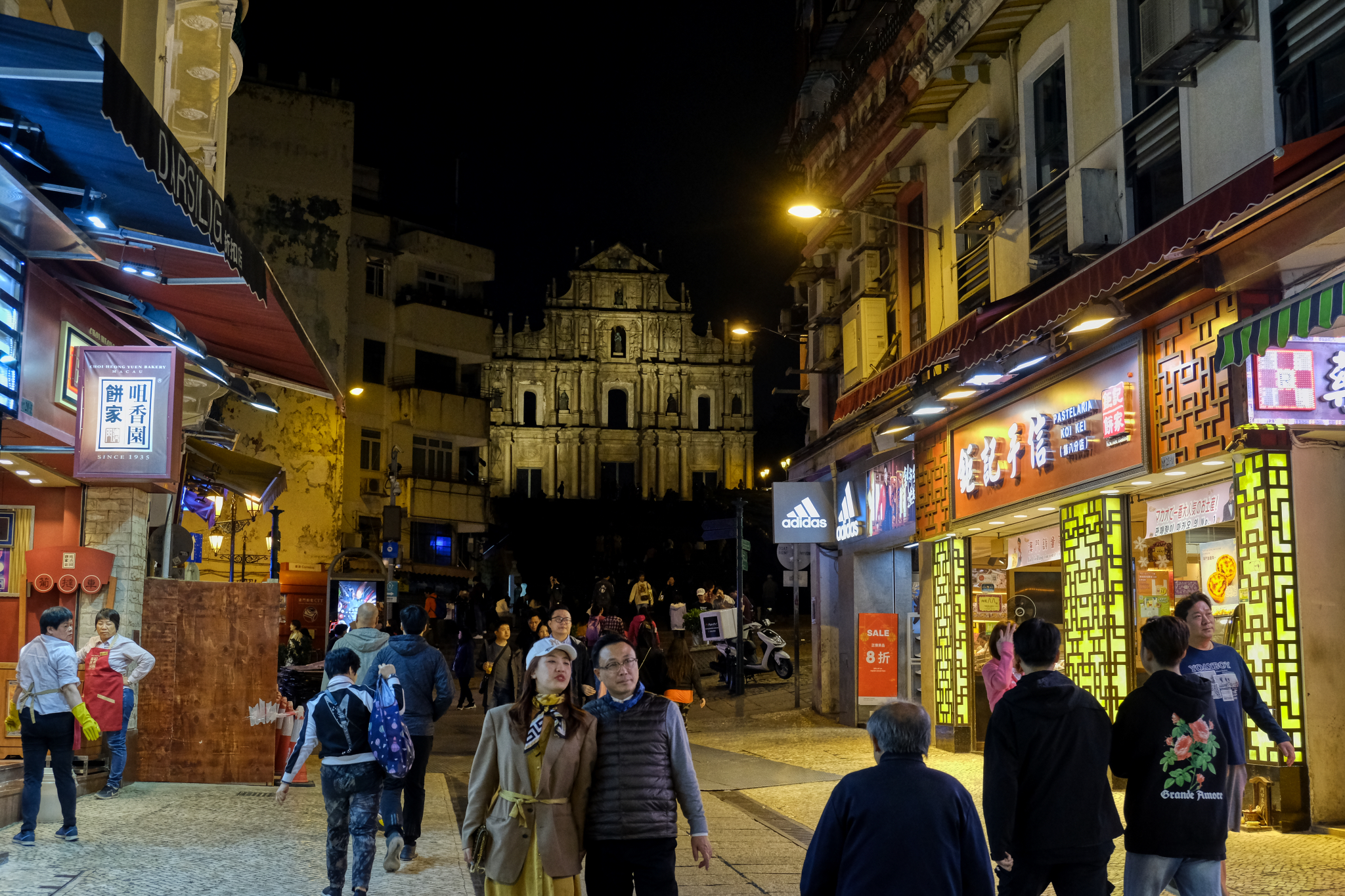 Where the streets give way to the cathedral on the hill.
Where the streets give way to the cathedral on the hill.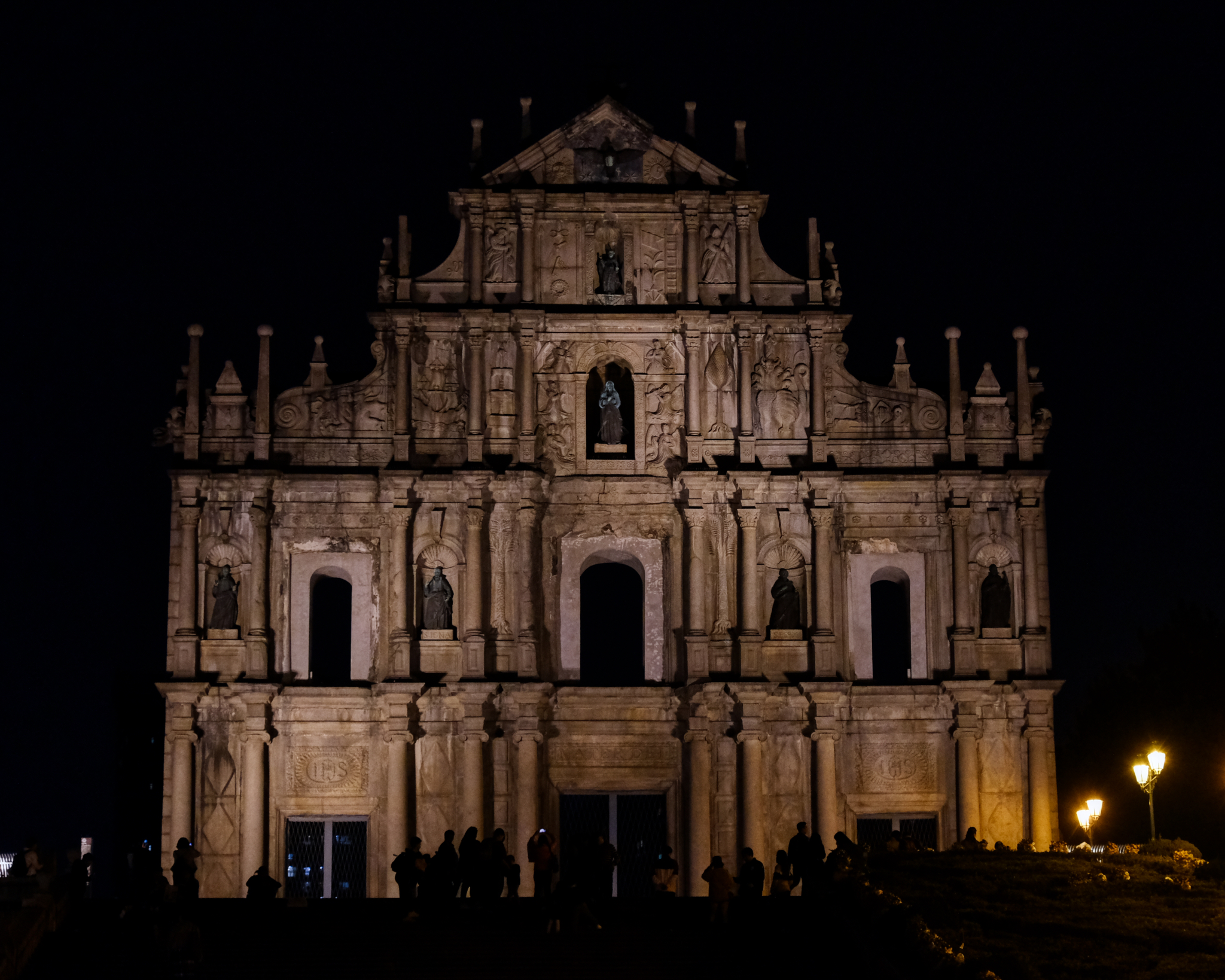 Just as beautiful at night . . . and almost as crowded.
Just as beautiful at night . . . and almost as crowded.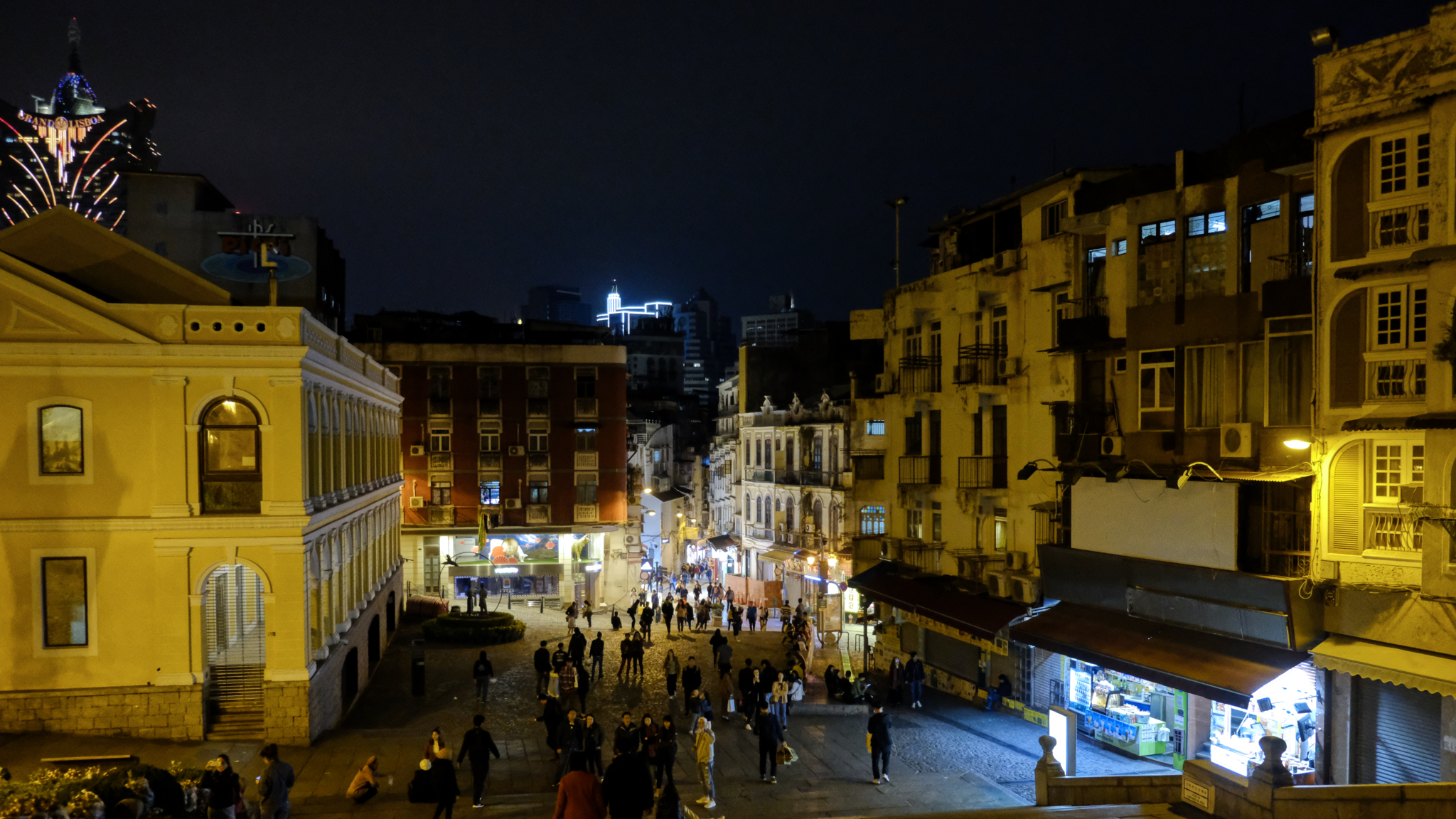 The view back down the walking streets from the steps of St. Paul's Cathedral.
The view back down the walking streets from the steps of St. Paul's Cathedral.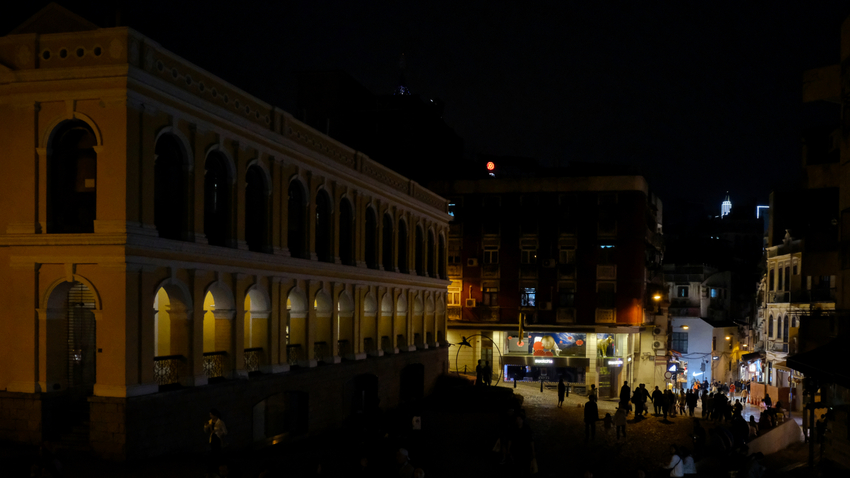 We stayed here for a while and soaked up the old world charm.
We stayed here for a while and soaked up the old world charm.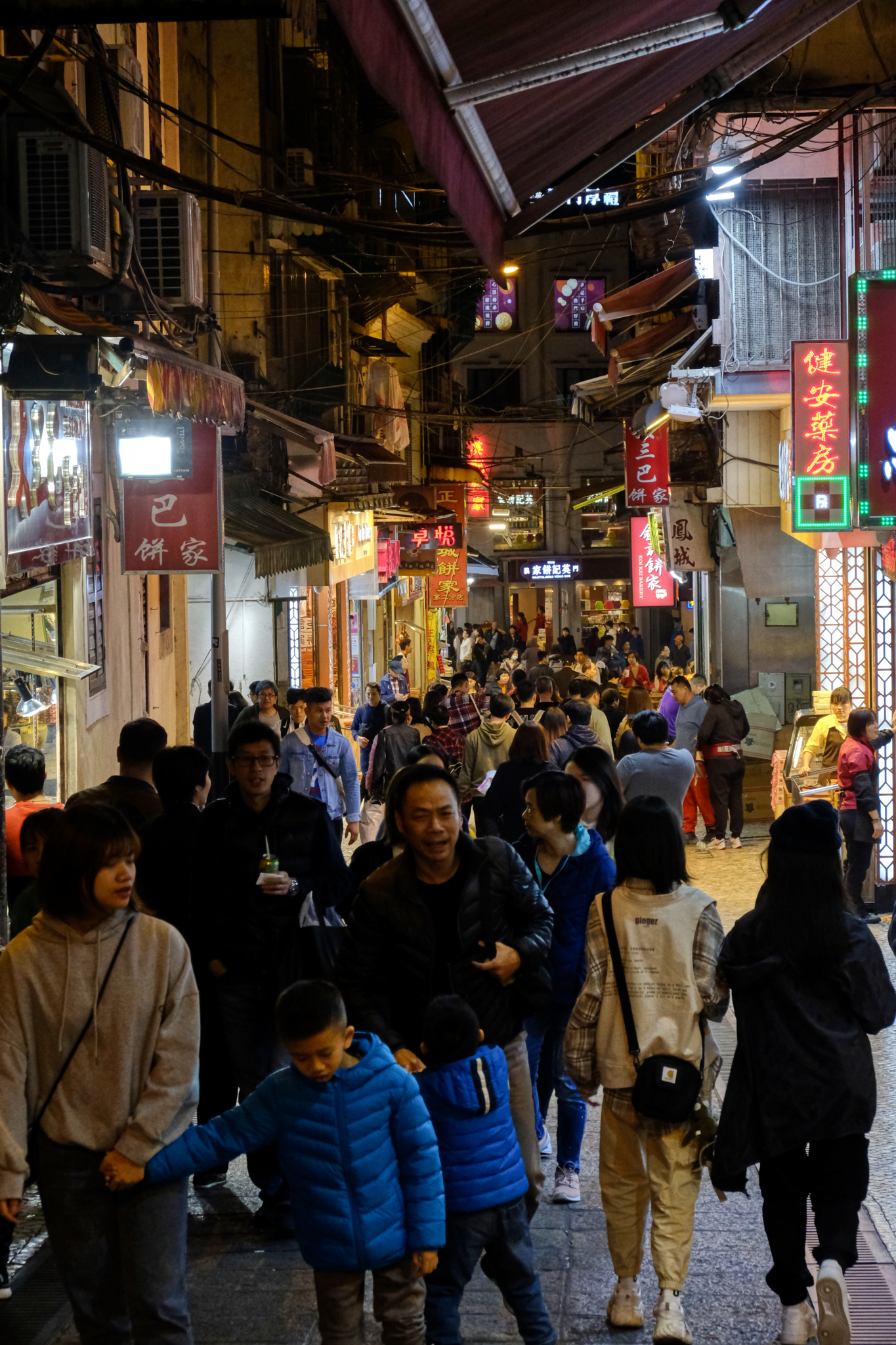 We walked back down the interesting and crowded narrow streets.
We walked back down the interesting and crowded narrow streets.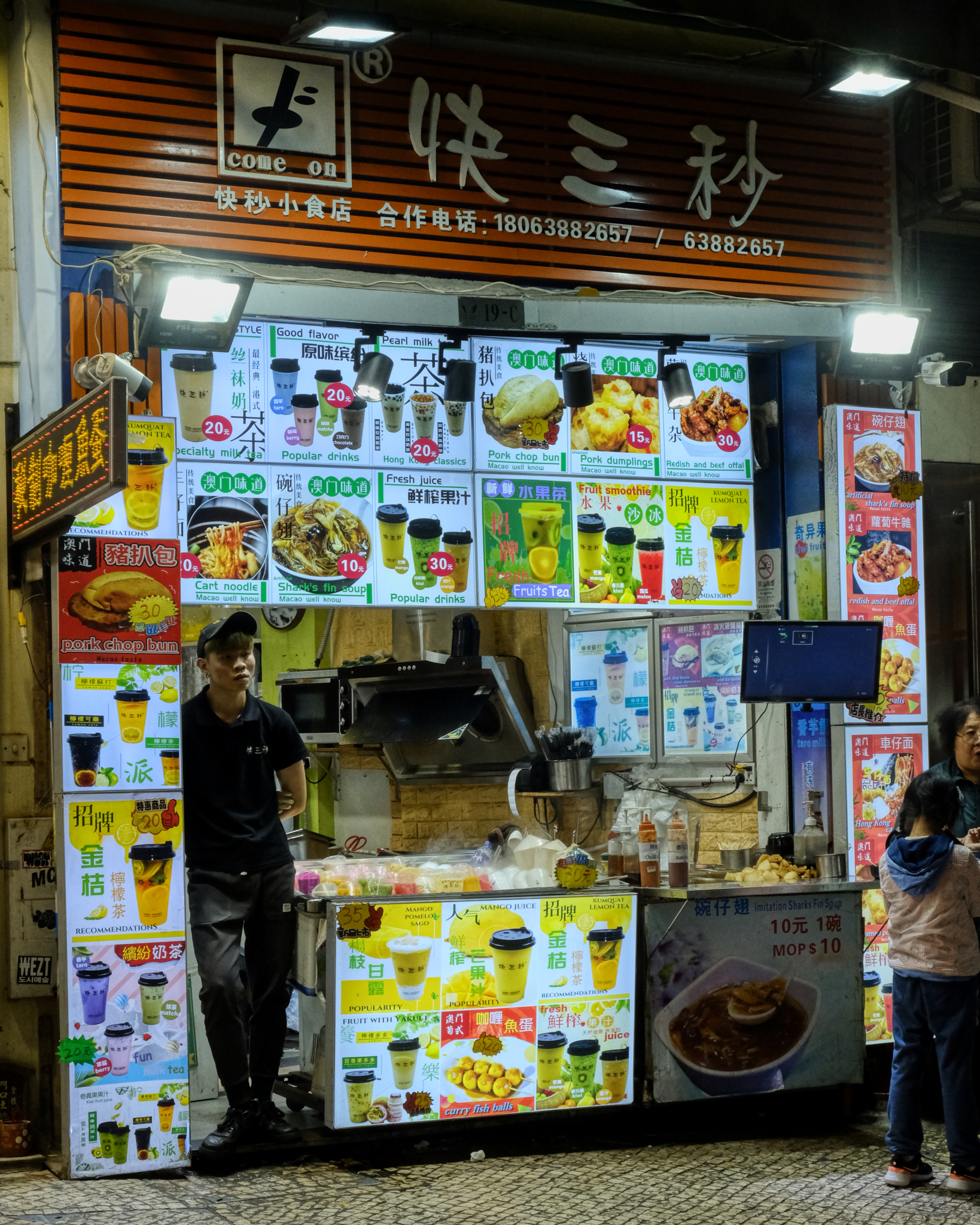 At the end of a long day . . . .
At the end of a long day . . . .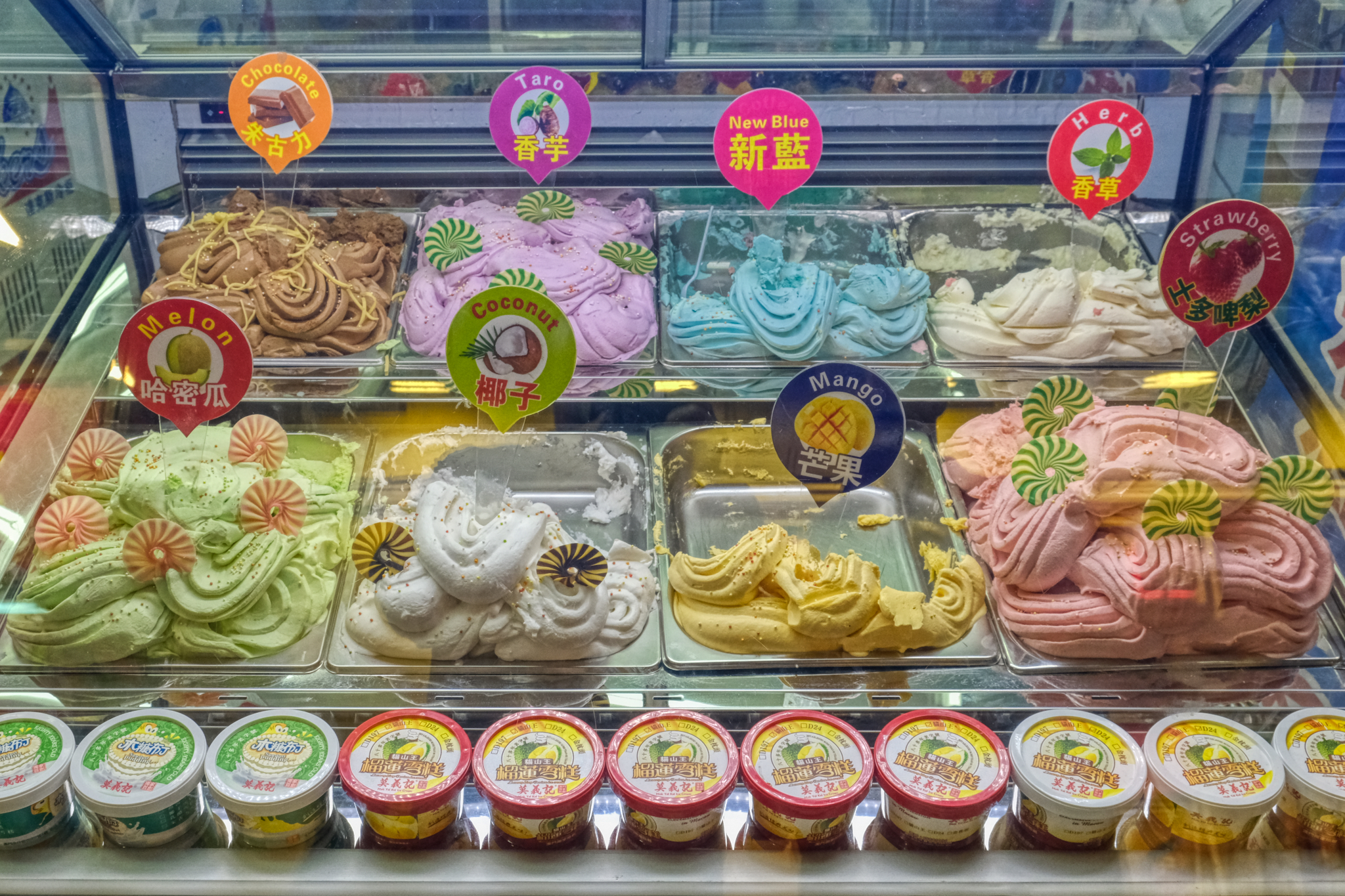 I didn't have any (too sweet), but my friend did (coconut, of course).
I didn't have any (too sweet), but my friend did (coconut, of course).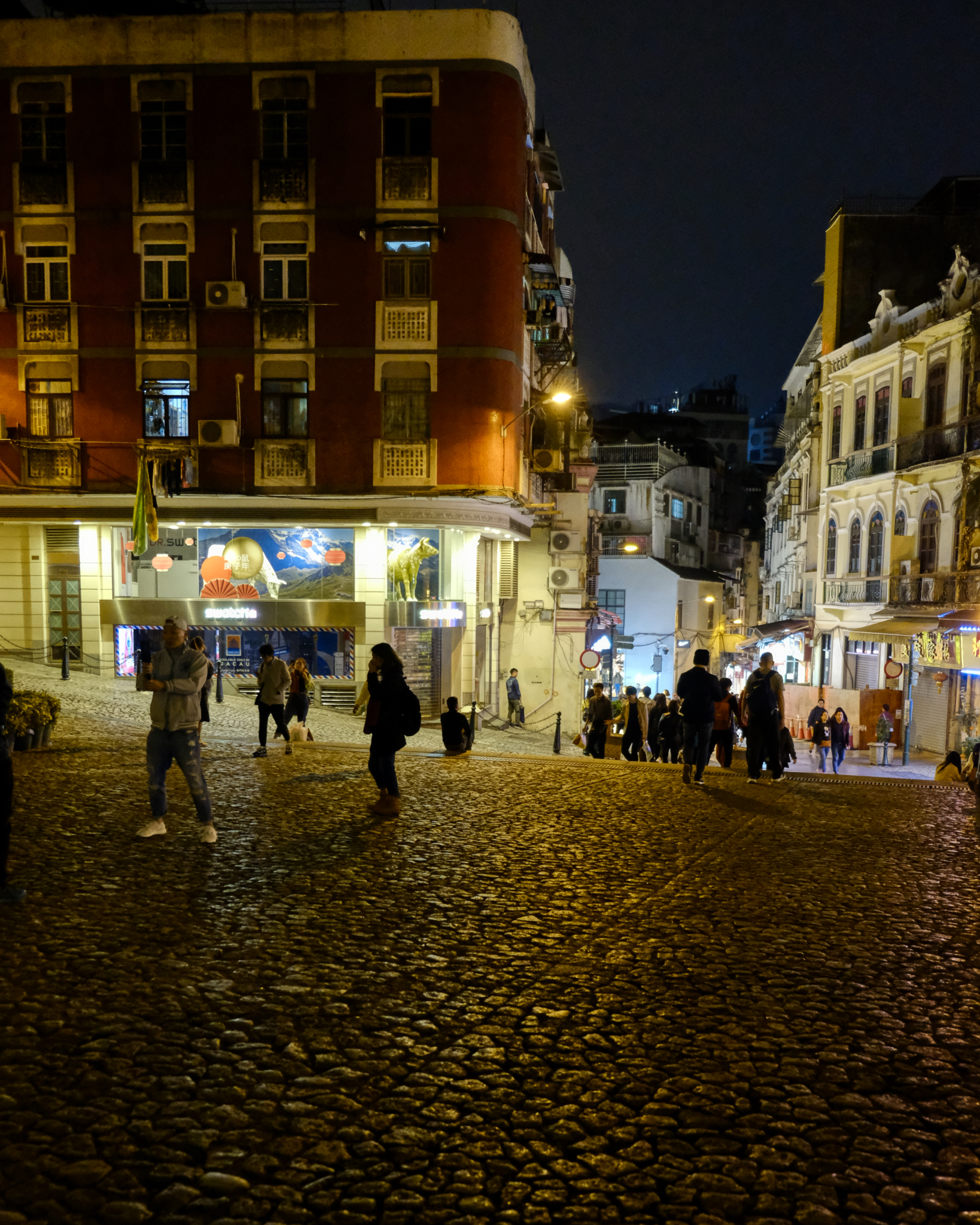 I love walking around in these cobbled streets at night . . . anywhere in the world.
I love walking around in these cobbled streets at night . . . anywhere in the world.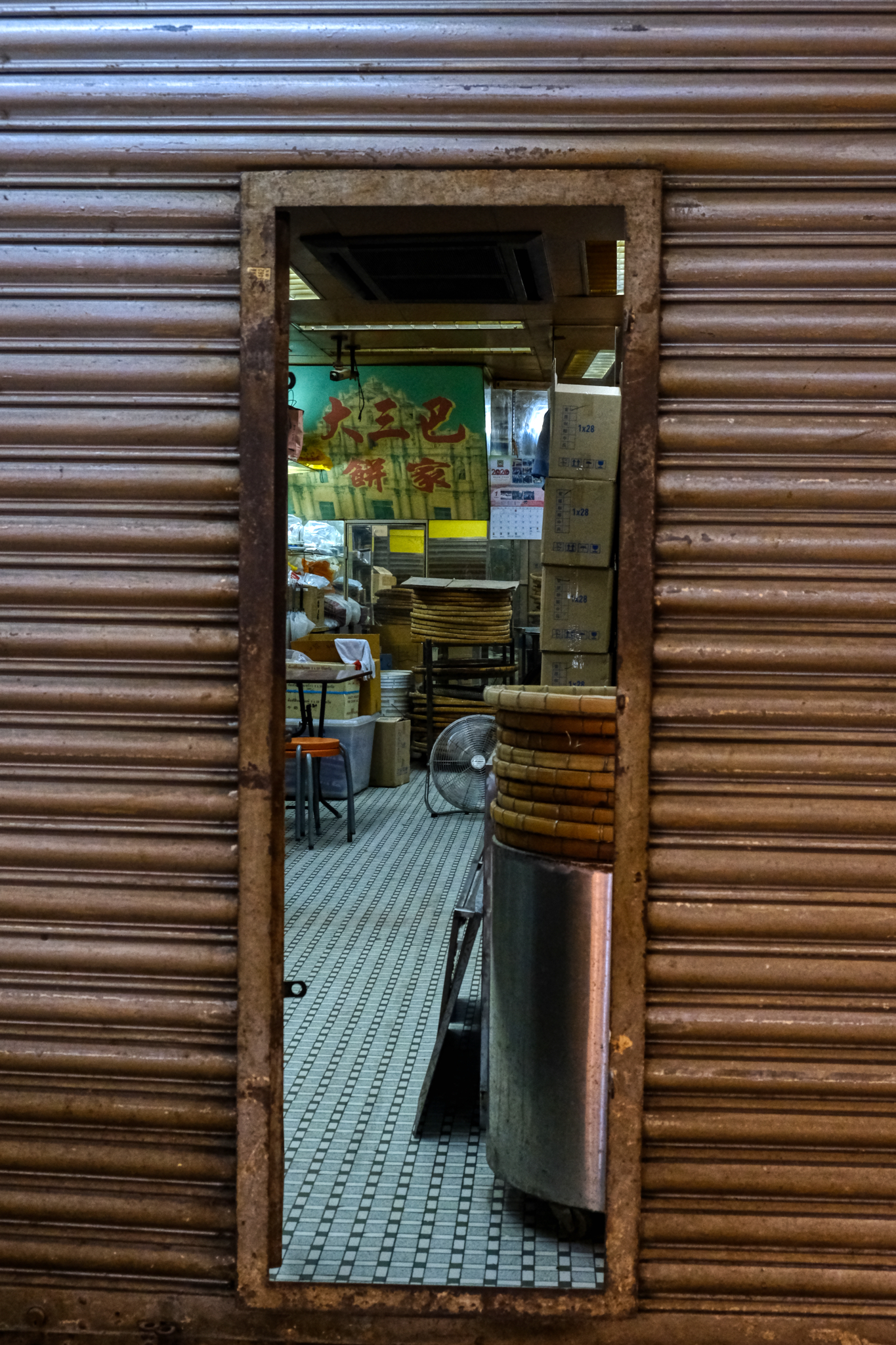 I did not post all of my 'art' photos here. There were too many!
I did not post all of my 'art' photos here. There were too many!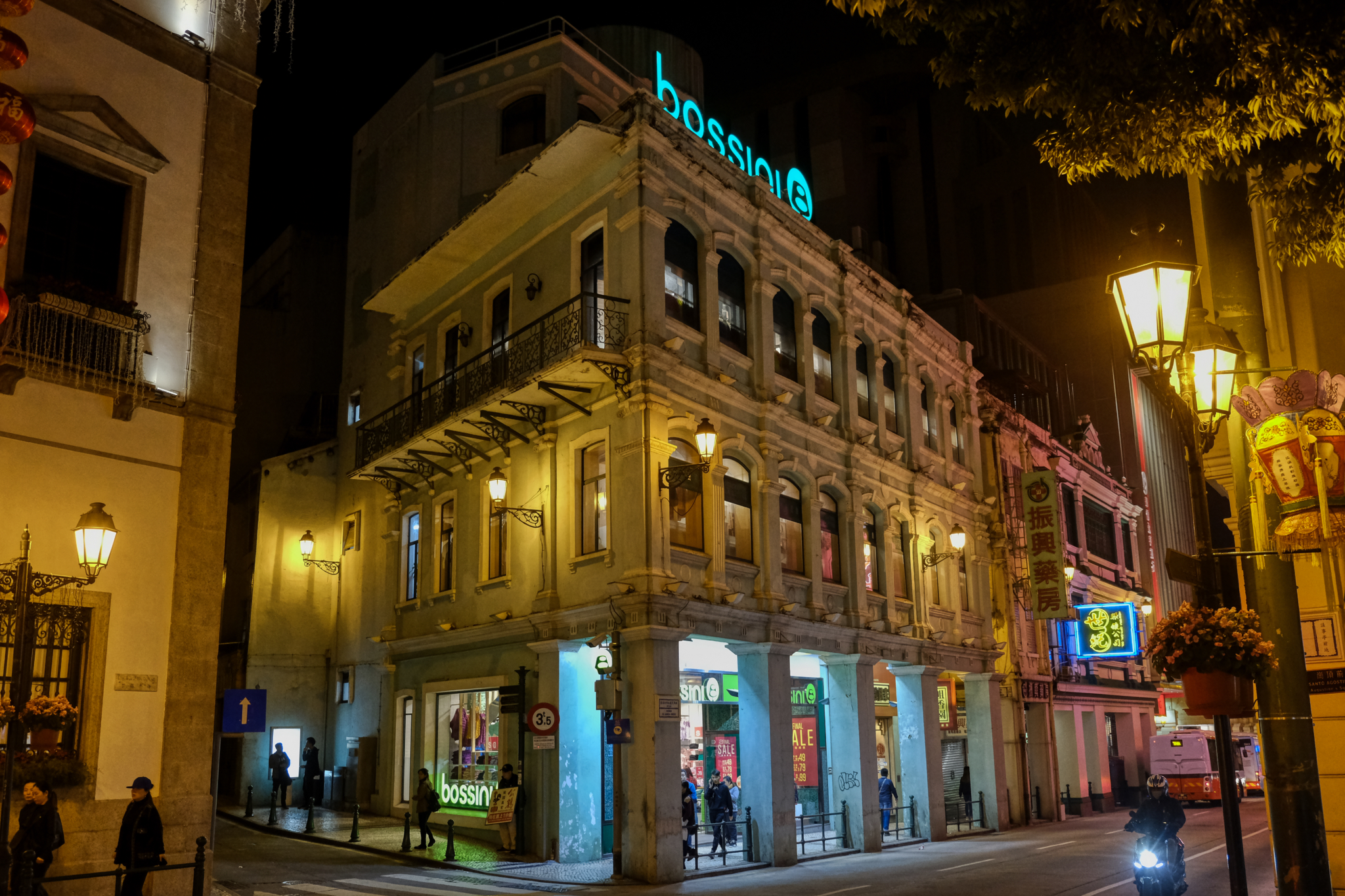 We left the historic section and walked out onto the city streets of Maçau where the local citizens were going about their business, walking home from work, or off to visit friends.
We left the historic section and walked out onto the city streets of Maçau where the local citizens were going about their business, walking home from work, or off to visit friends.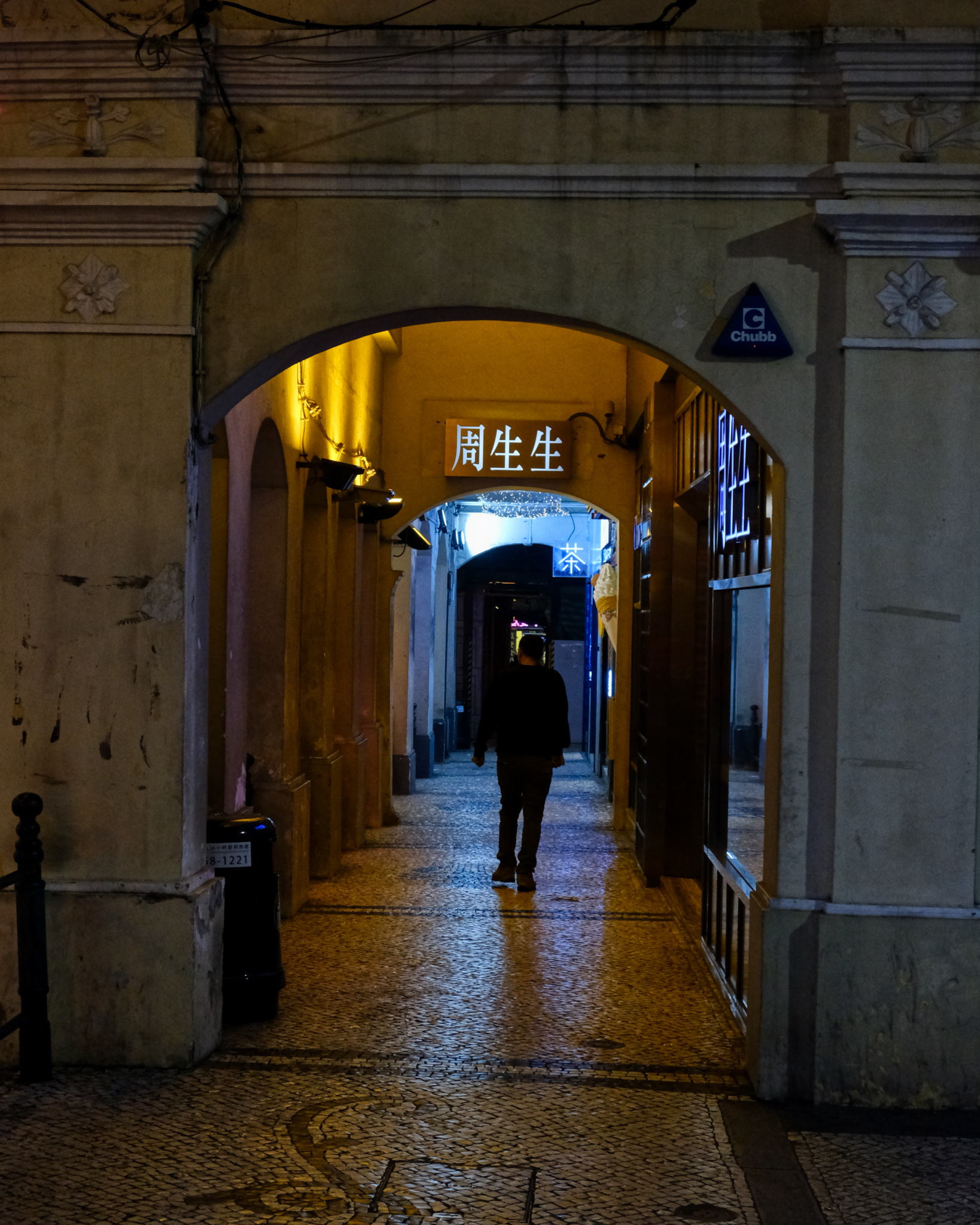 I love night street photography . . . and was in absolute heaven here.
I love night street photography . . . and was in absolute heaven here.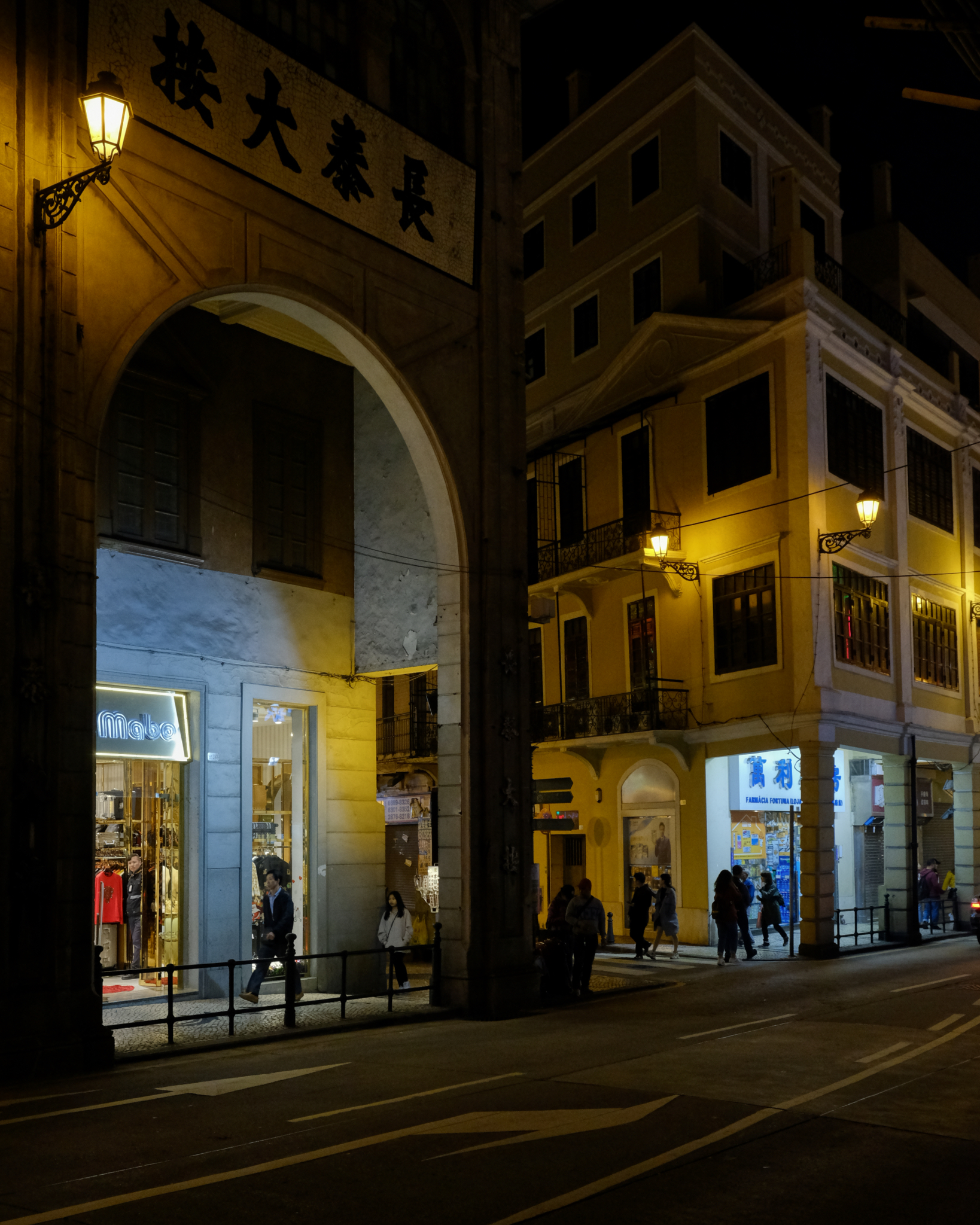 Superb light, shadow, form . . .
Superb light, shadow, form . . .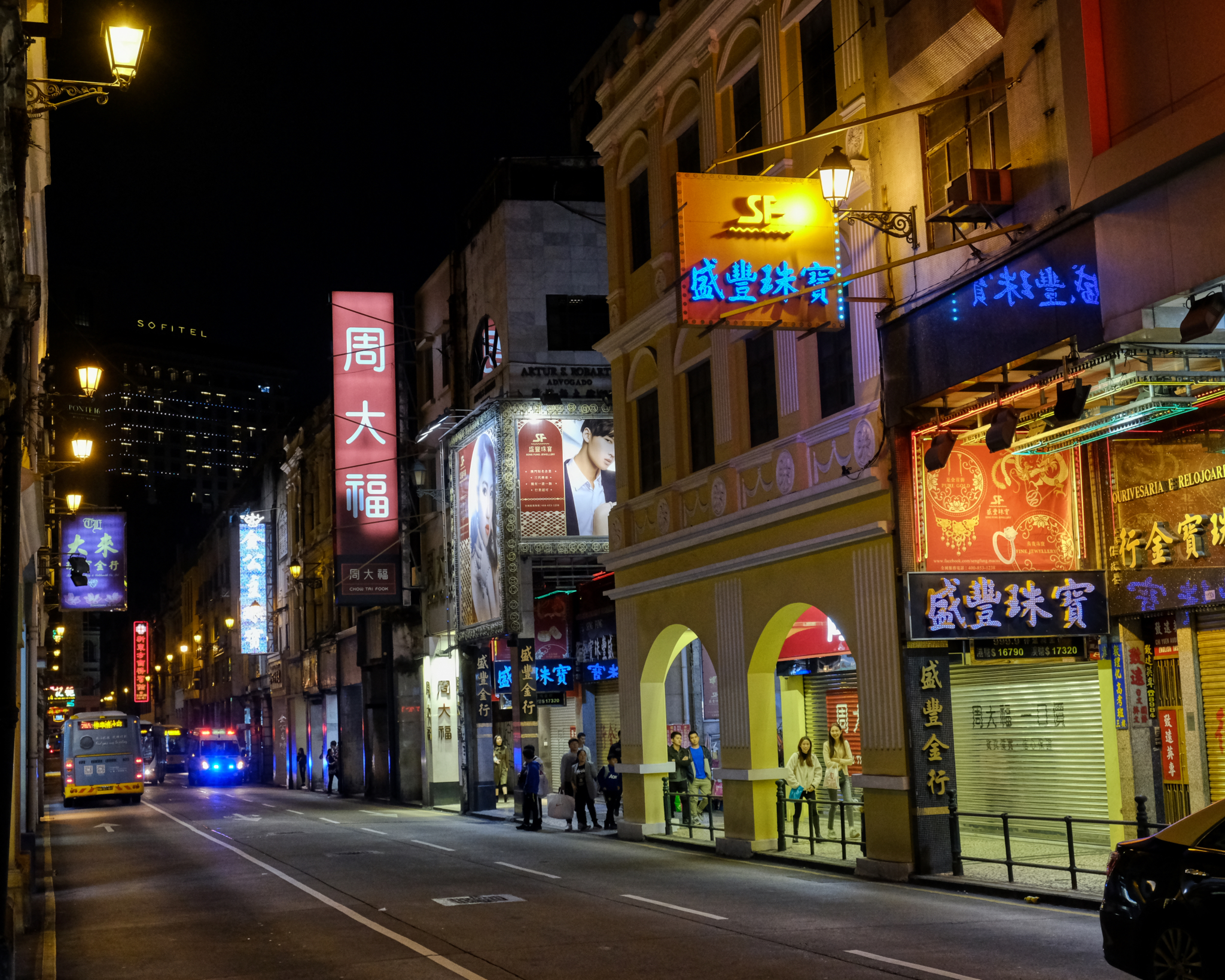 We were all hungry and looking for some place to eat.
We were all hungry and looking for some place to eat.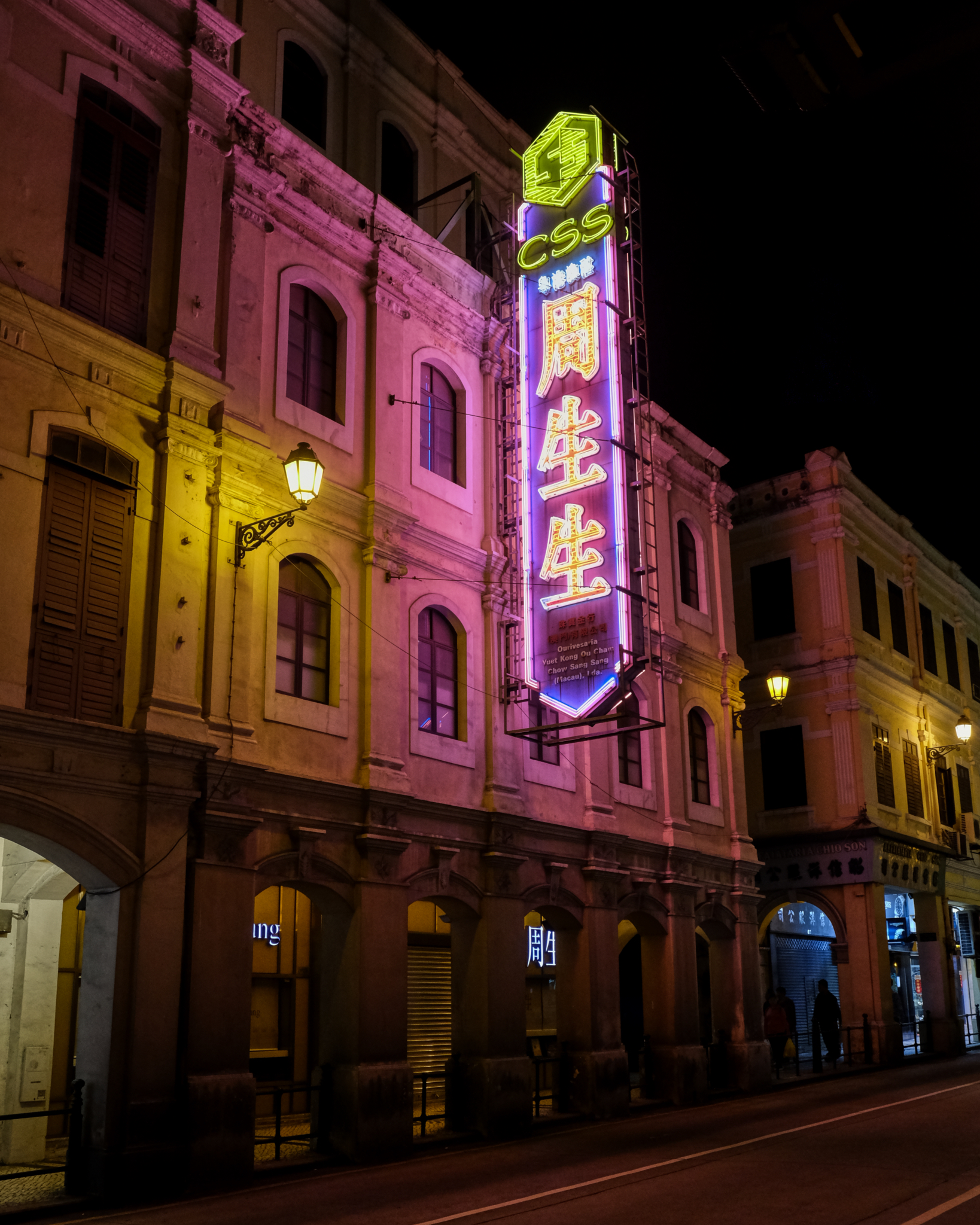 Beautiful neon light.
Beautiful neon light.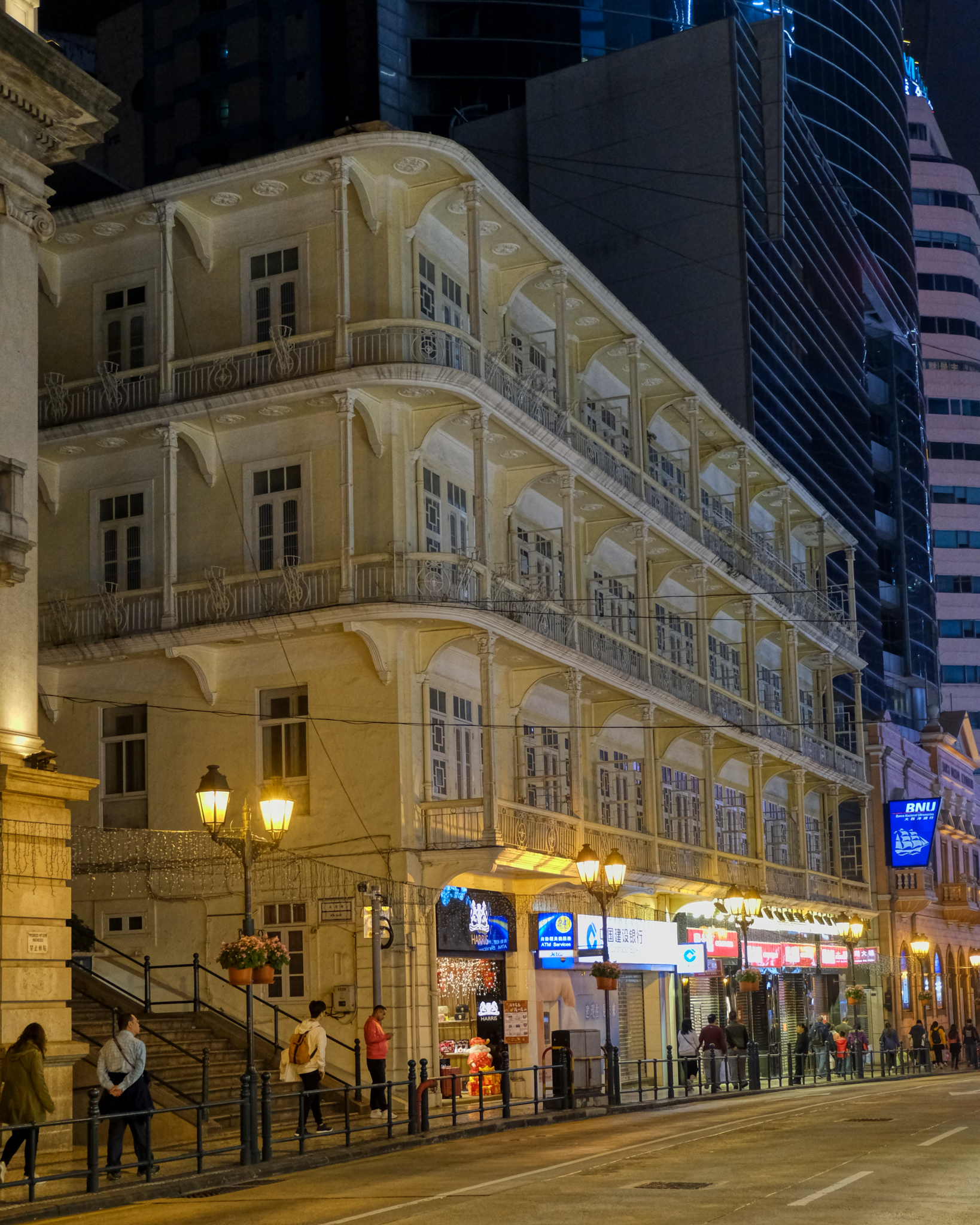 This old Portuguese colonial building looked brand new (or recently renovated). We were heading back in the direction of our hotel, and again past the many glittery casino hotels.
This old Portuguese colonial building looked brand new (or recently renovated). We were heading back in the direction of our hotel, and again past the many glittery casino hotels.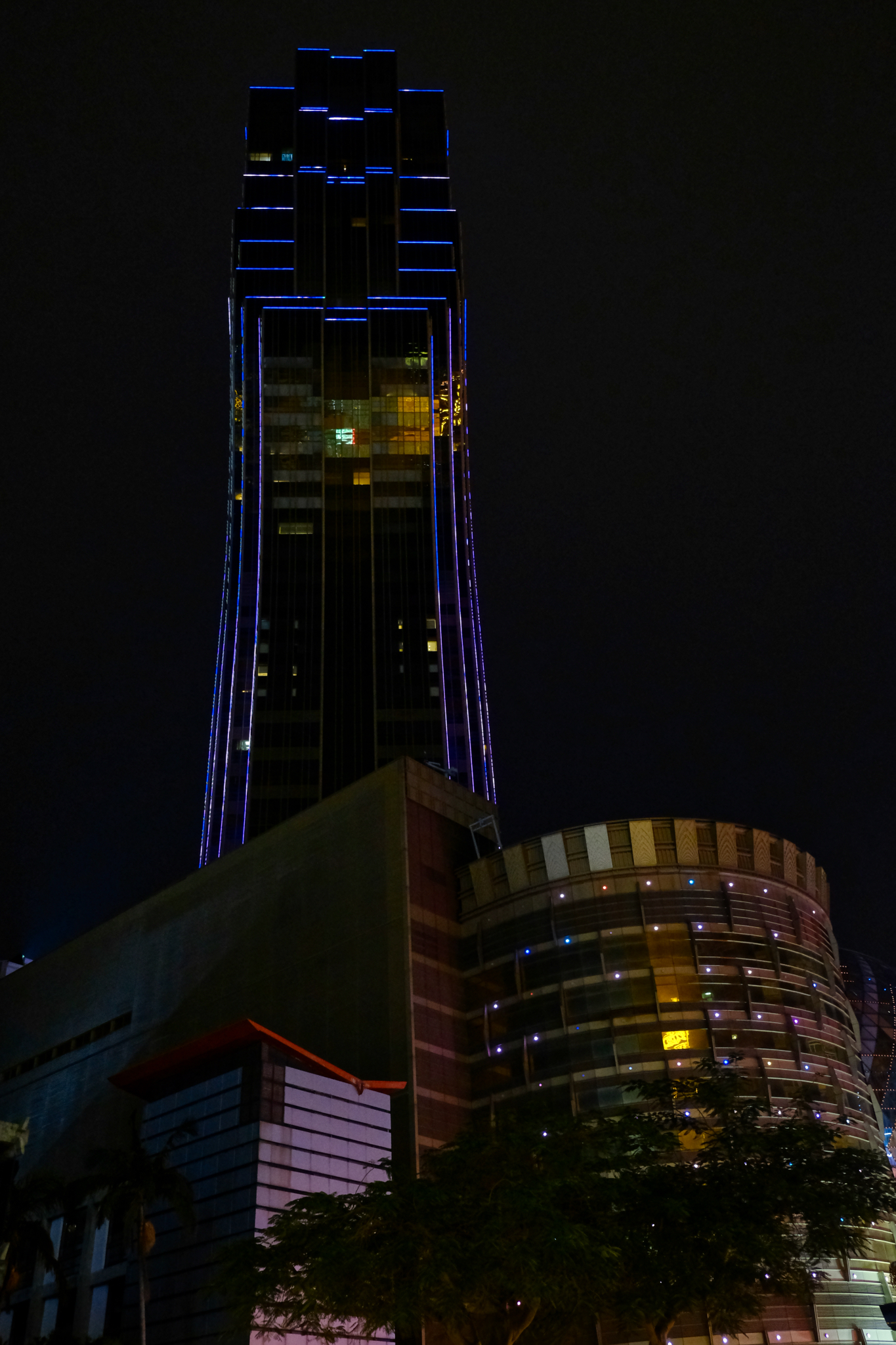 These huge casino towers were amazingly glitzy!
These huge casino towers were amazingly glitzy!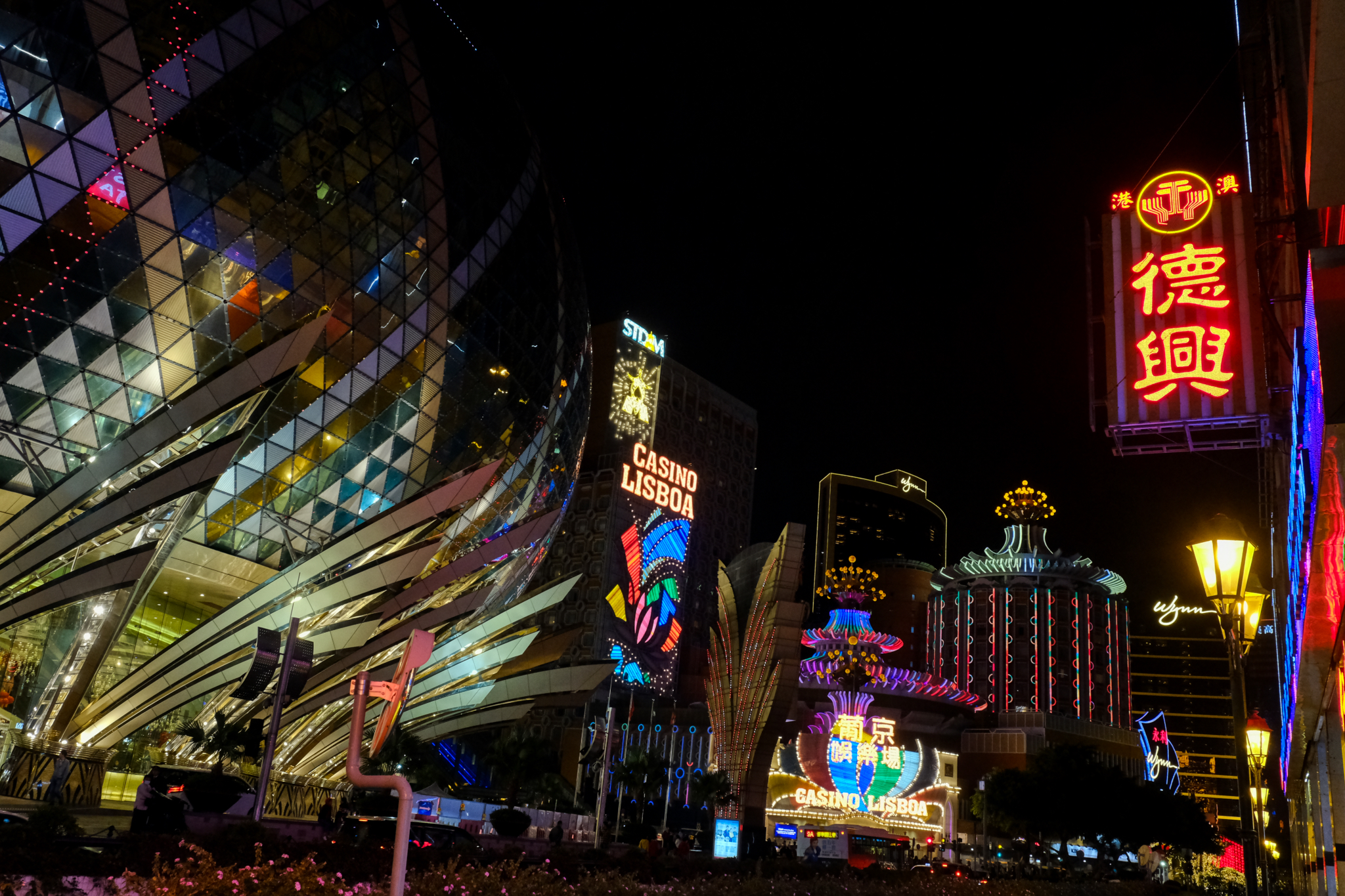 Among the casinos . . . but we really didn't want to go in . . .
Among the casinos . . . but we really didn't want to go in . . . 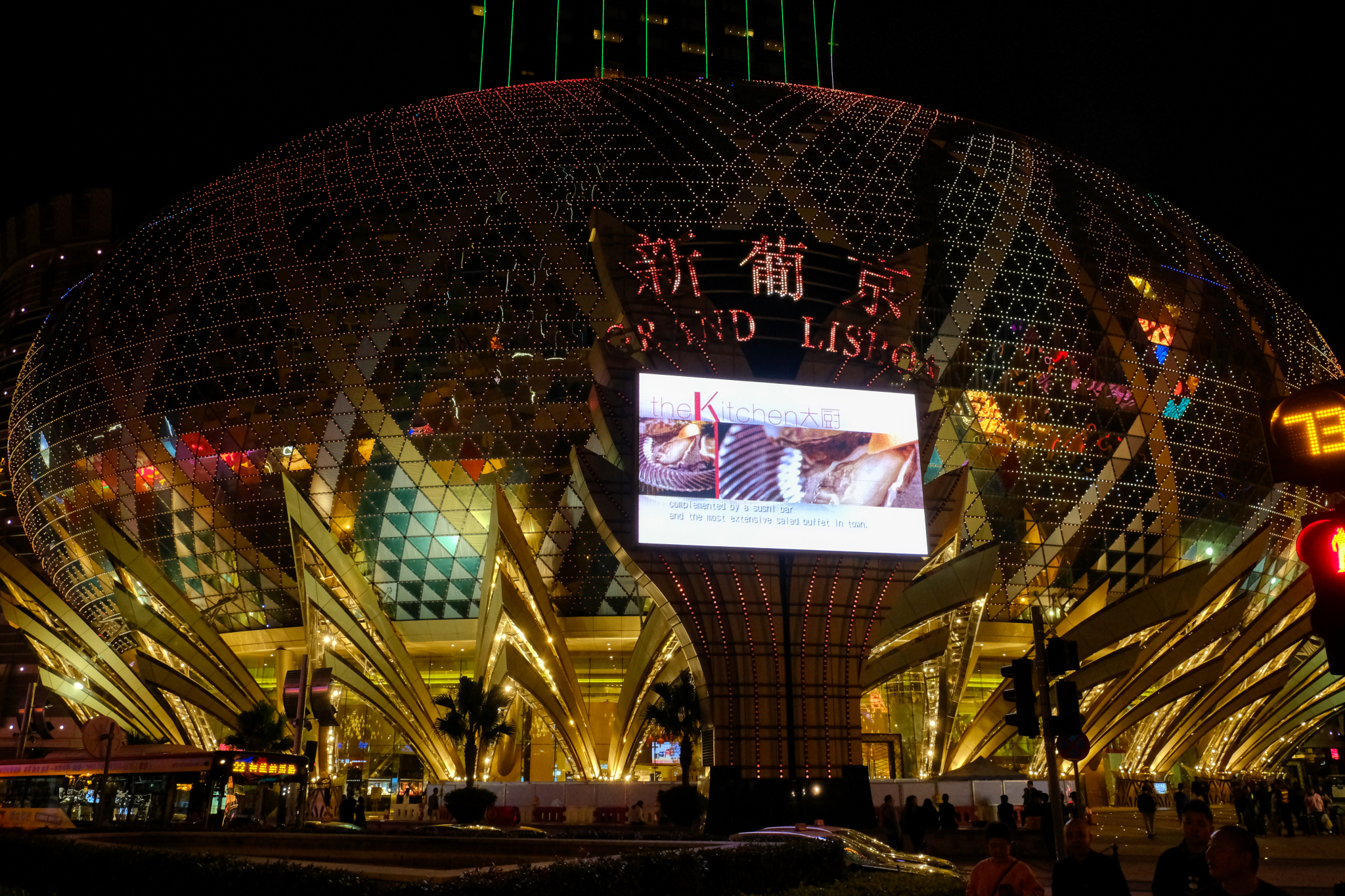 Max Glitz!
Max Glitz!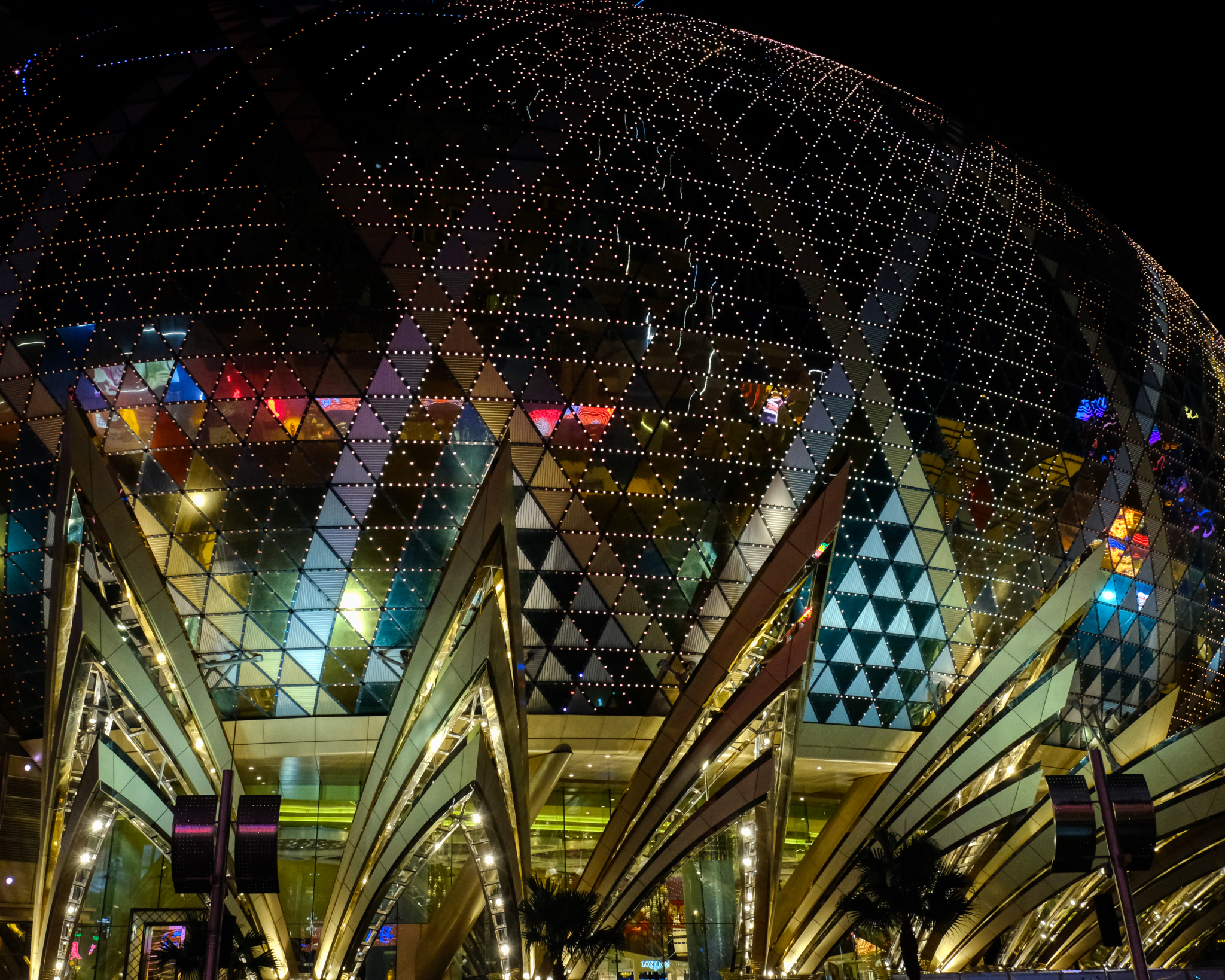 More Max Glitz. We decided that because it was so late that we would just dodge into one of these grand hotels and find the all night café.
More Max Glitz. We decided that because it was so late that we would just dodge into one of these grand hotels and find the all night café.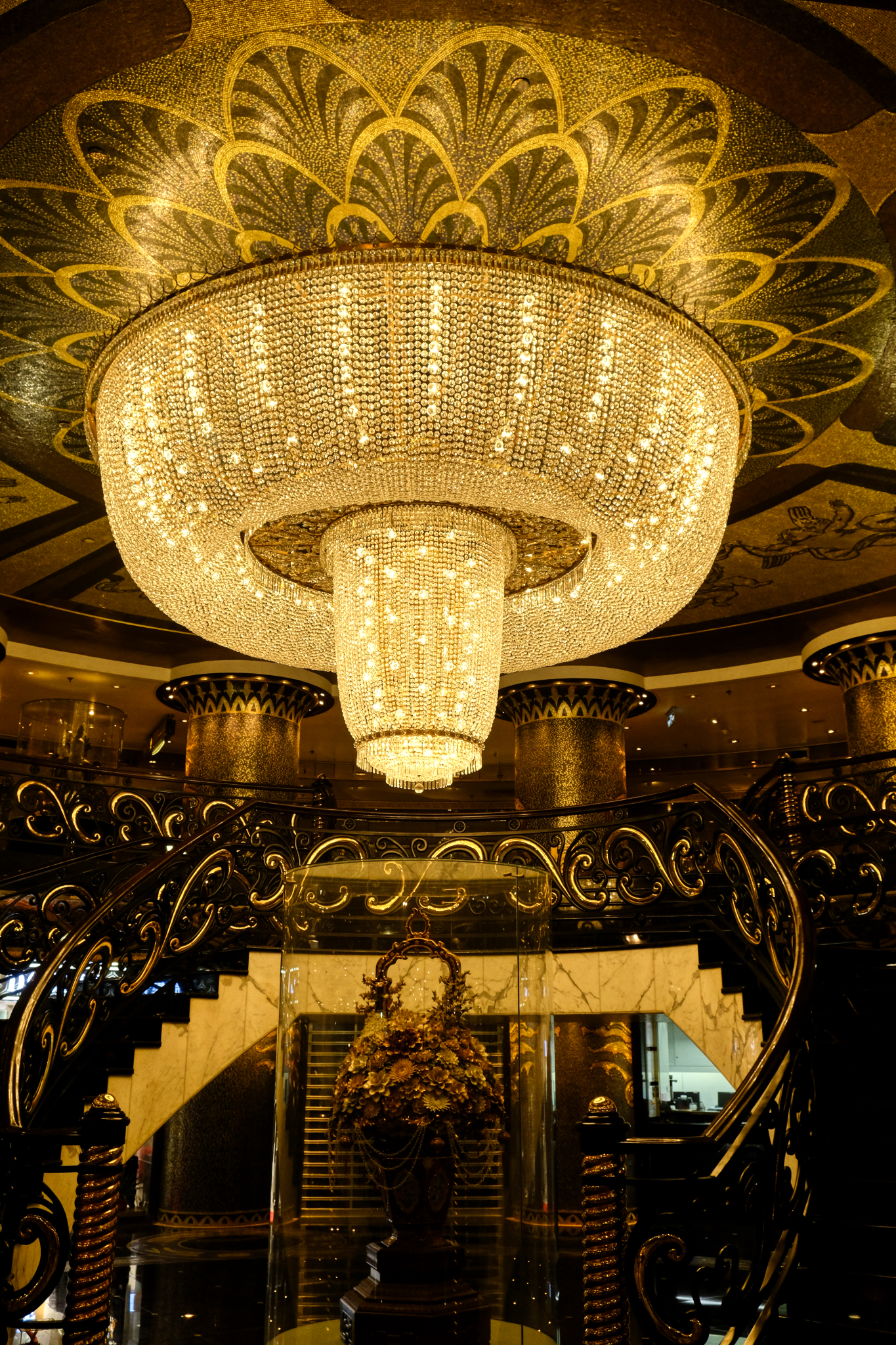 Yep. This is the interior of a casino/hotel in Maçau, China. We went up these magnificent stairs . . .
Yep. This is the interior of a casino/hotel in Maçau, China. We went up these magnificent stairs . . .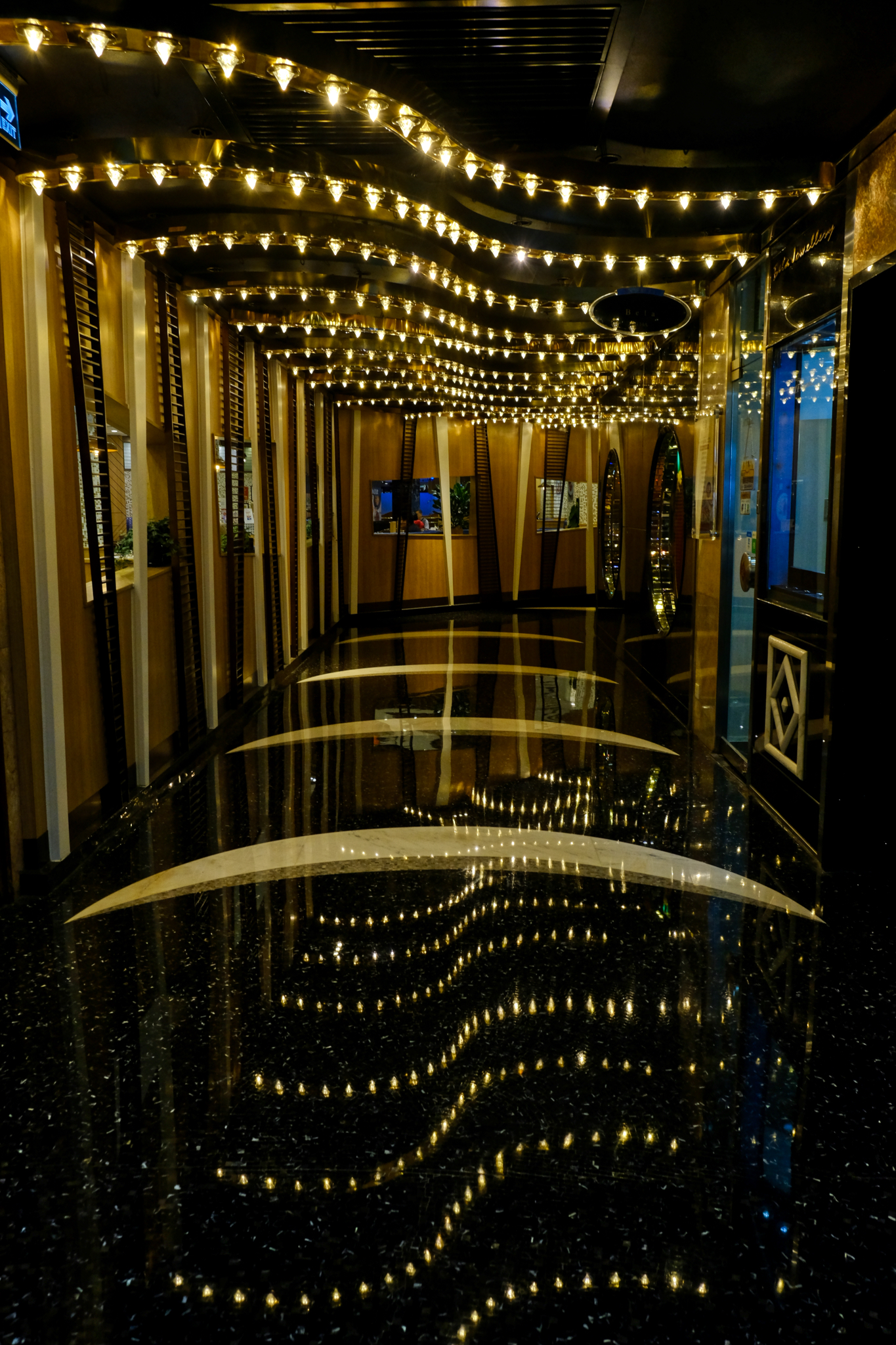 . . . and down this polished hall to the café. I had the French Dip.
. . . and down this polished hall to the café. I had the French Dip.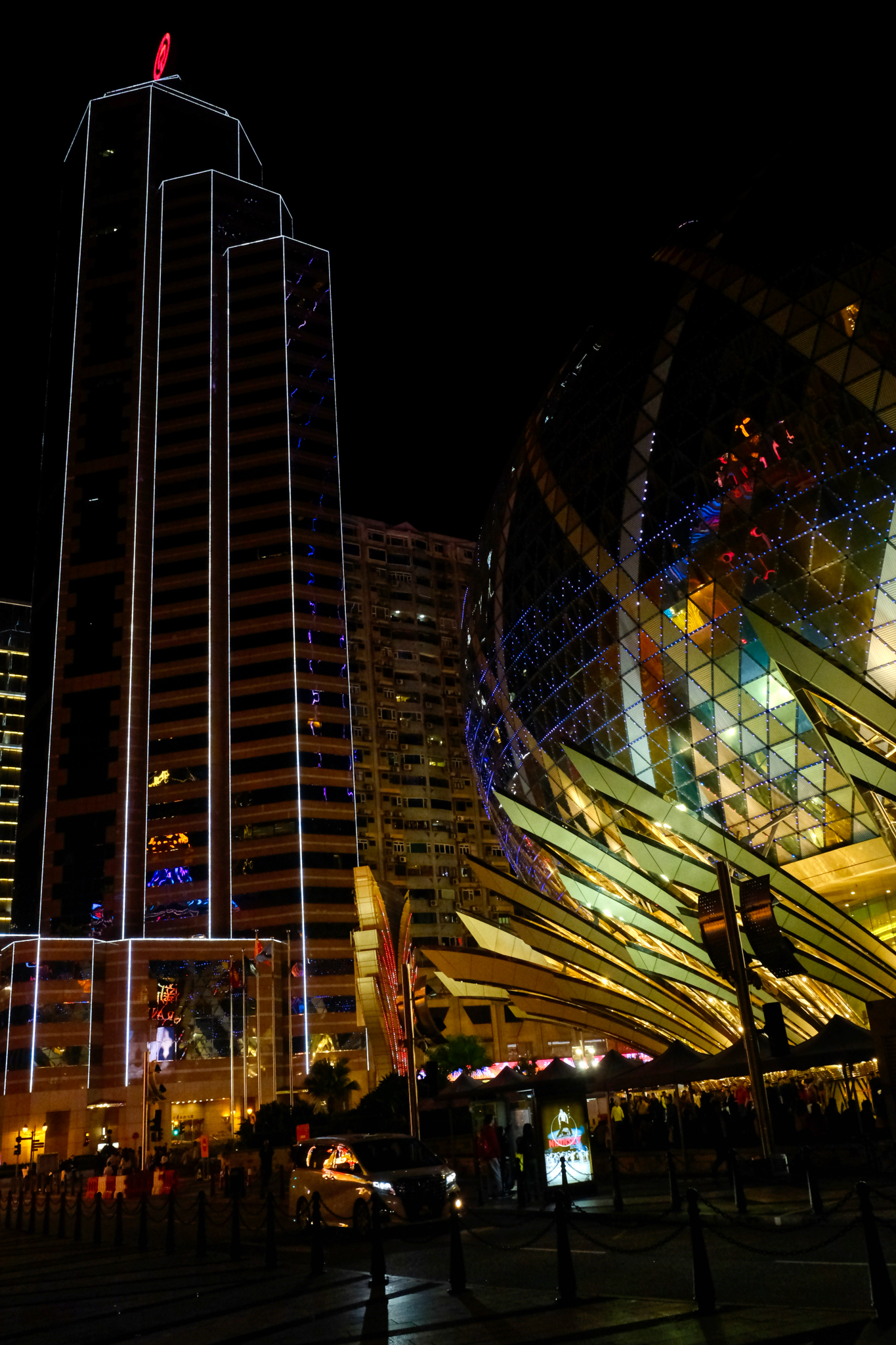 Back out on the streets. Walking back to our hotel . . . .
Back out on the streets. Walking back to our hotel . . . .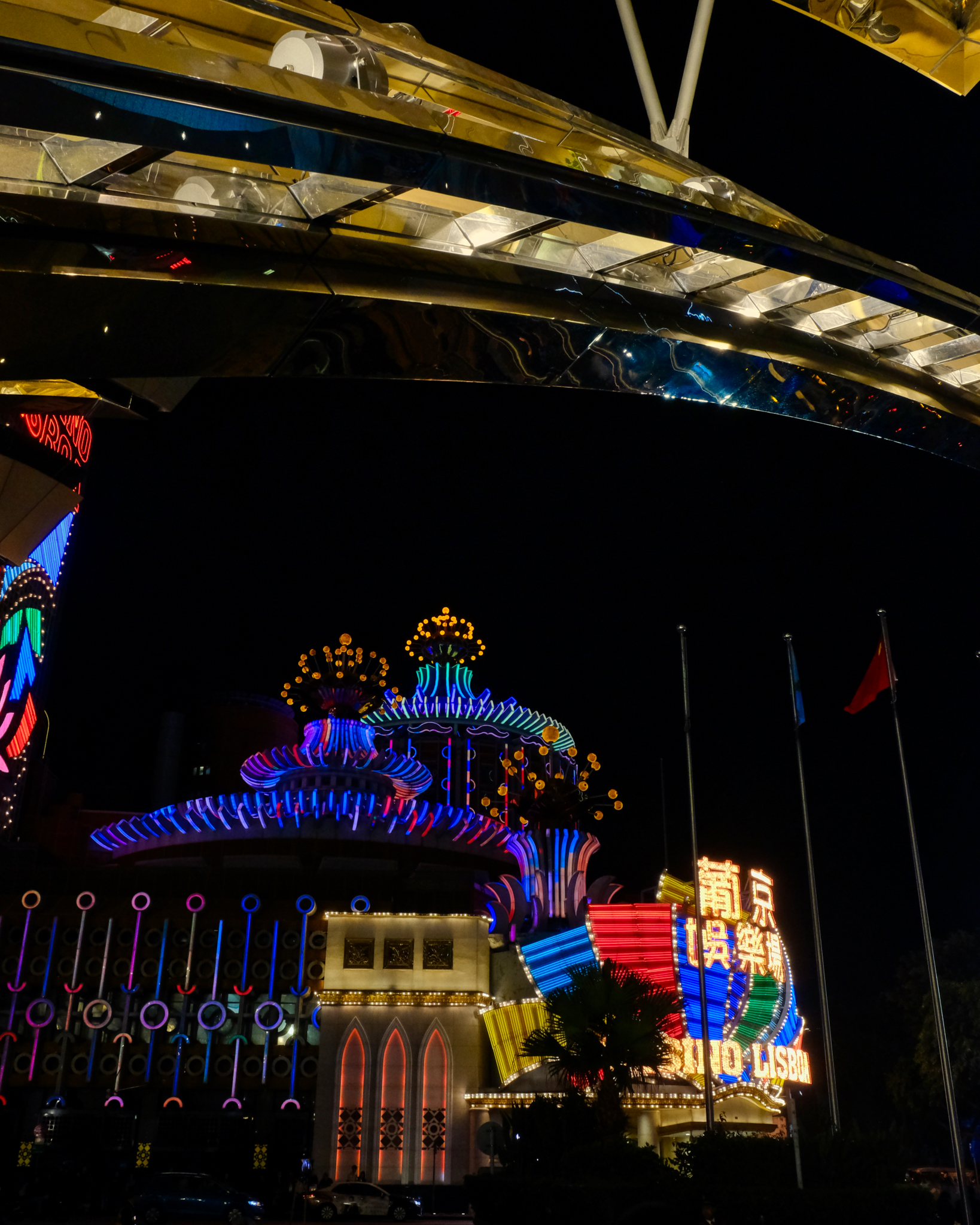 Otherworldly Glitz.
Otherworldly Glitz.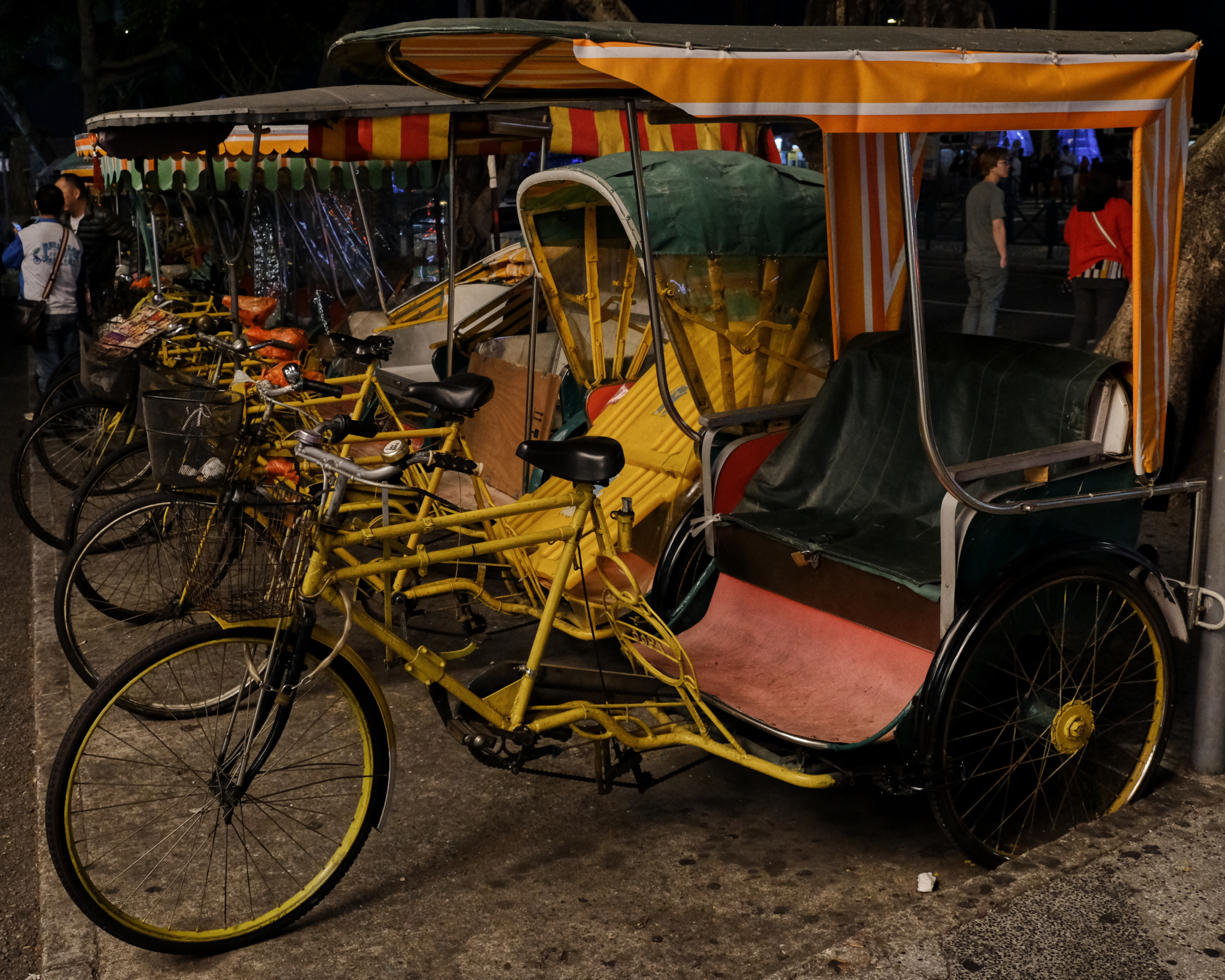 We were tempted . . .
We were tempted . . . 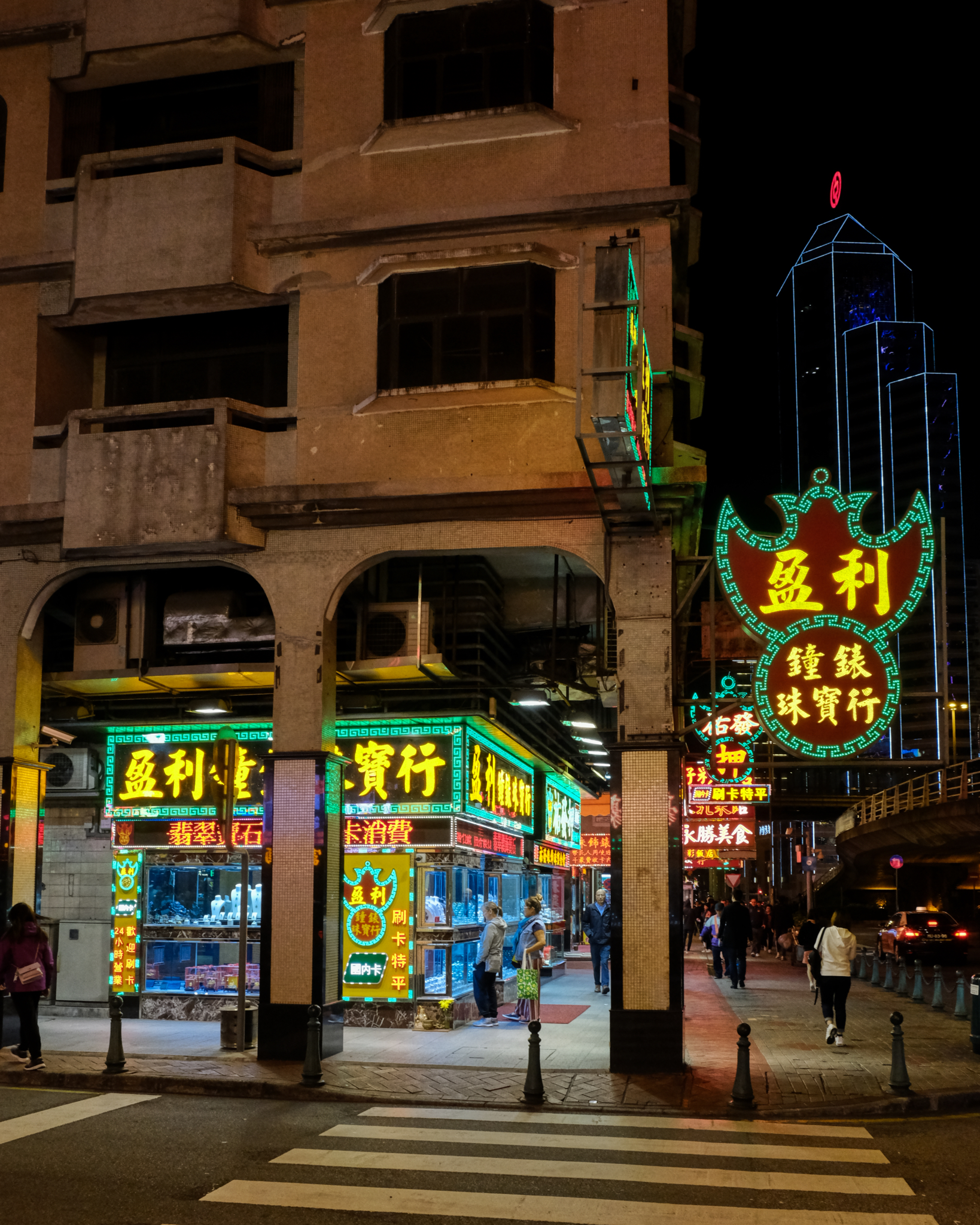 Our hotel was in an older area not far from the casino district.
Our hotel was in an older area not far from the casino district.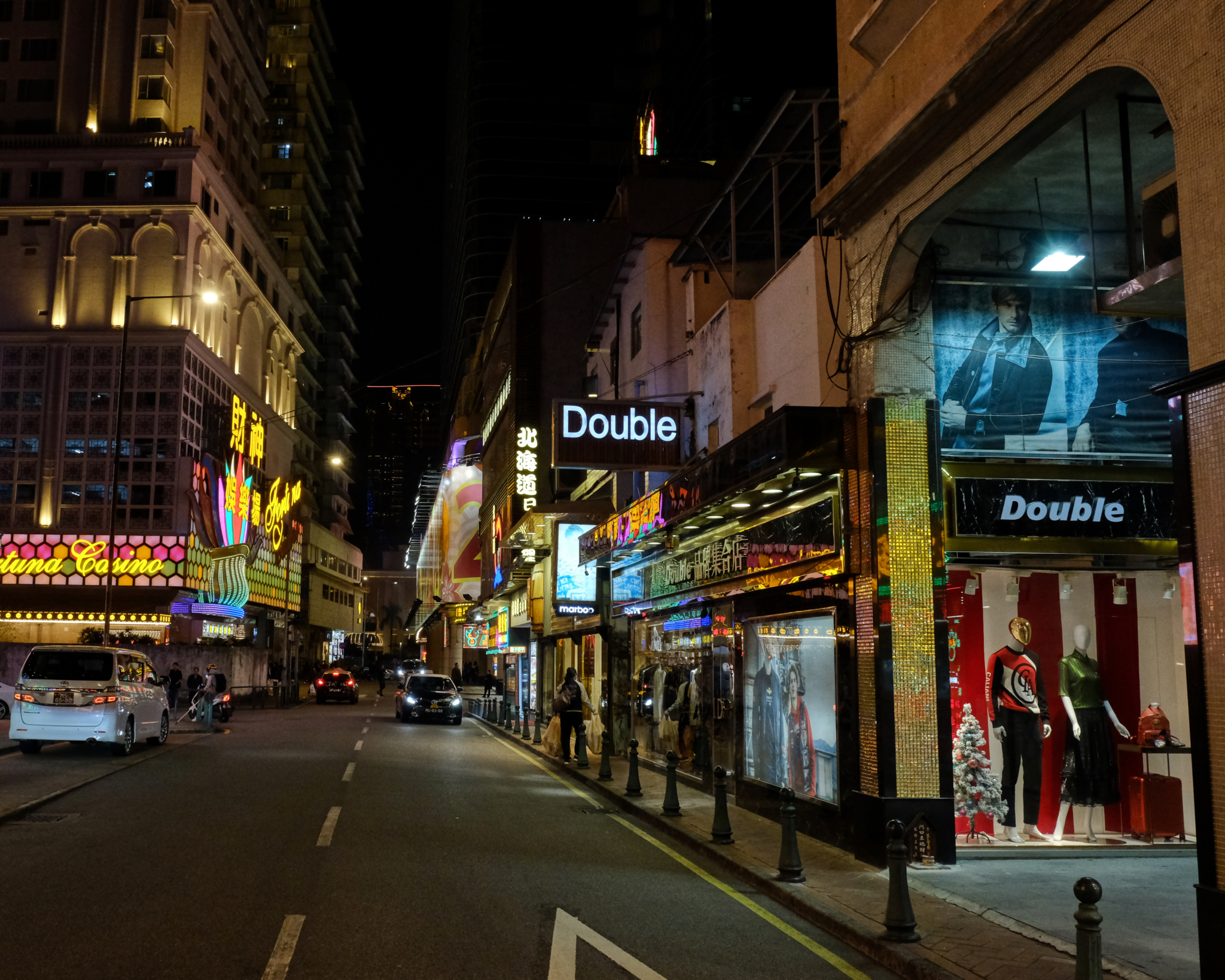 The shops around the casinos see to cater to the 'big spenders' and 'big winners' . . . .
The shops around the casinos see to cater to the 'big spenders' and 'big winners' . . . .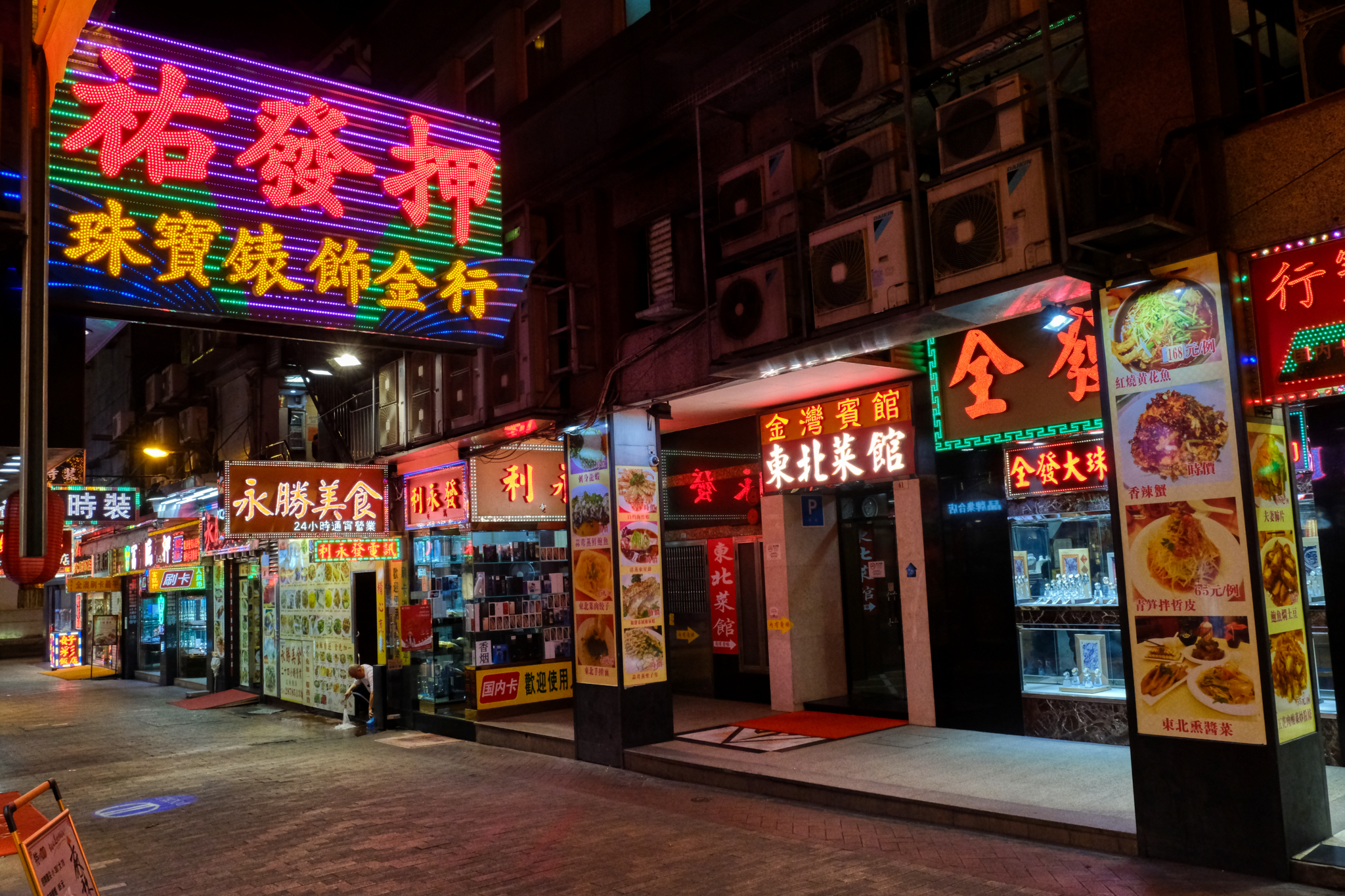 Our hotel was just around the corner. We had a wonderful four days in Maçau . . . just before the virus pretty much closed off any travel to China.
Our hotel was just around the corner. We had a wonderful four days in Maçau . . . just before the virus pretty much closed off any travel to China. Buddha,
Buddha,  China,
China,  Doors, Old,
Doors, Old,  Maçau
Maçau 